carbon footprint
description: total set of greenhouse gas emissions caused by an individual, event, organisation, or product, expressed as carbon dioxide equivalent
536 results

How Bad Are Bananas?: The Carbon Footprint of Everything
by
Mike Berners-Lee
Published 12 May 2010
By this time, as Lord Martin Rees, president of the Royal Society, speculated, the creatures that inhabit the Earth will be as different from people as we are from bacteria. A quick guide to carbon and carbon footprints 1. Carbon Footprinting: An Introduction to Organisations, published by the U.K.’s Carbon Trust (2007) defines on page 1 a carbon footprint in a similar way to me but goes on to describe “basic carbon footprints” on page 4. These are toe-prints rather than rough estimates of footprints. 2. Inventory of U.S. Greenhouse Gas Emissions and Sinks: 1990–2008 (April 2010) U.S. EPA # 430-R-10-006. Available at www.EPA.gov/climatechange/emissions/usinventoryreport.html The U.K.’s 2009 Environmental Accounts give a similar breakdown: carbon dioxide (86 percent), methane (7 percent), nitrous oxide (6 percent), and refrigerant gases (1 percent). 3.
…
As it happens, they turn out to be a fine low-carbon food, though not totally free from sustainability issues to keep an eye on—see A banana. A quick guide to carbon and carbon footprints Carbon footprint is a lovely phrase that is horribly abused.1 I want to make my definition clear at the outset. Throughout this book, I’m using the word footprint as a metaphor for the total impact that something has. And I’m using the word carbon as shorthand for all the different global warming greenhouse gases. So, I’m using the term carbon footprint as shorthand to mean the best estimate that we can get of the full climate change impact of something. That something could be anything—an activity, an item, a lifestyle, a company, a country, or even the whole world.
…
In the U.S., the total impact on the climate breaks down like this: carbon dioxide (85 percent), methane (8 percent), nitrous oxide (5 percent), and refrigerant gases (2 percent).2 Given that a single item or activity can cause multiple different greenhouse gases to be emitted, each in different quantities, a carbon footprint, if written out in full, could get pretty confusing. To avoid this, the convention is to express a carbon footprint in terms of carbon dioxide equivalent (CO2e). This means the total climate change impact of all the greenhouse gases caused by an item or activity rolled into one and expressed in terms of the amount of carbon dioxide that would have the same impact.3 Beware carbon toe-prints The most common abuse of the phrase carbon footprint is to miss out some or even most of the emissions caused, whatever activity or item is being discussed.

Not the End of the World
by
Hannah Ritchie
Published 9 Jan 2024
Beef from an efficient producer in New Zealand or the United States might not have the same carbon footprint as the producer in Brazil who had to cut down some of the Amazon rainforest. That’s an argument I hear a lot when I say that eating less meat – especially beef – is the most effective way to cut your carbon footprint. People will argue that the beef they consume – from their local farm in the UK – has a much lower carbon footprint than the global average. It probably does emit less, but it’s still going to be much higher than plant-based alternatives. When we look beyond the global average to the distribution of carbon footprints for each food – from the most sustainable producers to the least sustainable – the overall message doesn’t change.
…
Recycling your plastic bottles (see Chapter 7) Replacing old light bulbs with energy-efficient ones You don’t have to stop watching TV, streaming movies or using the internet How you read: whether it’s Kindle, paper or audiobook, it doesn’t matter Washing your dishes in the dishwasher, it doesn’t matter much Eating local food (see Chapter 5) Eating organic food (this can be worse for your carbon footprint – see Chapter 5) Leaving your television or computer on standby, it doesn’t matter much Leaving your phone charger plugged in, it doesn’t matter much Plastic or paper bag – your plastic bag actually has a lower carbon footprint, but it doesn’t matter muchvii What we think is effective in cutting our carbon footprint often isn’t Actions such as giving up a car, eating a more plant-based diet, reducing flights or switching to an electric car are most effective in cutting our personal carbon footprint. But surveys across 21,000 adults in 30 countries showed that people think actions such as recycling and upgrading light bulbs were among the top 3 most effective.
…
If we can make them cheaper than meat, it could really change the game for global nutrition. We could feed the world a protein-rich, nutritious diet while reducing our environmental impacts at the same time. Every time you buy a new substitute product, you’re not just lowering your own carbon footprint, you’re helping to pull down the price for the rest of the world too. Most meat substitutes have a much lower carbon footprint than meat Carbon footprints are shown per 100 grams of protein for each product. This is based on life-cycle analyses, which include emissions on the farm, land-use change, raw materials, food processing, transport and packaging. (4) Build a hybrid burger While many would be happy to tuck into a plant-based Impossible Burger, others will want to stick with beefburgers.
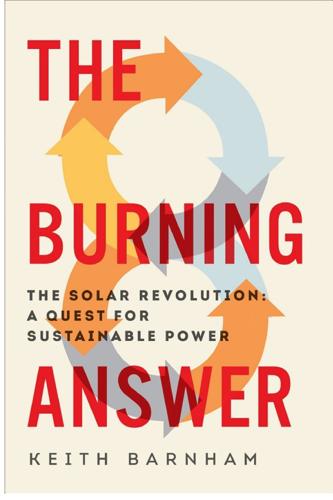
The Burning Answer: The Solar Revolution: A Quest for Sustainable Power
by
Keith Barnham
Published 7 May 2015
That question will require a section on its own. The carbon footprint of nuclear electricity There have been over two hundred papers on the carbon footprint of nuclear power in scientific journals in recent years. Three papers have critically reviewed the literature in the way Nugent and Sovacool compared renewable LCAs. The first was by Benjamin Sovacool himself. He reviewed 103 published LCA studies and whittled them down to 19, which had a reasonably rigorous scientific approach. The carbon footprints ranged from 3 to 200 gCO2/kWh. The average carbon footprint was 66 gCO2/kWh. This is above the CCC limit.
…
Fossil fuel carbon atoms are new arrivals in our atmosphere. Any greenhouse gases emitted during the harvesting, transportation, conversion to fuel and waste disposal of biomass or biogas fuel will give that fuel a carbon footprint. In some cases, the carbon footprint could end up as high as that of natural gas. Later in this chapter, we will find that there are a number of biogas and biomass approaches to electricity generation with good carbon footprints. We will also meet approaches to generating biogas from waste in the next chapter that actually obviate a particularly nasty greenhouse gas. As usual the Germans are ahead of the game.
…
Before we finish with low carbon electricity generation and move on to low carbon gas and heating, we need to have some idea of how big the carbon savings are of the renewable electricity technologies. Carbon footprints of solar and natural gas electricity We now need to compare the carbon footprints of the different technologies that make up the solar cornucopia. I will also compare them with their main rivals for the attention of politicians: natural gas and nuclear power. When comparing the carbon footprints of electricity-generating technologies, we need to take into account carbon dioxide emitted in all stages: construction, operation, production of any fuel, dismantling and waste disposal.
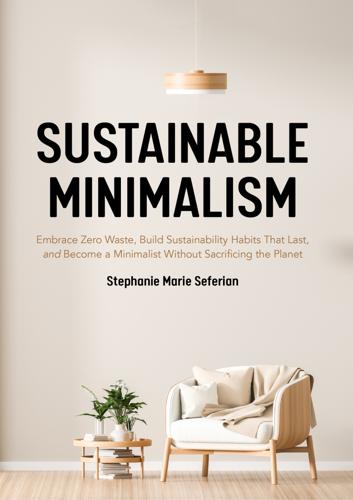
Sustainable Minimalism: Embrace Zero Waste, Build Sustainability Habits That Last, and Become a Minimalist Without Sacrificing the Planet (Green Housecleaning, Zero Waste Living)
by
Stephanie Marie Seferian
Published 19 Jan 2021
Committing to sustainability is not just about reducing household trash. It’s about reducing carbon footprints, too, as carbon emissions are directly responsible for global warming and climate change. Your carbon footprint is the total amount of greenhouse gases your actions generate within one year. While the global average is about four tons per person, the average carbon footprint for an American is sixteen tons in a single year.70 And while many associate carbon emissions with automobiles—driving does indeed increase one’s footprint—your carbon footprint is affected by household activities including heating, cooling, and overall electricity use.
…
Public health officials argue that premature deaths due to severe weather phenomena, changes in food distribution, and increased water-borne illnesses threaten the human race.104 Many daily activities—using electricity, driving a car, heating your home, and making purchases—emit greenhouse gases into the atmosphere. But exactly how many greenhouse gases do your unique daily behaviors generate? Enter carbon footprints. Your carbon footprint is the total amount of greenhouse gases generated by your daily actions and is commonly measured in metric tons. You can calculate your unique carbon footprint at www.nature.org. The average carbon footprint for a person living in the United States is a whopping 16 metric tons, one of the highest rates in the world.105 The worldwide per person average is closer to 4 tons.106 Yet the Intergovernmental Panel on Climate Change (IPCC) warns that it is imperative to prevent a warming of more than 1.5 degrees Celsius (about 34.7 degrees Fahrenheit) by 2050.107 To achieve this, every human on earth must reduce their carbon footprints to just 2 metric tons per year.
…
The average carbon footprint for a person living in the United States is a whopping 16 metric tons, one of the highest rates in the world.105 The worldwide per person average is closer to 4 tons.106 Yet the Intergovernmental Panel on Climate Change (IPCC) warns that it is imperative to prevent a warming of more than 1.5 degrees Celsius (about 34.7 degrees Fahrenheit) by 2050.107 To achieve this, every human on earth must reduce their carbon footprints to just 2 metric tons per year. While lifestyle habits within the home—including what you eat and how many children you choose to have—increase or decrease your unique carbon footprint, intentional choices outside the home can substantially reduce your impact. The Five Tenets of Carbon Footprint Reduction 1. Drive Less (or Not at All) Public transportation reduces air pollution, saves money, and is up to ten times safer than commuting by automobile.108 Daily transportation habits greatly influence your carbon footprint, and living without a car conserves about 2.6 tons of CO2 annually.109 Driving less, walking, biking, and taking public transit are common-sense ways to decrease your reliance on automobiles for travel.
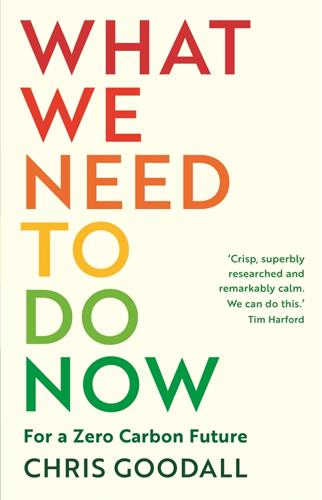
What We Need to Do Now: A Green Deal to Ensure a Habitable Earth
by
Chris Goodall
Published 30 Jan 2020
CHAPTER 6 SUSTAINABLE FASHION Without big changes, clothing alone will stop us achieving net zero Fashion represents about 3–4 per cent of the UK’s carbon footprint, though it is not always accounted for in national estimates. Most of the emissions of greenhouse gases take place in the countries where raw materials are made or the clothing manufactured. Both cotton and polyester – the dominant materials – have substantial environmental problems. Polyester has a high carbon footprint, while the cultivation of cotton and its processing into fabrics causes major pollution and uses vast quantities of water. The fibres of both cotton and polyester are shortened each time they are reprocessed, making full recycling very difficult.
…
The clothing industry pollutes in many additonal ways, too, through the degradation of water supplies and the pollution caused by agricultural fertilisers. Clothing thus represents a significant environmental concern. It is the largest part of our carbon footprint after running the house, using a car, taking flights and eating food. The 18 kilos or so of clothes that the average Briton buys each year cause almost half a tonne of greenhouse gas pollution. (We purchase large volumes of clothes partly because our retailers have been so successful at bringing down the cost in the shops.) Some of this carbon footprint comes from washing and drying clothes during use, but two thirds arises from the processes involved in making them.
…
The production of textiles from raw cotton involves the discharge of hazardous chemicals into water courses. So cotton is generally bad news. But unfortunately polyester seem to have an even higher carbon footprint. One study suggested that a polyester shirt results in over 5 kilos of emissions compared to just over 2 kilos from a cotton equivalent. Consumers face a difficult decision: should we buy a partially recyclable polyester garment with a high carbon footprint or a cotton equivalent that has added to the world’s other major environmental challenges? And, for those of us in colder countries, is wool an environmentally acceptable alternative?

There Is No Planet B: A Handbook for the Make or Break Years
by
Mike Berners-Lee
Published 27 Feb 2019
Then market your sustainability credentials to boost sales. Is local food best? Only sometimes. Transport is usually a small component of the carbon footprint of foods. Is local food best? 31 Travel is usually just a small part of the carbon footprint of food. In my latest study for Booths, the UK supermarket chain, transport was responsible for just 6% of the carbon footprint of all goods at the check-out23. The big greenhouse gas deal is in the farming (see What’s the carbon footprint of agriculture? on page 22). Food transport only really becomes a big problem when things get put on an aeroplane. UK examples of this can include grapes and berries from California, fresh tuna from the Indian Ocean, baby vegetables from Africa and, perhaps worst of all, asparagus all the way from Peru.
…
Point 7: All the fuel that gets dug up gets burned, so it has to stay in the ground instead Amazing that such an obvious point has taken the political world so long to start getting its head around – and it isn’t there 206 APPENDIX: CLIMATE CHANGE BASICS yet. Once fuel leaves the ground, it all gets burned to meet a consumer need. The carbon footprint of extracted fuel is just about equal to the carbon footprint of burned fuels and the carbon footprint of all consumer goods and services. It works like three carriages of a train coupled together. They push and pull each other along, ensuring that they all travel at the same speed. Either we slow them all down or nothing will happen. The only real exception to this is a trivial proportion of extracted oil which goes into making plastic, however, adding to the already vast amount that is clogging up our planet (see the discussion about plastics on pages 55–58).
…
Why don’t more people explode from over-eating? How many calories do we get from animals? How much do animals help with our protein supply? Do we need animals for iron, zinc or vitamin A? How much of our antibiotics are given to animals? How much deforestation do soya beans cause? What’s the carbon footprint of agriculture? What are the carbon footprints of different foods? Should I go veggie or vegan? What can shops do about meat and dairy habits? What can restaurants do? What can farmers and governments do? How could one crop save us over half a billion tonnes CO2e? Is local food best? Where does fish fit in? 1 1 3 5 6 8 9 11 12 12 12 15 16 16 17 19 20 21 22 23 26 28 28 29 29 30 32 viii CONTENTS When is a seabass not a seabass?

Aerotropolis
by
John D. Kasarda
and
Greg Lindsay
Published 2 Jan 2009
The Travel Foundation–commissioned study asking Britons about aviation’s carbon footprint was published as “The Travel Foundation Consumer Research” and was prepared by Nunwood in 2007 at www.thetravelfoundation.org.uk/index.php?id=91. The Ryanair effect’s impact on Murcia, Spain, and its carbon footprint are from Elisabeth Rosenthal’s “Low-Cost Airfares, Big-Time Carbon Footprint” (The New York Times, May 30, 2008). The details of Carcassonne, France, are borrowed from Anthony Lane’s “High and Low” (The New Yorker, April 26, 2006), as is Michael O’Leary’s “bollocks” quote. Plane Stupid’s website is http://planestupid.com/. The carbon footprint of housing is taken from “The Green Housing Boom” (Fast Company, July/August 2008).
…
.: public perception of airports in, 134; as railroad town, 133–34; as residential aerotropolis, 134–35; residential areas of, 133; urban future of, 145–47 Denver International Airport (DIA), 132–35; planning for, 136–39; residential areas around, 133–36, 146–47 DeSoto Trade Center, 84 Detroit: aerotropolis construction in, 198; aerotropolis plans for, 8, 180–207; airlinks to Asia of, 182;automotive industry in, 26, 180–207; as autotropolis, 181, 187; Chinese businesses in, 205–207; decline of, 180, 184–87, 269, 425–26; design of aerotropolis in, 196–98; engineering as asset in, 201–202; focus and purpose of aerotropolis in, 198–99, 205–207; governance of aerotropolis in, 194–96; as indicator of economic collapse, 183; industrial history of, 185–86; as shipping hub, 183–84; as trading hub, 185; transit strategey for, 197, 198; unemployment in, 183, 185; as well located for aerotropolis, 182 Detroit Metropolitan Wayne County Airport, 182 Detroit Regional Chamber, 181 Detroit Renaissance, 181, 182, 192, 194 Deutsch, Burt, 88, 89 developing nations, aerotropoli adopted across, 18–19 DHL, 87–88 Diamond, Jared, 401 DiGirolamo, Mike, 32, 33, 34, 56 Dillon, Harrison, 348 distance: cost of, 332; overcoming, 11, 115–16, 270–71, 414 district heating, 356 Djibouti, Ethiopia, 323 Doha, Qatar, 291 Dole Food Company, 221 Dongguan, China, 364, 372 Don Muang airport, 256 dot-com bubble, 41 Douglas, Donald, 27 Douglas Aircraft, 27 Dragonair, 380 driving, greenhouse gases from, 336 Drucker, Peter, 74–75 Dubai, 10, 168, 169, 193, 287–304, 354, 429; aerotropolis plans in, 295–96; aviation spending in, 297; brand building in, 296–97; as business friendly, 287–89; construction and infrastructure in, 291, 294–95; economy of, 291–92, 293, 295, 296; expats in, 287–90, 292, 294; financial crisis in, 291–92, 293; free zones in, 291; Internet City free zone in, 296; Lebanese population in, 287–89; location and geography as asset for, 295, 296; on New Silk Road, 297; oil reserves in, 294; as shipping and logistics hub, 317–21; socio-economic spectrum in, 289; speed of decision making in, 193; Supreme Fiscal Committee in, 297; Swift Freight operations in, 318; tourism in, 296, 297, 298; as trading hub with China, 315–17; urban planning in, 293; virtual density of, 293–94 Dubai Festival City, 290 Dubai International Airport, 290, 387 Dubai Mall, 291 Dubai World Central, 294, 310–13, 430 Dulles International Airport, 38–46, 295, 312–13, 421; business migration to, 44; as de facto aerotropolis, 46; location of, 38–39; military contractors and, 39,40; overseas traffic through, 43–44; residential areas around, 40, 45, 46; size of, 39 Dulles Toll Road, as high tech avenue, 45 Dunavant, William B., 60 Dunay, Andres, 141 Dutch East India Company, 209–10, 212 Dutch Flower Group, 219–20 Earhart, Amelia, 179 Earth Policy Institute, 187 Eastern Michigan State University, 188 easyJet, 117, 333 e-commerce: as transformative, 8, 73–74, 76–77; see also Internet economic crisis of 2008, 37, 183, 206, 210, 331, 386, 392, 393, 394, 398, 401–402 economic stimulus, application of, 170, 198, 352–53, 377 economies, shaped by transportation, 243 Economist, The, 281, 282 Economy of Cities, The (Jacobs), 186 ecotourism, 265 Ecuador, floral industry in, 221, 222 Edge City (Garreau), 11 education, as service industry, 168 efficiency, equity vs., 341 Ehrlich, Paul, 339 Eisenhower, Dwight D., 38 elastic mile, 11, 12, 116–17, 168 electric cars, 204, 342, 344, 353 Elfrink, Wim, 115, 358 Elizabethtown, Ky., 69 Elk Grove Village, Ill., 50 El Toro Marine Corps Air Station, 35–36 Elvis Presley Enterprises, 84, 85–86 Emirates Airlines, 295, 297 Energy Department, U.S., 348, 353 English East India Company, 210 Enron, 394 environment: airport designs harmful to, 350; air travel and, 15, 21–22, 333–38; impact of aviation on, 338–43 ethanol, 344, 347 Ethiopia, floral industry in, 224, 317 Ethiopian Airlines, 318, 320, 323, 324 Euless, Tex., 128–29 Europe, high-speed rail in, 351 European Union, no frills carriers across, 333–34, 337 exports, as share of GDP, 332 ExxonMobil, 342, 349 Eyjafjallajökull, 17–18, 420 Facebook, 113 Fairfax County, Va., 38–46; Chinese companies in, 44; Dulles-driven growth of, 40–41; expanding beyond Pentagon ties, 41–42 Fairfax County Economic Development Authority, 43 fair trade, carbon footprint and, 231 Fallows, James, 204, 361 Fast Company, 24, 332 Faster (Gleick), 61 fate, Kasarda’s view of, 7 Federal Express: Asian hubs of, 171, 372–73, 384, 433; businesses drawn to, 62, 82; European hubs of, 383; Greensboro operations of, 171; Guangzhou hub of, 433; Kasarda’s plans used by, 8, 79, 171, 373, 384; in Memphis, 7, 60–64, 81, 82, 383; as network, 63; shipping models changed by, 61 Fei Xiaotong, 373 Ferguson, Niall, 392 Ferreira, Jo, 79, 80 Ficano, Robert, 182, 183–84, 188, 189, 191, 192–96, 198–99, 202, 205, 206–207, 426 Fischer, Claude, 118–19 Flight (LaGuardia Marine Air Terminal mural), 412 floral industry: Aalsmeer auctions and warehouses in, 211, 212–17; in Africa, 212, 216, 221, 222–24, 317, 319, 407; in Amsterdam, 24, 209–25; carbon footprint of, 231; in China, 407; exports to U.S., 215; globalization of, 426–27; important holidays in, 212; post-World War II exports of, 211; shipments and logistics in, 24, 426; supply chain in, see cool chain; technological advances in, 210–11 Floramerica, 221 Florida, Richard, 83, 136, 203 Florimex, 219–20 Flother, Bill, 270 Flower Confidential (Stewart), 217 fluidity, of population, 12, 18 Fluor, 121–22, 124 food, carbon footprint of, 230 food chains, 225–41; greenhouse gases from, 336 food industry: carbon footprint within, 427;shipments and logistics of, 24, 427 food miles, 230–33, 427; environmental impact of, 232 food production: increases in, 233–40; shortages in, 233–34 Ford, Henry, 179–80, 185, 188, 243, 366, 425 Ford Airlines, 425 Ford Airport, 179, 187, 425 Fortis Hospitals, 275 Foshan, China, 383 Foster, Norman, 386–87 Foxconn, 362, 396–97, 432 Frankfurt, Germany, food shipments through, 227–28 Frankfurt Airport, expansion plans for, 17 free trade, carbon footprint and, 231 free will, see agency freight dogs, 421 frequent fliers, lifestyle of, 422 Friedman, Thomas, 32, 207, 281–82 Front Range, as megapolitan area, 144–45, 424 Fulenwider, Cal, III, 134, 137–39, 140–41, 146 Fulenwider, L.C., 137 Fuller, Stephen, 421 Fulton Fish Market, 226 Fung, Victor, 374, 380, 382 Fung, William, 374 Gale, Stan, 3–5, 10, 22, 354–55, 357–58 Gaozi, Emperor, 409 Gapper, John, 32 Garreau, Joel, 11, 41 gasoline prices, 341 Gatwick Airport, 16 Gaylord Entertainment, 109 Gebremariam, Tewolde, 324 Geek Squad City, 77–78 General Electric, 202–203, 388 General Motors, 180, 186, 192, 203–204 Germany, exports from, 393 Gilbert, Richard, 333 Gilder, George, 12 Gingrich, Newt, 195 Giuffre, Mark, 421–422 Gladstone, William, 328 Gladwell, Malcolm, 73–74 GlaxoSmithKline, 9 Gleick, James, 61 globalization: aerotropoli as form of, 5, 6; of Africa, 319–20, 324; and airborne middle class, 99; air travel as central to, 17–18, 165, 413; cities as hubs of, 175–76; Eastern shift of, 5, 8; economic bubbles as bets on, 426; of food chains, 236–38; of food supplies, 230–31; future of, 13; of health care, 267, 268; of industries and companies, 124–28, 199–201, 224–25, 374–75; introduction of, 164–65; leveling effects of, 211–12; pace of, 168–69; retrofitting cities for, 5, 6, 17; as reversible, 332; stability of, 21; of tourism, 264; as transformative, 10, 183 Global TransPark, 169–70, 171–73, 379; developing idea for, 425 GMR, 277, 278, 280–81, 283, 429 goods economy, 9–10; air transport as central to, 17–18; inventory avoided in, 363–64; shipping costs in, 243, 338, 361–62, 365 Gopinath, G.
…
Another, referenced by Leahy in his speech, is the concept of “food miles”—the distance a product travels from the farm or ocean to your home. Food miles have become a shorthand for measuring food’s carbon footprint. It’s logical to assume that food—or flowers—traveling thousands of miles might have a larger footprint than the same items grown or made locally. But we’re often highly illogical about both. We are what we eat, and in our identities as consumers we are what we consume—and how visibly we consume it. As a result, food miles and carbon footprints have become wrapped up in a much larger critique of global food chains. Less-than-scientific correlations have been found between how far food has traveled and how it tastes.

Green Metropolis: Why Living Smaller, Living Closer, and Driving Less Are Thekeys to Sustainability
by
David Owen
Published 16 Sep 2009
The fact that the main likely beneficiaries have yet to be born makes it difficult not only to reckon the present value of actions taken in their behalf but also to assess the ultimate effectiveness of whatever actions might actually be taken, and it leads to the public-policy equivalent of playground arguments—“My father’s carbon footprint is smaller than your father’s”—and to politics-driven initiatives of questionable value. Actually, there’s a potentially productive way to think about carbon dioxide and climate change which doesn’t depend solely on civilization’s willingness to engage in global-scale delayed gratification, and doesn’t depend even on achieving a worldwide consensus about causes and effects. Almost all human activities with large carbon footprints are going to become increasingly expensive and untenable for reasons that have nothing to do with their likely impact on the earth’s climate fifty or a hundred years from now and can therefore be addressed with tools that don’t depend solely on hypothetical arguments about the future, or on moralizing by environmentalists.
…
Unfortunately, much conventional environmental activism has the opposite effect, since it reinforces the view that urban life is artificial and depraved, and makes city residents feel guilty about living where and how they do. A dense urban area’s greenest features—its low per-capita energy use, its high acceptance of public transit and walking, its small carbon footprint per resident—are not inexplicable anomalies. They are the direct consequences of the very urban characteristics that are the most likely to appall a sensitive friend of the earth. Yet those qualities are ones that the rest of us, no matter where we live, are going to have to find ways to emulate, as the world’s various ongoing energy and environmental crises deepen and spread in the years ahead.
…
They also use more than three and a half times as much gasoline—545 gallons per person per year versus 146 for all New York City residents and just 90 for Manhattan residents—with the result that, among the fifty states, pastoral Vermont ranks eleventh-highest in per-capita gasoline consumption while New York state, thanks entirely to New York City, ranks last. The average Vermonter also consumes more than four times as much electricity as the average New York City resident, has a larger carbon footprint, and generates more solid waste, backyard compost bins notwithstanding.14 Jervey is by no means alone. The prominent British environmentalist Herbert Girardet—who is an author, a documentary filmmaker, and a cofounder of the World Future Council—treats large cities mainly as environmental catastrophes.
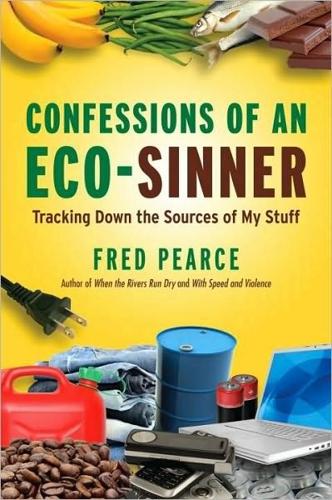
Confessions of an Eco-Sinner: Tracking Down the Sources of My Stuff
by
Fred Pearce
Published 30 Sep 2009
Or to choose the hardest case, let’s, for the sake of argument, say Jacob should be personally responsible for the entire carbon footprint of his business, right to the supermarket shelf in the UK. How do things look? Every kilogram of Jacob’s green beans flown to Britain consumes 1.9 litres of aviation fuel, which releases 4.25 kilograms of CO2. So the carbon footprint of Jacob’s typical annual production, taking off a bit for topping and tailing and wastage at the Kenyan end, is about 17 tonnes of CO2. That is, admittedly, approaching twice the average annual emissions for a typical Briton. But Jacob’s farm supports a family of four. So divide by four and the per-capita carbon footprint of his business comes out at about half that of average per-capita emissions in Britain.
…
Meanwhile, I filled in a footprint calculator put online by the WWF. That disclosed that in my personal life, my carbon footprint is below the UK average at nearly 8 tonnes of carbon dioxide a year, including a contribution for the services government provides. But then I added in my professional life. Some people say I shouldn’t do that. But I am freelance and by and large I can choose where I travel and how. Anyhow, it didn’t look so good. See Chapter 29 on carbon offsets for what happened when I tried to calculate my horrible carbon footprint for travelling to write this book. But really I knew the problems. I fly. A lot.
…
We gouge out the Earth to find the materials to make those machines; and the cheap energy to run them is polluting our planet and warming our climate. And yet many of the servants are still there. Though now, rather than occupying the attics of grand houses, they are spread across the world, growing our food, making our machines and stitching our clothes. People talk a lot about carbon footprints. But our personal footprints are much bigger than that. And they are social as well as ecological. The trouble is that, in our charmed world, we know little about what our footprints are. It all happens so far away. The people and the pollution that sustain us are invisible to us. I want to change that.
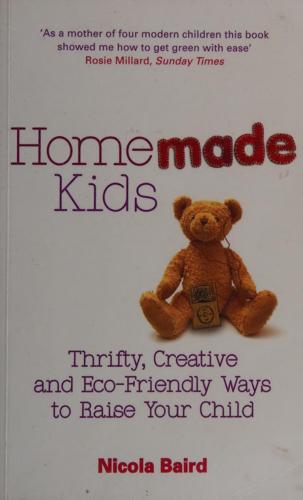
Homemade Kids: Thrifty, Creative and Eco-Friendly Ways to Raise Your Child
by
Nicola Baird
Published 14 Sep 2010
Many have been refurbed with energyefficient measures and also offer home-cooked, locally sourced meals. See www.yha.org.uk. 246 Resources 1: Give Your Home a Green Makeover Calculate your carbon footprint For the most accurate measurement of your carbon footprint you will need last year’s electricity and gas bills. It may help to have a calculator and your old diary (if you have one) to remind you how many miles you travelled using fossil fuel methods. Try one of the many options below to calculate your carbon footprint. You can compare how carbon calculators are ranked at the Climate Outreach & Information Network (COIN) site, www.coinet.org.uk.
…
At least I can say that their dad and I were trying. Anna, 36, with Freddie, four, and Elsie, two Homemade Kids Once you know your carbon footprint you have a way of measuring your progress as you cut your family’s energy usage (see the Resources section for a selection of helpful sites). General carbon calculators gauge your fossil fuel use. So the less non-renewably sourced electricity you use and the less gas or fuel you burn, to heat your home or travel around, the lower your family’s carbon footprint. The more demanding carbon calculators estimate the amount of energy used to make and transport food and consumer goods that you’ve bought recently (this is known as embedded prepare for surprises.
…
Although it is a new research area breastfeeding mums are unknowingly doing that bit more to tackle climate change. In Gabrielle Palmer’s The Politics of Breastfeeding, an important book which every parent should read, Palmer compares the carbon footprint of a carton of orange juice (though it could just as easily be formula) which emits 1.7kg of carbon dioxide. ‘The bulk of this comes from production costs such as fertiliser, transport and fuel. In contrast a woman can produce hundreds of litres of super-fluid breast milk for a zero-carbon footprint.’ Expressing milk f: Back then I was the only person I knew who used a : glass milk bottle. It didn’t break. I’m pleased I used it as there’s more and more information about BS plastics leaching.

Age of the City: Why Our Future Will Be Won or Lost Together
by
Ian Goldin
and
Tom Lee-Devlin
Published 21 Jun 2023
As discussed in Chapter 5, the trend towards remote work also creates an opportunity to bring the urban back to suburban areas, as demand for amenities like cafes and gyms moves closer to home. Reimagining suburbs as walkable neighbourhoods that support hybrid workers during the days they are not in the office would help further reduce carbon footprints. In addition to reducing the distances residents need to travel, cities can also lower their carbon footprint by encouraging cleaner modes of transport. A medium-sized car with a single passenger produces just over 300 grams of carbon-equivalent emissions per mile, whereas a typical train journey produces a little over 65 grams per passenger mile.44 Cycling and walking produce effectively zero emissions.
…
The world is watching’, New York Times. 23 Ibid. 24 Hussain, Z., 2022, ‘Why Indonesia’s Jakarta is the fastest sinking city in the world’, India Times. 25 Tarigan, E. and Karmini, N., 2022, ‘Indonesia’s sinking, polluted capital is moving to new city’, Associated Press. 26 European Commission Joint Research Centre, 2022, ‘Cities are often 10–15 °C hotter than their rural surroundings’ (joint-research-centre.ec.europa.eu). 27 Lieberman and Gordon, Climate Change in Human History. 28 Goldin and Muggah, Terra Incognita, pp. 68–9. 29 Arora, N., 2021, ‘Air pollution led to around 54,000 premature deaths in New Delhi in 2020 – study’, Reuters. 30 Abraham, B., 2022, ‘Deadly heatwave also resulting in ozone exceedance and it’s making Delhi’s air toxic’, India Times. 31 Jordan, J., 2018, ‘Living on the frontiers of climate change: a mother’s story’, YouTube (youtube.com). 32 Goldin and Muggah, Terra Incognita. 33 Wester, P., et al., 2019, The Hindu Kush Himalaya Assessment (Springer). 34 Goldin and Muggah, Terra Incognita, p. 53. 35 Bodewig, C., 2019, ‘Climate change in the Sahel: how can cash transfers help protect the poor?’, Brookings Institution (brookings.edu). 36 Ibid. 37 Al Jazeera, 2011, ‘Kashmir and the politics of water’ (aljazeera.com). 38 Moran, D., et al., 2018, ‘Carbon footprints of 13 000 cities’, Environmental Research Letters, Vol. 13, No. 6. 39 Swinney, P., 2019, ‘Are cities bad for the environment?’, BBC (bbc.com). 40 Jones, C. and Kammen, D., 2013, ‘Spatial distribution of U.S. household carbon footprints reveals suburbanization undermines greenhouse gas benefits of urban population density’, Environmental Science & Technology, Vol. 48, No. 2. 41 Ibid. 42 Glaeser, E. and Kahn, M., 2010, ‘The greenness of cities: carbon dioxide emissions and urban development’, Journal of Urban Economics, Vol. 67, No. 3. 43 CoolClimate Network, 2013, ‘Household calculator’ (coolclimate.berkley.edu). 44 Ritchie, H., 2020, ‘Which form of transport has the smallest carbon footprint?’
…
Urban Solutions The risks posed by climate change demand urgent and dramatic action to slow the emission of carbon and other greenhouse gases. Cities represent just over 55 per cent of the world’s population today, but directly and indirectly account for 70 per cent of emissions.38 By 2050, that share could be 85 per cent, given projections for further increases in the global urbanization rate. Finding ways to reduce the carbon footprint of cities will be pivotal in the fight against climate change. Switching the energy grid from coal and gas to solar, wind and other renewable sources is an essential part of that, but it is not the whole answer. Cities generate emissions in two ways. The first is direct emissions, which come from the activities that occur within a city.

Investing to Save the Planet: How Your Money Can Make a Difference
by
Alice Ross
Published 19 Nov 2020
Jeff Bezos, founder of Amazon, said in February 2020 that he would donate $10bn – about 8 per cent of his wealth at the time – via the newly created Bezos Earth Fund to fight climate change. (The move came shortly after hundreds of Amazon staff signed a letter attacking the company’s progress on reducing its carbon footprint.) In 2015, along with other billionaires including Jack Ma, Richard Branson and Michael Bloomberg, Microsoft founder Bill Gates set up Breakthrough Energy Ventures, an investment fund aimed at supporting new technologies that could combat climate change. In short, however one may feel about whether billionaires should be allowed to exist, they do have a role to play in the energy transition.
…
Companies and funds that are helping to mitigate climate change are choosing to do it in different ways. Some of their methods you may agree with, and some you may not. It’s a personal choice. This is something you’ll probably be familiar with as someone who cares about climate change in your everyday life. If you’re trying to reduce your carbon footprint, you will have made certain choices that are personal to you. You may be recycling but not going vegan. You might care strongly about animal welfare but not worry about how frequently you fly. Or you might fly but choose to carbon-offset by planting trees. You may worry that you’re being inconsistent, or that you don’t have time to do all the research to make the best choice.
…
Morningstar calculates that only 40 per cent of ex-fossil fuel funds are actually fossil fuel free, due to varying definitions of fossil fuel exclusions. Most of the commonly held companies in ex-fossil fuel funds have a low or negligible carbon risk, according to a carbon risk rating created by Sustainalytics, an ESG research and ratings provider. That measurement of carbon risk is not simply the company’s carbon footprint: it includes what actions the company is taking to be more sustainable. That helps to explain why some of these commonly held companies are perhaps not obviously in line with what climate-conscious investors want to invest in. They include H&M, a clothing company typically associated with fast fashion, but which has been making efforts to improve its practices more recently.

Doing Good Better: How Effective Altruism Can Help You Make a Difference
by
William MacAskill
Published 27 Jul 2015
Similarly, the focus on buying locally produced goods is overhyped: only 10 percent of the carbon footprint of food comes from transportation, whereas 80 percent comes from production, so what type of food you buy is much more important than whether that food is produced locally or internationally. Cutting out red meat and dairy for one day a week achieves a greater reduction in your carbon footprint than buying entirely locally based food. In fact, exactly the same food can sometimes have a higher carbon footprint if it’s locally grown than if it’s imported: one study found that the carbon footprint from locally grown tomatoes in northern Europe was five times as great as the carbon footprint from tomatoes grown in Spain, because the emissions generated by heating and lighting greenhouses dwarfed the emissions generated by transportation.
…
One common recommendation is to turn off or shut down electronic devices when you’re not using them, rather than keeping them on standby. However, this achieves very little compared to other things you could do: one hot bath adds more to your carbon footprint than leaving your phone charger plugged in for a whole year; even leaving on your TV (one of the worst offenders in terms of standby energy use) for a whole year contributes less to your carbon footprint than driving a car for just two hours. Another common recommendation is to turn off lights when you leave a room, but lighting accounts for only 3 percent of household energy use, so even if you never used lighting in your house, you would save only a fraction of a metric ton of carbon emissions.
…
Economic growth per person over the last decade has been about 2 percent per year, so a loss of 2 percent of global GDP due to climate change is therefore equivalent to going one year without economic growth. The thought that climate change would do the equivalent of putting us back one year economically isn’t all that scary—2013 didn’t seem that much worse than 2014. We can see the same thing on an individual level. Carbon dioxide equivalent, or CO2eq, is a way of measuring your carbon footprint that includes greenhouse gasses other than carbon dioxide, like methane and nitrous oxide. For example, one metric ton of methane produces as much warming as twenty-one metric tons of carbon dioxide, so one metric ton of methane is twenty-one metric tons of CO2eq. On typical estimates, the social cost of one metric ton of CO2eq is about thirty-two dollars: incorporating costs both now and in the future, emitting one metric ton of CO2, or an equivalent amount of greenhouse gasses like methane or nitrous oxide, costs all people a total of thirty-two dollars.

Climate Change
by
Joseph Romm
Published 3 Dec 2015
How can you reduce your carbon footprint? You may decide that you would like to reduce your impact on the climate—either because you think it is the right thing to do or because you want some experience in an inevitable transition that ultimately the vast majority of people will be making. Here is a brief discussion of the most important things that you can do now and in the near future to reduce your family’s carbon footprint, the total greenhouse gas (GHG) emissions released as a result of your purchases and choices. The biggest contributors to your carbon footprint are your home, your transportation, your stuff, and your diet (which is discussed separately below).
…
How might climate change affect decisions about where to live and retire in the coming decades? What should students study today if they want to prepare themselves for working in a globally warmed world? Should climate change affect how you invest for the future? How can you reduce your carbon footprint? What role can dietary changes play in reducing your carbon footprint? What is the best way to talk to someone who does not accept the growing body of evidence on climate science? Do we still have time to preserve a livable climate? PRIMARY SOURCES NOTES INDEX PREFACE Why you need to know about climate change Climate change will have a bigger impact on your family and friends and all of humanity than the Internet has had.
…
Ultimately, everything you purchase adds to your current footprint. In general, the more material it is made out of and the more expensive it is, the more GHGs were released in making it and getting it to you. Therefore, if you want to trim your family’s carbon footprint, remember the motto, “small is beautiful.” What role can dietary changes play in reducing your carbon footprint? If you have a diet rich in animal protein, then it is likely you can significantly reduce your greenhouse gas emissions by replacing some or all of that with plant-based food. That is particularly true if your diet is heavy in the most carbon intensive of the animal proteins, which includes lamb and beef but also dairy.
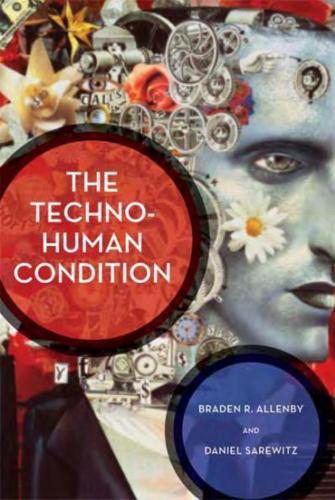
The Techno-Human Condition
by
Braden R. Allenby
and
Daniel R. Sarewitz
Published 15 Feb 2011
More and more articles and proclamations, some verging on self-parody, seek to redefine social and cultural phenomena in terms of carbon footprint. On one level this expansion of explanatory skeins is trivially valid: life is based on carbon, so, to the extent one participates in life, one will inevitably affect the carbon cycle. But defining complex human behaviors and 124 Chapter 6 states-such as obesity, or having children and pets-in terms of carbon footprint begins to create a new structure of good and evil in society. Obesity is now questionable not for reasons of health or Calvinist theology, but because obese people are destroying the world through the carbon-footprint-expanding sin of gluttony.
…
A complex public health problem is nicely converted into a simplistic moral mapping by jamming a Level III system into a Level I simplicity: "Carbon footprint-wrong!" Similarly, the report of Sweden's Environment Advisory Council uses climate change to reinvent the eco-feminist condemnation of males as evil destroyers of the environment. (New Scientist's news item on the report referred to "male eco-villains.") The campaign to create a moral universe predicated on carbon footprint, which began with initiatives against sportutility vehicles, is now extending across society as a whole. Climate-change science and climate-change policy are rapidly becoming carbon fundamentalism, a simplistic but comprehensive structure of moral valuation that can be applied to virtually any individual or institution.
…
Moreover, even when considering the potentially grave risks of climate change, we reject the telescoping of the social, political, technological, cultural, and economic complexity of climate change into the superficiallanguage of carbon footprints. Doesn't nitrogen matter anymore? What about land use? Economic development? Starvation? Waterborne diseases? And how does one possibly connect carbon footprint at Level I to controlling the behavior of the climate at Level III? 11. See "Baby levy plan to offset carbon emissions," Herald Sun, December 10,2007, available at http;//www.heraldsun.com. 12. See Roberts 2007. 13.
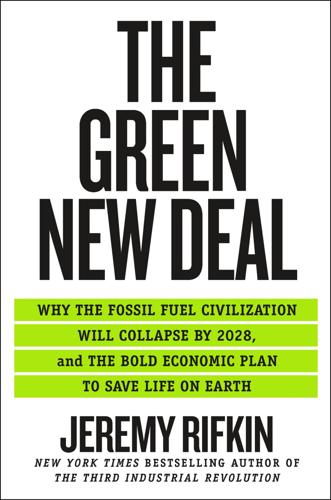
The Green New Deal: Why the Fossil Fuel Civilization Will Collapse by 2028, and the Bold Economic Plan to Save Life on Earth
by
Jeremy Rifkin
Published 9 Sep 2019
The use of energy in just the manufacturing of these devices accounts for 85–95 percent of the devices’ life-cycle annual carbon footprint.17 If we take still another step back in the ICT supply chain, the projection doesn’t include energy used and emissions emitted in extracting and processing rare earths and embedding them into devices, nor the cost of waste disposal for literally billions of devices. Although smartphones and tablets are big players in energy use and are on a steep upward growth curve, it’s the ICT infrastructure that consumes the most energy, uses the most electricity, and emits the most greenhouse gas emissions, accounting for 70 percent of the ICT carbon footprint. And it’s the proliferation of data centers that accounts for most of the energy use and carbon footprint, which by 2020 is estimated to be near 4 percent of all of the world’s power and 45 percent of the entire ICT footprint.18 The Green New Deal agenda will have to pay close attention to the ICT sector’s decarbonization as it comes to use an increasing percentage of the global electricity being generated.
…
Smart Ecological Agriculture Although the four key sectors that make up a society’s critical infrastructure are the juggernaut for managing, powering, and moving economic activity, social life, and governance, and together carry a hefty carbon footprint, we would be remiss in leaving the agricultural sector out, because it is a key consumer of energy and brings with it a big carbon footprint. The cultivation, irrigation, harvesting, storing, processing, packaging, and shipping of food to wholesalers and retailers uses a huge amount of energy. Petrochemical fertilizers and pesticides account for a significant portion of the energy bill.
…
In this expanded digital economy, individuals, families, and enterprises will be able to connect in their homes and workplaces to the IoT and access Big Data flowing across the World Wide Web that affects their supply chains, production and services, and every aspect of their social lives. They can then mine that Big Data with their own analytics and create their own algorithms and apps to increase their aggregate efficiency and productivity, reduce their carbon footprint, and lower the marginal cost of producing, distributing, and consuming goods and services and recycling waste, making their businesses and homes greener and more efficient in an emerging postcarbon global economy. (Marginal cost is the cost of producing an additional unit of a good or service after fixed costs have been absorbed.)

The Climate Book: The Facts and the Solutions
by
Greta Thunberg
Published 14 Feb 2023
With regard to this latter tactic, for example, I note in The New Climate War how ‘the focus on the individual’s role in solving climate change was carefully nurtured by industry’, explaining how ‘the concept of a “personal carbon footprint”, was something that the oil company BP promoted in the mid-2000s. Indeed, BP launched one of the first personal carbon footprint calculators.’ BP and other fossil fuel companies wanted us so focused on our own individual carbon footprint that we would fail to notice their much larger footprint: 70 per cent of total carbon emissions, after all, come from just a hundred polluters. While individuals should do all they can to minimize their environmental impact, we need governmental policies that will prevent them from using our atmosphere as a waste basket.
…
These in turn become components of another item that somebody buys, without any idea of the emissions that have been released into our collective atmosphere to produce it. For example, a new laptop could have a similar carbon footprint to a thousand-mile car drive, while a new pair of jeans could have about the same climate impact as either a couple of weeks’ worth of sustainably chosen food or just one large joint of meat. Most of us, most of the time, have hardly any sense of the scale of the invisible carbon footprints of the many things we do and buy. As humans have globalized, our supply chains have become ever more complex and opaque. Especially in the developed Global North, we’ve got used to a world in which items appear on the shelf, as if by magic.
…
That is not a decision anyone takes lightly. By doing so, these people have drastically lowered their own carbon footprint. But that is usually not why they did it. Nor did they do it to inflict shame on anyone. Most of them did it for the same reason I did – to send a clear message to those around them that we are now at the beginning of a crisis and, in a crisis, you change your behaviour. I certainly did not sail twice across the Atlantic Ocean in order to shame anyone, or to lower my carbon footprint. I did it to point out that there is no way for us as individuals to live sustainably within today’s system.
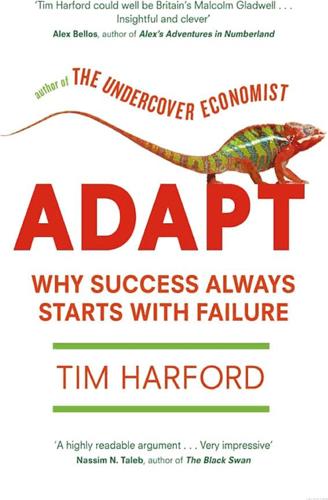
Adapt: Why Success Always Starts With Failure
by
Tim Harford
Published 1 Jun 2011
A red-haired, blue-eyed, young Scot, Murray is the modern face of climate-change action – dressed in a sharp shirt with cufflinks, he’s confident and straight-talking, at home with the technical details of carbon emissions without needing to fortify himself with jargon. He grew up on a sheep farm in southern Scotland, which gives him a suitably down-to-earth perspective on the messy task of calculating carbon footprints. ‘If I ask my old man “What’s the carbon footprint of a sheep?”, he looks at me as though I’m mad,’ he explains. ‘But he can tell me the stocking density, what he feeds the sheep, and he can answer those questions as part of running his business.’ Quite so: carbon footprinting is all about these kinds of specifics. I chose to ask Euan Murray about Geoff’s moment of weakness in buying a fortifying cappuccino before stepping into the office.
…
A cappuccino is easily as complex a product as Thomas Thwaites’s toaster: not only does it rely on the espresso machine – an impressive piece of equipment – but it also requires a cow, coffee beans, a cardboard cup, a plastic lid, and so on. Evaluating the carbon footprint of a cappuccino requires an estimate of the carbon footprint of all these different parts of the whole. You can see why I wanted expert help. But Murray was only able to assist me up to a point. Carbon footprinting is a time-consuming business, and even taking a very broad view of what constitutes a product, there are many thousands of candidates for the footprinting treatment. (Recall Eric Beinhocker’s estimate that modern economies offer around 10 billion distinct products.
…
It couldn’t be simpler? Not unless you devote your life to studying carbon emissions – and perhaps not even then. Euan Murray can vouch for that. 4 ‘If I ask my old man “What’s the carbon footprint of a sheep?”, he looks at me as though I’m mad’ Euan Murray works for The Carbon Trust, an organisation set up by the UK government to help businesses reduce their carbon emissions. He’s responsible for ‘carbon footprinting’ – the study of how much carbon dioxide is released in the course of producing, transporting, consuming and disposing of a product. Murray spends his working life making the kind of calculations on which I relied to assess Geoff’s day, and he does it for corporate clients ranging from a bank (200 grams of carbon dioxide per bank account) to PepsiCo (75 grams of carbon dioxide for a packet of potato snacks).

Why We Can't Afford the Rich
by
Andrew Sayer
Published 6 Nov 2014
It’s been estimated that in the US a three-person household on $100,000 a year – hardly rich – has roughly twice the carbon footprint of a three-person household on $30,000 a year.44 Yet, in global terms, even less well-off people in rich countries have large carbon footprints, mainly because they live in highly developed societies dependent on fossil fuels. Climate scientists differ on just how fast we need to cut emissions, indeed on whether we have already passed a point of no return, but they all agree that the longer we leave it, the harder it will get. We certainly can’t afford the carbon footprints of the rich, as they exceed their global allowance by so much more than others.
…
54 So they may even unwittingly increase their emissions by improving their home insulation. The problem is that in rich countries it’s difficult to reduce your carbon footprint by much, for while we can do things like installing energy-saving light bulbs and better insulation in our homes, it’s not within our power to reduce many of our indirect emissions. You could try assessing your carbon footprint by using one of the many carbon footprint calculators available on the internet.55 When you’ve put in your data and worked out your current footprint, try doing it again with some changes – maybe no air flights, or doing without a car, or eating less meat.
…
The answer is that it depends on what particular problems we’re talking about. If it’s carbon footprints and climate change, then it includes many of us in the rich countries, though people in some countries (the US, Australia) have much greater CO2 emissions than others, like France and Sweden. If the whole world emitted as much CO2 as the US, we’d need five planets to absorb the carbon emissions. Though the US’s population is only 5% of the world’s, it accounts for a quarter of the world’s CO2 emissions.11 Generally, the higher your income, the bigger your carbon footprint is likely to be. Otherwise, for most of the issues dealt with in this book, those who arguably have too much are much smaller in number even within the rich countries of the world.
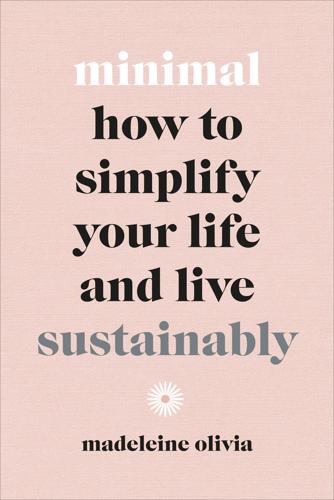
Minimal: How to Simplify Your Life and Live Sustainably
by
Madeleine Olivia
Published 9 Jan 2020
How to Be a Sustainable Shopper Shop less Shopping less is the simplest and most direct way that you can have an impact on your carbon footprint when it comes to fashion. The less you buy, the less you’re supporting the linear and unsustainable economy of fast fashion. Replace old shopping habits with a more mindful approach to what you’re adding to your wardrobe. Find the why We’ve discussed how finding the ‘why’ can help when it comes to minimalism, but it can apply to anything you want to do in life. You need to figure out why you are setting yourself this goal in order to fulfil it. Why do you want to stop shopping? To reduce your carbon footprint? To save money or to clear your debt?
…
Go after it wholeheartedly and focus hard on your goals and ambitions in life, whatever they may be. Taking care of the planet Minimalism has played a big part in reducing the amount of waste and resources I’m using. One of the biggest things you can do to be more environmentally friendly overall is simply to not consume as much stuff. Minimalism therefore facilitates a much lower carbon footprint. So if you want to change one thing to do the planet a favour, stop buying so much and start being a conscious consumer. Reevaluating what’s truly important Over the last few years I have let go of a lot of preconceived ideas about what I should be doing, or what other people expected me to do.
…
Lots of laundry detergents advise a colder wash for your clothes (it also protects your clothes better), and having a cold shower (or at least switching it to cold towards the end of your shower) can heavily save on bills and energy. 4 AIR–DRY Instead of tumble drying your clothes or using a hairdryer on your hair, try air–drying. Anything that creates heat requires a lot of energy, and therefore can cost a lot of money. 5 CYCLING Get yourself a bike (buy secondhand to save some cash) and try cycling to places you would usually drive. It’s a great workout, lots of fun and can make a significant difference to your carbon footprint. Plus, once you’ve bought the bike, it’s free! 6 MAKE YOUR OWN This can be your own hair products, clothing, artwork, gifts, cards – anything that you can get creatively involved in and make yourself. Later I will go into more detail about how to make your own cleaning and beauty products that’ll save you lots of money in the long run, while avoiding toxic and harmful chemicals found in many commercial products. 7 COOK FROM SCRATCH I’m a huge advocate for cooking and I think it’s one of the most valuable tools in life.
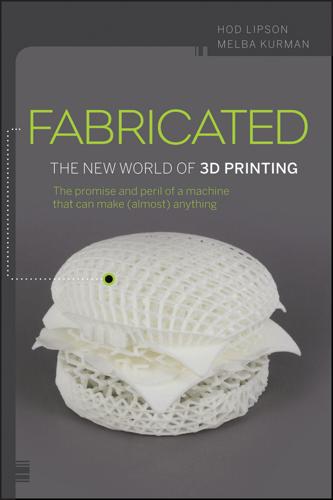
Fabricated: The New World of 3D Printing
by
Hod Lipson
and
Melba Kurman
Published 20 Nov 2012
Chapter 11 1 China Labor Watch reports. http://www.chinalaborwatch.org/ 2 “ATKINS: Manufacturing a Low Carbon Footprint. Zero Emission Enterprise Feasibility Study.” Project number N0012J, October 2007. Lead Partner: Loughborough University. 3 “ATKINS: Manufacturing a Low Carbon Footprint. Zero Emission Enterprise Feasibility Study.” Project number N0012J, October 2007. Lead Partner: Loughborough University. 4 Whitney MacDonald, “Time for Titanium Processing.” CSIRO Process magazine (June 2005): 1-2. http://www.csiro.au/files/files/p81m.pdf 5 “ATKINS: Manufacturing a Low Carbon Footprint. Zero Emission Enterprise Feasibility Study.” Project number N0012J, October 2007.
…
To researchers at the University of Nottingham (formerly at Loughborough University), low-carb manufacturing means reducing the carbon footprint of the entire product lifecycle, from design, to production, to part assembly, distribution and finally, disposal. “Current products are generally wasteful in all aspects, from design and manufacture to the final distribution to the consumer,” explained Richard Hague, a professor at the University of Nottingham. “This is mainly a consequence of conventional processes that restrict our current design, manufacture and supply chains.”3 Richard and several colleagues conducted an in-depth study to compare the carbon footprint left behind by 3D printing and traditional manufacturing.
…
The Atkins study said that with 3D printing, traditional criteria for design-to-manufacturing “can be ignored and designers can design what they want or need rather than what the manufacturing system is capable of producing.” High-performing parts can help shrink manufacturing’s carbon footprint in several ways. High-performing printed parts Computers are great problem solvers. Computer-generated designs create a new breed of products. Reducing weight is an obvious way to shrink a product’s carbon footprint. For example, for every kilogram that’s shaved off the weight of an airplane the plane will burn approximately 600 fewer liters of fuel per year.5 This metal airplane part was designed by a computer program and then 3D printed in metal.
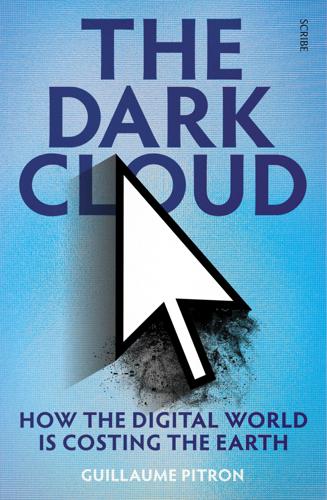
The Dark Cloud: How the Digital World Is Costing the Earth
by
Guillaume Pitron
Published 14 Jun 2023
When the digital industry rewrites the future The battle to become an opinion leader required irrefutable figures, the first of which appeared from 2003 in confidentially distributed reports.33 From 2015, the message gained currency among intergovernmental bodies, such as the United Nations Educational, Scientific and Cultural Organization (UNESCO): ‘Whereas the carbon footprint of ICTs should reach 1.27 GtCO2e from now to 2020, the total potential for reduction [of this footprint thanks to] ICTs is seven times higher.’34 If there is one organisation with more clout than any other on this terrain, it is the Global e-Sustainability Initiative (GeSI) — a group of private players from the digital sector and international organisations, based in Brussels.35 The GeSI describes itself as a ‘a leading source of impartial information … for achieving integrated social and environmental sustainability through ICT-enabled transformation’.
…
In the twenty-first century, digital companies are taking this further by trying to go as far as rewrite the future. That is because digital is dirty. Very dirty. As pointed out earlier, the sector’s water and energy consumption, and its contribution to the drying-up of mineral resources, gives it a carbon footprint two to three times that of a country such as the UK or France.46 And this is unsurprising: there are some 34 billion pieces of digital equipment in circulation on the planet, representing a total of 223 million tonnes, or 179 million cars.47 In terms of energy consumption, ICTs account for around 10 per cent of the world’s electricity, equivalent to the power generation of 100 nuclear reactors.48 If the digital world were a country, it would be the third-biggest consumer of energy after China and the United States, bearing in mind that 35 per cent of today’s energy is coal-based.49 All told, digital represents just under 4 per cent of global greenhouse-gas emissions.50 This is the current situation.
…
‘The digital ecology is an emerging concept in the business world’, explains the corporate and social responsibility manager of a European bank, adding that large corporations ‘are still in the very early stages of tackling these issues’. Yet the director of the IT department of a European insurance company admitted to me that ICTs account for 30 per cent of his company’s carbon footprint.67 Figures such as these are bound to poke holes in the shining green reputation so very dear to the key players of the economy. Some companies have already given into pressure to act, Google being one of them: in 2019, 2,000 employees signed a letter demanding that the internet giant cut all its carbon dioxide emissions by 2030.68 Companies are also realising that a tarnished image can have a damaging effect on recruitment.

Stakeholder Capitalism: A Global Economy That Works for Progress, People and Planet
by
Klaus Schwab
Published 7 Jan 2021
, France Culture, November 2019, https://www.franceculture.fr/emissions/linvite-des-matins/fin-du-mois-fin-du-monde-meme-combat. 27 “Per Capita Emissions, Navigating the Numbers: Greenhouse Gas Data and International Climate Policy,” World Resources Institute, http://pdf.wri.org/navigating_numbers_chapter4.pdf. 28 “Palau Climate Change Policy for Climate and Disaster Resilient Low Emissions Development,” Government of Palau, 2015, p.22-23, https://www.pacificclimatechange.net/sites/default/files/documents/PalauCCPolicy_WebVersion-FinanceCorrections_HighQualityUPDATED%2011182015Compressed.pdf. 29 “Urbanization,” Our World in Data, November 2019, https://ourworldindata.org/urbanization. 30 “68% of the World Population Projected to Live in Urban Areas by 2050, Says UN,” UN Department of Economic and Social Affairs, May 2018, https://www.un.org/development/desa/en/news/population/2018-revision-of-world-urbanization-prospects.html. 31 “Global Gridded Model of Carbon Footprints (GGMCF),” http://citycarbonfootprints.info/. 32 “Sizing Up the Carbon Footprint of Cities,” NASA Earth Observatory, April 2019, https://earthobservatory.nasa.gov/images/144807/sizing-up-the-carbon-footprint-of-cities. 33 “Why a Car Is an Extravagance in Singapore,” CNN, October 2017, https://edition.cnn.com/2017/10/31/asia/singapore-cars/index.html. 34 “World Population Growth,” Our World in Data, May 2019, https://ourworldindata.org/world-population-growth 35 “Russia's Natural Population Decline to Hit 11-Year Record in 2019,” The Moscow Times, https://www.themoscowtimes.com/2019/12/13/russias-natural-population-decline-hit-11-year-record-2019-a68612. 36 “Fertility Rate, Total (Births per Woman)—India,” World Bank, https://data.worldbank.org/indicator/SP.DYN.TFRT.IN?
…
But fossil fuel energy supply more than quadrupled as well, jumping from less than 5 percent of the total energy supply in 1990 to double that in 2017. It shows that, even today, there is no magic formula for poor countries to industrialize and keep their carbon footprint in check. Development, an increased standard of living, and a greater carbon footprint still walk in lockstep. This is the central conundrum in the global fight against climate change, and it is almost certain to get worse before it gets better. This is not (only) the consequence of market failures or a lack of corporate or government leadership.
…
If human beings are so innately motivated to seek a better lifestyle, and if in the course of the past 200 years that has meant increasing one's carbon footprint, are more sustainable climate policies even feasible? The answer partially depends on four key megatrends, which to varying degrees are shaped by society in its entirety and by influential individuals within it. The first of these is urbanization. Until the 1960s, the UN calculated, roughly two-thirds of world population lived in rural areas.29 As most of these people lived in developing countries, their access to electricity, roads, and other sources of energy consumption was limited, as was their carbon footprint. But a change was already underway, and it would transform the global landscape in the next 50 years completely.
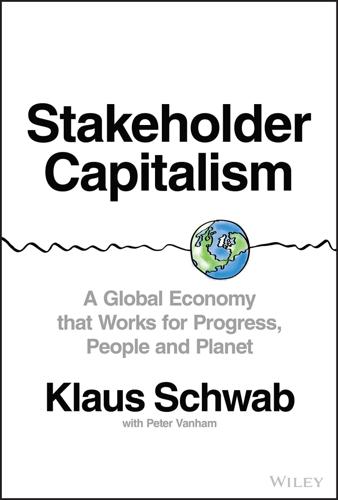
Stakeholder Capitalism: A Global Economy That Works for Progress, People and Planet
by
Klaus Schwab
and
Peter Vanham
Published 27 Jan 2021
, France Culture, November 2019, https://www.franceculture.fr/emissions/linvite-des-matins/fin-du-mois-fin-du-monde-meme-combat. 27 “Per Capita Emissions, Navigating the Numbers: Greenhouse Gas Data and International Climate Policy,” World Resources Institute, http://pdf.wri.org/navigating_numbers_chapter4.pdf. 28 “Palau Climate Change Policy for Climate and Disaster Resilient Low Emissions Development,” Government of Palau, 2015, p.22-23, https://www.pacificclimatechange.net/sites/default/files/documents/PalauCCPolicy_WebVersion-FinanceCorrections_HighQualityUPDATED%2011182015Compressed.pdf. 29 “Urbanization,” Our World in Data, November 2019, https://ourworldindata.org/urbanization. 30 “68% of the World Population Projected to Live in Urban Areas by 2050, Says UN,” UN Department of Economic and Social Affairs, May 2018, https://www.un.org/development/desa/en/news/population/2018-revision-of-world-urbanization-prospects.html. 31 “Global Gridded Model of Carbon Footprints (GGMCF),” http://citycarbonfootprints.info/. 32 “Sizing Up the Carbon Footprint of Cities,” NASA Earth Observatory, April 2019, https://earthobservatory.nasa.gov/images/144807/sizing-up-the-carbon-footprint-of-cities. 33 “Why a Car Is an Extravagance in Singapore,” CNN, October 2017, https://edition.cnn.com/2017/10/31/asia/singapore-cars/index.html. 34 “World Population Growth,” Our World in Data, May 2019, https://ourworldindata.org/world-population-growth 35 “Russia's Natural Population Decline to Hit 11-Year Record in 2019,” The Moscow Times, https://www.themoscowtimes.com/2019/12/13/russias-natural-population-decline-hit-11-year-record-2019-a68612. 36 “Fertility Rate, Total (Births per Woman)—India,” World Bank, https://data.worldbank.org/indicator/SP.DYN.TFRT.IN?
…
But fossil fuel energy supply more than quadrupled as well, jumping from less than 5 percent of the total energy supply in 1990 to double that in 2017. It shows that, even today, there is no magic formula for poor countries to industrialize and keep their carbon footprint in check. Development, an increased standard of living, and a greater carbon footprint still walk in lockstep. This is the central conundrum in the global fight against climate change, and it is almost certain to get worse before it gets better. This is not (only) the consequence of market failures or a lack of corporate or government leadership.
…
If human beings are so innately motivated to seek a better lifestyle, and if in the course of the past 200 years that has meant increasing one's carbon footprint, are more sustainable climate policies even feasible? The answer partially depends on four key megatrends, which to varying degrees are shaped by society in its entirety and by influential individuals within it. The first of these is urbanization. Until the 1960s, the UN calculated, roughly two-thirds of world population lived in rural areas.29 As most of these people lived in developing countries, their access to electricity, roads, and other sources of energy consumption was limited, as was their carbon footprint. But a change was already underway, and it would transform the global landscape in the next 50 years completely.
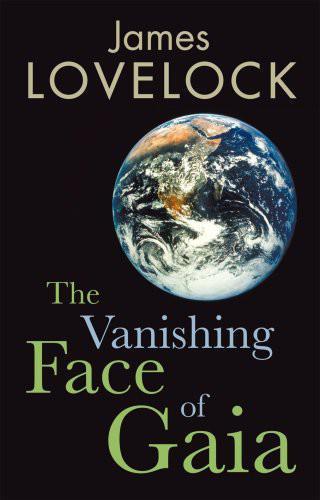
The Vanishing Face of Gaia: A Final Warning
by
James E. Lovelock
Published 1 Jan 2009
Therefore my plea is that adaptation is made at least equal in importance to policy‐driven attempts to reduce emissions. We cannot continue to assume that because there is no way gently to reduce our numbers it is sufficient merely to improve our carbon footprints. Too many also think only of the profit to be made from carbon trading. It is not the carbon footprint alone that harms the Earth; the people’s footprint is larger and more deadly. We already face the adverse consequences of a total accumulation of greenhouse gases amounting to over 430 ppm of carbon dioxide equivalent – the loss of land‐based ecosystems, the desertification of the land and ocean surfaces, and the loss of polar ice; these act together in positive feedback and probably commit the Earth to irreversible heating.
…
But it has taken Gaia 3.5 billion years to evolve an animal that can think and communicate its thoughts. If we become extinct she has little chance of evolving another. I will enlarge this thought later in the book. When I am warned that my pessimism discourages those who would improve their carbon footprint or do good works such as planting trees, I’m afraid I see such efforts as at best romantic nonsense, or at worst hypocrisy. Agencies now exist which allow air travellers to plant trees to offset the extra carbon dioxide their plane adds to the overburdened air. How like the indulgences once sold by the Catholic Church to wealthy sinners to offset the time they might otherwise spend in purgatory.
…
In a similar and equally deluded way we assume that the human presence on the Earth is all that matters, yet when considering energy and our use of it we must never forget that the natural flux of energy and those essential gases oxygen and carbon dioxide from the biosphere is nearly twenty times larger than all of our emissions, and it changes as the world warms. We are bemused by carbon, and when we talk and think about our abuse of the Earth we concentrate almost exclusively on greenhouse‐gas emissions from transport and industry and from domestic heating and air‐conditioning. We try to convince ourselves that if we sufficiently improved our carbon footprint all would be well again and business as usual could continue. In reality increasing numbers of people increases the population of livestock and of the area of land we use for ourselves. True enough, the world total of domestic and industrial emissions of 30 gigatons of carbon dioxide annually is far too great, but so are the consequences of too many people competing for land with the natural forests of the world.

Frugal Innovation: How to Do Better With Less
by
Jaideep Prabhu Navi Radjou
Published 15 Feb 2015
The plan aimed to double sales and halve the company’s environmental impact by 2020. This is no small undertaking. Unilever owns and operates 260 factories and 460 warehouses in 90 countries, serving 2 billion consumers worldwide. It plans to add a further 2 billion consumers over the next decade, mostly in emerging markets, and still reduce its carbon footprint. The Sustainable Living Plan also includes social goals, such as improving both the nutritional value of its food products and the livelihoods of over 500,000 smallholder farmers and distributors that it works with worldwide. David Blanchard, Unilever’s chief R&D officer, says of the plan:13 This was frugal innovation by definition … We either say “I don’t know how to do that” or use the plan as a way to challenge ourselves to think and act differently.
…
As noted in Chapter 4, large companies increasingly recognise that there is only so much they alone can do to become sustainable. Customers must also learn to do more with less. This is especially important because customers are often more wasteful than their suppliers. Unilever’s chief supply chain officer, Pier Luigi Sigismondi, estimates that half the water consumption, and 68% of a Unilever product’s total carbon footprint, relates to how consumers use it. Similarly, Michael Kobori, Levi Strauss’s vice-president of global sustainability, observes that 58% of the energy used during the lifetime of a pair of Levi’s 501 jeans occurs during the customer-use phase as a result of washing and drying them. Given this, Sigismondi and Kobori note that if their respective companies are to become truly frugal, they must first encourage their customers to change their habits.
…
Tesco, a UK retailer, calculated that two-thirds of its products’ carbon emissions occur at the end of the food chain: in homes or on trips to their stores. So too with fast-moving consumer goods (FMCG) companies. In 2007, Reckitt Benckiser, which produces Dettol, Clearasil and Strepsils, was one of the first FMCG companies to launch a full life cycle carbon-reduction programme. It set out to reduce its total carbon footprint by 20% by 2020, a target achieved in 2012. Reckitt Benckiser realised that its customers were responsible for two-thirds of its products’ greenhouse-gas emissions, so it redesigned its products to have a lower impact once in the customers’ hands. The company understood that it may not be sufficient to rely on what consumers say they want, but rather to respond to what they do, and then help them change.

Live Green: 52 Steps for a More Sustainable Life
by
Jen Chillingsworth
Published 19 Feb 2019
We’ve made all the changes listed below in our home and have found our bills have reduced as well as keeping us toasty warm throughout the colder months. SWITCH TO A GREEN ENERGY SUPPLIER Changing to a renewable energy supplier has never been easier and it’s worth doing if it’s going to save you money and you want to cut your carbon footprint. Renewables reduce the production of carbon dioxide and the release of other greenhouse gases into the atmosphere, reduce our dependence on oil and coal, and make use of local resources. Search online for the best deal and look for companies that provide 100% renewable electricity. HEATING Reduce the temperature on your thermostat by one degree and you’ll find a significant reduction in your bill, while barely noticing the difference.
…
Non-allergenic, non-toxic and smoke free. » Soy Non-toxic and suitable for vegans. Look for responsibly sourced and non-GMO soy products. » Rapeseed (Canola) Non-toxic and suitable for vegans. Look for responsibly sourced and non-GMO rapeseed products. In the UK and EU this is by far the best choice as it has the lowest carbon footprint. » Coconut Non-toxic, burns clean and slow. Sustainable and organic but expensive. It’s not only scented candles made with paraffin wax – unscented dinner candles, tealights, etc. all release toxins, so look for natural alternatives if you use them. Don’t forget you can recycle the glass jars that some candles come in.
…
I also like to include a visit to a farmers’ market when I go on holiday as there is nothing better than sampling the fresh produce grown in the region you are staying in. ‘Pick your own’ is also a great way to support local growers and stock up on summer produce, too. Why shop local? * * * IT’S BETTER FOR THE ENVIRONMENT Buying fresh food from a local grower or farmer helps to reduce your carbon footprint substantially as there is no need for any transportation, food miles or refrigeration. Talk to the farmer or grower about their methods or use of pesticides – most will be happy to answer your questions. Many farmers or growers also offer a home delivery service, cutting down the need for more vehicles on the road too.
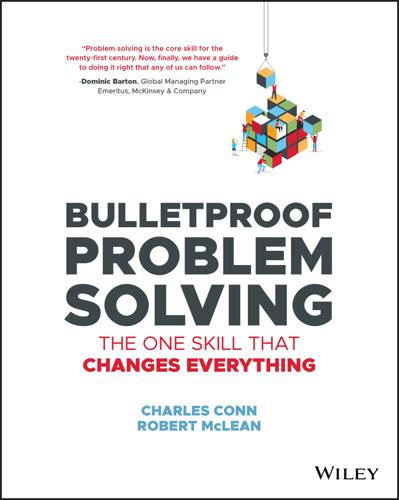
Bulletproof Problem Solving
by
Charles Conn
and
Robert McLean
Published 6 Mar 2019
Despite the current airport authority's opposition, Sydney is to get a second airport in the next decade. Case 2: Should Rob Install Solar Panels on His Roof Now? A few years ago Rob thought it might be time to install solar panels at their house in the Australian countryside. Rob and his wife Paula wanted to do something to offset their carbon footprint for some time, but were struggling to make a decision with reducing (and now eliminated) subsidies available from the power company, declining costs of installing solar PV, and questions over the future level of feed‐in tariffs (the price at which the electricity company buys from you when you generate excess power at home).
…
Finally, he wanted to estimate how much of his CO2 footprint he would reduce by going ahead. This depends on two things—one is what fuel source he is displacing (coal or gas in this case), and the second is the kilowatt hours (kWh) he is generating compared to his electricity use, which he knew from the first step. Rob simplified the analysis by looking at the carbon footprint of the average Australian citizen, and found that the avoided carbon from his little solar project could reduce his footprint by more than 20%. Since the payback as an investment is very solid in this case, Rob really could have pruned off this branch of the tree (step 3) and saved some time—but he and Paula had multiple objectives with this investment.
…
With only a bit of online research, Rob was able to crack a relatively complicated problem. Rob should install solar panels now. The payback is attractive, and likely cost declines to install later are not enough to offset the savings he could earn now. As a bonus, Rob and Paula were able to reduce their carbon footprint by nearly 30% (steps 6 and 7). The core of this good result was asking the right questions and disaggregating the problem into straightforward chunks. Case 3: Where Should I Move? In the early 2000s Charles was living in Los Angeles. Having recently sold the company he cofounded, his family wanted to move to a small‐town environment where there would be more opportunities for recreation and really good schools.
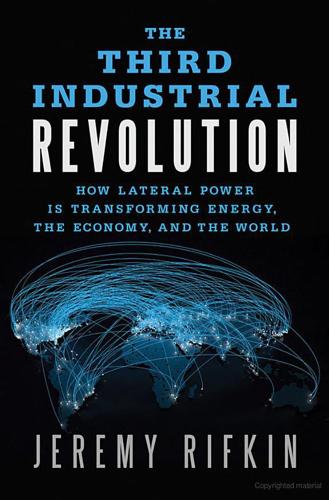
The Third Industrial Revolution: How Lateral Power Is Transforming Energy, the Economy, and the World
by
Jeremy Rifkin
Published 27 Sep 2011
The five-week program exposes CEOs and business executives from around the world to the emerging issues and challenges they will face in the twenty-first century. The idea soon found its way into corporate suites and became part of the political lexicon among heads of state in the European Union. By the year 2000, the European Union was aggressively pursuing policies to significantly reduce its carbon footprint and transition into a sustainable economic era. Europeans were readying targets and benchmarks, resetting research and development priorities, and putting into place codes, regulations, and standards for a new economic journey. By contrast, America was preoccupied with the newest gizmos and “killer apps” coming out of Silicon Valley, and homeowners were flush with excitement over a bullish real estate market pumped up by subprime mortgages.
…
In the twentieth-century model of urban development, cities became increasingly divorced from the production of the food they consumed. The distant production and long-haul transportation of food has become a major source of greenhouse gas emissions. This problem is frequently underestimated, as urban carbon footprint calculations tend to focus only on emissions generated by processes within the city boundaries, rather than emissions embedded in the food consumed by city dwellers and produced elsewhere. A city’s ecological footprint can be significantly impacted by its dietary choices. A beef-based diet, in particular, increases the emission of methane, nitrous oxide, and carbon dioxide, the critical greenhouse gases that have the most significant impact on climate change.
…
San Antonio’s weak manufacturing sector turned out to be a plus. Because there was so little manufacturing activity in the county compared to other major metropolitan areas (the number of manufacturing jobs per capita in San Antonio is about half the number in other regions in the United States), San Antonio began with a smaller carbon footprint. If San Antonio could narrow the socioeconomic gap between the Latino and Anglo communities and, at the same time, address the dual challenge of climate change and energy security, it would become a lighthouse for the rest of the country. We created a detailed economic model of the city and projected growth trends, factoring in a wide range of economic and sociological variables, and then calculated what San Antonio’s CO2 gas emissions would be in a “business as usual” scenario—using a 2005 emissions inventory—between 2008 and 2030.
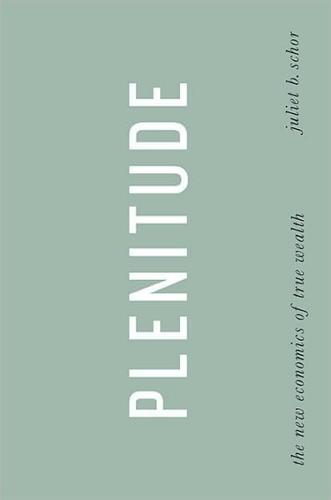
Plenitude: The New Economics of True Wealth
by
Juliet B. Schor
Published 12 May 2010
Between 1961 and 1995, measured global biocapacity increased slightly, but it has fallen since then as ecosystems have degraded. When the human footprint is below the world’s biocapacity, we’re in a viable situation. When it exceeds it, we’ve begun to eat into natural capital and are undermining the reproduction of future generations. FIGURE 2.10 Ecological Footprint, Carbon Footprint, and Biocapacity Source: Global Footprint Network (2009) By these calculations, the world first reached its limits in 1986. Since then resource use has increasingly outstripped biocapacity. According to the latest data available (2006), there are about 1.8 available hectares (or 4.5 acres) for every person globally, but we’re using 2.6, for a per capita deficit of 0.8.
…
The U.K. debate between those advocating a pure technology and pricing approach and those who think growth needs to be curbed is the topic of a recent study by the sociologist Anders Hayden. Britain has been described as “carbon crazy,” with significant government, business, NGO, and media attention paid to reducing the carbon footprint. Supermarket chains now label packages with carbon scores, and chains such as Marks and Spencer have signed on to carbon neutrality. In 2007 Parliament passed a major climate-change bill that mandated a 26 percent reduction below 1990 levels of greenhouse gases by 2020, and a 60 percent cut by 2050.
…
On the other hand, the Labour government has been adamant about its commitment to growth, arguing that efficiency, clean energy, and a market for carbon will do the trick. They claim that they can decarbonize, or sever the link between emissions and GDP. The environment ministry has enacted programs on food waste and plastics use to encourage behavior change among citizens, and a variety of efforts to reduce the carbon footprint of businesses. In the academic literature, this approach is known as ecological modernization. It holds that the fundamentals of the market economy can remain intact. Green production, with eco-conscious consumers and a price for carbon, will be sufficient to solve environmental problems. While the United Kingdom was one of the only successful cases under the first round of the Kyoto agreements, virtually all their emissions reductions came from phasing out coal.

Cities in the Sky: The Quest to Build the World's Tallest Skyscrapers
by
Jason M. Barr
Published 13 May 2024
Two scientists at the University of California, Berkeley, Christopher Jones and Daniel M. Kammen, created estimates of the average household carbon footprints for every zip code in the United States. They found that the benefits of central city population density contributions were offset by the profligate suburbs. While Manhattan is one of the greenest places in America, thanks to its small apartments, tall buildings, and extensive subway system, New York’s outlying suburban areas have much higher carbon footprints. My own review of the carbon footprints in the Jones and Kammen data for New York City shows that on average, high-rise residential neighborhoods are much better than single-family districts, though the “best” carbon-footprint neighborhoods are those with four- or five-story low-rise apartment buildings.
…
My own review of the carbon footprints in the Jones and Kammen data for New York City shows that on average, high-rise residential neighborhoods are much better than single-family districts, though the “best” carbon-footprint neighborhoods are those with four- or five-story low-rise apartment buildings. As a thought experiment, imagine we only dealt with lifestyle and transportation changes and ignored policies like taxing carbon. Say a new policy causes vehicle miles driven to drop by 10 percent, while average floors per building and total floor area both stimulatingly increased by 10 percent. Reducing vehicle miles traveled by 10 percent leads to a predicted drop of emissions by 2.73 percent. However, an increase in the average number of floors and total floor area by 10 percent increases emissions by 0.632 percent.
…
Developers are being incentivized to reduce carbon emissions both for good public relations and to lower production and maintenance costs. I can tell you that having attended the CTBUH’s conferences in the last several years, I know the skyscraper community is very worried about reducing the carbon footprints from their buildings. Architects, engineers, and planners are working hard to create greener buildings. Not only are they personally worried about climate change, but their clients are asking for sustainable solutions also. New technologies are being put to the task. Wind tunnel testing, for example, allows building design to be much more efficient, saving enormous quantities of material.

Business Lessons From a Radical Industrialist
by
Ray C. Anderson
Published 28 Mar 2011
But sometimes self-interest points us in the other direction. Controlling our carbon footprint, even when it seems to save money, is not always the best strategy. Remember what I said about the next order at Interface, that it’s just like that next heartbeat: If you don’t get it you’re dead? Well, I like to think that just about every person in Interface understands that. Our sales force is really tuned into the message, and they believe that getting samples of carpet to potential customers fast gives them a competitive edge. Not next week. Not in a few days. Tomorrow. But speed (think air) and reducing carbon footprints are opposite goals. What did we do?
…
One of the poster children for outsized transportation footprints has got to be Fiji Water. These are the folks who bottle and ship and sell spring water they collect on an island way out in the middle of a very big ocean. When they did an audit to see where they stood, they found that a full 40 percent of their company’s total carbon footprint came from ocean freight and distribution (like carpet tiles, water is heavy). Stung by public criticism over marketing such a clean and healthy product in such a carbon-intensive, unsustainable way, Fiji Water set themselves the goal of cutting their 2010 GHG emissions by 25 percent, which is a significant step in the right direction.
…
Bringing our whole supply chain—both upstream and down—into our circle has other benefits, too, for them, for us, and for the earth. When we apply the tools and skills we’ve developed at Interface to their businesses, we usually find we can reduce their environmental footprint to one degree or another. But there are large benefits to Interface, even if the savings seem small. Why? When you examine the total carbon footprint of one square yard of our carpet, you quickly discover that Interface is directly responsible for only 10 to 20 percent of it; everyone else, from the user, the installer, the distributor, all the way back to the wells and mines, contributes the overwhelming 80 to 90 percent. So any change we can help them make in their operations has an outsized positive effect.

Prosperity Without Growth: Foundations for the Economy of Tomorrow
by
Tim Jackson
Published 8 Dec 2016
Service-based activities – of the kind described in the previous section – are inherently labour-intensive as well as being potentially lighter in environmental terms. Figure 8.1 illustrates both of these characteristics. On the vertical axis, it maps the carbon footprints associated with different economic sectors. And it clearly confirms the potential for carbon savings from a transition to services. The carbon footprint of the social and personal services sector (where many of the activities discussed above reside) is between three and five times smaller than the footprint of the manufacturing or extractive sectors.20 The horizontal axis of Figure 8.1 maps the employment or labour intensity of each sector.
…
Figure 5.3 Carbon dioxide emissions in richer and poorer nations, 1965–2015 Source: Data from the World DataBank (see note 10 and Jackson 2016) This difference can sometimes be large enough to undermine the apparent progress towards climate change targets completely. A reduction in UK greenhouse gas emissions of almost 18 per cent between 1990 and 2007, as reported under UN FCCC guidelines, turned into a 9 per cent increase in emissions, when measured using a footprint methodology. The carbon footprint of the UK fell significantly through the financial crisis, but by 2012 it had begun to creep upwards again as the economy started to recover. Similar stories are to be found in other high-income countries.15 What’s true for carbon is also true for material footprints. Apparent declines in resource consumption in advanced economies, as measured by their ‘domestic material consumption’, have tempted optimistic observers to speak of rich countries soon reaching a state of ‘peak stuff’, a maximum level of resource throughput soon to be followed by a convenient decline.16 According to the OECD, there was both relative and absolute decoupling of material consumption from GDP in its member countries between 1980 and 2008.
…
These studies pointed out that domestic material consumption omits any account of the raw material extraction associated with the import of finished and semi-finished goods, and in doing so underrepresents the material dependency of the economy. The new studies use a methodology which adds up all the resource inputs attributable to the consumption patterns of an economy, in much the same way as the carbon footprint adds up all carbon emissions, wherever they may occur. The recent studies compared this ‘material footprint’ with the domestic material consumption measure over two decades for almost 200 nations.18 The results are striking. The studies confirm that there was some relative decoupling of domestic material consumption from GDP in many developed economies.

Green Interior Design
by
Lori Dennis
Published 14 Aug 2020
The truth is that conventional cotton, although a small percentage of the world’s agricultural crops, uses 25 percent of the world’s pesticides. Every pound of cotton that is grown uses a third of a pound of pesticide, which pollutes the groundwater in many countries. Using antique fabrics is yet another way to reduce your carbon footprint. These Nathan Turner throw pillow and suzani are made from fabric that is over a hundred years old. In this old-world courtyard, they were the perfect finishing touch to soften the sea of stone. (Courtyard by Lori Dennis. Photo by Ken Hayden.) On the other hand, organic cotton is a green fiber.
…
When an occupant in the home is an allergy or asthma sufferer, blinds that can be regularly vacuumed are a better choice than fabric treatments. If you customize window treatments with a local fabricator, be sure to supply them with or specify sustainable fabric. Closing the curtains can save an average of 25 percent on heat in the winter and air-conditioning in the summer. Make your carbon footprint even lighter by using an organic fabric like the one shown on page 86. When privacy is needed, but you want to take advantage of natural light, consider a sheer top and opaque bottom. WHAT MAKES THIS HOME GREEN? The goal here was to keep intact as much of the structure, molding, flooring, and cabinetry—just refurbish everything so it was good as new!
…
“You can have a quality project that is not green, but you cannot have a green project that is also not a quality project.” –ASID Regreen Program SITE Green building from the ground up or remodeling existing structures will require the efforts of an entire team of building professionals. Careful planning from the beginning stages can help reduce some of your carbon footprint in this process. Begin with site location (for new construction). Choose a site that is close to public transportation or services you will use daily. Contrary to popular belief, selecting a site in an urban area, one where you can walk or ride your bike to public transportation, work, shopping, recreation, and entertainment is green.
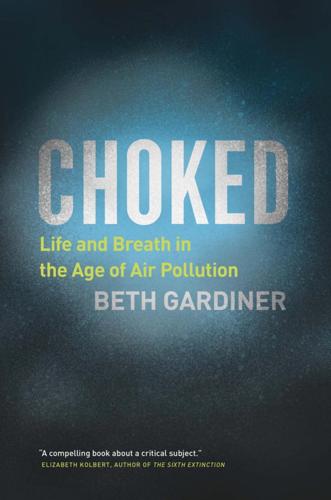
Choked: Life and Breath in the Age of Air Pollution
by
Beth Gardiner
Published 18 Apr 2019
Ultimately, the country would have to kick fossil fuels entirely, and that would mean, among other things, moving to radically cleaner cars, powered by electricity or hydrogen. But the cars of the future weren’t ready just yet. The cars of the present would have to suffice a while longer, and shrinking their carbon footprint by even a little bit would help. Diesel was an intriguing option, offering an important advantage over gasoline: better mileage. Driving the same distance on less fuel means less carbon dioxide, perhaps a 17 percent savings.18 Shortly before King joined Blair’s team, government had made a fateful decision to change the way cars were taxed to encourage buyers to choose more efficient models, a change that would effectively incentivize diesel.
…
But its policies, in McBride’s telling, fell into two categories: those that really mattered in cutting greenhouse gas emissions, and those designed mainly to look good. Fuel duty fell into the first category; it would limit driving by making it more expensive. Car tax, on the other hand, was mainly window dressing. The Treasury, McBride tells me, didn’t expect it to have a major effect on carbon footprints, but thought it would make the other policies go down easier, a useful defense against accusations that Labour was waging war on motorists. McBride says his team hadn’t exactly set out to incentivize diesel, but they realized the changes would have that effect. They knew the health risks, so added a small surcharge for diesels, to weaken the inducement to buy them.
…
Extinguishing all those smoky fires may well help the planet, but even if it doesn’t, this is a question of justice. How, he asks, could we in developed nations, using fossil fuels for our cooking—and so much more to blame for the looming planetary crisis—deny those fuels to the world’s poor, in the name of carbon footprints? It’s not life-saving fuels for impoverished households that threaten the climate, he says. “It’s you and me.”12 * * * As India starts on the immense task of bringing cleaner cooking to millions, it can look to the experience of nations further along the same path. Many are in Latin America, where reliance on biomass has fallen dramatically in recent decades, to about 15 percent of households.13 Brazil’s relationship with cooking gas started long ago, by happenstance.
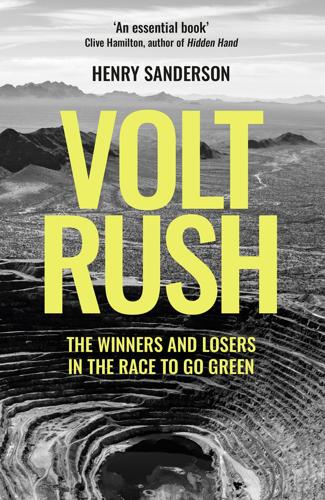
Volt Rush: The Winners and Losers in the Race to Go Green
by
Henry Sanderson
Published 12 Sep 2022
Yet while the rise of the Australia–China lithium nexus had challenged the traditional lithium industry and changed geopolitics, it had also brought larger problems for global carmakers. As Ganfeng and others hoovered up lithium rock from Australia, the environmental toll of the process soon became apparent. Digging up lithium rock in Australia and roasting it in China had a carbon footprint as much as six to seven times higher than lithium from Chile or Argentina, according to Benchmark Mineral Intelligence. That added to the carbon footprint of electric vehicles, just as sales were taking off. Digging up lithium from Australia involved conventional mining and crushing using fossil-fuel-powered vehicles. The lithium was then put on a ship run on diesel and sent to China, where the rock was processed using coal or natural gas and leached using acids.
…
I would prefer if I had to choose saving snow leopards, orangutans or the Philippine Tarsier … that has more spiritual and aesthetic meaning to me than an invertebrate on the bottom of the ocean.’ In April 2020 the company produced a peer-reviewed study in a scientific journal that claimed the carbon footprint of deep-sea mining was lower than that of land-based mining.12 But was the comparison even fair? As James Hein of the US Geological Survey pointed out, ‘it is difficult to compare the value of a terrestrial rainforest or grassland with that of a deep-sea ecosystem. What measures should be used?
…
Šefčovič understood that competing with China solely on price would not work: he believed that producing greener batteries that had a lower environmental footprint would be key to giving Europe an edge. Europe would pioneer ‘sustainable battery production’, he said, which would include ‘extraction with the highest environmental and ethical standards, production with the lowest carbon footprint possible … battery re-use and recyclability of materials’.7 According to Volkswagen the battery was responsible for over forty percent of the emissions produced from making an electric car. The carbon dioxide emissions from making a battery in China were around sixty percent higher than in Europe due to the country’s reliance on coal, according to researchers at Bloomberg New Energy Finance.
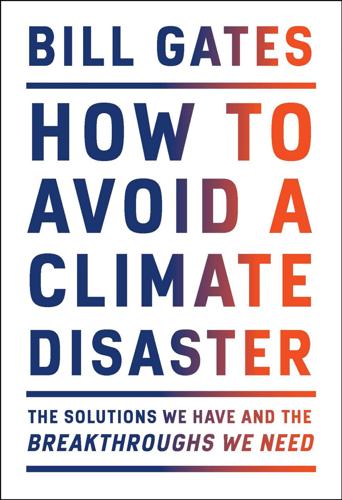
How to Avoid a Climate Disaster: The Solutions We Have and the Breakthroughs We Need
by
Bill Gates
Published 16 Feb 2021
When it comes to climate change, I know innovation isn’t the only thing we need. But we cannot keep the earth livable without it. Techno-fixes are not sufficient, but they are necessary. Finally, it’s true that my carbon footprint is absurdly high. For a long time I have felt guilty about this. I’ve been aware of how high my emissions are, but working on this book has made me even more conscious of my responsibility to reduce them. Shrinking my carbon footprint is the least that can be expected of someone in my position who’s worried about climate change and publicly calling for action. In 2020, I started buying sustainable jet fuel and will fully offset my family’s aviation emissions in 2021.
…
I’ve put more than $1 billion into approaches that I hope will help the world get to zero, including affordable and reliable clean energy and low-emissions cement, steel, meat, and more. And I’m not aware of anyone who’s investing more in direct air capture technologies. Of course, investing in companies doesn’t make my carbon footprint smaller. But if I’ve picked any winners at all, they’ll be responsible for removing much more carbon than I or my family is responsible for. Besides, the goal isn’t simply for any one person to make up for his or her emissions; it’s to avoid a climate disaster. So I’m supporting early-stage clean energy research, investing in promising clean energy companies, advocating for policies that will trigger breakthroughs throughout the world, and encouraging other people who have the resources to do the same.
…
CHAPTER 3 FIVE QUESTIONS TO ASK IN EVERY CLIMATE CONVERSATION When I started learning about climate change, I kept encountering facts that were hard to get my head around. For one thing, the numbers were so large that they were hard to picture. Who knows what 51 billion tons of gas looks like? Another problem was that the data I was seeing often appeared devoid of any context. One article said that an emissions-trading program in Europe had reduced the carbon footprint of the aviation sector there by 17 million tons per year. Seventeen million tons certainly sounds like a lot, but is it? What percentage of the total does it represent? The article didn’t say, and that kind of omission was surprisingly common. Eventually, I built a mental framework for the things I was learning.

Circus Maximus: The Economic Gamble Behind Hosting the Olympics and the World Cup
by
Andrew Zimbalist
Published 13 Jan 2015
There were advances in wastewater treatment, and technological knowledge was gained regarding more efficient energy use. However, there was also increased pollution from construction materials, as well as a massive carbon footprint from international air travel to and from the competition (more than 80 percent of the 2010 Cup's carbon footprint came from jet travel). While jet travel to games anywhere will leave a significant carbon footprint, when the host country is located in the southern part of the Southern Hemisphere and isolated from population centers longitudinally, the footprint grows measurably. In the case of Brazil in 2014, the government's PR boasted of the BRT transportation system that was created in several cities.
…
Its achievement was undermined by a combination of insufficient public resources to deliver an ambitious city building programme, the impact of government social policies that capped housing benefit support for the lower waged and unemployed—putting the purchase or rent of new housing units out of the reach of many local people—and the operations of a London property market in which the activities of international investors pushed up rent and property prices in iconic locations such as the Olympic Park and its borders.89 What about the other legacy goals? One goal was to advance the greening of London. The reduction of the carbon footprint from the games’ facilities beyond the regulatory standards was accomplished, but the set targets were not met. For instance, one pledge was to supply 20 percent of the power for Olympic Park from renewable energy sources; according to the New York Times, the actual amount during the games was closer to 9 percent.90 Another goal was to transform the United Kingdom into a leading sports state and to inspire its citizens to engage in more physical activity.
…
At the IOC meeting prior to the Sochi Olympics in February 2014, two reform ideas were discussed. The first was to allow countries as well as cities to bid to host. Such a change might lower the burden on the city but raise it on the country, and would entail higher transportation costs (and carbon footprint) and security spending. As a reform, it is hardly a game-changer. The second was to reinstate the pre–Salt Lake City policy of having IOC members visit the bidding cities.12 The idea here is that firsthand visits provide more information than videos, so the plausibility of each city's plan could be better assessed.
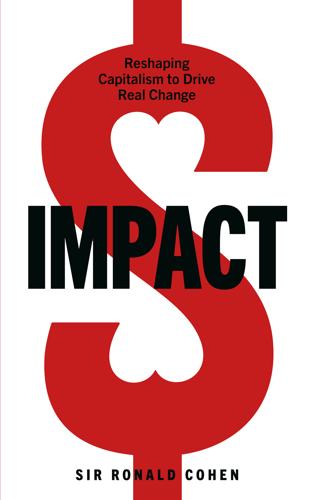
Impact: Reshaping Capitalism to Drive Real Change
by
Ronald Cohen
Published 1 Jul 2020
‘We need to address the elephant in the room, which is unsustainable consumption,’ Andreas Ahrens, the company’s head of climate, said in 2019.111 That is why, in ‘a radical departure from its traditional business model’, the company began piloting furniture leasing in Switzerland in 2019, stating that it could blaze a trail for ‘scalable subscription services’.112 After a furniture lease was over, consumers might choose something else and IKEA would be able to refurbish the returned goods ‘prolonging the lifecycle of the products’.113 Initiatives like these are moving IKEA toward its goal of decreasing its carbon footprint by 15 per cent. That goal is more ambitious than it sounds: taking growth projections into account, it requires reducing the carbon footprint of each product by 70 per cent by 2030. The company also has plans to introduce spare parts, which would allow consumers to prolong the life of discontinued products, and it has already started recycling programs for large items like mattresses in some countries.114 Another way IKEA is helping its customers lead more sustainable lives is through its product design – such as a couch that can be more easily separated into recycled parts,115 curtains that help clean the air,116 and low-energy and water-saving appliances.117 The company also now only sells LED lightbulbs (which last up to 15 times longer than incandescent bulbs and can use 85 per cent less energy).
…
Another example of ‘shareholder activism’ towards polluting companies is the letter sent by Sir Christopher Hohn, one of the best-performing hedge fund managers in the world, to the CEOs of his portfolio companies. He demanded that they reduce their greenhouse gas emissions and disclose their carbon footprint. Investors, he says, ‘can use their voting power to force change on companies who refuse to take their environmental emissions seriously. Investors have the power, and they have to use it.’8 In short, doing harm has become risky business. Irresponsible companies take another risk: the risk that consumers, employees and investors will leave them for competitors whose values are better aligned with their own.
…
By the end of 2018, PME reported that 8.8 per cent of its investments were contributing to the SDGs, and that it aims to hit 10 per cent soon.22 The Dutch civil service pension fund, ABP, has stated that it wants to double the assets allocated to ‘high-sustainability investments’, to €58 billion ($64 billion). Its priorities include reducing its carbon footprint, investing in education, promoting safe working conditions, respecting human rights and eradicating child labor.23 ABP also announced that it will divest its entire holdings in tobacco and nuclear weapons – worth an estimated €3.3 billion ($3.7 billion) – and several other large Dutch funds have also cut tobacco firms from their portfolios in recent years.24 An increasing number of pension funds in other countries, including Norway’s KLP, Sweden’s AP funds, Denmark’s Pension Danmark and the National Employment Savings Trust (NEST) in the UK, are also heading in the same direction, emphasizing the particular concerns of their pension savers.
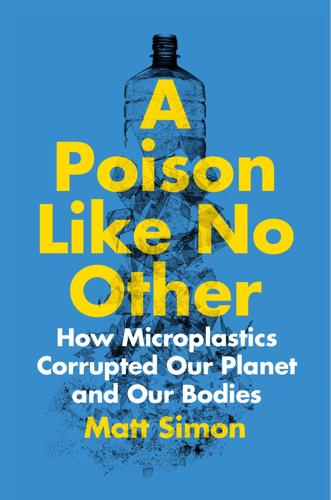
A Poison Like No Other: How Microplastics Corrupted Our Planet and Our Bodies
by
Matt Simon
Published 24 Jun 2022
“I Asked 15 Ocean Plastic Pollution Experts about the Ocean Cleanup Project, and They Have Concerns.” Southern Fried Science. http://www.southernfriedscience.com/i-asked-15-ocean -plastic-pollution-experts-about-the-ocean-cleanup-project-and-they -have-concerns/. 4. Kaufman, Matt. 2021. “The Carbon Footprint Sham.” Mashable. https://mashable.com/feature/carbon-footprint-pr-campaign-sham; Supran, Geoffrey, and Naomi Oreskes. 2021. “The Forgotten Oil Ads That Told Us Climate Change Was Nothing.” Guardian. https://www .theguardian.com/environment/2021/nov/18/the-forgotten-oil-ads-that -told-us-climate-change-was-nothing. 5. Sullivan, Laura. 2020.
…
But there are ways to at least thin that haze by slowing the emission of plastics of all sizes. The peril here, though, is falling into the same personal-responsibility trap that the fossil fuel industry suckered us into with climate change and recycling. If only you’d stop flying so much you’d reduce your carbon footprint—BP popularized the term in 2004 with a $100-milliona-year ad campaign—and help save the world.4 Plastics producers did the same with recycling, hailing it as the cure for pollution when they knew the economics of it were busted (more on that in a moment)— hence to this day barely any plastic is getting recycled.
…
“Plastic Rain in Protected Areas of the United States.” Science 368:1257–60. https://doi.org/10.1126/science .aaz5819. 2. Simon, Matt. 2020. “Plastic Rain Is the New Acid Rain.” Wired. https:// www.wired.com/story/plastic-rain-is-the-new-acid-rain/. 3. Zheng, Jiajia, and Sangwon Suh. 2019. “Strategies to Reduce the Global Carbon Footprint of Plastics.” Nature Climate Change 9:374–78. https://doi.org/10.1038/s41558-019-0459-z. Chapter 1: Welcome to Planet Plastic 1. Robbett, Mary Kate. 2018. “Imitation Ivory and the Power of Play.” Smithsonian National Museum of American History. https://invention .si.edu/imitation-ivory-and-power-play. 2.
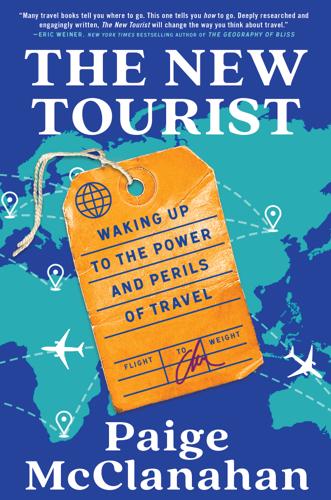
The New Tourist: Waking Up to the Power and Perils of Travel
by
Paige McClanahan
Published 17 Jun 2024
In the years leading up to the pandemic, aviation emitted roughly a billion metric tons of carbon dioxide annually, and the figures bounced back quickly as travel came roaring back after COVID.28 So what’s a concerned traveler to do? For a while, “carbon offsets,” a concept that gained traction in the late nineties and early 2000s, seemed to be a reasonable option for tourists who were looking to reduce their carbon footprint. In theory, at least, a carbon offset works like this: a traveler pays to support a tree-planting project, the restoration of a mangrove, or a similar initiative that promises to remove from the atmosphere the carbon the traveler emits during her trip. It’s a nice idea, and for a while carbon offsets gained plenty of supporters—and investment.
…
UBS analysts predicted that such sentiment could halve the expected growth in demand for aviation—though even if growth is halved, it’s still growth.31 And we shouldn’t think that aviation is the only way that tourism contributes to climate change: the food we eat while we’re traveling, the goods we buy, the places we stay, and the taxis, shuttles, and bus rides that we take all play a role, too. Dr. Victor told me that people who are concerned about the climate impact of their travels could use an online calculator to see how their flights contribute to their overall carbon footprint. But he said we can’t rely on individuals to make the kinds of decisions that will actually move the needle: we have to transform the entire system. “The larger goal here is to have stewardship of the planet in the context of human and ecological happiness,” Dr. Victor said. Of people who choose not to fly, he added: “That’s something that might make you feel good as an ascetic, but it’s not actually replicable.
…
They’re retiring older aircraft, using more efficient flight routes, and instructing their pilots to taxi their planes with only one engine running. SAF—which is made from biomass like used cooking oil—is an important part of the short-term picture, though the biofuel accounts for less than 0.1 percent of the global supply of jet fuel. Over its life cycle, SAF has a smaller carbon footprint than conventional fuel, with which it can be mixed—but smaller doesn’t mean nothing. When I interviewed Andreas Schäfer, the director of the Air Transportation Systems Laboratory at University College London, about this topic for the New York Times, he told me that the term “SAF” is inaccurate: “It should be more-sustainable aviation fuel,” he said.
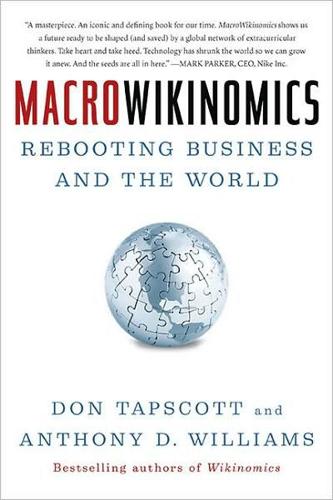
MacroWikinomics: Rebooting Business and the World
by
Don Tapscott
and
Anthony D. Williams
Published 28 Sep 2010
Take your diet: livestock are responsible for an estimated 18 percent of global carbon emissions, so when you chow down on a hamburger, you’re effectively emitting CO2 as well.9 Even something as small as an iPod Nano will add to your carbon footprint, thanks to both the energy used to produce and ship it and the energy later needed to charge it (68 lbs. of CO2 over its lifetime, according to the British design consultancy IDC).10 One’s personal carbon footprint is a rough measure of all the greenhouse gases we’re responsible for emitting. But unlike Karas, not everyone has a degree in environmental economics. And until recently, it’s been pretty near impossible for the average consumer to get a reliable estimate of their personal carbon footprint. “Back when we started, most of the information available online regarding climate change or global warming was pretty technical,” says Duane Dahl, the founder of EarthLab.com, one of the Web’s most used carbon calculators.
…
Greater openness in innovation and science, for example, is creating more economic opportunity for citizens and businesses that learn how to tap into global innovation webs. In the fight against climate change, ordinary people are forging a mass movement to bring greater consumer awareness and a sense of community to making ordinary household and business decisions that can reduce our carbon footprints. In education, leading universities are breaking down their ivory towers and building a global network for higher learning—a rich tapestry of world-class educational resources that every aspiring student on the planet can use and return to throughout his or her lifetime. Innovators across the public sector are harnessing the Web to generate more productive and equitable services, bolster public trust and legitimacy, and unlock new possibilities to co-innovate solutions to local, national, and global challenges.
…
Weaving carbon emissions into every business decision will drive innovation and deployment of clean technologies to a whole new level, and make energy efficiency much more affordable. Industries will need to invent and adopt new technologies that boost efficiency to limit their emissions. And consumers will curtail their own carbon footprints as the prices they pay for things like air travel and exotic fruits begin to reflect their true costs to the planet. It’s true that centrally managed taxes, credits, and incentives provide important levers for steering society toward low-carbon solutions. But the erroneous assumption underlying conventional wisdom is that politicians and other powerful interests can “manage” climate change with new regulations issued from a patchwork of national capitals around the world.
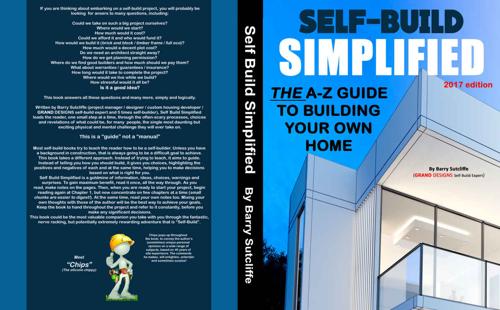
Self Build Simplified
by
Barry Sutcliffe
Published 7 Jun 2016
It can make the building too warm and it restricts design (with thought having to be given to the location, type and size of the windows to make sure they gain maximum benefit from the sun’s rays). I have nothing really against these systems except their controllability and potentially their cost. The active way to a lower carbon footprint and lower energy bills To reduce your energy consumption and carbon footprint the active way, you need do things to create your own energy. Below are the most common ways to do this. Mechanical ventilation: This is where you build a system in to the fabric of your house that recycles the heat from the air which would otherwise be vented to the outside and lost.
…
You won’t often hear self-builders complaining that they can’t get a three-seater settee in their living room and you will normally find more generously sized bedrooms and bathrooms. It is also more common to find family rooms and studies in self-build designs. Most self-build homes exceed building regulations for insulation and other eco requirements, so when you self-build, you get to control both your carbon footprint and the heating bills! You get the chance to design your own interior finishes, along with having an input in to the electrical and lighting design. You also get to choose things like internal doors, skirtings’, architraves, paint colours for walls and ceilings, sockets and switch styles, light fittings, ironmongery etc.
…
I have worked on many commercial building projects over my career that would not be classed as simple, but wherever possible, if we want to build our new homes cost effectively, quickly and efficiently, we should keep everything as simple as possible. Especially in these days of the increasing importance of eco Building and low carbon footprints, as pretty much a standard requirement for all new building works. The cover of this book states the situation quite clearly: “Self-build is simple - People make it complicated” When it comes to building a house, there are standard, low cost ways to do it. Whether we choose to build in brick and block, timber frame, straw bale or whatever other method we may choose, there are a number of building methods that all builders naturally tend to adopt and that designers tend to design to.

City: A Guidebook for the Urban Age
by
P. D. Smith
Published 19 Jun 2012
However, as David Satterthwaite of the International Institute for Environment and Development has shown, the real figure is likely to be nearer 30–40 per cent.21 Indeed, rural areas generally have higher carbon dioxide emissions per person than urban ones, due to the fact that people outside cities live in larger, detached or semi-detached houses, drive multiple cars and commute longer distances (cars are responsible for 12 per cent of greenhouse gas emissions in Europe and as much as 50 per cent in some parts of the United States). The regions with the biggest carbon footprints in the United Kingdom are not the large cities of Glasgow or London, but the mainly rural north-east of England, as well as Yorkshire and the Humber. Surprisingly, the per capita emissions of London are the lowest of any part of the United Kingdom. In 2006, each Londoner produced greenhouse gas emissions equivalent to 6.18 tonnes of CO2, just over half the national average (which was 11.19 tonnes per capita in 2004). Similarly, if you are a city dweller in the United States your carbon footprint is likely to be smaller than the average American citizen’s.
…
According to a photographer who has moved back into downtown Los Angeles, ‘there’s energy here compared with the rest of LA, which is much more laid back’.25 Other American cities are following Los Angeles’ example and now urban populations are growing again after decades of decline. At the same time poverty rates have been falling in cities.26 This drift back to the cities is happening at a time when concerns about climate change are highlighting the benefits of living in dense population centres. Cities have a smaller carbon footprint than the dispersed communities of suburbia. The need to reduce car dependency has also led to a renewed interest in public transit systems in American cities. Tourism is helping to revitalise downtowns too. Residents and visitors are being drawn back into the city centre to enjoy cafés and restaurants, as well as arts and music venues.27 The meaning of downtown is once again changing, from an economic hub to a historic city centre, a focus of cultural and civic activity, giving America’s downtowns a more European flavour.
…
The summer peak load in New York City is about 11,000 megawatts.6 But city living represents an efficient use of energy – New Yorkers consume 2,000 kilowatt hours per year, about half the national average. Nevertheless, energy usage here and elsewhere continues to grow, which is a problem at a time when every city is working to reduce its carbon footprint. New York’s first telephone exchange opened at 82 Nassau Street in 1879 and the city’s first telephone directory contained a mere 252 names. Today, there is enough telephone cabling beneath the city to reach the sun. But the world’s most wired and connected city is the South Korean capital of Seoul.

Net Zero: How We Stop Causing Climate Change
by
Dieter Helm
Published 2 Sep 2020
It is not just home carbon emissions that matter. These carbon imports are the result of energy- and carbon-intensive production abroad. All that stuff ‘Made in China’ is for you – your mobile phone, laptop, flat-screen TV, household appliances, clothes and trainers. This stuff is all part of your carbon footprint. Other stuff, like palm oil and beef, might come from countries that are clearing their rain-forests to produce it, and hence the loss of the carbon sinks, the carbon leaking from the soils and the loss of biodiversity are all for you too. Many of the products in the supermarket contain palm oil, often under different names.
…
Our kitchens and bathrooms are awash with chemicals; our clothes made from synthetic fibres; our food comes from fertiliser- and other chemically assisted agriculture; our houses are made with steel and cement; and an increasing number of gardens are covered with artificial turf. The list goes on. Even if you buy ‘renewable’ electricity, it has lots of embedded carbon in the turbines and the solar panels, and needs fossil fuels to back it up. Invest in an electric car, with an electric battery, and your carbon footprint will still remain a big one. Think of the cobalt in the battery, the materials in the car frame, bodywork and interior, and of course the tyres and brakes. An electric car takes twice as much carbon to produce than a conventional one. My point is that this highlights just how unsustainable our lifestyles have become.[2] We are becoming addicted to a way of living in which flying is regarded as essential by many, and an aspiration for most.
…
Europe has been reducing its emissions unilaterally for a couple of decades, and the Kyoto Protocol targets ended up being European targets, some of which have been met. It now plans to go even further – to be net zero by 2050 and to have demanding interim 2030 targets too.[1] The trouble with the Europeans pressing the others to fall into line is that Europe has not actually done much to reduce its carbon footprint, despite cutting emissions at home. And much of these cuts would have happened anyway. It is a story of deindustrialisation, and importing carbon emissions instead of producing them. Any other country considering unilateralism in response to what Europe has done, and especially if they look carefully at Germany and its Energiewende (the planned transition to a low-carbon, nuclear-free economy), could be forgiven for asking how exactly this gives them an incentive to follow.

Fortunes of Change: The Rise of the Liberal Rich and the Remaking of America
by
David Callahan
Published 9 Aug 2010
Travolta owns five private jets, including a Boeing 707 (weighing 70 tons) that he flew to Europe in late 2007 for a publicity trip for his movie Wild Hogs. Travolta attracted ire during the visit when he said that everyone should “do their bit” to combat global warming. Yeah, right, responded the British press, which reported that he was the sole passenger on the flight across the Atlantic in his 707 and calculated that Travolta’s carbon footprint was a hundred times greater than that of the average Briton.2 c03.indd 59 5/11/10 6:18:31 AM 60 fortunes of change Then there was the flap around the 2007 Davos meeting, where climate change was high on the agenda. Scores of private jets swarmed into Davos for the event, which included a dissection of such matters as whether a carbon tax would be better than a capand-trade system at saving the planet.
…
c03.indd 60 5/11/10 6:18:32 AM the eco rich 61 NetJets wasn’t the first jet charter service to make carbon offsets mandatory for all flights. Cerulean Jet, based in Austin, Texas, beat NetJets by a few months in taking this step when it announced that it would buy carbon offsets for all of its flights. Ken Starnes, the CEO of Cerulean Jet, commented that “offsetting our carbon footprint is good for business and good for the environment, ultimately increasing our ability to help in the global warming fight.” Times are certainly changing when private jet companies decide that they need to be on the front lines of the “global warming fight” (or when corporate leaders justify their private jets by saying they want to help Africa).
…
These are the people who can make a huge impact.”8 Any number of wealthy people are now building eco-mansions, including Google’s Larry Page and U2’s Leo Dickman. Seydel is right about the effect the rich can have, but experts question the very concept of an “eco-mansion.” Such mammoth homes, for all their green features, have a much larger carbon footprint than more modestly scaled dwellings. Still, even as the liberal moneyed class resists real downshifting to save the planet, attitudes in this group are changing fast. During the 2004 election, Teresa Heinz Kerry, the billionaire wife of Senator John Kerry, made wry humor out of her SUV ownership.

Everyday Utopia: What 2,000 Years of Wild Experiments Can Teach Us About the Good Life
by
Kristen R. Ghodsee
Published 16 May 2023
By studying the history of social dreams, we can reject the bad bits and keep the good: challenging ourselves to explore alternatives for how we live, love, own our things, choose our families, and raise children. By making change in our private lives, we can help to decrease loneliness and isolation, reduce our carbon footprints to save the planet, tackle inequality and social injustice, treat the epidemic levels of stress, depression, and anxiety permeating our societies, and help to nurture and nourish the dreams and aspirations of the next generation. We need to think big, with more expansive visions of building stronger communities.
…
47 In the absence of state commitments to public housing, these forms of commercial collective living might provide one practical solution to urban housing shortages. Although rents for one room are more in line with what one might pay for a studio in the United States, they include utilities and amenities like weekly cleaning, Wi-Fi, and the provision of basic goods like toilet paper and coffee.48 Co-living might also help reduce individual carbon footprints because of the economies of scale gained by the heating and cooling of communal kitchens, living rooms, and dining rooms, the sharing of large appliances designed to become obsolete within a decade, and the general reduction of excess consumption possible when a large group of people share a variety of ordinary household goods: pots, pans, plates, blenders, espresso machines, tools, vacuum cleaners, Wi-Fi routers, printers, furniture, etc.
…
Members earn an annual two-week vacation and can also apply for extended personal leaves. Residents of Twin Oaks share major appliances and equipment, which keeps living expenses low. Rather than having eighty individual refrigerators, washing machines, or dishwashers, the community has invested in higher-quality items with longer life spans, cutting down on their carbon footprint. Twin Oaks maintains a car cooperative that allows members to rent vehicles when needed. They also practice a form of wardrobe communism like me and my daughter. “Oakers” maintain a special room of “community clothes” that is a shared wardrobe that any member can borrow from. Residents return dirty clothes to a communal laundry and the washing, mending, hanging, and sorting of the clothes is done by those who receive labor credits for their work.
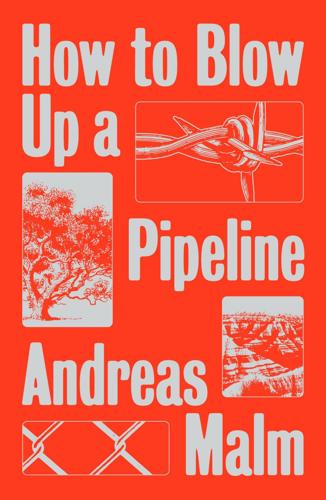
How to Blow Up a Pipeline
by
Andreas Malm
Published 4 Jan 2021
Announcing a ‘ceasefire’ … The ‘ceasefire’ was announced in Asfaltsdjungelns indianer, ‘“Nu tar vi indianer en paus” ’, Aftonbladet, aftonbladet.se, 10 December 2007. p. 85. It has been demonstrated … See e.g. Emily Huddart Kennedy, Harvey Krahn and Naomi T. Krogman, ‘Egregious Emitters: Disproportionality in Household Carbon Footprints’, Environment and Behavior 46 (2014): 535–55; Dominik Wiedenhofer, Dabo Guan, Zhu Liu et al., ‘Unequal Household Carbon Footprints in China’, Nature Climate Change 7 (2017): 75–80; Kyle W. Knight, Juliet B. Schor and Andrew K. Jorgensen, ‘Wealth Inequality and Carbon Emissions in High-Income Countries’, Social Currents 4 (2017): 403–12; Klaus Hubacek, Giovanni Baiocchi, Kuishuang Feng et al., ‘Global Carbon Inequality’, Energy, Ecology and Environment 2 (2017): 361–69.
…
To be super-rich is to own multiple mansions, SUVs and luxury cars, yachts, jets and helicopters and why not also a private airport, a private submarine, a private semisubmersible platform serving as a floating habitat with every desired amenity. After a meticulous study on the level of households, Kenner concludes that ‘all rich individuals in the US and the UK have a significant carbon footprint associated with their lifestyle’. He gives the example of Lord and Lady Bamford, who have a taste for flying guests to parties. In March 2016, they chartered two Boeing jets to take 180 friends on four days of sumptuous celebrations of their birthdays in the palaces of Rajasthan. On an aggregate level, such lifestyles register as phenomenally skewed emissions, although data constraints – the rich are not always upfront about their emanations – and differences in methodology yield variations.
…
On an aggregate level, such lifestyles register as phenomenally skewed emissions, although data constraints – the rich are not always upfront about their emanations – and differences in methodology yield variations. One Oxfam report from 2015 suggests that the richest 1 per cent of humanity has a carbon footprint 175 times larger than that of the poorest 10 per cent; distending the hierarchy, the richest Americans beat the poorest Mozambicans two thousand times over. One article published by Ilana M. Otto and her colleagues in Nature Climate Change in 2019 finds that the richest 0.54 per cent of the species emit one-third more than the poorest half.
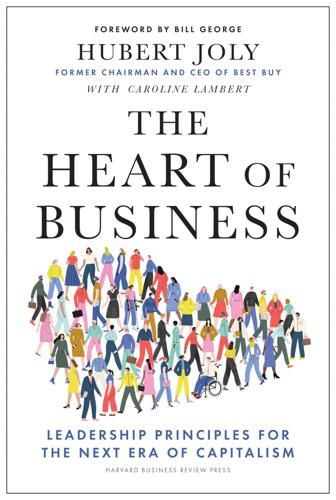
The Heart of Business: Leadership Principles for the Next Era of Capitalism
by
Hubert Joly
Published 14 Jun 2021
Although making money is of course vital and a natural outcome of good management (as we discuss in chapter 5), considering profit as the sole purpose of business is wrong for four fundamental reasons: (1) profit is not a good measure of economic performance; (2) an exclusive focus on it is dangerous; (3) this singular focus antagonizes customers and employees; and (4) it is not good for the soul. Profit Is Not a Good Measure of Economic Performance Profit does not take into account the impact of a business on the rest of society. The full cost of waste or carbon footprint on the environment does not appear on a financial statement, even though it is very real and can be very painful. Food and beverage companies using single-use plastic bottles, for example, do not bear the cost of oceans being clogged up with plastic waste. The profits of businesses relying on coal as their main source of fuel do not reflect the costs they generate on human health and the environment.
…
Before Covid-19 devastated air travel, one in five people said they were flying less out of concern over the environment.7 A “flight shame” movement was spreading beyond Sweden’s borders. These trends cannot be ignored. Employees are also pushing for social and environmental change from their employers. For example, in September 2019, Amazon employees walked out to pressure their employer to be more ambitious about reducing its carbon footprint, stop servicing the oil and gas industry, and no longer support politicians who deny climate change. Even shareholders—the very people who supposedly benefit the most from the belief that the sole purpose of companies is to make money—are looking beyond short-term profits and increasingly adopting the view that being a good citizen is ultimately good for business.
…
3 By aligning the company’s agenda with its noble purpose and by ensuring it is part of its strategy instead of a random afterthought. Take the environment: the future of business depends heavily on the future of our planet. Not surprisingly, a growing number of companies are incorporating fighting climate change and environmental degradation into how they do business. I am proud of the fact that Best Buy reduced its carbon footprint by 55 percent over the last 10 years, for example by rolling out LED lights throughout our stores and using hybrid cars for Geek Squad agents. This helps the environment and helped us save money on our energy consumption. Again, not a zero-sum game. Making a significant difference will increasingly involve cooperating with other industry players.
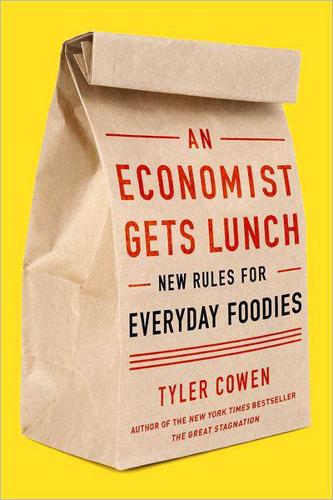
An Economist Gets Lunch: New Rules for Everyday Foodies
by
Tyler Cowen
Published 11 Apr 2012
Here is a snippet of his views on “being green”: REPORTER: Do you feel bad about your carbon footprint? BRÛLÉ: On balance, I don’t think my carbon footprint is particularly large. I do fly an enormous amount, but I don’t own a car, I walk most places in London and opt for trains over aircraft where possible (in Europe and Japan). I believe that to a lot of readers, especially those familiar with Brûlé’s public profile, this answer was less than convincing. How could this famous rich guy not have a large carbon footprint? Maybe Brûlé is right or maybe not (I should note, by the way, that once I was paid a small amount to write a piece for Monocle).
…
Polenske, and Arnold Waters, United States Department of Agriculture, March 2010; the 29 percent figure is taken from p. 17; see also p. 20. On Pirog, see James E. McWilliams, Just Food: Where Locavores Get it Wrong and How We Can Truly Eat Responsibly (New York, Back Bay Books, 2009), pp. 25–26. On the refrigerated apple example, see Mike Berners-Lee, How Bad Are Bananas?: The Carbon Footprint of Everything (London, England: Profile Books, 2010), p. 27. For information on April, see her blog and twitter feed, http://web.me.com/aprildavila/MWM/Check_My_Work.html. http://web.me.com/aprildavila/MWM/Blog/Blog.html. http://web.me.com/aprildavila/MWM/Blog/Entries/2010/2/20_Food_For_Thought.html.
…
See also pit barbecue hours of operation for restaurants, 93–96 and Laotian food, 212–13 by mail order, 259 mechanized barbecues, 100–107 and Mexican food, 86, 88, 96–100, 191 names of barbecue restaurants, 92–93 origin and styles of, 28, 89–93 overview of, 85–89 pit barbecues, 93–96, 101–7 and sauces, 89–91, 99, 100–107, 107–9, 111 and smoke, 109–11 Barcelona, Spain, 240 Bastiat, Frédéric, 15 Basu, Kaushik, 160 Batra, Neelam, 250 Battle Hymn of the Tiger Mother (Chua), 32 Bayless, Rick, 199, 248, 249 beef and Bangladeshi food, 126 and barbecue, 91, 96, 98, 102, 111 and Bolivian food, 244 and Chinese regional cuisines, 133, 135, 138 cultivating expensive taste in, 183–84 and ethnic supermarkets, 47 and home cooking, 246 and Mexican food, 190–94, 199, 246 and Singaporean food, 221 and Turkish foods, 241 and Vietnamese food, 114, 116 wartime scarcity of, 24 beer, 63 Begley, Ed, 167 behavioral economics, 78 Beijing style Chinese food, 131 Bengali food, 126 Benin, 163 Benton’s Smoky Mountain Country Hams, 259–60 Berlin, Germany, 235 biofuels, 155–56 bistillah pie, 28 Bittman, Mark, 248, 258 Black Forest of Germany, 233–34 Blue Smoke, 105–6 Bolivian food, 60, 76–77, 244 Borlaug, Norman, 145–46, 152, 155 Boswell, James, 13 Bourland, Charles T., 248 boycotts, 172–75, 181 Brazil, 111, 161, 183–84 breads, 185 breakfasts, 6, 52, 54 Bridgewater, Virginia, 137–39 brisket, 89, 91 Bronx, New York, 73–74 Brooklyn, New York, 73–74 Brûlé, Tyler, 176 Brunswick stew, 91–92, 109 Buddhist restaurants, 236 buffets, 136, 223–24 bul-gogi, 126–27 Burkina Faso, 163 cacao, 6 calamari, 72 Calcutta, India, 224 California, 21 Camilo, Juan, 160 Canada, 114, 129, 130, 135, 162 Cancún, Mexico, 207 canned foods, 25, 258 Cantonese style Chinese food, 131, 134, 220–21 capitalism, 14, 151–52 carbon footprints, 176–77 carbon taxes, 179–81 Caribbean, 89–90 cars, 90, 185–86 casinos, 61–63 cassava, 155 casseroles, 135 caterers, 244–45 cattle, 190. See also beef Central Mexico, 98, 145 cereals, 49 Ceylon, 146 chain restaurants, 34–35, 188, 206. See also fast foods Chairman Mao’s Braised Pork Belly, 131, 260 Chang, David, 259 charque, 244 cheap foods, 8–9, 11, 28 cheeses, 9, 196–99, 246 Chesman, Andrea, 171 Chicago, Illinois, 65, 122, 133 chicharrónes, 194 chicken, 24, 71–72, 194–95, 221, 246 Chihuahua cheeses, 196, 198 children, 22–23, 31–33, 36, 68, 235 Chile, 130, 208 chili peppers and barbecue, 90 and Bolivian food, 60 chili-based sauces, 245 chili crab, 220 influence on American food, 31 and Mexican food, 206–7 and Sichuan food, 132 and Singaporean foods, 220–21 China and Chinese food.
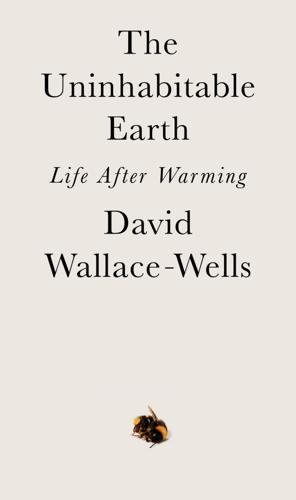
The Uninhabitable Earth: Life After Warming
by
David Wallace-Wells
Published 19 Feb 2019
One reason carbon emissions have accelerated so much in the last generation is also an explanation for why history seems to be proceeding so much faster, with so much more happening, everywhere, each year, even every day: this is what results when there are simply that many more humans around. Fifteen percent of all human experience throughout history, it’s been estimated, belongs to people alive right now, each walking the earth with carbon footprints. Those refugee figures are high-end estimates, produced years ago by research groups designed to call attention to a particular cause or crusade; the true numbers will almost surely fall short of them, and scientists tend to trust projections in the tens of millions rather than the hundreds of millions.
…
Fully half of British emissions, it was recently calculated, come from inefficiencies in construction, discarded and unused food, electronics, and clothing; two-thirds of American energy is wasted; globally, according to one paper, we are subsidizing the fossil fuel business to the tune of $5 trillion each year. None of that has to continue. Slow-walking action on climate, another paper found, will cost the world $26 trillion by just 2030. That does not have to continue. Americans waste a quarter of their food, which means that the carbon footprint of the average meal is a third larger than it has to be. That need not continue. Five years ago, hardly anyone outside the darkest corners of the internet had even heard of Bitcoin; today mining it consumes more electricity than is generated by all the world’s solar panels combined, which means that in just a few years we’ve assembled, out of distrust of one another and the nations behind “fiat currencies,” a program to wipe out the gains of several long, hard generations of green energy innovation.
…
I toss out tons of wasted food and hardly ever recycle; I leave my air-conditioning on; I bought into Bitcoin at the peak of the market. None of that is necessary, either. But it also isn’t necessary for Westerners to adopt the lifestyle of the global poor. Seventy percent of the energy produced by the planet, it’s estimated, is lost as waste heat. If the average American were confined by the carbon footprint of her European counterpart, U.S. carbon emissions would fall by more than half. If the world’s richest 10 percent were limited to that same footprint, global emissions would fall by a third. And why shouldn’t they be? Almost as a prophylactic against climate guilt, as the news from science has grown bleaker, Western liberals have comforted themselves by contorting their own consumption patterns into performances of moral or environmental purity—less beef, more Teslas, fewer transatlantic flights.
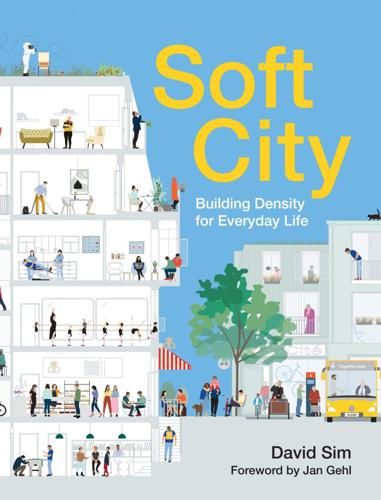
Soft City: Building Density for Everyday Life
by
David Sim
Published 19 Aug 2019
A livable, resilient, high-density area should have: a diversity of built form and of outdoor spaces, flexibility, a human scale, walkability, a sense of control and identity, a pleasant microclimate, a smaller carbon footprint, and greater biodiversity. Nine Criteria for Livable Urban Density 1. Diversity of Built Form 2. Diversity of Outdoor Spaces 3. Flexibility 4. Human Scale 5. Walkability 6. Sense of Control and Identity 7. A Pleasant Microclimate 8. Smaller Carbon Footprint 9. Greater Biodiversity 1. Diversity of Built Form Having different activities coexisting is both useful and more sustainable. Dwelling, working, learning, and recreating in close proximity allows us to live more locally.
…
Soft is something to do with responsiveness accommodating, absorbing, supple, pliable, excusing, tolerant, flexible, elastic, extendable, adaptable, changeable, anti-fragile Soft is something to do with ease simple, straight-forward, easy-going, effortless, smooth, intuitive, understandable Soft is something to do with comfort comfortable, snug, safe, protected, sheltered, peaceful, quiet, “hyggelig” Soft is something to do with sharing sociable, common, mutual, reciprocal, participatory, public Soft is something to do with plurality joined-up, hybrid, mixed-use, overlapping, multifunctional, interconnected Soft is something to do with simplicity low-tech, low-cost, low-key, modest Soft is something to do with smallness human scale, human dimension, individual control, fractal, self-determining Soft is something to do with appealing to the senses sensory, delightful, charming, seductive, intriguing Soft is something to do with calm peaceful, quiet, cool, low-key, serene, tranquil, mild Soft is something to do with trust sureness, clarity, certainty, confidence Soft is something to do with consideration gentle, compassionate, sympathetic, empathetic, caring, benign, kindly Soft is something to do with invitation welcoming, accessible, permeable, open Soft is something to do with ecology a light touch, natural, seasonal, low carbon footprint It’s about ease, comfort, and care in everyday life. Contents Foreword by Jan Gehl Preface Introduction Being Neighbors Building Blocks Living Locally in an Urbanizing World The Time of Your Life Getting About and Getting On in a Congested and Segregated World Layering Life Living with the Weather in a Time of Climate Change Soft is Hard to Break Nine Criteria for Livable Urban Density Notes Foreword by Jan Gehl In 1933, an exclusive group of European architects and city planners met in Athens to sign the radically game-changing CIAM Charter of City Planning.
…
What to look for: Consistent microclimatic conditions throughout a space Protection from strong winds and avoidance of turbulence Solar penetration and avoidance of shadows Aerodynamic roof shape Protected or enclosed outdoor spaces Useful openings Rain protection at edges 8. Smaller Carbon Footprint The built form should have a minimum negative effect on the environment. The layout, size, and shape of buildings can translate into lower energy use, less pollution as well as saving natural resources and materials (and money). There are immediate benefits from lower building heights and enclosed spaces, which create better local microclimates.
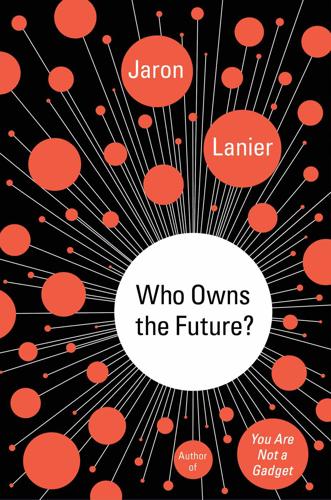
Who Owns the Future?
by
Jaron Lanier
Published 6 May 2013
Between the obsolescence of shipping and an extreme increase in recycling precision, 3D printing could create a massive explosion of convenience and fun, and at the same time vastly reduce humanity’s carbon footprint and reliance on nonrenewable resources. All this modulo the gotchas we don’t know about yet, of course. But supposing that some portions of the benefits appear, it certainly would be foolish to oppose this stream of progress. How could a liberal not like the reduced carbon footprint? How could a conservative not like the efficiency? And of course techies will be in love. And yet the transformation will throw factory workers out of work in a massive wave.
…
But it seems likely that 3D printing can close the various loops and become a fairly complete technology in this century. But notice that once a 3D printer can be deployed in a factory, it might just as well be placed close to where the product will be used. Being able to make things on the spot could remove a huge part of humanity’s carbon footprint: the transportation of goods. Instead of fleets of container ships bringing tchotchkes from China to our ports, we’ll print them out at home, or maybe at the neighborhood print shop. What will be distributed instead will be the antecedent “goops.” These are the substances squirted out by the printer’s nozzles.
…
If we were for a moment to forget the mirror maze of economics, and the circular firing squad of politics, and only think about the fundamentals, then a rational response to global climate change would be to supercharge all large-scale curative climate research, at least at the scale of the Manhattan and Apollo projects combined. There would also be massive social engineering experiments in order to reduce the carbon footprint of humanity in case the tech fixes don’t work as soon as we’d like. Doing these things seems unimaginable now, and yet the creation of giant stupid ghost suburbs in places like Las Vegas during the leveraged mortgage debacle of the last decade was practically automatic. This was a remarkably expensive activity at the time and turned out after only a few more years had passed to be catastrophically more expensive than anyone anticipated.
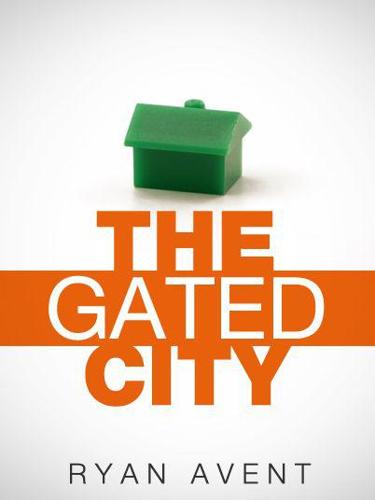
The Gated City (Kindle Single)
by
Ryan Avent
Published 30 Aug 2011
In denser cities, residences tend to be smaller and more energy efficient[17], and more compact cities reduce the need to develop green land on the urban fringe, in the process preserving trees and limiting carbon emissions. For all these reasons, the average New Yorker has a carbon footprint about half that of the average American. Residents of New York City have a carbon footprint less than one-third that of the national average. Growth rules are especially bad for the climate in places like coastal California. The temperate climate in cities like San Francisco and Los Angeles means that energy use is dramatically lower in such cities than it is elsewhere.
…
The temperate climate in cities like San Francisco and Los Angeles means that energy use is dramatically lower in such cities than it is elsewhere. By limiting development, San Franciscans are raising home prices and encouraging residents to move to places where it will be far more difficult to constrain and reduce their carbon emissions. In many of the destination cities for American migrants, carbon footprints are distressingly high. In Houston, for instance, household transportation emissions are much higher than in the Loser cities. And energy use for climate control is likewise high, thanks to oppressive Texas summers. Our government has been slow to address the growing threat of climate change.
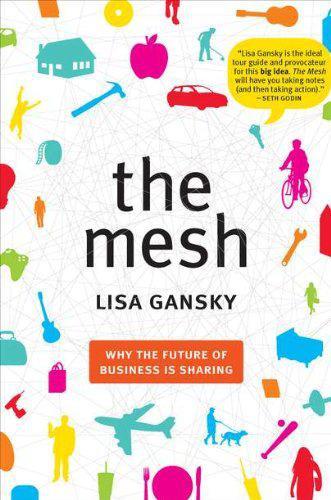
The Mesh: Why the Future of Business Is Sharing
by
Lisa Gansky
Published 14 Oct 2010
No tying the tree to the roof of the car with bungee cords. No tripping and falling on the stoop and scratching your face. No wondering when the tree has become a fire hazard, figuring out the day for the city pickup, and dragging the needle-shedding tree carcass out to the curb. Customers could even take comfort in reducing their carbon footprint just a little. Like Scott’s business, this book is about a simple idea: some things are better shared. There is much to be said for owning things. But the dominant ownership mindset has often blinkered our business brains. The fact is that our commerce, not to mention our social lives, has always depended on sharing.
…
For every dollar that you save in SmartyPig, you get half-price deals with four hundred other companies in their Mesh network. As a member of this Mesh “ecosystem” you are: (1) eating healthy food; (2) getting in a little exercise walking to the car-share garage; (3) congratulating yourself on lowering your cholesterol and your carbon footprint; and (4) collecting a bonus from your health insurance and getting money in your bank account, which you can leverage for discounts at businesses whose offers are specifically tailored to you. Maybe a deal on a family ski vacation in Aspen? Your four-door hybrid—with tire chains in the trunk and a (shared) Thule ski rack on top—is waiting. 2 The Mesh Advantage WHAT’S HERE: network power, leveraged; panning for gold, or meet my friend, the filter; spice up your mesh with partners.
…
Of course, the most durable shared bike, car, watch, or other product does have a finite life cycle, even if it is well maintained. The goal is to start with good quality, conserve the core materials, and preserve the virtues of the product as it goes through its life cycle. Earth is the ultimate share platform. Thoughtful product design conserves nature by reducing the carbon footprint and lowering waste. As citizens on the planet, as well as entrepreneurs in Mesh businesses, we should all want this. Reducing waste is also called operating efficiently. In fact, for economic reasons alone, all businesses should aspire to reduce waste. DuPont, for example, saved over $2 billion by reducing its emissions by 70 percent between 1990 and 2004.
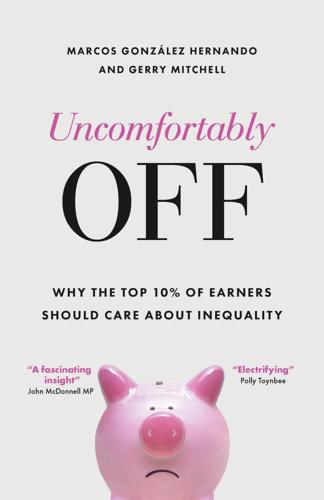
Uncomfortably Off: Why the Top 10% of Earners Should Care About Inequality
by
Marcos González Hernando
and
Gerry Mitchell
Published 23 May 2023
Moving and investing their money is of course central to what the UK does, but that’s only the start: it’s also educating their children, solving their legal disputes, easing their passage into global high society, hiding their crimes and generally letting them dodge the consequences of their actions.57 Climate change Tackling climate change will require a profound transformation that will have a massive impact on households and their consumption. Individual carbon footprints will have to be cut from 8.5 tonnes to 2.5 tonnes by 2030, which will require huge change and disruption. The gaps between environmental targets and actual footprints show that high-income countries need to reduce their emissions by 91–95% before 2050.58 However, lead author on the Intergovernmental Panel on Climate Change (IPCC) Lorraine Whitmarsh warned that ‘we are going nowhere’.59 This is unsurprising to many commentators.
…
In 2021, that market trade was estimated at a nominal $17 billion.58 We mention these phenomena because they encapsulate many of the logics and strategies that middle to high-income earners may carry out in a context of increasing concentration of wealth. Both NFTs and cryptocurrencies have come to expand the logic of markets – in this case forcing scarcity on data that would otherwise be infinitely replicable. Even though they are virtual, they rely on physical resources and are astonishingly harmful to the environment: the carbon footprint needed to produce these goods has been compared to the emissions of mid-sized countries.59 They rely on eager advocates to stimulate their demand, and are prone to create economic bubbles. Many investors have lost their life savings on the off-chance they’d see them multiplied by tenor a hundred-fold off the back of other investors’ eagerness.
…
More than three million people in the UK would like to work fewer hours even if it would result in less pay, and 10 million would like to work fewer hours overall.39 Crucially, again looking at international evidence in countries with shorter working weeks, reducing hours does not result in reduced productivity.40 Working fewer hours would also reduce high earners’ carbon footprint. In the words of Stronge and Lewis from the think tank Autonomy, ‘[w]orking less not only reduces the sheer amount of resources being used as part of the labour process, but it also reduces the amount of carbon-intensive consumption that comes with what Juliet Schor calls the “work and spend” cycle’.41 Everything we do will need to change One of the fundamental problems with the public and political debate on the climate is that inequality is rarely acknowledged as 171 Uncomfortably Off part of the issue, and therefore high earners don’t recognise how much they are part of the problem.42 Any meaningful change will thus be difficult for them, not least because improving wellbeing while consuming less is in tension with many aspects of their lifestyles.
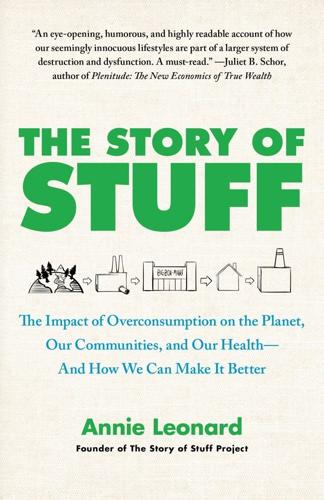
The Story of Stuff: The Impact of Overconsumption on the Planet, Our Communities, and Our Health-And How We Can Make It Better
by
Annie Leonard
Published 22 Feb 2011
A Brazilian diplomat at the 1997 Kyoto climate conference explained the climate negotiations from a developing country’s perspective: “They invite you in, only for coffee after the dinner. Then they ask you to share the check, even though you didn’t get to eat.”100 A first-ever analysis and comparison of the carbon footprints of different countries was created by researchers at the Norwegian University of Science and Technology and the Center for International Climate and Environment Research-Oslo. Not surprisingly, it shows that the higher a country’s per-capita consumption expenditures are, the bigger its carbon footprint. The national average per-capita footprints varied from 1 ton of carbon dioxide equivalents per year in African countries such as Malawi and Mozambique to roughly 30 tons per year in industrialized countries such as the United States and Luxembourg.
…
The national average per-capita footprints varied from 1 ton of carbon dioxide equivalents per year in African countries such as Malawi and Mozambique to roughly 30 tons per year in industrialized countries such as the United States and Luxembourg. The study also found that in poorer countries, food and services are a bigger contributor to the carbon footprint, while mobility—transportation—and the consumption of manufactured goods result in the greatest greenhouse gas emissions in rich countries.101 One of the key innovations of the study is that it assigns the global carbon footprint from imports to the country that imports the goods—not the country that manufactures the goods. This approach is really important because globalized production chains allow companies to outsource the manufacturing of carbon-intensive products, thus hiding the real carbon costs of imported goods.
…
To grow the cotton for just my one shirt, about 2 pounds of CO2 are generated—to make petrochemical-based fertilizers and pesticides, and for the electricity used in pumping irrigation water. The cleaning, spinning, knitting, and finishing processes add another 3 pounds. So in total my little T-shirt generates about 5 pounds of CO2. That’s before it gets transported to and from the store and then gets washed and dried over its lifetime, which at least doubles its carbon footprint.31 When I visited the website of the clothing company Patagonia recently, it allowed me to calculate the footprints of several of their items, including one of their organic cotton T-shirts. The site told me where “nearly half” of the cotton came from (Turkey); that’s a long way away. The next stop listed was Los Angeles, for knitting, cutting, and sewing in one factory and dyeing in another, using oil-based dyes, some of which are not PVC free.

Survival of the Richest: Escape Fantasies of the Tech Billionaires
by
Douglas Rushkoff
Published 7 Sep 2022
So, all we have to do is get venture capitalists to invest in renewable energy technologies instead of oil companies, and all this smart money will lead us to energy independence and a carbon neutral, zero-emissions, clean, green, industrial utopia. And the investors can even get richer in the process. Win win. The problem is, while conversion of the energy grid to solar would make a lot of money for the companies building and installing solar panels, the total carbon footprint and environmental impact may not be so much better—if at all. The sun may be a renewable energy source; solar panels are anything but. They don’t grow on trees, but require the mining of aluminum, copper, and rare earth metals, already in low supply. The manufacturing of solar panels is itself an extremely energy-intensive process that involves the superheating of quartz into silicon wafers, vast quantities of water, and large quantities of toxic byproducts and runoff.
…
But are Teslas really making the world a better place? They’re fun to drive and a great advertisement for a post-carbon future where you can go zero to sixty in less than three seconds, but as far as environmental impact goes, they’re a bit like solar panels. Although they don’t spit carbon fumes while we drive them, their lifetime carbon footprint may not be much better than their gas counterparts—at least not until we change more of the power grid from coal to less carbon-intensive processes, and commit to producing renewables without the subjugation of the global south, toxic pollution, and biodiversity loss. Even accepting that EVs and solar panels are or will one day be more energy-efficient than coal- and gas-burning technologies, the bigger question is how fast we attempt to transition.
…
Both approaches result in catastrophe. The basic laws of physics are impossible to violate. The only real answer, the really simple one that neither philanthrocapitalists nor green technologists want to hear, is that we have to reduce our energy consumption altogether. Degrowth is the only surefire way to reduce humanity’s carbon footprint. It would also give us time to transition to less energy-intensive technologies. Instead of debating whether to buy electric, gas or hybrid, just keep the car you have. Better yet, start carpooling, walking to work, working from home, or working less. Like Jimmy Carter tried to tell us during his much-ridiculed fireside chats, turn down the thermostat and wear a sweater.

What If We Get It Right?: Visions of Climate Futures
by
Ayana Elizabeth Johnson
Published 17 Sep 2024
Furthermore, 11% of Americans—37 million people—are willing to become actively engaged but have not taken any actions…yet. How’s that for potential? * * * _______ Too often, the climate movement and the media tell everyone to do the same things: Vote, protest, donate, spread the word, and lower your carbon footprint.[*6] And, yes, it’s great to do those things. But all too rarely are we asked to contribute our specific talents, our superpowers. Here’s one way to think about what you, specifically you, can do. It’s a climate action Venn diagram with three overlapping circles.[*7] What are you good at?
…
Human thought is inherently dialogic.”—David Graeber and David Wengrow, The Dawn of Everything *5 Yale and George Mason universities have been conducting rigorous polling on Americans’ climate perspectives since 2012. (See: climatecommunication.yale.edu) *6 The useful term “carbon footprint,” by the way, was popularized by fossil fuel companies, in an attempt to put the weight of the blame on us as individuals. Get outta here with that nonsense. *7 If you’re familiar with the Japanese concept of ikigai for finding your purpose, you can consider this a simplified, climate-focused version of that.
…
It’s a perverted system. Ayana: What is the nerdiest, most esoteric thing we need to do to turn your future vision into reality? Paola: Well, once upon a time I was part of a group that was studying pie-in-the-sky ideas for the environment. We were dreaming of being able to mandate the display of water and carbon footprints on all products, similar to the nutrition facts label you see all over the world. It would be important to be able to clearly express, in a legal and legislated way, what the environmental impact is of different products. Ayana: Oooh, yes. That kind of transparency enables or forces accountability, and empowers consumers in a useful way.
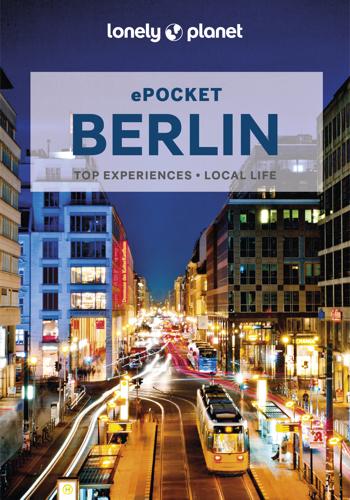
Pocket Berlin
by
Andrea Schulte-Peevers
Published 15 Mar 2023
Climate Change & Travel It’s impossible to ignore the impact we have when travelling, and the importance of making changes where we can. Lonely Planet urges all travellers to engage with their travel carbon footprint. There are many carbon calculators online that allow travellers to estimate the carbon emissions generated by their journey; try resurgence.org/resources/carbon-calculator.html. Many airlines and booking sites offer travellers the option of offsetting the impact of greenhouse gas emissions by contributing to climate-friendly initiatives around the world. We continue to offset the carbon footprint of all Lonely Planet staff travel, while recognising this is a mitigation more than a solution.
…
Sure, you can still get your fill of traditional German comfort staples, from sausage to roast pork knuckle, but it’s the influx of innovative chefs from around the globe that makes eating in the capital such a mouth-watering experience. EDPICS/ALAMY STOCK PHOTO © Modern Regional Cuisine Eating healthy while minimising your carbon footprint is sexy, which is why the organic-regional-seasonal trifecta has become an obsession in Berlin. Demand for regional ingredients is met by farms in the surrounding state of Brandenburg. Some chefs even maintain their own vegetable and herb gardens or grow lettuce on-site in ‘vertical farms’. Vegetarian & Vegan Across the city, you’ll find places slinging everything from doughnuts, burgers and bibimbap to ice cream and pizza all made without animal products.

Empire of AI: Dreams and Nightmares in Sam Altman's OpenAI
by
Karen Hao
Published 19 May 2025
“Generative AI has a very disproportionate energy and carbon footprint with very little in terms of positive stuff for the environment,” she adds. Luccioni says her past collaborators within closed-off companies no longer receive approval from their employers to cowrite papers with her about AI’s environmental impact. Instead, she has worked with external collaborators and academics like Strubell, whose research she was first inspired by. In one paper, together with Hugging Face machine learning and society lead Yacine Jernite, the two measured the carbon footprint of running open-source generative AI models as a proxy to what closed companies are building.
…
GO TO NOTE REFERENCE IN TEXT A Google spokesperson said Strubell: Correspondence with Google spokesperson, November 2024. GO TO NOTE REFERENCE IN TEXT The blog post Patterson: David Patterson, “Good News About the Carbon Footprint of Machine Learning Training,” Google Research (blog), February 15, 2022, research.google/blog/good-news-about-the-carbon-footprint-of-machine-learning-training. GO TO NOTE REFERENCE IN TEXT It was then that OpenAI: Correspondence with Google spokesperson, November 2024. GO TO NOTE REFERENCE IN TEXT Nearly all of the companies: Nitasha Tiku and Gerrit De Vynck, “Google Shared AI Knowledge with the World—Until ChatGPT Caught Up,” Washington Post, May 4, 2023, washingtonpost.com/technology/2023/05/04/google-ai-stop-sharing-research.
…
Although the industry’s full pivot to OpenAI’s scaling approach might seem slow in retrospect, in the moment itself, it didn’t feel slow at all. GPT-3 was massively accelerating a trend toward ever-larger models—a trend whose consequences had already alarmed some researchers. During my conversation with Brockman and Sutskever, I had referenced one of them: the carbon footprint of training such models. In June 2019, Emma Strubell, a PhD candidate at the University of Massachusetts Amherst, had been the first to coauthor a paper showing that the footprint for developing large language models was growing at a startling rate. Where neural networks could once be trained on powerful laptops, their new scale meant their training was beginning to require data centers drawing significant amounts of energy from carbon-based sources.
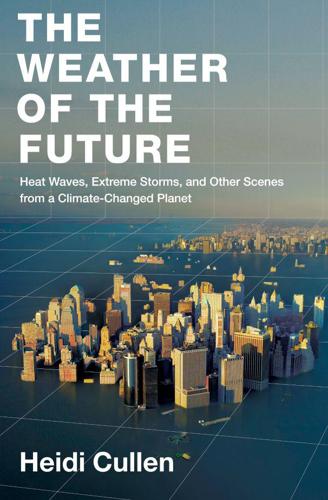
The Weather of the Future
by
Heidi Cullen
Published 2 Aug 2010
Cities cover less than 1 percent of the Earth’s surface, but they hold half the population and produce about 70 percent of the total greenhouse gas emissions. That’s why focusing on reducing emissions in cities is so important. Actually, despite their big collective carbon footprint, the cities’ reliance on mass transit and smaller, stacked living spaces makes them very energy-efficient. For example, the carbon footprint of the average New Yorker is less than one-third the size of the average American’s carbon footprint.3 Another compelling reason to tackle global warming in cities is that they are very vulnerable to a changing climate. And when you live in a city that is also an island, you’ve got even bigger worries.
…
While these forecasts, or indeed any forecasts, make certain assumptions about how trends will continue, one true variable they cannot approximate with much accuracy is our own behavior. We are the factor that could render all these predictions false, because we alone have the power to reduce our global carbon footprint. The question that we must now answer is how. In the end, these forecasts pose a question that is vital to our collective future: if we are really capable of forecasting the future and seeing the devastation of a changing climate in advance, will we act to prevent it? Can we rally around this forty-year forecast for the good of the world, or will we wait until the levees break before we decide to act?
…
In keeping with this building-by-building approach, the rooftops of New York City hold a lot of hidden potential. One study cited by PlaNYC calculates that if all the rooftops in the city were covered with solar panels, they could produce nearly 18 percent of the city’s energy needs during daytime hours. In New York, roughly 40 percent of the carbon footprint comes from electricity consumed, and another 40 percent comes from the heating fuels burned directly in buildings. So making buildings more efficient is a major part of the strategy to reduce carbon emissions. It can also reduce air pollution. Nearly one-third of locally produced particulate matter in our air comes from heating fuel.

Streetfight: Handbook for an Urban Revolution
by
Janette Sadik-Khan
Published 8 Mar 2016
The collective energy of millions of people concentrated into high-rise buildings instead of being spread out over hundreds of rural and suburban miles is itself a reason why so many people are attracted—culturally, professionally, politically, and practically—to cities like New York. But there is also an economic sustainability-in-numbers case for dense city living. New Yorkers have a carbon footprint 71 percent lower than that of the average American, a function of driving less, living vertically, and the economies of scale that come with centrally located goods and services. Fifty-nine percent of people who work in Manhattan get there by public transportation, nearly twelve times the national rate.
…
“capital of the world”: Kenneth T. Jackson, “Robert Moses and the Rise of New York: The Power Broker in Perspective,” in Robert Moses and the Modern City: The Transformation of New York (New York: W. W. Norton, 2007), 68. “not have been possible without Robert Moses”: Ibid. CHAPTER 2: DENSITY IS DESTINY a carbon footprint: City of New York, PlaNYC, 9. twelve times the national rate: United States Census Bureau, “Census Bureau Reports 1.6 Million Workers Commute into Manhattan Each Day,” March 5, 2013, accessed August 5, 2015, www.census.gov/newsroom/press-releases/2013/cb13-r17.html, http://www.census.gov/newsroom/press-releases/2014/cb14-r06.html lower per capita energy use: David Owen, “Greenest Place in the U.S.?
…
See Prospect Park West bike lane Brooklyn Bridge, 44, 119, 144, 266, 271–72 Brooklyn Heights bike-share dock, 197 car-free streets, 120–21 Brooklyn Navy Yard, 189 Brooklyn Nets, 168 Brooklyn-Queens Expressway, 153 murals, 141, 142 Brooklyn Spoke, 198 Broome Street, 11 Bruni, Frank, 177 Bryant Park, 87 Burden, Amanda, 83 Burying highways, 65–66 Buses, 233–49 Bogotá’s TransMilenio, 234–35 Curitiba, Brazil, 234, 235 Fordham Road, 239, 248, 255 Second Avenue, 240, 248, 252 34th Street, 237–38, 240–41, 244–45 Bus rapid transit (BRT), 234–35 Byrne, David, 119, 136–37, 137, 180–81 Byron, Joan, 236 C Cairo, Tahrir Square, 3 Camden High Street (London), 50 Canal Street, 11 Cantor, Dan, 238 Cars autocentric view, 64–65 orientating streets toward people vs., 18–21 Car2Go, 284–85 Carbon footprint, of New York City, xiii, 23–25 Car-free events, 122–24 Bogotá’s Ciclovía, 116–18 Summer Streets, 118–19, 122–23 Weekend Walks, 123 Car lane widths, 49–55 Carmageddon, 106 Caro, Robert, 18 Car ownership, 26–28, 45 young people and, 183–84 Carpool lanes, 47–49 Car rentals, 184 Car sharing, 26, 183–84, 284 Central Park, 117, 146, 164 Champs-Élysées, 3 Chase Bank, 124 Chattanooga, bike share, 187–88 Chelsea Market, 83 Cheonggyecheon Creek, 65–66 Cherry Street, 135 Chicago bike lanes, xvi, 152 Dearborn Avenue, 152 China Beijing, biking, 288–89 Hangzhou, bike share, 204 infrastructure investment, 266 Chinatown (New York City), 75 Grand Street bike lane, 159, 160–61, 162, 190 Ciclovía, 116–18 Citibank, 187, 201 Citi Bikes, 179–205, 261, 292 2009 New York City study, 185, 186 Alta and PBSC and, 186–89, 200 community outreach, 191–92, 196 critics of, 196–98, 200–202 Jon Stewart’s routine, 179–80, 202 launch of, 180–82, 183, 190, 191, 197 location siting and stations, 191–98, 195, 203 locking system, 186, 198, 200 Petrosino Square sketch-ins, 181, 181 safety concerns, 190–91, 214, 221–23 sponsorship of, 185, 187 Climate change, 278, 280 Clinton, Bill, xii Clinton Street, 217 Colbert, Stephen, 198, 202 Colbert Report, The (TV show), 198, 202 Colombia.

The Alternative: How to Build a Just Economy
by
Nick Romeo
Published 15 Jan 2024
But minimizing negative impacts in one domain often ignores major problems in other areas. Your organic bananas could have an enormous carbon footprint, be grown by workers who don’t earn a living wage, and come from a farm made by destroying a biodiverse rainforest. A recent study found that organically grown peas in Sweden had a 50 percent larger carbon footprint than conventional ones. Lower yields for organic produce can mean that more land must be devoted to agriculture, raising an item’s carbon footprint.1 Even the Fairtrade label, which covers both environmental and social issues, doesn’t precisely quantify impacts by category.
…
A true price, by contrast, calculates exact shortfalls in different domains to determine the cost of remediating all major harms caused by producing and transporting a good to market. Rather than presenting a simple either/or label, the prices can show quantified information about sustainability sorted by categories. Items with the same certification standard may still have radically different impacts: an organic potato grown across the globe has a much higher carbon footprint than one that came from a farm a few miles away. Similarly, two cartons of conventional blueberries may have been grown by workers treated very differently. These differences are currently invisible in most stores and for most products. A simple thought experiment can clarify the motivation behind true prices.
…
Many local currencies around the world have debuted with great fanfare, promising to keep more business local and improve sustainability, but most never become widely used.9 With its already strong civic culture and a nimble capacity to learn by trial and error, Cascais may be well positioned to defy these trends. If the system does succeed, citizens would engage in a flurry of new prosocial behaviors while rewarding businesses that pay living wages and reduce their carbon footprints. It’s tempting to imagine this virtuous cycle resolving fundamental issues of poverty, affordability, and environmental impact. Yet beyond the poor record of most local currencies, there are other reasons for skepticism. The overuse of incentives, as Sam Bowles’s research has shown, can crowd out intrinsic moral motivation.
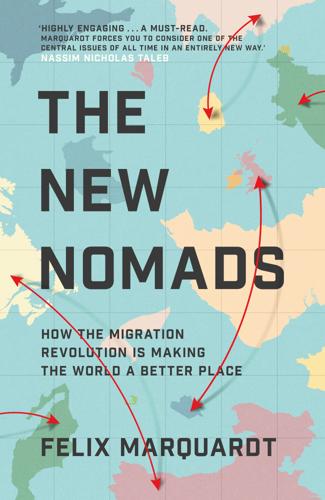
The New Nomads: How the Migration Revolution Is Making the World a Better Place
by
Felix Marquardt
Published 7 Jul 2021
Too often it is the case that digital nomads may be in Kathmandu, but are spending their time with other digital nomads. The backdrop may change, but the conversations they’re having, and the people they’re having them with, are not. Furthermore, there is an environmental cost to this kind of frenetic, unthinking travel. The flight from London to Rome carries a carbon footprint of 234kg of CO² per passenger. That one reasonably short flight per person accounts for more CO² than is emitted by a citizen of Madagascar in a year. The cosmic scale of this unfairness is compounded when we consider that, today, Madagascar, one of the world’s poorest countries, is already feeling the effects of climate breakdown, which is adversely impacting people’s lives there right now to the extent that it’s causing many of them to try to leave.
…
There is a terrifying violence in global elites’ good intentions and their delusions about ‘doing good’, epitomised by their affection for the highly toxic oxymoron of ‘green growth’,2 when the notion that a meaningful decoupling of growth and carbon emissions has ever happened is the subject of serious dispute, including by the Financial Times,3 and while the single most accurate predictor of a country’s, a company’s, a household’s or an individual’s carbon footprint remains how much money they spend. The time has come to pause and look at our tendency to compartmentalise issues and phenomena which are intricately related and to start connecting the dots between them. This in turn will allow us to understand that there is something deeply problematic in the worldview and the pro-migration stance of elites and how that pro-migration stance can become such a liability for those who migrate.
…
Meanwhile, most climate change deniers in the world today are not very mobile, and most of them hardly ever fly (though until recently of course, the most influential of them were in the Trump administration and the US Congress, and as such were extremely mobile). The staggering irony of our time is that the carbon footprint of most climate sceptics is insignificant compared to that of the average environmentally conscious privileged liberal, Brilliant Mind or not. The significant difference is that unlike the latter, the climate sceptics aren’t prone to believing that they are part of the solution simply by virtue of their opinion.
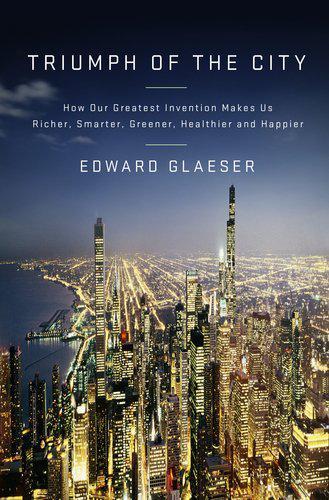
Triumph of the City: How Our Greatest Invention Makes Us Richer, Smarter, Greener, Healthier, and Happier
by
Edward L. Glaeser
Published 1 Jan 2011
One of the great ironies of Mitchell and McHarg’s environmentalism is that they tried to build a green community with plenty of trees and energy-efficient homes, but home owners drive so much that they undo most of those environmental benefits. Moreover, as I’ll discuss in the next chapter, Texas has such a hot, humid climate that cooling those homes and restaurants inevitably generates a big carbon footprint. Because The Woodlands is thirty miles from Houston’s downtown towers, you might think that its residents face horrendous commutes. MapQuest gives the driving time from The Woodlands to Houston as thirty-seven minutes, and that optimistic estimate is based on light traffic, not a normal rush hour.
…
Many of São Paulo’s suburbs are the traditional poor settlements of the developing world, whose people ride public transit to work and live in small homes that would be substandard in the United States or Europe. But there are also plenty of wealthier enclaves that look like Houston’s suburbs. You can find similar places around Bangalore, Mumbai, Cairo, Mexico City, and pretty much any growing city throughout the world. If the entire world starts looking like Houston, the planet’s carbon footprint will skyrocket. Houston residents, for all the sensible suburban logic of their lives, are some of the biggest carbon emitters in the country. All those 90-degree days and all that humidity mean that Houston is a ravenous consumer of electricity. All that driving gobbles up plenty of gas. Urbanization will continue in India and China, and that’s a good thing—there is no future in rural poverty.
…
That figure represents about one fifth of total world carbon dioxide emissions, more than any other country except China and more than the amount emitted by Europe and Latin America. Together, homes and cars account for about 40 percent of an average household’s output and also about 40 percent of America’s and 8 percent of the world’s carbon footprint. About 20 percent of America’s carbon dioxide emissions are related to residential energy use, and almost another 20 percent is associated with our motor vehicles. Using a gallon of gas produces about twenty-two pounds of carbon dioxide, if you factor in the carbon used in refining and distributing gasoline.

The Stack: On Software and Sovereignty
by
Benjamin H. Bratton
Published 19 Feb 2016
Our design interest therefore is not aligned with a notional sustainability conceived as conservative homeostasis, but with the force routes of a disequilibrium that reverberate through matter and transform the world in creative rhythms, slow and fast, including especially its plastics and fleshes. The Cloud layer, just above the Earth layer in The Stack, makes epic, rapidly expanding energy demands (the total carbon footprint of the world's data centers has already surpassed that of the airline industry and is presumed to triple by 2020), and so risk is not hard to find. Data centers are located to mitigate cost and uncertainty, away from likely natural disasters, in proximity of cheap or clean energy sources, diverse power grid interconnects, favorable land use zoning, and inexpensive intermediate bandwidth, for example.51 Because there is no planetary computational economy that is not first a planetary energy economy, the limits to growth for The Stack are not only Moore's law and Shannon's law (accelerating the speed of processors and squeezing more information into existing channels) but also, and perhaps foremost, to secure the energy necessary to power those data centers, smart cities, homes, cars, roads, smart objects, and phones, as well as the real costs (or benefits) of doing so at the expense of other infrastructure, like new roads and buildings.52 In principle, there is a potentially virtuous correlation at work for innovation across computation and energy sectors, and the gamble on that potential is another generative accident of the Earth layer.
…
Any activity that generates more energy than it uses to sustain itself could invest that surplus into a vast metabolic agora where it powers and animates distant and complex projects, its muscular and cellular force captured, stored, and routed to where it can best collaborate with other aggregated exertions to power another unknown project. Yes, you are a battery. Our most visionary plots have the Stack's carbon footprint measured not in debt but in surplus, and likely in our lifetimes or not, the geopolitics of a postscarcity Earth layer is worth articulating and defending as an ideal. In the meantime, we note that many of the most important positive potential effects of ubiquitous computationally intensive, point-to-point energy flows are on “non-Stack” industries.
…
Contrary to parametricism's claims, figural virtuosity is subordinated to building forms that are recognizable and ad hoc, popular and stupid, but amenable to the real estate metrics that outvote other politics of the envelope. A partial list of these benchmarks includes both the sensible and the sinister: on-site carbon footprint minimization, energy and water management, replaceable and recombinant building materials, perimeter gate security, civic control contingency planning, bomb-resistant membranes, crowd circulation administration, tightly curated digital signage, assigned parking spaces, account credit-issuing recycling bins, and, for some, separate public entrances for citizens, tourists, women, unclean animals, and service staff.25 38.
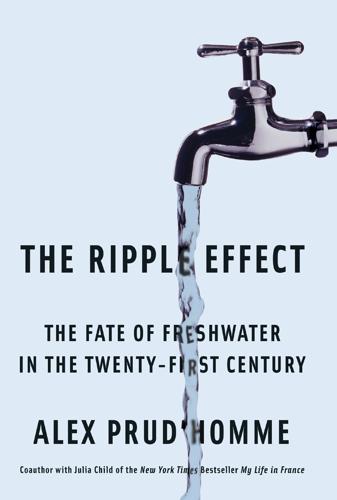
The Ripple Effect: The Fate of Fresh Water in the Twenty-First Century
by
Alex Prud'Homme
Published 6 Jun 2011
Some are small, perhaps one square kilometer, while others, such as the persistent dead zone off the coast of Oregon, measure three hundred square miles. “We believe that nitrogen is the main problem,” said Hirsch, who is frustrated by the lack of research on the subject. “A lot of people are focused on CO2 these days—we hear about carbon emissions, carbon footprints, carbon trading, carbon caps, carbon sequestration, you name it—which is all well and good, don’t get me wrong. But when it comes to discussing big environmental issues, carbon tends to ‘suck all of the oxygen out of the room.’ There’s little discussion of other issues, like nitrogen—which is arguably an even bigger problem than carbon.”
…
But David Spath, who once headed the California health department’s drinking-water division, said that while some concerns about using reclaimed water are legitimate—treatment equipment can malfunction, for instance—the risks are “no greater, and probably in some cases better, than in what people may be drinking from river systems around the country.” Most California environmentalists, such as the San Diego Coast-keeper, support the initiative. City planners have noted that in the long run, toilet-to-tap water is going to be cheaper and have a smaller carbon footprint than pumping water from hundreds of miles away. THE TEST CASE Orange County managed to avoid the yuck-factor trap by conducting extensive public outreach—“a battle for minds”—before proposing its enhanced reclaimed-water system on the grounds of Water Factory 21. The mission was led by Ron Wildermuth, a retired navy captain who had served as the public relations officer for General Norman Schwarzkopf during the first Persian Gulf War.
…
After a scathing 2007 report by Doug Radke, Canada’s former deputy minister of the environment, on Alberta’s “inadequate” enforcement of “outdated and incomplete” environmental regulations for tar sands mining, the provincial government produced an interim plan to guide water withdrawals from the Athabasca River. But Alberta prides itself on a freewheeling Wild West ethos, and the development of new tar sand mine sites hasn’t slowed a bit. • • • As US states try to cut their carbon footprints and search for alternatives to hydrocarbons, the Obama administration has considered building new nuclear power plants for the first time in decades. But nuclear power uses more water—for steam generation and cooling—than any other kind of power plant, which will have to be taken into account.

Reset
by
Ronald J. Deibert
Published 14 Aug 2020
Retrieved from https://www.theatlantic.com/technology/archive/2015/12/there-are-no-clean-clouds/420744/ Sending sixty-five emails is roughly equivalent to driving one kilometre in a car: Villazon, L. (2020, January 3). The thought experiment: What is the carbon footprint of an email? Retrieved from https://www.sciencefocus.com/planet-earth/the-thought-experiment-what-is-the-carbon-footprint-of-an-email/ A major study by a team of researchers at Canada’s McMaster University: Belkhir, L., & Elmeligi, A. (2018). Assessing ICT global emissions footprint: Trends to 2040 & recommendations. Journal of Cleaner Production, 177, 448–463. https://doi.org/10.1016/j.jclepro.2017.12.239 “From Bitcoin ‘mines’ to server ‘farms’ to data ‘warehouses’”: Ensmenger.
…
Over half of the world’s population is not yet connected to the internet, but that is changing fast. It’s difficult to measure with precision the carbon emissions and overall energy consumption related to our communications ecosystem, but it’s fair to say they’re large and growing. Prior to the global pandemic, I had seen references to estimates that placed the internet’s energy and carbon footprints on a par with, or even exceeding, the airline industry’s. One study suggests that the world’s communications ecosystem currently consumes approximately 7 percent of global electricity, a number that could increase to as much as 21 percent by 2030.344 A study by the American Coal Association (strange, I know) estimated that a smartphone streaming an hour of video on a weekly basis uses more power annually than a new refrigerator.345 Some have tried to break down the energy consumption and carbon emissions by individual digital routines, to make it easier to comprehend.
…
For example, looking at a web page or an image online emits an estimated 0.2 gram of CO2 per second. One Google search accounts for 0.2 to 7 grams of CO2 emissions — the latter roughly equivalent to boiling a cup of water with an electric kettle or driving a car fifty-five feet. That’s one search. An email has an estimated carbon footprint of about four grams of CO2 emissions, an email with a large attachment as much as fifty. Sending sixty-five emails is roughly equivalent to driving one kilometre in a car.346 Overall, the world’s email usage generates roughly as much CO2 as having an extra seven million cars on the roads. (I routinely send and receive dozens of emails a day.)

Invention: A Life
by
James Dyson
Published 6 Sep 2021
Hand dryers were under-loved products and we followed our instinct. The Dyson Airblade sold quickly to hotels, airports, schools, and hospitals, based on the speed at which it dried hands—with air moving at 430 mph, or the same speed as a late-model Supermarine Spitfire or P51-D Mustang—and on its energy-saving properties. It has a carbon footprint six times less than that of paper towels. We were slightly worried about the noise and have since made it quieter. However, an architectural practice that fitted them in their bathrooms surprised me by saying they like the noise because they can tell whether or not those exiting the washrooms have washed their hands.
…
The hangars, for example, are lovely buildings but were horribly neglected. I don’t think they saw any maintenance from the day they were built to the day we bought them. Chris Wilkinson has brought four key hangars back into action as elegant, light-filled, high-tech spaces. Renovating them, and at the same time reducing their carbon footprint, has been more expensive than creating brand-new buildings here. A great part of Hullavington’s attraction is its architectural, engineering, and design story expressed in a number of innovative and spacious buildings that, special in the 1930s, have proved invaluable to us the better part of a century later.
…
I’m hopeful that Dyson Farming will contribute toward the necessary transformation of agriculture, while protecting the countryside, and that it will drive meaningful advances in sustainability. Sustainable food production and food security are vital to the nation’s health and economy. Britain currently imports 30 percent of its food. This is unnecessary since we can grow almost everything and so reduce the carbon footprint caused by importing food with all this entails in terms of fuel and transport. The same eco warriors who are so keen on the re-wilding of farms think nothing of consuming avocados flown in by air and other imported foods. Within our greenhouses, and with our fertile soil and more than ample rainfall, we can grow the food we need.
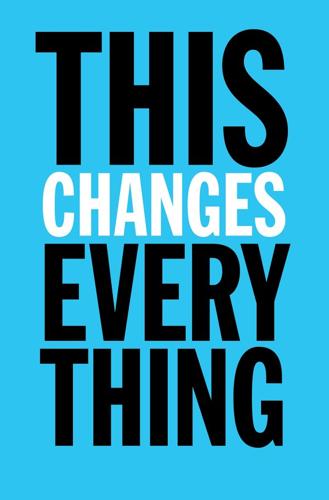
This Changes Everything: Capitalism vs. The Climate
by
Naomi Klein
Published 15 Sep 2014
This practically guaranteed that the negotiating process would be unable to reckon with the kinds of bold but “trade-restrictive” policy options that could have been coordinated internationally—from buy-local renewable energy programs to restrictions on trade in goods produced with particularly high carbon footprints.28 A few isolated voices were well aware that the modest gains being made in the negotiations over “sustainable development” were being actively unmade by the new trade and investment architecture. One of those voices belonged to Martin Khor, then director of the Third World Network, which has been a key advisor to developing country governments in both trade and climate talks.
…
Still, the study was a bombshell, and though it remains controversial, a steady stream of newer work has bolstered the case for a high rate of methane leakage in the fracking process.III48 The gas industry isn’t the only one turning to dirtier, higher-risk methods. Like Germany, the Czech Republic and Poland are increasingly relying on and expanding production of extra-dirty lignite coal.49 And the major oil companies are rushing into various tar sands deposits, most notably in Alberta, all with significantly higher carbon footprints than conventional oil. They are also moving into ever deeper and icier waters for offshore drilling, carrying the risk of not just more catastrophic spills, as we saw with BP’s Deepwater Horizon disaster, but spills that are simply impossible to clean up. Increasingly, these extreme extraction methods—blasting oil and gas out of rock, steaming oil out of tarlike dirt —are being used together, as when fracked natural gas is piped in to superheat the water that melts the bitumen in the tar sands, to cite just one example from the energy death spiral.
…
It’s a challenge, too, to those parts of the left that equated socialism with the authoritarian rule of the Soviet Union and its satellites (though there was always a rich tradition, particularly among anarchists, that considered Stalin’s project an abomination of core social justice principles). Because the fact is that those self-described socialist states devoured resources with as much enthusiasm as their capitalist counterparts, and spewed waste just as recklessly. Before the fall of the Berlin Wall, for instance, Czechs and Russians had even higher carbon footprints per capita than Canadians and Australians. Which is why one of the only times the developed world has seen a precipitous emissions drop was after the economic collapse of the former Soviet Union in the early 1990s. Mao Zedong, for his part, openly declared that “man must conquer nature,” setting loose a devastating onslaught on the natural world that transitioned seamlessly from clear-cuts under communism to mega-dams under capitalism.
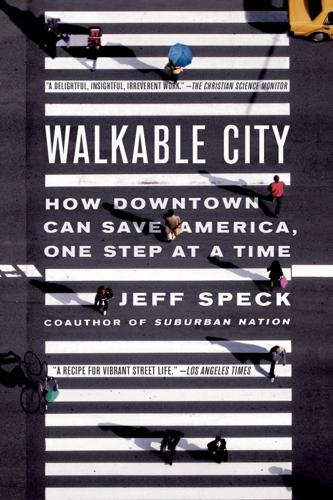
Walkable City: How Downtown Can Save America, One Step at a Time
by
Jeff Speck
Published 13 Nov 2012
But a solar-heated house in the suburbs is still a house in the suburbs, and if you have to drive to it—even in a Prius—it’s hardly green.10 We planners have taken to calling this phenomenon gizmo green: the obsession with “sustainable” products that often have a statistically insignificant impact on the carbon footprint when compared to our location. And, as already suggested, our location’s greatest impact on our carbon footprint comes from how much it makes us drive. This point was pounded home in a recent EPA study, “Location Efficiency and Building Type—Boiling It Down to BTUs,”11 that compared four factors: drivable versus walkable location; conventional construction versus green building; single-family versus multifamily housing; and conventional versus hybrid automobiles.
…
They do not show full carbon output; they only show CO2 from household automobile use—data that are much easier to collect. But this limitation turns out to be useful, for several reasons: first, because it causes us to confirm that automobile use is not only the single greatest contributor to our total carbon footprint, but also a reliable predictor of that total; and second, because limiting our greenhouse gas emissions, for many, is a much less pressing issue than our dependence on foreign oil. YOU CAN’T SPELL CARBON WITHOUT CAR At last measure, we are sending $612,500 overseas every minute in support of our current automotive lifestyle.1 Cumulatively, over recent decades, this has amounted to a “massive, irreversible shift in wealth and power from the United States to the petro-states of the Middle East and energy-rich Russia.”2 This cash transfer, which is quickly working its way up to a third of a trillion dollars each year, is building some truly stunning metro-rail systems in Dubai and Abu Dhabi—our cars are buying their trains.
…
Well, because the building is LEED● (green) certified, of course.13 Kaid Benfield, a long-serving environmental watchdog at the Natural Resources Defense Council, did some numbers, and he found that while “an average resident in the vicinity of the current EPA Region 7 headquarters emits 0.39 metric tons of carbon dioxide per month … the transportation carbon emissions associated with the new location are a whopping 1.08 metric tons per person per month … one and a half times the regional average.”14 These numbers are, of course, just a stand-in for the actual increased carbon footprints of the EPA’s staffers, most of whom will probably not move from their current homes. Presuming these employees’ houses are distributed around Kansas City in the normal manner, the vast majority will have their commutes lengthened, many by twenty miles or more each way. Those who used to take transit to work will now have to get on the highway.

The Wisdom of Frugality: Why Less Is More - More or Less
by
Emrys Westacott
Published 14 Apr 2016
As Michael Specter observes in a New Yorker article on the concept of carbon footprints: Many factors influence the carbon footprint of a product: water use, cultivation and harvesting methods, quantity and type of fertilizer, even the type of fuel used to make the package. Sea-freight emissions are less than a sixtieth of those associated with airplanes, and you don’t have to build highways to berth a ship.14 Although it seems counterintuitive, the berries you collect at a pick-your-own farm a few miles from where you live, to which you’ve made a special journey in your car, may have a bigger carbon footprint per berry than the ones in the supermarket that have been shipped in bulk from another continent.15 Community gardens within a city may be pleasing to the eye, but if the idea is to reduce energy consumption and carbon emissions, the land they occupy would be better used to site high-rise apartments—by far the most efficient sort of residence.
…
See also acquisitiveness; wealth: desire for Axel, Gabriel, 115 Baal Shem Tov, 31 Babette’s Feast, 115–16, 189 Baker, Jean, 241 Baldwin, Alec, 169 basic needs, 17, 181, 210, 233 Baudelaire, Charles, 81 Beatles, the, 161 Beckett, Samuel, 141 Beethoven, Ludwig van, 94 Bentham, Jeremy, 69 Bergoglio, Jorge (Pope Francis), 64–65 biblical references, 51, 63, 78, 147, 148, 171, 207, 251, 275 Bishop, Elizabeth, 118 Black, Bob, 80–81 Blumer, Catherine, 144 Boethius, 66–67, 88, 109, 201, 208–10 Bono, 168, 171, 177 Boo, Catherine, 149 Botton, Alain de, 80–81, 83, 85 Bowdoin College, 46 Brontë, Charlotte, 141 Bruno, Dave, 95 Buddhism, 31, 101, 105, 128, 141, 272 Buffett, Warren, 65 Byron, George Gordon, 185 Camus, Albert, 130, 157 capitalism, 83, 91–92, 99, 121, 154–55, 160, 165–66, 177, 186, 216, 226–27, 234, 242, 247–44, 281 Capra, Frank, 97 carbon footprint, 262–63 carbon tax, 264, 272 Carnegie, Andrew, 155, 181 Carpenter, Edward, 253 Cato the Elder, 57, 64 Chaucer, Geoffrey, 3, 141 Christianity, 31, 58, 78, 216 Churchill, Winston, 121 Ciulla, Joanne, 205 Civilian Conservation Corps, 236 colleges: rural location of, 46–47 conspicuous consumption, 169–70, 172–73, 187–88, 206 conspicuous recreation, 187–88 consumerism, 159, 165, 205, 228, 247, 249, 282–84 consumption tax, 272 cosmic justice, 74 Coyle, Diane, 217, 219, 220 Crawford, Matthew, 278 Crusoe, Robinson (Defoe character), 20–21 Csikszentmihalyi, Mihaly, 124 Cynic philosophers, 15, 60, 141, 272 Dacyczyn, Amy, 2 Dante, 143 Darwin, Charles, 90, 252 David Copperfield, 63 Davies, W.
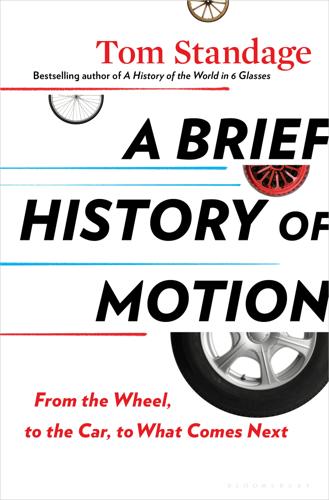
A Brief History of Motion: From the Wheel, to the Car, to What Comes Next
by
Tom Standage
Published 16 Aug 2021
The most dangerous areas for pedestrians, according to the Centers for Disease Control and Prevention (CDC), are no longer downtown streets but “newer, sprawling, southern and western communities where transportation systems are more focused on the automobile.” In short, suburbs. Perhaps the most serious charge leveled against suburbs is that their households have much larger carbon footprints than those in urban cores, and that suburbs are therefore environmentally unsustainable. A 2014 study from the University of California, Berkeley, found that a household’s carbon footprint was chiefly determined by income, vehicle ownership, and home size, “all of which are considerably higher in suburbs.” Suburban homes, being larger on average, require more energy for heating and cooling, and their inhabitants are more dependent on cars and less likely to walk, cycle, or use public transport.
…
Suburban homes, being larger on average, require more energy for heating and cooling, and their inhabitants are more dependent on cars and less likely to walk, cycle, or use public transport. As a result, the study found, households in far-flung suburbs have as much as twice the average carbon footprint, while those in large, population-dense cities have about half the average. In some counties of California, two thirds of carbon emissions are from vehicles. Starting around 2006, young Americans seemed to be turning against the suburban lifestyle and flocking instead to city centers. Meanwhile, immigrants and the urban poor were moving out to the suburbs—a phenomenon called the Great Inversion by the urbanist Alan Ehrenhalt.
…
See autonomous vehicles (AVs) Serpollet steam engines, here, here shared space street design, here shopping malls proliferation of, here, here as re-creation of town square, here, here replacement by online shopping, here silent policemen, here Sloan, Alfred P., here, here, here smartphones and Chinese influence, here and distracted driving, here and ease of using public transportation, here and mobility as a service (MaaS), here, here and modern alternatives to car ownership, here and new online culture, here replacement of cars as status symbols, here and ride-sharing/hailing, here, here, here and shopping and socializing without cars, here, here stagecoaches cost of travel by, here, here introduction of, here replacement by railroads, here speed increases of early 19th century, here Standard Oil Trust, here, here, here, here steam engine, development of, here steam-powered vehicles advantages and disadvantages of, here early examples of, here, here, here in Paris–Bordeaux race (1895), here, here in Paris–Rouen race (1894), here, here, here, here reasons for lack of success, here sales in late 19th and early 20th centuries, here streetcars electric, introduction of, here replacement by buses, here, here suburban commuters cross-suburb commuters, here increasing lengths of commute, here in pre-car days, here subsidized public transportation for, here, here suburbs American-style, global imitation of, here and “back to the city” movement, here and cars, reliance on, here, here and discriminatory loan practices, here expansion with improved transportation, here high carbon footprint of, here as less prevalent in Europe, here Levittown, here models for design of, here, here, here move of stores and businesses to, here ongoing growth of, here and pedestrian-involved accidents, here percentage of Americans living in, here popularity of, here positive and negative views of, here postwar housing boom in, here redesign efforts, here white migration to, here zoning laws in, here supermarkets, as product of car culture, here tax law and ethanol fuels, here, here and shopping mall boom, here, here Taylor, John, here, here teenagers car culture and, here emergence as distinctive group, here Tesla Motors founding and growth, here and materials needed for electric cars, here and self-driving cars, here, here, here Thrun, Sebastian, here, here, here touring cars, here traffic congestion autonomous vehicles and, here, here, here highways as remedy for, here, here, here horse-drawn vehicles and, here inadequacy of public transport and, here ride-hailing/sharing and, here, here, here and rising commute times, here turn from horses to cars and, here, here, here, here use of fees to reduce, here, here traffic laws and rules cities with alternative anti-car rules, here early definition in Europe, here, here early definition in U.S., here, here, here, here effect on traffic fatalities, here international standards, development of, here speed limits, early opposition to, here, here See also traffic lights; traffic signs traffic lights addition of yellow light to, here development of, here railroad signals as model for, here removal of, in shared space planning, here traffic signs early lack of consistency in, here first use of, here Milwaukee mushrooms, here removal of, in shared space planning, here silent policemen, here stop sign shape, standardization of, here transport-aggregator apps, here transportation, future of.

Road to Nowhere: What Silicon Valley Gets Wrong About the Future of Transportation
by
Paris Marx
Published 4 Jul 2022
After assessing the lifespan, manufacturing information, and charging frequency of dockless e-scooters, along with how riders were using them, researchers at North Carolina State University estimated their lifecycle emissions were 65 percent higher than the transport modes they were replacing.13 Another detailed lifecycle assessment by Anne de Bortoli at University Paris-East was published in April 2021 and found that dockless micromobility services had a significantly higher carbon footprint per mile traveled than a privately owned bicycle. She also calculated that e-scooters specifically could have higher carbon footprints per passenger mile than some forms of public transit.14 On top of the unsustainable nature of the services, they were also not particularly equitable. The companies running the services lost money, as Silicon Valley’s rapid growth model requires, but the prices were often significantly higher than docked bikeshare services, and even transit tickets.
…
For example, electric buses and bikes use far fewer minerals per person than personal vehicles, and the size of batteries in buses can be further reduced if there are overhead wires from which they can charge en route, instead of just while parked at the depot. Continuing to rely on automobiles does not solve how the existing transportation system fuels the climate crisis and the destruction of local environments all around the world. While converting internal combustion vehicles to electric vehicles would reduce the total carbon footprint of the transport system, it would not be sufficient to address transportation’s contribution to climate change, nor would it do enough to lessen the other serious social and health problems that result from automobiles and the communities they have created. When we look more broadly at the tech industry’s transport solutions, we find that their refusal to contend with the challenges that arise from the dominance of automobiles is a common problem. 4 Uber’s Assault on Cities and Labor In 1914, a new challenger emerged on US streets.
…
See self-driving cars Autonomous Vehicles and Urban Aviation, 156–7 aviation services, 220 Baffinland mine, 80 Banks, David A., 197, 198 Barbrook, Richard, 44 Barlow, John Perry, 52–3, 56 Bartholomew, Harland, 26 batteries, in electric vehicles, 72–5, 78–80 Bel Geddes, Norman, 2 Benanav, Aaron, 223 Bezos, Jeff, 105–6 bicycle face, 161 bicycles about, 12–3 in Amsterdam, 205–6 bicyclist deaths, 31–2 Bird, 162–6 during Covid-19, 231 1890s boom for, 160–1 Jump, 166–8 men’s vs. women’s perceptions of, 160–1 resurgences of, 162 Rover, 160 Biden, Joe, 78, 79–80, 127 Bird, 162–6, 169 bitmapped screens, 54–5 Black people, mortgages and, 29 Bliss, Henry H., 15, 16 Block Sidewalk, 230 Blomkamp, Neill, 190 Bloomberg, Michael, 230 BMW, 78 Board of Supervisors (San Francisco), 178–9 Boeing, 152 Bookchin, Murray, 208–9 Boring Company, 144–51, 157, 158–9, 189, 225 Boston, MA, ride-hailing services in, 99–100 Brand, Stewart, 42–3, 52, 54, 56 Brin, Sergey, 5, 114–7, 121–3 Brown, Jerry, 114–5 bus system in Canada, 219 formation of, 21 in New York City, 215 Buttigieg, Pete, 78 California Assembly Bill 5, 111 Los Angeles (See Los Angeles, CA) not in my backyard (NIMBY), 164 Proposition 22, 111–2 worker employment rights in, 185 California Commission on Industrial Innovation, 45 Californian Ideology, 44, 112 Cameron, Andy, 44 Camp, Garrett, 93 Canada bike lanes in, 171 intercity bus system in, 219 mineral supplies from, 79–80 ride-hailing services in, 99–100 Sidewalk Labs and, 228–9 carbon footprint, of micromobility services, 169–70 Carnegie Mellon University, 55, 119, 120 Carter, Jimmy, 204 Cavoukian, Ann, 229 Chicago, IL, ride-hailing services in, 99 China high-speed rail system in, 218 subway system in, 215 Cincinnati, OH, speed limiter referendum in, 19–20 Civil Rights Movement, 41 Clay, Lucius D., 23–6 Clinton, Bill, 50, 51 cloud computing, 180–1 cobalt, 72–3, 78, 80 Code Conference, 116 commercialization, of Internet activity, 51–2 community spaces, erosion of, 221–2 computerized planning systems, for transportation, 130 computer science, federal funding for, 47–8 containerization, 49 controlled access highways.
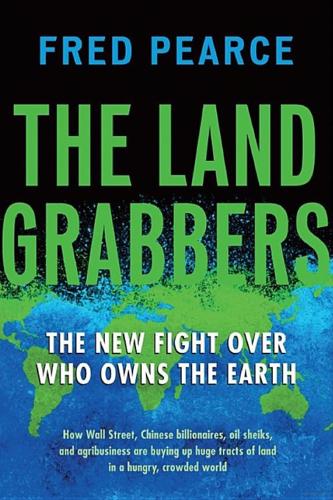
The Land Grabbers: The New Fight Over Who Owns the Earth
by
Fred Pearce
Published 28 May 2012
It is often grown on land formerly occupied by rain forest and carbon-rich peat bogs. Clearing the forests and draining the peat bogs will create a huge carbon footprint. Taking that into account, the overall carbon footprint of biodiesel from palm oil is often much greater than that of fossil oil. More often, biofuels are grown on former pastures, in which case we need to know how much carbon the grass would have absorbed. Or they might be grown on fields that once grew food. Assuming the food now has to be grown somewhere else, we then need to know where it is grown, and what the carbon footprint of the food crop is. Maybe someone somewhere chopped down a forest to keep people fed.
…
Then came the discovery, just offshore, of vast reserves of natural gas. Today, Qatar is the world’s largest exporter of natural gas (8.8 trillion cubic feet a year, for anyone who is counting). It is superrich even by Gulf standards. The 800,000 Qataris have both the highest average income and the largest per-capita carbon footprint on the planet. Its capital, Doha, is planning on being the next Dubai. Qatar is an absolute monarchy. It has been dominated for more than a century by the Al Thani family, a Bedouin clan originally from Arabia. The current all-powerful emir, Sheikh Hamad bin Khalifa Al Thani, took power from his father in a palace coup in 1995.
…
But if the fuel comes from a crop, then growing the plant will absorb the same amount of carbon dioxide from the air as is eventually released by the burning. Carbon in; carbon out. A cycle is created, in which growing new plants neutralizes the emissions. The logic is impeccable, but it leaves out two things. First, there is the carbon “footprint” of growing, transporting, and processing the crop. And second, the question of what else might have happened on that land and what its carbon consequences would be. The first can be calculated. The math makes growing corn for ethanol look dumb. The large amount of energy needed to manufacture fertilizer to grow the corn, and then to process that corn into ethanol, often means it would be more climate friendly to stick with regular fossil oil.

City 2.0: The Habitat of the Future and How to Get There
by
Ted Books
Published 20 Feb 2013
They’ve been probing LA’s airspace for more than a year, with the help of big-name sponsors like the National Institute of Standards and Technology, the Keck Institute for Space Studies, and the California Air Resources Board. If all goes well, by 2015 the Megacities crew and colleagues working on smaller cities such as Indianapolis and Boston will have pinned down a slippery piece of climate science: an empirical measurement of a city’s carbon footprint. If that doesn’t sound like something Einstein would scarf down energy bars and hoof up a mountain to check out, give it time. It promises to be a groundbreaking development in the worldwide fight against global warming. City-sized science Historically, researchers have tried to understand anthropogenic global warming by looking at it from the big picture — first across the planet, then by regions and countries.
…
“There are millions of miles of little pipes that go from distribution stations to people’s houses,” he says. A lot of them leak, and “the leaks can be very substantial.” Emissions of questionable origin are called fugitive emissions, and they account for a decent-sized hunk of any city’s overall greenhouse-gas output. LA officials estimate that the city’s yearly carbon footprint weighs 39 million tons, with this breakdown: 43 percent vehicle emissions, 21 percent commercial buildings, 19 percent municipal energy use, 16 percent “industrial fugitive or other,” and 1 percent wastewater. Where LA’s carbon emissions come from That 16 percent is a little fuzzy because, again, emitters are judging their output using models.

The Toaster Project: Or a Heroic Attempt to Build a Simple Electric Appliance From Scratch
by
Thomas Thwaites
Published 27 Sep 2011
of toasters and other products at the expense of the environment and human sanity (the cheap toasters I’ve taken apart have been hand soldered). However, there is also clearly a ridiculousness in undertaking to make a toaster myself, an activity that will produce a single toaster with a far larger carbon footprint than any toaster bought from the shops. It’s kind of disturbing to be faced with the reality of the ambiguous “position” of the project though... I guess I want to argue against both positions stemming exclusively from the demand side (consumers demand toasters therefore copper therefore open cast mines in remote wilderness), and the supply side (e.g. to argue that mineral extraction is wrong... then to go and make some toast).
…
My attempt at making a toaster myself, from scratch, has been wildly, absurdly, outrageously “inefficient.” My toaster cost 250 times more than the one from Argos, and that’s just the money I spent on it directly (mostly travelling to mines). If I’d included all the food I ate, and the shoes I wore out, and so on, then its final price would be more. Much more. And its carbon footprint must be huge, at least a size 14 (European size 48). And thus the miracle of modern capitalism is brought starkly into focus. As Jonathan Ive, senior vice president of industrial design at Apple Inc., said to me (well, me and the rest of the audience), “A complex product being made is like one of those films of a glass smashing that they play backwards—all the bits come together in the right place at exactly the right time to be assembled into this thing—it’s amazing.”

The Great Derangement: Climate Change and the Unthinkable
by
Amitav Ghosh
Published 16 Jan 2018
In this story, too, numbers are critical, for it was the rapid and expanding industrialization of Asia’s most populous nations, beginning in the 1980s, that brought the climate crisis to a head. Numbers are critical again to the difference in Asia’s role in global warming and that of countries that industrialized earlier. The West’s largest contribution to the accumulation of greenhouse gases came about through the continuous expansion of the carbon footprint of what was about 30 per cent of the world’s population at the beginning of the twentieth century. Asia’s contribution, on the other hand, came about through a sudden but very small expansion in the footprint of a much larger number of people, perhaps as much as half of a greatly expanded global population, late in the twentieth century.
…
After all, signs of a changing climate date back to the 1930s, and the concentration of carbon dioxide in the atmosphere had already passed 300 parts per million when Charles Keeling began to take measurements at the Mauna Loa Observatory in Hawaii. This was in the late 1950s, long before the economies of mainland Asia began their rapid acceleration. Even back then, the carbon footprint of the West was growing rapidly enough to ensure that the accumulation of greenhouse gases in the atmosphere would continue to increase. But that rise would not have been so steep if mainland Asia had not launched upon a period of sustained economic expansion in the late 1980s. It is this acceleration that has dramatically shortened the time available to adapt to, or even recognize, the crisis for what it is.
…
After the 2003 heat wave in Europe, for instance, it was found that many of the dead were elderly people living in isolation. In short: the rich have much to lose; the poor do not. This is true not just of international relations but also of the internal structure of the developing world, where the urban middle classes have a carbon footprint that is not much lower than that of the average European. However, it is not the middle classes and the political elites of the global south that will bear the brunt of the suffering but rather the poor and the disempowered. This too is a brake on effective progress in climate negotiations in that it reduces the incentive to compromise: the belief that they are not gambling with their own lives is, no doubt, just as important a factor for the political elites of the developing world as it is for their counterparts in the West.
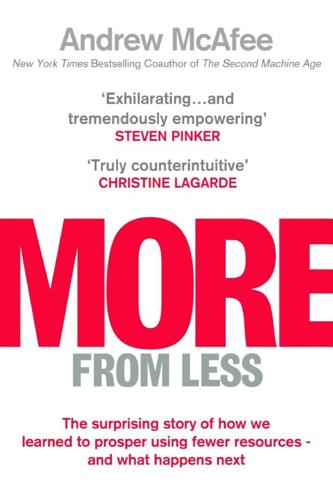
More From Less: The Surprising Story of How We Learned to Prosper Using Fewer Resources – and What Happens Next
by
Andrew McAfee
Published 30 Sep 2019
Opportunity Is Not,” Axios, March 21, 2018, https://www.axios.com/talent-is-distributed-equally-opportunity-is-not-1521472713-905349d9-7383-470d-8bad-653a832b4d52.html. Salesforce is buying enough carbon credits: Akshat Rathi, “If Your Carbon Footprint Makes You Feel Guilty, There’s an Easy Way Out,” Quartz, May 3, 2017, https://qz.com/974463/buying-carbon-credits-is-the-easiest-way-to-offset-your-carbon-footprint/. Salesforce has also announced its intentions: “Salesforce Invests in Its Largest Renewable Energy Agreement to Date, the Global Climate Action Summit, and a More Sustainable Future,” Salesforce, August 30, 2018, https://www.salesforce.com/company/news-press/press-releases/2018/08/180830/.
…
In the absence of widespread and effective carbon taxes or other government-imposed methods for dealing with greenhouse gas pollution, we have to rely more on public awareness and public pressure to constrain capitalism appropriately. Signs are encouraging that this is happening. For example, smelters that make aluminum using zero-carbon energy sources now appear to be able to charge a premium since, as Reuters puts it, even “industrial customers [are] under pressure to reduce their carbon footprints.” What else should companies be doing differently to improve the state of the world and the human condition? What changes would be helpful? Companies that are dumping pollution into the air, land, and water or killing endangered animals should stop. I don’t want to spend any more time on such obvious recommendations.
…
Excellent personal guides to helping fight climate change have been written by Chris Goodall, whose work to uncover the dematerialization of the UK economy we saw in chapter 5, and by Mark Lynas, whose defense of glyphosate was highlighted in chapter 9. Goodall’s How to Live a Low-Carbon Life and Lynas’s Carbon Counter both stress that housing and transportation combine to account for nearly half of the typical person’s carbon footprint. So turning down heating and air-conditioning, using insulation and LED light bulbs to make homes more energy efficient, driving fewer miles, and taking fewer flights are all effective steps. So is adopting a vegan diet, though few seem willing to abandon altogether foods made from animals: in 2018, only 3 percent of Americans identified as vegan.
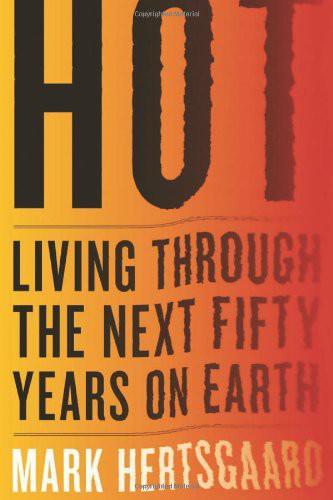
Hot: Living Through the Next Fifty Years on Earth
by
Mark Hertsgaard
Published 15 Jan 2011
"I attended a conference recently and found myself talking with an executive of DuPont, the chemical company," said Chris West, the director of the UK Climate Impacts Programme, a British government agency that educates local governments, businesses, and individuals on how to manage the impacts of climate change. "[This executive] told me about all the green initiatives that DuPont had launched—shrinking its carbon footprint, reducing its toxic emissions, just treating the environment better in general. 'Jolly good,' I said. 'But is DuPont also prepared for how the environment might treat you?' He didn't know what I was talking about. I asked how many facilities his company had around the world. 'About three hundred,' he said.
…
Bloomberg urged facing these problems "not in the future, not when it's too late, but right now." Toward that end, his speech outlined a long-term sustainability plan for the city, a plan he called PlaNYC. Bloomberg's remarks focused overwhelmingly on mitigation—he pledged to cut the city's carbon footprint by 30 percent by 2030—but PlaNYC included adaptation as well. Having become a billionaire before his election as mayor in 2002, Bloomberg clearly grasped the economic appeal of energy efficiency, and he made it the centerpiece of his mitigation strategy. Most of the projected cuts in greenhouse gas emissions would come from increases in energy efficiency, including retrofitting buildings and mandating the purchase of more efficient lights and appliances—what the mayor called "Spend an extra dollar today, save two tomorrow."
…
One reason is the state government, which in 2008 voted down Bloomberg's proposal for congestion pricing after the New York City Council had approved it. That defeat in turn undermined Bloomberg's proposed expansion of mass transit, which was to be financed in part by congestion fees. The state government had also declined the city's request for a sixfold increase in energy efficiency funding. "Changing the carbon footprint of a city as big as New York is like changing the direction of a supertanker," Aggarwala told me, and individual New Yorkers weren't making the job any easier. " Plasma TVs take three times more power than conventional TVs, and more and more people are buying them," Aggarwala added. "And air conditioners!

More Everything Forever: AI Overlords, Space Empires, and Silicon Valley's Crusade to Control the Fate of Humanity
by
Adam Becker
Published 14 Jun 2025
Seeing this, Gebru, her colead Margaret Mitchell, and two linguists at the University of Washington authored a paper about the problems with such LLMs. Titled “On the Dangers of Stochastic Parrots: Can Language Models Be Too Big?” the paper laid out four major areas of concern. First, actually training these models can be very computationally intensive, leading to a huge carbon footprint. Training a model the size of GPT-3 has a carbon footprint roughly equivalent to flying an airplane across the United States and back three times, and other phases in the development of these models increase that footprint further before they are finished and released. Second, the inscrutability of the models themselves, along with poor documentation of the data used to train them, can lead to serious problems in the output of the models without any mechanism for understanding the source of those problems, or for accountability.
…
The credence that tech billionaires give to these specific science-fictional futures validates their pursuit of more—to portray the growth of their businesses as a moral imperative, to reduce the complex problems of the world to simple questions of technology, to justify nearly any action they might want to take—all in the name of saving humanity from a threat that doesn’t exist, aiming at a utopia that will never come. The carbon footprint of Amazon’s shipping network or SpaceX’s rocket fleet can’t possibly matter as much as hastening the glorious immortal future of humanity in space. And if that future never comes, that just means the excuse of its pursuit will never wear out. If the apocalypse actually arrived, the doomsday cult leader would lose their followers.
…
And when Sam set up a charitable giving fund, he offered MacAskill a leadership position in it. Sam’s money was coming from cryptocurrency, a notoriously volatile and environmentally destructive set of financial instruments. He assured MacAskill that he’d purchased carbon offsets and was pushing to decrease the carbon footprint of the crypto industry overall.56 So MacAskill accepted Sam’s offer, and helped to dole out his fortune. But as it turned out, MacAskill was right: sometimes, the ends don’t justify the means. * * * While Sam was working at the Centre for Effective Altruism, he started thinking about ways to earn very large amounts of money so he could make a bigger impact on the world (or so he claimed later).57 He found one in the form of Bitcoin arbitrage—taking advantage of local differences in the exchange rates between Bitcoin and normal “fiat” currencies, like the US dollar and the Japanese yen.
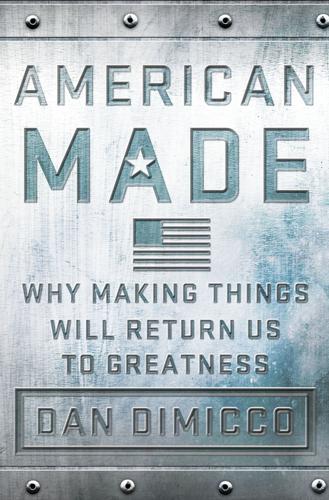
American Made: Why Making Things Will Return Us to Greatness
by
Dan Dimicco
Published 3 Mar 2015
The United States is on track to replace Saudi Arabia as the largest oil producer on the planet.36 But what a lot of people don’t know is that even as we’re tapping into this resource, shale and gas, we’re actually reducing our carbon footprint. Not perfectly. The guys who want it done perfectly can go away. We’re not going to be perfect, and we’re not going to get carbon out of our economy any time soon, if ever. But we’re going to reduce our carbon footprint by switching from coal to natural gas, and by incorporating it into transit. For example, Nucor opted for a natural gas–fed DRI plant in Louisiana, which will produce iron units with 60 percent less CO2 generation per iron unit than a traditional coal-based blast furnace and coke-making facility.37 That’s pretty damn good.
…
We worked closely with Governor Bobby Jindal and Steve Moret, Jindal’s secretary of economic development. State officials helped with site selection, permitting, financing, and infrastructure. But it still took three years to get permits for proven technology that is cleaner than just about all of the alternatives: technology, in fact, with a carbon footprint about one-third that of a traditional coke oven and blast furnace. We can use furnaces now that not only recapture and recycle heat but also filter out soot and other byproducts. We designed the plant to sit in the middle of 4,000 acres so that local residents won’t even know it’s there. This isn’t your great-granddad’s steel mill.
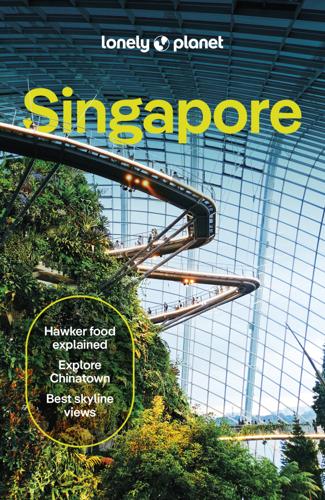
Lonely Planet Singapore
by
Lonely Planet
Published 14 May 2024
Responsible Travel Climate Change & Travel It’s impossible to ignore the impact we have when travelling, and the importance of making changes where we can. Lonely Planet urges all travellers to engage with their travel carbon footprint. There are many carbon calculators online that allow travellers to estimate the carbon emissions generated by their journey; try resurgence.org/resources/carbon-calculator.html. Many airlines and booking sites off er travellers the option of off setting the impact of greenhouse gas emissions by contributing to climate-friendly initiatives around the world. We continue to off set the carbon footprint of all Lonely Planet staff travel, while recognising this is a mitigation more than a solution.
…
Its farm-to-table concept will teach you all about urban farming technologies, and you’ll harvest organic produce before learning to create delightful dishes. Grab a Green Grab Ride-sharing app Grab allows riders to prioritise cleaner-energy vehicles for their booking and reduce their carbon footprint by donating 10 cents for each ride to the Green Programme, which funds forest-protection and solar-energy initiatives. Eat for a Good Cause Breakthrough Cafe – which serves up some pretty yum dim sum – offers former drug offenders employment, which allows them to hone their skills and make a fresh start.

Smart Cities: Big Data, Civic Hackers, and the Quest for a New Utopia
by
Anthony M. Townsend
Published 29 Sep 2013
According to Ian Marlow, a consultant who served as the lead technical and business advisor for Songdo’s intelligent infrastructure, building-in smart added only 2.9 percent to the project’s construction budget.29 Scale that share planet-wide, and global spending on smart infrastructure is on the order of $100 billion over the next decade alone.30 That sum spans a big territory, according to one market forecast, including “installing municipal wireless networks, implementing e-government initiatives by providing access to city departments and initiatives through websites, integrating public transportation with intelligent transportation systems, or developing ways to cut their carbon footprints and reduce the amount of recyclables consigned to the trash heap.”31 Cisco and IBM both have long histories as suppliers to governments, designing systems to bring paper-based bureaucracies into the digital age. Until recently, this was an incremental process that proceeded at the snail’s pace of government.
…
A social meta-layer on the smart power grid could have enormous impact on our consumption choices. Deregulation now allows many consumers to choose which producer to buy their electricity from, even as that power is still delivered across a single grid controlled by the local utility. Power providers compete on price and carbon footprint. But we are moving into a world where the data about electricity will become as valuable as the power itself. Already, start-ups like Arlington, Virginia–based Opower are showing how smart meters will enable utilities to bundle information and services with basic electricity to add value. These tools can help consumers save money, and are very convenient.
…
How odd that such a conservative, even reactionary stance would galvanize an entire generation.” Worse, the advocacy turn she inspired for a generation of young planners had been co-opted by the NIMBYism of urban elites who “weaponized Jane Jacobs to oppose anything they perceived as threatening the status quo—including projects that would reduce our carbon footprint, create more affordable housing and shelter the homeless.”34 The car wars show us the awful longevity of the choices we make about technology’s role in the city. In the end, despite the social turmoil, the destruction of cities and countryside, the discrediting of city planning, the car remains at the center of the city—not just in America.

A Line in the Tar Sands: Struggles for Environmental Justice
by
Tony Weis
and
Joshua Kahn Russell
Published 14 Oct 2014
In a series dubbed “The War for the Oil Sands in Washington,” Tyee reporter Geoff Dembicki examined how “Doer has devoted much of his professional energy to promoting the oil sands industry, flying to industry roundtables, meeting with US policymakers, and speaking to national magazines.”27 On the legislative front, the Conservative government’s first target was a law established at the end of 2007: Section 526 of the Energy Security and Independence Act, which is often referred to as the Waxman bill, having been introduced by Democratic congressman Henry Waxman. The Waxman bill effectively forbids government agencies—including the US military, by far the largest government purchaser—from buying oil with a larger than average carbon footprint. In response, Canadian embassy officials began strategic communications with the American Petroleum Institute and its offshoot, the Center for North American Energy Security, as well as with companies such as Exxon Mobil, BP, Chevron, Marathon, Devon, and Encana.28 The goal was to ensure that the Waxman bill would not apply to the tar sands, as Waxman had intended.
…
And few outside of the Canadian embassy were any wiser.”32 Canadian lobbying efforts in the US have extended beyond the federal government and taken aim at state policies designed to reduce carbon emissions from fuel. To the chagrin of Ottawa, in 2007 California governor Arnold Schwarzenegger signed the world’s first LCFS into law. The bill mandated California’s Air Resources Board to assign carbon footprints to different fuels in a bid to deter oil suppliers from using high-carbon fuel sources. According to Geoff Dembicki, Canadian officials attempted to intervene at least five times to affect how California defined its LCFS.33 In April 2009, Canada’s minister of natural resources, Lisa Raitt, wrote to Governor Schwarzenegger expressing a fear that “your LCFS regulation … could serve as a model for other states and perhaps the US federal government,” and urging “that the LCFS regulation should assign all mainstream crude oil fuel pathways the same CI [carbon intensity] rather than distinguish among different sources of crude oil.”34 The pressure did not stop there.
…
Such an “eco-imaginary” is a rupture with the chase after “green jobs” in a thoroughly commodified society. It could inform specific interventions at the scale of workplaces and building workers’ collective capacities, such as: the incorporation of carbon-reduction strategies within collective agreements through clauses on reductions of the carbon footprint, energy committees, and adjustment plans for jobs affected by climate change; workers’ plans forged to extend best practices for carbon reduction in labour processes and between workplaces; building democratic planning capacities for plant conversion to sustain capital equipment, workers’ skills, and community infrastructure as ecologically responsible production norms are internalized; and participatory planning structures built at the level of local wards for carbon reduction and ecological clean-up in neighbourhoods.
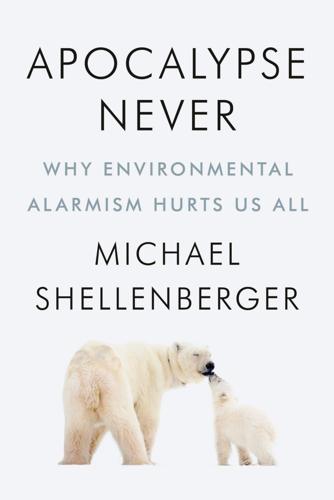
Apocalypse Never: Why Environmental Alarmism Hurts Us All
by
Michael Shellenberger
Published 28 Jun 2020
Durk Nijdam, Geertruida Rood, and Henk Westhoek, “The price of protein: Review of land use and carbon footprints from life cycle assessments of animal food products and their substitutes,” Food Policy 37 (2012): 760–770, https://doi.org/10.1016/j.foodpol.2012.08.002. 31. David Gustafson et al., “Climate adaptation imperatives: Global sustainability trends and eco-efficiency metrics in four major crops—canola, cotton, maize, and soybeans,” International Journal of Agricultural Sustainability 12 (2014): 146–163, https://doi.org/10.1080/14735903.2013.846017. 32. Durk Nijdam, Geertruida Rood, and Henk Westhoek, “The price of protein: Review of land use and carbon footprints from life cycle assessments of animal food products and their substitutes,” Food Policy 37 (2012): 760–770, https://doi.org/10.1016/j.foodpol.2012.08.002.
…
Earlier that year, the chairman had traveled with President Bill Clinton’s commerce secretary on a trade mission to Russia.67 Gore personally accepted fossil fuel money in 2013. He and a co-owner sold Current TV to Al Jazeera, which is state-funded by Qatar, the oil-exporting nation whose citizens have the largest per capita carbon footprint in the world. One year earlier, Gore had said the goal of “reducing our dependence on expensive dirty oil” was “to save the future of civilization.”68 As part of the agreement, Gore reportedly received $100 million.69 Environmental activists weren’t particularly bothered by it. “I don’t think the community is too upset,” a politically active environmentalist told The Washington Post about Gore’s deal with Qatar.
…
Total primary energy supply (TPES) per capita of DRC and Indonesia refer to IEA data from 2017, while US data are for 2018. 61. “Household Air Pollution and Health,” World Health Organization, May 8, 2018, https://www.who.int/news-room/fact-sheets/detail/household-air-pollution-and-health. 62. Eric Johnson, “Charcoal versus LPG grilling: A Carbon-Footprint Comparison,” Environmental Impact Assessment Review 29 (November 2009): 370–78, https://doi.org/10.1016/j.eiar.2009.02.004. 63. The Potential Air Quality Impacts from Biomass Combustion, Air Quality Expert Group, 2017, https://uk-air.defra.gov.uk/assets/documents/reports/cat11/1708081027_170807_AQEG_Biomass_report.pdf, 37, 38. 64.
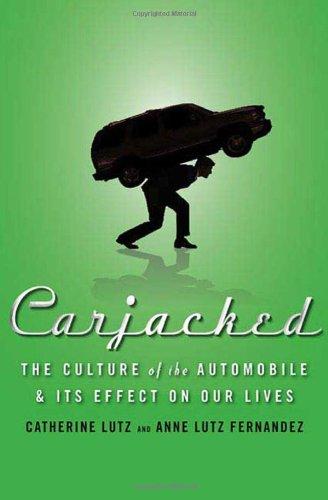
Carjacked: The Culture of the Automobile and Its Effect on Our Lives
by
Catherine Lutz
and
Anne Lutz Fernandez
Published 5 Jan 2010
Many used cars come with warranties as good as those on new cars, and state lemon laws protect you from dealers (and sometimes from private sellers, too).8 Numerous makes and models have proven themselves to be highly reliable used car purchases; check Consumer Reports for a list of these. Buying used not only saves you money but is environmentally friendly. Well-meaning people sometimes reason that they should buy a new, more energy-efficient car in order to have a lighter carbon footprint. However, about a fifth of a car’s lifetime carbon emissions are produced in the manufacturing process.9 Even if the new car you are 214 Carjacked considering is much more fuel-efficient, it is usually greener to keep your old car, which would continue to be driven by someone else in any case.
…
Even people who are not comfortable being at the forefront of automotive technology can buy a car today with emissions quite below average and with outstanding gas mileage. Honda, Toyota, and MINI are producing most of the high-mpg small cars out there. Check out www.fueleconomy.gov to see a list of cars with the best mile-per-gallon performance for the kind of driving you tend to do and to see how your current car rates in terms of its carbon footprint and contribution to air pollution. Use Greenercars.org to comparisonshop for an environmentally friendlier car that meets your other needs. Invest in safety, both for yourself and for your neighbors on the road. Over the past few decades, car manufacturers have been continually adding new safety features to their cars, but not all come standard.
…
Do the math on the commute you will be required to make each day: a 15-mile commute from work to one poten- CONCLUSION 223 tial house purchase versus an 18-mile commute to another may not seem like much—just three miles, for goodness’ sake—but it would add up to 1,440 additional miles each year, or more than $1,000 a year. Depending on traffic, that could mean an additional 58 hours of time away from home, 58 additional hours of highway crash risk, and a bigger carbon footprint. Ask your potential employer about public transportation to their site. If public transit is not an option, test drive the route you would have to take during the morning and evening rush hours. Factor the cost in terms of time, health, and finances into your decision. A job paying a lower salary that is easier to get to may well leave you with more spending money.

Reimagining Capitalism in a World on Fire
by
Rebecca Henderson
Published 27 Apr 2020
Ramanathan, “Effects of Fossil Fuel and Total Anthropogenic Emission Removal on Public Health and Climate,” PNAS 116, no. 15 (April 9, 2019): 7192–7197. 31. Peabody Energy, 2018 Annual Report, www.peabodyenergy.com/Peabody/media/MediaLibrary/Investor%20Info/Annual%20Reports/2018-Peabody-Annual-Report-02.pdf?ext=.pdf. 32. “The Carbon Footprint of a Cheeseburger,” SixDegrees, Sept. 26, 2017, www.sixdegreesnews.org/archives/10261/the-carbon-footprint-of-a-cheeseburger; “GLEAM 2.0—Assessment of Greenhouse Gas Emissions and Mitigation Potential,” Results / Global Livestock Environmental Assessment Model (GLEAM) / Food and Agriculture Organization of the United Nations, FAO, www.fao.org/gleam/results/en/. 33.
…
You’ll need to be connected to the fire within if you’re not to burn out. Do something now. Decide to fly or drive less, or make the effort to buy only from companies that treat their employees well. Insulate your house and, if you can, put solar panels on the roof or buy your power from a green energy provider. Calculate your carbon footprint, estimate the amount of damage you’re doing, and if you can afford it, commit to offsetting that damage. Taking a first step will lead to more. Doing something that’s even a little bit outside your comfort zone will change the way you think about yourself. Making even a small sacrifice will help you persuade yourself that you can make some difference and that your voice counts.
…
For more on how to make a difference in your own life, and to connect with other readers of this book, please check out ReimaginingCapitalism.org. 20. Leor Hackel and Gregg Sparkman, “Actually, Your Personal Choices Do Make a Difference in Climate Change,” Slate Magazine, Oct. 26, 2018, https://slate.com/technology/2018/10/carbon-footprint-climate-change-personal-action-collective-action.html. 21. Steve Westlake, “A Counter-Narrative to Carbon Supremacy: Do Leaders Who Give Up Flying Because of Climate Change Influence the Attitudes and Behaviour of Others?” SSRN 3283157 (2017). 22. Gregg Sparkman and Gregory M. Walton, “Dynamic Norms Promote Sustainable Behavior, Even If It Is Counternormative,” Psychological Science 28, no. 11 (2017): 1663–1674. 23.

Green Gold
by
Sarah Allaback
Published 14 Mar 2025
In China, a love for avocado smoothies notwithstanding, only a “small niche group” of consumers are even aware of the fruit, according to the USDA.23 Mission Produce, the world’s largest avocado supplier, is one of the few companies making a serious effort to break into China, landing a deal to distribute Mr. Avocado brand avocados through Shenzhen Pagoda Industrial Group, which operates 5,600 small produce markets in 140 Chinese cities. Imbert encouraged the delegates to listen to consumers, who are worried about the avocado’s image, its use of water, and its carbon footprint. He predicted that the local-food movement will continue to grow and that shoppers who love avocados will favor ecologically and socially responsible suppliers.24 Not all agricultural economists see trouble on the avocado horizon. David Magaña of Rabobank predicts the industry will continue to build demand and attend to consumers’ concerns about sustainability.25 Climate impact was a focus at the congress, where Sarah McLaren, an environmental scientist who led the New Zealand Life Cycle Management Centre, warned that the global agricultural-food sector uses more than 30 percent of energy generated globally and contributes about 22 percent of greenhouse gases.
…
David Magaña of Rabobank predicts the industry will continue to build demand and attend to consumers’ concerns about sustainability.25 Climate impact was a focus at the congress, where Sarah McLaren, an environmental scientist who led the New Zealand Life Cycle Management Centre, warned that the global agricultural-food sector uses more than 30 percent of energy generated globally and contributes about 22 percent of greenhouse gases. “Continuing with business as usual is not an option,” she said. A recent analysis of the New Zealand avocado industry, however, offered some hopeful notes, including the fact that the avocado is highly nutritious and grows on trees, two qualities that positively impact its carbon footprint. Shreyasi Majumdar, a doctoral student at Massey University, worked with McLaren on a “cradle-to-orchard gate” life cycle analysis that surveyed more than 100 farmers in the country’s three avocado-growing regions. The study, which assigned a “climate change score” to each region, found that lime- and nitrogen-based fertilizers, along with gasoline-powered farm vehicles, contributed to the highest emissions and that orchard irrigation, unsurprisingly, used the most water.
…
ArcelorMittal, the world’s largest steel company, operates an iron ore mine in the region and a steel plant nearly three times the size of New York City’s Central Park.36 In response to consumer concerns about the avocado’s environmental impact, the Hass Avocado Board in 2023 debuted the Avocado Sustainability Center, a website with links to more than ninety peer-reviewed academic studies on the avocado’s water needs, its carbon footprint, and the economic and social impact of avocado growing in various nations.37 Creating the site took some negotiation among HAB’s constituents, including California-based growers and avocado packers as well as representatives from nations that export avocados to the United States: Mexico, Chile, Peru, and Colombia.
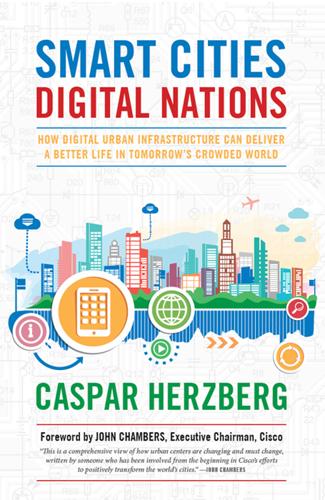
Smart Cities, Digital Nations
by
Caspar Herzberg
Published 13 Apr 2017
President Lee was correct that an investment this large was “a difficult decision” against the backdrop of global recession, but there was another angle to the partnership that was advantageous to all parties and, in fact, to the rest of the world. Songdo was to be a prototype for sustainable urban life, an example of how a city could reduce its carbon footprint and resource usage in a world with ever-increasing population and climate-related problems. Korea’s willingness to “go green” was noted by Chambers as a deciding factor behind Cisco’s commitment. Moreover, other companies were expected to endorse the vision. Incheon’s mayor also went on record with a projection of three hundred companies that would choose IFEZ as a headquarters for their Northeast Asian operations.
…
The capable development team and master plan architects at Kohn Pedersen Fox were attempting to build a livable city, friendly to pedestrians and bikers, free of excessive traffic congestion and exhaust, with ample green spaces and waterways. Serious planners do not use the word “utopia.” In a twenty-first century context, however, the ideal city experience would seamlessly mix and support business and high living standards, while providing ample green spaces and cutting the carbon footprint down to a manageable size. Some of the most excitable commentators could not resist outlandish projections of an ideal life for citizens and businesses in Songdo. That, of course, created both great expectations and skepticism. The city builders could hardly complain, since Songdo’s great promise was highlighted in a great deal of promotional material.
…
Songdo was meant to run on information; in the process, it would create a new layer of information exchange and enhancement, which in time would become known as the Internet of Things. Political conversation had advanced to the point where a smart city would de facto be green, and Songdo was to be a leader in shrinking the urban carbon footprint. At Gale’s insistence, development within the IBD was designed with Leadership in Energy and Environmental Design (LEED) certification in mind. A product of the U.S. Green Building Council, LEED ratings had become a seal of approval for new development around the globe. LEED certification applied to nine different categories of building of residential, commercial, and public spaces.

Working
by
Robert A. Caro
Published 8 Apr 2019
Parts of “ ‘Turn Every Page,’ ” “LBJA,” “ ‘Why Can’t You Do a Biography of Napoleon?,’ ” “Tricks of the Trade,” and “Interviewing Lady Bird Johnson” were excerpted in the January 28, 2019, issue of The New Yorker. Grateful acknowledgment is made to the following for permission to reprint previously published material: Harper’s Magazine: “Carbon Footprint,” an interview with Robert A. Caro and John R. MacArthur. Copyright © 2014 by Harper’s Magazine. All rights reserved. Reprinted from the December 2014 issue by permission of Harper’s Magazine. The New York Times: “Sanctum Sanctorum for Writers” by Robert Caro, originally appeared in The New York Times on May 19, 1995.
…
Classification: LCC PN4874.C2528 (ebook) | LCC PN4874.C2528 A3 2019 (print) | DDC 818/.5409 [B]—dc23 LC record available at https://lccn.loc.gov/2018055999 Ebook ISBN 9780525656357 Frontispiece photograph: Arnold Newman Collection / Getty Images Cover photograph © Joyce Ravid Cover design by Carol Devine Carson v5.4_r1 ep For Ina Beloved Contents Cover Also by Robert A. Caro Frontispiece Title Page Copyright Dedication Introduction “TURN EVERY PAGE” ROBERT MOSES The City-Shaper Carbon Footprint Sanctum Sanctorum for Writers LYNDON JOHNSON [While I was…] LBJA “Why Can’t You Do a Biography of Napoleon?” INTERVIEWING “I lied under oath”: Luis Salas “Hell, no, he’s not dead”: Vernon Whiteside “It’s all there in black and white”: Ella So Relle “I wanted to be a citizen”: Margaret and David Frost “My eyes were just out on stems”: Lady Bird Johnson Tricks of the Trade A SENSE OF PLACE TWO SONGS THE PARIS REVIEW INTERVIEW The Art of Biography Introduction Here’s a book very unlike the others I’ve written—very much shorter, for one thing, as some readers may notice—but its intention is to share some experiences I’ve had while doing the others, and some thoughts I’ve had about what I’ve been trying to do with those books.
…
In one place, he said: “Charges of arrogance, contempt for the so-called democratic process, lack of faith in plain people, brutal uprooting and scattering of those in the way are as old as recorded history: In such periods, the left wingers, fanatical environmentalists and seasonal Walden Ponders have a field day.” He never ceased denouncing me, in speeches and countless letters. He died on July 29, 1981, at the age of ninety-two. Although I wanted very much to attend his funeral, I felt that his family and friends would not want me to be there, so I didn’t go. The New Yorker, January 5, 1998 Carbon Footprint Conversation between Robert A. Caro and John R. MacArthur, marking the fortieth anniversary of The Power Broker CARO: By the time I started the book, Robert Moses had been in power for almost half a century. Moses’ people said to me: “He’ll never talk to you. His family will never talk to you.
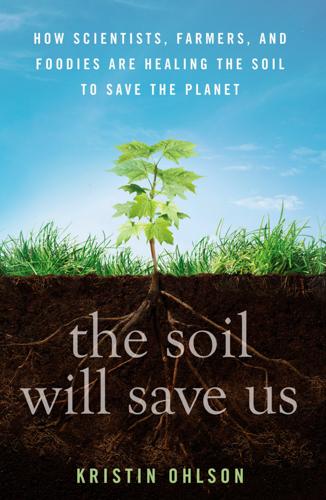
The Soil Will Save Us
by
Kristin Ohlson
Published 14 Oct 2014
Instead, they hoped that the CFI would expand the list of remunerated carbon-storage activities to include building soil carbon with better land management, which farmers around the world had already been calling carbon farming—at least since 2006, when Vermont’s Abe Collins cofounded a company called Carbon Farmers of America. Carbon Farmers of America offered to sell credits called carbon sinks—a ton of atmospheric carbon dioxide converted to about 545 pounds of carbon in the soil, newly relocated from the air to the soil by farmers—to anyone wanting to invest in soil renewal and perhaps offset their own carbon footprint. Collins’s group also envisioned a marketing plan to certify their products, ensuring customers that in addition to being nutritious, their food was helping with the climate crisis. It ultimately wasn’t a workable plan, but it was an inspirational one. But when there’s a possibility of real dollars changing hands—“real” as in the $1.7 billion from its carbon tax revenue that the Australian government planned to spend on its Carbon Farming Initiative—figuring out payments for soil carbon sequestration has been slow and controversial.
…
Adam Chambers is a scientist with the USDA’s Natural Resources Conservation Service (NRCS) and a farmer himself, with a small property back in Kentucky—in fact, he learned about the NRCS when he wanted advice for transitioning his land from the single species of grass planted by a previous owner to mixed perennial grasses that would enhance carbon sequestration on his land and offset his family’s carbon footprint, as well as provide a better habitat for bees and other pollinators. “I did it mostly thinking about the carbon, because I work on climate change science and policy, and I wanted to walk the walk.” he told me when I met him in the NRCS’s Portland office, sitting near a wall of windows so dazzling with a view of the mountains that it was hard for me to focus.
…
Meaning that if only 11 percent of the world’s cropland—land that is typically not in use—improved its community of soil microorganisms as much as Johnson and his colleagues did in their test plots, the amount of carbon sequestered in the soil would offset all our current emissions of carbon dioxide. It’s a rather staggering assertion. “Aren’t you afraid to say this?” I asked Johnson. “Aren’t you afraid saying that will let the oil and gas companies off the hook? As well as the people burning down forests and all the rest of us with a big fat carbon footprint? Aren’t you afraid?” I thought I could feel a wary shrug over the phone. “I don’t see anything on the horizon that touches the effectiveness of this approach, plus it has so many other benefits,” he said. “We’re not going to reduce our carbon dioxide emissions anytime soon, because we depend too much on oil and gas, and the rest of the world wants our lifestyle.
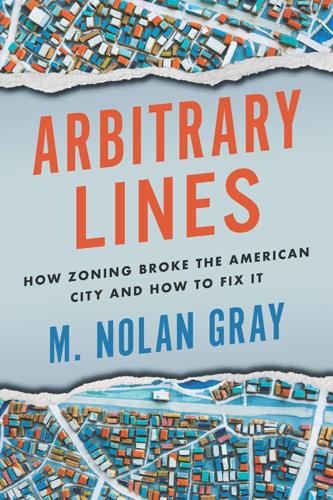
Arbitrary Lines: How Zoning Broke the American City and How to Fix It
by
M. Nolan Gray
Published 20 Jun 2022
Warley, 83–84 Build More Housing Near Transit Act, 110 building constraints, 14–15 built as-of-right construction, 43, 60–61, 63 California, 53, 103–104, 118–119 Cambridge, 62–63 Cambridge Planning Board, 63 carbon emissions, 101, 104 carbon footprint, 100 Chapter 40B program, 171 Charlotte, 42, 75 Chicago, 17, 18, 71, 85 Chinese, 13, 24–25, 80 cities adopt liberal accessory dwelling unit (ADU) ordinances, 112 Americans being priced out of largest labor markets, 74–75 carbon footprint of, 100 as conduits of information, 68 as densities rise, options increase for methods of transportation, 100 environmental advantages of, 94 gravitate toward greater density, 99 and how labor markets drive urban form, 71 incomes grow along with populations in, 71 innovation in, 72–73 as labor markets, 154 made unaffordable by zoning, 68 make us more productive, 69–70 movement to cities at historic low, 74 positive and negative externalities of, 69 reduce impact of sprawl, 94 suppressing density in, 99–103 City Beautiful movement, 15, 134 civil rights movement, 80, 86 Civil War, 82 Clean Air Act, 189 climate change, 109 Clip from the zoning map of Lexington, Kentucky, 138 Coastal Zone Management Act, 189 colonial cities, 42 commercial use, 38, 39, 112, 137 Community Development Block Grant, 121 community land trust (CLT) model, 172–173 Connerly, Charles, 84 constitutionality of zoning, 22, 28–29, 86–87, 179 covenants, 20, 24 Covid-19 pandemic, 3, 46, 52 Dallas, 104 deed restrictions, 147–151 density peaking, 71 density regulations, restrictions and controls defining the envelope, 40 as densities rise, options increase for methods of transportation, 100 effect of explicit rules restraining densities, 52 and effect of suppressing density, 99–103 and The Equitable Building, 21–22 floor area ratio (FAR), 39 healthy cities gravitate toward greater density, 99 Illustration of the density restrictions in effect in a typical R-1 single-family housing district, 41 in Manhattan, 42 pattern of density peaking in central business districts, 71 refocusing, 39–40, 46 rules which restrict density, 40–42, 47 stricter rules since 1960, 53 technology historic regulator of, 14 Denver, 46–47, 53 Department of Commerce, 29 Department of Housing and Urban Development, 121 detached single-family housing, 14, 27, 30, 40, 111 Detroit, 75 discretionary permits, 43 Douglas Commission, 121 downzoning, 44, 84 du Pont, T.
…
One estimate by economists Edward Glaeser and Matthew Kahn suggests that a resident of an area with a population density of fewer than one thousand residents per square mile consumes nearly twice as much gasoline as a resident in an area with over ten thousand residents per square mile.16 That means that within a single metropolitan area, annual gasoline consumption might fall by three hundred gallons as you move from a suburb to an urban area. All of this is to say, by reducing distances and increasing densities, cities substantially reduce our carbon footprint. And this seems to work in a superlinear fashion: as a city doubles in population density, Glaeser and Kahn find that carbon emissions per household fall by one ton. By forbidding density, zoning makes this shift away from the car difficult. The literature varies widely on this issue, but there is a reasonable consensus among transportation planners that a city needs densities of at least seven dwelling units per acre to support the absolute baseline of transit: a bus that stops every thirty minutes.
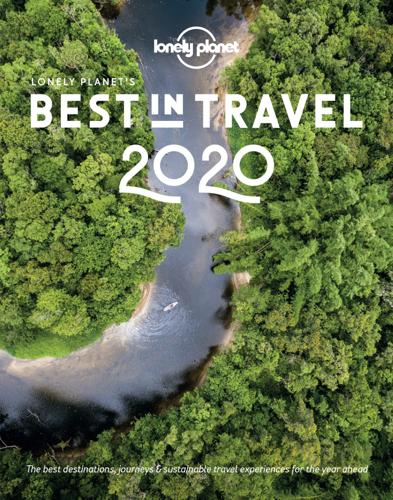
Lonely Planet's Best in Travel 2020
by
Lonely Planet
Published 21 Oct 2019
Train journeys, electric vehicles, windjammer cruises, cycle tours, buses and even hiking all offer incredible ways to get from A to B at a lower emission cost, and most of the time you’ll have a fantastic view of your destination as you travel through it. • By Nora Rawn © HAKINMHAN / SHUTTERSTOCK FLYING SMART Dreaming of a long-haul destination but worried about the impact of flying? Making small changes and planet-conscious choices can reduce your carbon footprint when you do fly. Travel light Extra weight on planes burns fuel faster. Reducing your luggage by 15kg could save between 100 and 200kg of CO2 emissions on a return flight from London to Tenerife. Tempted to upgrade to business class? Be aware that economy class has the least environmental cost as it carries more people for the same amount of fuel.
…
Haute Route, Switzerland From Mont Blanc to the Matterhorn, this classic path through the Pennine Alps is the best of all worlds: a walking route that takes in grand peaks and lets you sleep in cosy inns each night. © RON WATTS / DESIGN PICS / GETTY IMAGES Travelling on a Carbon Diet It’s a challenge to travel anywhere without leaving a carbon footprint, but by adding more planet-healthy choices to your travel diet, you can help to keep yours to an absolute minimum. Gone are the days when sipping lurid cocktails through novelty plastic straws and stuffing our suitcases with single-use bathroom amenities signified nailing the art of travel.

Lonely Planet Lonely Planet's Best in Travel 2022
by
Lonely Planet
Published 26 Oct 2021
Train journeys, electric vehicles, windjammer cruises, cycle tours, buses and even hiking all offer incredible ways to get from A to B at a lower emission cost, and most of the time you’ll have a fantastic view of your destination as you travel through it. • By Nora Rawn © HAKINMHAN / SHUTTERSTOCK FLYING SMART Dreaming of a long-haul destination but worried about the impact of flying? Making small changes and planet-conscious choices can reduce your carbon footprint when you do fly. Travel light Extra weight on planes burns fuel faster. Reducing your luggage by 15kg could save between 100 and 200kg of CO2 emissions on a return flight from London to Tenerife. Tempted to upgrade to business class? Be aware that economy class has the least environmental cost as it carries more people for the same amount of fuel.
…
Haute Route, Switzerland From Mont Blanc to the Matterhorn, this classic path through the Pennine Alps is the best of all worlds: a walking route that takes in grand peaks and lets you sleep in cosy inns each night. © RON WATTS / DESIGN PICS / GETTY IMAGES Travelling on a Carbon Diet It’s a challenge to travel anywhere without leaving a carbon footprint, but by adding more planet-healthy choices to your travel diet, you can help to keep yours to an absolute minimum. Gone are the days when sipping lurid cocktails through novelty plastic straws and stuffing our suitcases with single-use bathroom amenities signified nailing the art of travel.
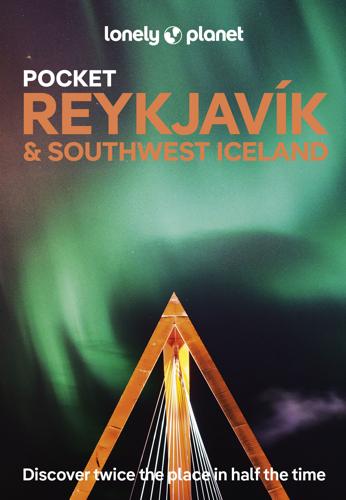
Lonely Planet Pocket Reykjavík & Southwest Iceland
by
Lonely Planet
IFONG/SHUTTERSTOCK © OUR PICKS Shop Local Stick to independent, locally owned restaurants, bars, services and shops; enjoy secondhand clothes shopping; and opt for locally grown produce labelled íslenskt. MYIMAGES_MICHA/GETTY IMAGES © Resources ● votlendi.is/carbon-offset Purchase carbon offsets to fund wetland restoration. ● visiticeland.com/carbon-offset Calculate your trip’s carbon footprint. ● globalclimatepledge.com/global/iceland Pledge to be a responsible tourist in Iceland. TIME YOUR VISIT JUST RIGHT The peak summer months can put a lot of pressure on Icelandic businesses and the environment. Visit at other times of year to remove some of that pressure and save some money.
…
LOOK FOR THIS LABEL IFONG/SHUTTERSTOCK © The orange Vakinn label shows that a tourism business meets the Icelandic Tourist Board’s standards for ethical, professional and environmentally sustainable operations. Scan this QR code for a list of certified companies. SEREGAM/SHUTTERSTOCK © Climate Change & Travel It’s impossible to ignore the impact we have when travelling, and the importance of making changes where we can. Lonely Planet urges all travellers to engage with their travel carbon footprint. Many airlines and booking sites offer travellers the option of offsetting the impact of greenhouse gas emissions by contributing to climate-friendly initiatives around the world. MARTI BUG CATCHER/SHUTTERSTOCK © Accessible Travel Attractions Key tourist sites including Gullfoss, the Geysir geothermal area and Þingvellir National Park are wheelchair-accessible.

Living in a Material World: The Commodity Connection
by
Kevin Morrison
Published 15 Jul 2008
Government representatives from 189 countries, Al Gore – the former US vice president turned businessman and environmental campaigner – and a myriad of industry lobbyists, environmentalists, lawyers, bankers, students, journalists and hundreds of television camera crews flood the spacious Bali convention centre for the two-week talkfest. The conference’s wordy title is typical of the lexicon of titles, agreements and groupings that characterize the travelling circus of climate change talks. The carbon footprint of the 2007 event was astronomical; 137 000 trees1 would need to be planted to offset all the emissions that were generated – from the flights to Bali to the air conditioners to cool the sauna-like temperatures. Not to mention the thousands of laptops, mobile phones, cameras and battery chargers needed to photograph and record the event for television, radio, print and the internet – this is just some of the vast amount of electrical consumption that the event required.
…
My childhood winters may well have been the tail end 128 | LIVING IN A MATERIAL WORLD of a mini-global cooling period, although the world was still warmer in the 1970s than it was 100 years previously.7 The debate around these long-term climate changes is whether we are accelerating the process through human activity – in particular the carbon emitted from power stations, cars, homes, farms and the cutting down of rainforests. Emissions Daily Each of us has a carbon footprint. We emit carbon whenever we switch on a light, turn the radio on for the morning news or boot up the computer to check our emails. Even having a cup of tea or a slice of toast releases emissions, because these daily acts use electrical power, which, in most parts of the world, is generated by burning coal and gas.
…
Consumers who want a carbon neutral lifestyle can install solar panels, put a wind turbine on the roof, sell the car and wear more clothes around the house in winter – or they can purchase carbon credits via carbon brokers such as The CarbonNeutral Company, Climate Care and co2balance.com to offset their carbon footprint. Despite some confusion in how these different schemes calculate emissions (a flight from London to Sydney, for example, can cost between £14.25 and £36 to offset), Britons spent £60 million offsetting their CO2 emissions in 2006 and this is expected to rise to £250 million by 2009, according to the Department for the Environment, Food and Rural Affairs (Copping, 2007).

An Optimist's Tour of the Future
by
Mark Stevenson
Published 4 Dec 2010
The ice across Hudson Bay melted almost a month later than normal, and polar bears, who feed and give birth on the ice, had a greater number of healthy cubs that summer (offspring dubbed ‘Pinatubo cubs’). Then again, other aerosols like soot absorb sunlight and have a warming effect. Some believe that this kind of ‘black carbon’ may be the world’s leading cause of global warming after CO2. Although on the positive side, as Mike Berners-Lee says in his book, How Bad Are Bananas?: the carbon footprint of everything: ‘black carbon lasts only a few days in the atmosphere [so] if we reduce the amount we create, the benefit will be instant. Hence some experts think that reducing black carbon pollution should be a number one priority in tackling global warming.’ The problem is that we don’t know how much of each sort of aerosol is in the atmosphere.
…
The phosphorous-doped ‘negative’ wafer faces the sun, and when an electron gets dislodged in this part of the cell it will head off in the direction of the boron-doped ‘positive’ wafer underneath, setting off a chain reaction of ‘charge passing’ between atoms and creating an electrical current. Silicon cells, however, are costly, complex to manufacture – and, ironically, have quite a high embedded carbon footprint (the ‘doping’ process, for instance, requires the wafers to be heated to slightly below the melting point of silicon). In recent years, ‘thin-film’ solar cell technologies have emerged that use much slimmer wafers of silicon or combinations of materials with catchy names like ‘cadmium telluride’ and ‘copper indium gallium diselenide.’
…
Indeed, Nasheed has already talked about setting up a ‘sovereign fund’ to buy land elsewhere should worse come to the worst. At the same time, the country is leading the way in creating a carbon neutral economy, which is no small feat when the nation is made up of over a thousand tiny islands, nearly all of which get their energy from diesel generators. Not to mention the fact that the Maldivian economy – and its carbon footprint – are dominated by tourism and associated aviation. The Maldives also rather neatly demonstrates the carbon divide between ‘developed’ and ‘developing’ nations. Resorts renowned for their opulence host small numbers of wealthy tourists who consume luxury foods flown in to meet their demands.

The Human City: Urbanism for the Rest of Us
by
Joel Kotkin
Published 11 Apr 2016
CASTELLS, Manuel. (1999) “The Informational City is a Dual City: Can It Be Reversed,” High Technology and Low Income Communities: Prospects for the Positive Use of Advanced Information Technology, Cambridge: MIT Press, 30–31. ——— (1989). The Informational City, London: Blackwell. CBC NEWS. (2013, April 29). “Carbon footprint assumptions do not hold true for Halifax.” http://www.cbc.ca/news/canada/nova-scotia/carbon-footprint-assumptions-do-not-hold-true-for-halifax-1.1371095. ——— (2014, August 19). “Top 10 most livable cities include Vancouver, Calgary and Toronto,” http://www.cbc.ca/news/business/top-10-most-livable-cities-include-vancouver-calgary-and-toronto-1.2740493.
…
Research by environmental group EnergyAustralia, which took this and overall consumer energy spending into account, found that both townhouses and detached housing produced less GHG emissions per capita than high-density housing when common-area GHG emissions were included.29 Further, one recent study from the National Academy of Sciences found that New York City—despite its mass transit system and high density—was the most environmentally wasteful of the world’s roughly 30 megacities, well ahead of more dispersed, car-dominated Los Angeles.30 In one of the most comprehensive national reviews of GHG emissions, the Australian Conservation Foundation found per capita emissions to decline from the urban core, through suburban rings, to the suburbs.31 Another study, this one in Halifax, Nova Scotia, found the carbon footprints of core residents and suburbanites to be approximately the same.32 THE HIGH COST OF CITY LIVING Finally, there is the often-repeated notion among retro-urbanists that higher density will solve the problem of affordability, now a major concern in cities around the world. Yet in many ways, pro-density policies worsen affordability.
…
Instead, if it is to adapt even somewhat successfully, the family will continue to morph, becoming more egalitarian in its approach to child-rearing and, above all, more flexible, with perhaps an expanded role for the growing ranks of childless aunts and uncles.158 Ultimately, to thrive and expand in the coming decades, urbanism needs to restore the central role of families. To flourish in the long run, cities need to be more than “entertainment machines” or dense receptacles for those who wish to reduce their carbon footprint.159 Cities are about people and about creating conditions for upward mobility, but they are also about the growth and development of the next generation. This means we need to place greater emphasis not on dense downtowns but rather on those remaining residential districts—like Ditmas Park and Flatbush—that can still accommodate families in areas not far removed from the historic urban center.
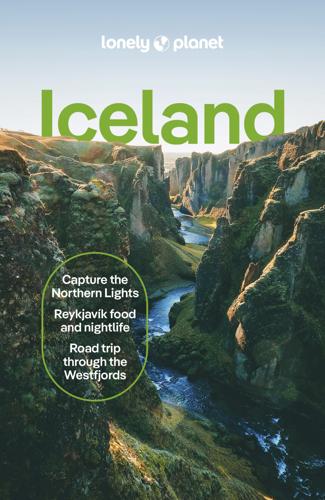
Lonely Planet Iceland
by
Lonely Planet
Responsible Travel Climate Change & Travel It’s impossible to ignore the impact we have when travelling, and the importance of making changes where we can. Lonely Planet urges all travellers to engage with their travel carbon footprint. There are many carbon calculators online that allow travellers to estimate the carbon emissions generated by their journey; try resurgence.org/resources/carbon-calculator.html. Many airlines and booking sites offer travellers the option of offsetting the impact of greenhouse gas emissions by contributing to climate-friendly initiatives around the world. We continue to offset the carbon footprint of all Lonely Planet staff travel, while recognising this is a mitigation more than a solution.
…
You’ll find lots of electric and hybrid car hire options, and charging stations across the country. Some rental companies include free charging. EMBRACE SLOW TRAVEL Make the most of your journey by settling into places and embracing slow travel. Become part of a community instead of just crossing it off a list to minimise the carbon footprint of your trip. STAY OFF THE MOSS There’s nothing Icelanders hate more than tourists damaging precious moss that can take hundreds of years to grow back. As tempting as it may be, stay off the moss, especially if there are signs telling visitors to keep off. NERTHUZ/SHUTTERSTOCK © Don’t Eat Whale About 2% of Icelanders report regularly eating whale meat; tourists are its most frequent consumer.
…
The plant in Hellisheiði can remove up to 4000 metric tonnes of carbon dioxide from the air each year and runs on renewable geothermal power. Stay on the Road Icelandic roads can be narrow and rarely have hard shoulders. Avoid pulling over in places without a hard shoulder unless it’s an emergency – the perfect photo opportunity does not qualify as an emergency. RESOURCES visiticeland.com/carbon-offset Calculate the carbon footprint of your trip. globalclimatepledge.com/global/iceland Promise to be a responsible tourist in Iceland by signing the Icelandic Pledge. LGBTIQ+ Travellers Icelanders are open and accepting of LGBTIQ+ travellers, and Iceland is one of the world’s most friendly countries for people who identify as gay, lesbian, bisexual or transgender.
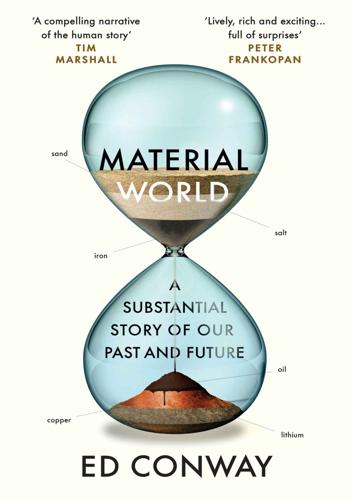
Material World: A Substantial Story of Our Past and Future
by
Ed Conway
Published 15 Jun 2023
And because polyhalite is simply dug out of the ground, crushed and then sold rather than artificially processed like most fertilisers, it could be certified as organic. By the same token, while the manufacture of other fertilisers – especially nitrogen – is enormously energy intensive, polyhalite would have a minuscule carbon footprint in comparison. The problem, however, was that no one had ever tried to do this before. There was no pre-existing market for polyhalite. Most materials dug out of the ground – whether that’s potash or coal or copper – are global commodities. The miner’s job ends when the mineral is refined and enters the global market.
…
But no: the water here is helping the acid extract the copper from the rocks, in a solution which is drained out at the bottom and sent off to the next stage in the refinery. The earth is watered not to breathe life into it but to leach riches out of it. Over time mines like this are attempting to reduce their water consumption. Some mines are piping in seawater rather than draining local rivers. But alongside the carbon footprint and the water footprint, there is another footprint that is even harder to ignore. Drive out of Chuquicamata, down the hill, past the neighbouring Ministro Hales mine (technically a separate, smaller operation but already producing enough copper to rival the big hole), go past Calama and take the road towards San Pedro.
…
But solar panels need roughly seven times as much copper as conventional power stations while offshore wind needs about ten times as much copper to generate the same amount of power.23 Perhaps you can see the challenge we are facing: if we are to fulfil the various promises made in recent years to get to net zero we will need staggering amounts of this metal. Reducing our carbon footprint will mean increasing our copper footprint. The good news is that some of that can come from recycling. The bad news is that even if we recycled pretty much everything we possibly could from old pipes and wires, we would still run desperately short of what we need. This brings us to the real challenge: not so much that we are likely to run out of the metal, nor that it will become too expensive.
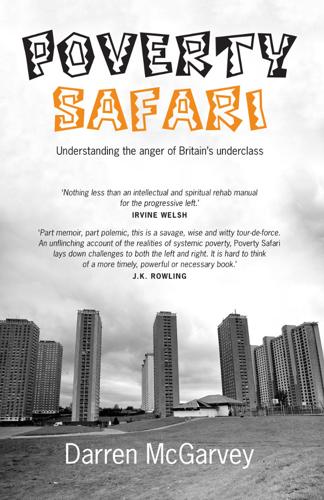
Poverty Safari: Understanding the Anger of Britain's Underclass
by
Darren McGarvey
Published 2 Nov 2017
Harrison’s project, though she didn’t make it very clear at the time, was an attempt to investigate how being restricted to one geographical area for a year, in this case Glasgow, impacted on her ability to live and work as a professional artist. Throughout the year, she would document and reflect on how this limitation affected everything, from her social life, identity and mental health to her employability and even her carbon footprint. The project reflected Ellie’s personal interests as an activist, artist and citizen living in Scotland. Interests which, while legitimate, were sadly not shared by many of Glasgow’s poorer residents, for whom the Glasgow Effect was not merely a concept but an oppressive matrix of overlapping inequalities.
…
On a Facebook page, created for the project, Ellie wrote: The Glasgow Effect is a year-long ‘action research’ project/ durational performance, for which artist Ellie Harrison will not travel outside Greater Glasgow for a whole year (except in the event of the ill health / death of close relative or friend). By setting this one simple restriction to her current lifestyle, she intends to test the limits of a ‘sustainable practice’ and to challenge the demand-to-travel placed upon the ‘successful’ artist / academic. The experiment will enable her to cut her carbon footprint and increase her sense of belonging, by encouraging her to seek out and create ‘local opportunities’ testing what becomes possible when she invests all her ideas, time and energy within the city where she lives. This short description, without even intending it, was encoded with everything people from deprived communities have grown sceptical of over the years.
…
Not only was Ellie being paid £15,000 to spend a year analysing the plight of the ‘successful artist’, she was going to benevolently ‘create local opportunities’. Her concerns, pertinent as they might have been, were not shared in those communities where people have little time or headspace to consider carbon footprints or the personal sacrifice of successful contemporary artists. This clumsy initial approach, rooted in a deep lack of understanding of the cultural dynamics at play in the city, fertilised a social media storm that very quickly got out of hand. The consensus was that ‘some artist’ ‘from England’ ‘was being paid 15 grand’ to ‘live in Glasgow for a year’ to see how being stuck in one geographical location affected her ability to work.
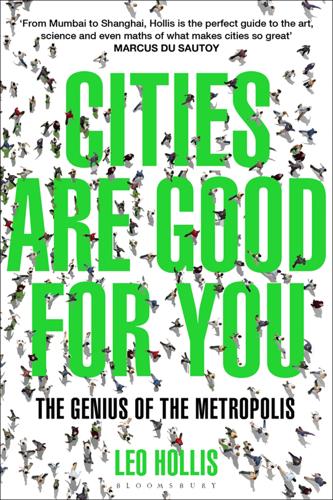
Cities Are Good for You: The Genius of the Metropolis
by
Leo Hollis
Published 31 Mar 2013
One way to explain this unexpected efficiency is to return to Geoffrey West’s model for the metabolism of the city. As he showed, when a city doubles in size, there is a scaling of efficiencies. This means that as more people come to live in the metropolis they share services and resources; thus as a city doubles in population size, it only needs to increase its carbon footprint by 85 per cent, including everything from heating and housing to the number of petrol stations; representing an energy saving of 15 per cent. As the metropolis grows it becomes more energy efficient, not less. Indeed, in one interview Geoffrey West went so far as to state: ‘The secret to creating a more environmentally sustainable society is making our cities bigger.
…
This was partly in recognition of the efforts already made by the city, but also because of its future programme, Vision 2030, which identified six main areas for new policy: changing transport policy to make it more environmentally efficient with an emphasis on reducing carbon emissions; encouraging green cars and public transit, and providing bike lanes; reducing the use of toxic chemicals in manufacturing and construction; more efficient use of energy, water and land; improving waste management; and finally ‘a healthy indoor environment’: upgrading social housing and reducing noise pollution. While the average European carbon footprint stands at 10 tonnes per capita, as opposed to 22 tonnes per capita in the US, Stockholm has already reduced its carbon emissions to 3.4 tonnes per capita and it promises to be fossil-fuel free by 2050. This reduction has been brought about by improving the city’s infrastructure and promoting public transport, as well as developing a widespread bike culture, with an ‘ecobike’ system and the establishment of an extensive cycle infrastructure, so that on any winter’s day 19 per cent of Stockholmers will be using their bicycles – a figure that rises to 33 per cent in summer.
…
An efficient public-transport system reduces not only congestion and pollution but also health inequality, but some of the barriers for using such transit include the fear that it is inefficient, and the social stigma of ‘riding the bus’. Getting cars off the street and cutting out unnecessary journeys has a social as well as environmental result: it reduces carbon footprint and improves air quality, but it also, as we saw with Appleyard’s experiments on his Heavy and Light Streets, enhances communities. I was reminded of this fact when I went to meet Colin Beavan, a writer living in Manhattan who decided to reduce his carbon emissions to zero. He recounted the travails and the joys of his year of living green in a wonderfully entertaining and honest book and documentary film of the same name, No Impact Man.
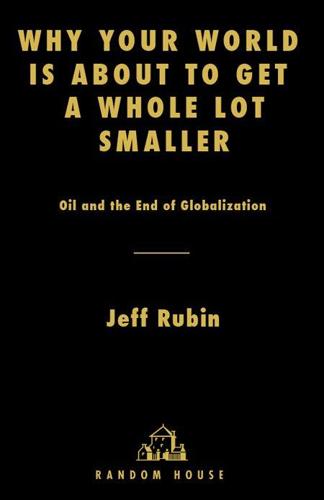
Why Your World Is About to Get a Whole Lot Smaller: Oil and the End of Globalization
by
Jeff Rubin
Published 19 May 2009
Consider what a near doubling of those prices could do to carbon emissions in the future. Even with the additional emissions from the return of some heavy industries like steel, the emission cuts that will come from the transport sectors in North America will be overwhelming. Hence, North America’s carbon footprint will get fainter and fainter just as carbon footprints get heavier and heavier in China and the rest of the developing world. Just as oil consumption has peaked in the US, so too have US greenhouse gas emissions. Ironically, the US may ultimately yet comply with the Kyoto commitments it never signed on to. Emission reductions will be mandated not by legislation or international treaties, but by soaring fuel prices at the pumps and comparable increases in the price of jet fuel.
…
The surprising calculation that biofuel can be hundreds of times worse for the environment than fossil fuels comes from a study called “Climate Change and Energy: The True Cost of Biofuels,” produced by The Nature Conservancy and the University of Minnesota. It is the carbon released by the destruction of grassland, rainforests, peat-lands or savannas in countries like Brazil and the U.S. that adds so much to the carbon footprint of the tailpipe emissions and fossil fuel inputs for the feedstock. CHAPTER 4: HEADING FOR THE EXIT LANE p. 111: During the breakup of Yugoslavia, the Belgrade government tried to control the exchange rate of the dinar, with predictable results, particularly in a largely black-market economy imposed by UN sanctions.
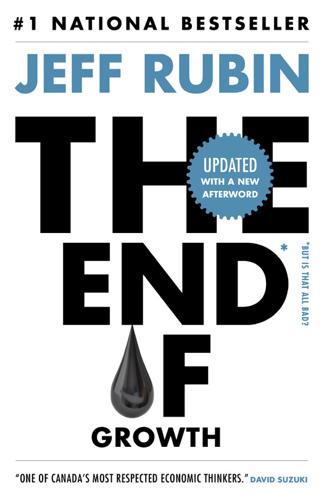
The End of Growth
by
Jeff Rubin
Published 2 Sep 2013
With big dollars at stake selling green energy technology around the world, I can understand why Denmark wants to showcase its offshore wind farms instead of its coal-fired power plants. But the cold hard truth is that it is smokestacks, not wind turbines, that allow most Danes to turn on the lights. Coal’s share of power generation, I found out, is the same in Denmark as it is in China. Where China’s carbon footprint now dwarfs every other country in the world, though, Denmark’s is actually shrinking. How can this be? To answer this energy riddle, you need to look past how power is generated in Denmark and into the prices Danish citizens pay for electricity. Households in Copenhagen pay roughly 30 cents per kilowatt-hour for power.
…
In Denmark, government-regulated power prices are laden with carbon taxes, which means electricity isn’t cheap, whether it’s wind powered or coal fired. Not surprisingly, Danes use a fraction of the power that North Americans consume. All those world-famous windmills, it turns out, aren’t behind Denmark’s falling emissions. The real reason for its smaller carbon footprint is its high electricity prices, which put a huge damper on power demand. The coal that doesn’t get burned because power is so expensive is more important to the level of Denmark’s carbon emissions than the coal that does get burned. That’s good news for the planet’s future. Despite its offshore wind farms, Denmark shows that carbon abatement isn’t limited to places with ideal conditions for wind power—or solar or hydroelectric, for that matter.
…
(What I can say for certain is that Eyjafjallajökull cost me a trip to Portugal.) The presence of large natural sources of carbon emissions hardly takes polluters off the hook. Just because nature can overwhelm us with a volcanic eruption at any moment doesn’t mean our effect on the environment isn’t just as profound. We can’t excuse our contributions to the global carbon footprint because multiple sources of emissions exist. As the IPCC points out, our current rate of carbon emissions combined with the atmospheric buildup since the Industrial Revolution puts us on track to reach dangerous concentrations of greenhouse gases irrespective of random volcanic events. The amount of carbon dioxide in the atmosphere is now greater than at any time in the last 640,000 years.
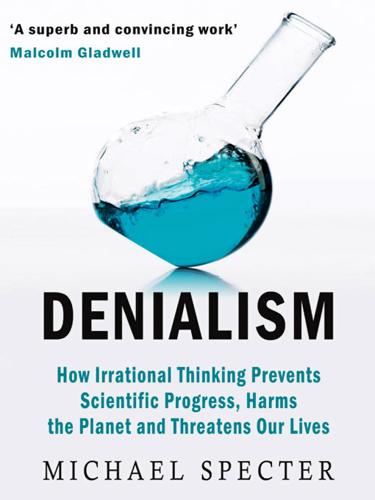
Denialism: How Irrational Thinking Hinders Scientific Progress, Harms the Planet, and Threatens Our Lives
by
Michael Specter
Published 14 Apr 2009
But as an emblem of the nation’s growing fixation on all that is natural, nothing quite compares to Whole Foods. To saunter down its aisles is to wade into a world of butter lettuce, chard, black radish, winter squash, and several types of arugula. The origin of nearly every product is on display, the better to assess its carbon footprint, the burden it places on the environment, and the likelihood that the food is fresh. Signs at the meat counter promise animals raised without hormone injections or antibiotics and nourished only by vegetables. Whole Foods adheres to the “Organic Rule,” which, according to one of the store’s many informational brochures, Organics and you, is principally about integrity.
…
Traditional grocery stores rarely made much of a fuss about their philosophies, but Whole Foods isn’t just about food, it’s about living a particular kind of life, an approach the company sums up nicely in the Whole Foods Credo: “Eat seasonally grown food, reduce the distances from farm to plate, shrink one’s carbon footprint, promote sensitivity and a ‘shared fate.’ ” (Eating locally produced food has become such a phenomenon that in 2007 the editors of the New Oxford American Dictionary selected “locavore” as their word of the year.) The credo is not unusual. Organic products nearly always come with claims of ethical superiority.
…
Even for beef raised less luxuriously (fed by grain on industrial farms) the figure is nearly forty-five miles. Eating meat is ecologically ruinous: according to a 2008 study by researchers at Carnegie Mellon University, if we all skipped meat and dairy just one day each week it would do more to lower our collective carbon footprint than if the entire population of the United States ate locally produced food every day of the year. Malthus may have badly underestimated human ingenuity, but he did get one formula right: combine intense population pressure with high levels of poverty, reduce the opportunity for technological advances, and the guaranteed result will be famine and death.
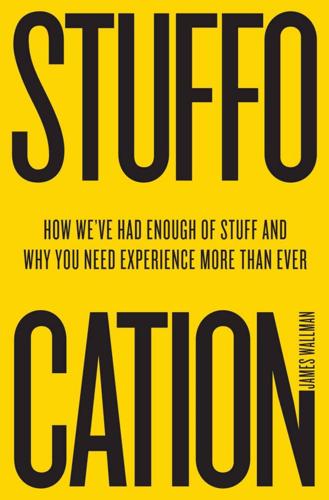
Stuffocation
by
James Wallman
Published 6 Dec 2013
A psychologist, like Oliver James, or a philosopher, such as Alain de Botton, will tell you we’ve had enough of stuff because our possessions, and the lifestyle that comes with them, are causing us more stress than happiness. James calls this problem “affluenza”. De Botton says keeping up with the Joneses is giving us “status anxiety”. An environmentalist will tell you we’ve had enough because of global warming, landfill, our carbon footprint. We are worried that we are using up more resources than the planet can sustain. A demographer might say that they can see that the stress of stuff, our stable upbringing and the environment may all be valid, but there are four other, much more important, reasons for Stuffocation: the ageing population, the growing population, the rise of the global middle class, and the move to cities.
…
If you also consider the problems causing Stuffocation, you can see still more reasons why experientialism is better, and why it is likely to appeal not just to a few pioneering hippies with calculators, but to the majority of those in the rich, currently materialistic world. Since, in a world underpinned by experientialism, status and happiness and meaning are no longer based on material goods, it is likely to cause far fewer environmental problems. Many experiences, to be sure, require material goods and do create a footprint. Consider the carbon footprint of an experiential purchase like a holiday to Borneo, for instance. But since experiences are, by definition, less predicated on material possessions they are likely, overall, to cause less damage to the environment. Since in an experientialist system we are less likely to accumulate possessions, we are likely to have fewer things, less clutter and less of the stress that comes with all that stuff.
…
Consider, for instance, the rise of experiential events, e-books, TOMS shoes, the Common Threads Initiative, Puma’s Clever Little Shopper, collaborative consumption, the runaway success of Apple, and why London is one of the most visited cities in the world. These are stellar examples, the pioneers, if you like, of the experience economy. Here is why. As someone who has made the shift to reading on a digital device, you already know how e-books help solve the problem of Stuffocation: fewer trees cut down, lower carbon footprint, instant access so no need to actually go to the shops, and, best of all, fewer books cluttering up the house or your bag or your suitcase when you go on holiday. Instead of the “buy one get one free” offer – known as BOGOF by retailers – of the old economy, TOMS shoes come with a “buy one give one away” offer: BOGOA, you could call it.
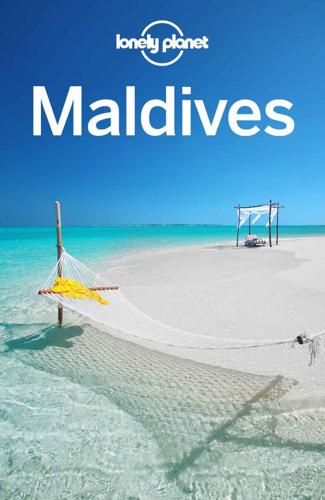
Lonely Planet Maldives (Travel Guide)
by
Planet, Lonely
and
Masters, Tom
Published 31 Aug 2015
First, you’re almost certain to arrive in the country by long-haul flight, with all the emissions that entails. Second, you’ll be using electricity-thirsty air-conditioning wherever you go, eating imported food and drinking expensively desalinated water (or even more costly imported water). Nevertheless, there are a few things you can do to lessen your carbon footprint and care for the local environment. First of all, choose your resort carefully. We have given resorts with excellent sustainability credentials a sustainable icon in the reviews – these are resorts with the best environmental records in the country. This can mean anything from having a comprehensive recycling program, using home-grown food, not using plastic bottles, using ecologically sound wood for their buildings and serving only sustainably sourced food in their restaurants, to running environmental education programs for the local community, stimulating coral growth on the reef and donating money to offset the carbon footprint of its guests.
…
This can mean anything from having a comprehensive recycling program, using home-grown food, not using plastic bottles, using ecologically sound wood for their buildings and serving only sustainably sourced food in their restaurants, to running environmental education programs for the local community, stimulating coral growth on the reef and donating money to offset the carbon footprint of its guests. If in doubt, contact your resort directly before you book with them and ask them for some information on their environmental record – any good resort will very happily provide this, and if they don’t, then don’t book with them. Other things you can do to be a responsible visitor to the Maldives include taking home any plastic bottles or batteries you bring with you, respecting rules about not touching coral when diving or snorkelling, picking up any litter you may see on the beach, using water and air-conditioning judiciously, avoiding imported mineral water and drinking desalinated water instead, not replacing your towels daily and not buying souvenirs made from turtle-shell or coral, which can still be found in many places.
…
Many websites offer ‘carbon calculators’ that allow people to estimate the carbon emissions generated by their journey and, for those who wish to do so, to offset the impact of the greenhouse gases emitted with contributions to portfolios of climate-friendly initiatives throughout the world. Lonely Planet offsets the carbon footprint of all staff and author travel. Air Airports & Airlines Almost every visitor to the Maldives arrives at Male's Ibrahim Nasir International Airport, on the island of Hulhule, 2km across the water from the capital island, Male. It’s a decent but rather aged terminal awaiting an upgrade to a world-class airport terminal that has been on the cards for years, but whose progress has been agonisingly slow.

Badvertising
by
Andrew Simms
Research predicts that out of England’s football league teams, almost one in four, 23 in total, will have experienced partial or full flooding by 2050.51 In addition, the increased frequency of climate hazards such as storms, hurricanes or forest fires will inevitably hinder the capacity to play outdoor sports. A groundbreaking report by the Rapid Transition Alliance, Playing against the Clock, into the links between the climate crisis and global sports, estimates the sector’s overall carbon footprint to be in a range which, at the low end, would be equivalent to that of a nation like Bolivia, and at the higher end equal to the emissions of countries like Spain or Poland.52 The two largest events in global sports, the Olympics and the World Cup, release as much as 7–8 million tonnes of greenhouse gases into the atmosphere.
…
First, from the perspective of individual consumption behaviour, flying is the fastest way to fry the planet.2 It might be possible to have a greater warming impact in a shorter time by starting forest fires or smashing up old fridges, but these are not behaviours which are considered a normal, everyday part of modern life in rich nations. Consequently, of all the possible ways to cut your personal carbon footprint, if you are one of the lucky few that fly regularly today, cutting out just one long haul return flight per year will have the biggest impact.3 Second, from a technological perspective, aviation is a notoriously ‘hard to treat’ sector. Since the turn of the century air travel has been the fastest growing source of transport carbon emissions, and modest fuel efficiency gains have been outweighed by roughly four to one for decades by rapacious growth in demand for flights.4 By 2019, there were 4.5 billion passenger flights on scheduled services – three times as many as there were in 1997, when the world’s nations first came together at Kyoto to pledge to tackle climate change.5 The ICAO projects that by 2040 there will be 10 billion passenger flights.
…
An agreement was reached with the metro transport operator to end adverts for fossil fuel companies, fossil fuel-powered cars and budget airlines.11 A similar move was made by the Dutch city of Haarlem where they went one step further and included in the list of adverts to be controlled meat from industrial agriculture, which has a particularly high-carbon footprint. The ban was set to be implemented for new contracts from 2024,12 and the municipality of Nijmegen passed an almost identical ban.13 Action has also been taken in the Netherlands in cities from Amersfoort to Utrecht, Leiden and Enschede.14 North Holland then became the first province to ban high-carbon ads and included in their scope not just adverts for meat, but fish too.
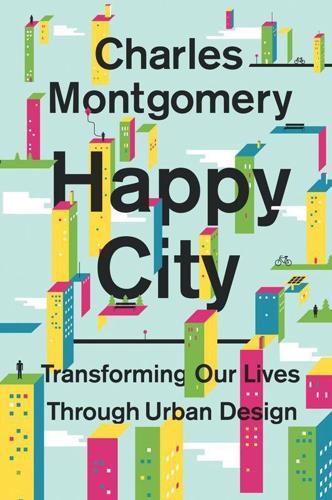
Happy City: Transforming Our Lives Through Urban Design
by
Charles Montgomery
Published 12 Nov 2013
It now usually sits at or near the top of quality-of-life lists published by Mercer, Forbes magazine, and the Economist Intelligence Unit. Prices have doubled on many condominium units in the past fifteen years, and they remained buoyant right through the global economic crisis. To top it off, Vancouver has the lowest per capita carbon footprint of any major city on the continent—a dividend achieved in part by people living closer together, reducing the energy used in transportation and home heating.* Part of what made Vancouver’s vertical experiment both unique and desirable was the way it accommodated residents’ biophilic needs. The city’s new downtown was shaped to a large extent by the local obsession with views.
…
He copied Bogotá’s mobility system, laying down a network of metrolike rapid buses that have even lured the public-transit-phobic business class out of their cars. He called in Gil Peñalosa and Jan Gehl to create a plan to wrestle 186 miles of road space away from drivers and hand it over to cyclists. As part of the city’s Plan Verde, the measures not only shrink the city’s carbon footprint and make commuting easier (these days in the Mexican capital, just about any cyclist can move faster than cars, which have slowed to an average of about 7.5 miles per hour), but most important, they are intended to give a new sense of security to citizens who have for years been afraid of their streets.
…
But when cities find ways to mix housing and jobs and places to shop, then carbon goals and lifestyle goals start to converge.” Boston has experienced these dividends firsthand. First he helped create a climate action plan for the City of North Vancouver, a mountainside suburb just across a broad saltwater harbor from Vancouver. His metrics were straightforward: if the city was going to reduce its carbon footprint, it needed to give lots more people a chance to do a lot more things closer together. This did not necessarily mean building a mini-Manhattan. It meant weaving more apartments, more town houses, more shops, and more jobs along Lonsdale Avenue, the city’s central spine. Indeed, that’s what the city was already doing in the name of prosperity.
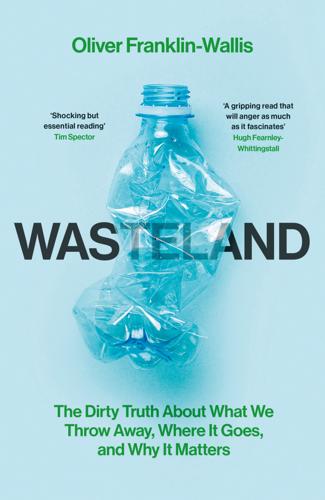
Wasteland: The Dirty Truth About What We Throw Away, Where It Goes, and Why It Matters
by
Oliver Franklin-Wallis
Published 21 Jun 2023
Escher as his inspiration, won $2,500 for his effort. 38 Broadly speaking, the numbers indicate (take a deep breath): 1: Polyethylene terephthalate (PET), used in soda bottles and clothing; 2: high-density polyethylene (HDPE), used in milk and juice bottles; 3: polyvinyl chloride (PVC), used in raincoats, pipework and wires; 4: low-density polyethylene (LDPE) used in films, bags and wraps; 5: polypropylene (PP), popular for tubs and yogurt pots; 6: polystyrene (PS), which comes in many forms, from the clear hard plastic used for food containers to the expanded foams used in packaging and take-away boxes; finally, 7: which means ‘other’, and covers all plastics not included in the first six, including polycarbonate, acrylic, acrylonitrile butadiene styrene (ABS), the plastic used for LEGO bricks, and plant-based plastics such as polylactic acid – none of which are widely recycled, if at all. 39 Laura Sullivan, ‘How Big Oil Misled The Public Into Believing Plastic Would Be Recycled’, PBS Frontline, and NPR, 11/09/2020: https://www.npr.org/2020/09/11/897692090/how-big-oil-misled-the-public-into-believing-plastic-would-be-recycled 40 Ibid. 41 The industry’s recent sop to this has been to change the three arrows for a simpler triangle, although at the time of writing that proposal still hasn’t been widely adopted. 42 WRAP, ‘On-pack Labelling and Citizen Recycling Behaviour’, 2020: https://wrap.org.uk/sites/default/files/2021-09/WRAP-On-pack-labelling-and-recycling-behaviour_0.pdf 43 Strasser, Waste and Want, p. 261. 44 Emily Cockayne, Rummage (London: Profile Books), 2020, pp. 58–60. 45 Rogers, Gone Tomorrow, p. 142. 46 Frank Trentmann, Empire of Things: How We Became a World of Consumers, from the Fifteenth Century to the Twenty-First (London: Penguin), 2016, p. 639. 47 Mark Kaufman, ‘The carbon footprint sham’, Mashable, 13/07/2020: https://mashable.com/feature/carbon-footprint-pr-campaign-sham 48 ‘Packaging lobby’s support for anti-litter groups deflects tougher solutions’, Corporate Europe, 28/03/2018: https://corporateeurope.org/en/power-lobbies/2018/03/packaging-lobby-support-anti-litter-groups-deflects-tougher-solutions 49 Myra Klockenbrink, ‘Plastic Industry, Under Pressure, Begins to Invest in Recycling’, New York Times, 30/08/1988: https://www.nytimes.com/1988/08/30/science/plastics-industry-under-pressure-begins-to-invest-in-recycling.html 50 Sullivan, ‘How Big Oil Misled The Public Into Believing Plastic Would Be Recycled’. 51 Ibid. 52 Maeve McClenaghan, ‘Investigation: Coca-Cola and the “fight back” against plans to tackle plastic waste’, Greenpeace Unearthed, 25/01/2017: https://unearthed.greenpeace.org/2017/01/25/investigation-coca-cola-fight-back-plans-tackle-plastic-waste/ 53 Branded, Volume IV: Holding Corporations Accountable for the Plastic & Climate Crisis, Break Free From Plastic, 25/10/2021: https://www.breakfreefromplastic.org/2021/10/25/the-coca-cola-company-and-pepsico-named-top-plastic-polluters-for-the-fourth-year-in-a-row/ 54 Rogers, Gone Tomorrow, p. 215. 55 ‘Coca-Cola Sets Goal to Recycle or Reuse 100 Percent of Its Plastic Bottles in the US’, 05/09/2007: https://investors.coca-colacompany.com/news-events/press-releases/detail/274/coca-cola-sets-goal-to-recycle-or-reuse-100-percent-of-its 56 Judith Evans, ‘Coca-Cola and rivals fail to meet plastic pledges’, 16/09/2020: https://www.ft.com/content/bb189a2a-57ca-44ce-82ab-1d015a20ca1c 57 Sharon Lerner, ‘Waste Only’, The Intercept, 20/07/19: https://theintercept.com/2019/07/20/plastics-industry-plastic-recycling/ 58 Tik Root, ‘Inside the long war to protect plastic’, Center for Public Integrity, 16/05/2019: https://publicintegrity.org/environment/pollution/pushing-plastic/inside-the-long-war-to-protect-plastic/ 59 ‘Preemption laws’, Plasticbaglaws.org, 2010: https://www.plasticbaglaws.org/preemption/ 60 Helene Wiesinger, Zhanyun Wang and Stefanie Hellweg, ‘Deep Dive into Plastic Monomers, Additives, and Processing Aids’, Environmental Science & Technology (2021): DOI: 10.1021/acs.est.1c00976 61 Patricia L.
…
(Its first chairman, according to the historian Frank Trentmann, was a managing director at an oil company.)46 Those same corporations, meanwhile, have consistently lobbied against legislation designed to make packaging producers take greater responsibility for waste pollution. This tactic – to deflect blame onto consumers – is a longstanding corporate strategy: the carbon footprint, for example, was popularised in the early 2000s by the oil giant BP.47 We’re told to ‘gamble responsibly’ and ‘drink aware’. The word less never comes into it. Litter, however, was only one piece of the packaging industry’s defence campaign. The other was recycling. Beginning in the 1980s, Big Plastic began to spend tens of millions of dollars promoting recycling as the solution for our waste problem, often through industry front groups with names like the Council for Solid Waste Solutions, the American Chemistry Council, and the Clean Europe Network.48 The primary purpose for this big recycling push was to avoid legislation – at the time, environmental campaigners were calling for a ban on polystyrene, then used in fast food packaging.
…
In addition to using the waste to feed himself and his family – he has a wife and two adult sons – John collects wasted and surplus food from around York on his bicycle and helps to distribute it around local food banks and homeless charities. Anything left over he turns into compost, which has earned him the nickname Compost John. He is something of a local celebrity. In 2008, the charity Oxfam ran a competition to find the UK citizen with the lowest carbon footprint. John won. He doesn’t drive, fly, own a television, or even a toaster. He also doesn’t shower, instead washing with cups of cold water each morning. (This, I think to myself, explains the smell.) In the end, John’s footprint was calculated as being less than a quarter of the average UK person.
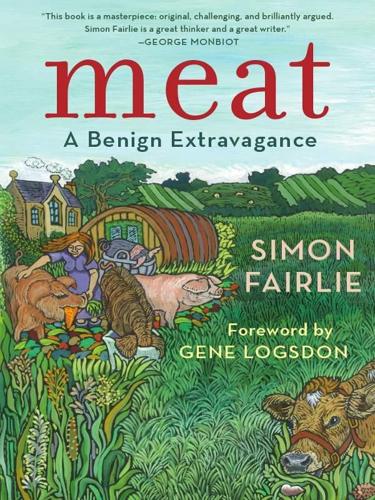
Meat: A Benign Extravagance
by
Simon Fairlie
Published 14 Jun 2010
This book is most valuable because it will convince the open-minded reader that when we start making grand statements about the earth’s food-carrying capacity, more than a little humility is in order. No matter how fervently we support the no-meat or the pro-meat point of view, or how much allegiance we have for any particular dietary bible, or what kind of farming we think best serves humanity’s food purposes, or what we think about carbon footprints, global warming, greenhouse gases and any of the other trendy phrases with which the news batters us, or what economic religion we think best serves the purpose of providing food for all, I challenge anyone to read this book and not realize that no one has all the right answers, because neither science nor ideology knows all the right answers yet.
…
At the farm level the FAO states that ‘the most promising approach for reducing methane emissions from livestock is by improving the productivity and efficiency of livestock production through better nutrition and genetics. ’Higher yielding cows produce more milk for less methane. This advice is widely repeated throughout the agricultural press, for example Farmers Weekly writes: Want to reduce your herd’s carbon footprint? Then the easiest way is to increase milk yields … A 9000-litre cow produces 125 kg of methane a year, a 5000-litre cow produces 103 kg of methane.75 While there may well be advantages in increasing yields from dairy animals, there are also drawbacks: a high yielding cow will be less likely to survive on default produce from the farm, and will require both more and higher grade nourishment that can usually only easily be provided by carbon intensive farming practices such as tillage, irrigation or use of synthetic fertilizers.
…
International Panel on Climate Change, Cambridge University Press, UNEP, 1995. 72 Stern, N (2007), The Economics of Climate Change, Cambridge, p 223. 73 IPCC (2007), Contribution of Working Group I to the Fourth Assessment Report of the Intergovernmental Panel on Climate Change, Cambridge University Press, Chapter 2,pp 140-142 http://www.ipcc.ch/pdf/assessment-report/ar4/wg1/ar4-wg1-chapter2.pdf 74 DEFRA (2008), UK Climate Change Sustainability Indicator: 2006 Greenhouse Gas Emissions Final Figure,http://www.defra.gov.uk/news/2008/080131a.htm; EIA (2008), Emissions of Greenhouse Gases in the US 2008, ftp://ftp.eia.doe.gov/pub/oiaf/1605/cdrom/pdf/ggrpt/057308.pdf; Padma, T V, India and Climate Change: Facts and Figures, Sci Dev Net, 31 August 2006, http://www.scidev.net/en/climate-change-and-energy/mitigation/features/india-climate-change-facts-and-figures.html 75 Farmers Weekly (2007), ‘Milk Yield Holds the Key to Lower Carbon Footprint’, Farmers Weekly, 20 August 2007. 76 FAO (2006), op cit 77 IPCC (2007), Climate Change 2007: Mitigation, Contribution of Working Group III to the Fourth Assessment Report (AR4) of the IPCC (Introduction) eds B Metz et al, Cambridge University Press, 2007, pp 103-5. 78 Ibid., p 104. 79 Goodland, Robert (1998), ‘Environmental Sutainability in Agriculture: Bioethical and Religious Arguments Against Carnivory’, in J Lemons et al (eds), Ecological Sustainability and Integrity, Kluwer, 1998, pp 235-65. 80 Goodland, R and Anhang, J (2009), Livestock and Climate Change: What if the Key Actors in Climate Change are Cows, Pigs and Chickens?

Hacking the Code of Life: How Gene Editing Will Rewrite Our Futures
by
Nessa Carey
Published 7 Mar 2019
The first is that ‘people’ usually refers to other people, typically in the less developed world. This is fairly ridiculous, as the environmental impact of children in the most economically developed countries is much higher than those from less privileged regions. A typical American has 40 times the carbon footprint of someone from Bangladesh, for example. The other difficulty with the ‘people need to stop having so many children’ response is that it ignores a critical fact. It’s not the number of people being born that is really the problem for our planet, it’s the number of us failing to die in a timely fashion that’s the key issue.
…
INDEX A A&F University (Shaanxi) 1 adult haemoglobin 1 agave plant 1 Alicante, University of 1 Allergan 1 Alzheimer’s disease 1 amphibians, gene editing in 1 anaemia 1 animals gene editing in 1 healing power 1 antibiotics 1, 2, 3 antibodies, creation 1 antihistamines 1, 2, 3 Asimov, Isaac 1 aspartame 1 aspirin 1, 2, 3 Australia 1 autism 1 Avery, Oswald 1 axolotls 1 azathioprine 1 B bacteria drug production in 1 genetic engineering in 1 bases 1 bats 1 beers 1 bees 1 Belgian Blue cattle 1 Berg, Paul 1 beta-carotene 1 beta-interferon 1 Bill and Melinda Gates Foundation 1 biohackers 1 biological drugs 1 biological warfare 1 birth rates 1 blindness 1, 2 blood, feeding on 1, 2 blood transfusion 1 bloodstream 1 bone marrow 1, 2, 3 bovine tuberculosis 1 Boyer, Herbert 1, 2 brain 1 Breakthrough Prize in Life Sciences 1 breast cancer 1 Broad Institute (Cambridge, Massachusetts) 1, 2, 3 Brown, Louise 1 brown adipose tissue 1 buckeye butterfly 1 butterflies 1 C California, University of see University of California Cambridge, University of 1 cancer 1, 2, 3, 4 cane beetles 1 cane toads 1 carbon dioxide 1 carbon footprint 1 cardiovascular disease 1 Caribou Biosciences 1 cassava 1 cats 1 cattle 1, 2 Belgian Blue 1 Piedmont 1 Cayman Islands 1, 2 CCR5 1 Cell journal 1 Charpentier, Emmanuelle 1, 2, 3, 4 chickens, eggs 1 China 1, 2 Chinese Academy of Sciences 1 cholesterol 1 Church, George 1, 2 climate change 1, 2 clinical trials 1, 2 clonal raider ant 1 cloning 1, 2 coeliac disease 1 Cohen, Stanley 1, 2 Columbia University 1 congenital hypothyroidism 1 corneal transplants 1 Cornell University 1 Cosmo Bio 1 Creutzfeld-Jakob disease 1 Crick, Francis 1 CRISPR 1 CRISPR-Cas 1 2 CRISPR Therapeutics 1, 2 Curie, Pierre 1 cystic fibrosis 1 D DARPA 1 Darwin, Charles 1 DDT 1 deafness 1 death rates 1 dengue fever 1, 2 desertification 1 designer babies 1 detoxification 1 diabetes type 1 1 type 2 1 disability, who defines?
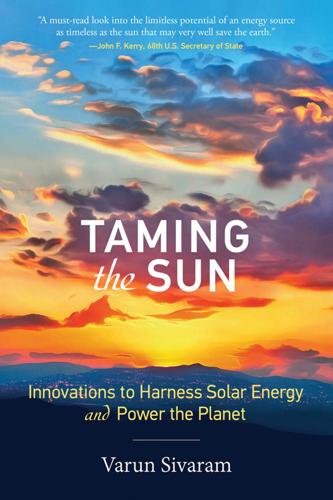
Taming the Sun: Innovations to Harness Solar Energy and Power the Planet
by
Varun Sivaram
Published 2 Mar 2018
By 2030, industrial printers were churning out rolls of solar PV coatings in a range of colors and transparencies. A decade later, solar-coating your house was as cheap as painting it. Architects rejoiced. Today at the mid-century mark, most urban buildings are wrapped in electricity-generating solar materials that tint the windows, enliven the facade, and shrink the carbon footprint. Nearly free electricity has induced heavy industries to switch from burning fossil fuels to running off solar power. Solar PV isn’t just powering glamorous urban buildings or massive industrial plants; PV materials are now light enough to be supported by flimsy shanty roofs in the slum outskirts of megacities in the developing world.
…
If the planet is going to decarbonize, the task will not be accomplished solely by eliminating fossil fuels from electricity generation and powering on-road vehicles with electricity instead of oil derivatives. Most of the world’s energy demand is not met by electricity but by burning other fuels, the most prevalent of which is oil. So, decarbonization will require replacing oil—the most widely-used energy source on the planet—with storable fuels that have no carbon footprint. Yet oil is so popular, especially in the transportation and industrial sectors, because it and fuels derived from it are remarkably convenient. For example, gasoline packs eighty times as much energy into the same volume as taken up by the lithium-ion batteries that power electronics and EVs.
…
To underscore his thesis that SolarCity’s products belonged under (or on) the same roof as those of Tesla Motors, Musk opened a garage door to reveal gleaming Tesla EVs and the company’s Powerwall home battery. The tableau was a vivid depiction of Musk’s vision of the future, in which solar panels and batteries work hand in hand to eliminate a household’s carbon footprint—all in considerable style. Predictably, aversion turned to adulation. Shareholders overwhelmingly approved Musk’s proposed merger, and they were repaid handsomely. The combined firm promptly soared in value, and by April 2017, it reached a market cap of over $50 billion—more valuable than any U.S. car company.5 On its website, Tesla Motors quietly changed its name to just “Tesla,” signaling to the world that the ultimate energy company had arrived—it wasn’t just a car company anymore.

Retrofitting Suburbia, Updated Edition: Urban Design Solutions for Redesigning Suburbs
by
Ellen Dunham-Jones
and
June Williamson
Published 23 Mar 2011
Too many people continue to work in soulless industrial parks and strip malls surrounded by acres of parking. And too often zoning codes, transportation investments, and lending practices have continued to perpetuate out of date, disconnected development patterns. Suburbia accounts for a large and growing share of the nation’s economic output but also to its biggest carbon footprints, its highest obesity rates, and the most automobile fatalities. Sure our suburbs need some upgrading and beautification, more parks and green space, but the real key to suburban renewal lies in two key, related factors—walkability and density. As Jane Jacobs and the Nobel Prize–winning economist Robert Lucas have shown, the clustering of people and economic activity is the basic engine of economic life—for cities, suburbs, and nations alike.
…
At a time when climate change and peak oil prices call for vast swaths of existing suburban areas to be retrofitted on a scale and at a speed that is beyond the capacity of incremental urbanism, it is worth recognizing when the kind of large-scale changes associated with “instant cities” might be welcomed rather than shunned. The global urgency of reducing greenhouse gases provides the latest and most time-sensitive imperative for reshaping sprawl development patterns, for converting areas that now foster the largest per capita carbon footprints into more sustainable, less auto-dependent places.3 The transforming of aging and underperforming shopping centers, office parks, garden apartment complexes, and other prototypical large suburban properties into more urban places allows new population growth to be redirected from metropolitan greenfield edges into more central, VMT-reducing, greyfield redevelopment.4 It also allows for the development of an incremental metropolitanism at a scale far more capable of confronting the problems of sprawl than incremental urbanism is.
…
While we are optimistic, each case is unique and merits consideration of at least the following questions. • At metropolitan and regional scales, does the project make it easier for people to have access to jobs, affordable housing, and affordable transportation while simultaneously reducing VMT and carbon footprints? Or is it gentrifying an important remnant of an affordable landscape and/or draining an existing downtown? • Are there tangible means, such as transfer of development rights, to link densification at targeted nodes with equally targeted land conservation elsewhere? Or are developers getting a free ride as local communities get overburdened with traffic and displacement and the region as a whole benefits little?

Life After Google: The Fall of Big Data and the Rise of the Blockchain Economy
by
George Gilder
Published 16 Jul 2018
Corporate assurances of safety behind firewalls and 256-bit security codes have given way to a single commandment: nothing critical goes on the Net. Except for the video game virtuosi on industry swat teams and hacker squads, Silicon Valley has pretty much given up. Time to hire another vice president of diversity and calculate carbon footprints. The security system has broken down just as the computer elite have begun indulging the most fevered fantasies about the capabilities of their machines and issuing arrogant inanities about the comparative limits of their human customers. Meanwhile, these delusions of omnipotence have not prevented the eclipse of its initial public offering market, the antitrust tribulations of its champion companies led by Google, and the profitless prosperity of its hungry herds of “unicorns,” as they call private companies worth more than one billion dollars.
…
CHAPTER 3 Google’s Roots and Religions Under the leadership of Larry Page and Sergey Brin, Google developed the integrated philosophy that currently shapes our lives and fortunes, combining a theory of knowledge (nicknamed “Big Data”), a technological vision (centralized cloud computing), a cult of the commons (rooted in “open source” software), a concept of money and value (based on free goods and automated advertising), a theory of morality as “gifts” rather than profits, and a view of progress as evolutionary inevitability and an ever diminishing “carbon footprint.” This philosophy rules our economic lives in America and, increasingly, around the globe. With its development of “deep learning” by machines and its hiring of the inventor-prophet Raymond Kurzweil in 2014, Google enlisted in a chiliastic campaign to blend human and machine cognition. Kurzweil calls it a “singularity,” marked by the triumph of computation over human intelligence.
…
You don’t need to be at your desk to need an answer. (Gosh, we had better buy AdMob, for mobile ads.) You can make money without doing evil. (Academic preening that implies that “most great wealth is based on a great crime.” If fast and free covers a multitude of sins, Google is proud to compensate by running its datacenters with a net-zero carbon footprint through solar and windmill offsets.) There is always more information out there. (Big Data faces no diminishing returns to scale.) The need for information crosses all borders. (We are citizens of the world and Google Translate gives us a worldwide edge.) You can be serious without a suit.

How to Spend a Trillion Dollars
by
Rowan Hooper
Published 15 Jan 2020
While we start to get petrol-based cars off the road, we need to improve their efficiency; we also need to increasingly switch to electric vehicles for personal use and especially buses and trucks. But, most of all, we need to encourage substitutions: get people to use public transport, or to walk and cycle instead. The carbon footprint of an electric car – the amount of carbon emissions created in producing one – is higher than a conventional vehicle, thanks mainly to the exotic elements required for the battery. We don’t really want to replace a billion petrol-powered cars with a billion electric ones. Electric vehicle manufacturers such as Tesla and Nissan are doing well, so our investment in this sector should be modest, mostly to help speed the transition.
…
Most of what we think of as meat’s taste is actually its aroma, and with careful cooking we can replicate it. And most of our craving for meat is actually a craving for fat, and we can replicate that, too. Blending small amounts of meat with soya protein can make hybrid burgers almost indistinct from regular ones. This also has a big effect on the carbon footprint of the product. But it may take more than plant-based fake meat to get most people to stop eating animals. That’s where lab-grown meat comes in. Actual animal flesh, but grown in a cell culture. This is currently prohibitively expensive: the first burger grown from animal cells in a lab, and eaten in a PR stunt in 2013, cost £215,000.
…
The giant multinational organisations Bayer DuPont and Syngenta (now owned by Chinese gene-editing company ChemChina) are all developing gene-edited varieties of many different crops, including potatoes, maize, sugarcane and soya. As well as our recipe competition, we’ll introduce a climate labelling scheme. Shoppers will be able to see which of the items in the supermarket have a better carbon footprint. Genetically modified crops can be much more environmentally friendly if they can fix their own nitrogen, so require less fertiliser, or have been made drought tolerant, so use up less water. This will hopefully break the stigma of gene-edited foodstuffs in Europe. $ $ $ OUR AIM IS TO ACHIEVE A TRANSFORMATION in world agriculture that will benefit billions of people.
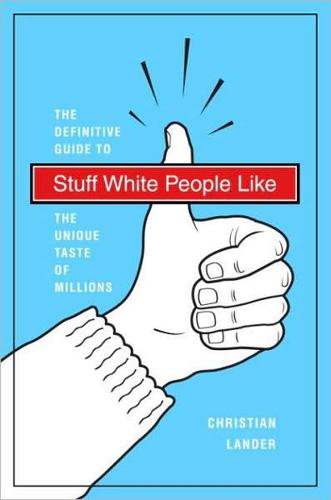
Stuff White People Like: A Definitive Guide to the Unique Taste of Millions
by
Christian Lander
Published 5 Aug 2008
Having one will give you precious leverage over any white person who is drinking from a plastic bottle. “Oh, bottled water? Really? I mean, it’s cool, but I kind of thought you cared about the Earth.” If you see someone drinking a Fiji water you have the opportunity to go in for the kill. “Do you know that your bottle of water has a bigger carbon footprint than me? I think they were originally going to call it Aboriginal Blood but that bottle was as close as they could get. You know, legally.” Again, this should only be used in extreme situations. Following your confrontation, the white person is likely to have a metal bottle just like yours.
…
There is no chance you will even be able to finish this story, as the white person you are talking to will interrupt you to tell you their version of the story. All you need in order to seal the friendship is to nod and reaffirm how right they are. 121 Reusable Shopping Bags Many white people have been able to decrease their carbon footprint by using plastic shopping bags for such diverse purposes as garbage bags and bathing-suit transport. Though helpful, the accumulation of bags is often at a much quicker pace than the reusing process, and within months, drawers and closets begin to fill up and are not emptied until the white person moves.
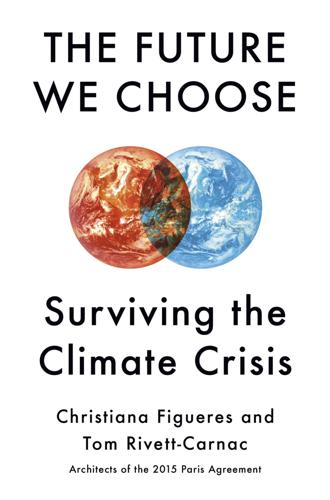
The Future We Choose: Surviving the Climate Crisis
by
Christiana Figueres
and
Tom Rivett-Carnac
Published 25 Feb 2020
In the UK, for example, the average person consumes more than sixty-five pounds of clothes every year, equivalent to about five loads of laundry.25 These purchases are driven mainly by the fact that fashion trends change each season. These cycles, by their very nature, require us to clear out our closets regularly and hop back in line for more clothes. But the fashion industry has an enormous carbon footprint. Textile production is second only to the oil industry for pollution. It adds more greenhouse gases to our atmosphere than all international flights and maritime shipping combined. Estimates suggest that the fashion industry is responsible for a whopping 10 percent of global CO2 emissions,26 and as we increase our consumption of fast fashion, the related emissions are set to grow rapidly.
…
At low cost, they provide wild-range, slow-grown, pasture-fed organic meat for which the market is growing. In just over a decade, Knepp has seen astonishing results in biodiversity. It is now a breeding hotspot for purple emperor butterflies, turtle doves, and 2 percent of the UK’s population of nightingales. * * * — Go plant-based. If you eat less meat and dairy, your carbon footprint will decrease, and your health will improve. Eating less meat and dairy is better, and eating none at all is best. While this may feel like a stretch for most of us, for the vast majority of human history we ate very little meat.60 Many countries are already shifting toward plant-based diets.

The Fundamentals of Interior Design
by
Dodsworth, Simon
and
Anderson, Stephen
Published 29 Jan 2015
Many, if not most, of the striking interior jokes, such as the bookcase in a car interior, sprung out of the resident’s imagination. What was your attitude to materials on the project, particularly the concrete, which is not generally considered to be an ecologically sound material? →As a material, concrete has quite a big carbon footprint. The energetic advantages it has as thermal mass in an embedded context are actually unrivaled by other choices of structure. This is exemplary for the discussions that were part of this project: what do we consider more important—energy or material? In this case, the energy won since the energetic advantage is a longer-lasting advantage.
…
In this case, the energy won since the energetic advantage is a longer-lasting advantage. This is a hard but necessary discussion. It puts the complexity of sustainable design in perspective. It forces you as a designer to take stand: do not try to solve everything at once. What was your overall attitude to sustainability? Was this dictated by energy performance, low carbon footprint, or recycling? →We have tried to insert sustainable thinking in all levels: context, volume, orientation, architecture, materials, installations, and energy use. Although we started the design with a high-tech attitude, we ended with a preference for low-tech solutions. We recognized during the design phase the domination of energy thinking in sustainable design and wanted to counter it with architectural thinking: flexibility and contextuality. 7.8 The interior is both a backdrop and a response to the owner’s eclectic collected objects.
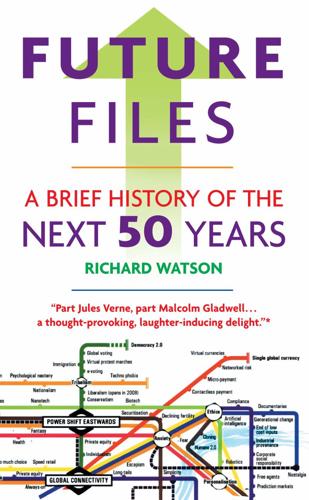
Future Files: A Brief History of the Next 50 Years
by
Richard Watson
Published 1 Jan 2008
In the future shoppers will be swayed by various green and ethical issues, some of which will be serious while others will be just plain silly. For example, there will be a crusade against retailers that sell lettuce on the basis that growing lettuces uses too much water; and a campaign to stop eating foreign food on the basis of its carbon footprint. Thus fair-trade products, food-miles, minimal and reusable packaging and products that benefit a local community or the wider world in some way will be in demand. Storytelling, authenticity and trust We are fed an endless diet of half-truths and manipulated statistics by companies (and governments) wanting us to buy something.
…
This problem will be solved once the issue reaches crisis proportions, but before that there will be a major switch to other forms of slower transport and a renaissance of local travel. Long-haul flight will again become an expensive luxury enjoyed only by the rich, who will have to withstand accusations of selfishness and ecovandalism. Hotels will similarly come under pressure to reduce their carbon footprints and conserve vital resources such as water. Staying at home If flying from one city or country to another becomes too expensive, too time-consuming or too stressful, many people will simply choose to stay at home. This means that business and leisure travel alike will become more localized, making people both more insular and parochial.
…
A 311 Index ‘O’ Garage 170 3D printers 56 accelerated education 57 accidents 159, 161–6, 173, 246 ACNielsen 126 adaptive cruise control 165 Adeg Aktiv 50+ 208 advertising 115–16, 117, 119 Africa 70, 89, 129, 174, 221, 245, 270, 275, 290, 301 ageing 1, 10, 54, 69, 93, 139, 147–8, 164, 188, 202, 208, 221, 228–9, 237, 239, 251, 261, 292, 295, 297–8 airborne networks 56 airlines 272 allergies 196–7, 234, 236 Alliance Against Urban 4x4s 171 alternative energy 173 alternative futures viii alternative medicine 244–5 alternative technology 151 amateur production 111–12 Amazon 32, 113–14, 121 American Apparel 207 American Express 127–8 androids 55 Angola 77 anti-ageing drugs 231, 237 anti-ageing foods 188 anti-ageing surgery 2, 237 antibiotics 251 anxiety 10, 16, 30, 32, 36, 37, 128, 149, 179, 184, 197, 199, 225, 228, 243, 251, 252, 256, 263, 283–4, 295–6, 300, 301, 305 Apple 61, 115, 121, 130, 137–8, 157 Appleyard, Bryan 79 Argentina 210 Armamark Corporation 193 artificial intelliegence 22, 40, 44, 82 131, 275, 285–6, 297, 300 Asda 136, 137 Asia 11, 70, 78, 89, 129, 150, 174, 221, 280, 290, 292 Asimov, Isaac 44 Asos.com 216 asthma 235 auditory display software 29 Australia 20–21, 72–3, 76, 92, 121, 145, 196, 242, 246, 250, 270, 282 Austria 208 authenticity 32, 37, 179, 194, 203–11 authoritarianism 94 automated publishing machine (APM) 114 automation 292 automotive industry 154–77 B&Q 279 baby boomers 41, 208 bacterial factories 56 Bahney, Anna 145 Bahrain 2 baking 27, 179, 195, 199 Bangladesh 2 bank accounts, body double 132 banknotes 29, 128 banks 22, 123, 135–8, 150, 151 virtual 134 Barnes and Noble 114 bartering 151 BBC 25, 119 Become 207 Belgium 238 313 314 benriya 28 Berlusconi, Silvio 92 Best Buy 223 biofuel 64 biomechatronics 56 biometric identification 28, 35, 52, 68, 88, 132 bionic body parts 55 Biosphere Expeditions 259 biotechnology 40, 300 blended families 20 blogs 103, 107, 109, 120 Blurb 113 BMW 289 board games 225 body double bank accounts 132 body parts bionic 55 replacement 2, 188, 228 Bolivia 73 Bollywood 111 books 29, 105, 111–25 boomerang kids 145 brain transplants 231 brain-enhancing foods 188 Brazil 2, 84, 89, 173, 247, 254, 270, 290 Burger King 184 business 13, 275–92 Bust-Up 189 busyness 27, 195, 277 Calvin, Bill 45 Canada 63, 78, 240 cancer 251 car sharing 160, 169, 176 carbon credits 173 carbon footprints 255 carbon taxes 76, 172 cars classic 168–9 driverless 154–5 flying 156, 165 hydrogen-powered 12, 31, 157, 173 pay-as-you-go 167–8 self-driving 165 cascading failure 28 cash 126–7, 205 cellphone payments 129, 213 cellphones 3, 25, 35, 51, 53, 120, 121, FUTURE FILES 129, 156, 161, 251 chicken, Christian 192 childcare robots 57 childhood 27, 33–4, 82–3 children’s database 86 CHIME nations (China, India, Middle East) 2, 10, 81 China 2, 10, 11, 69–72, 75–81, 88, 92–3, 125, 137, 139–40, 142, 151, 163, 174–5, 176, 200, 222, 228, 247, 260, 270–71, 275, 279, 295, 302 choice 186–7 Christian chicken 192 Christianity, muscular 16, 73 Chrysler 176 cinema 110–11, 120 Citibank 29, 128 citizen journalism 103–4, 108 City Car Club 168 Clarke, Arthur C. 58–9 Clarke’s 187 classic cars 168–9 climate change 4, 11, 37, 43, 59, 64, 68, 74, 77–9, 93, 150, 155, 254, 257, 264, 298–9 climate-controlled buildings 254, 264 cloning 38 human 23, 249 CNN 119 coal 176 Coca-Cola 78, 222–3 co-creation 111–12, 119 coins 29, 128, 129 collective intelligence 45–6 Collins, Jim 288 comfort eating 200 Comme des Garçons 216 community 36 compassion 120 competition in financial services 124–5 low-cost 292 computers disposable 56 intelligent 23, 43 organic 56 wearable 56, 302 computing 3, 33, 43, 48, 82 connectivity 3, 10, 11, 15, 91, 120, Index 233, 261, 275–6, 281, 292, 297, 299 conscientious objection taxation 86 contactless payments 123, 150 continuous partial attention 53 control 36, 151, 225 convenience 123, 178–9, 184, 189, 212, 223, 224 Coren, Stanley 246 corporate social responsibility 276, 282, 298 cosmetic neurology 250 Costa Rica 247 Craig’s List 102 creativity 11, 286; see also innovation credit cards 141–3, 150 crime 86–9 forecasting 86–7 gene 57, 86 Croatia 200 Crowdstorm 207 Cuba 75 cultural holidays 259, 273 culture 11, 17–37 currency, global 127, 151 customization 56, 169, 221–2, 260 cyberterrorism 65, 88–9 Cyc 45 cynicism 37 DayJet 262 death 237–9 debt 123–4, 140–44, 150 defense 63, 86 deflation 139 democracy 94 democratization of media 104, 108, 113 demographics 1, 10, 21, 69, 82, 93, 202, 276, 279–81, 292, 297–8 Denmark 245 department stores 214 deregulation 11, 3 Destiny Health 149 detox 200 Detroit Project 171 diagnosis 232 remote 228 digital downloads 121 evaporation 25 315 immortality 24–5 instant gratification syndrome 202 Maoism 47 money 12, 29, 123, 126–7, 129, 132, 138, 150, 191 nomads 20, 283 plasters 241 privacy 25, 97, 108 readers 121 digitalization 37, 292 Dinner by Design 185 dirt holidays 236 discount retailers 224 Discovery Health 149 diseases 2, 228 disintegrators 57 Disney 118–19 disposable computers 56 divorce 33, 85 DNA 56–7, 182 database 86 testing, compulsory 86 do-it-yourself dinner shops 185–6 dolls 24 doorbells 32 downshifters 20 Dream Dinners 185 dream fulfillment 148 dressmaking 225 drink 178–200 driverless cars 154–5 drugs anti-ageing 231, 237 performance-improving 284–5 Dubai 264, 267, 273 dynamic pricing 260 E Ink 115 e-action 65 Earthwatch 259 Eastern Europe 290 eBay 207 e-books 29, 37, 60, 114, 115, 302 eco-luxe resorts 272 economic collapse 2, 4, 36, 72, 221, 295 economic protectionism 10, 15, 72, 298 economy travel 272 316 Ecuador 73 education 15, 18, 82–5, 297 accelerated 57 lifelong learning 290 Egypt 2 electricity shortages 301 electronic camouflage 56 electronic surveillance 35 Elephant 244 email 18–19, 25, 53–4, 108 embedded intelligence 53, 154 EMF radiation 251 emotional capacity of robots 40, 60 enclosed resorts 273 energy 72, 75, 93 alternative 173 nuclear 74 solar 74 wind 74 enhancement surgery 249 entertainment 34, 121 environment 4, 10, 11, 14, 64, 75–6, 83, 93, 155, 171, 173, 183, 199, 219–20, 252, 256–7, 271, 292, 301 epigenetics 57 escapism 16, 32–3, 121 Estonia 85, 89 e-tagging 129–30 e-therapy 242 ethical bankruptcy 35 ethical investing 281 ethical tourism 259 ethics 22, 24, 41, 53, 78, 86, 132, 152, 194, 203, 213, 232, 238, 249–50, 258, 276, 281–2, 298–9 eugenics 252 Europe 11, 70, 72, 81, 91, 141, 150, 174–5, 182, 190, 192, 209 European Union 15, 139 euthanasia 238, 251 Everquest 33 e-voting 65 experience 224 extended financial families 144 extinction timeline 9 Facebook 37, 97, 107 face-recognition doors 57 fakes 32 family 36, 37 FUTURE FILES family loans 145 fantasy-related industries 32 farmaceuticals 179, 182 fast food 178, 183–4 fat taxes 190 fear 10, 34, 36, 38, 68, 150, 151, 305 female-only spaces 210–11, 257 feminization 84 financial crisis 38, 150–51, 223, 226, 301 financial services 123–53, 252 trends 123–5 fish farming 181 fixed-price eating 200 flashpacking 273 flat-tax system 85–6 Florida, Richard 36, 286, 292 flying cars 165 food 69–70, 72, 78–9, 162, 178–201 food anti-ageing 188 brain-enhancing 188 fast 178, 183–4 functional 179 growing your own 179, 192, 195 history 190–92 passports 200 slow 178, 193 tourism 273 trends 178–80 FoodExpert ID 182 food-miles 178, 193, 220 Ford 169, 176, 213, 279–80 forecasting 49 crime 86–7 war 49 Forrester Research 132 fractional ownership 168, 175, 176, 225 France 103, 147, 170, 189, 198, 267 Friedman, Thomas 278–9, 292 FriendFinder 32 Friends Reunited 22 frugality 224 functional food 179 Furedi, Frank 68 gaming 32–3, 70, 97, 111–12, 117, 130, 166, 262 Gap 217 Index gardening 27, 148 gas 176 GE Money 138, 145 gendered medicine 244–5 gene silencing 231 gene, crime 86 General Motors 157, 165 Generation X 41, 281 Generation Y 37, 41, 97, 106, 138, 141–2, 144, 202, 208, 276, 281, 292 generational power shifts 292 Genes Reunited 35 genetic enhancement 40, 48 history 35 modification 31, 182 testing 221 genetics 3, 10, 45, 251–2 genomic medicine 231 Germany 73, 147, 160, 170, 204–5, 216–17, 261, 267, 279, 291 Gimzewski, James 232 glamping 273 global currency 127 global warming 4, 47, 77, 93, 193, 234 globalization 3, 10, 15–16, 36–7, 63–7, 72–3, 75, 81–2, 88, 100, 125, 139, 143, 146, 170, 183, 189, 193–5, 221, 224, 226, 233–4, 247–8, 263, 275, 278–80, 292, 296, 299 GM 176 Google 22, 61, 121, 137, 293 gout 235 government 14, 18, 36, 63–95, 151 GPS 3, 15, 26, 50, 88, 138, 148, 209, 237, 262, 283 Grameen Bank 135 gravity tubes 57 green taxes 76 Greenpeace 172 GRIN technologies (genetics, robotics, internet, nanotechnology) 3, 10, 11 growing your own food 178, 192, 195 Gucci 221 Gulf States 125, 260, 268 H&M 217 habitual shopping 212 Handy, Charles 278 317 Happily 210 happiness 63–4, 71–2, 146, 260 health 15, 82, 178–9, 199 health monitoring 232, 236, 241 healthcare 2, 136, 144, 147–8, 154, 178–9, 183–4, 189–91, 228–53, 298; see also medicine trends 214–1534–7 Heinberg, Richard 74 Helm, Dieter 77 Heritage Foods 195 hikikomori 18 hive mind 45 holidays 31, 119; see also tourism holidays at home 255 cultural 259 dirt 236 Hollywood 33, 111–12 holographic displays 56 Home Equity Share 145 home baking 225 home-based microgeneration 64 home brewing 225 honesty 152 Hong Kong 267 hospitals 228, 241–3, 266 at home 228, 238, 240–42 hotels 19, 267 sleep 266 human cloning 23, 249 Hungary 247 hybrid humans 22 hydrogen power 64 hydrogen-powered cars 12, 31, 157, 173 Hyperactive Technologies 184 Hyundai 170 IBM 293 identities, multiple 35, 52 identity 64, 71 identity theft 88, 132 identity verification, two-way 132 immigration 151–2, 302 India 2, 10, 11, 70–72, 76, 78–9, 81, 92, 111, 125, 135, 139, 163, 174–5, 176, 247, 249–50, 254, 260, 270, 275, 279, 302 indirect taxation 86 318 individualism 36 Indonesia 2, 174 industrial robots 42 infinite content 96–7 inflation 151 information overlead 97, 120, 159, 285; see also too much information innovation 64, 81–2, 100, 175, 222, 238, 269, 277, 286–8, 291, 297, 299 innovation timeline 8 instant gratification 213 insurance 123, 138, 147–50, 154, 167, 191, 236, 250 pay-as-you-go 167 weather 264 intelligence 11 embedded 53, 154 implants 229 intelligent computers 23, 43 intelligent night vision 162–3 interaction, physical 22, 25, 97, 110, 118, 133–4, 215, 228, 243, 276, 304 interactive media 97, 105 intergenerational mortgages 140, 144–5 intermediaries 123, 135 internet 3, 10, 11, 17–18, 25, 68, 103, 108, 115–17, 124, 156, 240–41, 261, 270, 283, 289, 305 failure 301 impact on politics 93–4 sensory 56 interruption science 53 iPills 240 Iran 2, 69 Ishiguro, Hiroshi 55 Islamic fanaticism 16 Italy 92, 170, 198–9 iTunes 115, 130; see also Apple Japan 1, 18, 26, 28–9, 54–5, 63, 80–81, 114, 121, 128–9, 132, 140, 144–5, 147, 174, 186, 189, 192, 196, 198, 200, 209–10, 223, 240, 260, 264, 271, 279, 291 jetpacks 60 job security 292 journalism 96, 118 journalism, citizen 103–4, 107 joy-makers 57 FUTURE FILES Kaboodle 207 Kapor, Mitchell 45 Kenya 128 keys 28–9 Kindle 60, 121 Kramer, Peter 284 Kuhn, Thomas 281 Kurzweil, Ray 45 Kuwait 2 labor migration 290–91 labor shortages 3, 80–81, 289–90 Lanier, Jaron 47 laser shopping 212 leisure sickness 238 Let’s Dish 185 Lexus 157 libraries 121 Libya 73 life-caching 24, 107–8 lighting 158, 160 Like.com 216 limb farms 249 limited editions 216–17 live events 98, 110, 304 localization 10, 15–16, 116, 128, 170, 178, 189, 193, 195, 215, 220, 222–3, 224, 226, 255, 270, 297 location tagging 88 location-based marketing 116 longevity 188–9, 202 Longman, Philip 71 low cost 202, 219–22 luxury 202, 221, 225, 256, 260, 262, 265–6, 272 machinamas 112 machine-to-machine communication 56 marketing 115–16 location-based 116 now 116 prediction 116 Marks & Spencer 210 Maslow, Abraham 305–6 masstigue 223 materialism 37 Mayo Clinic 243 McDonald’s 130, 168, 180, 184 McKinsey 287 Index meaning, search for 16, 259, 282, 290, 305–6 MECU 132 media 96–122 democratization of 104, 108, 115 trends 96–8 medical outsourcing 247–8 medical tourism 2, 229, 247 medicine 188, 228–53; see also healthcare alternative 243–4 gendered 244–5 genomic 231 memory 229, 232, 239–40 memory loss 47 memory pills 231, 240 memory recovery 2, 228–9, 239 memory removal 29–30, 29, 240 Menicon 240 mental health 199 Meow Mix 216 Merriman, Jon 126 metabolomics 56 meta-materials 56 Metro 204–5 Mexico 2 micromedia 101 micro-payments 130, 150 Microsoft 137, 147, 293 Middle East 10, 11, 70, 81, 89, 119, 125, 129, 139, 174–5, 268, 301 migration 3, 11, 69–70, 78, 82, 234, 275, 290–91 boomerang 20 labor 290–91 Migros 215 military recruitment 69 military vehicles 158–9 mind-control toys 38 mindwipes 57 Mitsubishi 198, 279 mobile payments 123, 150 Modafinil 232 molecular biology 231 monetization 118 money 123–52 digital 12, 29, 123, 126–7, 129, 132, 138, 150, 191 monitoring, remote 154, 168, 228, 242 monolines 135, 137 319 mood sensitivity 41, 49, 154, 158, 164, 187–8 Morgan Stanley 127 mortality bonds 148 Mozilla Corp. 289 M-PESA 129 MTV 103 multigenerational families 20 multiple identities 35, 52 Murdoch, Rupert 109 muscular Christianity 16, 73 music industry 121 My-Food-Phone 242 MySpace 22, 25, 37, 46, 97, 107, 113 N11 nations (Bangladesh, Egypt, Indonesia, Iran, South Korea, Mexico, Nigeria, Pakistan, Philippines, Turkey, Vietnam) 2 nanoelectronics 56 nanomedicine 32 nanotechnology 3, 10, 23, 40, 44–5, 50, 157, 183, 232, 243, 286, 298 napcaps 56 narrowcasting 109 NASA 25, 53 nationalism 16, 70, 72–3, 139, 183, 298, 302 natural disasters 301 natural resources 2, 4, 11, 64, 298–9 Nearbynow 223 Nestlé 195 Netherlands 238 NetIntelligence 283 networkcar.com 154 networks 28, 166, 288 airborne 56 neural nets 49 neuronic whips 57 neuroscience 33, 48 Neville, Richard 58–9 New Economics Foundation 171 New Zealand 265, 269 newspapers 29, 102–9, 117, 119, 120 Nigeria 2, 73 Nike 23 nimbyism 63 no-frills 224 Nokia 61, 105 Norelift 189 320 Northern Rock 139–40 Norwich Union 167 nostalgia 16, 31–2, 51, 169–70, 179, 183, 199, 203, 225, 303 now marketing 116 nuclear annihilation 10, 91 nuclear energy 74 nutraceuticals 179, 182 Obama, Barack 92–3 obesity 75, 190–92, 199, 250–51 oceanic thermal converters 57 oil 69, 72–3, 93, 151, 174, 176, 272, 273, 301 Oman 2, 270 online relationships 38 organic computers 56 organic food 200, 226 osteoporosis 235 outsourcing 224, 292 Pakistan 2 pandemics 4, 10, 16, 59, 72, 128, 232, 234, 272, 295–7, 301 paper 37 parasite singles 145 passwords 52 pictorial 52 pathogens 233 patient simulators 247 patina 31 patriotism 63, 67, 299 pay-as-you-go cars 167–8 pay-as-you-go insurance 167 payments cellphone 129, 213 contactless 123, 150 micro- 130, 150 mobile 123, 150 pre- 123, 150 PayPal 124, 137 Pearson, Ian 44 performance-improving drugs 284–5 personal restraint 36 personal robots 42 personalization 19, 26, 56, 96–8, 100, 102–3, 106, 108–9, 120, 138, 149, 183, 205–6, 223, 244–5, 262, 267, 269 Peru 73 FUTURE FILES Peters, Tom 280 Pharmaca 244 pharmaceuticals 2, 33, 228, 237 Philippines 2, 212, 290 Philips 114 Philips, Michael 232–3 photographs 108 physical interaction 22, 25, 97, 110, 118, 133–4, 215, 228, 243, 276, 304 physicalization 96–7, 101–2, 106, 110, 120 pictorial passwords 52 piggy banks 151 Pink, Daniel 285 plagiarism 83 polarization 15–16, 285 politics 37, 63–95, 151–2 regional 63 trends 63–5 pop-up retail 216, 224 pornography 31 portability 178, 183–4 power shift eastwards 2, 10–11, 81, 252 Prada 205–6, 216 precision agriculture 181–2 precision healthcare 234–7 prediction marketing 116 predictions 37, 301–2 premiumization 223 pre-payments 123, 150 privacy 3, 15, 41, 50, 88, 154, 165–7, 205, 236, 249, 285, 295 digital 25, 97, 108 Procter & Gamble 105, 280 product sourcing 224 Prosper 124, 135 protectionism 67, 139, 156, 220, 226, 301 economic 10, 15, 72, 299 provenance 178, 193, 226 proximity indicators 32 PruHealth 149 psychological neoteny 52 public ownership 92 public transport 171 purposeful shopping 212 Qatar 2 quality 96–7, 98, 101, 109 Index quantum mechanics 56 quantum wires 56 quiet materials 56 radiation, EMF 251 radio 117 randominoes 57 ranking 34, 83, 109, 116, 134, 207 Ranking Ranqueen 186 reality mining 51 Really Cool Foods 185 rebalancing 37 recession 139–40, 202, 222 recognition 36, 304 refrigerators 197–8 refuge 121 regeneration 233 regional food 200 regional politics 63 regionality 178, 192–3 regulation 124, 137, 143 REI 207 Reid, Morris 90 relationships, online 38 religion 16, 58 remote diagnosis 228 remote monitoring 154, 168, 228, 242 renting 225 reputation 34–5 resistance to technology 51 resorts, enclosed 273 resource shortages 11, 15, 146, 155, 178, 194, 254, 300 resources, natural 2, 4, 11, 64, 73–4, 143, 298–9 respect 36, 304 restaurants 186–8 retail 20–21, 202–27, 298 pop-up 216, 224 stealth 215 theater 214 trends 202–3 Revkin, Andy 77 RFID 3, 24, 50, 121, 126, 149, 182, 185, 192, 196, 205 rickets 232 risk 15, 124, 134, 138, 141, 149–50, 162, 167, 172, 191, 265, 299–300, 303 Ritalin 232 321 road pricing 166 Robertson, Peter 49 robogoats 55 robot department store 209 Robot Rules 44 robotic assistants 54, 206 concierges 268 financial advisers 131–2 lobsters 55 pest control 57 soldiers 41, 55, 60 surgery 35, 41, 249 robotics 3, 10, 41, 44–5, 60, 238, 275, 285–6, 292, 297 robots 41, 54–5, 131, 237, 249 childcare 57 emotional capacity of 40, 60 industrial 42 personal 42 security 209 therapeutic 41, 54 Russia 2, 69, 72, 75, 80, 89, 92–3, 125, 174, 232, 254, 270, 295, 302 safety 32, 36, 151, 158–9, 172–3, 182, 192, 196 Sainsbury’s 215 Salt 187 sanctuary tourism 273 satellite tracking 166–7 Saudi Arabia 2, 69 Schwartz, Barry 186 science 13, 16, 40–62, 300 interruption 53 trends 40–42 scramble suits 57 scrapbooking 25, 108, 225 Sears Roebuck 137 seasonality 178, 193–4 second-hand goods 224 Second Life 133, 207–8 securitization 124, 140 security 16, 31, 151 security robots 209 self-driving cars 165 self-medication 242 self-publishing 103, 113–14 self-reliance 35, 75 self-repairing roads 57 322 self-replicating machines 23, 44 Selfridges 214 sensor motes 15, 50, 196 sensory internet 56 Sharia-based investment 125 Shop24 209 shopping 202–27 habitual 212 laser 212 malls 211–5 purposeful 212 slow 213 social 207 Shopping 2.0 224 short-wave scalpels 57 silicon photonics 56 simplicity 169–70, 179, 186, 202, 218, 224, 226, 272 Singapore 241 single-person households 19–20, 202–3, 208–9, 221, 244, 298, 304 skills shortage 293, 302 sky shields 57 sleep 159–60, 188, 228, 231, 246–7, 265 sleep debt 96, 266 sleep hotels 266 sleep surrogates 57 slow food 178, 193 slow shopping 213 slow travel 273 smart devices 26–7, 28, 32, 35, 44, 50, 56, 57, 164, 206, 207 smart dust 3, 15, 50, 196 smartisans 20 Smartmart 209 snakebots 55 social networks 97, 107, 110, 120, 133, 217, 261 social shopping 207 society 13, 15–16, 17–37 trends 15–16 Sodexho 193 solar energy 74 Sony 114, 121 South Africa 84, 149, 242 South America 82, 270 South Korea 2, 103, 128–9 space ladders 56 space mirrors 47 space tourism 271, 273 FUTURE FILES space tugs 57 speed 164, 202, 209, 245, 296–7 spirituality 16, 22, 282, 298, 306 spot knowledge 47 spray-on surgical gloves 57 St James’s Ethics Centre 282 stagflation 139 starch-based plastics 64 stealth retail 215 stealth taxation 86 Sterling, Bruce 55 storytelling 203 Strayer, David 161 street signs 162–3 stress 32, 96, 235, 243, 245–6, 258–9, 265, 257–9, 275, 277, 283–5 stress-control clothing 57 stupidity 151, 302 Stylehive 207 Sudan 73 suicide tourism 236 Super Suppers 185 supermarkets 135–6, 184–6, 188, 191–2, 194, 202–3, 212, 215, 218–19, 224, 229 surgery 2, 31 anti-ageing 2, 237 enhancement 249 Surowiecki, James 45 surveillance 35, 41 sustainability 4, 37, 74, 181, 193–5, 203, 281, 288, 298–9 Sweden 84 swine flu 38, 251, 272 Switzerland 168, 210, 215 synthetic biology 56 Taco Bell 184 Tactical Numerical Deterministic Model 49 tagging, location 86, 88 Taiwan 81 talent, war for 275, 279, 293; see also labor shortages Target 216 Tasmania 267 Tata Motors 174, 176 taxation 85–6, 92, 93 carbon 76, 172 conscientious objection 86 Index fat 190 flat 85–6 green 76 indirect 86 stealth 86 Tchibo 217 technology 3, 14–16, 18, 22, 26, 28, 32, 37, 40–62, 74–5, 82–3, 96, 119, 132, 147–8, 154, 157, 160, 162, 165–7, 178, 182, 195–8, 208, 221, 229, 237, 242–3, 249, 256, 261, 265–6, 268, 275–6, 280, 283–4, 292, 296–7, 300 refuseniks 30, 51, 97 trends 40–42 telemedicine 228, 238, 242 telepathy 29 teleportation 56 television 21, 96, 108, 117, 119 terrorism 67, 91, 108, 150, 262–3, 267, 272, 295–6, 301 Tesco 105, 135–6, 185, 206, 215, 219, 223 Thailand 247, 290 therapeutic robots 41, 54 thermal imaging 232 things that won’t change 10, 303–6 third spaces 224 ThisNext 207 thrift 224 Tik Tok Easy Shop 209 time scarcity 30, 96, 102, 178, 184–6, 218, 255 time shifting 96, 110, 116 time stamps 50 timeline, extinction 9 timeline, innovation 8 timelines 7 tired all the time 246 tobacco industry 251 tolerance 120 too much choice (TMC) 29, 202, 218–19 too much information (TMI) 29, 51, 53, 202, 229; see also information overload tourism 254–74 cultural 273 ethical 259 food 273 323 local 273 medical 2, 229, 247 sanctuary 273 space 271, 273 suicide 238 tribal 262 Tourism Concern 259 tourist quotas 254, 271 Toyota 48–9, 157 toys, mind-control 38 traceability 195 trading down 224 transparency 3, 15, 143, 152, 276, 282, 299 transport 15, 154–77, 298 public 155, 161 trends 154–6 transumerism 223 travel 2, 3, 11, 148, 254–74 economy 272 luxury 272 slow 273 trends 254–6 trend maps 6–7 trends 1, 5–7, 10, 13 financial services 123–5 food 178–80 healthcare 228–9 media 96–8 politics 63–5 retail 202–3 science and technology 40–42 society 15–16 transport 154–6 travel 254–6 work 275–7 tribal tourism 262 tribalism 15–16, 63, 127–8, 183, 192, 220, 260 trust 82, 133, 137, 139, 143, 192, 203, 276, 282–3 tunnels 171 Turing test 45 Turing, Alan 44 Turkey 2, 200, 247 Twitter 60, 120 two-way identity verification 132 UAE 2 UFOs 58 324 UK 19–20, 72, 76, 84, 86, 90–91, 100, 102–3, 105, 128–9, 132, 137, 139–42, 147–9, 150, 163, 167–8, 170–71, 175, 185, 195–6, 199, 200, 206, 210, 214–16, 238, 259, 267–8, 278–9, 284, 288 uncertainty 16, 30, 34, 52, 172, 199, 246, 263, 300, 303 unemployment 151 Unilever 195 University of Chicago 245–6 urban rental companies 176 urbanization 11, 18–19, 78, 84, 155, 233 Uruguay 200 US 1, 11, 19–21, 23, 55–6, 63, 67, 69, 72, 75, 77, 80–83, 86, 88–90, 92, 104–5, 106, 121, 129–33, 135, 139–42, 144, 147, 149, 150, 151, 162, 167, 169–71, 174, 185, 190–3, 195, 205–6, 209, 211, 213, 216, 218, 220, 222–3, 237–8, 240–8, 250, 260, 262, 267–8, 275, 279–80, 282–4, 287, 291 user-generated content (UGC) 46, 97, 104, 289 utility 224 values 36, 152 vending machines 209 Venezuela 69, 73 verbal signatures 132 VeriChip 126 video on demand 96 Vietnam 2, 290 Vino 100 113 Virgin Atlantic 261 virtual adultery 33 banks 134 economy 130–31 protests 65 reality 70 sex 32 stores 206–8 vacations 32, 261 worlds 157, 213, 255, 261, 270, 305 Vocation Vacations 259–60 Vodafone 137 voice recognition 41 voice-based internet search 56 voicelifts 2, 237 FUTURE FILES Volkswagen 175 voluntourism 259 Volvo 164 voting 3, 68, 90–91 Walgreens 244 Wal-Mart 105, 136–7, 215, 219–20, 223, 244, 282 war 68–9, 72 war for talent 275, 279; see also labor shortages war forecasting 49 water 69–70, 74, 77–9, 199 wearable computers 55 weather 64 weather insurance 264 Web 2.0 93, 224 Weinberg, Peter 125 wellbeing 2, 183, 188, 199 white flight 20 Wikipedia 46, 60, 104 wild swimming 273 Wilson, Edward O. 74 wind energy 74 wine producers 200 wisdom of idiots 47 Wizard 145 work 275–94 trends 275–94 work/life balance 64, 71, 260, 277, 289, 293 worldphone 19 xenophobia 16, 63 YouTube 46, 103, 107, 112 Zara 216–17 Zipcar 167 Zopa 124, 134
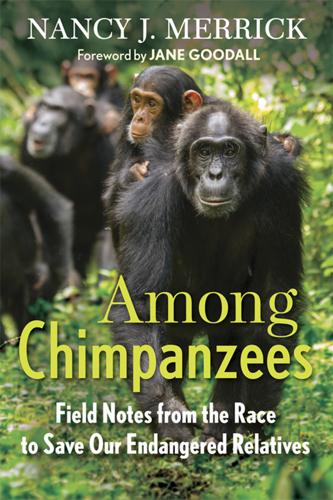
Among Chimpanzees
by
Nancy J. Merrick
He had recently returned from a five-week tour of eight African countries, drawing attention through his blogs and lectures to the loss of gorilla populations through Africa. Now, he was beginning a lecture tour that would take him across the United States, traveling by bus so as to minimize his carbon footprint, just as he had done while traveling in Africa. He was on tour to help support GRASP’s work and to do whatever he could to raise awareness here and in Africa about the critically endangered gorillas. As luck had it, Redmond was planning a lecture at the Los Angeles Zoo a week later, and I quickly purchased tickets.3 He would be speaking about his beloved gorillas, the great ape with which chimpanzees often share forests, and providing an overview of what it will take to save Africa’s great apes.
…
Then create a community, and start growing the number of people where you live who are networking for change. 8. LIVE MORE SUSTAINABLY If everyone on the planet lived an American lifestyle, it would take the natural resources of four Earths to sustain them. It is time to start looking critically at the amount of waste and stuff in our lives and to make changes.5 Check an online carbon-footprint calculator such as the one found on the website of the Nature Conservancy (www.nature.org/green-living/carboncalculator/index.htm) for help on where to start. Be sure to recycle your phone and electronic devices with a program such as Eco-Cell (www.eco-cell.com), remembering the impact that coltan and tantalum capacitors are having on forests and wildlife.
…
Active Conservation Awareness Program, WildAid, 105 Afi Mountain Wildlife Sanctuary, 134 African Wildlife Foundation, 217 Afrika (chimpanzee), 21–23, 24, 131 AIDS research, 171, 172–73 AIDS treatment program, 44, 163, 194, 200, 211 Ajarova, Lilly, 14, 131, 140, 142 Akagera National Park, 115 American Sign Language, 78–79 Amin, Idi, 15–16, 88, 130, 163, 164 Annan, Kofi, 161, 162, 227 Arcus Foundation, 166 Association of Zoos and Aquariums, 180, 188 Baeckler, Sarah, 185 Bailey, Jarrod, 173 Bandit (chimpanzee), xiv, 91, 93 Barnard, Christian, 172 Benedict, Faye, 50–54 biomedical research with chimps: costs versus benefits, 171–73; morality of, 174; movement in US to limit, 173–74; xenotransplantation and, 172 black rhinos, 149 Bonobo Conservation Initiative, 205 bonobos (Pan paniscus), 52, 102; endangered species designation, 205; likely population loss scenario, 213; resemblance to humans, 74; similarity and differences with chimps, 204–5 Bornean orangutans, 213 Born Free Foundation, 103 British-American Tobacco Company, 141 Bryceson, Derek, 158 Bugoma and Budongo Forest Reserves, 135, 137, 139 Bulindi Survivor chimpanzee group, 231–33 Burundi: chimp rescue story, 19–20; history of atrocities, 42–43, 163, 164; location, 41; refugees in Kigoma, 82 Bushmeat Crisis Task Force, 148 bushmeat trade: campaigns promoting other sources of protein, 150; DNA barcoding project, 146–47; efforts to work with timber concessions, 154; impact on wildlife populations, 104–5, 148; international landscape conservation efforts, 153–54; law enforcement response to wildlife crime, 151, 155; percentage that is ape meat, 148; poachers’ profit motivation, 149; poaching in national parks, 152–53; popularity of bushmeat as a protein source, 147–48; public-awareness campaigns against, 149; strategies and tactics for addressing poaching, 150–52; traffickers and corruption and, 150, 154–55, 208 Bwindi Impenetrable National Park, 115, 122, 123, 125–30 Cameroon: bushmeat trade in, 105; chimp population status in, 206, 213; Drori’s anti-trafficking efforts in, 150–51; primate-protection efforts in, 134; threats to the chimp population, 144 CAP (Conservation Action Plan): elements of the program, 197–98; estimated costs, 200 carbon-footprint calculator, 219 CarbonFund.org, 219 Cargo Tracck, 209 Carlos (chimpanzee), 165–66, 175 Carnegie Commission on Preventing Deadly Conflict, 160 Carnegie Corporation of New York, 159–61 CBFP (Congo Basin Forest Partnership), 153, 215 Center for Great Apes, Florida, 184 Central African Bushmeat Monitoring System.
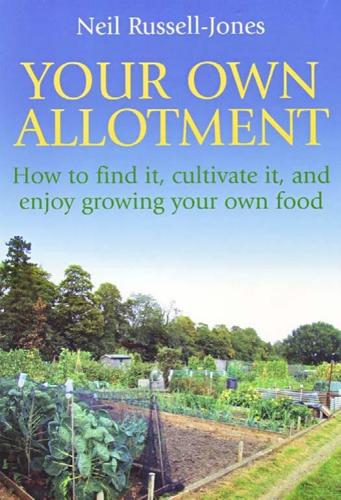
Your Own Allotment : How to Find It, Cultivate It, and Enjoy Growing Your Own Food
by
Russell-Jones, Neil.
Published 21 Mar 2008
There is also concern at the lack of choice in the produce offered: for instance, few of the many interesting and tasty varieties of apples that once abounded in the UK are now available. A number of factors started us on our venture into the world of allotments. My family and I wanted to know where our food came from; how it was produced; and also to ensure that the ‘carbon footprint’ was as small as possible. We had both been brought up in or near the countryside – rather than in cities – and remembered things as they were (or might have been – nostalgia is rose-tinted). We wanted our children to share the experiences that we remembered. There is nothing like plucking peas straight from the pod; or picking a strawberry and popping it into your mouth.
…
Many items are grown on large industrial agri-business farms across Europe or even further afield, where techniques have been developed to allow for mass sowing, uniform ripening and mass harvesting, often at the expense of taste and flavour (the cotton wool wrapped in yellow wax that purports to be a French Golden Delicious is neither golden nor delicious). Or they are imported from across the globe, travelling long distances to reach us and, therefore, stuffed full of preservatives; or picked to ripen en route away from the plant and making a huge ‘carbon footprint’. Either way it is less than ideal. Fresh in many cases, therefore, merely means as fresh as it can be, given the circumstances. This is not to say it is a bad thing necessarily – as global trade is generally good for all – but importing food that is also, or could be, grown locally does seem illogical – even to give a wider choice.
…
G They can experiment with new and interesting varieties, unusual crops, intercropping, new techniques, etc. G They can ‘get back to their roots’ and ‘commune with the land’. G It helps to deal with the stresses of modern life. G It is a fun and rewarding experience (if hard work sometimes). G It is a good family activity – providing quality time together. G It leaves a smaller carbon footprint, which is important to many. G It provides a great deal of healthy exercise (digging, walking, cycling). And so, lacking space at home, they choose to have an allotment. Politics and agriculture have long been linked – the Corn Laws in the eighteenth century; the wasteful and heavily subsidised European Common Agricultural Policy (CAP), which encourages use of pesticides and creates large unwanted mountains and lakes of produce; the general subsidies allocated by many countries to farmers; the difficulty in getting real free trade to help third-world countries, etc.
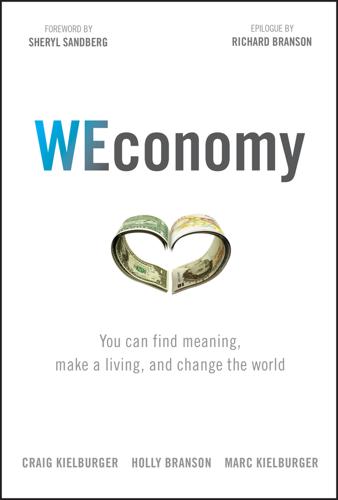
WEconomy: You Can Find Meaning, Make a Living, and Change the World
by
Craig Kielburger
,
Holly Branson
,
Marc Kielburger
,
Sir Richard Branson
and
Sheryl Sandberg
Published 7 Mar 2018
We also knew this would have a number of benefits, and we could build on our Virgin values. Enhance our reputation. Increase efficiencies. Run a successful business. And help to be a leader in our industry. Sweating the BIG Stuff: Where Do You Even Begin? We recognized early on that, as an airline, our biggest issue would be our carbon emissions. In fact, our carbon footprint measurements have confirmed that Virgin Atlantic's carbon emissions from aircraft operations dwarf everything else we do, with more than 99.9 percent of our direct emissions coming from aircraft fuel use. Even when we factor in our supply chains, aircraft fuel consumption still accounts for around two-thirds of our emissions, with only a fraction of a percent from ground energy and ground fuel use.
…
Visit www .virginatlantic.com/changeisintheair for details. Go explore: When you're away, grab a map and walk or cycle instead of taking a taxi. You'll be amazed what you'll discover! Live like a local: Eat, drink, and shop locally. Use local forms of public transport, too. You'll reduce your carbon footprint, help support the local economy, and learn more about the country you're visiting. It's Not ALL about Carbon . . . Anyone working in sustainable business will know that one of the other big things a company can do is to work with suppliers on making the products and services it buys more sustainable, particularly in terms of improving their people, animal, and environmental credentials.
…
You'll help save emissions on all that unnecessary transport moving water around, as well as help reduce the millions of tons of waste plastic bottles generated every year. Before you buy, always ask yourself if you really need more stuff. Spend your money on fun experiences instead! Transport For short journeys, walk, run, or cycle. This will get you fit while reducing your carbon footprint. Too exhausting? Use public transport whenever you can, and if you're shopping for a new car, choose the lowest fuel consumption/CO2 emissions car possible and look up car sharing schemes. These measures will save you money, too. And remember those little things that add up. Stop idling your car—just ten minutes less per day can save you 8.9 gallons of fuel each year.

Falter: Has the Human Game Begun to Play Itself Out?
by
Bill McKibben
Published 15 Apr 2019
At the Department of the Interior, Ryan Zinke asked the staff at a Koch-funded institute to draw up language for his resolution shrinking the size of national monuments to allow for more oil and gas drilling. At the Department of Energy, Rick Perry (who once skipped his own arraignment on two felony charges to attend a Koch event) issued new analyses showing that the United States wouldn’t reduce its carbon footprint until 2050, meaning that America would “almost singlehandedly exhaust the planet’s carbon budget.”31 The key positions in the Department of Energy’s renewable energy office were filled by people coming directly from “the Koch Brothers’ numerous anti-clean-energy efforts.” The new head of the Office of Energy Efficiency and Renewable Energy, for instance, had gained experience for his post by urging Americans to stockpile incandescent lightbulbs from Amazon on the grounds that an intrusive federal government would next be banning night baseball to save electricity.32 If you tried to figure out the worst way to respond to climate change, all this is what it would look like.
…
The Borkowskis paid for the improvements, but the utility financed the charges through their electric bill, which fell the very first month. Before the makeover, from October 2013 to January 2014, the Borkowskis used 3,411 kilowatt hours of electricity and 325 gallons of fuel oil. From October 2014 to January 2015, they used 2,856 kilowatt hours of electricity and no oil at all. They reduced the carbon footprint of their house by 88 percent in a matter of days, and at no net cost. If you multiply these kinds of small changes across many households, it pays off for everyone. Green Mountain Power, for instance, was the first utility to subsidize its customers’ purchase of Tesla Powerwall batteries. Two thousand Vermonters installed them, and when a savage heat wave hit in the summer of 2018, GMP was able to draw on the current they had stored away—which saved the state’s rate payers half a million dollars in a single week, compared to the cost of buying outside power.11 The same sort of change is possible everywhere, at almost any scale.
…
Bill McKibben, “McCain’s Lonely War on Global Warming,” onEarth, March 31, 2004. 29. Rebecca Shabad, “McCain to Kerry: What Planet Are You On?” TheHill, February 19, 2014. 30. Hiroko Tabuchi, “Rooftop Solar Dims Under Pressure from Utility Lobbyists,” New York Times, July 8, 2017. 31. John Cushman Jr., “No Drop in U.S. Carbon Footprint Expected through 2050, Energy Department Says,” InsideClimate News, February 6, 2018. 32. Daniel Simmons, “Does the Federal Government Think We Are Dim Bulbs?” instituteforenergyresearch.org, December 18, 2013. CHAPTER 12 1. Nellie Bowles, “Silicon Valley Flocks to Foiling, Racing Above the Bay’s Waves,” New York Times, August 20, 2017. 2.
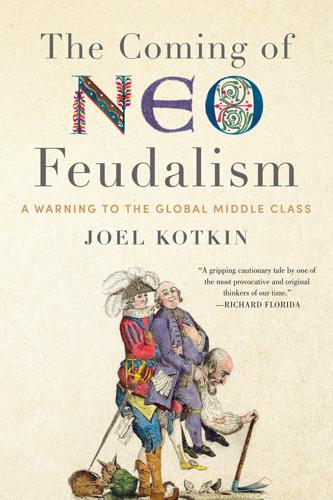
The Coming of Neo-Feudalism: A Warning to the Global Middle Class
by
Joel Kotkin
Published 11 May 2020
‘Warning Signs Are Flashing Red,’” New York Times, November 29, 2016, https://www.nytimes.com/2016/11/29/world/americas/western-liberal-democracy.html?_r=0. 33 Francis Fukuyama, The End of History and the Last Man (New York: Free Press, 1992), 12. 34 Emily Atkin, “Al Gore’s Carbon Footprint Doesn’t Matter,” New Republic, August 7, 2017, https://newrepublic.com/article/144199/al-gores-carbon-footprint-doesnt-matter; “How Electricity Became a Luxury Good,” Spiegel, September 4, 2013, http://www.spiegel.de/international/germany/high-costs-and-errors-of-german-transition-to-renewable-energy-a-920288-2.html; Dagmara Stoerring, “Energy Poverty,” European Parliament, November 9, 2016, http://www.europarl.europa.eu/RegData/etudes/STUD/2017/607350/IPOL_STU(2017)607350_EN.pdf. 35 Salena Zito and Brad Todd, The Great Revolt: Inside the Populist Coalition Reshaping American Politics (New York: Crown Forum, 2018), 3, 246. 36 Guilluy, Twilight of the Elites, 15; Pascal-Emmanuel Gobry, “The Failure of the French Elite,” Wall Street Journal, February 22, 2019, https://www.wsj.com/articles/the-failure-of-the-french-elite-11550851097?
…
Cantor, Medieval History: The Life and Death of a Civilization (New York: Macmillan, 1963), 25. 34 Lyman Stone, “In a State of Migration,” Medium, December 30, 2019, https://medium.com/migration-issues/more-thoughts-on-falling-fertility-366fd1a84d8; Rachel Lu, “The Problem with the ‘Science’ Behind Having Fewer Children for the Planet’s Sake,” National Review, July 15, 2017, https://www.nationalreview.com/2017/07/climate-change-study-population-reduction-childlessness-recommendation-preposterous-carbon-footprint/; Paul A. Murtaugh and Michael G. Schlax, “Reproduction and the carbon legacies of individuals,” Global Environment Change, vol. 190 (2009), 14–20, https://www.biologicaldiversity.org/programs/population_and_sustainability/pdfs/OSUCarbonStudy.pdf. 35 Simon Evans and Rosamund Pearce, “Global coal power,” Carbon Brief, March 25, 2019, https://www.carbonbrief.org/mapped-worlds-coal-power-plants; China Is a Highly Suspect Leader on Climate Change,” Wall Street Journal, June 2, 2017, https://www.wsj.com/articles/china-is-a-highly-suspect-leader-on-climate-change-1496394151; Keith Bradsher and Lisa Friedman, “China’s Emissions: More Than U.S.

Ghost Road: Beyond the Driverless Car
by
Anthony M. Townsend
Published 15 Jun 2020
Cars teach us to make tough financial choices, too. Some hit close to home. Borrow the family car or save for one’s own? Get a part-time job to pay for insurance and gas? Other questions seem almost too far-off to feel. How does the price of gas on the corner reflect tensions in the Middle East? What is the carbon footprint of my commute? Our daily decisions about automobiles make amateur economists, political scientists, and environmentalists of us all. Today, this coming-of-age story is changing fast. Cars no longer play the leading part they once did. In the 1980s, about 70 percent of 17-year-olds in America had their driver’s license.
…
Each innovation—whether it’s night delivery or right-sized vehicles—will trigger an abrupt increase in the volume of goods moving along our streets. The impacts will be disproportionately severe in cities and metropolitan areas, where roads are already close to capacity. Meanwhile, the total amount of shipping will continue to swell, along with the carbon footprint of making and moving all those goods. Thankfully, at some point the pace of disruption will peter out. There will always be some sources of friction that impede the free flow of goods. These include the cost of fulfillment centers themselves (Amazon has over 100 in North America that cost $100 million each to build and consume enormous amounts of electricity); maintenance, repair, and remote monitoring for millions of conveyors and mules; and the lingering challenge of the last meter, where gates, stairs, and elevators stymie even the smartest robots.
…
In these final pages, I propose a set of principles for a more aspirational, thoughtful living that I call big mobility. Think of it as a code for humans in the driverless revolution that distills what we know about the future to make better decisions today. Big mobility makes three assumptions about the future. First, big mobility is technology-enabled. It embraces automation as a means to reduce the cost, carbon footprint, and danger of vehicle transportation. We shouldn’t rush to place restrictions on AVs, but we also mustn’t shy away from exercising strong oversight on their development and use. And we must search for ways to exploit their efficiency and flexibility, without compromising our values. Second, big mobility is travel-intensive.

Lifestyle Entrepreneur: Live Your Dreams, Ignite Your Passions and Run Your Business From Anywhere in the World
by
Jesse Krieger
Published 2 Jun 2014
Vision-MAP for Village Green Energy After working on clean energy projects as an investment banker, I co-founded a company called Village Green Energy (VGE) to work directly in the carbon credit and compliance market. VGE purchases clean energy credits from solar, wind and biogas energy generators and sells them retail to businesses and households who want to reduce their carbon footprint. We also built a Facebook application which addressed sustainability in the wine industry. The company was sold in 2010. Vision: Provide a realistic way for concerned businesses and individuals to reduce their carbon footprint and communicate their efforts with customers, friends and family. Mission: Build a portfolio of renewable energy generators to sell VGE wholesale energy credits. Build a network of businesses and customers to purchase retail energy credits.

Lifespan: Why We Age—and Why We Don't Have To
by
David A. Sinclair
and
Matthew D. Laplante
Published 9 Sep 2019
“Municipal Solid Waste,” Environmental Protection Agency, March 29, 2016, https://archive.epa.gov/epawaste/nonhaz/municipal/web/html/. 16. If you run your dryer two hundred times a year, according to a Guardian column on the carbon footprint of everyday items, that would generate approximately half a ton of CO2. M. Berners-Lee and D. Clark, “What’s the Carbon Footprint of . . . a Load of Laundry?,” Guardian, November 25, 2010, https://www.theguardian.com/environment/green-living-blog/2010/nov/25/carbon-footprint-load-laundry. 17. MIT students estimated that “Whether you live in a cardboard box or a luxurious mansion, whether you subsist on homegrown vegetables or wolf down imported steaks, whether you’re a jet-setter or a sedentary retiree, anyone who lives in the U.S. contributes more than twice as much greenhouse gas to the atmosphere as the global average.”
…
MIT students estimated that “Whether you live in a cardboard box or a luxurious mansion, whether you subsist on homegrown vegetables or wolf down imported steaks, whether you’re a jet-setter or a sedentary retiree, anyone who lives in the U.S. contributes more than twice as much greenhouse gas to the atmosphere as the global average.” Massachusetts Institute of Technology, “Carbon Footprint of Best Conserving Americans Is Still Double Global Average,” Science Daily, https://www.sciencedaily.com/releases/2008/04/080428120658.htm. 18. Residents of Luxembourg, Qatar, Australia, and Canada have greater average levels of consumption and waste, according to the Global Footprint Network, https://www.footprintnetwork.org/. 19. “Country Overshoot Days,” Earth Overshoot Day, https://www.overshootday.org/about-earth-overshoot-day/country-overshoot-days/. 20.

The Industries of the Future
by
Alec Ross
Published 2 Feb 2016
Collectively, miners spend nearly: Mark Gimein, “Virtual Bitcoin Mining Is a Real-World Environmental Disaster,” Bloomberg, April 12, 2013, http://www.bloomberg.com/news/2013-04-12/virtual-bitcoin-mining-is-a-real-world-environmental-disaster.html; Tim Worstall, “Fascinating Number: Bitcoin Mining Uses $15 Million’s Worth of Electricity Every Day,” Forbes, December 3, 2013, http://www.forbes.com/sites/timworstall/2013/12/03/fascinating-number-bitcoin-mining-uses-15-millions-worth-of-electricity-every-day/. In 2013, the Bitcoin community: Michael Carney, “Bitcoin Has a Dark Side: Its Carbon Footprint,” Pando, December 16, 2013, http://pando.com/2013/12/16/bitcoin-has-a-dark-side-its-carbon-footprint/. A British programmer decided: Nathaniel Popper, “Into the Bitcoin Mines,” New York Times, December 21, 2013, http://dealbook.nytimes.com/2013/12/21/into-the-bitcoin-mines/. Charlie Lee, a former Google: Danny Bradbury, “Litecoin Founder Charles Lee on the Origins and Potential of the World’s Second Largest Cryptocurrency,” CoinDesk, July 23, 2013, http://www.coindesk.com/litecoin-founder-charles-lee-on-the-origins-and-potential-of-the-worlds-second-largest-cryptocurrency/.
…
Many of Bitcoin’s competitors seek to correct perceived shortcomings in Bitcoin itself, including its limited (and thus potentially deflationary) supply; its “irreversibility,” which does not allow for errors to be corrected; and even its negative environmental impact. Mining requires significant computing power, which in turn requires significant energy. Serious bitcoin miners can spend upward of $150,000 a day on electricity nearby. Collectively, miners spend nearly $15 million in electricity each day. In 2013, the Bitcoin community had a comparable carbon footprint to Cyprus: 8.25 megatons. One solution to electric costs and overheated computers is to mine in cold weather if there is a cheap power source for electricity. A British programmer decided to build his mine in Reykjanesbaer, Iceland, so his computers can run on geothermal and hydroelectric energy while being cooled by the arctic air.
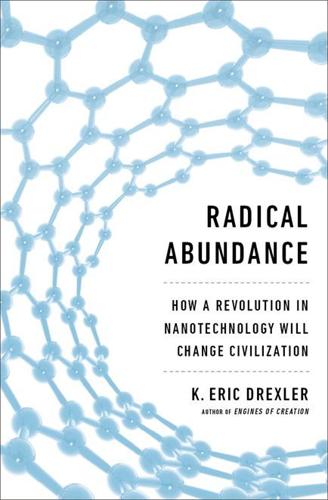
Radical Abundance: How a Revolution in Nanotechnology Will Change Civilization
by
K. Eric Drexler
Published 6 May 2013
What if ultra-efficient solar arrays cost no more to make than cardboard and aluminum foil and laptop supercomputers cost about the same? Now add ultra-efficient vehicles, lighting, and the entire behind-the-scenes infrastructure of an industrial civilization, all made at low cost and delivered and operated with a zero carbon footprint. If we were that good at making things, the global prospect would be, not scarcity, but unprecedented abundance—radical, transformative, and sustainable abundance. We would be able to produce radically more of what people want and at a radically lower cost—in every sense of the word, both economic and environmental.
…
Once again, APM-based production can improve the cost and performance of the necessary equipment, and beyond this, APM-level technologies can provide new capabilities for capturing and sequestering toxic materials from groundwater and soil, and for more subtle challenges of remediation. Reversing the Primary Driver of Climate Change With APM-based production and products, energy sources and most energy uses can be engineered for a zero net carbon footprint; liquid hydrocarbon fuels, for example, can be produced using hydrogen from water and carbon from recycled CO2. Reversing the effects of past emissions, however, would require atmospheric CO2 capture on an enormous scale—some three trillion tons—a remediation task that appears to be beyond the capacity of the industrial civilization that created the problem.
…
Adding up costs in a summary overview: Source of cost component Typical ratio Reason for cost reduction Raw materials < 1/10 Low product masses, low-cost raw materials Energy inputs ~ 1 Low product masses offset increments in per-mass energy cost Land required < 1/100 Compact high-throughput process equipment Labor inputs < 1/100 No direct process intervention Waste disposal < 1/100 Low mass processed, precise process control, zero carbon footprint Accidents < 1/100 No hazardous materials or direct human exposure Physical capital < 1/1 High-throughput, low cost production equipment With a wide range of performance improvements relative to current products and a wide range of current dollar-per-kilogram production costs, cost-reduction ratios of 1/10 to 1/1000 can be expected.

The Weather Makers: How Man Is Changing the Climate and What It Means for Life on Earth
by
Tim Flannery
Published 10 Jan 2001
A full listing of accredited manufacturers is available from Canadian Solar Industries Canada. (613) 736-9077 www.cansia.ca SOLAR HEATING AND OTHER SOLAR PRODUCTS Conserval Engineering Inc. (416) 661-7057 www.solarwall.com SolSmart Energy Solutions (416) 876-2376 www.solsmart.com CARBON FOOTPRINT You can calculate your carbon footprint, including household, car and air travel emissions, and then, for the cost of a coffee, neutralize them. Go to www. climate-friendly.com/calc.php AUTOMOBILES For ratings on the environmental performance of vehicles sold in Canada, go to the office of energy efficiency site at http://oee.nrcan. gc.ca HOUSEHOLD APPLIANCES AND ENERGY CONSERVATION For ratings on the most energy-efficient home appliances, go to http://oee.nrcan.gc.ca/ Publications/infosource/Pub/ appliances For Energy Star ratings that identify the most energy-efficient products on the market in Canada, go to oee.nrcan.gc.ca/energystar/english/consumers/index Acknowledgments This book could not have been written without the help of many people.
…
CLIMATE CHANGE CHECKLIST ACTION IMPACT Change to an accredited Green Power option = Eliminate household emissions from electricity Install a solar hot-water system = Up to 30% reduction in household emissions Install solar panels = Eliminate household emissions from electricity Use energy-efficient household appliances = Up to 50% reduction in household emissions from electricity Use a triple-A rated shower-head = Up to 12% reduction in household emissions Use energy-efficient light bulbs = Up to 10% reduction in household emissions Check fuel efficiency of next car = Up to 70% reduction in transport emissions Walk, cycle or take public transport = Can reduce transport emissions Calculate carbon footprint = Can eliminate transport and household emissions Suggest a workplace audit = Up to 30% reduction in emissions Write to a politician about climate change = Can change the world GREEN POWER Shortly after the publication of this book, the Conservative Federal Government, as part of their 2006 budget, discontinued or scaled back many environmental programs, claiming they had “completed their work.”

Cheap Land Colorado: Off-Gridders at America's Edge
by
Ted Conover
Published 1 Nov 2022
I took one of the company’s tours and saw some inventive houses it would feel good to live in: they made smart use of the area’s abundant sunlight, and some had gardens inside. Teams of young people were helping with construction, all of them paying for the privilege. Their interest in such things as “tiny houses,” renewable energy, leaving the grid, and reducing humankind’s carbon footprint was inspiring to me, and hopeful: they saw that urgent action was needed if we were to save the planet and wanted to respond to my generation’s failure to act. The company had been a pioneer in green construction and green thinking since the early 1970s. But I also noticed how expensive Earthships were—far too costly for most people I’d met in the valley.
…
The scientist concluded by sharing some steps ordinary people could take to help birds, such as keeping cats indoors, marking windows so birds won’t crash into them, reducing the size of lawns and growing native plants, and “watching birds and sharing what you see.” But these steps seemed unlikely to counterbalance the powerful forces driving climate change. At least my neighbors, with their modest carbon footprints, absence of lawns and picture windows, and attention to what was happening outside, seemed to be doing right by the birds, intentionally or not. * * * — A woman I chatted with in line at Hometown Food Market in Antonito agreed that it had been cold when all the birds died but said the real cause was God: the calamity was a harbinger of the biblical “end of days”—a sign that the end of the world was near.
…
See also La Puente Alaska, 70 alcoholism, 57, 80 allergies, 186–87 al-Qaeda, 89 Amalia, New Mexico, 194 America first, 70 American flag, 4, 89, 167, 221 American West, history of, 112–14, 119–26, 248 AmeriCorps, 13, 21, 65, 208–9, 213, 237 Amish, 173 Andersen, Paul, 192–93 Anderson, Harold, 114–20, 218, 254, 264n Angels in America (Kushner), 68 Ania (Polish immigrant), 88–92 antelope, pronghorn, 11, 40, 71–72 anti-government ideology, 70, 88–92 Antonito, Colorado, 10, 14, 20, 54, 73, 93, 95–98, 100, 124, 155, 160, 165, 185, 190–91, 199, 212, 215 Appalachia, 70 Apple Valley, California, 123 Arapahoe people, 190 Arellano, Sidney, 66, 199–200 Arizona, 70, 112, 159 Armando (Paul’s neighbor), 17–18 Ashley (Grubers’ cousin), 73–74 As I Lay Dying (Faulkner), 76 Aspen, 174 Aspen Times, 192 Asperger’s syndrome, 148, 150, 154 at-risk families program, 25 Attica prison, 199 Aurora, Colorado, 80 autism, 154, 265n–66n auto insurance, lack of, 91 B Bankers Life, 46, 119–22, 129, 142 Baroz, Adre “Psycho,” 198–99 BBC World Service, 138 “Beach, The,” 81–82, 95 Beaubien, Carlos, 112–13 Beaubien, Narciso, 112 bentonite mine, 97 Bewitched (TV show), 160 Big Rock Candy Mountain, The (Stegner), 217 bipolar disorder, 211–12 birds deaths of, 228–32 watching, 100, 229 Birds, The (film), 231 birth certificates, 90 bison, 12 Bitcoin mining, 148 Black Lives Matter, 219–23, 227 Blacks, 20, 65, 91, 144–45, 176–84, 227 Blanca Peak (Sisnaajini), 9–11, 10, 13, 15, 23, 26, 50, 64, 82, 106, 124, 127, 129, 141, 148, 200–203, 245, 263n Blanca RV Park, 34, 86, 106, 221 Blanton, Carolyn Gloria, 191 Blanca (town), 10, 25, 49, 81, 85, 88, 116, 119, 127, 146, 243–44, 252, 265n Bobby (Troy Zinn’s friend), 121, 195 Bosdell, Don and Sherry, 166–70 Bowie, David, 217 Branson online curriculum, 72 Brown, Calvin, 220 Brown, Wesley, 260 Brownlow, Lonnie, 123–24 Bundy family, 91 Bureau of Land Management (BLM), 15, 97, 259 burn pits, 105, 157, 170–72 Busse, Brian, 147 C California, 70, 73, 112, 122, 159, 198 Calvin (Vera’s friend), 86–88, 90, 92 Camaro Jim (neighbor), 144–45, 162–63, 230–31 camping, 28, 32, 51, 86, 117, 135, 160, 236 cancer, 78–79 Cano’s Castle, 14 capital letters, 89–90 carbon footprint, 69, 232 Caring for Colorado, 25 Caro, Robert, 128 “Car Wash” Kevin, 237, 256–57 Casper, Wyoming, 44, 74, 207 Catholic Church, 196 cattle, 19, 46, 94–95, 119–21, 140, 143, 144–5, 167, 196, 205, 214, 227 mutilated, 232–34 cell phones, 11, 35, 97, 131, 156, 201 Central Americans, 20 Central Intelligence Agency (CIA), 88–89 Cerro de la Olla mountain, 234 Chama settlement, 110 Changes in the Land (Cronon), 268n Charlie (Ania and Jurek’s friend), 91–92 Chatwin, Bruce, 260 Chávez, César, 98 Cheap and Easy Way to Find Gold, The (video), 201 Cherokee people, 264n Cheslock, Lance, 13, 18, 21, 24–25, 27–28, 34, 65–66, 85, 96, 98, 100–101, 199, 217, 219, 229, 234, 253, 256 Cheslock, Rachael, 24, 27 Cheyenne people, 190 Chicago, 176–77, 184, 192–93 Chicago Tribune, 109, 126 Chicano activists, 191 China, 227 Choman, Chet, 127–30, 265n Christians, 87–88, 92, 155, 168–69, 215 Christmas, 65–67, 156, 180, 200 Church of Christ halfway house, 67 Church of England, 89 Cielo Vista Ranch (formerly Taylor Ranch), 109–10 Cindy (Sam’s partner), 74, 78–79, 105, 159, 237 climate change, 231 Climax Molybdenum mine, 119 Clinton, Hillary, 70 “Cloud on the Title, A” (Trillin), 110 Cobb, Jelani, 250 cocaine, 52 Cochran (road grader), 134 code violators, 17.

Meet the Frugalwoods: Achieving Financial Independence Through Simple Living
by
Elizabeth Willard Thames
Published 6 Mar 2018
As Nate and I were rescuing a perfectly good lamp and dresser from a roadside pile of trash one Saturday morning, I had an epiphany: frugality is excellent for the environment. Under the auspices of frugality, Nate and I were consuming less and reusing more. We drastically reduced the amount of stuff we bought, and when we did buy something, we almost always got it secondhand. By diverting used items from the waste stream, we were simultaneously decreasing the carbon footprint inherent to producing new materials and preventing usable goods from clogging landfills. Nearly every frugal strategy doubles as a boon for the environment. I’m of the belief that you can’t buy your way to green because consumption, by its very action, usually has a negative impact on the environment.
…
Consumerism made me into an insatiable, grabbing taker, whereas frugality transformed me into a mindful, grateful giver. Once I turned on this mind-set of spending less, and as a consequence using fewer natural resources, I was amazed at all the areas where I could simultaneously conserve money and fossil fuels. This unanticipated benefit of upping our environmentalism and decreasing our carbon footprint redoubled my commitment to lifelong frugality. My frugality became about something broader and more momentous than simply the money I could save in my bank account. It was about my impact on our earth. It was about what I could do with my time and how I could interact with the world. The concept that we had enough also began to influence the way we ate.
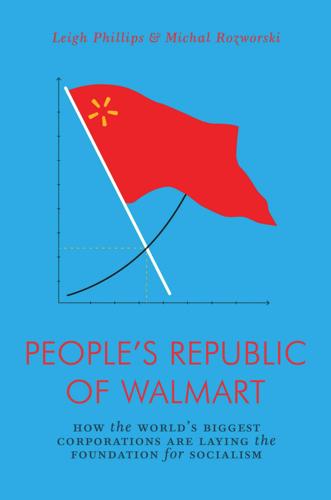
The People's Republic of Walmart: How the World's Biggest Corporations Are Laying the Foundation for Socialism
by
Leigh Phillips
and
Michal Rozworski
Published 5 Mar 2019
The up-front costs of some of these changes pose one important obstacle. Take, for instance, nuclear power. From a system-wide perspective, conventional nuclear power still represents the cheapest option thanks to its mammoth energy density; it also boasts the fewest deaths per terawatt hour and a low carbon footprint. The only energy source with a lower carbon footprint is onshore wind. But, like large-scale hydroelectric projects, construction costs are considerable. The Intergovernmental Panel on Climate Change notes that while nuclear energy is clean and non-intermittent, and has a tiny land footprint, “without support from governments, investments in new … plants are currently generally not economically attractive within liberalized markets.”

The World According to Bertie
by
Alexander McCall Smith; Robert Ian MacKenzie
Published 1 Jan 2007
Here, approaching him, was a sixty-year-old woman, with two point four children, twenty-three years to go, with a weekly income of … and so on. Now there were carbon footprints to consider, too, and that was fun. This woman was walking, but had probably taken a bus. She did not go on holiday to distant destinations, Spain at the most, and so she used little aviation fuel. Her carbon footprint was probably not too bad, particularly by comparison with … with those who went to international conferences on carbon footprints. The thought amused him, and he smiled again. “You laughing at me, son?” The woman had stopped in front of him.
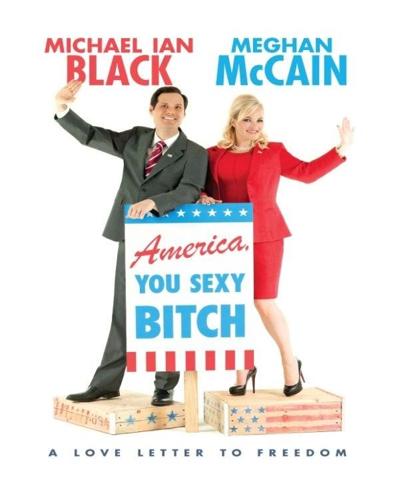
America, You Sexy Bitch: A Love Letter to Freedom
by
Meghan McCain
and
Michael Black
Published 31 May 2012
Can you blame Americans for not wanting to be lectured to by multimillionaire celebrities who go on and on about saving the environment, yet spend a majority of their time on private planes that leave a carbon footprint larger than many towns people live in? Laurie David is the ex-wife of Larry David (the creator of Seinfeld and Curb Your Enthusiasm). She is a big, big environmentalist, dedicating pretty much her entire life to the green movement and trying to educate Americans on what they can do to help reduce their carbon footprint. She also produced the Al Gore documentary An Inconvenient Truth and wrote a book for children, The Down-to-Earth Guide to Global Warming.
…
I think both sides are unreasonable and painfully unaware of the damage they are doing. Republicans cannot ignore the problems we are facing with the environment just because it goes off the general litmus talking points, and liberals need to start being more cognizant of the real issues facing average Americans. For better or worse, carbon footprints are not going to be one of their main focuses or concerns. I wish we could meet someplace in the middle, but I don’t have the highest of hopes. Environmental issues are still rarely talked about in Republican politics, and Democrats act as if Republicans are stupid and ignorant to not make it their number one issue.

The Moral Case for Fossil Fuels
by
Alex Epstein
Published 13 Nov 2014
This is dubious, given the observable increase in plant growth under conditions of increased CO2 and given that the heat predictions are failures. What’s also striking is how, even though we all know that plants live on CO2, almost no one in the culture thinks of potential positive impacts when he thinks about his “carbon footprint.” This is prejudice—the belief that man-made impacts on our environment are necessarily bad, that the standard of value is nonimpact, and that there’s no possibility of improving on Mother Nature. Given that the climate naturally changes and human beings have generally thrived the warmer it has been, it is quite possible that a higher global temperature with higher CO2 levels would be a great boon.
…
ability, energy as, 119 abuse-use fallacy, 162–63 agriculture: and biomass, 55–57 calories produced by, 56 and climate, 129 fertilization, 82–83, 116 food prices, 56–57, 57 improvements in, 122–23, 126 mechanization of, 81 resources needed for, 56 air: clean, 19, 142, 149–50 particles emitted into, 7 and smog, 20, 79, 143, 152, 158 see also pollution air-conditioning, 128 alcohol, as fuel, 55 aluminum, 74 American Meteorological Society, 21 Arrhenius, Svante, 108 “artificial” fallacy, 168–69 atmosphere: and climate livability, 93 CO2 in, 114, 121, 138 water vapor creation in, 94, 97, 99 atmospheric conditions, 93 battery technology, 72 Becquerel, Edmond, 47 bias, cause of, 29 big picture: evaluating risks and benefits in, 15, 28–29 in fossil fuel technology, 86–88, 113–14, 138–40 health trends, 174–76, 174 ignoring, 18, 20, 116, 126 integrating knowledge in, 28, 33 biofuels, 55 biomass: energy from, 3, 55–58, 65, 135 and farming, 55–57 and food prices, 56–57, 57 inadequacy as energy source, 56, 57–58, 65, 135 as natural source, 55 niche uses for, 58 renewable, 55, 57–58 storage system of, 55 Bissell, George, 73 blackouts, 50 Bonk, James, 90 Borlaug, Norman, 81, 82, 83 boron, 49 Bosch, Carl, 83 BP oil spill, 159 BP Statistical Review of World Energy, 28 Bradley, Robert Jr., 9–10 Brazil, coal consumption in, 67 Bryce, Robert, 152 Bush, George W., 3 cadmium telluride, 49 calories, 40–42, 56, 77–78 carbon atoms, 66, 68 carbon dioxide emissions, see CO2 emissions carbon footprint, 116 Carson, Johnny, 6 Carter, Jimmy, 16 catastrophe, dire forecasts of, 4, 6–8, 16, 18, 21–25, 33, 106, 108, 109 cause and effect, 165–66 Center for Industrial Progress, 24, 201 charcoal, 66 chemicals, 166–69 China: fossil fuels used in, 13, 14, 15, 67, 137 infant mortality in, 15 smog in, 20, 79, 152 technological progress in, 137, 158 toxic waste in, 155–56 Chipko movement, India, 32–33 cholera, 147–48 Christy, John, 103 civilization: durable, 25 high-energy, 126–27 climate: dangers of, 22–25, 127–29, 142 dependency on, 128–29 human impact on, 29, 31–32, 126 livability in, 92, 93–96, 126–29, 133, 137, 138 mastery of, 132–34, 138, 194 predictions of, 101, 103, 103, 108, 126 and sea level, 106 use of term, 93–94 volatility of, 94–95, 106 climate change: believers vs. deniers, 91–92 computer models of, 100–104, 102, 103, 108, 138 dire forecasts of, 4, 16, 21–25, 100, 106, 108, 109 global, 94 and greenhouse effect, 21–22, 23, 91–93, 96, 99, 106–8 man-made, 94 and political goals, 109, 111 public statements about, 3, 8, 109, 112 use of term, 94 climate dishonesty, 104 equating greenhouse effect with catastrophic climate change, 106–8, 107 misrepresenting extreme weather, 105–6 97 percent fabrication, 109–11 climate ethics, 111–14 climate justice, 136–37 climate-related deaths, 23–25, 24, 120–26, 121–25, 137 climate science, 90 climate sensitivity, 100 climate system, global, 94 Club of Rome, The Limits to Growth, 6 CO2 emissions: atmospheric, 93, 114, 121, 138 in burning coal, 68 and clean energy sources, 54 and climate change, 7, 106, 108 and climate ethics, 113–14 and climate-related deaths, 24, 24, 120–26, 121–25 computer models of, 100–104, 102, 103, 138 and energy effect, 92 and greenhouse effect, 91, 92, 97–101, 99 increasing, 23–24, 53, 89, 103–4 as plant food, 92, 114–17, 115, 208 reduction of, 3, 26, 88 and temperature, 22, 23, 108 coal: availability of, 12, 17, 66, 156, 1 91–92 by-products and risks of, 154–57, 159, 192 consumption of, 11, 44, 44, 67, 68 energy from, 3, 66, 67–69, 157–58, 191–92 export of, 192 nineteenth-century technology, 43 pollution from, 68, 79, 152–53, 153, 156–57, 165 reducing pollution from, 156–59 reliability of, 12, 52 resources required for production of, 49–50, 49 for transportation fuel, 68 coal miners, 139, 159–60 common good, 160 computer models, 100–104, 102, 103, 108, 138 speculative, 164–65 concentrated solar power (CSP), 47–48 conservation, use of term, 12 Cook, John, 110 copper indium gallium selenide, 49 corn, energy from, 56 Crookes, William, 82 dams, 59–60, 131 death sentence, early, 43, 88, 126 decisions, evaluating risks and benefits in, 26, 28–29, 134 Deepwater Horizon, 159 Desrochers, Pierre, 172–73 development: improvement via, 170, 192 reversal of, 179 use of term, 142 diesel engines, 71, 82 diluteness, 48–50, 49, 65 disasters, statistics about, 120–26, 121–25 diseases: carried by insects, 128, 142, 145–46, 173 eradicating, 145–47, 146, 175 medication for, 166–67 Drake, Edwin, 73 droughts, deaths from, 23, 121, 122–23, 122, 126 dung, energy from, 55 earthquakes, 142, 167 economic system, computer models of, 102 Edison, Thomas, 157 Ehrlich, Paul: and climate ethics, 113 dire predictions of, 6, 7, 8, 16, 80, 196 Global Ecology, 179 influence of, 7, 8, 9–10, 194 The Population Bomb, 80–81 electric grid, 69 electricity: base-load power, 69 battery-powered vehicles, 72 blackouts, 50, 53 from coal, 157–58 excess, 53 inadequate, 38–39, 42–43 lack of, 126, 139 opponents of (1970s), 9 peak load, 69 reliability of, 52–53 resource intensity of, 49, 49 storage of, 53 emissions targets, 206–7 energy: as ability, 119 and accidents, 159–60 availability in U.S., 41–42 from burning fossil fuels, 2–3, 97, 114 by-products of, 47 cheap, plentiful, reliable, 15–25, 33, 42–45, 58–59, 60, 137, 139, 177, 194, 198 conservation of, 12 definition of, 40 future resources of, 73–76, 178 growth needed in, 57 from hazelnuts, 45–47, 55, 56 and life, 37–39 as life and death issue, 54 and machine calories, 40–42 as master industry, 84 and power, 41 production of, 12, 43, 46–47, 57–58, 68, 139 progressive, 76 rationing of, 9 reliability of, 50, 52–53 from renewable sources, 3, 12, 55, 57–58 supply and demand, 12 and technology, 129 uses of, 86 what we all must do, 206–9 workable source of, 46–47 world use of, 11–13, 11, 44, 44 energy effect, 92, 119, 133–34, 138 energy revolution, 201 England, coal pollution in, 79 environment: human-centered view of, 169–71, 183 human nonimpact on, 31–32, 197 improving quality of, 4, 86, 141–45, 175–76, 198 pollution of, 6, 19, 153 quality of, 13, 21, 194–95 transformation of, 32, 85, 200–202 as wilderness, 170 Environmental Defense Fund, 136 ethanol, 12, 56, 68 experts: as advisers, not authorities, 26–28, 92, 135 combined knowledge of, 28 dire forecasts of, 4, 6–8, 33 focus on negative outcomes, 15, 18, 25 in real-estate bubble, 27 what they don’t know, 27, 93, 113–14 extinction, 173–74 Fallon, Jimmy, 45 false-attribution fallacy, 163–66 famine, 80 farming, see agriculture Fenton, John, 162 fertilization, 82–83, 116 fertilizer effect, 92, 114–17, 115, 138 fleas, 146 flood control, 130–31 floods, deaths from, 23, 121, 124, 124 food prices, 56–57, 57 food production, 81–82, 126 fossil fuel industry: author’s recommendations to, 202–6 Green movement vs., 191, 194–200 in jeopardy, 190–91 as moral industry, 201, 205, 206 prejudice against, 135–36, 193–94, 198–200 thanks to, 140 fossil fuels, 65–88 addiction to, 3, 5–6 alternatives to, 12, 46, 58 benefits of use, 4–5, 16–25, 92, 100, 137, 143, 181, 193 bias against, 29 complex interdisciplinary questions about, 27–28 from dead plants, 65–66, 114, 151 energy from burning of, 2–3, 97, 114 and the environment, 85–86, 175–76, 198 extraction of, 18, 66, 139 future uses of, 182–86, 207–8 hidden and trapped, 66, 73 and human progress, 77–78, 77, 119–20, 137 as hydrocarbons, 67, 68 and life expectancy, 13, 14, 15, 30, 77–78, 77, 119–20 as moral choice, 13, 30, 33–35 and more resources, 16–19 as necessary for life, 88 as nonrenewable, 6, 8 pollution from, see pollution reliability of, 12 restricting use of, 3–4, 8, 9, 10, 26, 30, 58 risks and side effects of, 15, 26, 28–29, 92, 134, 151–54, 156–59 in underdeveloped nations, 136–37 use of term, 66 worldwide use of, 10, 11–13, 11 Fox, Josh, Gasland, 162–63 fracking, 26, 70, 161 and abuse-use fallacy, 162–63 and “artificial” fallacy, 168–69 and false-attribution fallacy, 163–64 and no-threshold fallacy, 167–68 freighters, 82 Friedman, David, 110 Friedman, Milton, 42 Fukushima nuclear accident, 62 G7 countries, climate-related deaths in, 124–25, 125 Gambia, The, 38–39, 40, 50, 78, 197 gas: fertilization, 82 natural, see natural gas supply issues of, 69 gasoline, burning, 66, 159 gasoline engines, 71 GDP, 77, 78 genetic science, 81 Germany: air quality in, 165 solar and wind in, 50–55, 51, 52 global cooling, 21 global greening, 114–17 global warming: beneficial, 138 clarifying the questions of, 91–92 focus on, 21–23, 23, 89–91 and greenhouse effect, 99 97 percent fabrication, 109–11 overpredictions of, 102 Goklany, Indur, 23 Gore, Al, 132, 194 An Inconvenient Truth, 106 Graber, David M., 30–31, 197 Great Recession, 102 greenhouse effect, 7, 90, 96–104 and climate change, 21–22, 23, 91–93, 96, 99, 106–8, 107 computer models of, 100–104, 102, 103, 138 diminishing effect of, 98–99, 98 discoverers of, 108 fear of, 96 logarithmic, 108 positive feedback loop of, 99 use of term, 92 what it is, 97–98 Green movement, 191, 194–200 green revolution, 82, 83 guano, 82 Haber, Fritz, 83 Hansen, James E.: on the evils of fossil fuel companies, 135–36 failed models of, 102, 102 on greenhouse effect, 7, 22, 96 happiness, pursuit of, 84–85, 133 hazelnuts, as energy source, 45–47, 55, 56 health trends, 174–76, 174 heavy metals, 154, 168 Holdren, John, 8, 9, 179, 194 Holocene era, 127 Hull, Gary, 189 human beings: adaptability of, 127, 132, 171 calories needed by, 40 impact of, 94, 126 ingenuity of, 18–19, 41, 170, 181 perspective of, 85 weakness of, 40 human life: environmental nonimpact of, 31–32, 197 flourishing, 13, 85, 87, 119–20, 175 protecting, 25 as standard of value, 30, 60, 84, 85, 88, 92, 114, 136, 173, 197, 201 hunger, 80–81 hurricanes, 24, 25, 106, 125 hydraulic fracturing, see fracking hydrocarbons, 67, 68 hydroelectric power: limitations of, 59–60 opponents of, 54, 60, 135 reliability of, 12, 59 as supplement, 44 hydrofluoric acid, 154 hydrogen atoms, 66, 196 Ice Age, return to, 21 ideas: in history, 184 track records of, 5 Idso, Craig, 111, 114 Idso, Sherwood, 114 income: and fossil fuel use, 13, 14, 15 as leading indicator of human flourishing, 119–20 India: Chipko movement in, 32–33 fossil fuels used in, 13, 14, 15, 67, 137 infant mortality in, 15 technological progress in, 137 transportation to, 82 Indonesia, prosperity in, 100, 127 industrialization, 125, 131, 137 industrial progress, 200–202 Industrial Revolution, 78, 152 infant mortality, 15, 67, 128, 174–75, 174 infrared absorbers, 97 insects, disease-carrying, 128, 142, 145–46, 173 Intergovernmental Panel on Climate Change (IPCC), 3, 26, 130, 147 intermittency, 48, 50–53, 65 internal combustion engine, 68, 132 Internationl Energy Agency, 28 irrigation, 83, 123, 126, 128 Jackson, Lisa, 164 Japan: Fukushima accident in, 62 tsunami in, 130 jet engines, 71 Jevons, William Stanley, The Coal Question, 78–79 Kennedy, Robert F.
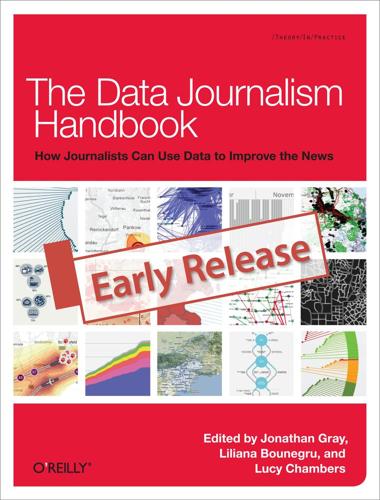
The Data Journalism Handbook
by
Jonathan Gray
,
Lucy Chambers
and
Liliana Bounegru
Published 9 May 2012
On a happier topic, National Geographic magazine produced a deceptively simple chart showing the connections of three US cities—New York, Chicago and Los Angeles—to major wine-producing regions, and how the transportation methods bringing product from each of the sources could result in drastically different carbon footprints, making Bordeaux a greener buy for New Yorkers than California wine, for example. “SourceMap,” a project started at MIT’s business school, uses flow diagrams to take a rigorous look at global procurement for manufactured products, their components and raw materials. Thanks to a lot of heavy research, a user can now search for products ranging from Ecco brand shoes to orange juice and find out from what corners of the globe it was sourced from, and its corresponding carbon footprint. Showing Hierarchy In 1991, the researcher Ben Shneiderman invented a new visualization form called the “treemap” consisting of multiple boxes concentrically nested inside of each other.

ECOVILLAGE: 1001 ways to heal the planet
by
Ecovillage 1001 Ways to Heal the Planet-Triarchy Press Ltd (2015)
Published 30 Jun 2015
The Global Ecovillage Network (GEN) was founded in 1995 to make visible an emergence that was already taking place, and to provide a link between communities being developed by thousands of grassroots pioneers. GEN serves as an alliance between rural and urban, traditional and intentional communities aiming for high-quality, low-impact lifestyles. GEN has settlements with some of the lowest recorded per capita carbon footprints. GEN works through five regional organisations: the Ecovillage Networks of North America (ENA), Latin America (El Consejo de Asentamientos Sustentables de las Américas / CASA), Oceania and Asia (GENOA), Europe and the Middle East (GEN-Europe), and of Africa (GEN-Africa). NextGEN brings together the youth movement.
…
Sirius and other ecovillages are rekindling this deep need and knowing and they are helping us create new cultures and new stories in which we can truly experience our interbeing-ness, with each other and all life. www.siriuscommunity.org Keyword for Solution Library: Earth Deeds — measuring carbon footprints and funding sustainability projects solution.ecovillage.org The Edge Effect EcoVillage Ithaca / USA EcoVillage Ithaca, founded in 1991, is the largest ecovillage in the United States. Its 3 co-housing neighborhoods and 3 organic farms show university students and the mainstream public that the American way of life can be changed in small but significant ways, to enable people to live with more social and ecological sustainability.
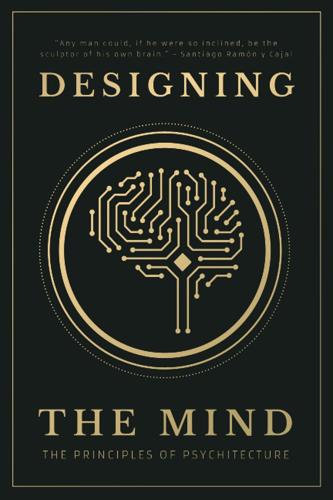
Designing the Mind: The Principles of Psychitecture
by
Designing The Mind
and
Ryan A Bush
Published 10 Jan 2021
The quantified self movement is centered around collecting and analyzing data about our behavior and lifestyle, and this type of careful monitoring is essential to change behavior and habits.27 Make a list of desirable and undesirable habits, which may include how many hours you sleep, how many miles you run, or how many calories you consume, depending on the behaviors you are concerned with. It may also include behaviors like using filler words, complaining, or failing to assert yourself at restaurants. There are even ways to track your own carbon footprint.28 For any negative behavior, keep a log of the number of times you engage in it per week. This simple act of logging is sometimes enough to break a habit. You should also conduct a study of how you spend your weekly time. You may be surprised by how many hours per week you spend playing video games or watching Criss Angel videos.
…
Kashmir Hill, “Adventures in Self-Surveillance, Aka The Quantified Self, Aka Extreme Navel-Gazing,” Forbes, accessed November 25, 2020, https://www.forbes.com/sites/kashmirhill/2011/04/07/adventures-in-self-surveillance-aka-the-quantified-self-aka-extreme-navel-gazing/. “Carbonfootprint.Com - Carbon Footprint Calculator,” accessed November 25, 2020, https://www.carbonfootprint.com/calculator.aspx. Peter M. Gollwitzer and Veronika Brandstätter, “Implementation Intentions and Effective Goal Pursuit,” Journal of Personality and Social Psychology 73, no. 1 (1997): 186–99, https://doi.org/10.1037/0022-3514.73.1.186.
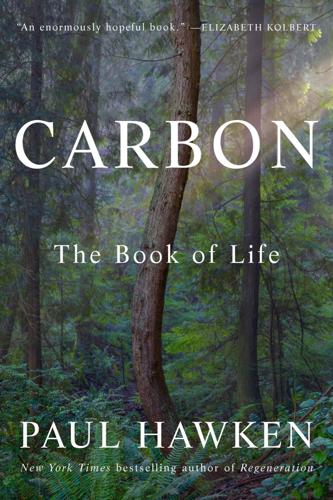
Carbon: The Book of Life
by
Paul Hawken
Published 17 Mar 2025
GO TO NOTE REFERENCE IN TEXT government regulation cannot keep up: Ravi Naidu et al., “Chemical Pollution: A Growing Peril and Potential Catastrophic Risk to Humanity,” Environment International 156 (2021), doi.org/10.1016/j.envint.2021.106616. GO TO NOTE REFERENCE IN TEXT uncertainties and risks: Das, Leo, and Murphy, “The Toxic Truth about Carbon Nanotubes in Water Purification.” GO TO NOTE REFERENCE IN TEXT Steel is responsible: “What Is the Carbon Footprint of Steel?,” Sustainable Ships, sustainable-ships.org/stories/2022/carbon-footprint-steel. GO TO NOTE REFERENCE IN TEXT replacing 1.7 billion tons: James Hall, “Cleaning Up the Steel Industry: Reducing CO2 Emissions with CCUS,” Carbon Clean, January 28, 2021, carbonclean.com/blog/steel-co2-emissions. GO TO NOTE REFERENCE IN TEXT Eight: Green Beings “Nature needs no home”: David George Haskell, The Songs of Trees: Stories from Nature’s Great Connectors (New York: Viking, 2017), 179, Kindle.

No. More. Plastic.: What You Can Do to Make a Difference – the #2minutesolution
by
Martin Dorey
Published 2 May 2018
In the supermarket, water costs anywhere between 30p and 60p per litre, which means that if you buy a litre of bottled water a day in the UK you could be spending up to £220 a year on something that’s available from a tap. And you’ll pay around 500 times more for it in bottled form. Big scam? Probably. Bottled water comes in plastic, usually made from virgin plastic (non-recycled), which is made from oil and has to be transported (with a high carbon footprint). It sits on a shelf until you buy it, where it may leach chemicals – such as BPA and dioxins as well as microplastics – into the water. And while it has to pass safety standards, it is only tested when it is bottled. Recent studies also showed that 93% of bottled water showed signs of microplastic contamination.

Greater: Britain After the Storm
by
Penny Mordaunt
and
Chris Lewis
Published 19 May 2021
Democracy must be made as inclusive as possible; otherwise it becomes a growing irrelevance to be bypassed through direct action. The antediluvian nature of the process described in Chapter 6 has a palpable price. For example, mandating that all MPs are physically present in Parliament to cast votes cuts across many stated policies and not just in the field of equalities. If we want a lower carbon footprint, how does it help to force MPs to travel unnecessarily? If we want levelling up and a greater involvement from the regions, why do we insist that MPs can only exercise their franchise by returning to the centre? If we want equality for working parents with childcare duties, the disabled and those who volunteer for community service, why does the parliamentary process remove so many of them from their families and communities?
…
When students complete a two-year programme in community college, they are then allowed to choose which of the UCs they go to. The UCs are mandated to accept them, subject to grades. In total, 37 per cent of UC students come from low-income families.69 Why can’t this be done in the UK regions? It would cut the cost of education by keeping it local, it would reduce our carbon footprint and perhaps make it more likely that talent would find regional opportunities after graduation. Have we got the balance right between creating centres of excellence for particular subjects and sustaining communities? No one would say we need less education. But we do need more diversity within it.
…
The real issue for capitalism is not necessarily the actuality of being better off. What matters is whether people believe they will be better off. ARE THERE LIMITS TO CAPITALISM? The environmental lobby puts this idea front and centre, and many would argue that it seems a counterpoint to capitalism. But is it? The only way of addressing the carbon footprint is to harness the same power that caused it (capitalism) in its removal. For instance, what would capitalism prefer? The destruction of the entire air travel industry or the invention of emissions-free aircraft? The airline industry will have to pay to clean up the planet based on the future cash flow of carbon-free (and guilt-free) travel.

What We Owe the Future: A Million-Year View
by
William MacAskill
Published 31 Aug 2022
You might feel this intuition if you reflect on how you’d reason when deciding whether to have a child. You might think through many reasons in favour or against: whether it would make your life and the lives of your family members happier and more meaningful; whether the child would, through their good deeds, go on to improve society. Perhaps you would think about your child’s carbon footprint. But you might think it would be odd to claim that the fact that the child would have a good life is itself a reason to have a child. If you endorse the intuition of neutrality, then ensuring that our future is good, while civilisation persists, might seem much more important than ensuring our future is long.
…
I did it in large part because of animal welfare, but let’s just focus on its effect on climate change. By going vegetarian, you avert around 0.8 tonnes of carbon dioxide equivalent every year (a metric that combines the effect of different greenhouse gases).19 This is a big deal: it is about one-tenth of my total carbon footprint.20 Over the course of eighty years, I would avert around sixty-four tonnes of carbon dioxide equivalent. But it turns out that other things you can do are radically more impactful. Suppose that an American earning the median US income were to donate 10 percent of that income, which would be around $3,000, to the Clean Air Task Force, an extremely cost-effective organisation that promotes innovation in neglected clean-energy technologies.
…
Aymara language, 223 Babylonian Talmud, 78 Back to the Future (film), 173–174 Baruch Plan, 41–42 Bay of Pigs crisis, 37 below-neutral wellbeing, 170–171, 193–194, 201 Benatar, David, 192 Benezet, Anthony, 51–52, 72 Bezos, Jeff, 85 Bible: rigidity following early plasticity, 42 biomass of animals and humans, 211–212 biomedical technologies, 62 biosecurity, 228–229 biotechnology anthrax, 109–111 averting civilisational stagnation through advances in, 156 bioweapons, 109–112, 114, 116, 128–131, 142, 228, 321 Cold War, 117 effects of all-out nuclear war, 131 engineered pathogens, 107–113 gene sequencing and editing, 108 progress and impacts of, 107–108 synthetic biology, 108, 112 birds, evolution of, 56–57 Black Death, 66, 125–126 Black-White happiness gap, 205 blogging, 237 Boemeke, Isabelle, 239 Boeree, Liv, 37–38 Bonesteel, Charles, 40–41 Bosnia: societal resilience, 127 Bostrom, Nick, 86, 225 Brissot, Jacques Pierre, 67 Britain abolition of slavery, 51–52 the contingency of abolition, 63–71 decline of the Roman Empire, 124 history of civilisational stagnation, 157 US War of Independence, 68–69 women’s suffrage, 53 See also United Kingdom Broome, John, 171 Brown, Christopher Leslie, 49, 63, 68 Buddhism cultural and values conquest, 92 spread through China, 77 buildering, 34–35 bunkers, building for disaster preparedness, 228 Burdekin, Katharine, 97 Cambodia, 60 Capitalism and Slavery (Williams), 63 Capra, Frank, 42 carbon capture and storage, 141 carbon dioxide concentrations, 137, 228 activism targeting, 232 early awareness of, 42 effect of global catastrophe on agriculture, 133, 137 long-term effects, 31 long-term effects of having children, 187–188 return to preindustrial levels, 24 transition from fossil fuels, 144, 161, 230 carbon footprint: the impact of vegetarianism, 232 carbon generation, 42 carbon tax, 43 career capital, accruing, 235 career choices: the impact on the future, 234–240 catastrophes, global disaster preparedness, 228 population decline and civilisational stagnation, 159 postcatastrophe reliance on preindustrial technology, 131–132 societal resilience and recovery from global catastrophes, 125–134 Catharism, extinction of, 60 cattle farming, 208–209 Caviola, Lucius, 199 challenge trials for vaccine development, 238 Chapman, Clark R., 106 charcoal as alternative fuel, 139 charter cities, 100 chickens, suffering of, 208–209 children building a better future for, 245 cultural evolution and caring for, 59 enslavement of, 48 fertility subsidies, 155–156 the fragility of identity, 173–176 the intuition of neutrality, 171–172, 176–177 the longterm positive impacts of, 187–188 the value of having, 234 China abolition of slavery, 66 aftermath of Roman decline, 124–125 charter cities, 100 climate change goals, 135 COVID-19 pandemic response, 96–97 Hundred Schools of Thought, 75–79 persistence of values, 83–84 population decline, 155 the risks of great power conflict, 114–116 the search for immortality, 84 US relations with, 23 chlorofluorocarbons (CFCs), 230 Christian morality, 71 Christianity: cultural conquest, 92–94 civilisation.

The Optimist: Sam Altman, OpenAI, and the Race to Invent the Future
by
Keach Hagey
Published 19 May 2025
The phrase “stochastic parrots,” then, refers to the propensity of large language models to produce guesswork and mimicry, as opposed to thoughtful analysis and human communication. The paper goes on to dissect a litany of concerns about LLMs that were becoming exponentially bigger and consuming ever more data—such as OpenAI’s recently debuted titan, GPT-3. The purported dangers included LLMs’ enormous carbon footprints, due to their intense computational demands; all the myriad ways in which LLMs “encode biases potentially damaging to marginalized populations”; and what Bender and Gebru termed “value-lock” whereby LLMs’ process of scraping and reconstituting existing content “reifies older, less-inclusive understandings.”
…
Louis, 27 rent strikes, 27 slum clearance, 26, 34 tax credits, 22, 34–35, 53 universal basic income (UBI) and, 12–14, 194, 205, 256 AGI (artificial general intelligence), see AI (artificial intelligence) “agile” method of software development, 127 aging, the fight against, see immortality AI (artificial intelligence) belief we’re living in a simulation created by, 17 competitive arms race in, 9, 166, 211, 233, 267, 270, 312–14 exacerbating the problem of affordable housing, 254–56, 302 existential risk from, 4–6, 141, 144–45, 167–68, 177, 190, 300 game theory, 166, 285 generative AI, 1, 3, 9, 219, 221, 270 the goal of artificial general intelligence (AGI), 3, 5–10, 12–14, 133, 146–47, 170, 181, 189–90, 192, 198–200, 208, 211, 222–26, 230, 233, 237, 245, 287, 304–5 “godfathers of AI,” 188, 312 large carbon footprint of, 252 “Manhattan Project” for AI, 8, 145, 147, 219 national security implications of AI, 166, 267, 285 neural network–based AI, 147, 164, 176, 179–82, 190–93, 219, 221, 243, 314 toward the singularity, 140–42, 144–45, 168, 199–200, 305 “Sky,” an AI voice, 307–8 the three tribes of humans involved in AI (research, safety, and policy), 208–9, 276 “weights” in, 181 “wrappers” around, 278–79 see also AI research/training; AI safety; chatbots; OpenAI AI Doomer Industrial Complex, 299 AI Dungeon (video game), 247–48, 254–55 “AI Principles,” 5 AI research/training, 5, 143–45, 167–71, 177–88, 207–9, 305–6 backpropagation and, 179, 181 bias encoded in AI, 252 chess, 67, 151, 145–46, 191, 215–16 “deep learning,” 146–47 dialog as method of alignment, 265 diffusion model trained by adding digital “noise,” 262–63 “few shot” learning, 244 Go (game), 191–92, 216–17 going from “agent” to “transformer,” 218–21, 265 going from “training” to “alignment,” 8, 264–66, 276, 284, 305–6 ImageNet competition, 182, 184 the issue of Books1 and Books2, 244 large language models (LLMs), 16–17, 218, 221, 244–46, 252–53, 270–71, 275 learning means AIs have souls, 179 machine translation, 168, 219, 245 neural networks, 147, 164, 176, 179–82, 190–93, 219, 221, 243, 314 parse trees, 174 passing the bar exam, 3, 272 reinforcement learning, 147, 185, 191–93, 264, 265, 284 Rubik’s cube–solving robot hand, 218 sentiment neuron, 218 “sequence to sequence” learning, 178 software engineers and AI researchers, 191, 194 Test of Time Award, 305 the “Turing test,” 173–74 “value-lock,” 252 “zero-shot” responses, 220–21 see also video games AI safety, 2, 4–5, 8–9, 165–67 Asilomar AI Principles, 208, 211, 213, 233–34 Deployment Safety Board (DSB) at OpenAI, 279–80, 287 Elon Musk as an AI doomer, 2, 5, 163, 167–72, 214–15, 273–74 existential risk from AI, 4–6, 141, 144–45, 167–68, 177, 190, 300 how AI could go wrong, 7–8, 143–44, 147, 154 moral balancing act between progress and safety, 135 national security implications of AI, 166, 267, 285 parable of the paperclip-making AI, 5, 143–44, 164 pedophilia and, 254 Puerto Rico conference on AI safety (2015), 167–70, 207, 211 the Stochastic Parrot critique of AI, 252–53 AI Superpowers (Lee), 267 AIDS crisis, 33, 43, 49 AIM (AOL Instant Messenger), 16, 50, 76, 162 Airbnb, 4, 123, 139, 150, 152,158, 263, 274, 292 Akin Grump Strauss Hauer & Feld law firm, 300 Alberta, Tim, 297 Alcor Life Extension Foundation, Scottsdale, AZ, 141 Alexander, Scott, 143, 165–66 “AlexNet” (Hinton), 178, 182, 266 “Algernon,” 140–41, see Yudkowsky, Eliezer Alinsky, Saul, 22, 40 Alito, Samuel, Jr., 52 Allen & Company investment bank, 117, 229, 263, 266 Allston Trading, 157 Alphabet, 194, 271 AlphaGo, 192, 217 Alt Capital, 311 Altman, Annie (Sam’s sister), 15, 36, 40–43, 134, 201–2, 226–28, 248–50, 281–82, 295 allegations against Sam, 261–62 as an escort and on OnlyFans, 249, 261–62, 281 after Jerry Altman’s death, 311–12 living on the Big Island of Hawaii, 227, 250, 311–12 Altman, Birdie, 23–25 Altman family, 15–16 Alt Capital, 311 American Millinery Company, 31 during Covid, 248–50 family therapy sessions, 249 living in Atlanta, 23 moving to Clayton outside St.
…
Morrow), 141–42 Bender, Emily, 252 Bengio, Yoshua, 183–84, 188, 272 Berners-Lee, Tim, 244 Betts-LaCroix, Joe, 257–59 Bezos, Jeff, 229, 260 bias encoded in AI, 252 Biden administration AI policies, 232, 267, 277, 299–300 Biden, Joe, 273, 296–300 Big Island of Hawaii, 227, 250, 311–12 Big Sur, CA, 134, 171, 260 Big Tech companies, 182, 185, 197, 299, 308 Bill and Melinda Gates Foundation, 303 bin Salman, Mohammed, of Saudi Arabia (“MBS”), 231 Bing search engine, 216, 271 Bird, Leah, 28–29, 43 Bitcoin, 142 BitTorrent, 244 Black people and communities, 26–27, 40, 53, 164 Chicago’s first black mayor, 21–22, 33–34, 37 racism among tech bros, 164–65 see also race and racism black-pilled, 1 Blackwell, Trevor, 63, 74, 75, 94 “blip, the,” 7, 14–15, 276–94, 295–310, 311–15 Blizzard Entertainment, 215 Bloomberg (news site), 67, 207, 276 Bloomberg limited partnership, 234 Bloomberg, Michael, 155 Blumenthal, Richard, 309 BookCorpus dataset, 220 Boom, Steve, 126 Boost mobile network, 80, 99–105 Borgmann, Jolene, 201–2, 226–27 Bostrom, Nick, 5, 163–66, 168–70, 241 Future of Humanity Institute, 5, 165–66, 241–42, 267 Superintelligence: Paths, Dangers, Strategies, 5, 163–66, 167–68 Botha, Roelof, 88, 93, 96, 124 Bowles, Nellie, 205 Box cloud storage company, 96 Boyden, Ed, 199 Breakout (video game), 147 Brennan-Jobs, Lisa, 112–13 Bridgewater Associates hedge fund, 212 Brin, Sergey, 85, 88, 192 Brockman, Anna, 245, 294, 309 Brockman, Greg, 16 during “the blip,” 277–79, 283–84, 286–89, 291–94, 305, 308–9, 310 in his “code cave,” 175–76, 246–47 as an OpenAI founder, 172–78, 183–88 role in developing GPT-4, 189–96, 209, 215–23, 242–51, 267–68 Brockman, Ron, 173 Brooklyn’s Park Slope, 29–30 Brooks, David, 132 Brown, Jerry, 205, 206 Brown, Willie, 205–5, 256 Brundage, Miles, 241–42, 253 Brunswick, Georgia, 23–25 Buchheit, Paul, 123, 150–51 Bucktown neighborhood of Chicago, 34 Buffet, Warren, 212 BuildZoom digital construction marketplace, 138 bullying, 131, 287 Burger King, 62 Burning Man Festival, 1, 198–99 Burt, Matthew, 92, 93 Business Insider, 260, 277 California affordable housing crisis in, 197, 205–6 ballot measure limiting short-term rentals, 262, 274, 292 Daly City, 162 Irvine, 99, 105 Mountain View, 85, 94, 107, 122, 133, 139, 149, 161, 172, 182, 235 Napa Valley, 185, 190, 260 Oakland, 195 YC Startup School at Berkeley and Stanford, 122–23, 194, 234 see also Palo Alto, CA; San Francisco; Silicon Valley capitalism, 40, 166, 195, 225, 314 “capped profit” model, 229–30, 304 carbon footprint, 252 Carlson, Tucker, 294, 313 Carr, Eric, 120–21 carried interest (“carry”), 73, 158, 281 cars, self-driving, 168, 223–24 cars, tech bros’ love of, 26, 51 Castro, Daniel, 300–301 Cement City housing project, 35 Center for AI Policy, 301 Center for Security and Emerging Technology (CSET) at Georgetown, 267, 299, 300 Central Reform Congregation, 15, 43, 227 Centre for the Governance of AI, 267 Centre for the Study of Existential Risk, 168 Chafkin, Max, 131, 205, 258 Chang, Jeff, 198 Character Technologies, Inc., 271 charities/philanthropy, see affordable housing; effective altruism (EA) chatbots, 3, 9, 174, 263, 268–70 Anthropic’s Claude, 268, 278, 285 antisemitic, 270 giving a superego to the, 264 Google’s Meena, 270 Microsoft’s Tay, 270 pedophilia and, 254 Quora’s Poe, 278–79 “wrappers” around AI, 278–79 ChatGPT, 1, 3, 5, 14–15, 17, 208, 253, 269–73, 276, 278, 285–86, 308, 310 Che, Sally, 25, 49–51, 227, 260–61 Checkr background check automation company, 149–50, 156 Chernobyl nuclear disaster, 135 Chesky, Brian, 157, 236, 263, 270, 274, 277, 289, 292 chess, 67, 151, 145–46, 191, 215–16 Cheung, Adora, 157, 195 Chicago Altman family in, 21–38 Bucktown neighborhood of, 34 first Black mayor of, 21–22, 33–34, 37 Lincoln Park neighborhood of, 36 Chicago Toy & Game Group, 209 China, 230–31, 267, 314 China Syndrome, The (film), 135 chips, 225, 280–81, 298, 315 global positioning system (GPS) chips in mobile phones, 57–58, 99 graphics processing units (GPUs), 176, 181–82, 219, 247, 255 the US CHIPS and Science Act, 298 Christiano, Paul, 178, 213, 276–77, 299 Chrome web browser, 272 Chronicle of Philanthropy, The, 213 Chung, Patrick, 13, 61–62, 74, 78–81, 89–93, 116, 121 Church of Jesus Christ of Latter-day Saints, 55 Churchill, Winston, 256 Cincotta, Gale, 22, 29, 35 Cingular Wireless, 58, 62, 103–4, 110 Cisco, 87, 122, 210 Clark, Chris, 198 Clark, Jack, 207, 241, 253, 266, 273 Clarke, Arthur C., 47 Claude the chatbot, 268, 278, 285 Clayton, a suburb of St.

The End of Money: Counterfeiters, Preachers, Techies, Dreamers--And the Coming Cashless Society
by
David Wolman
Published 14 Feb 2012
A 2010 British government report entitled “The UK’s Payment Revolution” put it this way: “With around a billion bank notes created, distributed, collected and destroyed every year, the production and secure transportation of notes is an expensive and environmentally costly business paid for by the tax payer. A progressive move away from cash could hold many benefits.”8 In the United States, between 2008 and 2010, the coining process alone used up more than 32,397 tons of zinc, 41,245 tons of copper, and 4,185 tons of nickel. And cash’s carbon footprint doesn’t stop there. Metals like zinc, nickel, and copper have many other, arguably more important, uses, like in the wiring of homes or in electric-car batteries. According to the multinational mining giant BHP Billiton, world consumption of copper over the next twenty-five years will exceed that of all copper ever mined to date.9 Pollution?
…
Borges, Jorge Luis Brazil Bribery Brinks Britain De La Rue printing firm in Digital Money Forum in London transit system Royal Mint Serious Fraud Office See also Bank of England Brixton Pound currency Budapest Buffett, Warren Bulgaria Bush, George W. California Cambodia Canada Capitalism Carbon footprint Cash anonymity of carried by average American consumer cash deposits into ATMs cashless battlefield cashless societies cash transactions on planes and cheating costs concerning and crime (see also Counterfeiting; Robberies) and cultures doing without and emergencies emotional forces concerning (see also Biases) end of (see also Cash: war on cash: Mark of the Beast) and envelope method evolution of fungibility of inconvertibility of and poverty for small-value transactions as stealth tax and tax evasion transporting war on cash(see also Cash: end of) See also Coins: Paper money Casinos Catcher in the Rye Cellphones adoption rates bought by poor people (n) selling airtime minutes for used for money transactions See also Smartphones Centers for Disease Control Certificates of deposit Chaloner, William Chandan, Ravi Chant, John Chase, Salmon P.
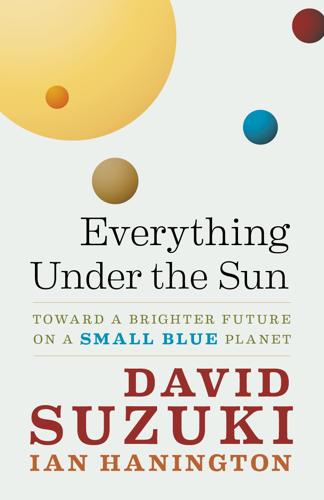
Everything Under the Sun: Toward a Brighter Future on a Small Blue Planet
by
Ian Hanington
Published 13 May 2012
So our goal is clear. All of humanity must find a way to keep emissions below the limits imposed by the biosphere. The only equitable course is to determine the acceptable level of emissions on a global per capita basis. Those who fall below the line should be compensated for their small carbon footprint while those who are far above should be assessed accordingly. And the economy must be aligned with the limits imposed by the biosphere, not above them. 6. It’s Getting Hot Down Here CLIMATE CHANGE IS a reality. We’d all love it if it weren’t, if the deniers and industry PR folks were right.
…
Health experts recommend that pregnant women eat sardines and similar seafood because they are valuable sources of omega-3 fatty acids, vitamins, calcium, and protein. Because these fish are found in tight schools, capturing them requires little chasing around, dragging of nets, or setting of lines, so their carbon footprint is low. Some research suggests that small pelagic fish may be the most efficient protein system in the world in terms of the energy used to capture them. In 2009, sardine fishermen in British Columbia got about three cents a fish. I could go to Port Hardy during sardine season and buy a truckload for the price of an average Canucks ticket, $150.

How to Run the World: Charting a Course to the Next Renaissance
by
Parag Khanna
Published 11 Jan 2011
When it comes to the environment, there is an element of personal responsibility that people don’t feel with other issues, a sense that particularly a younger generation has innately grown up with. Many seventh graders in America log on to CarbonRally.com as part of a nationwide competition to reduce their carbon footprint. Citizen activists promote causes town by town, from flushing toilets less frequently to Paul McCartney’s “Meat Free Monday” campaign in favor of vegetarianism—a “low-carbon” diet—to preserve forests slashed for cattle grazing in Brazil. In New Delhi, the paper versus plastic debate in supermarkets and bazaars has been settled in favor of cotton: keep and reuse.
…
In a world where less than fifty cities cause most of the greenhouse gas output, curbing emissions is as much the job of mayors and governors as presidents. Stockholm and London began congestion pricing earlier this past decade, while Copenhagen has steadily removed parking places in the city center to encourage people to take buses, ride bicycles, or walk. Berlin has contracted companies to green fifteen hundred buildings, reducing the city’s carbon footprint by 25 percent. The greening of the Empire State Building presently under way in New York City is self-financing through savings in utility bills and will achieve the emissions reduction equivalent of taking nineteen thousand cars off the street. Even poor cities can change citizen and consumer behavior, leapfrogging to low-carbon, off-grid solutions such as distributed power networks that draw from multiple sources of energy.
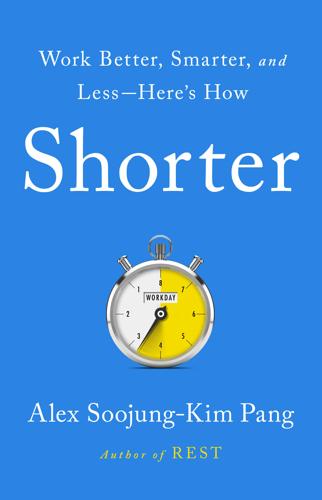
Shorter: Work Better, Smarter, and Less Here's How
by
Alex Soojung-Kim Pang
Published 10 Mar 2020
As one study of working hours and energy use in OECD countries put it, “working hours are significantly associated with greater environmental pressures.” As countries lengthen their workweeks and people work more hours, they consume more energy and expand their carbon footprints: one study found that a 1 percent increase in working hours raises energy use by up to 1.3 percent, carbon footprint by 1.3 percent, and overall environmental footprint by 1.2 percent. Researchers estimate that by reducing commuting, lowering workplace energy use, and other effects, adopting a four-day workweek would cut a nation’s carbon emissions by between 16 and 30 percent (though the higher range assumes that wages would also fall).
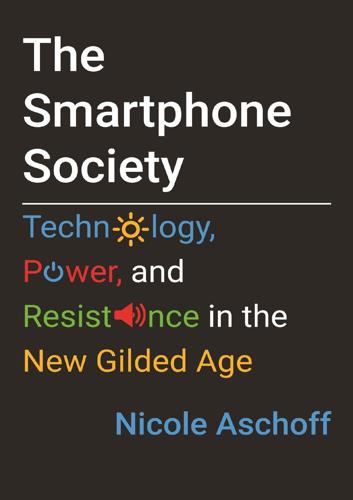
The Smartphone Society
by
Nicole Aschoff
Data centers, many of which are coal-powered, are by far the biggest source of energy consumption in the ICT sector, but smartphones themselves, the authors show, are also quite toxic. A colossal amount of effort and energy is required to extract the rare metals needed for each phone. Yet, as a result of built-in obsolescence, we only keep them for about two years before getting a new one; production accounts for 85–95 percent of the smartphone’s total carbon footprint.77 Our fantasies about the digital frontier hide the hierarchical and ecologically destructive relationships of global capitalism. We see neither the people who toil in terrible conditions making our phones, nor the broader production chain that begins with exploitative and destructive extraction of rare metals and ends with toxic e-waste dumped in poor countries and communities.
…
“Abrams, Jenna,” 109 ACLU (American Civil Liberties Union), 21, 22, 96, 148–49, 153, 176n28 Acxiom, 72, 77 addiction to social media, 65–69 Admiral, 78, 79 Adolfsson, Martin, 84 AdSense, 52 Advanced Research Projects Agency Network (ARPANET), 80 advertising: data collection and, 76–77, 83–84; on Facebook, 47–48; on Google, 52; political, 149 AdWords, 52 Afghanistan, politics in, 95–96 age discrimination, 149 AI Now, 129, 157 Airbnb, 42, 119, 120, 148 al-Abed, Bana, 90 al-Abed, Fatemah, 90 Aldridge, Rasheen, 91 algorithm(s): for consumer categories, 77; in dystopian future, 129–30, 131; in politics, 109–10; recommender, 67; search, 51–52, 53 algorithmic accountability, 151, 157–59 “algorithmic management,” 32–34 Alibaba, 4, 42 Allard, LaDonna Brave Bull, 104 aloneness, 7 Alphabet, 41, 55, 76, 122, 150 Alpha Go Zero program, 122 alter-globalization activists, 91 Amazon: acquisitions by, 41; and CIA, 81; in Europe, 150; marketplace model of, 150; as monopoly, 53–54; and new capitalism, 118–19; as new titan, 38–41, 44, 45; power of, 54–55; Rekognition software of, 149; tax evasion by, 49; warehouse workers at, 31–32, 33, 34; working conditions at, 46 Amazon Shopping, 30 Amazon Web Services (AWS), 41 American Academy of Pediatrics, 9 American Association of People with Disabilities, 55 American Civil Liberties Union (ACLU), 21, 22, 96, 148–49, 153, 176n28 American Dream, 120–21 American Library Association, 55 amplification, 91 analog networks, in cognitive mapping, 143 Android operating system, 39, 41, 53, 69, 70–71, 72 “angel investor,” 120 Ant Financial, 42 antidiscrimination laws, 149 antitrust laws and practices, 43–44, 52–53, 55, 150 AOL, data collection from, 81 app(s): top ten, 38 “app dashboard,” 69 app jobs, 30–34, 35, 137 Apple: data collection from, 81; in Europe, 150; low-paid workers at, 147; as new titan, 42; refusal of “right to repair” by, 155; supply chain of, 28–29; tax evasion by, 49–50; working conditions at, 46 appropriation, frontiers of, 73–76 appwashing, 34, 35, 146 “Arab Spring,” 97 Ardern, Jacinda, 93 ARPANET (Advanced Research Projects Agency Network), 80 artificial intelligence, 121–22, 123, 130 aspirational story, 120 assembly workers, 28–29 Athena, 42 AT&T, 29, 42, 43, 71 attention, 7 Audible, 41 Australia, justice in, 21 automation, 128, 131 automobiles, analogy between smartphones and, 2–3, 161, 162 autonomy, 117, 124 AWS (Amazon Web Services), 41 bad behavior, 138–39 Baidu, 42 Bannon, Steve, 105 Barlow, John Perry, 124 Bellini, Eevie, 24 Berners-Lee, Tim, 40 Beyoncé, 61, 107 Bezos, Jeff, 38, 44, 49, 54, 118–19 Bharatiya Janata Party (India), 93 big data, 76, 83–84, 145 Binh, Huang Duc, 95 black(s): police violence against, 17–23, 35, 169n6, 169n13 Blackberry, 6 “black-box algorithms,” 151 Black Lives Matter (BLM), 89–90, 100–102, 104, 107, 111 Blades, Joan, 91 blockchains, 124 body cameras worn by police, 22 book publishers, 172n40 boredom, 11 bots, 109 Boyd, Wes, 91 boyfriend, invisible, 24 Boyle, Susan, 63 Brazil, politics in, 97 Brin, Sergei, 38, 41, 54, 119, 148 Brown, Michael, Jr., 22, 89–90, 91, 101–2 Buffett, Warren, 41 Bumble, 23, 91 Bumblehive, 81 Burke, Tarana, 108 Bush, George W., 99 Calico, 41 California Consumer Privacy Act, 150 “CamperForce,” 31–32 Canales, Christian, 21 cancer, 7 candidates, social media use by, 103–5 Capital G, 41 capitalism: chameleonesque quality of, 116–17; crony, 105; and frontiers, 72–79; maps of, 143–44; neoliberal, 69, 102, 112–13, 117–18, 144–45; smartphones as embodiment of, 161–62; spirit of, 115–18; surveillance, 8 capitalist frontiers, government and, 80–81 carbon footprint, 82, 175n77 Carnegie, Andrew, 37, 54, 57 Castile, Philando, 20, 35 CatchLA, 62 caveats, 14–15 celebrities, in digital movements, 91 celebrity culture, 64–65 censorship, 95 Center for American Progress, 55 Center for Responsive Politics, 56 Central Intelligence Agency (CIA), 81, 95, 96, 138, 175n74 centrism, 112 Chadaga, Smitha, 89 change agent, 12 Chan, Priscilla, 56 Chan Zuckerberg Initiative (CZI), 56 Charles, Ashley “Dotty,” 109 Charlottesville, Virginia, 106–7, 111 Chesky, Brian, 120 children, 8, 9, 11–12, 84 China, 4, 42, 94–95 Chronicle, 41 CIA (Central Intelligence Agency), 81, 95, 96, 138, 175n74 Cienfuegos, Joaquin, 20–21 City of the Future, 124 Clinton, Bill, 43, 91, 99 Clinton, Hillary, 50, 107 Clooney, George, 91 “the cloud,” 82 cloud storage facility, 81 coercive relationships, 137–38, 152–54 cognitive maps and mapping, 143–59; algorithmic accountability in, 151; antidiscrimination laws in, 149; coercive and unjust relationships in, 152–54; defined, 143; digital and analog networks in, 143; digital commons in, 156–59; ecological externalities in, 145; economic implications in, 151–52; internet access for poor and rural communities in, 149–50; lacunae in, 145; low-paying jobs in, 146–49, 153–54; monopoly in, 150; political advertising in, 149; power in, 145; and principles of smartphone use, 152–59; privacy in, 150–51; selfish or immoral behavior in, 154–56; sociotechnical layers of, 145 collateral damage, 96 collective action, 155–56 Comcast, 29, 71 comic books, 11 commodification of private sphere, 144 Communications and Decency Act, 51 communities, on-line, 64 community broadband initiative, 149–50 Community Legal Services, 171–72n32 Compass Transportation, 147 Computer and Communications Industry Association, 55 “connected presence,” 6 connection, 44, 63–64, 143, 162 connectivity, 122 Connolly, Mike, 94 consumer(s): vs. producers, 28–29 consumer categories, 77 consumer scores, 77–78 consumption, 83, 138–39 content algorithms, 51–52 content creation, 74–79 contingent workers, 30 convenience, 29–30, 35 Cooperation Jackson, 155 cop-watch groups, 20–21 “The Counted,” 19, 169n6 “creative monopoly,” 44 creativity, 117 credit scores, 78–79 creepin”, 65 critiques, 7–8 crony capitalism, 105 CrushTime, 24 Cruz, Ted, 92 “Cuban Twitter,” 95 Cucalon, Celia, 48 Cullors, Patrisse, 100–102 cultural capital, 62 “custom breathers,” 69 “customer lifetime value score,” 78 “cyberspace,” 82 CZI (Chan Zuckerberg Initiative), 56 Dakota Access Pipeline Protests, 103–4, 110 dashboard apps, 132 data brokers, 72, 77 data centers, energy use by, 82 data collection, 70–72, 83–84, 137, 150–51, 156–59 data mining, 76–79 data ownership, 135–36 “data smog,” 72 Data & Society, 151, 179n20 data vendors, 76 datification, 156–57, 161 dating apps, 23–27, 35 decentralization, 101–2, 120 decommodification, 156–57 DeepMind, 41, 79, 122, 157 Deliveroo, 32–33, 153 Department of Homeland Security, 149 Desai, Bhairavi, 146 Descartes, René, 67 Diallo, Amadou, 19 Diapers.com, 41 dick pics, 25 Dick’s Sporting Goods, 91 digital-analog political model, 104, 110–12, 145, 162 digital commons, 139–41, 156–59 digital divide, 28–29, 35 “digital exclusion,” 29 digital frontier, limits of, 82 digital justice, 17–23, 152, 157, 169n6, 169n13 digital networks, 143 digital platforms, 44 “digital redlining,” 29 “digital well-being,” 69 disconnection, 132–33 discrimination in housing, 47–48 divides, 17–36; built-in, 28–34, 35; related to justice, 17–23, 169n6, 169n13; related to sexuality, 23–27, 35 division of labor, 74–75 Dobbs, Tammy, 129 documentation, 62 domestic violence, 25 DoorDash, 33–34, 146–47 dopamine driven feedback loops, 67 double standard, 25–27, 35 drone warfare, 95 “dual economy,” 12–13 dumbness, 7, 9 “dumb phone,” 1, 8, 132, 167n15 dystopian future, 125–26, 128–30, 131 eBay, 147, 148 Echo Look device, 84 ecological externalities, 145 ecological limit of digital frontier, 82–83, 175n77 economic crisis (2008), 98–100, 117–18 economic divide, 13–14 economic implications, in cognitive mapping, 151–52 economic nationalism, 105 “ecosystems,” 40 Eddystone, 78 education, 13 Edwards, Jordan, 18 Egypt, 92, 97 elderly Americans, 63–64, 84 Electronic Frontier Foundation, 55, 124 Elliot, Umaara, 90 Ellison, Keith, 45 emails: vs. phone calls, 6; scanning of, 70–71 Emerson, Ralph Waldo, 133 employment relationships, 137 encryption, 81, 175n74 energy consumption, 151–52, 154–55; by physical elements of digital life, 82, 175n77 entrepreneurship, 120–21 environmental justice, 154–55 Epsilon, 72 Equal Credit Opportunity Act, 78 Estrada, Joseph, 90–91 Europe, American tech titans in, 150 European Union (EU), 49, 52–53, 150–51 experience economy, 62, 83 exploitation of labor, 75 externalization of work and workers, 31 Facebook: acquisitions by, 41; addiction to, 66–67, 69; and antidiscrimination laws, 149; credit ratings by, 79; data collection by, 71–72, 76, 81, 84; demographics of, 84; discrimination in advertising by, 47–48; employees organizing at, 148; in Europe, 150; Free Basics by, 41–42, 50; low-paid workers at, 147; managing impressions on, 63; as monopoly, 53–54, 172n46; and new capitalism, 124, 136; as news source, 50–51; as new titan, 38–39, 40, 41–42, 44–45; power and influence of, 56; tax evasion by, 49; time spent on, 60 Facebook Live, 84 Facebook Pixel, 72 “Facebook Revolution,” 97 facial recognition software, 129, 149 Fair Housing Act, 48 fake news, 50–51, 56 Federal Bureau of Investigation (FBI), 149 feedback loop, 66–67 “Feminist Five,” 108 feminist movement, 107–8 Ferguson, Missouri, 89–90, 101–2 Fields, James Alex, Jr., 106 filter bubbles, 53, 109–10 financial crisis (2008), 98–100, 117–18 fintech companies, 78–79 flexibility, 117 FlexiSpy, 25 FOIA (Freedom of Information Act) requests, 149 food delivery apps, 32–33 food pictures, 62 forced arbitration, 148 Ford, Henry, 37, 124 Fordlandia, 124 Ford Motor Company, 37, 38, 44 Fowler, Susan, 126–27 FoxConn, 28 framing of analysis of cell phones, 12–14 Free Basics, 41–42, 50 Freedom of Information Act (FOIA) requests, 149 “free market” competition, 98 free speech, 138 Friedman, Patri, 124 frontier of social media, 59–86; addiction to, and fears about, 65–69; and big data, 82–86; characteristics of, 59–65; and government, 80–81; and privacy, 69–72; and profit, 72–79 Fuller, Margaret, 133 Galston, Bill, 45 gamification, 23–24, 146 Garza, Alicia, 100–102 Gassama, Mamoudou, 115 Gates, Bill, 56, 130 General Data Protection Regulation (GDPR), 150–51, 156 Geofeedia, 96 geopolitics, 95–96, 144 Germany, 3 Ghostbot, 24 gig economy, 137 Gilded Age, 1–2, 11, 54 global divides, 28–29 globalization, 98 Global Positioning System (GPS), 5 Gmail, 38, 71 Goodman, Amy, 104 Google: addiction to, 69; advertising on, 76; companies owned by, 41; data collection by, 70–71, 76, 81, 150; employees organizing at, 147–48; in Europe, 150; immoral projects at, 154; and intelligence agencies, 81; lobbying by, 55; low-paid workers at, 147; molding of public opinion by, 55; as monopoly, 52–54; and new capitalism, 119–20, 123, 136; as new titan, 38, 39, 40, 41, 43–45, 56; for online search, 52; power and influence of, 55–56; research funding by, 55; “summer camp” of, 55; tax evasion by, 49, 50; use by children, 84; working conditions at, 47 Google Calendar, 71 Google Chrome browser, 53 Google Drive, 71 Google Earth, 123 Google Fiber, 41 Google Images, 131 Google News, 50 Google Play, 72 Google Search, 38, 41, 53 Google Shopping Case, 52–53 Google Translate, 10 government: and capitalist frontiers, 80–81; and Silicon Valley, 124; surveillance by, 137–38, 144, 148–49 government tracking, 94–95 GPS (Global Positioning System), 5 Grant, Oscar, III, 18 Gray, Freddie, 22, 96 Great Pessimism, 118, 119 Great Recession, 118 Greece, 97 greenhouse emissions, 82 Green New Deal, 103, 151–52, 154, 179n22 Greenpeace, 157 Grindr, 23 gun violence, 90, 91, 110, 111 GV, 41 habitus, 62 Happn, 23, 24 Harari, Yuval Noah, 129–30, 132 Hearst, William Randolph, 50 Herndon, Chris, 56 Heyer, Heather, 106 Hirschman, Albert, 133 household expenses, 13 housing, discrimination in, 47–48 human, fear of becoming less, 67–68 iBeacon, 78 IBM, 149 ICE (Immigration and Customs Enforcement), 21, 148 ICT (information and communication technologies) sector, energy used by, 82 ideals, 120 “identity resolution services,” 77 ILSR (Institute for Local Self-Reliance), 149–50, 153 Immigration and Customs Enforcement (ICE), 21, 148 immoral behavior, 138–39, 154–56 impressions, management of, 62–63 income discrepancy, 12–13 independent contractors, 33–34, 137, 153 India, 4, 42, 60, 93 individualism, 117, 118 information and communication technologies (ICT) sector, energy used by, 82 injustice, 17–23, 169n6, 169n13 In-Q-Tel, 96 insta-bae principles, 61–62 Instacart, 30, 146 Instagram: addiction to, 69; content on, 60, 61, 62; creepin’ on, 65; data collection from, 72; demographics of, 61; microcelebrities on, 60; as new titan, 38, 41; time spent on, 60; value of, 74 Institute for Local Self-Reliance (ILSR), 149–50, 153 insurance companies, data mining by, 79 intelligence agencies, and capitalist frontiers, 81 internet: access for poor and rural communities to, 149–50; access to high-speed, 5, 29; creation of, 80; early days of, 40; government shutdown of, 94; smartphone connection to, 10 Internet Association, 45 Internet Broken Brain, 66 Internet.org, 41 Internet Research Agency, 109 internet service providers, and privacy, 71–72 inventions, new, 11 investors, 120–21 invisible boyfriend, 24 iPhone, 6, 42 Iron Eyes, Tokata, 104 Jacob’s letter, 127 Jacobs, Ric, 127 Jaffe, Sarah, 91 James, LeBron, 92 Jenner, Kris, 59 Jigsaw, 41 Jobs, Steve, 2, 6, 42 Joint Special Operations Command, 95 Jones, Alex, 111 Jones, Keaton, 109 justice, 17–23, 152, 157, 169n6, 169n13 Kalanick, Travis, 126, 127 Kardashian, Kim, 59 Kardashian, Kylie, 59 Kasky, Cameron, 90 Kattan, Huda, 60 Kellaway, Lucy, 1 Kennedy, John F., 88 Kerry, John, 56 Keynes, John Maynard, 117 Khosla, Sadhavi, 93 King, Martin Luther, Jr., 97 King, Rodney, 19 Klein, Naomi, 104 Knight First Amendment Institute, 93, 175n14 Knoll, Jessica, 108 Kreditech, 78–79 Kristol, Bill, 45 Kurzweil, Ray, 123 Lanier, Jaron, 67, 70, 135 Lantern, 95 law enforcement, surveillance by, 96–97, 137–38, 176n28 “leaners,” 29 Lean In (Sandberg), 107 Lehman Brothers, 98 Levandowski, Anthony, 123 LGBTQ community, 10, 64 “lifestyle politics,” 133 “like” button, 66 Lind, William, 105 “listening tour,” 56 Liu Hu, 94 live chats, 5 livestreaming of police violence, 20–21 lobbying, 55, 56 location data, 71 logistics workers, 31 Loon, 41 Loop Transportation, 147 Losse, Katherine, 124 love, 23–27, 35 low-income households, access to high-speed internet by, 29 low-paying jobs, 146–49, 153–54 Luxy, 23 Lyft 30, 31, 33, 146, 153 Lynd, Helen, 2, 3 Lynd, Robert, 2, 3 Lynn, Barry, 56 machine learning, 76, 121–22, 174n52 “machine zone,” 8 Macron, Emmanuel, 93 mainstream media, bypassing of, 91 Ma, Jack, 42 Makani, 41 mamasphere, 64 March for Our Lives, 104 March of the Margaridas, 108 Marjorie Stoneman Douglas (MSD) High School, 90 marketification, 161 Markey, Ed, 152, 179n22 marriage, expectations and norms about, 24–25 Marshall, James, 17–19 Marshall, Tanya, 17–19 Martin, Trayvon, 22, 100 Marx, Karl, 67 mass shootings, 90, 91, 110, 111 Match.com, 23, 24 Match Group, 24 Matsuhisa, Nobu, 62 Maven, 147–48 McDonald, Laquan, 18 McInnes, Gavin, 106, 107, 111 McSpadden, Lezley, 101 meaning, sense of, 64–65, 162 Medbase200, 77 men’s work, 75 mental health of children, 8 meritocracy, 121 Messenger: data collection from, 72 Messenger Kids, 84 metadata, 72 #MeToo movement, 108 microcelebrities, 60 microchoices, 69 Microsoft: and City of the Future, 124; data collection from, 81; employees organizing at, 148; in Europe, 150; immoral projects at, 154; as new titan, 42, 43, 55, 56 Middleton, Daniel, 60 “Middletown,” 2–3 Middletown: A Study in Contemporary American Culture (Lynd and Lynd), 2–3 military, 80–81, 95 mind-body divide, 67–68 miners, 28 Minutiae, 84 misogyny, 25 Mobile Devices Branch of CIA, 81, 95 Mobile Justice MI app, 21, 169n13 Modi, Narendra, 93 Mondragon, Elena, 22–23 monetization, 59, 79 money accounts, mobile, 10 monopolies, 43–46, 52–53, 150 Morgan, J.
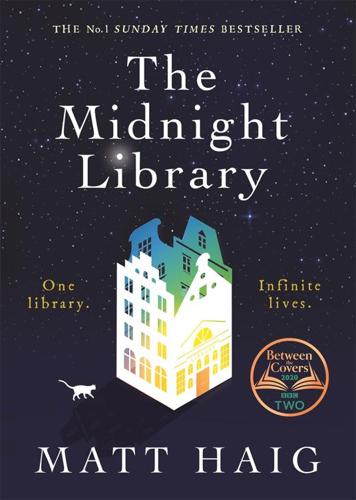
The Midnight Library
by
Matt Haig
Published 12 Aug 2020
I have wanted to die for quite a while. I have carefully calculated that the pain of me living as the bloody disaster that is myself is greater than the pain anyone else will feel if I were to die. In fact, I’m sure it would be a relief. I’m not useful to anyone. I was bad at work. I have disappointed everyone. I am a waste of a carbon footprint, to be honest. I hurt people. I have no one left. Not even poor old Volts, who died because I couldn’t look after a cat properly. I want to die. My life is a disaster. And I want it to end. I am not cut out for living. And there is no point going through all this. Because I am clearly destined to be unhappy in other lives too.
…
And yes, I just thought I’d send a message that, you know, I am out here living my best life. But I miss home after a while.’ ‘Which one?’ asked Marcelo, with a quietly cheeky smile. ‘I mean, do you feel more at home in London, or LA, or on the Amalfi Coast?’ It seemed this was the life where her carbon footprint was the highest. ‘I don’t know. I suppose I would say London.’ Marcelo took a sharp intake of breath, as if the next question was something he had to swim under. He scratched his beard. ‘Okay, but I suppose it must be hard for you, as I know you shared that flat with your brother?’ ‘Why would it be hard?’
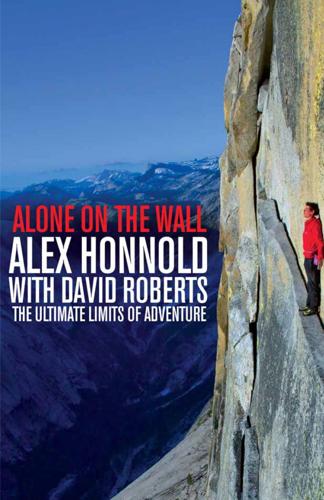
Alone on the Wall: Alex Honnold and the Ultimate Limits of Adventure
by
Alex Honnold
and
David Roberts
Published 2 Nov 2015
Almost at once, however, I had my qualms about the project. Ever since my “epiphany” in Chad, I’d agonized over the environmental impact of my climbing. To fly the three of us down to Mexico—not to mention other crew members to operate automated drones to capture footage high on the wall—would be to leave a sizable carbon footprint. Could I really justify burning all that jet fuel and using pricey high-tech hardware just to capture my several hours of play on Portrero Chico? What if we got everybody down there, ready to film, and I chickened out because I decided I wasn’t comfortable going up on the wall without a rope?
…
That way, Cedar could conserve the energy he otherwise would have wasted on belaying and rope management. I tried to jug each pitch in four minutes flat. It was at this point, however, that the ethical dilemma of my little “project” started to nag at me. Traveling to places like Chad has made me acutely mindful of my own impact on the world around me. At first, I’d assumed that my carbon footprint would be much lower than that of the average American, because I lived in a van and didn’t own many possessions. But as I read more about the issue, I realized that the amount of flying that I did still left me near the highest percentile of environmental impact. My next thought was to buy carbon offsets—until I researched them and discovered that they weren’t the cure-all I was hoping for.

Tomorrow's Capitalist: My Search for the Soul of Business
by
Alan Murray
Published 15 Dec 2022
“It took nearly two decades of dedicated effort in partnership with Conservation International to achieve the milestone of sourcing 99% of our coffee ethically through C.A.F.E. (Coffee and Farmer Equity) practices. Our environmental footprint research shows that by implementing these standards, we have more than halved what our coffee’s carbon footprint would have been otherwise.”15 Johnson emphasized that transparency has been a big part of Starbucks’s corporate culture, citing the annual Global Social Impact Report that the company has published since 2001. The report details both the positive achievements and the places the company has fallen short—not something you see very often.
…
He compares it to the way automobile executives must have felt in the 1970s and ’80s when they decided to invest billions of dollars in smaller, more fuel-efficient cars, or how IBM executives must have felt in the early 1980s when it made a huge investment in smaller, less profitable computers, instead of doubling down on their profitable mainframe computer business. In a December 2020 column for Fortune, Schneider described the journey he and his company took to get serious about the issue. Among other measures, Nestlé has committed to net-zero carbon emissions by 2050, reformulating products to have a smaller carbon footprint, including introducing more plant-based foods, and moving toward 100 percent renewable electricity. Its Project ReLeaf will plant three million trees in Malaysia by 2023. “Personally, I was not exactly an early adopter when it comes to addressing climate change,” he confessed. “In the early 2000s, when I had just become CEO of a global health care company, I was agnostic and wanted to see more proof that the massive investments required to address global warming were really needed.

Transport for Humans: Are We Nearly There Yet?
by
Pete Dyson
and
Rory Sutherland
Published 15 Jan 2021
More widely, cycling is bounded in its ability to reduce car mileage, and not just for the obvious reason that bikes do not go as far or as fast. Consider that in the Netherlands, 29% of all trips are by bike compared with just 2% in the UK – and yet both countries have very similar per capita carbon footprints for surface transport.25 How can this be? Unfortunately, it appears that the Dutch like their (large) cars too, using them just as much for leisure travel as the Brits, while the bicycle’s power is harnessed for additional travel (rather than as a substitute). Answers to this puzzle are not obvious, but some blend of novel policies, new regulations and culture-shift are good places to start.
…
To put some numbers on it, in the United Kingdom it is estimated that 62% of all emissions reductions needed to achieve net zero by 2050 will demand non-mandatory behaviours that include adopting new technologies, switching to greener modes and reducing the use of the high-polluting options that remain.1 For example, people will need to choose how soon to make their next car electric, think about whether to holiday abroad, teach their children about safe walking and cycling, and decide where and when to reduce their carbon footprint. The revised targets announced in 2021 hasten all this still further.2 Consequently, transport is going to need to master the art and science of presenting these sometimes-tough choices to people. For all these peaks cannot be scaled at once: stay home to flatten the curve … but keep up travelling for work and holidays to help the economy; change travel to save the environment and embrace new technology for the future.
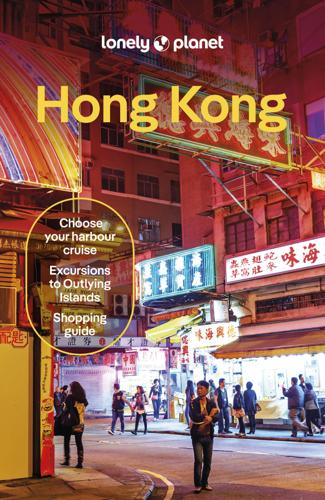
Lonely Planet Hong Kong
by
Lonely Planet
Responsible Travel Climate Change & Travel It’s impossible to ignore the impact we have when travelling, and the importance of making changes where we can. Lonely Planet urges all travellers to engage with their travel carbon footprint. There are many carbon calculators online that allow travellers to estimate the carbon emissions generated by their journey; try resurgence.org/resources/carbon-calculator.html. Many airlines and booking sites offer travellers the option of offsetting the impact of greenhouse gas emissions by contributing to climate-friendly initiatives around the world. We continue to offset the carbon footprint of all Lonely Planet staff travel, while recognising this is a mitigation more than a solution.
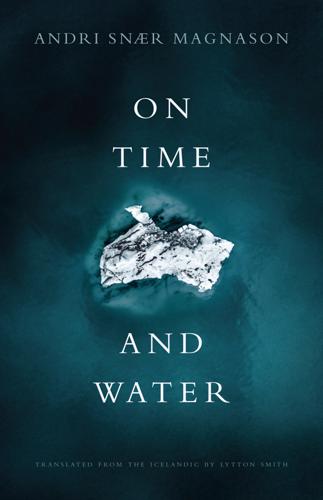
On Time and Water
by
Andri Snaer Magnason
Published 15 Sep 2021
Methane, twenty-five times more powerful a greenhouse gas than CO2, will also be vented. Simultaneously, we’ll see the oxidation of the once-frozen soil. As much CO2 will discharge as when the wetlands have dried up. These emissions will warm the Earth and release yet more methane and nitrous oxide. If such a process is initiated, all our discussions about reducing our carbon footprint through diet and via flygskam, “flight shame,” will seem completely ridiculous. Such a chain reaction could throw the Earth into a period of complete atmospheric and climatic chaos. The only remaining plan would be to hoard dried food and fasten our seat belts. The 2018 UN Climate Change Conference in Katowice, Poland issued an emergency call.
…
Studies show that the United States could produce food for eight hundred million people if all the grain that ends up as animal feed were used for human consumption.79 Humankind could sustain about four billion more people using just currently available agricultural land, without needing to encroach on the remaining rainforest or Earth’s unspoiled spaces.80 One meal of beef is equal to twenty meals of pasta, based on carbon footprint. Perhaps Hindus were right to accord cows sacred status; if cows were holy worldwide, our problems would be far less serious. In many cases, we do not need any new technology to solve our problems. The key to the solution is protecting nature. The industrialization of the last centuries has reduced rainforests and wetlands to useless land or to mere raw materials; nature reserves have been established so people can sample a world that once existed.

Power Hungry: The Myths of "Green" Energy and the Real Fuels of the Future
by
Robert Bryce
Published 26 Apr 2011
For Gore, the villain is carbon dioxide. And while the sin to be cured varies with the preacher, the message of deliverance is largely the same: Repent. Give up those evil hydrocarbons and embrace the virtues of renewable energy before you face the eternal damnations of foreign oil, global warming, and a carbon footprint that’s bigger than Boone Pickens’ ego. Lovins is among the most quoted purveyors of energy happy talk. In 2007, he wrote a short piece called “Saving the Climate for Fun and Profit” in which he said that curbing carbon dioxide emissions “will not cost you extra; it will save you money, because saving fuel costs less than buying fuel.”1 In 2008, he claimed that the issues of “climate change, oil dependence, and the spread of nuclear weapons—go away if we just use energy in a way that saves money, and since that transition is not costly but profitable, it can actually be led by business.”2 Venture capitalist Vinod Khosla is another veteran happy talker.
…
But the potential offered by thorium, modular reactors, pebble-bed reactors, and other reactor designs is obvious.19 Furthermore, it’s clear that nuclear power must be part of the energy mix if the world is to achieve any significant progress in cutting the growth of carbon dioxide emissions. In its 2009 World Energy Outlook, the International Energy Agency declared that “nuclear technology is the only large-scale, baseload, electricity-generation technology with a near-zero carbon footprint.”20 If policymakers are going to agree that carbon dioxide is a problem, then, as the Pulitzer Prize–winning author Richard Rhodes has put it, “nuclear power should be central.” In 2000, Rhodes—who has probably written more about nuclear weapons and nuclear power than any other author—along with Denis Beller of Los Alamos National Laboratory, writing in an article in Foreign Affairs called “The Need for Nuclear Power,” concluded that “despite its outstanding record, [nuclear power] has ... been relegated by its opponents to the same twilight zone of contentious ideological conflict as abortion and evolution.
…
Cap-and-trade plans Carbon capture and sequestration (CCS), myth about Carbon credits, buying, issue with Carbon dioxide emissions of the developing world myths involving and natural gas offsetting, happy talk on per-capita total, of OECD countries vs. non-OECD countries world average, comparing countries to (fig.) yearly, expectations for See also under specific countries Carbon dioxide emissions reduction as a global priority nuclear power and See also Global climate change; Kyoto Protocol; Zero-emissions Carbon footprint Carbon intensity, reductions in, comparing (fig.) “Carbon neutral” claims, issue with Carbon tax, myth involving Cardinal Mine(fig.) Carter, Jimmy Causation, issue of Cellulosic ethanol Center on Global Change Central African Republic CEPOS (Danish Center for Political Studies) Chad Charcoal, issues with Cheatham, Don Cheney, Dick Chernobyl nuclear accident Chesapeake Energy Chevron Chile(fig.)
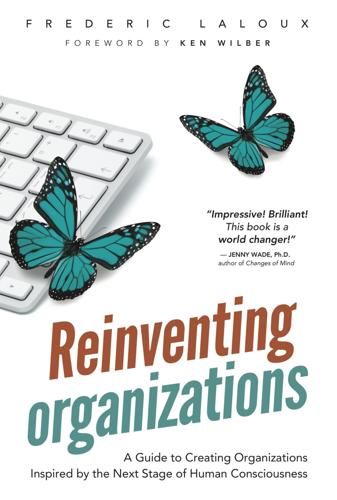
Reinventing Organizations: A Guide to Creating Organizations Inspired by the Next Stage of Human Consciousness
by
Frederic Laloux
and
Ken Wilber
Published 9 Feb 2014
Social responsibility is often at the core of their mission, and it provides the motivation that spurs them on to innovate and become better corporate citizens. Green Organizations work with their suppliers in developing countries to improve local working conditions and prevent child labor; they try to reduce their carbon footprint and their use of water; they strive to recycle their products and reduce packaging. Leaders in Green Organizations maintain that the “stakeholder perspective” might come with higher costs in the short term, but it will deliver better returns in the long run for all parties, including shareholders.
…
The same holds true for social concerns: when we come from a place of wholeness, we feel compelled to do our share to heal our broken relationship with life in all its forms. The organizations in this research have not yet reached the ultimate goal of zero waste, zero toxicity, and zero impact on ecosystems, but many have taken significant steps in that direction. AES, for instance, started planting millions of trees in the 1990s to offset the carbon footprint from its coal-fired plants, at a time when global warming was not yet center stage. It’s not so much in what they do, but in how they do it, that Teal Organizations have a different approach to dealing with their environmental and social impact. They look at the matter from a different angle.
…
Casey Sheahan, Patagonia’s current CEO, explains the journey the company took and its unexpected consequences: About four years ago, we took what was a traditional Corporate Social Responsibility report and we put everything online and it’s called the Footprint Chronicles. … We actually took video cameras, we took tape recorders and still cameras into the factories. We told our factories: we intend to show our customers where everything is made, how it’s made, what the conditions are like, what the impact of transportation and water usage is on the overall carbon footprint. The Footprint Chronicles talks about the good, the bad, and the ugly of everything we make. It’s tracking about 40 styles right now, which represent hundreds of our overall styles in our annual seasonal output. The factories at first, like all of us, were reluctant to go down this path of total transparency.

The Age of Cryptocurrency: How Bitcoin and Digital Money Are Challenging the Global Economic Order
by
Paul Vigna
and
Michael J. Casey
Published 27 Jan 2015
There’s no way to calculate the total energy used by the bitcoin mining network, but that hasn’t stopped some from trying. Back in April 2013, various press reports recounted that bitcoin was consuming 131,000 megawatt hours a day, at a daily cost of $19.7 million. Months later, Guy Lane, an Australian environmental scientist, came up with his BitCarbon method for calculating the carbon footprint of bitcoin. Based on his assumption that a bitcoin miner will on average spend 90 percent of the value of the mined bitcoin on electricity, Lane calculated that a $1,000 bitcoin price would result in 8.2 million tons of carbon per year, about the size of Cyprus’s emissions, and that a $100,000 bitcoin price would produce 825 megatons annually, or the equivalent of Germany’s emissions.
…
Based on his assumption that a bitcoin miner will on average spend 90 percent of the value of the mined bitcoin on electricity, Lane calculated that a $1,000 bitcoin price would result in 8.2 million tons of carbon per year, about the size of Cyprus’s emissions, and that a $100,000 bitcoin price would produce 825 megatons annually, or the equivalent of Germany’s emissions. If the bitcoin’s currency exchange rate ever got to $1 million, a number that some argue is feasible if bitcoin becomes a world-dominant payment system, its network would have a carbon footprint of 8.2 gigatons, or 20 percent of the planet’s carbon output. Bitcoin’s Mining Hashrate over Time (Source: Blockchain.info) The problem with these alarming projections is that they were based on flawed data from Blockchain.info, which was still using outdated GPU-based assumptions about electricity usage.
…
Abed, Gabriel Abridello, Mike accelerators Accel Partners Adams, Douglas Afghan Citadel Afghanistan Africa A-Grade Investments Ahmadi, Parisa AIG Airbnb Akimbo Alamgir, Nadia Alcoholics Anonymous Aleph Alibaba Alipay Alisie, Mihai Allaire, Jeremy al-Qaeda altcoins dogecoin litecoin Realcoin Alyattes, King Alydian Amazon Amazon Cloud American Express AME Ventures Amidi, Saeed Andolfatto, David Andreessen, Marc Andreessen Horowitz Andresen, Gavin Android angel investors anonymity anonymous remailers AntMinter Antonopoulos, Andreas ANX Apache tribe APIs (application programming interfaces) Apple Argentina exchange houses in trust problem in Aristotle Armstrong, Brian ASIC (application specific integrated circuit) chips Assange, Julian assassination AstroPay AT&T Atlas ATS Australia Austrian school of economics automobile loan payments Avalon Average Is Over (Cowen) Babylonians Back, Adam Bacon, Francis Bagehot, Walter Banco Popular Banga, Ajay Bank of America Bank of England (BOE) bankruptcy banks, banking central fees of fractional reserve Glass-Steagall Act and ledger and Medici modern payment system centered around people excluded from system of shadow system of tellers in too-big-to-fail Baran, Paul Barbados Barbie, Johann Barclays Barrett, John barter Beckstrom, Rod Bel Bruno, Joe Bell, Jim Bernanke, Ben Betamax BitAngels BitCarbon bitcoin(s): addresses in artwork and songs about balance in blockchain ledger in boom in brand of carbon footprint of as commodity community around creation of; see also Nakamoto, Satoshi crime and cryptography mailing list and culture of as currency defined as deflationary currency dollar and double-spending of early adopters of encryption in evangelists of exchange rate of fraud and future of Genesis Block in imitators of, see altcoins issuance of meetups for mining, see bitcoin mining and miners merchants accepting as movement as payments protocol as property regulation of, see regulation release of reward program in security and software for symbols of as technology thefts of traceability of transaction confirmation in transaction fees and transaction malleability bug and transaction volumes of trust and value of volatility of wallets for wealth concentration and Wild West phase of work in Bitcoin 2.0 (Blockchain 2.0) bitcoin barons bitcoin.com Bitcoin Decentral Bitcoin Faucet Bitcoin Forum Bitcoin Foundation Bitcoinica Bitcoin Magazine Bitcoin Market bitcoin mining and miners ASICs in cloud at data centers Dr.
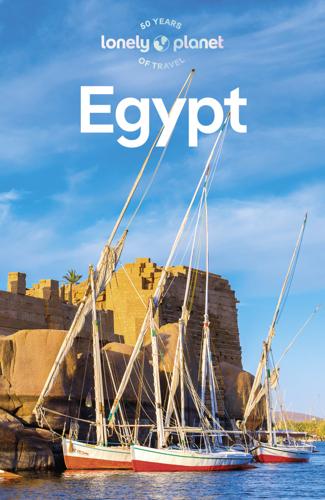
Lonely Planet Egypt
by
Lonely Planet
Responsible Travel Climate Change & Travel It’s impossible to ignore the impact we have when travelling, and the importance of making changes where we can. Lonely Planet urges all travellers to engage with their travel carbon footprint. There are many carbon calculators online that allow travellers to estimate the carbon emissions generated by their journey; try resurgence.org/resources/carbon-calculator.html. Many airlines and booking sites offer travellers the option of offsetting the impact of greenhouse gas emissions by contributing to climate-friendly initiatives around the world. We continue to offset the carbon footprint of all Lonely Planet staff travel, while recognising this is a mitigation more than a solution.
…
They run a PADI programme called Dive Against Debris clean-ups. Also look out for Green Fin dive centres. Although Egypt is well networked with flights covering the distances between Cairo, Luxor, Aswan and Abu Simbel, most of them take less than 1½ hours. Consider taking the train, bus or sleeper train to lower your carbon footprint. A Bellies En-Route (belliesenroute.com) food tour is a Cairo highlight, while Karim Serrie and Rasha Aggag know the Alexandrian food scene inside out. Marsam Hotel in Luxor showcases country cooking. REAL_LIFE_PHOTO/SHUTTERSTOCK © In the 2022 Sustainable Development Report, Egypt ranked seventh out of 20 Arab countries, fourth out of 47 African countries and 87th globally out of 163 countries.

The Zero-Waste Lifestyle: Live Well by Throwing Away Less
by
Amy Korst
Published 26 Dec 2012
It can’t be recycled, only downcycled, and really, humanity can use only so many plastic benches. Compostable toothbrushes (environmentaltoothbrush.com.au): Toothbrushes made with a bamboo handle and biodegradable bristles are another option to consider. These are sold by an Australian company, so you’ll also want to think about your carbon footprint if you choose to order them. They come in sets of twelve packaged in cardboard and paper. After use, these toothbrushes can be placed in your home compost pile, where they naturally biodegrade. Toothpaste Until recently, the Tom’s of Maine toothpaste company manufactured their toothpaste in recyclable aluminum tubes.
…
Besides the packaging garbage created from the plastic sleeves the flowers come in, there is a significant environmental impact created from cutting and transporting exotic flowers halfway around the world to the coolers of our grocery stores. You can minimize this impact by seeking out a local flower shop or nursery. Try to find locally grown, in-season flowers—they will have a much smaller carbon footprint if they were grown close to home. I once received a lovely gift from my eco-conscious husband—a single rose wrapped in a sleeve made from a banana leaf and tied with twine. You can also consider gifting a potted plant, which is a much better investment for the planet. St. Patrick’s Day Luckily St.
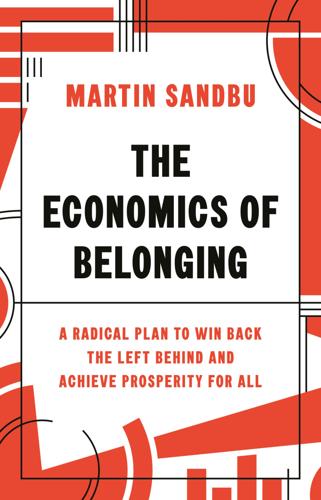
The Economics of Belonging: A Radical Plan to Win Back the Left Behind and Achieve Prosperity for All
by
Martin Sandbu
Published 15 Jun 2020
A $91/tonne carbon tax would be needed to keep temperature rises below 3 degrees beyond preindustrial levels, and as much as $225/tonne to stay below 2 degrees.25 Such taxes would be a direct blow at the left behind, who, in the short run at least, bear the lion’s share of higher carbon prices. Carbon use roughly follows consumption overall, so the richer you are, the bigger your carbon footprint—but taxing that footprint can hurt the left behind more. This is in part because those with a lower income spend a larger share of it on essential energy and transport costs. It is in part because cities are more energy efficient than the less densely populated left-behind areas where car use is unavoidable and public transport poor.
…
James Hansen, a founding father of climate science, proposed it first.26 Canada is trying to implement it; official economic advisers in France and Germany are advocating it.27 This would create a permanent direct cash stream into everyone’s pocket. Anyone who uses less than average amounts of carbon would receive more in payments than they lost in higher prices—protecting the most vulnerable while rewarding anyone who reduces their carbon footprint. The cash stream would give struggling groups the wherewithal to respond to such incentives in ways that work for them—by upgrading to more energy-efficient equipment, say. It would also at a stroke create a constituency in favour of increasing environmental taxes further (and this idea could be extended to other environmental problems than carbon emissions).

Scary Smart: The Future of Artificial Intelligence and How You Can Save Our World
by
Mo Gawdat
Published 29 Sep 2021
That harms the planet and delays delivery to the consumer and affects the freshness of the product. The quarterly pressure to achieve the numbers makes these factors, and many others, acceptable, even standard, practice. But it doesn’t need to be that way. With enough intelligence, we can find better routes to reach consumers using electric vehicles for a quick, zero-carbon-footprint product mobility. With enough intelligence, we can anticipate demand accurately and hence build smaller fulfilment centres, thus reducing power consumption and improving product freshness. With enough intelligence, we can inform the consumer and understand their preferences better so that they can choose to order exactly what they need exactly when they need it and in doing so reduce waste, as well as leaving them with some savings as the waste reduction also gradually improves our planet.
…
Yet, without you, the 99 per cent does not matter. All of it, without your contribution, would not make things happen. Making a difference, believe it or not, is entirely up to you. Take this thought seriously. Saving our planet from global warming is entirely up to you. If we need to reduce the carbon footprint by a billion road trips a day, for example, in order for the trees to keep up and clean the air, it will still be that one trip that you skip that will tilt the scale. If saving the hundreds of dying species that are suffocating in microplastics means that we, humanity, must reduce our single-use plastic consumption by a trillion bottles a year, it will still be that one bottle that you recycle that will tilt the scale.

The New Class Conflict
by
Joel Kotkin
Published 31 Aug 2014
It also represents an enormous environmental bonus, as it greatly reduces both energy use and commute times. Indeed, a study by Global Workplace Analytics finds increased telecommuting could reduce carbon emissions by over 51 million metric tons a year—the equivalent of taking all of greater New York’s commuters off the road. Additional carbon footprint savings will come from reduced office energy consumption, roadway repairs, urban heating, office construction, business travel, and paper usage (as electronic documents replace paper). Traffic jams idle away almost 3 billion gallons of gas a year and account for 26 million extra tons of greenhouse gases.89 The rapid shift toward home-based business may also enhance the prospects of the Yeoman class in coming decades.
…
Fred Siegel, “The Poverty of Environmentalism,” Society, vol. 51, no. 3 (June 2014): 258–61. 98. Karl Sharro, “Density or Sprawl,” in Dave Clements et al., The Future of Community, pp. 68–77. 99. Witold Rybczynski, “Behind the Façade,” Architect, November 2013. 100. Bruce Nussbaum, “Al Gore’s Carbon Footprint Is Big,” Bloomberg Businessweek, February 27, 2007, http://www.businessweek.com/innovate/NussbaumOnDesign/archives/2007/02/gores_carbon_fo.html; David Zahniser, “Do As We Say, Not As We Do,” LA Weekly, May 30, 2007. 101. Karrie Jacobs, “It’s a Small World,” Metropolis Magazine, April 2013; Susan Johnston, “Micro Apartments Offer Small Slice of City Living,” U.S.

After the Gig: How the Sharing Economy Got Hijacked and How to Win It Back
by
Juliet Schor
,
William Attwood-Charles
and
Mehmet Cansoy
Published 15 Mar 2020
That trend reversed in 2010, and deaths have climbed since then. This is true even though ride-hailing services are a popular option for people who have been drinking. Moreover, as ride-hailing has expanded, additional deaths have been rising. We know less about how Airbnb and other accommodation platforms are affecting carbon footprints. But the assumption that they are doing wonders for the environment is questionable. In contrast to some platforms that have quietly stopped making environmental claims, Airbnb has doubled down, producing glossy reports with evidence that its listings are lower-impact than hotel stays.41 This is likely correct, although it’s also the case that there’s limited overlap between Airbnb customers and guests at the big downtown hotels.
…
From the former it takes convenience, sophisticated ratings systems, the redistribution of value, and the ability to automate many management functions. Big Sharing finds the sweet spot of economic and noneconomic incentives that encourages widespread participation. It can also use the data it amasses to propel a learning process for reducing carbon footprints and generating interpersonal trust. There’s also contribution from “Small” Sharing, the nonprofits who bring a strong social mission and trading options beyond renting and selling. Most important, a true sharing sector will operate with democratic governance and widespread ownership, to protect against exploitation, excessive wealth extraction by founders and investors, and other antisocial outcomes.
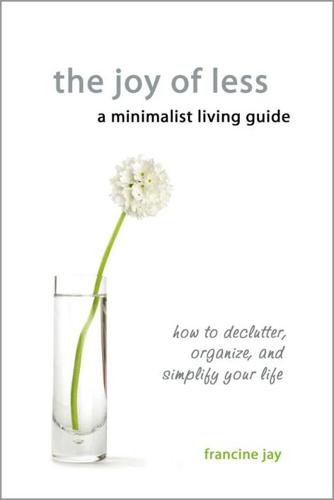
The Joy of Less, A Minimalist Living Guide: How to Declutter, Organize, and Simplify Your Life
by
Francine Jay
We certainly don’t want to deplete our natural resources on items we use for minutes! Unfortunately, “single-use” stuff has become increasingly popular in our society: from plates to razors, napkins to diapers, cameras to cleaning cloths. Many such items are used daily, and generate a tremendous amount of waste. You can slash your carbon footprint dramatically by favoring reusable versions: like handkerchiefs, canvas shopping bags, rechargeable batteries, proper tableware and utensils, and cloth napkins, diapers, and towels. As always, let the lifespan be your guide; if it’s ridiculously short, look for a longer-lasting alternative. Consider the materials When evaluating a potential purchase, give due consideration to the materials from which it was made.
…
For example, consider organizing a tool share in your neighborhood; collect funds from members, and purchase a shared set of equipment to store in a central location. Participants can then “check out” the ladder, chainsaw, or weed whacker when they need it—rather than having to purchase one of their own. Car share programs are another example—and a fabulous way to cut our carbon footprints. They’re popular in urban areas, where residents have only occasional need for such transportation. The cars are distributed in convenient locations throughout the city, and members pay hourly rates (which typically include gas and insurance) to use them. Such programs not only save us money on registration, insurance, maintenance, and parking; they also reduce the congestion on our roads, and the pollution in our air.

Rule of the Robots: How Artificial Intelligence Will Transform Everything
by
Martin Ford
Published 13 Sep 2021
Dario Amodei and Danny Hernandez, “AI and Compute,” OpenAI Blog, May 16, 2018, openai.com/blog/ai-and-compute/. 11. Will Knight, “Facebook’s head of AI says the field will soon ‘hit the wall,’” Wired, December 4, 2019, www.wired.com/story/facebooks-ai-says-field-hit-wall/. 12. Kim Martineau, “Shrinking deep learning’s carbon footprint,” MIT News, August 7, 2020, news.mit.edu/2020/shrinking-deep-learning-carbon-footprint-0807. 13. “General game playing with schema networks,” Vicarious Research, August 7, 2017, www.vicarious.com/2017/08/07/general-game-playing-with-schema-networks/. 14. Sam Shead, “Researchers: Are we on the cusp of an ‘AI winter’?,” BBC News, January 12, 2020, www.bbc.com/news/technology-51064369. 15.

Supertall: How the World's Tallest Buildings Are Reshaping Our Cities and Our Lives
by
Stefan Al
Published 11 Apr 2022
Each of the mirrors points at a steam turbine inside the tower, intensely focusing the sun beams, fueling the cement factory with solar power instead of gas or coal. As promising as it may be, the factory is contingent on areas of ample sunshine. Could we do without concrete altogether? If we were to use steel, the total carbon use would be even worse, since steel has a much higher carbon footprint. We need a new concrete that can last and does not damage the environment. Already, a quiet war on concrete is being fought. AshCrete is a concrete alternative that replaces up to 97 percent of traditional cement with fly ash, a recycled material made of the ash waste from coal-fired power stations.
…
With more people per unit of land, cities can invest more tax resources in infrastructure such as public transportation and high-quality open space. With people in compact multifamily buildings instead of single-family homes, there is less exterior surface area per apartment, with less heat or cooling lost to the outdoors. This helps reduce energy bills and carbon footprints. Compare Manhattan with Phoenix. Manhattan has more skyscrapers, hence is more dependent on energy-intensive structures. Nevertheless, in the sprawling city of Phoenix, people need cars and miles and miles of energy and water lines. At the same time, dense urban development helps preserve land for environmental or agricultural benefits.
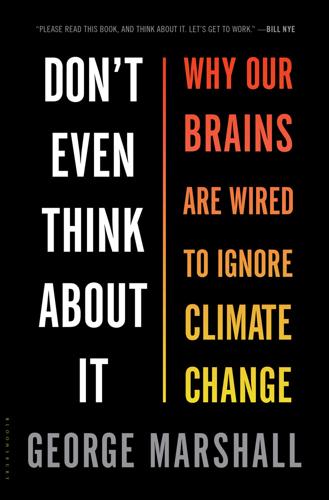
Don't Even Think About It: Why Our Brains Are Wired to Ignore Climate Change
by
George Marshall
Published 18 Aug 2014
Live Earth struggled to find a unifying narrative for climate change that could accurately present the issue while honoring the artistic integrity of the performers. They settled on the uncomfortable compromise of filleting short bursts of information and speeches in between the entertainment. In the event, this felt like a tax. As the British DJ Chris Moyles said after earnest filler on reducing your carbon footprint, “Serious stuff over! Shall we get back to the show?” The usual green narratives were all in play. The grand finale at Wembley Stadium in London was preceded by a symbolic turning off of the lights. The lights came back up as Madonna bounded onto the stage in a black satin leotard, accompanied by a long line of children in school uniforms (sarcastically called the “Hogwarts School Choir” by the New York Times) and swore at the audience: “If you want to save the planet, let me see you jump.
…
The inclusion of such minor changes was supported by a large and verbose academic literature that, in its own jargon, argued that these “easy” steps could “spill over” into larger behaviors and that “hooking people with a small request” provides a “foot in the door,” whereby they can be ushered onto the “virtuous escalator.” Books proliferated telling people to Measure their Carbon Footprint, get Low-Carbon, become Eco-Friendly, Save the Earth for a Fiver, Tread Lightly on the Earth, Kick the Fossil Fuel Habit, go on a Climate Diet. Or go on a Carbon Detox—the title of my own contribution to this short-lived and rapidly remaindered eco-tastic subgenre. Maybe we all went too far and, in our eagerness to find homey messages that would engage people, we fell into the wicked trap of limiting climate change through the solutions we proposed.

Amateurs!: How We Built Internet Culture and Why It Matters
by
Joanna Walsh
Published 22 Sep 2025
One of Google’s complaints against Gebru was her open contribution to Google Brain Women and Allies’ listserv, criticising Google’s lack of progress in hiring women.24 (A 2016 AI Now Institute report found that just 10 per cent of AI researchers at Google were women, and the Global Gender Gap Report 2018 by the World Economic Forum showed that only 22 per cent of AI professionals globally are female). Another was her co-authorship of a paper on dataset bias in AI, covering everything from its physical impact – the environmental racism of AI’s carbon footprint that hits global-majority countries harder – to the creation of a ‘hegemonic world view from the training data’, to the recycling of abusive language, hate speech, microaggressions, stereotypes and dehumanising language aimed at specific identities. In a feat of linguistic re-assignation, demonstrating exactly what Gebru criticised, Google still claims Gebru ‘resigned’.
…
Aarseth, Cybertext (John Hopkins University Press, 1997), p. 1. 43.Jody Serrano, ‘Reddit CEO Flames Protesting Moderators, Calls Them “Landed Gentry” ’, gizmodo.com, 16 June 2023. 44.Wark, A Hacker Manifesto, p. 43. 45.Ibid., p. 53. 46.Agamben, ‘The Melancholy Angel’, p. 113. 249 Index Page numbers in bold refer to illustrations A Hacker Manifesto (Wark), 213, 216 Aarseth, Espen, 219 abjection of self, 185–6 Abramovic, Marina, 141 abundance, 106 academias, 156–7, 163 accelerationism, 91–4 accountability, 7 action gaze as, 54 participation via, 159 Addison, Joseph, 61 Adorno, Theodor, 154–5, 160, 160–1, 184, 206, 208 advertising, 81–2 aesthetic abstraction, 208–9 aesthetic acts, 220–1 aesthetic alienation, 208 aesthetic appreciation, of the cute, 37–41, 47 aesthetic art, 37 aesthetic body, the, 164, 166–71 aesthetic capitalism, 211, 212–15 aesthetic categories, 27–9, 34, 35, 37, 49, 50, 171 aesthetic choice, 162 aesthetic colonisation, of the historical past, 74–5 aesthetic consumption, 13 aesthetic culture, 24 aesthetic diversity, 163 aesthetic doubling, 17 aesthetic encounters, 209 aesthetic enjoyment, 128 aesthetic experience, 9, 12, 15, 29, 36–41, 104–5, 210 aesthetic identities, online, 161–2, 165, 166–71 aesthetic judgement, 13, 30, 34, 163, 205 aesthetic levelling, 212–13 aesthetic objects, 84 aesthetic outfits, 164 aesthetic pleasure, 107, 118–19 aesthetic products, AI, 204–6 aesthetic professionalism, 183 aesthetic professions, 13–14 aesthetic reactions, 28 aesthetic relations, 23 aesthetic representation, and identity, 164, 166–71 aesthetic separation, 80 aesthetic space, 220 aesthetic theory, 166 aesthetic transaction, fulcrum of, 12 aesthetic value, 31 aesthetic work, 12, 221 aesthetics, 205 aestheticiness of, 154 AI art, 108 amateurism, 7 body representation, 164, 166–71 capitalised, 16 commodification of, 13–14 as commodified choice, 164 conceptualisation, 2, 22–4, 153 consumer, 154–5 core, 156 cottagecore, 106, 153, 159250 dystopian grunge, 93–4 and economics, 28 everyday, 210 expansion of digital, 53 and fandom, 9 farmhouse chic, 106 focus, 171 as identity choice, 171 internet, 2, 22 internet-native, 52 Kant and, 9–10, 205 legacy media, 52 need for, 222 net art, 21–2 the New Aesthetic, 53–9, 62, 70–1, 73, 76 nostalgic, 20 online, 21–2, 153 outdatedness, 52 politics as, 201 reclaiming, 218 search engine results, 164 shared, 55–6 weak, 39 Aesthetics Wiki, 153–63, 169, 170, 173–4 affectiness, 42 affective labour, 43 affective turn, the, 134 Agamben, Giorgio, 23, 80, 84, 86, 95–6, 208, 221 AI, 1 aesthetic products, 204–6 carbon footprint, 122 energy consumption, 124 environmental racism, 122 GPT large language model, 113 GPT NLP (natural language processing) models, 104 and humour, 101 RLHF (reinforcement learning from human feedback), 205–6 self-learning, 123, 206 spammers and, 214 stupidity of, 124 training, 113, 114–16, 118–19, 122, 205–6 AI art, aestheticness, 127–8 aesthetics, 108 artificiality of, 128–9 and bodies, 126 creators, 117–18 discrimination, 119 evaluation, 116 exhibition, 103 extenders, 105 fragmented mode of, 104–5 and language, 123–4 L’Arrivée d’un train en gare de La Ciotat restoration, 107, 108 mashups, 103, 105, 105–7 monetisation, 124–5 photorealism, 112–13 place of amateurism in, 103 profit, 117–18 prompts, 114 selfies, 108–12, 109, 110, 111, 112, 113 slickness, 101 status, 105 stereotypes, 119 stupidity of, 124 training, 118–19 transformation of Wyeth’s Christina’s World, 101, 102, 103 and what if thought, 126 AI gaze, 127 Akerman, Chantal, 147 algorithms, 1 alienation, aesthetic, 208 alt-right ideologies, 126 always-on networked capitalism, 48 amateur, conceptualisation, 1, 3, 7–26 amateur ethos, loss of, 203 amateurism, aesthetic, 7 influencers, 138 as movement, 221 professionalisation, 1, 3 amateurs, community of, 222 comparison to hackers, 217 and the crowd, 8–9 depictions in art, 7–11 enthusiastic, 4 exploitation, 5 gentleman, 7–8, 11251 levels of engagement, 218 new categories, 16–17 proletarian, 8, 9–10 skilless user status, 218 working-class, 8, 11 American Fiction (film), 189–95 anachrony, 66 analepsis, 66 Anarchia, 55 animatedness, 41 anonymity, 30–1, 68, 73 anti-authoritarianism, 8 appearance, separation from process, 56 Appen, 205 Apple, 69 appropriation, 210–11 Aristotle, 132 Arment, Marco, 55 Armstrong, Nadia J., 125 ARPANET, 7, 216 art, 125 aesthetic, 37 amateur, 103 bourgeois, 191 conceptualisation, 2 consumption of, 2–3 digital, 207 engagement with, 10–11 expansion of, 6–7 and gaze, 127 hidden networks of production, 209–11 image addiction, 125–6 making, 6 mechanical, 37 modernism, 127–8 online creations as, 2 purification of, 24 re-politicisation of, 11 art objects, 205, 207–8 Art Thoughtz (Youngman), 211 art world exploitation, 211 as money-laundering process, 209 use value, 208 artists conceptualisation, 7 outsider, 8 risk, 18–20 role of, 22–3 self-quantification, 36 ArtReview (magazine), 76, 210 arts organisations, 3 artworks, about artworks, 214, 214–15 Atget, Eugène, 114 Atlantic (magazine), 55 attention, 48–9, 218–19 attention economy, 12 audience, 9, 204–5, 211 authenticity, 15, 68, 73, 187 author income, 115–16 authorial intention, 34 authors, 34, 131–6 death of, 131 auto-amputation, 150–1 autobiography, 132–6 autofiction, 197 Autostraddle (website), 180, 195 avant-garde, the, 4, 18–20, 58, 217 avatars, 134, 141 The Backrooms (Found Footage) (film), 73–4 Backrooms, the, 73–4 Baio, Andy, 118–19, 122 Ball, Lucille, 43 Barthes, Roland, 131, 132, 138, 140 Basinski, William, 78–9, 81–4, 94, 99–100 Battelle, John, 5 Baudrillard, Jean, 21 beauty, and truth, 198 belief, 21 Belvedere Torso, the, 104–5 Benjamin, Walter, 54, 56–7 aura of the original, 10, 31, 32 on captions, 114 on the cult of the star, 140 description of folk art, 160–1 and kitsch, 128, 160 and social ritual, 38 ‘The Work of Art in the Age of Mechanical Reproduction’, 155–6 Bennett, Laura, 176, 181–2, 189, 194–5 Bennington, Geoffrey, 133 Berardi, Franco, 75 BeReal (app), 146 Bergson, Henri, 58, 136252 Berlant, Lauren, 9, 169, 205 Berlin, Isaiah, 8 Berners-Lee, Tim, 5, 6 Bibliotik (website), 115 biopolitics, 119–20, 202 Bishop, Claire, 35, 36, 48, 91 black Americans, 41 policed experience of, 19 black body, the, racialised, 97 black female body, the, 164, 166 black women, confessional essays, 185 Blackface memes, 41–2, 42 Blanchot, Maurice, 185, 186, 188, 192, 193 blockchain, 212–13 blogs and blogging, 6, 53, 55–6 Bloomberg, 115 Bluesky (social media platform), 202 blurring, 19–20, 22 bodies, 166–71 and AI art, 126 aesthetics of representation, 164, 166–71 body awareness, 150–2 body-positive movement, 146 Bogost, Ian, 55 BookCorpus (database), 113, 115 books and book lovers, 131–6 Books3 (database), 115 booktwo.org, 54, 55 boredom, 37–8 boring, the, 48 Bourdieu, Pierre, 13, 15, 23–4, 103, 128 bourgeois culture, 191 Bourriaud, Nicholas, 18–19, 23, 43 Boyer, Anne, 134, 135, 151, 195–6 brand allegiance, 137 brand safety, 183 Breton, André, 54 bricolage, 124–5 Bridle, James, 53–9, 70, 72–3, 76, 153, 219 Brodesser-Akner, Taffy, 145 Bunting, Heath, 211 Bustle (online journal), 176 Butler, Judith, 35, 142 Cahun, Claude, 139 capital, 84 capitalised aesthetics, 16 capitalism, 6–7, 84, 218 accelerationism, 93 alienation of, 6 decontextualisation of everything, 106 and risk, 19 capitalist realism, 106 Caplan-Bricker, Nora, 138–9, 141–2 Capote, Truman, 133–4 Carr, Nicholas, 91 CD-ROMs, 53 CDs, 79, 81 Center for Research on Foundation Models (CRFM), 123 Cheezburger (website), 29, 34–5, 44, 48, 50–2 failblog, 47–8 Cheezecake, 45–6 Chénier, Riv, 176, 188–9 Chevalier, Tracy, The Girl with the Pearl Earring, 121–2, 129–30 choice, online, 137 citation, 39, 158 Cixous, Hélène, 114, 123 Clarke, Gerald, 133, 134 clickbait, 198 clickbait prurience, 183 clicktivism, 220–1 CLIP (contrastive language-image pre-training), 114 CLIP Interrogator, 108–12, 109, 110, 111, 112, 113 cloud, the, 209 clueless, the, 59–60 co-creation, 6 co-curation, 6 Coleman, Johnny, 73 Collins, Suzanne, 44 colour, dark academia of, 165 Combo Breakers, 87, 87, 88, 89, 93 Combos, 87, 89 comments, posing, 198 commercial success, 18–19 commodification, of aesthetics, 13–14 commodified leisure, 13 communal experience, 21 communication, 21 community, 29, 47 Community Courier (Bunting), 211253 competition, 14 computer memory, 64 conceptual art, 23 Condé Nast, 204 Consensys, 213 consumer aesthetics, 154–5 consumer choice, and identity, 162 consumers, 15 content conceptualisation, 53, 177–8 and form, 35 content creation, LOLcats, 49 content-as-style, 185–6, 186–7 contingent identities, 167 copies, 31 copyleft, 115 copyright, 33–4, 35, 79, 115–16 evading, 81 online failure, 213 pre-internet, 212 core aesthetics, 156 cosyfaerie, 165, 167–8 cottagecore, 106, 153, 159 countercultures, 7, 217–18 craft, 1 creative accountability, 7 creative agency, of the machine gaze, 57 Creative Commons, 73 creative structures, risk cycle, 19 creative works, ownership, 90 creativity, 1–2, 6, 18, 184 creators, Instagram, 139–40 creepypastas, 74 Cristante, Nina, 142 critical distance, 198 critical public, formation of, 205 critics and criticism, 22, 24–5, 133, 211 crowd, the, 8–9 cultural continuity, glitch in, 80–1 cultural decontextualisation, 23 cultural transmission, 81 culture, 24 curators, 23 currency, 7 cursed images, 60–3, 66, 67–9, 70–1 @cursedimages, 60 cute, the, 136, 141 aesthetic appreciation of, 37–41, 47 cyber space, geographic metaphors, 219 Cybernetic Culture Research Unit (CCRU), University of Warwick, 94 DAIN, 108 DALL·E, 104–12, 105, 109–13, 114 dark academia, 163, 165 Darling (film), 148, 149 Darling, Julia, 147–50, 151 data capitalism, 211 Davis, Russell, 57 Dawkins, Richard, 28 dead sites, 148 death, 146–52 decuperation, 222 Deep Nostalgia AI, 68 deepfakes, 68 de-influencers, 146 Deleuze, Gilles, 54, 202 Anti-Oedipus, 84, 86, 98 on Ethics and Morality, 178 on the real, 20 virtual, 107 Derrida, Jacques, 38–9, 105, 116, 133, 147, 148 Desired Reality, 171 détournement, 128 Dewey, John, 210 différance, 148, 149, 151 difference, recognition of, 2 digital art, 207 digital commons, 213, 222 digital disclosure, 209 digital enclosure, 202, 209 digital interfaces, 79–80 DiNucci, Darcy, 5 disciplinary societies, 202 dis-closure, 219 dis-content, 185–6 discrimination, 119 The Disintegration Loops (Basinski), 78–9, 81, 84, 95–7 Disintegration Loop 1.1, 94–5 fictionalisation, 95 inscription as destruction, 98 YouTube video, 81–3, 94, 95, 99–100 disinterest, 37–8 Diski, Jenny, 65, 66 Disneyland, 21254 dis-solution, 219 distraction, 48–9, 50 distraction capitalism, 50 Doctorow, Cory, 115, 203 Doge meme, 32 domestication, 185 Donnarumma, Marco, 118, 119–20 dopamine, 12, 55 dot-com crash of 2001, 5 doublethink social performance, 21 Douma, Colin, 6 Duchamp, Marcel, 17, 31 Dyer, Geoff, 131, 135 dynamic web pages, 4–5 dystopian grunge aesthetic, 93–4 economic realities, 209 economics, and aesthetics, 28 economy of contribution, 215–16 economy of the amateur, 215–16 education, 11 EleutherAI, 115 emotional economy, the, 63–4 emotions, 61–2, 185 empty performances, 14 Encyclopedia Dramatica (wiki), 158–9 Engrishfunny, 40–1 entertainment, 206 enthusiastic amateurs, 4 envy, 145–6 Erasure (Everett), 189–95 Ernaux, Annie, 65–6 Ethical Artificial Intelligence Team, Google, 122 ethical intent, 177, 180 ethical readership, 192–3 ethics, 178 Everett, Percival, 189–95 everyday aesthetics, 210 everyday life, 20 Excellences and Perfections (Ulman), 137, 138–46 exchange value, 12, 32, 33, 208 exhibition value, 31 exhibition valuelessness, 31 exploitable environment, 87 exploitation, 5, 30, 218 facial recognition technology, 1, 120 fame, 14 fandom, 9, 153–4, 170 Fanon, Frantz, 167 fantasy fiction, 172–3 Fanthorpe, U.
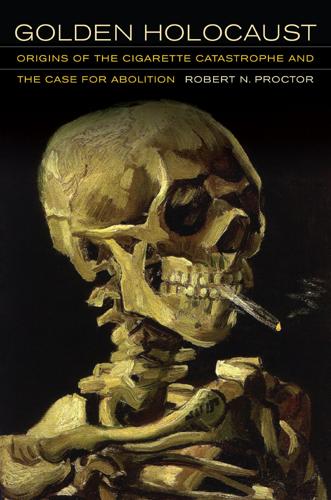
Golden Holocaust: Origins of the Cigarette Catastrophe and the Case for Abolition
by
Robert N. Proctor
Published 28 Feb 2012
American automobiles emit an average of about 4.4 tons of carbon per year (driving 12,000 miles), which means that if cigarettes were to disappear from the United States the country would see a carbon benefit equivalent to taking nearly 4 million cars off the road.7 The benefit would actually be significantly higher than this, however, since EIOLCA modelers measure the carbon footprint of an industry (or product) only as far as the factory gate. Ignored are whatever emissions may stem from transporting cigarettes to retail outlets, or from smokers driving to the store to get their fix. More important, though, are the carbon costs of the medical care required to treat illnesses caused by smoking. Health care in the United States is estimated to have a total carbon footprint of about 550 million metric tons of carbon dioxide,8 and since about 5 percent of all U.S. health care costs stem from tobacco—about $100 billion per year—we can assume that about 5 percent of this health care carbon burden could be avoided by eliminating smoking.
…
Snodgrass in the United States Tobacco Journal.6 Snodgrass was talking only about the United States, but the global toll is now larger by more than an order of magnitude. Six billion kilograms of cigarettes are smoked worldwide every year, which doesn’t count the packaging, cartons, or cases in which they are housed and transported. So it should hardly come as a surprise that cigarettes are leaving a sizable carbon footprint on the planet. Global climate change has stimulated a great deal of interest in what are known as “life cycle” comparisons, meaning comparisons of how different industries contribute to greenhouse warming. And sophisticated models have been developed to calculate impacts for different kinds of industry.
…
In the United States alone, eliminating cigarettes would yield carbon savings equivalent to raising the fuel efficiency of all cars and trucks by several miles per gallon—or to converting the entire electrical grid of a state like Massachusetts to solar power. Eliminating cigarettes would probably make a bigger dent in the country’s total carbon footprint than is presently made by all of the nation’s wind and solar energy combined. We tend of think of saving the planet as involving painful sacrifices or breakthroughs in science and technology, but in this case global environmental health could be boosted by eliminating the world’s leading cause of preventable death.

The Default Line: The Inside Story of People, Banks and Entire Nations on the Edge
by
Faisal Islam
Published 28 Aug 2013
Mr Ramesh had an especially blunt message for the British negotiator at the failed Copenhagen climate talks, now the leader of the Opposition at Westminster. ‘This constant preaching from Ed Miliband, for example. On India and China he became an evangelical, you know, but I can tell you that Ed Miliband’s carbon footprint is probably twenty times my carbon footprint.’ The global debate about climate change becomes tangible in India. Should all its people be connected to the electricity grid? Should Indians who want to travel from Mumbai to Kolkata have to catch a twenty-six-hour train, or should they be able to fly? The growing assertiveness of India and of China in recent years has caused the collapse of negotiations on both world trade and on the environment.
…
If we in the West readjust our lifestyles, then the carbon in that Iraqi oil field, in that Siberian gas field, in that Indian coalfield, might just remain under the ground – and not end up in the atmosphere. The carbon traders of Kingston upon Thames Europe did come up with a method of trying to restrict carbon output, a method dreamt up by the high priests of high finance. It was called carbon trading. Greed can never have been so good. At one point, because ‘almost everything has a carbon footprint’, the proponents of carbon trading believed that carbon could one day become the most traded commodity on the globe. Half the current trading comes through London, and the City of London is emerging as the world centre for carbon capitalism. Kingston upon Thames is an unlikely hub for anything, but nestled in the greenery beside the River Thames lies a futuristic office block designed to accommodate a small army of planet-saving, carbon-dioxide-sapping capitalists.
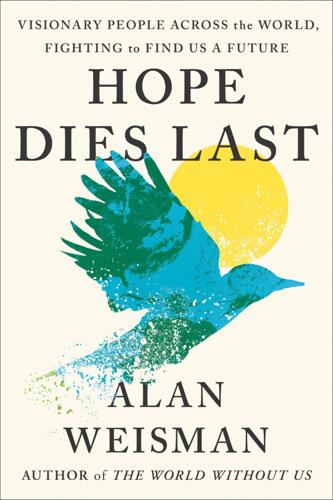
Hope Dies Last: Visionary People Across the World, Fighting to Find Us a Future
by
Alan Weisman
Published 21 Apr 2025
With regulatory pressure against single-use plastics tightening in Europe, it partnered with plastic giant Montachem International to license EU and UK manufacturers to use its resins, whose proprietary formulas combine 12 red and brown seaweeds from around the globe, including Maine kelp. A life cycle analysis, says Briganti, showed that an early version of Loliware’s resin netted about half the carbon footprint of other bioplastics derived from corn, sugarcane, wood, or fermented microbes—and an infinitesimal fraction of what’s emitted in producing conventional plastics, especially given fossil-fuel subsidies. Redirecting those subsidies is part of Loliware’s and Montachem’s strategy, by entering into agreements with national governments.
…
* * * — Every July, Bren Smith takes his family to Newfoundland, where his toddler, Willa, picks blueberries and chanterelles, laughs at moose, and plays on her father’s boyhood beaches. Together they watch lobstermen with icebergs floating behind them pull cages filled with crustaceans displaced from hot New England, amid robust kelp. “You just doubled my carbon footprint,” he told Willa when she was born. “Daddy needs to grow a shitload more kelp.” But now, turning 50, he realizes that’s not going to work. Within 10 years, he knows he will be growing a different crop in Long Island Sound. “It’s important,” he tells his team, “not to be obsessed with kelp.
…
“Quantum Supremacy Using a Programmable Superconducting Processor.” Nature 574 (2019): 505–510. https://doi.org/10.1038/s41586-019-1666-5. Bansal, Sarika. “The Plans for the World’s Next Largest City Are Incomplete.” New York Times, January 20, 2022. https://www.nytimes.com/2022/01/20/world/asia/delhi-worlds-largest-city.html. BBC. “Google Says Its Carbon Footprint Is Now Zero.” September 14, 2020. https://www.bbc.com/news/technology-54141899#. Bearak, Max, Dylan Moriarty, and Júlia Ledur. “How Africa Will Become the Center of the World’s Urban Future.” Washington Post, November 19, 2021. https://www.washingtonpost.com/world/interactive/2021/africa-cities.
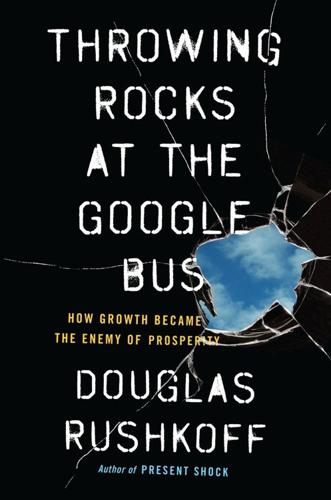
Throwing Rocks at the Google Bus: How Growth Became the Enemy of Prosperity
by
Douglas Rushkoff
Published 1 Mar 2016
Juliet Schor, a sociologist at Boston College, believes we must overcome our fear of appearing fanciful or naïve and get on with the business of reducing work hours.51 Her research shows that more working hours do not lead to a better economy, a better environment, or a better quality of life. Countries that have just begun instituting worktime reduction already have smaller carbon footprints than those that haven’t. Schor has also shown how spending fewer hours on the job frees people to pursue the sorts of things they already do for free and that ultimately contribute even more greatly to the economy—from caring for the sick to teaching children. In the words of New Economics Foundation researcher Julia Slay, “What would the cost to your business be if your workers were never potty trained?”
…
Gox, Bitcoin’s $460 Million Disaster,” wired.com, March 3, 2014. 37. Ryan Lawler, “Bitcoin Miners Are Racking Up $150,000 a Day in Power Consumption Alone,” techcrunch.com, April 13, 2013. 38. Mark Gimein, “Virtual Bitcoin Mining Is a Real-World Environmental Disaster,” bloomberg.com, April 12, 2013. 39. Michael Carney, “Bitcoin Has a Dark Side: Its Carbon Footprint,” pando.com, December 16, 2013. 40. Lawler, “Bitcoin Miners Are Racking Up $150,000 a Day.” 41. Jon Evans, “Enter the Blockchain: How Bitcoin Can Turn the Cloud Inside Out,” techcrunch.com, March 22, 2014. 42. Vitalik Buterin, “DAOs, DACs, DAs and More: An Incomplete Terminology Guide,” blog.ethereum.org, May 6, 2014. 43.
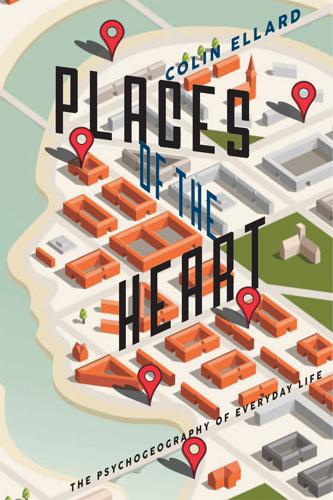
Places of the Heart: The Psychogeography of Everyday Life
by
Colin Ellard
Published 14 May 2015
Writing in the 1970s, Negroponte foresaw the promise of combining computer power with building materials in such a way that a structure could respond intelligently to events that took place in and around it.22 Most work so far in this field has focused on finding ways to enhance environmental sustainability in buildings by designing features that minimize their carbon footprint. The North House, for example, a design that originated in the University of Waterloo’s School of Architecture and was spearheaded by Beesley, was a response to the challenge of building a zero carbon-footprint house in northern climates. The North House accomplishes this by means of a set of sensors that can respond not only to the weather outside, but also to the internal environment and the positions, movements, and activities of its occupants.

A More Beautiful Question: The Power of Inquiry to Spark Breakthrough Ideas
by
Warren Berger
Published 4 Mar 2014
“There is great tension every day7 in the company between being successful in terms of growth, and what this means in terms of our environmental impact.” The bigger Patagonia gets, the more challenging this becomes. Sheahan grapples constantly with the question How can we minimize the environmental impact of the tremendous carbon footprint of operating a $570 million business? What helps guide the company at all times, he said, is the knowledge of how it began. “When the company was started by the founders, it was basically about protecting what they loved, nature, and trying expand the sphere of influence in order to inspire others.”
…
Why should anyone care about us? How in the world are we going to break through? Why are we in business? (And by the way—what business are we really in?) Who have we (as a company) historically been, when we’ve been at our best? How can we minimize that [environmental] impact given that there is a tremendous carbon footprint operating a $570 million business?, (Patagonia’s enduring question) What was our higher purpose at the outset? And how can we rally people around that today? Who must we fearlessly become? What is true about us, at our core? Are we really who we say we are?, (HBO’s big question) Was it an original and worthwhile idea?
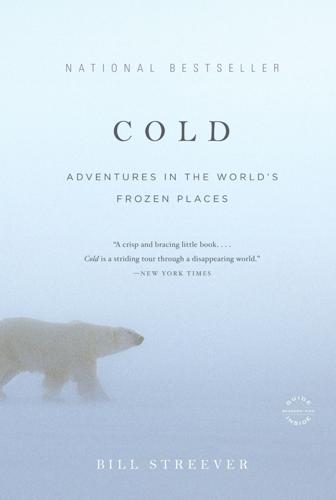
Cold: Adventures in the World's Frozen Places
by
Bill Streever
Published 21 Jul 2009
Stadials such as these (and the Little Ice Age) remind us of the variability of climate, but this variability should not be confused with the kind of variability that is occurring now, which appears to be much more significant and linked to greenhouse gas emissions. JUNE According to the Environmental Protection Agency, burning a gallon of gasoline releases almost twenty pounds of carbon dioxide. Many carbon footprint calculators are available on the Internet. The carbon footprint of even environmentally conscious people is shocking. No one would willingly and knowingly dump ten or twenty pounds (or more) of garbage from their car during the daily commute to and from work, yet that is exactly what most people do every day. Joseph Fourier’s 1827 essay “Mémoire sur les températures du globe terrestre et des espaces planétaires” (“Report on the Temperature of the Earth and Planetary Spaces,” Mémoires de l’Académie Royale des Sciences, vol. 7, pp. 569–604) is often cited as the first description of the greenhouse effect.
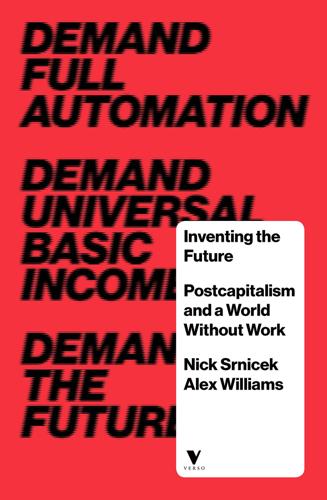
Inventing the Future: Postcapitalism and a World Without Work
by
Nick Srnicek
and
Alex Williams
Published 1 Oct 2015
However, the primary periods of automation coincided with significant reductions in the working week; employment was often sustained by redistributing the work. A second benefit of this policy is its various environmental advantages. For instance, reductions in the working week would lead to significant reductions in energy consumption and our overall carbon footprint.76 Increased free time would also mean a reduction in all the convenience goods bought to fit into our hectic work schedules. More broadly, using productivity improvements for less work, rather than more output, would mean that energy efficiency improvements would go towards reducing environmental impacts.77 A reduction in working hours is therefore an essential plank in any response to climate change.
…
Without these technologies, postcapitalism would risk repeating all the economic problems already seen in the first communist experiment.108 Second, global logistics makes possible the use of a wide array of comparative advantages – not simply wage differentials. To cite one example: research has found that it is more environmentally friendly for certain agricultural goods to be produced in New Zealand and shipped to the UK, as opposed to being produced and consumed in the UK.109 Even after being shipped across the world, they still have a smaller carbon footprint. The simple reason for this is that reproducing the appropriate climate in the UK would involve intense energy consumption. Such environmental comparative advantages only exist where there is an efficient and global logistics network. Finally, logistics is at the forefront of the automation of work, and therefore represents a prime example of what a postcapitalist world might look like: machines humming along and handling the difficult labour that humans would otherwise be forced to do.
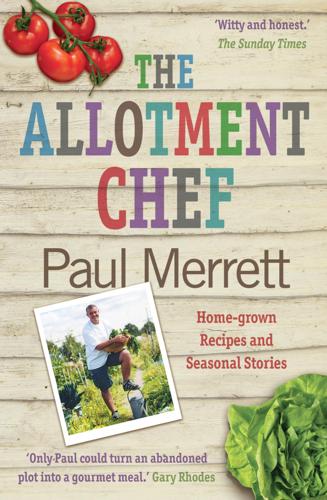
The Allotment Chef: Home-Grown Recipes and Seasonal Stories
by
Paul Merrett
Published 3 Sep 2014
Besides, we are now trying to be responsible human beings and live a slightly greener lifestyle in general, so perhaps a foreign holiday involving air travel is something we have to forgo altogether, right? Our new-found greenness, which MJ was also so keen to encourage, demands that we consider our ‘carbon footprint’, correct? A green activist cannot pick and choose which aspects of planet saving appeal most. Who am I kidding? I’ll be crucified. The days leading up to our departure are spent harvesting, eating and freezing what we can. As well as lettuce and beans, we are now picking tomatoes and spinach.
…
Ellie is not one to be fobbed off so lightly, however, and she quickly points out that you can get sugar snaps at Waitrose and Tesco whenever you want. Top marks for debating skills but, quite frankly, after all this time, our children are completely missing the point when it comes to seasonal eating, food miles and carbon footprints. This does, however, inspire a general conversation with the kids about what food they do like and what food they don’t. I suggest they write a list of all the stuff they hated when we first began growing our own vegetables and what they still hate now having eaten the fresh, home-grown organic versions.

Driverless: Intelligent Cars and the Road Ahead
by
Hod Lipson
and
Melba Kurman
Published 22 Sep 2016
An optimistic scenario would be that driverless cars will improve the efficiency of urban transportation systems, and hence reduce private vehicle ownership, thereby reducing congestion and therefore reducing the size of a city’s carbon footprint that’s related to transportation. Another, less environmentally friendly scenario is that as people embrace the convenience of friction-free mobility, driverless cars will wind up actually logging more vehicle-miles per year on average, leaving a larger carbon footprint. Convenience can be a double-edged sword. People are drawn to convenience like iron filings to a magnet. Sometimes, however, convenience carries with it a price: unexpected and negative consequences.
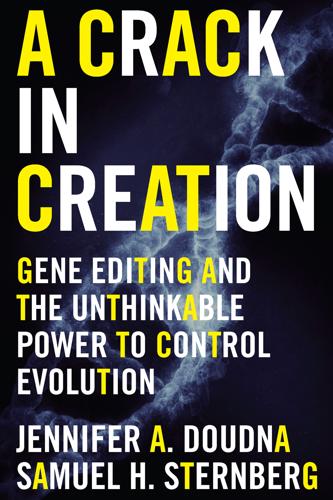
A Crack in Creation: Gene Editing and the Unthinkable Power to Control Evolution
by
Jennifer A. Doudna
and
Samuel H. Sternberg
Published 15 Mar 2017
The gene-spliced salmon contains an extra growth hormone gene, resulting in a fish that reaches market weight in half the time of a conventionally farmed salmon and without any changes to its nutritional content or any increased health risks for either the fish or the humans who eat it. Advocates argue that high-yielding farmed salmon would be a boon to the environment because they would reduce depletion of wild fish stocks, decrease the amount of salmon imported into the United States (currently 95 percent), and deliver fish to the market with a carbon footprint that is around twenty-five times less than for conventional salmon. Still, as with GMO crops, the backlash against genetically modified salmon has been intense; opponents have branded the animals “Frankenfish” and claimed that the salmon endanger consumers’ personal health as well as wild fish ecosystems.
…
Harrison, “Going Swimmingly: AquaBounty’s GM Salmon Approved for Consumption After 19 Years,” SynBioBeta, November 23, 2015, http://synbiobeta.com/news/aquabounty-gm-salmon/. without any changes to its nutritional content or any increased health risks: A. Pollack, “Genetically Engineered Salmon Approved for Consumption,” New York Times, November 19, 2015. a carbon footprint that is around twenty-five times less than for conventional salmon: W. Saletan, “Don’t Fear the Frankenfish,” Slate, November 20, 2015, www.slate.com/articles/health_and_science/science/2015/11/genetically_engineered_aquabounty_salmon_safe_fda_decides.html. 75 percent of respondents wouldn’t eat GMO fish: A.
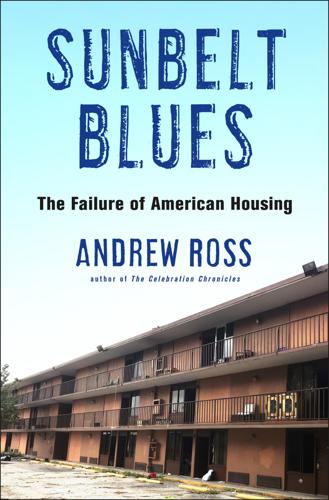
Sunbelt Blues: The Failure of American Housing
by
Andrew Ross
Published 25 Oct 2021
Attempts to regulate developers into building cheaper housing units in more dense clusters or in infill areas are undercut when construction is allowed well beyond the urban fringe. The result is leapfrog development, the scourge of anti-sprawl advocates, and a headache for planners hoping to contain service costs and reduce the carbon footprint of settlement. “Why,” Valerie asks, “would you develop infill in downtown St. Cloud when you can build a new downtown on a floodplain out there near Split Oak?” There is no guarantee that private development on infill will be affordable in the long run; that outcome can only ultimately be ensured by forms of nonmarket housing.
…
Yet it is by no means clear how the count will actually be conducted and who is responsible for ensuring that the developers do not cut corners to evade their commitments.38 As for the county’s record on sustainable growth, Celebration made waves in the 1990s as a New Urbanist model of “traditional neighborhood development,” notable for mixed-use buildings, higher density per acre, street connectivity, and pedestrian-friendly principles. But twenty-five years after its founding, for all its virtues, no one would describe the town as an attainable model for anyone on a budget. Like Celebration, Sunbridge and North Ranch may turn out to have lower internal carbon footprints than the typical sprawl subdivision, but they will be primarily marketed to higher-income buyers. Is sustainability to be measured only by metrics like neighborhood walkability, reduced water consumption, and increased number of solar roofs? In a context of extreme housing inequality, such well-meaning physical goals cannot be disconnected from economic ones.

Magic Internet Money: A Book About Bitcoin
by
Jesse Berger
Published 14 Sep 2020
For instance, the most popular music video of 2019 used as much energy as 40,000 US households after hitting a record of 5 billion views on YouTube.30 Meanwhile, the data centers that store and share those videos consumed 2% of worldwide electricity, and their appetite is expected to grow at least four-fold over the coming decade. This information is not presented as a defense of Bitcoin’s energy use, but merely to suggest that concerns for our carbon footprint should be considered in its broadest scope. Without question, Bitcoin has a large and growing demand for energy, but for all that it takes, you may be surprised to learn that it also has meaningful ways of giving back. 11.6.2 Mining: Energy Efficiency “To truly transform our economy, protect our security, and save our planet from the ravages of climate change, we need to ultimately make clean, renewable energy the profitable kind of energy.”

Driverless Cars: On a Road to Nowhere
by
Christian Wolmar
Published 18 Jan 2018
There were fewer than 2 million motor vehicles in the United Driverless Cars: On a Road to Nowhere Kingdom in 1950, compared with 37 million today. The 1950s was a golden age when it seemed that motoring offered unparalleled freedom to travel with literally no downsides. As Steven Parissien, author of a history of the motor car, puts it: ‘no one in the fifties worried about emissions, about carbon footprints or … about the ready supply of cheap oil’.1 Cars transformed the way people lived. The very geography of towns and cities changed as suburbs, whose location had previously been limited by the need to be close to a railway station or tram stop, could spring up anywhere. Planning laws were adjusted to take into account this new-found access to mobility.

The Virgin Way: Everything I Know About Leadership
by
Richard Branson
Published 8 Sep 2014
In 2005, long before they started to collaborate with Wal-Mart on the CFL drive, GE’s CEO Jeffrey Immelt launched their ‘Ecomagination’ business push, which was neatly encapsulated by the slogan ‘Green Can Be Green’ (as in the ‘greenback’ dollar). Among a multitude of projects ‘Ecomagination’ has spawned programmes like ‘Ecomagination Nation’ a global power and water initiative designed to reduce GE’s carbon footprint, energy and water use. To date eighteen global sites are participating, reducing water use in 2012 by 669 million gallons, the equivalent to shutting down Niagara Falls for seventy-seven minutes. Another GE programme has produced the natural gas-powered ‘Flex Efficiency’ power plant – the emissions reduction in a year from operating just one of these instead of a coal-powered unit is the equivalent to eliminating the annual CO2 emissions of nearly three million cars in Japan.
…
Across seventeen sub-sectors these seven sectors combined could account for a fourteen per cent reduction in the world’s CO2 annual emissions! If these numbers sound ambitious, they are. But Christopher Columbus was told the same thing when, with nothing but the courage of his own convictions, he went in search of the East Indies. And just look at what happened there – without any carbon footprint whatsoever! All these huge numbers are very grand, I know, and a common question is what does all this mean for existing small businesses and entrepreneurs looking to start one? The simple answer is – a lot. In the long term, value or purpose-driven entrepreneurs stand a much better chance of succeeding in a global marketplace in which regulators everywhere are steadily tightening the compliance rules.

Red Flags: Why Xi's China Is in Jeopardy
by
George Magnus
Published 10 Sep 2018
At the same time, China will also have to demonstrate a willingness to embrace continuous coal production capacity and usage cutbacks, markets in carbon trading, and measures to relieve water scarcity and improve the distribution and efficiency of water allocation. China’s attempts to improve its carbon footprint and turn its back on pollution-oriented growth are mixed. It has cancelled numerous new coal-fired power plants and shut down capacity, but announced cutbacks in capacity often fall short of actual shut-downs. There have been several examples of over-ambitious or ill-thought-out plans to cut coal-fired power or switch to natural gas that have either had to be reversed or postponed because of disruption, inadequate heating supplies, or a failure to allow for the development of alternative energy infrastructure.
…
The long-distance freight train connections and journeys certainly appeal to China’s Silk Road narrative, and to widely shared, sometimes romantic ideas about long-distance train travel. Yet running freight trains halfway across the world is probably more meaningful to rail enthusiasts than it is to the global economy and global commerce. Sending goods by train to Europe is faster than sending them by sea or road, but it is also twice as expensive and leaves bigger carbon footprints. It’s much cheaper than sending goods by air, and there is a limit to what you can put in the hold of a cargo plane. Yet, even though freight traffic between China and Europe is growing quickly from a zero baseline, it’s small. It accounts for about 1 per cent of the volume of total trade. Trains have to stop many times along the way to switch locomotives and trucks to cope with different railway gauges and signalling systems.

Food Intolerances: Fructose Malabsorption, Lactose and Histamine Intolerance
by
Michael Zechmann
and
Genny Masterman
Published 30 Apr 2013
If you eat other kinds of fish, please keep an eye out for sustainable fishing. Please also pay attention to quality in whatever products you use. Organic, free-range eggs (no cage) or local organically farmed meat is not just healthier but also of better quality. Organically and locally grown paprika is more natural than vegetables from afar with a big carbon footprint. Of course, these are decisions you must take yourself, but we have paid attention to these factors in designing our recipes and hope that many others share our opinion in this matter. Unless otherwise indicated, these recipes are always designed for 2 people. Basic recipes Pancakes, crépes & co.
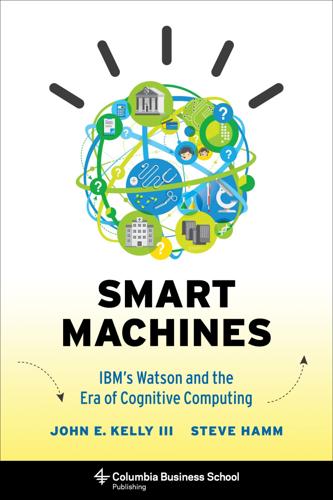
Smart Machines: IBM's Watson and the Era of Cognitive Computing (Columbia Business School Publishing)
by
John E. Kelly Iii
Published 23 Sep 2013
They needed a digital model of a city that they could experiment with.So they built a framework of knowledge about each individual’s activities, including detecting meaningful locations, segmenting trips, calculating the duration of stays, identifying the purpose of each trip, plotting origins and destinations of each trip, tracking the time of day, and specifying the mode of transportation. They even estimated the carbon footprint of each trip. Then they aggregated all of the information about individuals to generate citywide patterns. The team used the results to optimize the routes and schedules for the city’s bus system. The objective was to minimize the sum of operator costs, user costs, and unsatisfied demand costs for the entire network.

Grow Green: Tips and Advice for Gardening With Intention
by
Jen Chillingsworth
Published 31 Mar 2021
After harvesting, the flowers are stored in chilled warehouses then transported in refrigerated trucks and flown thousands of miles to reach their destination. Bunches are wrapped in non-recyclable plastic and once the flowers fade, they are usually sent to landfill rather than composted. That’s a huge carbon footprint for a product with a very short lifespan. Lessen the impact by supporting local flower farms or growing your own at home, with the added benefit of providing a vital food source for pollinators. Whether you buy or grow your own flowers, you can help keep them healthier and fresher for longer by feeding them.
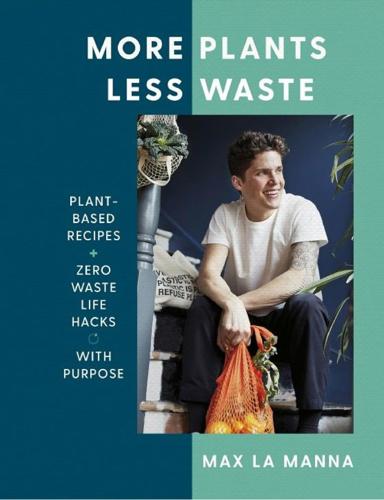
More Plants Less Waste: Plant-Based Recipes + Zero Waste Life Hacks With Purpose
by
Max La Manna
Published 21 Aug 2019
An excess of herbs can be combined with olive oil and chopped garlic and then frozen in ice-cube trays for a handy and delicious addition to stir fries and other dishes. You can freeze leftovers from meals; excess produce from your farmers’ market haul; and dishes like soups and stews. It’s a great way to ensure you always have a healthy, home-cooked meal available. DAY 6: PACK YOUR LUNCH A helpful way to save money while reducing your carbon footprint is to bring your lunch to work with you. If you’re strapped for time in the morning, try freezing your leftovers or batch cooking in portion-sized containers. That way, you’ll have pre-made lunches ready to go each morning. DAY 7: COMPOST IF YOU CAN Composting leftover food is a beneficial way to reuse food scraps, turning food waste into energy for plants.

Boston Like a Local
by
Dk Eyewitness
Map 4; 2265 Massachusetts Avenue, Cambridge; ///upset.dame.blows; www.curiospice.com Jars, vials, and amber glass bottles line the shelves at Curio, each filled with delicious spices sourced from owner Clare’s travels across Asia and beyond. Clare makes sure everything is procured directly from the producers themselves, meaning fresher spices, a smaller carbon footprint, and more money to the farmers that deserve it. g Gourmet Treats g Contents Google Map ARAX MARKET Map 6; 585 Mount Auburn Street, Watertown; ///parents.gangs.catch; 617-924-3399 Long-standing regulars drop by this mom-and-pop Armenian market, run by the same family since 1974, to stock up on Mediterranean and Middle Eastern staples.

The Human Age: The World Shaped by Us
by
Diane Ackerman
Published 9 Sep 2014
Apartments are insulated by the civil geometry of the buildings, making them easier to heat, cool, and light. Crowded neighbors can share public transportation, and most destinations tend to be close, within walking or biking distance; people rarely need cars. As a result, city-dwellers actually create a much smaller carbon footprint than rural-dwellers do. Cities like New York boast the lowest amount of energy use per household and per person, and so, paradoxically, although the city as a whole uses more energy, each person uses less. It seems counterintuitive, but city life can be a more eco-friendly way for humans to live.
…
This pertains to cars and buses, of course, with companies aiming for ever greater mileage on ever less fuel of a preferably renewable sort such as hydrogen or electricity. A new twist on that is the Green Apple concept car, so named because it’s designed for use as a taxi in New York City, offering “street hails” in all five boroughs. Not adding to the carbon footprint, it could actually erase part of it. A three-seater shaped like an aerodynamic space helmet, it’s powered by turbines that whip in polluted air and purify it before exhaling it back onto the street. A snarky air-scrubber. Remember riding on the vacuum cleaner Mom or Dad propelled? Yes, the air could be called what it is, “recycled waste,” but where’s the fun in that?
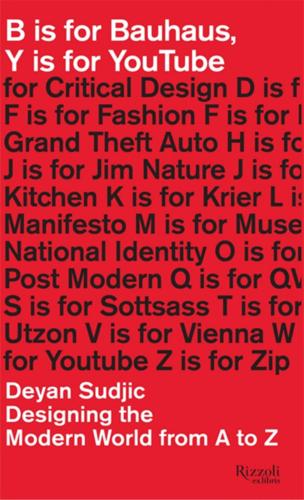
B Is for Bauhaus, Y Is for YouTube: Designing the Modern World From a to Z
by
Deyan Sudjic
Published 17 Feb 2015
This was a replacement for a telephone, a music system, a camera, an emailer, a library and a GPS. Think of all the things that it has done away with: the film, the chemicals to process the film, the paper on which the prints are made, the record players, the vinyl, the factories in which the vinyl is made, the shops in which they are sold, the carbon footprint that visiting that shop entailed. There is no way yet to be definitive. Millions of iPhones are acquired and discarded every year. They have to be fed by the strip mining of lithium needed for their batteries – life expectancy of remaining sources is estimated at another forty years. The toxic by-products of dumping exhausted batteries in landfill are being addressed.
…
It started with Mumbai’s most recent incarnation, the financial centre of India (and of much of Asia and the Arabian Gulf too), where the hotels are moored like giant luxury liners blazing light tethered at anchor. They were self-contained worlds floating in the dense urban fabric around them, full of gold and cut glass, international chefs and grand dinners, film stars and visiting academics, ecologists and carbon-footprint specialists, doctors and accountants, performing tirelessly for one another. This was the world that terrorism invaded in the brutal attack on the Taj Hotel and its neighbours in 2009. Then there was the Victorian municipal city, its fretwork skyline erupting over the Maidan Oval and its balletic cricket players.

A Small Farm Future: Making the Case for a Society Built Around Local Economies, Self-Provisioning, Agricultural Diversity and a Shared Earth
by
Chris Smaje
Published 14 Aug 2020
So one problem with the narrative that livestock are climate villains is the way it displaces attention from both fossil fuels and economic inequality, with its tall tales that cows are worse than cars, that trees can offset power stations, that judicious tweaks to the fossil-fuelled political economy can make it sustainable, and that the global wealthy can remedy their outsize carbon footprints through lifestyle changes like turning vegan. The argument that we should tackle environmental crises by avoiding meat is like saying we should tackle economic inequality by boycotting luxury cars. I suggest an alternative: small-scale farming, based on the careful husbanding of overwhelmingly local resources, which must be normalised in the political economy as something that’s widely supported and that most people actively practise.
…
But we could use some humility about local self-provisioning wherever we are. In the United Kingdom, where I live, criticism of local food’s footprint is often exemplified by the argument – wearily familiar to small-scale market growers – that early-season tomatoes imported from Spain have a lower carbon footprint than ones grown with indoor heat locally. That may be true (though no small local grower I know uses indoor heat), while the water footprint points the other way. A more important question is why we need early-season tomatoes, rather than growing them seasonally without heat and whetting our appetite by going without when they can’t be easily grown, and eating other things instead.

Discover Greece Travel Guide
by
Lonely Planet
International train travel, in particular, has become much more feasible in recent years with speedier trains and better connections. You can now travel from London to Athens by train and ferry in less than two days. By choosing to travel on the ground instead of the air, you’ll also be reducing your carbon footprint. It’s a win-win situation. CLIMATE CHANGE & TRAVEL Every form of transport that relies on carbon-based fuel generates CO2, the main cause of human-induced climate change. Modern travel is dependent on aeroplanes, which might use less fuel per kilometre per person than most cars but travel much greater distances.
…
Many websites offer ‘carbon calculators’ that allow people to estimate the carbon emissions generated by their journey and, for those who wish to do so, to offset the impact of the greenhouse gases emitted with contributions to portfolios of climate-friendly initiatives throughout the world. Lonely Planet offsets the carbon footprint of all staff and author travel. SEA Ferries can get very crowded in summer. If you want to take a vehicle it’s wise to make a reservation beforehand. The services indicated in this book are for high season (July and August). Note that tickets for all ferries to Turkey must be bought a day in advance and you will almost certainly be asked to turn in your passport the night before the trip, to be returned the next day before you board the boat.
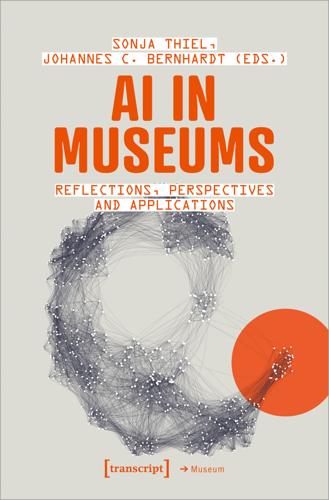
AI in Museums: Reflections, Perspectives and Applications
by
Sonja Thiel
and
Johannes C. Bernhardt
Published 31 Dec 2023
When we delve into the physicality of AI, we realize the extensive resources it requires. The construction of AI involves data centres, chips, computers, and various physical components, and thus involves a series of invisible factories (Crawford 2021). One aspect of AI’s physicality that warrants attention is its carbon footprint and its implications for climate change (Okafor-Yarwood/Adewumi 2020). Amid discussions of environmental sustainability, we often overlook the role of our technologies and the escalating digitization accompanying them. Consider data centres’ energy and water consumption, the computing power needed to sustain AI systems, and the consequential environmental impacts.
…
Consequently, the divide between the Global North and the Global South continues to widen. This form of technological exploitation exacerbates the socioeconomic disparities between nations. Acknowledging AI as an infrastructure, as a physical entity with profound consequences, is thus vital. The carbon footprint it leaves behind and the planetary resources it exploits are pressing concerns to be addressed. We must confront the realities of contemporary colonialism and address the unjust distribution of benefits and burdens associated with AI. As we forge into the future, we must ensure that technological progress is accompanied by ethical and equitable practices, fostering a world where everybody shares the benefits of AI.
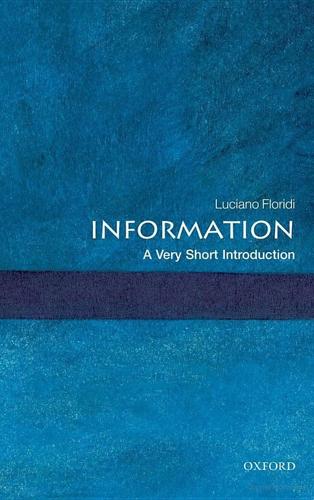
Information: A Very Short Introduction
by
Luciano Floridi
Published 25 Feb 2010
In 2000, data centres consumed 0.6% of the world's electricity. In 2005, the figure had increased to 1%. They are now responsible for more carbon dioxide emissions per year than Argentina or the Netherlands and, if current trends hold, their emissions will have grown four-fold by 2020, reaching 670 million tonnes. By then, it is estimated that the carbon footprint of ICTs will be higher than that of aviation. However, according to recent studies, ICTs will also help to eliminate almost 8 metric gigatons of greenhouse gas emissions annually by 2020, which is equivalent to 15% of global emissions today and five times more than the estimated emissions from ICTs in 2020.
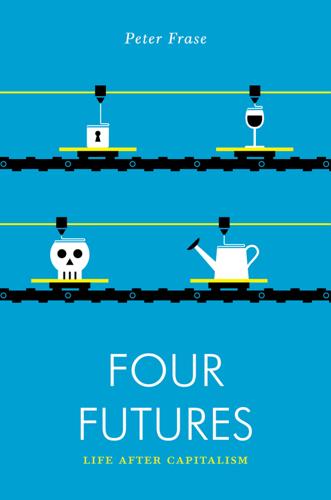
Four Futures: Life After Capitalism
by
Peter Frase
Published 10 Mar 2015
In order to consider what kind of social system could take up this task, it’s worth stopping to characterize the relationship between humans and nature in any future postcapitalist world. Considerations of ecology often tend toward a duality between humans—and their technologies—and nature. Talk of “conservation” or of reducing our “carbon footprints” implies that nature exists in some pristine state and that the task of humans is to withdraw from nature in order to save it. This way of thinking is ultimately a denial of humans as natural, biological beings, inseparably a part of nature—just as much so, in its way, as those forms of transhumanism that yearn to upload consciousness into computers in order to be free of the organic world altogether.

Austin Like a Local
by
DK
g Favourite Museums g Contents Google Map THE THINKERY Map 3; 1830 Simond Avenue, Mueller; ///forgets.mistress.curbed; www.thinkeryaustin.org For most of the month, this hands-on science museum is bursting with sticky swarms of kids. But on Thinkery21 nights, it’s the grown-ups’ turn to play. On one Thursday each month, pop-up trucks start serving drinks and snacks, DJs spin some funky tunes, and adults-only talks and hands-on activities explore a theme – such as “Forces of Nature,” which featured “Carbon Footprint Monopoly” and “Super (Farmers’) Market Sweep.” » Don’t leave without asking about the next Two Scientists Walk into a Bar event, when you can grill a couple of scientists about the intricacies of life over a drink at their neighborhood bar. g Favourite Museums g Contents Google Map MUSEUM OF THE WEIRD Map 1; 412 East 6th Street, Red River Cultural District; ///grape.banks.painters; www.museumoftheweird.com This place is more of a cabinet of curiosities than a museum.
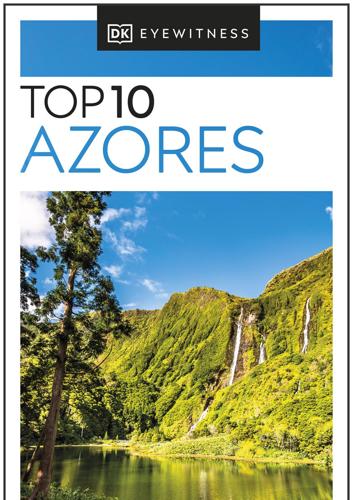
DK Eyewitness Top 10 Azores
by
Dk Eyewitness
Published 22 Dec 2022
Amid tranquil gardens overlooking the sea, the en-suite rooms are set around an open-air swimming pool. Breakfast and snacks are served in the garden pavilion. Budget Hotels A Casa do Lado Rua D. Pedro IV 23, Horta, Faial • (292) 700 351 • www.acasadolado.com • € Dario and Vanessa, the couple who run this traditionally styled guesthouse, encourage guests to lower the hotel’s carbon footprint. Rooms are modest and have private bathrooms. Guest House Malheiros Serpa Casa de Hóspedes, Malheiros Serpa, Rua do Hospital 8, Santa Cruz das Flores, Flores • (292) 592 201 • www.malheiros.net • € A dozen furnished rooms –a mixture of double and singles – are available at this centrally located guesthouse, with rooms featuring en-suite bathrooms.

Cyclopedia
by
William Fotheringham
Published 22 Sep 2011
Dick Poole’s End-to-End Eats = Between Land’s End and John O’Groats in 1965 Poole got through 2 pounds of fruitcake, 11 packets of malt loaf, a gallon of rice and fruit salad, 7 pints of Complan, 12 oranges, 8 pints of coffee, 13 pints of tea, and 8 pints of Ribena. ENVIRONMENT Cycling is now a recognized means of lowering one’s carbon footprint. The figures speak for themselves—100 calories takes a cyclist 3 miles, a car all of 280 feet. In 2009 research indicated that if cycling use in cities doubles from 4 percent of journeys to 8 percent, there would be a total drop of 1.1 percent in carbon emissions. If those journeys are intermodal (public transport + bike), the figure can go up to 1.8 percent because greater distances can be covered.
…
On the other hand, cycling as a pastime rather than a means of transport is by no means carbon friendly. Driving from London to the south of France with a bike on the roofrack creates 360 kgm of CO2; taking the train and hiring a bike creates 100 kgm; flying with the bike in the hold creates 850 kgm, more than heating the average house for a year. Few studies exist into the carbon footprint of bike races but the number of vehicle miles involved suggest that it is horrendous. That is borne out by a study from the International Institute for Sport Science and Technology, which calculated that the Tour of Romandie, a six-day stage race for pros, produced 138 tons of CO2, which is just under the amount of CO2 emissions produced by Nauru, an island state in the South Pacific.

Exponential: How Accelerating Technology Is Leaving Us Behind and What to Do About It
by
Azeem Azhar
Published 6 Sep 2021
Many of the most urgent issues of our time can only be solved with exponential technology. Tackling climate change, for example, requires more radical tech, not less. In order to decarbonise our economies, we will need to rapidly shift to renewable sources of energy, develop alternatives to animal proteins for food, and scale building materials that have a zero-carbon footprint. What’s more, figuring out how to deliver good-quality healthcare, education, sanitation and power to the poorest billions on the planet is another problem that technological innovations can address. The expensive (and resource-intensive) way that the developed world achieved those outcomes in the past is not practical for poor countries at a time of environmental crisis.
…
Rather than using ordinary greenhouse lights, with their wide spectrum of colours, some vertical farms shine only the precise wavelengths to which the vegetables respond. Not even a photon of light is wasted.7 By using renewable energy (often supplied via solar panels on the roof of the building), their energy costs decline and their carbon footprint drops even further. Provided you have the resources to invest in the technology, these farms can be built more or less anywhere – Spain, Britain or beyond. Historically, food needed to be transported from rural farms to urban centres. But the new technology of urban farming means this need not be the case.
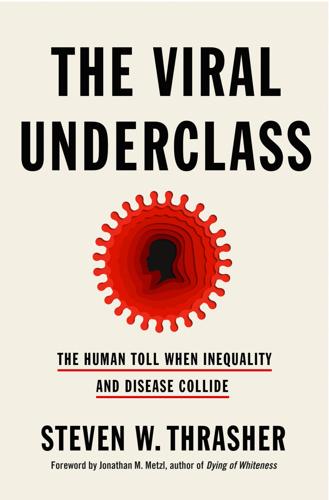
The Viral Underclass: The Human Toll When Inequality and Disease Collide
by
Steven W. Thrasher
Published 1 Aug 2022
It is possible for an animal to be raised on one continent and killed, flown to another to be ground up, and flown to a third to be cooked and eaten. And at every step, that carcass is creating vectors of viral transmission among countless drivers, pilots, seamen, and butchers. (At the same time, it increases global warming with an enormous carbon footprint, creating conditions that are the most likely to dangerously affect people who can’t even afford to eat meat.) This is a cycle that implicates all of us, including those of us who buy meat from grocery stores or burgers from McDonald’s (or even vegetarians who eat crops fertilized with manure from industrial animals).
…
For instance, before COVID-19, I could get on planes easily and fly anywhere I could afford in the world, with little thought to how that choice affected the asthmatic Black and brown children living near the airports I departed from and arrived at, whose lungs inhaled exhaust from the jets ferrying me around. Or how the carbon footprint of my travel would affect wildfires in California or Greece. Why did I need to think of their bodies when I thought about flying? I was free to do whatever I chose with my body, as long as I could afford the price of the ticket. But remember way back in the introduction to this book, when I asked you to go on a journey focusing on the viral underclass, so that their stories could help you rethink your most deeply held assumptions?
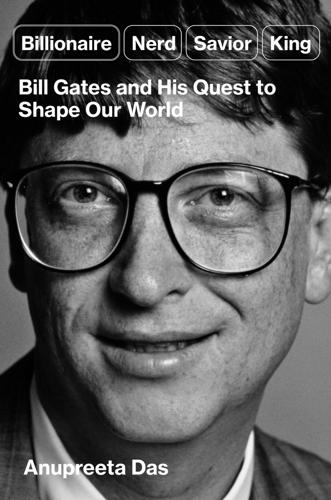
Billionaire, Nerd, Savior, King: Bill Gates and His Quest to Shape Our World
by
Anupreeta Das
Published 12 Aug 2024
Friedman also cofounded WealthQuotient, which aims to map out networks of the wealthy that can help firms pitching services to them to win referrals. The frenzy of yacht and jet buying has made billionaires among the world’s top polluters. The world’s 20 top richest people in the world (most of them American) had an average carbon footprint of 8,190 tons per individual in 2018, according to one analysis.32 The estimates included the residences of the billionaires as well as their yachts, planes, and helicopters. By comparison, Americans on average emitted 15 tons of carbon dioxide that year. The average around the world was even lower, at five tons or so per person.
…
Travis Baker, “New Highway Tunnel Means Bill Gates Gets What He Wants,” Kitsap Sun, December 22, 2006. 31. Seattle Post-Intelligencer staff, “Gates’ Money Wasn’t Enough,” Seattle Post-Intelligencer, July 4, 2004. 32. Richard Wilk and Beatriz Barros, “Private Planes, Mansions and Superyachts: What Gives Billionaires Like Abramovich and Musk Such a Massive Carbon Footprint,” The Conversation, February 16, 2021. 33. Michael Waldman, “Billionaires Provided 15 Percent of Funding for the Midterms,” Brennan Center for Justice, November 22, 2022. 34. Maggie Haberman, Jonathan Swan, and Shane Goldmacher, “Koch Network Raises Over $70 Million for Push to Sink Trump,” The New York Times, June 29, 2023. 35.

Mauritius, Réunion & Seychelles Travel Guide
by
Lonely Planet
Many websites offer ‘carbon calculators’ that allow people to estimate the carbon emissions generated by their journey and, for those who wish to do so, to offset the impact of the greenhouse gases emitted with contributions to portfolios of climate-friendly initiatives throughout the world. Lonely Planet offsets the carbon footprint of all staff and author travel. 8Getting Around Mauritius is an easy destination to get around, but to make the most of your time, renting a car will allow you to get from most corners of the island to any other in less than 90 minutes. If you're only having the odd excursion, consider renting a taxi for the day.
…
Many websites offer ‘carbon calculators’ that allow people to estimate the carbon emissions generated by their journey and, for those who wish to do so, to offset the impact of the greenhouse gases emitted with contributions to portfolios of climate-friendly initiatives throughout the world. Lonely Planet offsets the carbon footprint of all staff and author travel. Sea The Mauritius Trochetia ferry used to run between Mauritius and Réunion but this service has been suspended. 8Getting Around Bicycle The traffic, the haste of most motorists and the steep and precarious nature of the mountain roads means that those considering cycling as a form of transport in Réunion should be prepared for some hair-raising and potentially dangerous situations.
…
Many websites offer ‘carbon calculators’ that allow people to estimate the carbon emissions generated by their journey and, for those who wish to do so, to offset the impact of the greenhouse gases emitted with contributions to portfolios of climate-friendly initiatives throughout the world. Lonely Planet offsets the carbon footprint of all staff and author travel. 8Getting Around Air Air Seychelles takes care of all interisland flights, whether scheduled or chartered. The only scheduled services are between Mahé and Praslin, with around 25 flights per day in each direction. The fare for the 15-minute hop costs about €132 return.

Four Battlegrounds
by
Paul Scharre
Published 18 Jan 2023
Wolff Anthony, Benjamin Kanding, and Raghavendra Selvan, “Carbontracker: Tracking and Predicting the Carbon Footprint of Training Deep Learning Models” (paper presented at International Conference on Machine Learning 2020, virtual, July 12–18, 2020), https://arxiv.org/pdf/2007.03051.pdf; Emma Strubell, Ananya Ganesh, and Andrew McCallum, Energy and Policy Considerations for Deep Learning in NLP (arXiv.org, June 5, 2019), https://arxiv.org/pdf/1906.02243.pdf; Peter Henderson et al., “Towards the Systematic Reporting of the Energy and Carbon Footprints of Machine Learning,” Journal of Machine Learning Research 21 (November 2020): 1–43, https://jmlr.org/papers/volume21/20-312/20-312.pdf; Bommasani et al., On the Opportunities and Risks of Foundation Models, 139–144.
…
For an example of estimates of energy consumption and environmental impact for training large language models, see Emma Strubell et al., Energy and Policy Considerations for Deep Learning in NLP (arXiv.org, June 5, 2019), https://arxiv.org/pdf/1906.02243.pdf; Chowdhery et al., PaLM: Scaling Language Modeling with Pathways, 65. Even though training is more compute-intensive, the total energy consumption and carbon footprint is likely to be much higher for inference than training because of the multiplicative effect of inference being done many times. Desislavov et al., Compute and Energy Consumption Trends in Deep Learning Inference. 299“real intelligence”: Gary Marcus and Ernest Davis, Rebooting AI: Building Artificial Intelligence We Can Trust (New York: Pantheon Books, 2019), 64. 299value of compute-heavy methods: Sharir et al., The Cost of Training NLP Models, 3. 299The biggest lesson that can be read from seventy years of AI research: Rich Sutton, “The Bitter Lesson,” incompleteideas.net, March 13, 2019, http://incompleteideas.net/IncIdeas/BitterLesson.html. 299Simpler methods that apply vast amounts of data: Sutton’s argument is backed by empirical findings by multiple research teams across multiple types of neural network models, both for language models and image classification.

This Is Not a Drill: An Extinction Rebellion Handbook
by
Extinction Rebellion
Published 12 Jun 2019
At the end of the first day Kevin Anderson, deputy director of the Tyndall Centre for Climate Change Research, took to the stage. Before he was a climate scientist, Kevin built oil rigs for a living. He has the bluntness of an engineer, together with the moral clarity of a man who hasn’t flown in many years, rejecting the logic of many in his field who justify their carbon footprints on the grounds of the importance of their work. His message was stark: to have a chance of meeting the goal agreed by governments in Paris, to keep climate change within a limit of 2 degrees Celsius, impossible things need to happen. Things beyond the bounds of what even the most progressive elements in mainstream politics have been willing to contemplate, even on their best days, over the past thirty years.
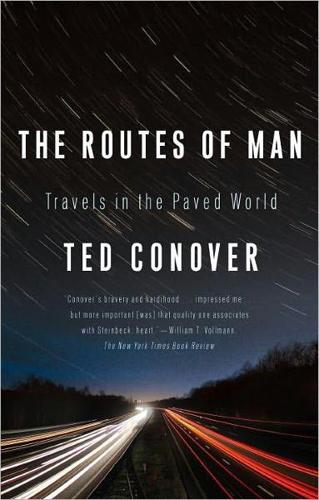
The Routes of Man: How Roads Are Changing the World and the Way We Live Today
by
Ted Conover
Published 15 Jan 2010
That distinction, meanwhile, belongs to the United States, and Chinese have a point when they say that those in developed countries who complain about China’s pollution are like ex-smokers who walk into a room of people smoking and declare, “No smoking!” When you are the world’s factory you necessarily make a bit of a mess, and most of it, after all, affects you more than anybody else. One could also note, in China’s defense, that the typical Chinese person’s carbon footprint remains tiny. The average person in China travels about 1,000 kilometers (621 miles) per year, compared with 15,000 kilometers (9,320 miles) per year for Europeans and over 24,000 kilometers (14,913 miles) per year for Americans. In 2004 there were only 9 cars per 1,000 people in China, compared to 700 per 1,000 in the United States, “400 in Japan, 350-500 in Europe, and 150-200 in middle income countries like Mexico, Brazil and Korea.”
…
Last, roads have long provided a solution, in American life and elsewhere, to disappointments and the lack of local opportunity. You go somewhere else, you start again. Or you get started for the first time. As Bruce Springsteen sang in “Thunder Road”: “It’s a town full of losers / And I’m pulling out of here to win.” That ethos might be poised for reassessment in light of high oil prices, the concept of the carbon footprint, and the notion that, given the disappearance of the frontier and the recognition that there is limited space on earth for ever-growing numbers of people, we need to stay put and clean up after ourselves, not simply forever move on. And yet, stasis is not an option. In the words of Ibn al-’Arabi, a twelfth-century philosopher from Spain, “The origin of existence is movement.

My Custom Van: And 50 Other Mind-Blowing Essays That Will Blow Your Mind All Over Your Face
by
Michael Ian Black
Published 14 Jul 2008
This one’s going to be hard for me because charitable giving is one of my primary ways of feeling smug, both toward the people to whom I am donating and toward the people who did not give. It’s two-for-one smugness and it has to stop. 39. Clean out my high school locker. It’s been almost twenty years, and I imagine things are getting a little rank in there. 40. Cut down on my carbon footprint by making everybody come to me instead of the other way around. Let the dead Earth be on their consciences for once. 41. Learn and use cool handshakes. 42. Learn and use my children’s names. 43. Pitch my idea for the television show World’s Strongest Rock Star. When an executive asks, “Will anybody care how far Hootie can shot-put?”

Lonely Planet Pocket Hong Kong
by
Lonely Planet
Or try a food tour – from dim sum breakfast to curry fishballs, street food and wonton noodles – discover why Hong Kong is one of the food capitals of the world. Climate Change & Travel It’s impossible to ignore the impact we have when travelling, and the importance of making changes where we can. Lonely Planet urges all travellers to engage with their travel carbon footprint. Many airlines and booking sites offer travellers the option of offsetting the impact of greenhouse gas emissions by contributing to climate-friendly initiatives around the world. There are many carbon calculators online that allow travellers to estimate the carbon emissions generated by their journey; try resurgence.org using the QR code, right.

Blockchain Revolution: How the Technology Behind Bitcoin Is Changing Money, Business, and the World
by
Don Tapscott
and
Alex Tapscott
Published 9 May 2016
Some people in the blockchain ecosystem are making back-of-the-envelope calculations that become memes in the community. Estimates liken the bitcoin network’s energy consumption to the power used by nearly seven hundred average American homes at the low end of the spectrum and to the energy consumed by the island of Cyprus at the high end.11 That’s more than 4.409 billion kilowatt-hours,12 a Godzilla-sized carbon footprint, and it’s by design. It’s what secures the network and keeps nodes honest. In early 2015, The New Republic reported that the combined processing power of the bitcoin network was hundreds of times greater than the aggregate output of the world’s top five hundred supercomputers. “Processing and protecting the more than $3 billion worth of bitcoins in circulation requires more than $100 million in electricity each year, generating a volume of carbon emissions to match.”
…
BitFury, for example, has two data centers—one in Iceland and another in the country of Georgia—with plans for additional centers in North America, and it acquired the Hong Kong–based start-up Allied Control, which specializes in immersion cooling technology.21 And so BitFury is working to reduce the ecological impact of the bitcoin infrastructure. Even if these initiatives limit mining’s carbon footprint, we still have the rapid consumption and disposal of these continually upgraded devices. Miners who want to make a career of it must continually upgrade and specialize their systems. Most mining equipment has a useful life span of three to six months.22 Bob Tapscott likened firms such as BitFury to those Yukon shopkeepers during the great gold rush: they made their real fortune by selling better and better shovels to the miners.23 We found one miner’s description of his Cointerra TerraMiner IV bitcoin with an ASIC chip that was so energy intensive that his home’s electrical system couldn’t handle it.
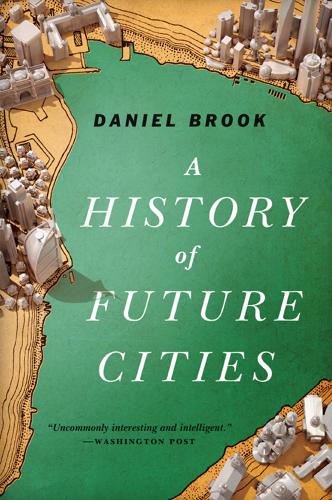
A History of Future Cities
by
Daniel Brook
Published 18 Feb 2013
For all their “local” bells and whistles, Dubai’s Arab pride malls are Western shopping malls filled with Western stores that fail to respond to the complexities of their location, environmentally as well as culturally. Environmentally, Dubai’s air-conditioned megamalls only fulfill Sheikh Mohammed’s desire to be number one in one respect: they have helped make the UAE the only country on earth to top America in energy use and carbon footprint per capita. Culturally, such malls are just multi-million-dollar exercises in psychological overcompensation for the least Arab city in Arabia. As the late Arab-American journalist Anthony Shadid wrote in The Washington Post, Dubai’s globalization strategy is to “[bring] success to an Arab city by shearing away the qualities that have long defined it as Arab.”
…
Citizens and Resident Aliens Abroad (Washington DC: Internal Revenue Service, 2010), accessed July 25, 2011, http://www.irs.gov/publications/p54/ar01.html. 354 twenty thousand Britons: Ali, Dubai: Gilded Cage, 30. 355 “might have wiped out half of the UAE royal family”: Davidson, Dubai, 293. 356 largest overseas naval port: Krane, City of Gold, 79. 356 over $300 billion: Mike Davis, “Fear and Money in Dubai,” New Left Review 41 (2006): 59. 357 $44 million buying spree: Andrew Higgins, “Pricey Real Estate Deals in Dubai Raise Questions about Azerbaijan’s President,” Washington Post, March 5, 2010. 357 “World Winning Cities”: Krane, City of Gold, 121–122. 358 urbanized footprint quadrupled: ibid., 301. 358 as much property development as Shanghai: ibid., 297. 358 over ten million shipping containers: American Association of Port Authorities, 2009 rankings, accessed June 18, 2012, http://aapa.files.cms-plus.com/Statistics/WORLD%20PORT%20RANKINGS%202010.pdf. 360 40 percent of Dubai’s prisoners: “Debtors Languishing in Dubai Prisons,” Associated Press, June 11, 2007. 361 “We apologize the site you are attempting to visit”: Fallows, “The Connection Has Been Reset.” 361 “contradicts with the ethics and morals of the UAE”: Prohibited Content Categories, UAE, accessed January 13, 2010. 361 thousands of workers: Davidson, Dubai, 117. 364 $1 billion science complex: Abby Goodnough, “Slowing Expansion, Harvard Suspends Work on Complex,” New York Times, December 10, 2009. 365 more than three-quarters male: Krane, City of Gold, 254. 367 “City of Gold” in Hindi: ibid., 209. 367 roughly a quarter of the city’s population: Ali, Dubai: Gilded Cage, 83. 367 “Important notice”: Sonapur visit, Dubai, January 29, 2010. 368 termination (i.e., deportation) for smoking: Burj Khalifa tour, Dubai, January 14, 2010. 368 forty thousand Dubai construction workers mounted an illegal strike: Krane, City of Gold, 209. 370 5 percent: Yasser Elsheshtawy, Dubai: Behind an Urban Spectacle (New York: Routledge, 2010), 213. 370 3 percent: Ali, Dubai: Gilded Cage, 178. 370 150,000 expatriate Arabs: ibid., 113. 370 numbering over a million: Krane, City of Gold, 199. 370 approximately one hundred thousand: Ali, Dubai: Gilded Cage, 112. 370 “Talk to a Local” booths: Davidson, Dubai, 203. 370 foreigners make up 99 percent of the workforce: Ali, Dubai: Gilded Cage, 7. 371 Emirati teachers are paid more than twice what expatriates make: Kathryn Lewis and Kareem Shaheen, “Low-Wage Teachers Take on Second Jobs,” The National (Abu Dhabi), January 30, 2010. 371 receives $55,000 a year: Ali, Dubai: Gilded Cage, 168. 372 “This is particularly disappointing”: Davidson, Dubai, 166. 374 “Arabian-inspired”: permanent exhibition, Burj Khalifa visitors’ center, Dubai, visited January 14, 2010. 375 energy use and carbon footprint per capita: Krane, City of Gold, 223–224. 375 “success to an Arab city”: Anthony Shadid, “The Towering Dream of Dubai,” Washington Post Foreign Service, April 30, 2006. 375 “the best city in India”: Raymond Barrett, Dubai Dreams: Inside the Kingdom of Bling (London: Nicholas Brealey Publishing, 2010), 61. 375 “the best city in Iran”: Vali Nasr, Forces of Fortune: The Rise of the New Muslim Middle Class and What It Will Mean for Our World (New York: Free Press, 2009), 46. 376 every three hundred meters: Doug Kelbaugh, executive director of Design and Planning, Limitless, interview with author, Dubai, January 22, 2010. 376 “If a stone as big as seven pregnant camels”: permanent exhibition, Siraaj: The Guiding Light, Dubai, visited January 16, 2010. 376 seven million tourists: Ali, Dubai: Gilded Cage, 8. 377 attracts nineteen million visits a year: Simeon Kerr, “How Developer Weathered the Storm,” Financial Times (UK), July 2, 2012. 378 387-building housing development: Nakheel, “Nakheel Hands Over First Building at International City,” press release, October 5, 2005, accessed June 18, 2012, http://www.dubaicity.com/news/Nakheel-hands-over-first-building10-5.htm. 379 “I think it’s a flattering statement”: Krane, City of Gold, 304.

A Half-Built Garden
by
Ruthanna Emrys
Published 25 Jul 2022
We exchanged pleasantries, tinged with strangeness by the differences between how our respective cultures normally choreographed that social dance. Yes, we’d both come in the previous night. The shared plane ride that gathered representatives from around the aislands was dreadfully slow and crowded, he sighed—our own shuttle must be more like the old private jets. Not in its carbon footprint, I pointed out. Speaking of carbon, I took a standoff reading of his necklace: it really was diamond. Probably antique or lab-grown. Probably. Either way, it … “advertised” was certainly the appropriate word … pride in the sort of power that ripped jewels from mountain veins. “We don’t often have network leaders out to see us,” said Jace.
…
A network thread blinked up in my lenses; people had been tracking the Asterion delegation all night, and e’d been offering this type of deal to anyone who seemed to want something material. The thread also helpfully identified eir outfit as holo with 83 percent certainty. “We do manufacturing as well,” I said. “And with a lower carbon footprint. But yes, if that would let us start learning your language as well as you know ours, we should get our technical specialists together. We might even be able to adapt the voicebox programming into our network so we don’t need separate devices.” * * * I’d been depending on Raven’s eventual exhaustion to limit our time at the party.
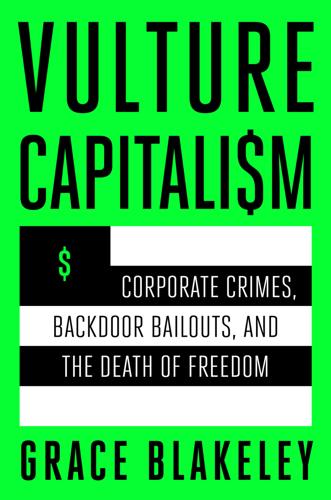
Vulture Capitalism: Corporate Crimes, Backdoor Bailouts, and the Death of Freedom
by
Grace Blakeley
Published 11 Mar 2024
According to its own estimates, the company released 71.54 million metric tons of carbon dioxide equivalent in 2021, up 18 percent over the previous year.35 If Amazon were a country, its total emissions would be roughly equivalent to that of Kenya, a country of fifty-three million people.36 Yet Amazon has also been accused of “drastically underestimating” its carbon footprint, allowing it to portray itself as a “green” company.37 AWS, while supposedly a “clean” digital part of the company, has significant energy needs and mostly uses nonrenewable energy sources. And a shocking investigation into the company recently revealed that it is destroying millions of items of unsold stock—from unused TVs to smartphones—every year.38 Amazon’s power is so great that it is able to influence the political systems of the countries in which it operates.
…
He Can Start with Amazon,” WIRED, October 2, 2020, https://www.wired.co.uk/article/jeff-bezos-climate-change-amazon. 36. “Historical GHG Emissions (1990–2020),” Climate Watch, accessed July 8, 2023, https://climatewatchdata.org/ghg-emissions. 37. Will Evans, “Amazon Drastically Underestimates Its Carbon Footprint,” Mother Jones, March 1, 2022, https://www.motherjones.com/environment/2022/03/amazon-drastically-undercounts-its-carbon-disclosure-project/. 38. Richard Pallot, “Amazon Destroying Millions of Items of Unsold Stock in One of Its UK Warehouses Every Year, ITV News Investigation Finds,” ITV News, June 22, 2021, https://www.itv.com/news/2021-06-21/amazon-destroying-millions-of-items-of-unsold-stock-in-one-of-its-uk-warehouses-every-year-itv-news-investigation-finds. 39.

The Rough Guide to Cyprus
by
Rough Guides
Published 2 Feb 2025
For a taste of Cyprus-themed art, head to the Cyprus Handicraft Centre shop, with branches in most of the big cities, and browse its collection made by local artisans that celebrates the island’s history and heritage. EXPLORE THE CITY BY BIKE The most convenient and popular way to explore the island may be by car yet choosing more eco-friendly, sustainble alternatives such as buses or bikes helps reduce your carbon footprint. Bike rental shops are easy to find and most big cities have designated bicycle lanes. If you are apprehensive about sharing the road with Cypriot drivers who are still novices at driving next to cyclists, you can join weekly social cycling events as a way to cycle safely and also meet with locals, see the city in a new light and discover local initiatives.
…
We believe it helps us understand the world we live in and the people we share it with – and of course tourism is vital to many developing economies. But the scale of modern tourism has also damaged some places irreparably, and climate change is accelerated by most forms of transport, especially flying. We encourage all our authors to consider the carbon footprint of the journeys they make in the course of researching our guides. Flights from Australia, New Zealand and South Africa Travelling from Australia, New Zealand or South Africa to Cyprus involves at least one stopover, usually via a Middle Eastern hub such as Dubai. The cheapest route from South Africa is Johannesburg via Dubai.

The War Below: Lithium, Copper, and the Global Battle to Power Our Lives
by
Ernest Scheyder
Published 30 Jan 2024
Plenty of power for those pesky leaves. But then the real question—especially as I wrote this book—came into focus. Where was Ryobi getting the lithium, copper, and other metals to build the lithium-ion battery for this leaf blower? If they were sourced from the other side of the world, what’s the leaf blower’s carbon footprint, and is it more or less than if I had bought a gasoline-powered blower? And how were those metals mined and processed? Were they extracted with fair labor and using environmentally safe practices? Those questions are increasingly being asked for the manufacturing process of electric vehicles, but given the widespread implications for the green energy transition, EVs were just the tip of the iceberg.
…
“We need a planned contraction of the economy, planned negative economic growth,” he said. The sun had shifted and started to beat down on both of us near the rocks of Thacker Pass. At the time we met, he had recently gotten engaged. During our chats, he mentioned that not having children was one way for a person to reduce his or her carbon footprint. Sensing an opening, I asked his plans. He acknowledged he did not want biological children and might adopt instead. “We need to, basically, deliberately abandon industrialism as rapidly as we can, or else we’re headed for disaster,” he told me. “It’s very clear that green technology is not sufficient to address the global warming issue.”

Unsustainable Inequalities: Social Justice and the Environment
by
Lucas Chancel
Published 15 Jan 2020
The contest for social distinction is played out in large part through the accumulation of cars with big engines that produce more pollution, large houses that use more energy and eat up more land, expensive vacations halfway around the world that increase carbon emissions, and so on, all of which magnify the human impact on the environment. The very wealthy do, of course, also consume more goods and services having a smaller carbon footprint (privately exhibiting a work of art uses less energy than driving a fancy car), but at the same time they own more cars and live in larger houses than the rest of society. POISONING THE POLITICAL WELL We saw earlier that economic inequality tends to polarize political debate. In the United States, the growing inequality that marked the Reagan years inaugurated a dark period for environmental policy.43 The preceding decade, by contrast, when partisan disagreements over economic justice were less pronounced, had begun with the creation of the Environmental Protection Agency, in 1970.

Frommer's Oregon
by
Karl Samson
Published 26 Apr 2010
Things haven’t changed that much in the ensuing 150 years. People looking to start new lives are still moving to Oregon in droves, and many native Oregonians are envisioning new ways to make Oregon a better place. Farmers are pioneering organic and sustainable farms close to urban centers so that the farms can reduce their carbon footprint. Urban pioneers, young creative types, are eschewing cars in favor of bicycles and public transit. There are organic wineries and breweries, microdistilleries, and tiny coffee roasters. There are mountains and beaches and deserts and vineyards. Together the people and the landscape spell the good life in Oregon, and for the visitor, it is these same factors that make the state such a great vacation destination.
…
MEDITERRANEAN/SEAFOOD This casual little place may ostensibly be a Mediterranean restaurant specializing in seafood, but lots of people know it for its great fish and chips, which are available with a variety of seafood, including salmon, albacore tuna, shrimp, and oysters. However, they also do a good cioppino. At dinner, try the pesto halibut or the sole piccata. Clemente’s also works hard to reduce its carbon footprint, purchases local ingredients as much as possible, and has its waste oil converted to biodiesel. Clemente’s 1198 Commercial St. & 503/325-1067. www.clementesrestaurant.com. Reservations recommended. Main courses $10–$15 lunch, $12–$31 dinner. AE, DISC, MC, V. Tues–Sun 11am–3pm and 5–9pm. Columbian Café VEGETARIAN/SEAFOOD With offbeat and eclectic decor, this tiny place looks a bit like a cross between a college hangout and a seaport 10_537718-ch07.indd 180 3/17/10 2:06 PM diner, and, indeed, the clientele reflects this atmosphere.
…
The menu here is as eclectic as the population of Hood River. And everything is so delicious, you just want to keep going back again and again. Owner Kathy Watson formerly operated the restaurant Viento across the river in Bingen, Washington, and that restaurant was also a favorite of mine. If you’re concerned with sustainability and carbon footprints, note that the wine list here is exclusively wines from the Columbia Gorge. Look for Nora’s downstairs and just off Oak Street. 509 Cascade Ave. & 541/386-5737. www.sixthstreetbistro.com. Reservations recommended. Main courses $7–$11 lunch, $13–$21 dinner. AE, MC, V. Sun–Thurs 11:30am–9:30pm; Fri–Sat 11:30am–10pm.

Team Human
by
Douglas Rushkoff
Published 22 Jan 2019
Such utopian projects make heroes out of the billionaires who envision them, while helping us justify our refusal to make any substantive changes to the way we live right now. If we bought fewer smartphones, we could enslave fewer children to produce them. If we ate less red meat, we would reduce our carbon footprint more than if we gave up our automobiles. Right now, today, we can do those things. We don’t need to build a network of solar-powered adobe homes on Mars. The future is not a discontinuity or some scenario we plan for so much as the reality we are creating through our choices right now. We just need to observe the flows, recognize the patterns, and apply them everywhere we can.

The Food Revolution: How Your Diet Can Help Save Your Life and Our World
by
John Robbins
Published 14 Sep 2010
Comparing eating little or no animal products with driving a Prius, and likewise comparing eating meat with driving a Huninier, may seem farfetched. But this comparison, as striking as it is, actually understates the amount of greenhouse gases that stem from meat production. In 2006, a University of Chicago study found that a vegan diet is far more effective than driving a hybrid car in reducing our carbon footprint.'' The scientists who did the calculations said that a Prins driver who consumes a meat-based diet actually contributes more to global warming than a Hummer driver who eats low on the food chain. As Ezra Klein wrote in the Washington Post in 2009, "The evidence is strong. It's not simply that meat is a contributor to global warming; it's that it is a huge contributor.
…
. ""` The greenhouse gas emissions from producing a pound of beef, the study found, are 58 times greater than those from producing a pound of potatoes. Some people thought the Live Earth concert handbook was exaggerating when it stated that, "Refusing meat is the single most effective thing you can do to reduce your carbon footprint," but it wasn't. This is literally true. Even Environmental Defense, a group hardly known for taking radical stands, calculates that if every meat eater in the U.S. swapped just one meal of chicken per week for a vegetarian meal, the carbon savings would be equivalent to taking half a million cars off the road.

The Rational Optimist: How Prosperity Evolves
by
Matt Ridley
Published 17 May 2010
Ten times as much carbon is emitted in refrigerating British food as in air-freighting it from abroad, and fifty times as much is emitted by the customer travelling to the shops. A New Zealand lamb, shipped to England, requires one-quarter as much carbon to get on to a London plate as a Welsh lamb; a Dutch rose, grown in a heated greenhouse and sold in London, has six times the carbon footprint of a Kenyan rose grown under the sun using water recycled through a fish farm, using geothermal electricity and providing employment to Kenyan women. In truth, far from being unsustainable, the interdependence of the world through trade is the very thing that makes modern life as sustainable as it is.
…
p. 41 ‘the entire concept of food miles is “a profoundly flawed sustainability indicator”’. Bailey, R. 2008. The food miles mistake. Reason, 4 November 2008. http://www.reason.com/news/show/129855.html. p. 41 ‘Ten times as much carbon’. See https://statistics.defra.gov.uk/esg/reports/foodmiles/final.pdf. p. 42 ‘six times the carbon footprint of a Kenyan rose’. Specter, M. 2008. Big foot. The New Yorker, 25 February 2008. http://www.new yorker.com/reporting/2008/02/25/080225fa_fact_specter. See also http://grown underthesun.com. p. 42 ‘just as it did in Europe in 1315–18’. Jordan, W.C. 1996. The Great Famine: Northern Europe in the Early Fourteenth Century.

Overbooked: The Exploding Business of Travel and Tourism
by
Elizabeth Becker
Published 16 Apr 2013
Viana’s modern business approach. After a thorough review by independent accountants Marriott contributed an initial $2 million to the project. It will never become a tourist resort or provide any income for the corporation. “This preserve works. It does what it says it would do and offsets some of our carbon footprint,” said Mr. Fuller. That matter-of-fact appraisal reflects the consensus among the elite ranks of the industry that tourism has to improve its environmental record. We trod carefully down the permanently damp stairs and climbed back into the boats. As we pulled out, a flock of parakeets rose above the trees, their cries echoing unimpeded in silence.
…
Marriott Guanacaste Resort and Spa, 262–63 Kaaba, 184 Kafue, Zambia, 218 Kailua Beach, 387 Kailua Beach and Dune Management Plan, The (report), 385, 387 Kaing Guek Eav, 108 Kales, Arthur and Amy, 294 Kanagaratnam, Tina, 325–26 Kandy, Sri Lanka, 36, 285–86 Kapamba base camp, 214–17, 228 Kapamba River, 215, 216 Kaufmann, Kathy, 128 Kaunda, Kenneth, 218, 230, 236, 238 Kearney, Thomas H., 24 Kempinski hotel, 177 Kennedy, Jacqueline, 88 Kentlands Travel Agency, 381 Kenya, 207, 208, 220, 235, 242 elephant poaching in, 220 wildlife conservation in, 221–23 Kep, Cambodia, 111 Key West, Fla., 152 Khajavi, Alex, 272 Khmer Rouge, 37, 88, 90, 92, 95, 104, 105–8 Kiattiyotcharoen, Narain, 37 Kigali, Rwanda, 106 Killing Fields, The (film), 87 King, Brian, 201 Kirkham, Anthony, 199 Klein, Ross A., 145–46 Knot of Vipers, The (Mauriac), 62 Knowles, Tony, 159 Koh Kong, Cambodia, 111, 112 Korea, demilitarized zone of, 286–87 Krippendorf, Jost, 269 Kruger National Park, 222, 239 Kuchchaveli, Sri Lanka, 280–81 Kusaka, Yoko, 114 Kutay, Sevil, 379 labor unions: globalization and, 141–42 tourism industry and, 373–76 Lansky, Meyer, 368 Laos, 14 Las Perlas Archipelago, 248 Las Vegas, Nev., 362, 367–76 Las Vegas Convention and Visitors Authority, 370, 371 Las Vegas Convention Center, 370 Lawless, Gerald, 195, 196 Leahy, Michael, 28 Leakey, Richard, 221–23, 235, 240–41 Leeds Metropolitan University, 269 Lee Kuan Yew, 369 Lelyveld, Joseph, 28 Lemmo, Samuel J., 385 Leon, Donna, 85–86 Leonardo da Vinci, 39 Leshan Giant Buddha, 339 Levy, Michael, 319 Liang Sicheng, 298 Liberia, 157, 161 ship registry of, 139, 140 Libya, 193 LICADHO, 110 Lichtenwald, Janice, 266 Lindblad Expeditions, 246, 248, 257 Lin Xi, 329–34 Living Planet report, 196 Livingstone, Zambia, 237 “Living Working Countryside” (Taylor), 74 Lloyds Cruise International, 164 London, 1851 Exposition in, 49 London Daily Mail, 72 Los Angeles Times, 30 “Lost Decade, The” (report), 360 Louvre, Abu Dhabi, 191, 192 Louvre, Paris, 38–39, 66 Lovdal, Trond, 225 Love Boat, The (TV show), 137 Luangwa River valley, 211, 212, 218 Lufthansa, 172 Lula da Silva, Luis Inácio, 272–73, 276 Lusaka, Zambia, 209–10, 229 Lustenberger, Joe, 372–73 Maasai, 242 Macao, 113, 295, 306, 314, 368–69 McBride, Kelly, 31 McCain, John, 366 McCartney, Mike, 387 McCullough, David, 248 McDonald’s, 243 McGhee, Dorothy, 376 McMafia (Glenny), 115 Madrid, 7–8, 34 Magic Planet, 176 Maine, 161 Malafante, Marco, 78, 82 Malawi, 218 Malaysia, 377–78 Malkovich, John, 73 Mall of Emirates, 167, 176 Malraux, André, 55–56, 59 Mam, Somaly, 117–18 Manaus, Brazil, 274 Mann, Thomas, 82 Manuel Antonio National Park, 261 Mao Zedong, 292, 297, 299, 300, 313, 330 Marchetti, Marco, 47, 70 Mardi Gras (cruise ship), 136, 137 Marina Bay Sands, 113, 369 marine life, threats to, 156 maritime transport industry: environmental standards for, 157–58 flags of convenience in, 139, 142, 256 pollution from, 156 Marriott, J. W. “Bill,” Jr., 44, 276, 359, 361 Marriott family, 367 Marriott International, 340, 380 Brazilian rainforest preserve of, 271, 274–76 carbon footprint of, 271, 276 Chinese hotels of, 313–14, 315, 322 Marshall Plan, 52–54 Martin, Esmond, 234–35 Masdar, UAE, 195 Masdar Initiative, 195 mass tourism: at Angkor temples, 91, 94–95, 98 dangers of, 47 in Venice, 75, 76–86 Matthews, Charlie, 63–64 Matthews, Kathleen, 270–71, 274 Maud’hui, Philippe, 47, 57, 66, 75 Mauriac, François, 62 Mavrogiannis, Anthony, 381–82 Maxa, Rudy, 32 Mayle, Peter, 72, 73 Mecca, Saudi Arabia, 181–85 media, see travel writers, travel writing medical tourism, 18–19, 348, 376–79 Medina, Saudi Arabia, 182 MediTour Expo, 377 Mérimée, Prosper, 56 Mexico, 116, 377 Meyer, Chris, 371–72, 374 Meyers, Arlen, 377, 378 Mfuwe Lodge, 211–12, 214, 219, 223, 225, 226–27, 240 Miami, Fla., 34 Miami Herald, 26, 27, 32 Miami News, 26 MICE (Meetings, Incentives, Conferences and Exhibitions) business, 18, 370–74 middle classes, as tourists, 10, 12 Middleton, Drew, 28 Minc, Alain, 71 mining: in Costa Rica, 258–59 in Zambia, 210, 228, 236 Mitterrand, François, 38 Mitterrand, Frédéric, 67 Mohammed, Prophet, 185, 190 Mohammed Al-Maktoum, Sheikh, 169, 172 Moi, Daniel arap, 221 Moller, Eric, 324–25 Moloka’i, Hawaii, 152 Mona Lisa (Leonardo), 39 Monet, Claude, 47–48, 70, 309 Monterey Bay, 161 Monteverde Cloud Forest Reserve, 253–54 Morella, Connie, 348–49, 353 Mosi-oa-Tunya National Park, 237 Motse Lodge, 240 Moulinier, Alain, 68 Mozambique, 208, 235, 238–39 M.

Your Computer Is on Fire
by
Thomas S. Mullaney
,
Benjamin Peters
,
Mar Hicks
and
Kavita Philip
Published 9 Mar 2021
Our globe already demands it at every scale of life: climate change and pandemics, two heirs to the nuclear age, are perhaps the current species-wide issue whose profound ethical register combines the apocalyptic (the world is ending as we know it) with arithmetic (the recent trend in corporate carbon footprint scorecards and epidemiologists’ models). But we cannot not act: our media compel us to it. Watch the TV news. Fight a Twitter firestorm. Organize a movement. Eat meat sparingly. Wear a mask. Measure your most recent travel in the carbon footprint and its weight in the ashes of burned dinosaur bones. On our planet, there is nowhere left to run, even online: the frontier is closed (and should have been foreclosed against long ago).

The Rough Guide To Devon & Cornwall
by
Rough Guides
Published 29 Apr 2024
Shutterstock THE CAMEL TRAIL Cycling and walking Arguably, there is no better way to explore the stunning landscapes of Devon and Cornwall than by eco-friendly transport options, such as cycling and walking trails. Dedicated routes like the Camel Trail, which links Padstow and Bodmin, or the Tarka Trail, to name just two, are designed to showcase the natural beauty of the region while minimizing the environmental impact associated with motorized travel. Visitors can enjoy a slower pace, reduce their carbon footprint, and connect more intimately with the surroundings. In addition, schemes to get people out of their cars and onto bikes, run by the likes of the Cornwall AONB and Sustrans (cornwall-aonb.gov.uk/sustainable-transport), protect outstanding landscapes and reduce the impact that overly-busy roads has on local communities.
…
We believe it helps us understand the world we live in and the people we share it with – and of course tourism is vital to many developing economies. But the scale of modern tourism has also damaged some places irreparably, and climate change is accelerated by most forms of transport, especially flying. We encourage all our authors to consider the carbon footprint of the journeys they make in the course of researching our guides. From London From London’s Victoria Coach Station, there are National Express departures every two hours or so to Exeter (4–5hr); some services carry on to Torquay, Paignton and Totnes. There are seven to eight departures daily from London to Plymouth (5–6hr), with some coaches continuing to St Austell (3 daily; 7hr–8hr 15min), Truro (4 daily; 7hr 30min–8hr 45min) and Penzance (5 daily; 8hr 45min–9hr 45min).
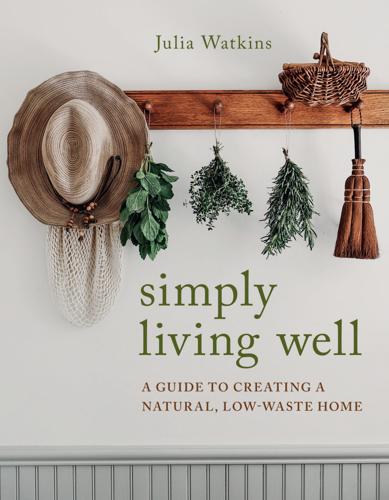
Simply Living Well: A Guide to Creating a Natural, Low-Waste Home
by
Julia Watkins
Published 6 Apr 2020
I’ve found that a natural cleaning routine is not only healthier for me and the planet, but it’s empowering and joyful as well. In this section, I share the recipes and tools I use, and I hope they bring you joy and peace of mind. Done right, these methods can help save money, decrease your exposure to toxins often found in commercial products, and reduce your carbon footprint. Natural Cleaning Supplies Here they are: the only supplies you’ll ever need to keep your home clean. Most of these items can be readily purchased in cardboard or glass packaging at a grocery store, hardware store, or pharmacy. Some supplies, like hydrogen peroxide and castile soap, come in plastic bottles unless you have access to a zero-waste store.
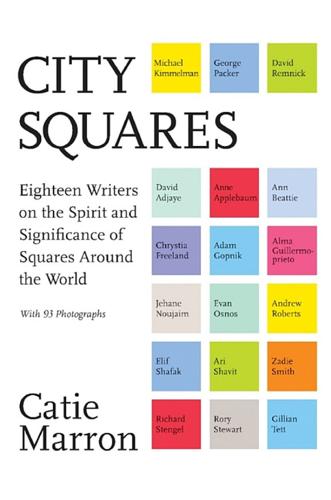
City Squares: Eighteen Writers on the Spirit and Significance of Squares Around the World
by
Catie Marron
Published 11 Apr 2016
Dozens of new cities are springing up in Asia, some from mass relocation programs that have cleared vast swaths of the Chinese countryside. Much of the growth is chaotic, badly planned and informal. Meanwhile, volatile gas prices and climate change have made suburban life costlier and the benefits of a diminished carbon footprint clearer. In the United States, growing numbers of university graduates and empty-nesters are rejuvenating downtowns. Since the late 1990s, the share of automobile miles driven by twentysomethings in America has fallen from 20.8 to 13.7 percent. The number of nineteen-year-olds opting out of driver’s licenses has tripled since the 1970s from 8 to 23 percent.

Makeshift Metropolis: Ideas About Cities
by
Witold Rybczynski
Published 9 Nov 2010
Owen suggests that rather than conceiving of Utopian solutions, or complicated technological add-ons, planners should study existing cities that already offer “instructive examples of how to achieve low-impact urban living,” citing Manhattan and Hong Kong.6 Although extremely dense vertical cities conserve more energy and resources, they are not really models; simply put, the demand for Manhattan-type living is limited. But if Americans are to significantly reduce their carbon footprints, they will have to consider densification. Per capita carbon dioxide emissions in American cities are estimated to be twice as high as in Europe, and the so-called ecological footprints of American cities—the land area beyond the city proper that is required for food production, energy and resources supply, and waste assimilation—are correspondingly large.7 “The low-density auto-dependent American landscape makes sustainable living—such as walking, bicycling, or public transport—difficult,” writes Timothy Beatley, an urban-planning professor at the University of Virginia and the author of Green Urbanism.
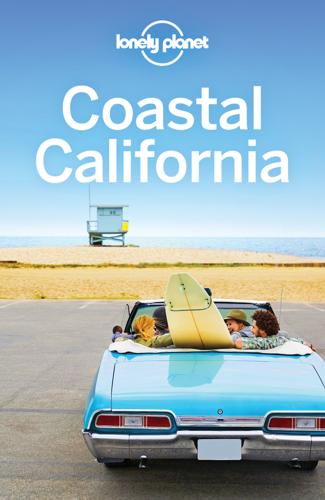
Coastal California Travel Guide
by
Lonely Planet
More and more vineyards are implementing biodynamic farming techniques and following organic guidelines. Many vintners and oenophiles are starting to think that the more natural the growing process, the better the wine, too. Sustainable Vine Wine Tours whisks you around family-owned sustainable vineyards. Minimize your carbon footprint even further by following Santa Barbara’s Urban Wine Trail (www.urbanwinetrailsb.com) on foot. If you love both wine and food, Edible Santa Barbara magazine (http://ediblecommunities.com/santabarbara) publishes insightful articles about vineyards and restaurants that are going green. It's available free at many local markets, restaurants and wineries.
…
Many websites offer ‘carbon calculators’ that allow people to estimate the carbon emissions generated by their journey and, for those who wish to do so, to offset the impact of the greenhouse gases emitted with contributions to portfolios of climate-friendly initiatives throughout the world. Lonely Planet offsets the carbon footprint of all staff and author travel. Air ATo get through airport security checkpoints (30- to 45-minute wait times are standard), you’ll need a boarding pass and photo ID. ASome travelers may be required to undergo a secondary screening, involving hand pat-downs and carry-on-bag searches.
…
Airport locations may have cheaper rates but higher add-on fees; if you get a fly-drive package, local taxes may be extra when you pick up the car. Rates generally include unlimited mileage, but expect surcharges for additional drivers and one-way rentals. Child or infant safety seats are legally required; reserve them when booking for $10 to $15 per day. If you’d like to minimize your carbon footprint, some major car-rental companies offer ‘green’ fleets of hybrid or biofueled rental cars, but these fuel-efficient models are in short supply. Reserve those models well in advance and expect to pay significantly higher rates. To find and compare independent car-rental companies, try Car Rental Express (www.carrentalexpress.com).

How to Be Black
by
Baratunde Thurston
Published 31 Jan 2012
By the time I graduated from high school, we had traveled from Nova Scotia, Canada, to Disney World in it. I can only recall one plane journey in my childhood, but we moved about by Amtrak train quite often. When I was twelve, we took a nearly three-week train trip around the entire United States and deep into Mexico. In many of the places we visited, we chose highly efficient, low-carbon-footprint accommodations, also known as “camping.” The Mexico part of that epic train journey was a trip itself. I met travel writers in Los Mochis, saw forest fires from our bus on the Mexican highway near the U.S.-Mexico border, and heard country music blasting out of a car stereo for the first time in my life.
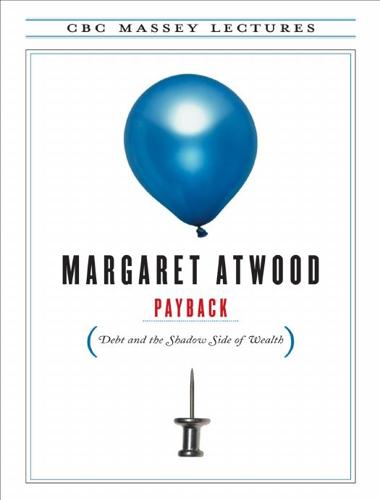
Payback: Debt and the Shadow Side of Wealth
by
Margaret Atwood
Published 15 Mar 2007
All religious leaders have realized that their mandate includes helping to preserve the Almighty’s gift of the Earth and have condoned birth control; there are no more noisy, polluting gas-powered leaf blowers or lawn mowers; and global warming has been dealt with at a summit during which world leaders gave up paranoia, envy, rivalry, power-hunger, greed, and the debate over who should start cutting down the carbon footprint first, and rolled up their sleeves and got on with it. There is Scrooge himself, looking very fit in a hemp suit, signing several enormous cheques for conservation organizations: rain-forest stewardship, underwater marine parks, bird habitats. “In this future,” says the Spirit, “the albatross has been saved; largely — I must add — through your efforts.

The Purpose Economy: How Your Desire for Impact, Personal Growth and Community Is Changing the World
by
Aaron Hurst
Published 31 Aug 2013
From the small and mundane daily choices we make to systemic and historic impact, we strive to contribute to the well-being of the world around us. Societal purpose isn’t isolated to volunteering and philanthropy, or careers in education and social work. While these often spark feelings of purpose, we can also derive purpose through decisions about how we consume, from decreasing our carbon footprint to buying local produce at the farmers’ market. We can also discover meaning through our daily work, where we help the people on our teams and provide consumers with our products and services. Seventh Generation makes cleaning, baby and feminine personal care products that aim to be healthy and safe for the air, the surfaces, the fabrics, the pets, and the people within the home—and for the community and environment outside it.
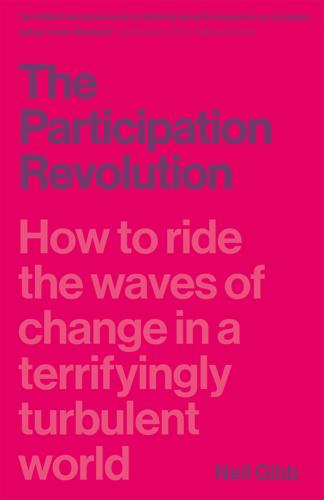
The Participation Revolution: How to Ride the Waves of Change in a Terrifyingly Turbulent World
by
Neil Gibb
Published 15 Feb 2018
And once we started to think about the whole human experience, a whole set of new possibilities and innovations emerged. Teams started to compete with new ideas. Young engineers became interested in nurturing local talent in the developing countries the company was operating in, others in reducing the company’s carbon footprint through its supply chain. The company reorganised into three interconnected units: one focusing on maximising the value from its current assets; another on the development of new technologies beyond hydrocarbons; and the third on the transition between the two. At the same time, we took structure out.
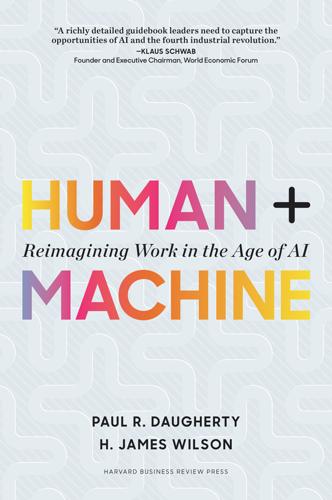
Human + Machine: Reimagining Work in the Age of AI
by
Paul R. Daugherty
and
H. James Wilson
Published 15 Jan 2018
Crucially, when Aida encounters a question it can’t confidently resolve, it connects to human experts and learns from their interaction with a customer.5 (See figure 6-3.) AI at Airbus Designers at Airbus used Dreamcatcher’s AI capabilities to redesign a partition that separates the passenger compartment from the galley in the cabin of an A320. Engineers wanted the partition to be lightweight (to save fuel, so the plane would have a smaller carbon footprint), yet strong enough to anchor two jump seats for flight attendants. On the computer screen, designers watched the software cycle through thousands of bizarre, unexpected designs for the internal structure of the partition. The engineers ended up trusting one of the weird-looking ones. Instead of looking like a solid panel designed by professionals, the final partition looked more like a child’s scribbles in a coloring book, while still meeting the criteria for strength, weight, and manufacturability.

Fewer, Better Things: The Hidden Wisdom of Objects
by
Glenn Adamson
Published 6 Aug 2018
Another celebrated instance is the development of LEDs (light-emitting diodes), a technology that was refined in the space program, though not in Adams’s lab. LEDs release no heat, are not particularly fragile, and last for a very long time, all of which makes them ideal for space—astronauts don’t want to worry about changing lightbulbs. Of course, the technology is now widespread here on Earth, and is helping to reduce our overall carbon footprint. As professionals involved in space exploration (who are dependent on public funding) like to remind us, this kind of breakthrough is fairly common in their work. Extreme conditions force designers to be smarter. They come to realizations that they might not have if they were working in a more permissive environment.
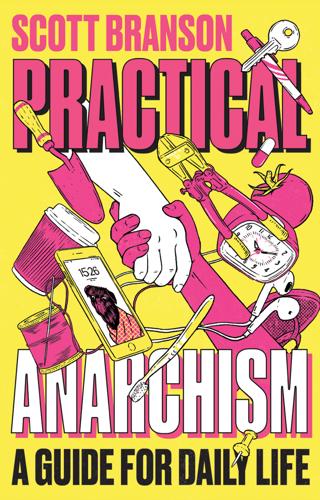
Practical Anarchism: A Guide for Daily Life
by
Scott. Branson
Published 14 Jun 2022
Its aim isn’t to seize the state and wield it dubiously towards the people’s freedom (spoiler alert: that never works). Neither will it operate in the liberal manner of guilting and shaming you into noting your complicity with the horrors of the world and thus imagining the solution is in your wallet or reducing your carbon footprint (thus letting the state off the hook). Though it’s true that we are all complicit to the extent that we inhabit this shared world, we also have varying degrees of complicity—acknowledging this enables us to betray the questionable benefits of citizenship or belonging to a nation, and repurpose our access to resources against the hierarchies of power that frame our world.
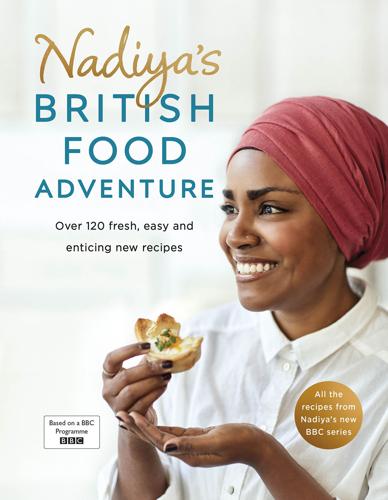
Nadiya's British Food Adventure
by
Nadiya Hussain
Published 14 Jun 2017
My food was full to the brim with colour, bursting at the seams with laughter, waiting at the door in anticipation, overflowing with happiness, seasoned with a measure of sadness. At home, we lived on rice and curries. Not just any old rice and curry, but some of the most beautifully cooked, elegantly spiced curries I have ever eaten. Always filled with Asian vegetables that had a carbon footprint as hefty as the receipts my dad came home with. Rice and curry after school every night. Rice and curry for lunch on the weekend and the same again for dinner. We didn’t know any different so we never complained. We ate in congregation on the floor and we ate with our hands, all five fingers stained and scented with turmeric.
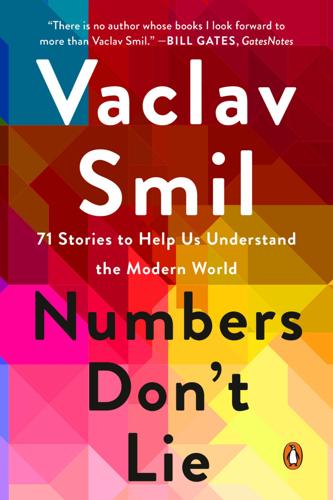
Numbers Don't Lie: 71 Stories to Help Us Understand the Modern World
by
Vaclav Smil
Published 4 May 2021
Air pollution (fine dust) from cement production can be captured by fabric filters, but the industry (burning such inferior fuels as low-quality coal and petroleum coke) remains a significant source of carbon dioxide, emitting roughly a ton of the gas per ton of cement. For comparison, producing a ton of steel is associated with emissions of about 1.8 tons of CO2. Production of cement now accounts for about 5 percent of global CO2 emissions from fossil fuels, but its carbon footprint can be lowered by a variety of measures. Old concrete can be recycled, and the crushed material can be reused in construction. Blast furnace slag or fly ash captured in coal-fire power plants can replace some of the cement in mixing concrete. There are also several new low-carbon or no-carbon cement-making processes, but these alternatives will be making only small annual dents in a global output that is now surpassing 4 billion tons.

Lonely Planet Malta & Gozo
by
Lonely Planet
May’s Ritmu Roots Festival around Valletta and Floriana’s Argotti Gardens presents a week of live folk music, while the annual Malta International Arts Festival combines music, dance and theatre in June. Responsible Travel Climate Change & Travel It’s impossible to ignore the impact we have when travelling; Lonely Planet urges all travellers to engage with their travel carbon footprint, which will mainly come from air travel. While there often isn’t an alternative, travellers can look to minimise the number of flights they take, opt for newer aircrafts and use cleaner ground transport, such as trains. One proposed solution – purchasing carbon offsets – unfortunately does not cancel out the impact of individual flights.
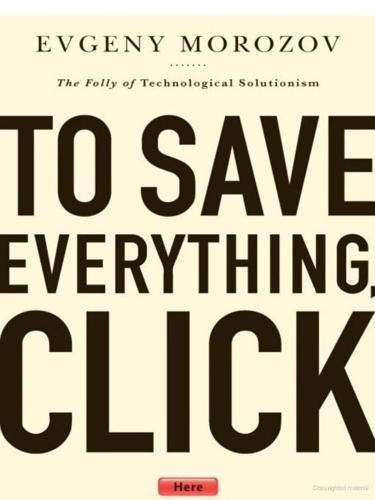
To Save Everything, Click Here: The Folly of Technological Solutionism
by
Evgeny Morozov
Published 15 Nov 2013
The logic of carbon offsetting—and the idea that sustainability can be bought through market relations—has now trickled down from nations and corporations to individuals. Thus, we are now asked to monitor—yet another instance of self-tracking—our carbon footprint and to minimize our own carbon emissions by buying more efficient products or using greener transportation methods. But even as we gain the ability to monitor our own carbon footprint, do we really know what those numbers actually mean? Or is taking such measurements yet another way to make us feel good about our own sacrifices without making any fundamental changes to the system? Do we know the relative importance of our tiny contribution?

A Generation of Sociopaths: How the Baby Boomers Betrayed America
by
Bruce Cannon Gibney
Published 7 Mar 2017
New York Times, 19 Mar. 2000; Center for Public Integrity. “How the Gores, Father and Son, Helped Their Patron Occidental Petroleum,” 11 Jan. 2000, www.publicintegrity.org/2000/01/11/3315/how-gores-father-and-son-helped-their-patron-occidental-petroleum. 11. Nussbaum, Bruce. “Al Gore’s Carbon Footprint Is Big.” Bloomberg, 27 Feb. 2007, www.bloomberg.com/news/articles/2007-02-26/al-gores-carbon-footprint-is-big-dot. 12. “Worldwide Effort Is Proposed to Study Climate and Its Impact.” Special Contribution. New York Times, 13 Feb. 1979, C3; see also World Meteorological Organization. “World Climate Programme (WCP).” www.wmo.int/pages/prog/wcp/wcp.html; Bierly, Eugene W.
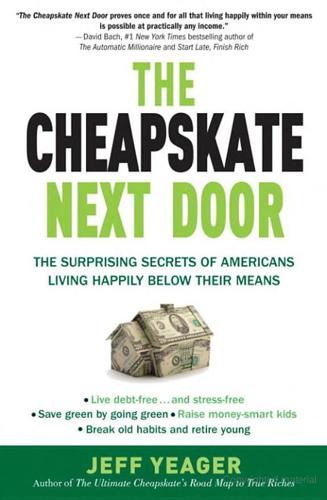
The Cheapskate Next Door: The Surprising Secrets of Americans Living Happily Below Their Means
by
Jeff Yeager
Published 8 Jun 2010
Unplug electrical leeches when they’re not in use, or for greater convenience attach multiple appliances to a single power strip (like my favorite, the Gem Sound SP-8500) that can easily be flipped on and off. Savings: A 10 percent savings on the average U.S. household electric bill would be more than $120 a year. This revelation kicked me in the butt like a giant carbon footprint one day when I saw a segment on a morning news show about “eco-friendly fashions.” The runway model was sporting a skimpy (and, yes, very sexy) dress. I was shocked to hear the price—nearly $900—but then it started to make sense. The dress, they said, was made out of hemp. Eyeing the runway model and mentally backing out what I estimated to be her 103.69 pounds of bulimic body weight, I figured you’d be left with the better part of a pound of hemp.

Bottled and Sold: The Story Behind Our Obsession with Bottled Water
by
Peter H. Gleick
Published 20 Apr 2010
As we become increasingly savvy consumers and learn more about the implications of our purchases for natural resources and the environment, new and complicated questions arise. Were those inexpensive running shoes made by child labor in bad working conditions? Was the cotton in my blue jeans grown organically and with efficient irrigation? Are the Central American coffee growers who provided the beans for my morning cup being fairly compensated? What is the carbon footprint of my daily commute? And what are the true costs of my convenient plastic water bottle—the costs of making the plastic bottle and shipping it to me as well as the environmental costs of disposing of the plastic garbage when I’m done drinking? Resources are required to make, package, transport, chill, use, and recycle bottled water and its packaging, including both energy and, ironically, water.
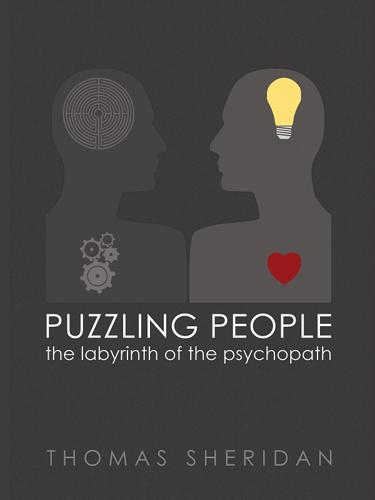
Puzzling People: The Labyrinth of the Psychopath
by
Thomas Sheridan
Published 1 Mar 2011
Many super-wealthy, aristocratic and powerful psychopaths love nothing better than to use their status and influence to ‘repair’ shortcomings they perceive in others. Usually, these same shortcomings and social problems were created by the previous generation of like-minded influential and elite psychopaths. Many of the elite of today are ordering the rest of us to reduce our carbon footprints while conducting interviews from their fuel-guzzling limos and private jets. They originate from the same aristocratic families who created the dependence upon oil in the first place. Naturally, they fail to see the irony in all this, and tellingly, they have used their bought-and-paid-for corporate media to blinker most of society from also recognising this irony.

The Butcher's Guide to Well-Raised Meat: How to Buy, Cut, and Cook Great Beef, Lamb, Pork, Poultry, and More
by
Joshua Applestone
,
Jessica Applestone
and
Alexandra Zissu
Published 6 Jun 2011
Shake or mix well before using. 300 301 302 303 HERE IS A SUSTAINABLE FOOD MOVEMENT AFOOT, and people are out there doing what we do. We don’t ship, Tother because we prefer that people come to see what we’re about or support their own local industry and farmers. (Not to mention the fact that the carbon footprint of shipping is monumental, and meat doesn’t travel well.) Take the time to nd good, local farmers before you shop. Where you shop is as important as what you shop for. Farmers’ markets, Community Supported Agriculture (CSA) meat shares, farm stands, direct sale from farms, and natural food stores are far more likely to have good choices than most supermarkets.
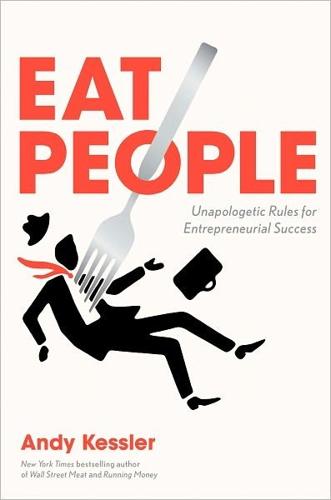
Eat People: And Other Unapologetic Rules for Game-Changing Entrepreneurs
by
Andy Kessler
Published 1 Feb 2011
“These Fun Suckers are very interesting and they have been around forever and they are certainly not limited to any one political party or one political point of view. But they do gravitate towards politics and they are the people who come and tell you that everything you do is bad for you, bad for other people, insensitive, divisive, harms the climate, is unsustainable, it leaves too large a carbon footprint, it tangles things in the tuna nets that shouldn’t be tangled in them. Everything you do, wrong colored bathing suit destroys the manta ray population. Whatever. They’ve always got some reason to tell you what to do.” “Again and again.” I added. “Of course,” P.J. continued, “and if you really think about it, it’s just a form of bullying for weaklings.

Double Entry: How the Merchants of Venice Shaped the Modern World - and How Their Invention Could Make or Break the Planet
by
Jane Gleeson-White
Published 14 May 2011
The real costs of their business are higher than their stated costs—but they remain hidden. For example, Patel has estimated the real cost of a Big Mac to be US$200. The reason Big Macs sell for almost one-hundredth of this figure is that their drive-through price does not account for their real costs. These include their carbon footprint, their impact on the environment in terms of water use and soil degradation, and the enormous health costs of diet-related illnesses such as diabetes and heart disease. Traditional accounting models do not take these costs into account, but they still have to be paid. It is just that the McDonald’s Corporation does not pay them.

The Nation City: Why Mayors Are Now Running the World
by
Rahm Emanuel
Published 25 Feb 2020
And speaking of Barcelona, that city has moved ahead—without any help from the Spanish national government—to make its mass transit systems digital, which will help the system become more reliable, efficient, and responsive to consumer expectations. Large-scale bike-sharing programs, which reduce congestion and pollution, were first started in Copenhagen. Vancouver, which already has the smallest carbon footprint of any major city in North America, has embarked on an ambitious initiative (called Greenest City 2020 Action Plan) to completely eliminate its dependence on fossil fuels, walking the walk as its home country continues to merely talk the talk. Tel Aviv has become a leader in green technology.

Notes From an Apocalypse: A Personal Journey to the End of the World and Back
by
Mark O'Connell
Published 13 Apr 2020
* * * — It sounds grandly sentimental, and even naive, to say that the world is changed by the birth of a child. But it is also not untrue, or not at least entirely so. It could be said, of course, that it is changed for the worse. It could be said that the pitter-patter of tiny carbon footprints can at this late stage only exacerbate our predicament, and I would not presume to argue otherwise. But are we then expected to hasten the end, to succumb at last to the logic of oblivion, by renouncing the reproductive imperative? In The Human Condition, Hannah Arendt argues that in human affairs it is reasonable to expect the unexpected.
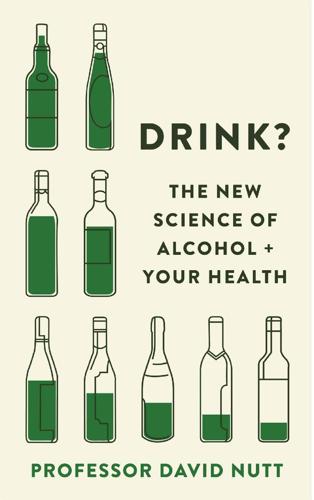
Drink?: The New Science of Alcohol and Your Health
by
David Nutt
Published 9 Jan 2020
Alcarelle will focus on the science and the drinks companies will be able to license the technology, formulate their own flavouring and branding and market their own range of new-generation beverages. We are finding alcohol companies are more interested in our progress today and are more open to collaboration than before. This is due to a number of developing trends. The first is simply the massive move towards sustainability . The carbon footprint of alcohol is pretty large as it takes a lot of energy to shift bottles around, while Alcarelle could be shipped in a very concentrated form. Another reason is because the young are showing signs they’d like to turn away from alcohol. The growth area of the drinks market is currently in the non-alcoholic and healthy functional drinks category and there is a real gap, with very little on offer that is truly satisfying to adult consumers.
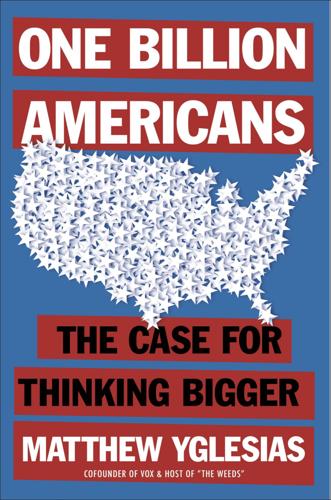
One Billion Americans: The Case for Thinking Bigger
by
Matthew Yglesias
Published 14 Sep 2020
Philosophers would debate the ethics of this plan, but it would basically make sense if the downside of ecological unsustainability was actual human extinction. But killing billions to save hundreds of millions is just bad math and doesn’t require any complicated philosophical arguments at all. By the same token, the implicit population ethics of the common argument that not having children is a good way to reduce your carbon footprint don’t really make sense. Large families don’t generate more emissions because children are particularly resource intensive (quite the opposite, they are smaller than adults and don’t drive cars), it’s because they contain more people. You could just as easily reduce emissions by encouraging people to commit suicide.
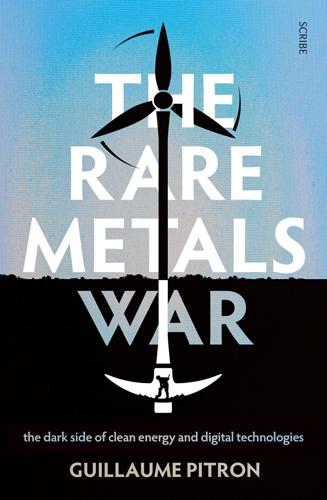
The Rare Metals War
by
Guillaume Pitron
Published 15 Feb 2020
This makes these rare metals expensive: a kilogram of gallium is worth around US$150 — that is, it is 9,000 times more expensive than iron. Germanium is ten times more expensive than gallium. They also possess the exceptional properties demanded by new — and especially ‘green’ — technology manufacturers working to reduce our carbon footprint on the environment.3 Rare metals: drivers of new energies Since the dawn of time, humans have sought to transform sources of natural energy (such as wind, thermal, and solar) into mechanical energy. Take the windmill, for instance. Its vanes and rotor are driven by wind energy to actuate a mechanical mill that then crushes olives or grain.

Cooking for Geeks
by
Jeff Potter
Published 2 Aug 2010
Environmentally Sound Inputs First they say farm-raised salmon is better, then it’s wild salmon. Or the blogs light up with posts about how many metric tons of greenhouse gases or gallons of water are associated with producing an average cheeseburger. Then there’s the whole "local food" movement wanting to help with reducing our collective carbon footprint. What’s an environmentally conscious geek to do? It depends. How much are you willing to give up? Let’s start with the good news, with the greenest of the green: your veggies. Locally grown veggies combined with a minimum of transportation and sold unpackaged are about as good as you can get for the environment, and they’re about as good as you can get for yourself.
…
(On a personal note unrelated to the environment, I believe the typical American diet doesn’t include enough veggies. Eat more veggies! More!) In the other corner, there are red meats like corn-fed beef. It’s environmentally expensive to produce: the cow has to eat, and if fed corn (instead of grass), the corn has to be grown, harvested, and processed. All this results in a higher carbon footprint per pound of slaughtered meat than that of smaller animals like chickens. Then there’s the fuel expended in transportation, along with the environmental impact of the packaging. By some estimates, producing a pound of red meat creates, on average, four times the greenhouse-gas emissions as a pound of poultry or fish.
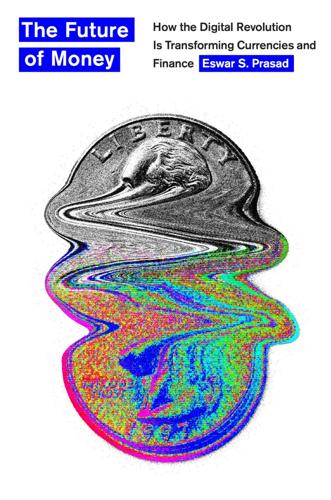
The Future of Money: How the Digital Revolution Is Transforming Currencies and Finance
by
Eswar S. Prasad
Published 27 Sep 2021
Arvind Narayanan, a computer science professor at Princeton University, estimated that in 2018 Bitcoin mining accounted for about 1 percent of world energy consumption. Another researcher estimated that validating a single transaction on the Bitcoin network required power consumption equivalent to that of an average US household over about a month. According to this analysis, the Bitcoin network has a carbon footprint similar to that of New Zealand, an energy consumption total similar to that of Chile, and an electronic waste generation level comparable to that of Luxembourg. In fact, the electricity consumption of the Bitcoin network is estimated to be more than that of 150 countries in the world—only about forty countries have annual electricity consumption levels that exceed this network’s annual electricity usage.
…
The Battle of Bretton Woods: John Maynard Keynes, Harry Dexter White, and the Making of a New World. Princeton, NJ: Princeton University Press. Stiglitz, Joseph E. 1990. “Peer Monitoring and Credit Markets.” World Bank Economic Review 4, no. 3 (September): 351–366. Stoll, Christian, Lena Klaaßen, and Ulrich Gallersdörfer. 2019. “The Carbon Footprint of Bitcoin.” Joule 3, no. 7: 1647–1661. Stracca, Livio. 2018. The Economics of Central Banking. London: Routledge. Subbarao, Duvvuri. 2016. Who Moved My Interest Rate? Leading the Reserve Bank of India Rough Five Turbulent Years. New Delhi: Penguin. Sun, Guofeng. 2015. Financial Reforms in Modern China: A Frontbencher’s Perspective.

Power and Progress: Our Thousand-Year Struggle Over Technology and Prosperity
by
Daron Acemoglu
and
Simon Johnson
Published 15 May 2023
These movements put pressure on the corporate sector. As the population in many Western nations became informed about the dangers of climate change, they demanded cleaner products, such as electric cars and renewable energy, and employees at many large corporations insisted on reductions in their companies’ carbon footprint. Equally, they pushed (some) policy makers into taking global warming seriously. These developments activated the third prong, technical and policy solutions. Economic and environmental analyses identified three critical levers for combating climate change: a carbon tax to reduce fossil-fuel emissions, support for innovation and research in renewable energy and other clean technologies, and regulation against the worst polluting technologies.
…
It was also pressure from consumers, together with media coverage, that forced YouTube and Reddit to take some steps to limit extremism on their platforms. However, collective action requires a large group of people acting together to achieve an objective—for example, pushing companies toward reducing their carbon footprint. Such action is costly for most people, who will have to spend time to become informed, to attend meetings, to change their consumption habits, and to occasionally go out and protest. These costs multiply when there is a counterpush from companies and sometimes, even worse, from state security services.

The Quest: Energy, Security, and the Remaking of the Modern World
by
Daniel Yergin
Published 14 May 2011
Garbage-to-energy might count as well, if one thinks of garbage as a renewable resource. But those listed above are where most of the effort is focused. What unifies these varied technologies as renewables? They are not based upon finite resources; they are widely distributed; they do not add, at least in theory, to carbon, and thus have a much more restricted carbon footprint. One other technology needs to be added to the list: batteries for electric cars. These are not strictly renewable in the same way but fall within the same framework. They could count as renewable if the electricity by which they are recharged happens to be the product of wind or sunlight. EARTH DAY In 1951 the Paley Commission, appointed by President Harry Truman to investigate raw material shortages during the Korean War, warned against future oil shortfalls and dependence on Middle Eastern oil.
…
And if the world is willing, Brazil has the potential to take the lead in developing a very large global export market. FOOD VERSUS FUEL As biofuels came to the fore around the world, a debate erupted over the prospects for conventional ethanol and other biofuels, which could be summed up as “food versus fuel” and “net carbon footprint.” A good deal of energy goes into the production of ethanol. But do you get more, less, or the same amount “coming out” compared with the amount of energy “going in”? The energy balance—that is, how much energy you get for the energy you expend—is controversial and not easy to measure. It takes energy to make energy.
…
Seventy thousand people took to the streets in Mexico City to protest the high prices—tortilla prices tripled in some parts of the country—forcing the government to slap price controls on tortillas.13 Remarkable advances in agronomy have quadrupled the bushel yield per acre since 1950. But even with their increases in productivity, advocates of ethanol see acreage as a limit to corn-based ethanol. A backlash against biofuels on environmental grounds has emerged, centered on concerns about the net carbon footprint of first-generation biofuels. Although biorefineries in the United States have strong local support in farming communities, opponents complain about the effects on air quality and traffic. More broadly, criticism has risen concerning water use and increased greenhouse emissions released from the soil and from additional fertilizer production.

The Great Reset: How the Post-Crash Economy Will Change the Way We Live and Work
by
Richard Florida
Published 22 Apr 2010
David Owen, Green Metropolis: Why Living Smaller, Living Closer, and Driving Less Are the Keys to Sustainability (New York: Riverhead, 2009); Owen, “Sustainable Cities,” Project Syndicate, October 5, 2009, retrieved from www.project-syndicate.org/contributor/1661. 5. David Owen, “How Traffic Jams Help the Environment,” Wall Street Journal, October 9, 2009. 6. Edward Glaeser, “With a Tax Break, a Big Carbon Footprint,” Boston Globe, November 5, 2009. 7. “Cities and CO2: Bigger Is Better,” Martin Prosperity Insights, October 14, 2009, retrieved from www.martinprosperity.org/insights/insight/cities-andco2-bigger-is-better. Chapter 20: The Velocity of You 1. Figures on average travel speed are from Randal O’Toole as cited in Neil Reynolds, “America’s Fast Track to Wealth,” Globe and Mail, October 9, 2009. 2.

Discardia: More Life, Less Stuff
by
Dinah Sanders
Published 7 Oct 2011
Of all the things in that house, you would think that the chair would be most likely to be sitting in my home now, but it's not. That chair needs to rock babies to sleep. That chair needs to hold little children with their fingers in their mouths listening to fairy tales. I'd already decided years ago not to have kids, which was perhaps the most significant Discardian choice of my life for its impact on my carbon footprint as well as the space it’s created for other opportunities. Because of this decision, I knew the chair needed to be with someone else. I gave it to friends, who were pregnant with their first child, so that it could serve at least one more generation and create happy childhood memories. Perhaps if I'd taken the chair my memories would have become diluted.

The Fair Trade Scandal: Marketing Poverty to Benefit the Rich
by
Ndongo Sylla
Published 21 Jan 2014
Faced with this laissez-faire attitude, it is not surprising to notice some innovative initiatives such as ‘halal cosmetics’. Chapter 3 1. Drescher (1992), for instance, provides an excellent discussion on this point. 155 Sylla T02779 01 text 155 28/11/2013 13:04 the fair trade scandal 2. Drawing probably from the notion of ‘carbon footprint’, an American sustainable development organisation recently introduced a ‘slavery footprint’. This indicator shows for instance how many ‘men, women and children have to work’ in order for consumers of the North to easily access common consumption goods such as denim trousers, MP3 players, etc.
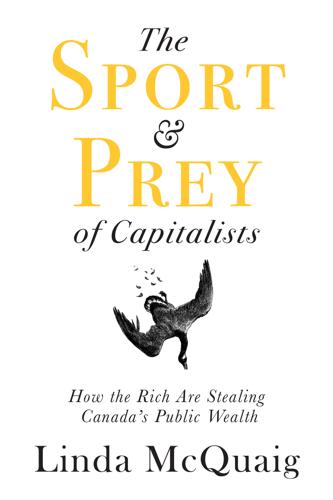
The Sport and Prey of Capitalists
by
Linda McQuaig
Published 30 Aug 2019
But this “hard cap” turns out to be really soft. Rather than cutting back oil sands emissions, it permits them to grow another 60 percent. At that rate, the oil sands will use up roughly 78 percent of the overall emissions budget for all of Canada in 2050, forcing the rest of the population and all other industries to reduce their carbon footprint to virtually zero. “Instead of being part of a climate solution for Canada, Alberta’s ‘hard cap’ allows just one industry to consume our nation’s climate goals and obligations,” observes Barry Saxifrage, climate reporter for the National Observer.22 This national subservience to the development of the oil sands becomes even more incomprehensible when it becomes clear that the sands are not even a major job creator.

Home: Why Public Housing Is the Answer
by
Eoin Ó Broin
Published 5 May 2019
In 2018 the Citizens Assembly, modelled on the Constitutional Convention but examining broader policy issues, examined how the State could become a leader in tackling climate change. The Third Assembly Report published in April 2018 recommended that All new buildings should have a zero or low carbon footprint and planning permission should only be granted for new builds which comply with these requirements. The Government should provide incentives to retrofit homes to achieve better energy efficiency ratings.48 While both the nZEB planning requirements and the SEAI and Local Authority retrofitting programmes are in line with this recommendation the real question is whether sufficient investment, monitoring and enforcement will be forthcoming.

Yes Please
by
Amy Poehler
I hate how my face looks my body looks I am too fat or too skinny or too tall or too wide or my legs are too stupid and my face is too smiley or my teeth are dumb and my nose is serious and my stomach is being so lame. Then we think, “I am so ungrateful. I have arms and legs and I can walk and I have strong nail beds and I am alive and I am so selfish and I have to read Man’s Search for Meaning again and call my parents and volunteer more and reduce my carbon footprint and why am I such a self-obsessed ugly asshole no wonder I hate how I look! I hate how I am!” There have been forty million books and billions of words written on this subject, so I will assume we are all caught up. That voice that talks badly to you is a demon voice. This very patient and determined demon shows up in your bedroom one day and refuses to leave.

Shadow Work: The Unpaid, Unseen Jobs That Fill Your Day
by
Craig Lambert
Published 30 Apr 2015
Not surprisingly, the two occupy opposite ends of the country’s economic spectrum. The first alternative finds its purest form in those who live “off the grid”—in other words, without connecting to electric utilities and avoiding natural gas and heating oil. Those who leave the power grid behind usually seek to minimize their carbon footprint for environmental reasons. Typically they are young, idealistic people who may also unplug themselves from large commercial systems of food distribution and mainstream commerce. In this way, they can live on very little income while drawing satisfaction from a life that is close to the land, in some ways taking inspiration from Thoreau’s Walden.

Reinventing Capitalism in the Age of Big Data
by
Viktor Mayer-Schönberger
and
Thomas Ramge
Published 27 Feb 2018
An adaptive system, residing perhaps on your smartphone, accesses your past shopping data to gather that you bought a pan for induction cooktops last time, and also that you left a so-so review of it. Parsing the review, the system understands that the pan’s coating really matters to you, and that you favor a ceramic one (it also notes your preferred material for the grip). Equipped with these preferences, it then looks at online markets for optimal matches, even factoring in the carbon footprint of the delivery (because it knows how worried you are about that). It negotiates automatically with sellers, and because you are ready to pay by direct transfer it is able to get a discount. With a single tap, your transaction is complete. It sounds seamless and simple—because it should be.

Open: The Progressive Case for Free Trade, Immigration, and Global Capital
by
Kimberly Clausing
Published 4 Mar 2019
Everyday decisions about how warm to heat the house, whether to drive or walk to the store, and whether to fly to see a cousin’s wedding are profoundly influenced by prices; the more expensive it is to generate carbon dioxide emissions, the less people will chose to generate them. More expensive carbon also encourages businesses to reduce the carbon footprint of their products, since doing so reduces carbon-tax inclusive energy costs. There is a built-in incentive to make products more energy-efficient. As a consequence, cumbersome regulations like the corporate average fuel economy (CAFE) standards would be unnecessary; both automakers and consumers would already have strong economic incentives to choose fuel-efficient cars.
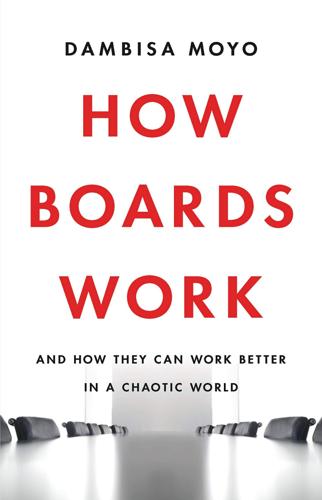
How Boards Work: And How They Can Work Better in a Chaotic World
by
Dambisa Moyo
Published 3 May 2021
Boards and management of energy companies have been forced to invest in alternative energies—geothermal, wind, solar, battery, biofuel, nuclear—that have emerged as contenders to meet the needs of the future. Even in the absence of detailed environmental law, energy companies are responding to customers’ changing sentiment and their desire to reduce their carbon footprint. This trend has far-reaching implications for the boards of airlines and car companies, as customers pledge to scale back on air travel and appear keen to use more shared ground transportation. Of course, the boards of global banks are also affected, since they are under increasing pressure to reassess their lending to the energy sector.

Open for Business Harnessing the Power of Platform Ecosystems
by
Lauren Turner Claire
,
Laure Claire Reillier
and
Benoit Reillier
Published 14 Oct 2017
Everything else being equal, a study showed that 210 The future of platforms African-American hosts on average charge 12% less renting their homes on Airbnb than white hosts.9 When platforms stimulate consumption (e.g. make people travel more because Airbnb is cheaper than alternatives), they increase the carbon footprint rather than lower it. In many ways, platforms still reflect many of the issues affecting our society, but the question is whether or not platforms can demonstrate that they have a positive impact overall. Since platforms have both positive and negative impacts, the question is really about the net effect of the disruption.
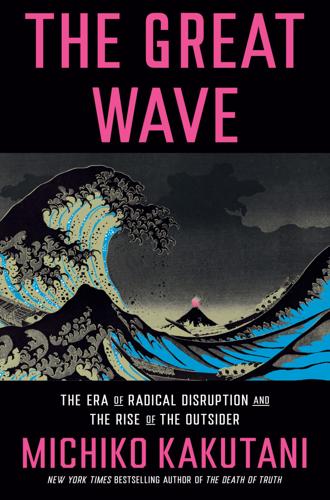
The Great Wave: The Era of Radical Disruption and the Rise of the Outsider
by
Michiko Kakutani
Published 20 Feb 2024
Democracy in America remains in grave danger, but in the 2022 midterm elections, voters did reject the majority of prominent election deniers running for Senate, House, and gubernatorial offices. Progress is being made against climate change as countries, cities, and government agencies take steps to reduce their carbon footprint and embrace green energy. And the Western alliance reacted with impressive unity to Putin’s invasion, ramping up economic and military support for Ukraine, while the Ukrainians have demonstrated their courage and strategic prowess in battling a ruthless and far larger adversary. The question is whether such efforts can be stepped up and sustained with urgency and momentum.

Key to the City: How Zoning Shapes Our World
by
Sara C. Bronin
Published 30 Sep 2024
These losses have in turn diminished watershed health, reduced carbon storage, and obliterated wildlife habitat, most problematically in core forest areas previously insulated from development by surrounding forest. Connecticut also lost 15 percent of its agricultural field land and 22 percent of its highest-quality agricultural land. These losses force us to source food from out of state, expanding the carbon footprint of the food system. Finally, Connecticut has lost significant riparian (riverside) lands, leaving a quarter of the state’s watersheds in poor health. Riparian losses include forty square miles of natural vegetation in streamside corridors, a loss that worsens water quality, since vegetation removes pollutants and stabilizes riparian banks.

Ireland (Lonely Planet, 9th Edition)
by
Fionn Davenport
Published 15 Jan 2010
It’s not that the Greens are ineffectual (which they are, but mostly because they’re the very junior partner in a coalition), nor is it that the Irish are especially indifferent to the needs of the environment. No, it’s down to that awkward truth known as history: it’s hard to tell a nation that got wealthy a wet week ago after pissing potless for centuries that they shouldn’t buy an SUV or go on four foreign holidays a year. Somehow, the fact that in 2007 Ireland’s carbon footprint was 5.0 global hectares per person – more than double the global average – didn’t really have the kind of impact the European Environment Agency hoped it would have, which meant that the country would have to pay for its emissions, a total of 3.6 million tonnes of carbon per year. Enter the economic collapse of 2008–9.
…
A good example is golf, where you should endeavour to play the older established courses rather than the newer megaresorts designed to draw in wealthy players with a mix of US-style course design and on-course houses that are nothing more than a huge drain on local resources. Throughout this book we have endeavoured to keep all of these considerations uppermost in our thinking. * * * GREEN WEBSITES Check out the following online resources for in-depth info on how to travel in Ireland without being an environmental bully or leaving too large a carbon footprint: www.cultivate.ie Sustainable living centre in Dublin’s Temple Bar. www.sustourism.ie All-Ireland project committed to building a sustainable tourist infrastructure. www.greenbox.ie An integrated ‘green zone’ that includes Fermanagh, Leitrim, West Cavan, North Sligo, South Donegal and North West Monaghan www.enfo.ie Ireland’s public information service on environmental matters, including sustainable development.
…
SLEEPING & EATING Gyreum Eco-lodge ( 071-916 5994; www.gyreum.com; Corlisheen, Riverstown; dm €17-21, d €50-54; ) Horse whisperers are among the volunteers sought by this eco-lodge in exchange for food and lodging, along with less romanticised occupations like plumbing and marketing. Along with a zero-carbon footprint (thanks to wind and geothermal power), the lodge has an organic veggie garden and a Finnish sauna. Markree Castle ( 071-916 7800; www.markree castle.ie; Collooney; s €130-165, d €195-260; ) Behind a whimsical Gothic facade, Sligo’s oldest inhabited castle has 30 somewhat faded rooms, some named after famous guests, such as number 8 where Johnny Cash stayed (alas, there’s no memorabilia).
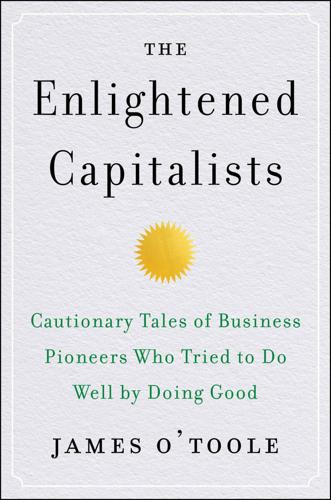
The Enlightened Capitalists
by
James O'Toole
Published 29 Dec 2018
An advocate of corporate transparency, he introduced the Southwest Airlines One Report, an annual social audit of its financial, social, and environmental performance that adheres to standards established by the Global Reporting Initiative for “triple bottom line” reporting. In 2012 the report noted that Southwest employees logged over 137,000 hours of volunteer service in their communities. The company also documents actions the company has taken to reduce its greenhouse emissions, carbon footprint, and overall environmental impact. However, SWA’s accomplishments in that regard amount to small potatoes: after all, there is no such thing as environment-friendly air travel. And the steps the airline has taken to reduce fuel consumption can be seen simply as prudent management. In 2016 Southwest was the world’s most profitable airline, and America’s largest, with fifty thousand employees annually serving more domestic passengers than any company in its industry.
…
Under his leadership, Arco was among the most innovative companies in its industry, introducing such products as cleaner-burning gasoline and mini-marts at its service stations (later, it was the first to take the “service” out of the stations when it introduced self-service gas pumps). The company was also the first American corporation to embrace two-way teleconferencing as a way to reduce its carbon footprint. Bradshaw and Arco took public stands that alienated them from the broader California business community, most notably when they opposed Proposition 13, a cap on state property taxes. When the company announced that it would cease paying its executives’ dues at private Los Angeles clubs with discriminatory racial practices, the local business community was aghast.

Digital Barbarism: A Writer's Manifesto
by
Mark Helprin
Published 19 Apr 2009
Macaulay’s claim is disproved only by the structure of the society in which he lived, and those throughout almost all the world at almost all times; by the actions and motives of aristocracy; by inheritance; by concern for the extension of one’s line; and by the millions who sacrificed their lives to build nations, protect tribes and ethnicities, accumulate wealth, and advance every conceivable cause and belief—all beyond the span of their natural lives. What of someone who reduces his “carbon footprint” in the belief that it will benefit people with no connection to him whatsoever, hundreds of years from now? How “faintly” is he “affected by the prospect of very distant advantages”? I cannot believe that because Macaulay had neither wife nor child he would be numb to mankind’s universal concern for future generations, especially one’s descendants, especially, if we are considering the term he disapproved, one’s own children and grandchildren.

Behind the cloud: the untold story of how Salesforce.com went from idea to billion-dollar company--and revolutionized an industry
by
Marc Benioff
and
Carlye Adler
Published 19 Nov 2009
It was a good question, and I knew the answer, but instead of giving her some half-baked information on our recycling programs and initiatives we were considering, I decided to 161 BEHIND THE CLOUD encourage her to contribute her ideas. ‘‘I’m not sure,’’ I said. ‘‘You have six paid days to figure it out; I’ll support you.’’ I suggested that Sue speak with Suzanne, the foundation’s executive director. Not long after the meeting, Sue came back to me with a plan for saleforce.com to reduce its carbon footprint. These discussions began to take place around the time of the release of An Inconvenient Truth, the eye-opening film that captures Al Gore’s crusade to halt global warming. Many people in our company rallied behind the cause. Although we were energized about the effort, we were hardly experts in this area.

A World in Disarray: American Foreign Policy and the Crisis of the Old Order
by
Richard Haass
Published 10 Jan 2017
Another reality is that the United States for all its power cannot impose order. Partially this reflects what might be called structural realities, namely, that no country can contend with global challenges on its own given the very nature of these challenges. The United States could reduce its carbon footprint dramatically, but the effect on global climate would be modest if India and China failed to follow suit. Similarly, on its own the United States cannot maintain a world trading system or successfully combat terrorism or disease. Adding to these realities are resource limits. The United States cannot provide all the troops or dollars to maintain order in the Middle East and Europe and Asia and South Asia.
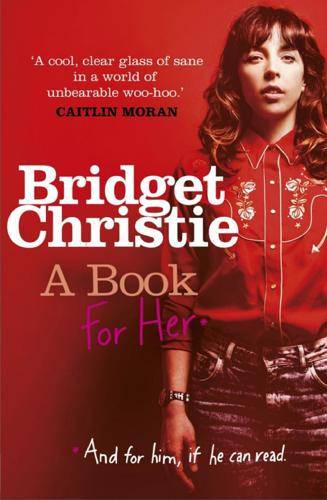
A Book for Her
by
Bridget Christie
Published 1 Jul 2015
MIDWIFE Because she died giving birth to you. MUM 1 What do you think is the best type of nappy to use? Because the Guardian says that terries are better than disposables because they produce less waste. MUM 2 Well, it’s not as simple as that actually. Terries don’t produce as much waste, but they have a bigger carbon footprint because you use up so much water and electricity washing them all the time. MIDWIFE If your baby is born healthy and you survive, you will tear pieces of your own clothing off into squares, wrap that around your baby, and then put plastic bags over the top of that to prevent baby’s mess from going everywhere.

What's Mine Is Yours: How Collaborative Consumption Is Changing the Way We Live
by
Rachel Botsman
and
Roo Rogers
Published 2 Jan 2010
Apple has fundamentally rewritten this paradigm by dematerializing the content.”3 But the benefits of dematerialization are not just convenience and choice. A recent study conducted by Intel and Microsoft comparing the environmental impact of various forms of music delivery showed that purchasing music digitally on the Internet reduced the carbon footprint and energy usage associated with delivering music to consumers by 40 to 80 percent compared with buying a CD at a retail outlet.4 Another instance of unintended consequences: Most people’s reason for downloading music isn’t environmental friendliness; but nevertheless, downloading is environmentally friendly.

Tomorrowland: Our Journey From Science Fiction to Science Fact
by
Steven Kotler
Published 11 May 2015
New York Times journalist and author of Power to Save the World: The Truth About Nuclear Power Gwyneth Cravens explains further: “If an American got all his or her lifetime electricity solely from nuclear power, that person’s share of waste would fit into one soda can. If an American got all his or her electricity from coal, that person’s waste would weigh 68.5 tons and fit into six 12-ton railroad cars. And their share of carbon dioxide coal emissions would come to 77 tons.” Nukes, meanwhile, have virtually no carbon footprint. Coal is also a serious pollutant, containing arsenic, mercury, lead, and a host of radioactive materials — uranium, thorium, and radium at levels 100 to 400 times the level of nuclear plants — yet remains exempt from hazardous-waste regulations. 24,000 people die coal-related deaths in the US each year.
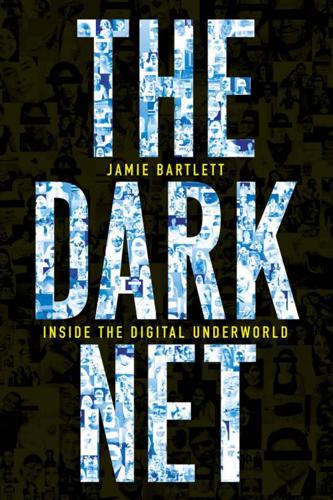
The Dark Net
by
Jamie Bartlett
Published 20 Aug 2014
It’s the possibility of a tech-powered ‘great leap forward’ that excites transhumanists like Zoltan, who believes the possible benefits of near- and medium-term technology are too important to ignore. In addition to the personal goal of immortality, he believes synthetic biology could solve food shortages, genetic medicine may help cure diseases, bionic limbs already do transform the lives of disabled people. (Zoltan explains that, as a computer file, his carbon footprint would be greatly reduced.) They believe that connecting our brains to computer servers would dramatically increase human cognition and intelligence, which would help us solve the sort of problems we humans are likely to face in the future. For transhumanists, not to pursue every avenue to improve human capability is irrational, even a derogation of a duty to relieve suffering and improve well-being.
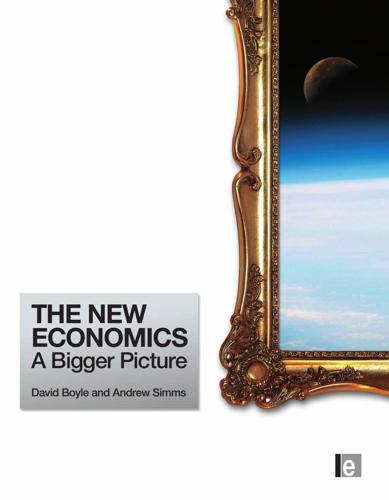
The New Economics: A Bigger Picture
by
David Boyle
and
Andrew Simms
Published 14 Jun 2009
Includes bibliographical references and index. ISBN 978-1-84407-675-8 (hardback) 1. Economics–Psychological aspects. 2. Well-being. 3. Sustainable development. I. Simms, Andrew, 1865– II. Title. HB74.P8B65 2009 330–dc22 2009022798 At Earthscan we strive to minimize our environmental impacts and carbon footprint through reducing waste, recycling and offsetting our CO2 emissions, including those created through publication of this book. For more details of our environmental policy, see www.earthscan.co.uk. This book was printed in the UK by MPG Books, an ISO 14001 accredited company. The paper used is FSC certified.

Simple Rules: How to Thrive in a Complex World
by
Donald Sull
and
Kathleen M. Eisenhardt
Published 20 Apr 2015
He had the company’s management team work as a group to answer three questions that are fundamental to any company’s ability to create economic value: Who will we target as customers? What product or service will we offer? How will we provide this product at a profit? Not all customers will be willing (or able) to pay a premium—many construction contracts, for example, go to the low-cost bidder regardless of the concrete’s quality or carbon footprint. Some customers, moreover, are costlier to serve than others—the cost of delivering concrete to remote locations with poor infrastructure is very high. The same logic applies to products. Not every product a company sells will command a premium price or be cheaper to make than competitors’ offerings.

An Edible History of Humanity
by
Tom Standage
Published 30 Jun 2009
This is largely because there is more room for pasture in New Zealand, so the lambs eat grass, whereas British lambs are given feed, the production of which is carbon-intensive. Shipping New Zealand lamb to Britain then incurred further emissions of 125 kilograms per metric ton, so that the “carbon footprint” of New Zealand lamb was much smaller even when transport was taken into account. It may be that the least polluting way to organize food production would be for countries or regions to concentrate on producing foods that can be made particularly efficiently given the local conditions, and to trade the resulting foods with each other.

Rethinking Money: How New Currencies Turn Scarcity Into Prosperity
by
Bernard Lietaer
and
Jacqui Dunne
Published 4 Feb 2013
Suppose they could say, ‘We had a TimeBank or cooperative currency that helped veterans’ families and made sure that no third-grader went on to fourth grade without being at a third-grade reading level and having a buddy or mentor as 172 PROSPERITY they passed to fourth grade.’ Suppose it was a tree-planting campaign as a way of reducing the carbon footprint. Why not have a brainstorming session to create place-based memories? “Set up a TimeBank Rotating Loan Club wherever anyone who has a cause, a dream, a vision of what they would like to change or what they would like to see happen could get a time commitment of 90 days to make that happen. Like Rotating Loan Clubs, everyone would have a chance to do that: I’ll help with your cause for 90 days if you will help with mine.
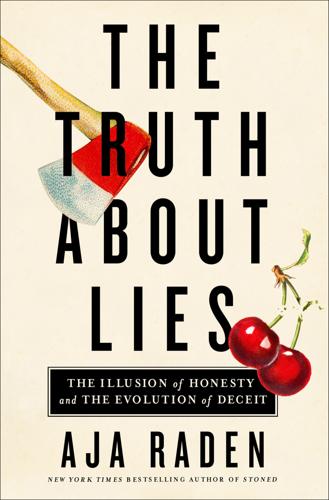
The Truth About Lies: The Illusion of Honesty and the Evolution of Deceit
by
Aja Raden
Published 10 May 2021
While it’s true that producing them doesn’t create giant town-sized craters in the earth the way traditional diamond mining does, they are not particularly environmentally superior. They’re just doing a different kind of damage to the environment; the amount of energy required to produce them is so great that synthetics actually have a larger carbon footprint per carat than do natural diamonds. In fact, the FTC sent warning letters to eight U.S. lab-grown diamond companies just last year for using debatable, if not outright deceptive, terms like “eco-friendly.”4 So that last claim about synthetic diamonds being a green alternative is just a straight-up lie—deliberately invented and test-marketed to serve a purpose.

The Politics Industry: How Political Innovation Can Break Partisan Gridlock and Save Our Democracy
by
Katherine M. Gehl
and
Michael E. Porter
Published 14 Sep 2020
Whatever your career trajectories, be they business or technology or philanthropy or even politics, you probably have at your fingertips actionable levels of agency and access—some combination of time, expertise, resources, or network, through which you already influence the world around you. More than likely, your active investments of agency are predicated on some expectation of a return: an increased graduation rate, a decreased carbon footprint, a modern regulation implemented, or an outdated one retired—something tangible that validates your commitment. Historically, most people have not viewed politics as an attractive investment. Those who do view it this way often invest in the people and parties of the entrenched duopoly (or, to a much lesser degree and symbolically, in the spoilers and independents stuck in political purgatory).

A Sting in the Tale
by
Dave Goulson
Published 24 Apr 2013
Unfortunately there are also several downsides to commercial bumblebees, some of which will have become apparent from my description of the consequences of the arrival of bumblebees in Tasmania. In the Antipodes, there are serious risks that escaped bumblebees might worsen weed problems, but elsewhere there are other issues which are perhaps even more worrying. Rearing and distributing bumblebees has a substantial carbon footprint; the factories themselves are vast and require heating and lighting. The nests are housed in disposable boxes made of a plastic inner box surrounded by polystyrene, in turn encased in cardboard. These boxes are often burned by farmers – they are not intended to be recycled. The nests are transported thousands of miles, sometimes across continents, to the places where they are used.
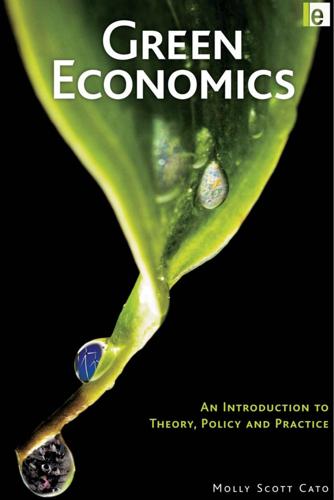
Green Economics: An Introduction to Theory, Policy and Practice
by
Molly Scott Cato
Published 16 Dec 2008
For this reason, many green economists support the creation of ‘materials flow’ accounting systems to measure and track the increase or decrease of energy and materials flowing through an economy. GDP only measures monetary values and flows, whereas from a sustainability point of view we need both to measure the actual ecological and carbon footprint of our economic activity and to keep a measure of actual physical assets and resources, not just their monetary value. Inequality. Even if national income accounts measured the right things, they would still be inadequate in terms of measuring human welfare, since they give no idea of how the goods produced are shared out.

Palaces for the People: How Social Infrastructure Can Help Fight Inequality, Polarization, and the Decline of Civic Life
by
Eric Klinenberg
Published 10 Sep 2018
It currently ranks fifth in the per capita population that cycles to work, and it promises to move further up the list once it launches its bike-share program. If political officials need evidence that social infrastructure can entice people out of their cars and into transit options that reduce our carbon footprint and curb global warming, New Orleans is a fine place to look. The Lafitte Greenway is a modest project, with an initial budget of $9 million, but it has already expanded to incorporate new playgrounds, dog runs, community gardens, and athletic fields that branch off the pathway. Today, community groups in neighborhoods just beyond its reach are pushing to build new paths into the corridor.

New Dark Age: Technology and the End of the Future
by
James Bridle
Published 18 Jun 2018
Computation is both a victim of and a contributor to climate change. As of 2015, the world’s data centres, where exabytes of digital information are stored and processed, consumed about 3 per cent of the world’s electricity – and accounted for 2 per cent of total global emissions. This is about the same carbon footprint as the airline industry. The 416.2 terawatt hours of electricity consumed by global data centres in 2015 exceeded that of the whole United Kingdom, at 300 terawatt hours.18 This consumption is projected to escalate massively, as a result of both the growth of digital infrastructure and the positive feedback from rising global temperatures.

Built on a Lie: The Rise and Fall of Neil Woodford and the Fate of Middle England’s Money
by
Owen Walker
Published 4 Mar 2021
The new boiler used sustainably sourced wood pellets, and to accommodate the regular lorry-loads of fuel deliveries, Woodford rebuilt a driveway behind a row of trees so it would be obscured from the main house. In their planning application to the council, the couple stressed they ‘wished to make use of renewable technology to reduce their dependence on fossil fuels, and their carbon footprint’. (Woodford’s green conscience did not extend to his driving habits. He built a new garage to house his Porsche, Ferrari, Audi and Land Rover.) The main reason for the move to near the village of Cherington, however, was to indulge in Madelaine’s passion for horse riding, a pastime with which Woodford had become equally smitten.

The Capitalist Manifesto
by
Johan Norberg
Published 14 Jun 2023
Berrens, ‘Further investigation of Environmental Kuznets Curve studies using meta-analysis’, International Journal of Ecological Economics and Statistics, no.S11, vol.22, 2011. 28. Thomas van Goethem & Jan Luiten van Zanden, ‘Biodiversity trends in a historical perspective’ How Was Life? Volume II: New Perspectives on Well-Being and Global Inequality Since 1820, OECD, 2021. 29. Hannah Ritchie, ‘You want to reduce the carbon footprint of your food? Focus on what you eat, not whether your food is local’, Our World in Data, 24 January 2020. 30. Vilma Sandström, Hugo Valin, Tamás Krisztin, Petr Havlík, Mario Herrero, Thomas Kastner, ‘The role of trade in the greenhouse gas footprints of EU diets’, Global Food Security, vol.19, 2018.
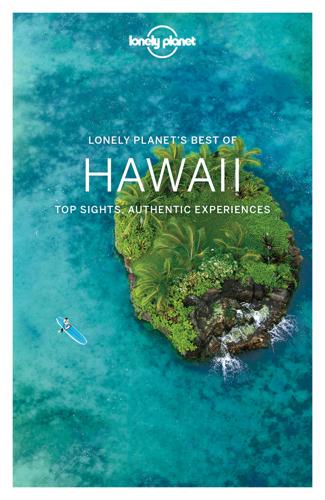
Lonely Planet Best of Hawaii
by
Lonely Planet
Many websites offer ‘carbon calculators’ that allow people to estimate the carbon emissions generated by their journey and, for those who wish to do so, to offset the impact of the greenhouse gases emitted with contributions to portfolios of climate-friendly initiatives throughout the world. Lonely Planet offsets the carbon footprint of all staff and author travel. P Getting Around Most interisland travel is by plane, while traveling around individual islands usually requires renting a car. Air Interisland flights are short, frequent and surprisingly expensive. Hawaii’s airports handling most interisland air traffic are Honolulu (Oʻahu), Kahului (Maui), Kona and Hilo on Hawaiʻi (Big Island) and Lihuʻe (Kauaʻi).

The Thinking Machine: Jensen Huang, Nvidia, and the World's Most Coveted Microchip
by
Stephen Witt
Published 8 Apr 2025
His perch on the ridge gave him a commanding view of the Bay—gazing out toward the setting sun over his fenced-in herd of cattle, he could, on a clear day, make out all five of the major bridges that spanned the glittering water. He purchased a Gulfstream jet to shuttle from California to RPI and back; to offset his carbon footprint, he invested in experimental green technology and moved his ranch off the grid. He suffered through a messy and unpleasant divorce, then began to look for a formula that might, in his words, “repair the earth.” In a series of chunk transactions between 2004 and 2006, Priem sold all his Nvidia shares.

Secrets of the Sprakkar
by
Eliza Reid
Published 15 Jul 2021
The nearest community, the village of Flúdir, attracts day-trippers from the capital for its spicy Ethiopian restaurant and is known throughout the country for its extensive greenhouses that use geothermal energy to grow a disproportionate amount of Iceland’s fresh vegetables, all with virtually zero carbon footprint. Gudbjörg Björgvinsdóttir, the seventy-five-year-old former chair of the women’s association, known as Bubba to one and all, invited me for coffee at her rural home near Flúdir. Two other members of the association were there and two from a neighboring group, the Women’s Association of Gnúpverja, which was founded in 1929 and now has thirty-five members.
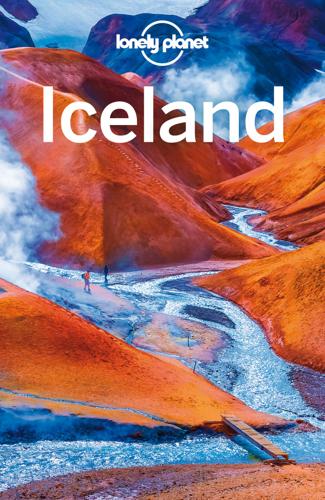
Lonely Planet Iceland
by
Lonely Planet
Alcoa, an American aluminium-smelting company, was responsible for one of Iceland’s most controversial schemes: the Kárahnjúkar hydroelectric station in East Iceland, completed in 2009, was the biggest construction project in Iceland’s history. It created a network of dams and tunnels, a vast reservoir, a power station and miles of power lines to supply electricity to a fjord-side smelter 80km away in Reyðarfjörður. Alcoa makes much of its efforts to reduce its carbon footprint – and it's true that the aluminium it manufactures in Iceland uses cheap, green energy from renewable sources (this was the whole point of closing two US smelters and setting up here). What can't be denied, however, is that the mega-dam built specifically to power the Alcoa plant has devastated the landscape.
…
Many websites offer ‘carbon calculators’ that allow people to estimate the carbon emissions generated by their journey and, for those who wish to do so, to offset the impact of the greenhouse gases emitted with contributions to portfolios of climate-friendly initiatives throughout the world. Lonely Planet offsets the carbon footprint of all staff and author travel. Air Airports & Airlines Keflavík International Airport Iceland’s main international airport is 48km southwest of Reykjavík. Reykjavík Domestic Airport Internal flights and those to Greenland and the Faroes use this small airport in central Reykjavík.

Oil Panic and the Global Crisis: Predictions and Myths
by
Steven M. Gorelick
Published 9 Dec 2009
The growth of developing nations helped by inexpensive oil would not be an economic sacrifice to the US if the cost of using alternative fuels were competitive with the cost of oil. Unfortunately, the direct cost of current alternatives has been too high. What about reducing carbon emissions? The emission of carbon dioxide into the atmosphere is a global problem that is immune to where the carbon is released. Suppose the US reduced its oil consumption and its national carbon footprint. Once again, if oil that is no longer demanded by the US is consumed by developing nations, their loading of carbon to the atmosphere would grow as America’s declined. To reduce global carbon emissions, all nations must participate; merely shifting emissions from one place to another would have no global benefit.
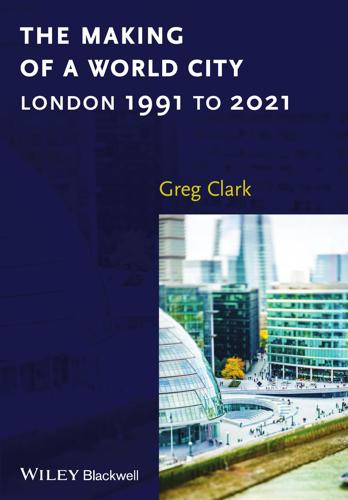
The Making of a World City: London 1991 to 2021
by
Greg Clark
Published 31 Dec 2014
Comprehensive benchmarks now routinely strive to incorporate pollution and climate change mitigation in comparative assessments. Cities such as Hong Kong, Beijing, Los Angeles, Abu Dhabi and Istanbul have all struggled in this field due to car dependency and high carbon emissions. Initiatives (or lack thereof) in the areas of heritage, pollution, sustainable development and carbon footprint are increasingly visible, and will affect the living choices of more knowledge workers and location decisions of NGOs and other public institutions. The financial crisis has also accelerated a new debate on the prospects of smart cities. New partnerships and projects with multinational technology firms offer world cities the opportunity to make urban transport, security, telecommunications, banking and energy systems more joined-up and interoperable.
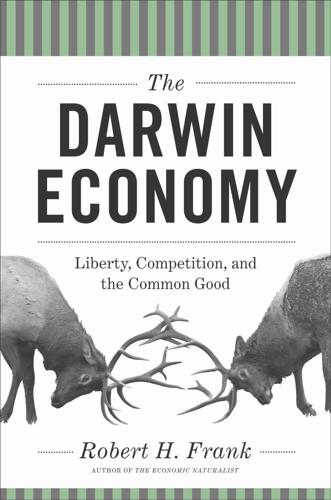
The Darwin Economy: Liberty, Competition, and the Common Good
by
Robert H. Frank
Published 3 Sep 2011
The Intergovernmental Panel on Climate Change estimated that a tax of $80/ton on carbon emissions would be needed by 2030 to achieve climate stability by 2100.5 A tax that high would raise the price of gasoline by $0.70 a gallon. This figure was determined, however, before the arrival of the more pessimistic MIT estimates. So let’s assume a tax of $300 a ton, just to be safe. Under such a tax, the prices of goods would rise in proportion to their carbon footprints—in the case of gasoline, for example, by roughly $2.60 a gallon. As we saw in 2008, a sudden price increase of that magnitude could indeed be painful. But if phased in gradually, it would cause much less harm. Facing steadily increasing fuel prices, for example, manufacturers would TAXING HARMFUL ACTIVITIES 181 scramble to develop more efficient vehicles.

The Entrepreneurial State: Debunking Public vs. Private Sector Myths
by
Mariana Mazzucato
Published 1 Jan 2011
Global new investment in renewable energy (US$, billions) Source: Frankfurt School of Finance and Management (2012). Yet, failure of some governments to provide the ‘vision’ and to really ‘push’ clean technology is having an impact on the amount of investment occurring. Countries that pursue a ‘patchy’ policy towards clean technology will not stimulate enough investment to alter their ‘carbon footprints’, nor should they expect to host the clean technology leaders of the future. An example of a country going for a ‘big push’ is China; Germany is also a first mover among European countries. The US has shown contradictory trends, with the State making early and substantive investments in green technologies.

The 100-Year Life: Living and Working in an Age of Longevity
by
Lynda Gratton
and
Andrew Scott
Published 1 Jun 2016
It is possible that the idea of the ‘office’ will come to look ridiculously traditional and expensive. Indeed, when executives at Unilever measured where and when carbon dioxide was produced, they discovered that expecting people to commute into large, central offices created an extraordinarily large carbon footprint. This and other drivers will move more people to work from home, in local hubs or in shared community centres. In part this will be supported by lower-cost technologies such as holograms and virtual meetings. It will also become the norm, as managers become more skilled at managing virtual workers and more encouraging of home working.
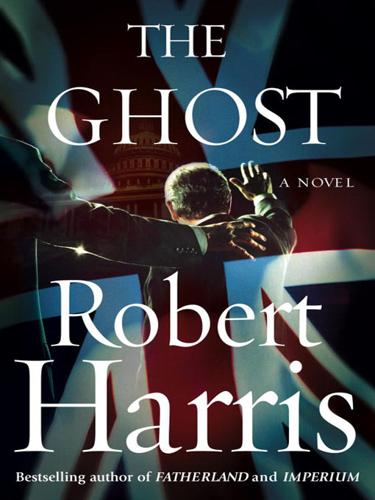
The Ghost
by
Robert Harris
Published 22 Oct 2007
“I suppose he has a private jet,” I said in an attempt at knowingness. “Of course he has a private jet.” She gave me a look that made me feel like a hick who’d just used his fish knife to butter his roll. Of course he has a private jet. You don’t own a thirty-million-dollar house and travel to it by bus. The man must have a carbon footprint the size of a yeti’s. I realized then that just about everybody the Langs knew these days had a private jet. Indeed, here came Lang himself, in a corporate Gulfstream, dropping out of the darkening sky and skimming in low over the gloomy pines. Jeff put his foot down and a minute later we pulled up outside the little terminal.

Ecovillages: Lessons for Sustainable Community
by
Karen T. Litfin
Published 16 Dec 2013
Respecting the circle’s continuity, we might ask how our actions nurture the regenerative capacity of life itself. In a global era, our circle of influence spans the circumference of Earth, which means that we must widen our circles of vision and compassion commensurately. 1 A related concept, the carbon footprint, measures the impact of an activity or lifestyle on global warming. While the ecological footprint is more comprehensive, the two are correlated because fossil fuels, the primary cause of global warming, also drive the global economy. 2 See http://gaiaeducation.org. The curriculum is taught at ecovillages around the world as well as through the Open University of Catalonia in Spain. 3 Because natural building is so labor-intensive, it can be a great way to establish skills and, at the same time, a sense of community.
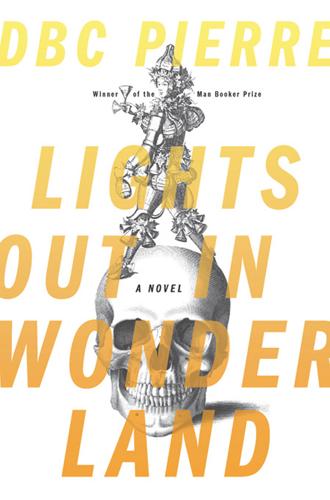
Lights Out in Wonderland
by
Dbc Pierre
Published 1 Sep 2010
Now I live outside stupors and delusions, looking in like a ghost from limbo. The clatter and chug of the taxi, its roll and pitch, its gliding blackness in the night make it a phaeton, a hearse led by a blustering team in black plumes, frisking and snorting a path through unknowing mourners. Goodbye, then, carbon footprint, farewell the Royal Mail, adieu lager louts, fish & chips, the Beckhams. Cheerio my dear, beloved place. Smaller lives than yours may come and go, and the seasons within them may flourish and wither. But this night like a moonlit churchyard—this is my night. 7 My hair crests over my head like the dying wave of capitalism, molded by a corner of aircraft seat.
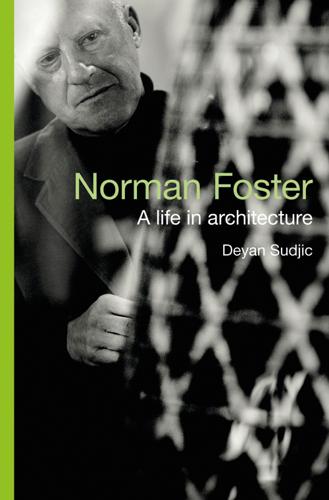
Norman Foster: A Life in Architecture
by
Deyan Sudjic
Published 1 Sep 2010
But his approach to politics is more concerned with the tactics of building in a complex world. At a philosophical scale, he has the utopian streak inherited from Buckminster Fuller, complete with all the attendant inherent paradoxes. He is patently sincere about the green imperative, but he nevertheless leaves a conspicuous carbon footprint as he constantly criss-crosses the globe, underwritten by a personal carbon offset scheme. In his House of Lords speech he described design as: a core, primary activity because anything in any part of the world that we inhabit has to be made. But before it is made it has to be designed. There are no exceptions, whether it is on the scale of a city, the infrastructure of its buildings, the equipment in them, the infrastructure of streets and public spaces, pavements, the paving slabs, the door handles and even the invisible digital electronic world – it all has to be designed.
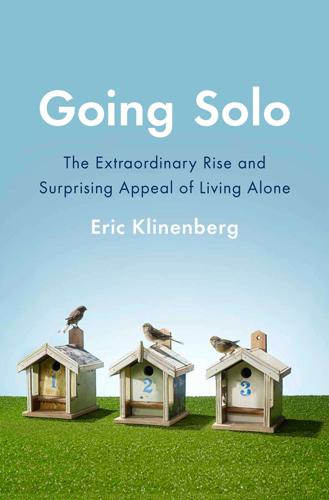
Going Solo: The Extraordinary Rise and Surprising Appeal of Living Alone
by
Eric Klinenberg
Published 1 Jan 2012
For although, as one British study recently reported, singletons tend to consume more land, energy, and household goods than those who live with others, these statistics are misleading.15 After all, a family of four with two cars, long commutes, and a 2,500-square-foot house in the suburbs will leave a greater carbon footprint than four individual city dwellers who live in compact apartments and use public transportation (or, better, walk) to reach work. That’s why Manhattan, the capital of America’s singleton society, is also the nation’s greenest city.16 Manhattan is not the only urban center that’s begun adapting to the new social environment.

Everything for Everyone: The Radical Tradition That Is Shaping the Next Economy
by
Nathan Schneider
Published 10 Sep 2018
“When the make-up of your management staff or your board of directors isn’t fully reflecting the make-up of your communities,” Wynn told me, “there could easily be a disconnect between what the constituents want and need, and what decisions the board and the management team will make.” Without member pressure, for instance, managers may default to simply trying to sell more power, rather than helping members reduce their consumption, their costs, and their carbon footprints.10 The successful organizing at Roanoke was more an exception than the rule. During the 1980s and 1990s, the Southern Regional Council mounted the Co-op Democracy and Development Project, a series of campaigns in co-op districts across the South, including some of the same ones that One Voice has been targeting more recently.
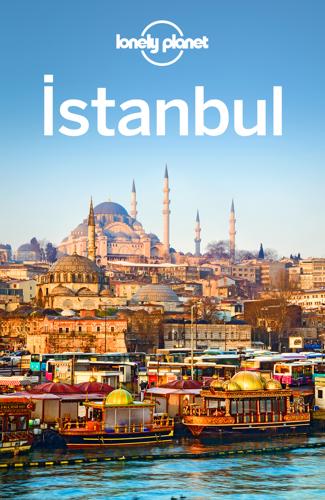
Istanbul Travel Guide
by
Lonely Planet
Many websites offer ‘carbon calculators’ that allow people to estimate the carbon emissions generated by their journey and, for those who wish to do so, to offset the impact of the greenhouse gases emitted with contributions to portfolios of climate-friendly initiatives throughout the world. Lonely Planet offsets the carbon footprint of all staff and author travel. Air Atatürk International Airport The city's main airport, Atatürk International Airport (IST, Atatürk Havalımanı; GOOGLE MAP ; %212-463 3000; www.ataturkairport.com), is located in Yeşilköy, 23km west of Sultanahmet. The international terminal (Dış Hatlar) and domestic terminal (İç Hatlar) operate at or close to capacity, which has prompted the Turkish Government to announce construction of a new, much larger, airport 50km north of the city centre.

Insane Mode: How Elon Musk's Tesla Sparked an Electric Revolution to End the Age of Oil
by
Hamish McKenzie
Published 30 Sep 2017
Electric cars, on the other hand, need charging stations for long trips, and they are still in relatively short supply. Cold-weather performance: Electric cars’ batteries commonly lose charge in cold environments, further limiting their range. They still pollute: If electric cars draw their power from power plants that are fueled by coal, their ultimate carbon footprint is comparable to that of the most efficient conventional cars. They’re not profitable: Car companies have struggled to make money from selling electric cars, in part because of consumer resistance but also because of high battery costs, the lack of a mature supply chain, and the fact that their billions of dollars of manufacturing capabilities are almost entirely oriented toward the production of cars based on a different propulsion technology—the internal combustion engine.

The Water Will Come: Rising Seas, Sinking Cities, and the Remaking of the Civilized World
by
Jeff Goodell
Published 23 Oct 2017
I met with him on Earth Day in 2016, just after he made a brief speech at the United Nations to celebrate the signing of the Paris climate agreement. In his speech, he rightfully touted the city’s progress in improving building efficiency and purchasing more renewable power, among other CO2-reduction measures. De Blasio deserves a lot of credit for pushing hard to shrink the carbon footprint of New York, and he often speaks convincingly about the implications of climate change for the poor and working class, but I wondered if maybe it was time for some strategic thinking about the long-term survival of the city too. Stuff like: Was it time to consider moving the city’s airports to higher ground?

Ten Technologies to Save the Planet: Energy Options for a Low-Carbon Future
by
Chris Goodall
Published 1 Jan 2010
Since methane is a worse greenhouse gas than carbon dioxide, there are clear climate change benefits to using waste food in this way.) The carbon savings from using district heating in Denmark are said to be substantial. An independent trust that works to improve energy efficiency says that the typical Danish district heating scheme produces heat with only a quarter of the carbon footprint of heating a home by electricity. A homeowner moving from electricity to district heating will generally consume more heat because it is cheaper. But the increase in consumption is typically only about 15 percent, so it wipes out only a small fraction of the carbon savings. On the other side of the Atlantic, Canadian company Nexterra is pushing gasification technology for large-scale plants designed to burn forest wastes.
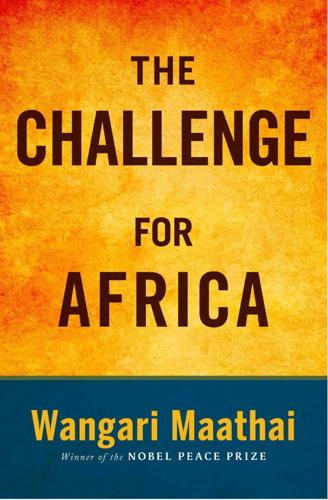
The Challenge for Africa
by
Wangari Maathai
Published 6 Apr 2009
Mining creates waste in the form of slag heaps and rock piles, as well as dust from detonation, the silting of rivers, and toxins from chemical leaching and smelting. Once the mining has been finished, the areas will need to be reseeded, recon-toured, and fenced in so that chemicals do not leak and there are no hidden pits or shafts. While hydropower does not add to the carbon footprint, there are environmental impacts of building dams, including habitat destruction, displacement of local populations, deforestation, and soil erosion. Here, the principles of sustainability, accountability, and equity need to be made real and tangible. In a manner that is likely only to become more vivid as the decades pass, sustainability entails recognizing that the destruction of the Congo's forests has global implications—not simply in further destabilization of weather patterns that may mean reduced harvests in the American Midwest and increased desertification in central Asia, or the increase of carbon dioxide in the atmosphere; but also perhaps in the loss of critical medicines and minerals that may allow for human development in the future, both in Africa and beyond.

The Wood Age: How One Material Shaped the Whole of Human History
by
Roland Ennos
Published 18 Feb 2021
R. Ennos, R. Crompton, and S. K. S. Thorpe. 2017. “Human Bipedal Instability in Tree Canopy Environments Is Reduced by ‘Light Touch’ Fingertip Support.” Scientific Reports 7:1135. Jones, C. 2019. “Ice Database of Embodied Energy and Carbon.” http://www.circularecology.com/embodied-energy-and-carbon-footprint-database.html#.XN_8adhrzIU. Jørgensen, S. 1985. Tree-Felling with Original Neolithic Flint Axes in Draved Wood. Report on the Experiments in 1952–1954. Copenhagen: National Museum of Denmark. Jouffroy-Babicot, I., B. Vanniere, E. Gauthier, H. Richard, F. Monna, and C. Petit. 2013. “7000 Years of Vegetation History and Land-Use Changes in the Morvan Mountains (France): A Regional Synthesis.”

Green Swans: The Coming Boom in Regenerative Capitalism
by
John Elkington
Published 6 Apr 2020
One option is tiny Costa Rica, determined to become the world’s first carbon neutral country.24 The fly in the ointment, as The New York Times cautioned, is that things might go seriously awry if the rest of the world went carbon neutral too quickly—since the country’s economy is highly dependent on tourists flying in, trailing huge carbon footprints behind them. One thing is clear, meanwhile: Whether we focus on citizens, corporations, cities, or countries, it is time for us all to become activists ourselves—or to actively support those with the courage to do so. Chris Davis, chief sustainability officer at The Body Shop International, insisted on Green Swan Day that business leaders must now become activists, however uncomfortable they may find it.
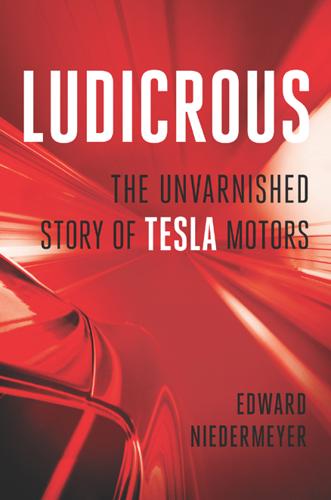
Ludicrous: The Unvarnished Story of Tesla Motors
by
Edward Niedermeyer
Published 14 Sep 2019
This striking object was a Supercharger, Musk had explained, and it was Tesla’s answer to the biggest challenges facing electric cars. Common arguments against EVs are that they tie drivers to a much shorter range than conventional vehicles, and that driving one doesn’t actually cut down your carbon footprint—because an electric car has a figurative “long tailpipe” that shifts the source of emissions from the vehicle itself to the power plant. Not only would Superchargers eliminate “range anxiety” by providing a network of convenient fast refueling stations, it would also eliminate the criticism that coal-fired power means electric cars simply have that “long tailpipe,” providing 100 percent solar power thanks to panels from Musk’s firm SolarCity.

A History of the World in Seven Cheap Things: A Guide to Capitalism, Nature, and the Future of the Planet
by
Raj Patel
and
Jason W. Moore
Published 16 Oct 2017
That’s a strategy of Cheap Food. Chickens themselves are relatively minor contributors to climate change—they’ve only one stomach each and don’t burp out methane like cows do—but they’re bred in large lots that use a great deal of fuel to keep warm. This is the biggest contributor to the US poultry industry’s carbon footprint.17 You can’t have low-cost chicken without abundant propane: Cheap Energy. There is some risk in the commercial sale of these processed birds, but through franchising and subsidies, everything from easy financial and physical access to the land on which the soy feed for chickens is grown—mainly in China, Brazil, and the United States18—to small business loans, that risk is mitigated through public expense for private profit.
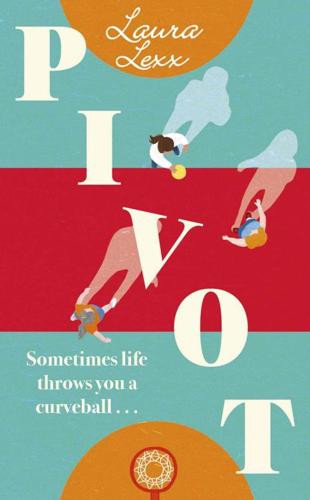
Pivot: A Story of Dropping the Ball, Picking It Up Again, and Turning Things Around.
by
Laura Lexx
Published 22 Jun 2022
Her eco-conscious younger son was off saving the world one beetle at a time. He’d not been on a plane since she and Steve had been in charge of the travel arrangements, pre-whichever wide-eyed girlfriend it was that had made him swear never to do it again. The girlfriend was long gone but his steadfast romance with the planet and a minimal carbon footprint remained. She’d been quite overwhelmed when he’d offered to fly in and look after her. He’d missed his grandfather’s funeral rather than get on a plane; she must have sounded awful on the phone. ‘How is he? All right?’ Leon and Michael weren’t particularly close: brotherly affection at Christmas but thus far, very different people.
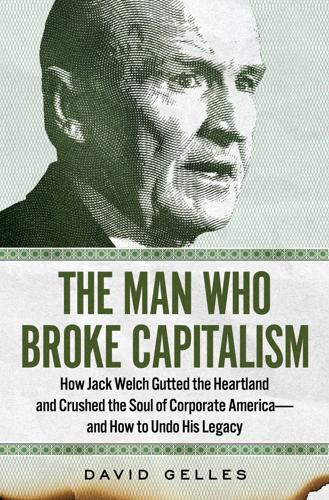
The Man Who Broke Capitalism: How Jack Welch Gutted the Heartland and Crushed the Soul of Corporate America—and How to Undo His Legacy
by
David Gelles
Published 30 May 2022
Polman noted that the former GE chief was only able to post such stellar returns thanks to his accounting games. “If he was that wonderful, he should have been in Las Vegas,” he said. In the eyes of Polman, Welch was little more than a gambler. Polman then crafted an ambitious agenda to reduce Unilever’s carbon footprint, dampen the negative impacts of its work around the globe, and find areas where it could make a positive difference in people’s lives. Polman got Unilever to reduce its use of palm oil, which devastates rain forests. He transitioned to organic crops, even for American cupboard staples like Hellmann’s mayonnaise.

Fodor's Big Island of Hawaii
by
Fodor’s Travel Guides
Published 1 Aug 2022
There are also options in which you land, take a hike through rugged rain forests, or enjoy a guided tour in Hawaii Volcanoes National Park with experts Keawe Adventures. lThe only helicopter company in Hawaii certified by the Hawaii Ecotour Association, Paradise offers the option to offset your tour’s carbon footprint by having a tree planted in Hawaii for each ride you take. EKailua-Kona P808/969–7392, 866/876–7422 wwww.paradisecopters.com AFrom $399. Safari Helicopters AIR EXCURSIONS | Departing from the Hilo airport, Safari offers a 55-minute tour that includes Hawaii Volcanoes National Park plus the Hilo-area waterfalls.
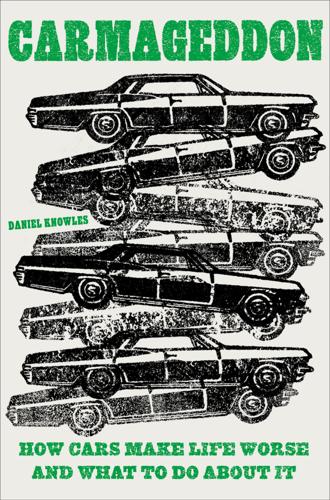
Carmageddon: How Cars Make Life Worse and What to Do About It
by
Daniel Knowles
Published 27 Mar 2023
Does anyone really want to live in a city where pedestrians are advised to wear a high visibility vest to cross the street, as they are in Texas, or to walk along strictly in single file, as they are in Utah? Ironically, we probably need to stop blaming drivers for car accidents. It is a little like the climate-change debate. For years, big oil and gas firms have tried to frame it in terms of individuals and their carbon footprints. But they did that precisely because they knew that individuals will struggle to reduce their own use of fossil fuels if society does not change to make it easier. The car industry is the same. It wants us to blame bad driving for crashes. But we will not reduce the level of traffic violence by just hoping that individual drivers can be persuaded to behave better.

Stuff: Compulsive Hoarding and the Meaning of Things
by
Gail Steketee
and
Randy Frost
Published 19 Apr 2010
The voluntary simplicity movement was born out of the concern that lives full of consumption were losing their meaning. The movement promotes a lifestyle minimizing consumption and emphasizing the enjoyment of life without a large number of possessions. It is consistent with the growing environmental movement to reduce each person's carbon footprint, or impact on the planet. Materialism produces a large footprint and fosters the tendency to replace perfectly good items with brand-new ones. Much of the stuff we collect is readily thrown away and replaced when a new model comes out or styles change. Many barely used items end up in landfills across the country.
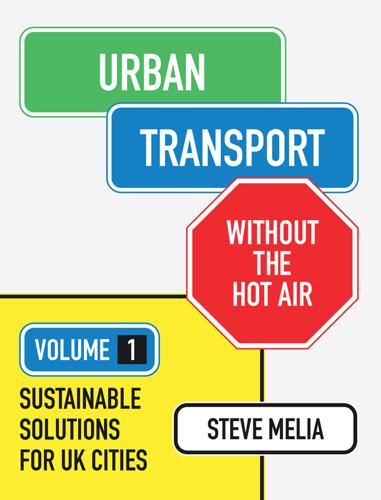
Urban Transport Without the Hot Air, Volume 1
by
Steve Melia
In Oxford, a low emission zone is expected to reduce but not to solve the problem (and unfortunately, low emission buses consume more fuel and emit more carbon than ordinary buses). Figure 5.3 Most air pollution in Oxford city centre is caused by buses Like the petrol-fuelled car, we are probably stuck with the diesel bus for quite a few years to come. Among many shortcomings, its average carbon footprint per person is similar to that of a small car servicing only 1 person, based on average occupancy levels, which are currently around 16 passengers in London and 9 elsewhere. Filling those empty seats is an obvious goal but not easy to achieve. The pattern of demand for bus use is highly variable, and unlike (some) trains, the size of a bus cannot be varied in response to fluctuating demand.
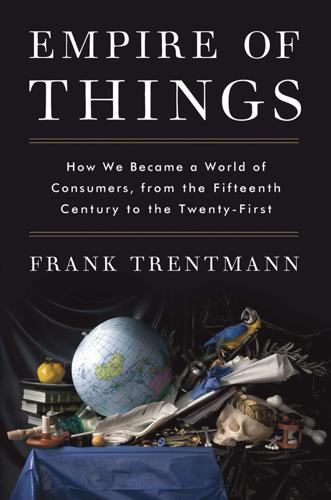
Empire of Things: How We Became a World of Consumers, From the Fifteenth Century to the Twenty-First
by
Frank Trentmann
Published 1 Dec 2015
For the internet of things to displace the empire of things, it would need to replace the existing culture of use with a radically new one. This is the hope many attach to a sharing and leasing economy. The internet, in this view, will not only bring greater efficiency but wean people off ownership and socialize them into a sharing lifestyle characterized by collaboration, long product-cycles, maintenance and reuse and a low carbon footprint. So far, the sharing economy has been limited to very specific sectors, especially car travel and accommodation, while leasing mainly takes place between businesses.17 We need to have a sense of proportion. In 2014, 92,000 vehicles belonged to carsharing programmes – in the entire world. By comparison, 2.5 million new cars were registered in the United Kingdom alone that year, the fourth largest figure on record.
…
PricewaterhouseCoopers, Significant and Ecofys, ‘Collection of Statistical Information on Green Public Procurement in the EU’ (2009), at http://ec.europa.eu/environment/gpp/pdf/statistical_information.pdf. NHS Sustainable Development Unit, ‘England Carbon Emissions’ (Jan. 2009), 4, at: http://www.sdu.nhs.uk/documents/publications/1232983829_VbmQ_nhs_england_carbon_emissions_carbon_footprint_mode.pdf. 52. P. A. Samuelson, ‘The Pure Theory of Public Expenditure’, in: Review of Economics and Statistics 36, no. 4, 1954: 387–9. 53. Eurostat, ‘General Government Expenditure Trends 2005–10: EU Countries Compared’, in: Statistics in Focus 42/2011. 54. Stiglitz, Sen & Fitoussi, ‘Measurement of Economic Performance and Social Progress’, esp. 30–2, 89–90. 55.
…
P. 578 thrift 57, 117, 142, 239, 264, 277–8, 287, 365, 368, 406 see also austerity; and DIY 261; excessive 487; and the First World War 256, 277–8; and Keynes 285; and the middle class 412, 416; and pocket money 488; and savings 417–19; waste, recycling and 629, 642–3 ‘throwaway society’ 622–75 Tianjin (Tientsin) 179 Tianqiao 190, 191, 685 Tietz (department store) 193, 199 Tigert, John 264 timber 23 time: devoted to pleasant/unpleasant activities during a day 453–5, 454; discretionary 451–2; inequalities of income and 449; leisure time 301, 444–50, 446, 447, 451–2, 460, 469; national time-use surveys 454, 457–8, 458–9; and pace of life 441–3, 470, 471; polarization by class 450–51, 468–9; poverty 403, 441, 443, 451, 460, 469, 477, 483; ‘quality time’ 443, 469–70, 479; rhythm of 474–5; social compact in regard to 481; and technology 465; time saving appliances see domestic appliances and technologies; time saving promises 255–6, 441, 448; working hours see labour and work: working hours Times, The 637 tin cans 216, 638–9, 647 toasters 180, 257, 280, 329, 383, 657 tobacco 21, 26, 53, 58, 65, 77, 78, 88, 141, 153, 168, 203 see also cigarettes; and France 162; in Japan 359; taxes 162; from vending machines 278 Tobin, John 129 Tobler, Theodor 172 Tocqueville, Alexis de 438, 442, 611 toilets 176, 178, 179, 180, 184, 186, 189, 370 Tokyo 165, 359, 383, 536, 685; Chifuren 393; Edo 176, 181, 358, 472; Nakamuraya restaurant 543; Roppongi army base 378; Yutaka Club 513 Tollentina, Livia 34 Tönnies, Ferdinand 581 tools, as consumer goods 261 toothpaste 299, 358, 375, 381 Toronto 203, 270 Total Material Requirement (TMR) 665, 668 totalitarianism 11, 273, 279, 289–96, 314, 680 see also communism; fascism; Nazism; Stalinism; ‘consumerism’ as 5, 7 tourism 291, 292, 327, 511–13, 534, 602–3 see also travel Townsend, Peter 510 toys 30, 59, 138, 342, 385, 485, 486, 487, 488–9, 494, 616; and cognitive development 231; dolls 485, 488, 491, 618; and recycled plastic 635; second-hand 656 Trabant car 331, 335, 337 trade see also commerce: African 129–31; barriers 120, 136, 159, 160, 298, 572, 580; barter 46; branding see branding; British empire and American trade 164–5; cards 192; Chinese 23, 24–6, 44–7, 88, 92; contraband see smuggling; currents 24–5; Dutch 54–5; expansion of global trade, 1500–1800 23–4; fair trade see fair trade; fairs 307, 328; free trade see free trade; and the general good 96; global exchange and the world of goods 23–8, 162; global trading system 162; growth of markets and 23–4, 25, 53, 57, 92–3, 122, 131, 327, 682–3; haggling 190, 204, 209, 210; hawkers 205; herring trade 26; justice 573–7 see also fair trade; and labour specialization/division 24, 54; liberalization 146, 161, 162–3 see also free trade; luxury trades 28, 29, 537 see also silk; spices; monopolies see monopolies; ocean trade 23, 24–6, 88, 120, 124, 167, 357, 683; palm-oil 130; pedlars 203, 205, 359; posts 25; price controls 27; and Renaissance morals 35; retail see retail trade; silver as currency of 25–6; smuggling see smuggling; and sociability 96; spurred by demand 92; street sellers 204; structural view of global trade 573; trans-regional 23; transatlantic see transatlantic consumption and trade; tribute see tribute; vulgarity of shopkeeping 35; wars 26; world merchandise trade in 21st century 683 trade unions 149, 278, 306, 307, 343, 450, 457, 529, 530, 532, 534; Christian unionists 275; and holidays 533, 534; Nazi 290–91; and Sunday 477, 479, 480; and the Taft-Harley Act (1947) 529 trademarks 47, 486 see also branding Traidcraft 577 transatlantic consumption and trade 23, 26–8, 38, 76, 81, 82, 91, 92–3, 122, 128; slave trade see slavery/slaves transfer printing 89 transmigration of souls 105 transport: and the city 175; environmental damage from transportation 683; EU government expenditure on 538; networks/infrastructures 190, 670, 681; railways 609; and ‘smart’ technologies 686 Trauberg, Leonid 292 travel 282, 301, 511–12 see also tourism; and airbnb 655; carbon footprint 675; charter flights 301, 533; as collective endeavour 528–9; commuters and travel to work 14, 200, 340, 454, 457, 685, 686; on company transport 528–9; culture 292; and the elderly 509, 511–15; and the flow of foreign tastes 602–3; in France for shopping, eating and hobbies 685; and ICT 687; for shopping in France 685; Workers Travel Association 533–4 tribute 24, 44, 79, 123, 131, 138–9; tax 131 Trinidad 582 tropical goods 162–3 see also coffee; spices; sugar; tea; colonialism and tropical production 78–9, 80, 90, 91, 162–3 Trotsky, Leon 277, 288 Troy, Patrick 670 Truman, Harry S. 504 Tschirnhaus, Ehrenfried von 88 Tsirk (Circus) 293 Tucson 662 Tupperware parties 341 Turin, ‘Salon of Taste’ 470 Turkey 12, 78, 618, 619, 620, 644 Turkish carpets 23, 30, 32, 96 Turlington, Robert 69 Tuscany 29, 30 Twitter 470 UBS 449 Uganda 592, 594 Ulbricht, Walter 328 unemployment 12, 261, 279–80, 344, 407, 429, 431, 614; and bankruptcy 431; benefits 433, 508, 538; mass 287; and waste 634 Union des Consommateurs de Gaz Parisien 183 Union of Shop, Distributive and Allied Workers (USDAW) 480 United African Company 133 United Kingdom see Britain and the United Kingdom United Nations: consumer protection 552–3; Food and Agriculture Organization 573 United States of America: advertising 318, 318, 319, 494–5; American Civil War 122, 638; the American dream 237–8, 283, 340; American remittances to Britain 590; American way of life 9, 543, 679 see also Americanization; Americanization see Americanization; amusement parks 219; anti-Puritanism 450; armed forces 543; auto-repair shops 659; bankruptcy 431–2, 433; Bill of Rights (1962) 387; British empire and American trade 164–5; buyers’ leagues 156; cars 279, 281, 428, 658; Catholic and Protestant teenage beliefs 613; child-centred marketing and advertising 485; children watching television 489; Children’s Charter (1929) 487; Chinese relations 128, 299; church attendance 608; churches offering social and community services 612; civil rights activism 324–5; and cocoa 164; and coffee 92, 165, 173, 566; Cold War see Cold War; and collecting 227; comfort trade-offs 61; communitysupported agriculture 580, 588; company-based recreation 525, 526, 527–8, 529–31; company services 524–5, 526, 527–8; computer sales 674; Consumer Product Safety Commission 553; consumer rights and protection 550–51, 552–3; as consumer society model 10, 273, 307; consumption and freedom in self-image of 289; cotton 67; credit 302, 409, 410–12, 414, 415, 423–4, 426, 428–9, 430, 433; debt, personal 426, 433; defence spending 542; Department of Commerce 319; department stores 199, 202, 205, 342, 424, 486; and the Depression 279, 280–83, 288; domestic technologies 180, 247, 250, 259–60; elderly people 498–9, 500–502, 503–5, 507, 508, 511–12, 514, 517; elite 228; energy sources, demands and consumption 325, 671–3; Environmental Protection Agency 662; European views of affluence as an American invasion 305–6; evangelical revival 608–9; export of consumer lifestyle 307; fair trade 562, 564, 566, 578–9; families and generational bonds 520, 521; families without bank accounts 432; farmers 203; Federal Housing Administration 286, 341, 413; Federal Reserve Board ‘Survey of Consumer Finances for 2007’ 430; Federal Trade Commission 414, 553; films made in 211, 307, 328, 347; and freedom of choice 5, 288–9, 553, 556–7; French views of American culture 305, 306; gated communities 392; and the global spread of material civilization 11; healthcare 556–7; Hollywood 211, 348, 351; and the home 223, 236, 239, 240, 242, 244, 244, 245, 246–7, 248, 259, 262–3, 428, 435; household debt 409, 425; immigrants 1860–1920 598; imperialism 322, 618–19; income share of the rich 436, 437; industrial revolution 161; industrial worker hours 216; inegalitarian luxury as norm 438; and Israel 619; Italian migrant diets in 598–9, 602; Jews and commercialization 615; Korean War 307, 504; laundry 673; leisure gap between Americans and Europeans 449–52, 456; leisure hours 446, 447, 452; luxury goods spending by millionaires 439; as a ‘market empire’ 307; marketing courses 319; Marshall Plan 272; material civilization 237; mega-churches 610, 611–12; Mexican immigrants 588–9, 590, 591; middle class 412, 431; misery U-index 454; motoring cult 544; municipal waste 622; national conference on the aging (1950–51) 504; National Recovery Administration 286; National School Lunch Program 543–4; New Deal 274, 285, 286–7, 288, 389, 413, 524, 529, 543; New York see New York; old people’s homes 505; Older American Act 501; organic food 581; outsourcing environmental burden 669; overindebtedness 431–2; playgrounds 219; poor children 490–91; post-war occupation of Japan 378; products in 2009 in-use, in storage and at end-of-life 663; public services 450; racism 136; radio 264, 266; rag trade 628; reading habits 354; Reagan administration 544, 553; recorded music industry 685; recycling 635, 640, 652; religion’s use of commercial culture in 607–13; religious beliefs 610, 613; rent 239, 242, 244; repair services 659; retirement for leisure reasons 450, 500; savings 305, 342, 418, 420, 421, 422; in-school advertising and branded give-aways 485; sewage 179; shopping 371; show house exhibitions abroad 307, 329; smartphones 464; social spending 304, 305, 539–40, 541, 542; spectator sport boom 463; standard of living 149, 150, 240, 280–83; state parks 544; storage 661–2, 663; students 281–2, 312, 495, 497, 650; subsidized mortgages 681; suburbanization/suburbs 229–30, 239, 243, 270, 305, 309, 310–11, 340–41, 398; sugar consumption 164; sumptuary laws 63; Sunday deregulation 478; supermarkets 348, 551; Surplus Marketing Administration 543; Taft-Harley Act (1947) 529; Tax Reform Bill (1986) 427; teenagers 312, 613; televangelism 610–11; television watching/sets 454, 455, 489, 673, 674; time spent on different activities 454; toys 489; trade justice and simple living 577; trade unions 450, 529, 530; transformation from scarcity to abundance 287; Vietnam War 322, 542; wages 147, 224, 247, 341–2, 411; war production (WWII) 529; ‘Washington Consensus’ 553; waste 627, 629, 631, 632, 634, 641, 642, 643, 648, 649 see also New York: waste in NYC; water consumption 177, 186–7; water meters 188; water rates 183–4; ‘work hard, play hard’ motto 468; working hours 443–4, 446, 447, 449–50; worries over decline of happiness 305; youth spending power 312 UNSER Land 580 upper classes 63, 192, 292, 347, 436, 466 see also aristocrats/gentry urban living see cities and urban life USDAW (Union of Shop, Distributive and Allied Workers) 480 utility networks 175–6, 180, 181, 183, 188–9, 220, 248, 670, 681 Utrecht 57, 212 Vacances et Santé 534 vacuum cleaners 179, 247, 248, 258, 265, 383, 661 Vacuumland 661 Valentino, Rudolph 282 value: and antiquity 4, 50, 53, 227; and choice 289; consumption/consumer as creator of 3, 151, 233; and cost 151; empire and the value of origin 169–71; exotic goods and the creation of 168–70; of place 161, 167–8, 169–71; power extending to 168–73; Puritan values 118; social benefits of consumption 102–3, 106–10, 118, 155–6; spiritual and material values out of balance 284; of thrift see thrift Vanoni, Ezio 308 Veblen, Thorstein 13, 15, 158, 228, 229, 230, 339, 435–6 Veere 57 velvet 58, 60 Velveta 291 vending machines 278, 370, 528 Venezuela 79, 80, 81, 162 Venice 22, 23, 28, 29, 30, 31, 32, 34, 36–7, 38, 86 vicarious consumption 228 vicarious leisure 228 vice 98–9 Victor 263 Victoria, Queen 140 Victorians 161, 169, 183, 184–5, 385, 406, 572; and immanentism 609; and leisure 216, 455; pawnshops 408 Vienna 72, 243, 275, 310, 549–50, 632 Vietnam 653, 670; War 322, 542 Vietor, J.
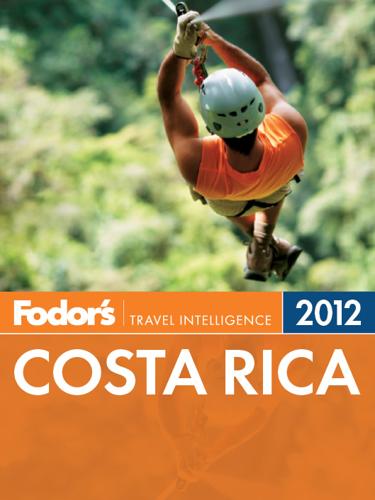
Fodor's Costa Rica 2012
by
Fodor's
Published 6 Oct 2011
The capital’s parks have one big downside: after dark, a small cast of unsavory characters replaces the throngs of day-trippers. Make a point to vacate city parks when the sun goes down. Good Practices Use public transportation whenever possible. Buses travel everywhere in San José and suburbs, and taxis are relatively easy to find. In addition to reducing your carbon footprint, it also saves you the hassle of driving and parking in an already congested city. Ask if your hotel recycles glass, plastic, and aluminum. A few lodgings—and, unfortunately, “few” is the operative term here—do. Take advantage if you can. Don’t litter—the city has a burdensome trash problem—although you’ll swear no one else here follows this advice.
…
The Rincón de San José uses only biodegradable products whenever possible, it also engages in an active recycling program. Even captured rainwater finds its way into your room’s toilet basin. Read full Hotel Rincón de San José review. Hotel Presidente Costa Rica’s first “carbon neutral” hotel has taken major steps to reduce its carbon footprint. What is left over is offset by a tree-planting project the lodging supports. The Presidente has organized a small but growing consortium of San José hotels to take up recycling. All in all, not bad for a place located smack-dab in the center of the city. Read full Hotel Presidente review. Pedestrians Only The government is forever announcing some grandiose plan to make San José more livable and a bit less of an urban hell.
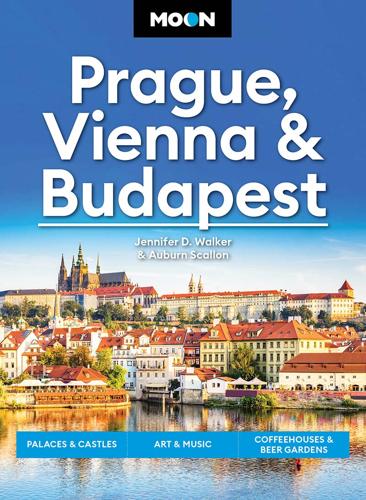
Moon Prague, Vienna & Budapest: Palaces & Castles, Art & Music, Coffeehouses & Beer Gardens
by
Jennifer D Walker
,
Auburn Scallon
and
Moon Travel Guides
Published 15 Oct 2024
-Sat. 6pm-11pm) could include smoked fish with pickled dandelion or gnocchi with forest mushrooms and thyme. On Sunday afternoons, steak, seafood, soups, and a tartare station are just a tiny portion of the brunch buffet (1,295 CZK, 12:30pm-3pm). A zero-waste ethos of pickling, fermentation, and composting plus an on-site herb garden and rooftop beehives help lower the carbon footprint. For a budget-friendly taste, try the weekday lunch specials (200-300 CZK) noon-3pm. Reservations are recommended. Kantýna Politických vězňů 5; www.kantyna.ambi.cz; Mon.-Fri. 11:30am-11pm, Sat.-Sun. 11:30am-10pm; 100-275 CZK; tram: Jindřišská or Václavské náměstí, metro: Hlavní nádraží The meats are freshly sliced, diced, and grilled by highly trained butchers in the stark, marble beauty of this former bank building.
…
Air Low-cost airlines like EasyJet (www.easyjet.com), WizzAir (www.wizzair.com), and Ryanair (www.ryanair.com) offer inexpensive flights to the main airports of Prague, Vienna, and Budapest from many European destinations. Ryanair also flies into Bratislava. It takes 2-2.5 hours to reach Central Europe from London by plane. Train If you’re feeling adventurous, hate flying, or want to reduce your carbon footprint, you also have the option of traveling to Central Europe by train. Traveling by train through Europe is a pleasure, as you get to see the landscape change as you ride. If you’re heading to Hungary or Austria from Western Europe, chances are you’re in for a ride through the Alps. You can plan your train itinerary on the website Bahn.de, which shows plenty of train timetables and connections to destinations like Prague, Vienna, and Budapest so you can prepare more efficiently.

The Great Disruption: Why the Climate Crisis Will Bring on the End of Shopping and the Birth of a New World
by
Paul Gilding
Published 28 Mar 2011
Another of Generation’s investments is in Ocado, a new supermarket model based in the United Kingdom. This is a potentially disruptive business that exemplifies what we discussed in chapters 11 and 12 about Schumpeter’s creative destruction. Based entirely online without any retail stores, Ocado claims their home delivery shopping service has a lower carbon footprint than walking to the supermarket! How’s that? Today’s “megamarts,” with so much retail display space, open refrigerators, and the like, have huge physical and environmental footprints. They are designed to encourage you to purchase more, not for operational efficiency. By basing their entire operation out of a centralized, automated warehouse, Ocado has completely eliminated this impact.
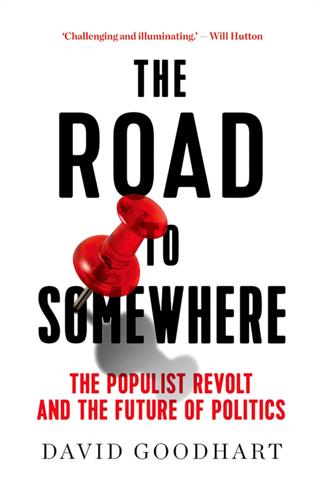
The Road to Somewhere: The Populist Revolt and the Future of Politics
by
David Goodhart
Published 7 Jan 2017
‘Thirty years ago the large British firms in every major town accepted the costs of apprenticeship and technical education as a kind of social overhead which they willingly paid; now it’s “can’t pay and won’t pay” from both small and large firms,’ according to the authors of ‘Rebalancing the Economy’, which casts a withering eye over the decline of manufacturing.29 This reduction in training can be partly blamed on the ability of employers, especially since 2004, to free ride on the training systems of other European countries thanks to EU freedom of movement. The idea of being a good corporate citizen is today more likely to mean having more women directors or measuring the company’s carbon footprint than feeling some responsibility to train and employ British citizens. The CBI and other employer bodies, even prior to Brexit, lobbied hard for the widest possible open door for skilled workers apparently regarding themselves as having no special responsibility to British citizens. There is another reason for the decline in employer-funded training, as Alison Wolf points out: ‘If employers are being provided with an ever expanding graduate population for free, then university training has to be very bad indeed before it becomes rational to pay for an alternative … Even if a graduate has few directly relevant skills a high level of education attests to the fact that someone will probably master job-specific skills quickly, and also has the self-discipline required to turn up to work reliably and on time, irrespective of what they studied.’30 The current logic seems to be to continue with the expansion of higher education.

The New Harvest: Agricultural Innovation in Africa
by
Calestous Juma
Published 27 May 2017
One way to complement these larger energy programs is to make additional investment in remote rural energy generation at the local or even farm level. Renewable technologies, including solar, wind, biogas, bioethanol, and geothermal, can be scaled for farms and small business and have the added advantage of requiring minimal transmission infrastructure and often a low carbon footprint. To encourage this production, governments could consider replicating Tanzania’s Rural Energy Agency, which is funded by a small tax on sales from the national energy utility, as well as by partnerships with NGOs, foundations, foreign governments, and businesses. 144 THE NEW HARVEST The transfer of knowledge is nearly as important to agricultural innovation as the transfer of physical inputs and farm outputs.
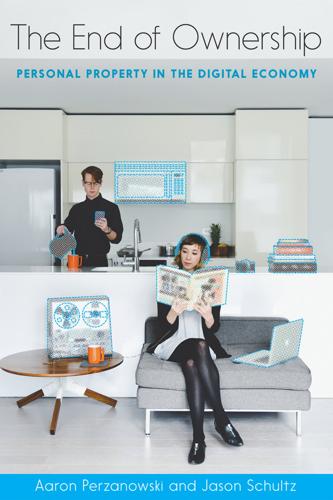
The End of Ownership: Personal Property in the Digital Economy
by
Aaron Perzanowski
and
Jason Schultz
Published 4 Nov 2016
In many ways, the rise of digital downloads looks like just another in a long line of new and improved formats. CD players joined the turntables collecting dust in our collective cultural garages as we marveled over our shiny new iPods. Like earlier format shifts, this one touted many benefits for music fans—increases in portability, convenience, and selection, reductions in price, carbon footprint, and clutter. But digital had downsides too. The browsing experience couldn’t compete with a good record store. Digital thumbnail artwork was no replacement for gatefold sleeves or even CD booklets. One factor most of us probably failed to take into account in this trade-off was the impact the move to digital could have on our ownership of the music we buy.
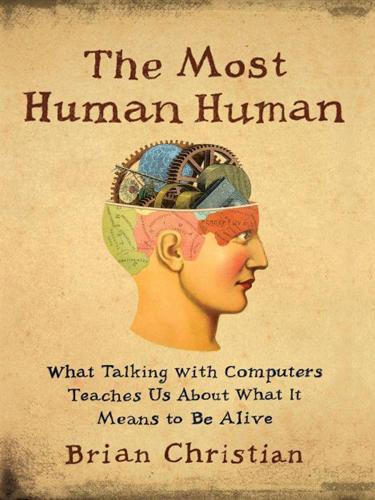
The Most Human Human: What Talking With Computers Teaches Us About What It Means to Be Alive
by
Brian Christian
Published 1 Mar 2011
(New York: Springer, 2008). 9 Robert Epstein, “From Russia, with Love,” Scientific American Mind, October/November 2007. 10 97 percent of all email messages are spam: Darren Waters, citing a Microsoft security report, in “Spam Overwhelms E-Mail Messages,” BBC News, April 8, 2009, news.bbc.co.uk/2/hi/technology/7988579.stm. 11 Say, Ireland: Ireland consumes 25,120,000 megawatt hours of electricity annually, according to the CIA’s World Factbook, www.cia.gov/library/publications/the-world-factbook/rankorder/2042rank.html. The processing of spam email consumes 33,000,000 megawatt hours annually worldwide, according to McAfee, Inc., and ICF International’s 2009 study, “The Carbon Footprint of Email Spam Report,” newsroom.mcafee.com/images/10039/carbonfootprint2009.pdf. 12 David Alan Grier, When Computers Were Human (Princeton, N.J.: Princeton University Press, 2005). 13 Daniel Gilbert, Stumbling on Happiness (New York: Knopf, 2006). 14 Michael Gazzaniga, Human: The Science Behind What Makes Us Unique (New York: Ecco, 2008). 15 Julian K.

The God Species: Saving the Planet in the Age of Humans
by
Mark Lynas
Published 3 Oct 2011
Seven billion people is an incredible number, but standing shoulder to shoulder we would all comfortably fit within the city of Los Angeles.61 City living is seldom lauded by environmentalists, but it may be our most environmentally friendly trait as a species, because urban dwelling is vastly more efficient than living in the countryside. Shops and other services are more concentrated in town and city neighborhoods, and urban residents are much more likely to use public transportation, share heating and housing, and have lower carbon footprints than their rural brethren. But given the scale of global population growth, the challenge still seems daunting: the world will need to accommodate 2 billion more urban dwellers by 2030, a rate of expansion equivalent to building about 13 great cities (each with over 5 million inhabitants) per year, almost all in developing countries.62 But consider against this two pieces of good news.

The Elements of Power: Gadgets, Guns, and the Struggle for a Sustainable Future in the Rare Metal Age
by
David S. Abraham
Published 27 Oct 2015
(Since germanium is a by-product, some of that other material includes other metals.)12 According to Halada, if you tally up the entire environmental influence of producing a kilogram of rare earth elements, it is roughly equivalent to the effect of producing 1 ton of iron. Despite such precise figures, Halada and fellow researchers concede that comparing the effects of different metals is subjective because some metals have low carbon footprints and higher localized effects, such as wastewater runoff or deforestation. However, assigning an amount of material needed to make a certain quantity of a metal provides perspective. On average, industrial products use a total of materials thirty times their own weight.13 But for green and high-tech goods such as phones, LCD displays, and their internal components, the factor can increase into the hundreds and more because high-tech products use many rare metals.

The Truth Machine: The Blockchain and the Future of Everything
by
Paul Vigna
and
Michael J. Casey
Published 27 Feb 2018
With the aid of sophisticated software monitoring, automated smart meters, and optimized, price-driven timing for individual device use, localized in-home “nanogrids” can receive a high-tech level of micromanagement that puts public utilities’ region-wide load-management strategies to shame. The revolution that started with smart thermostats like Nest and Ecobee is poised to go a lot further. But this low-cost, low-carbon-footprint future depends on two things: decentralized control of the energy system (of power generation, distribution, and consumption) and the capacity to design and run an intelligent system of interconnected smart meters and Internet-connected appliances and devices that respond to price signals. It’s a big IoT play, in other words.
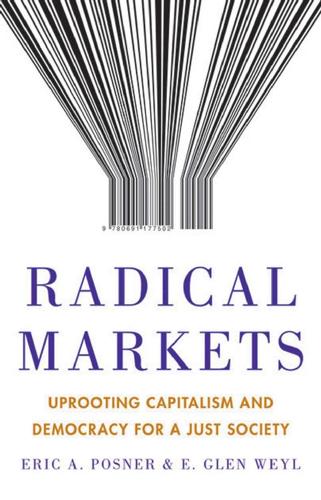
Radical Markets: Uprooting Capitalism and Democracy for a Just Society
by
Eric Posner
and
E. Weyl
Published 14 May 2018
A Penny for Your Thoughts A first and necessary step before any of this is possible, however, is getting a quantitative grip on the value of data. Things that are not measured are not priced, and often once something is measured precisely, it begins to be priced organically. Systems for measuring the carbon footprint of individuals, companies, cars, and so forth have developed in the past decade. Even in the absence of legal carbon taxation, growing numbers of economic agents have begun to account for these carbon costs through voluntary offsets or by using them to guide company planning partly under social and consumer pressure and partly because of concerns about potential future regulations.
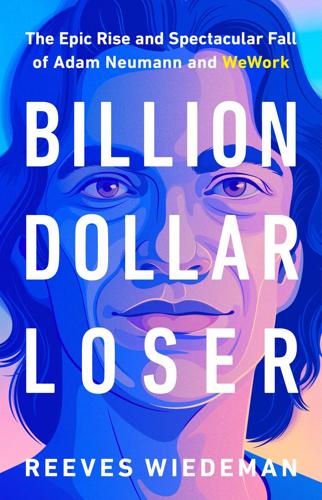
Billion Dollar Loser: The Epic Rise and Spectacular Fall of Adam Neumann and WeWork
by
Reeves Wiedeman
Published 19 Oct 2020
Adam was a meat eater, so they assumed that the instigator behind the ban was Rebekah, who was vegan. “When you eat something, you’re also absorbing the energy of that thing,” Rebekah said on a podcast in 2018. “So if the animal is sad, then you’re kind of taking in that.” After some debate, the executive team came up with a plan: as part of a broader push to lower the company’s carbon footprint, it would no longer pay for employee meals that contained meat. Lindsay Baker, who had just joined WeWork as its first head of sustainability, pushed back against the rationale, fearing that it would come across as insincere. Meat was far from the company’s biggest environmental concern; all the resources that went into the gallons of almond, oat, and cow’s milk they put out for coffee had a much greater impact on the environment, not to mention the wood and aluminum WeWork used in construction and the aging HVAC systems in its spaces.
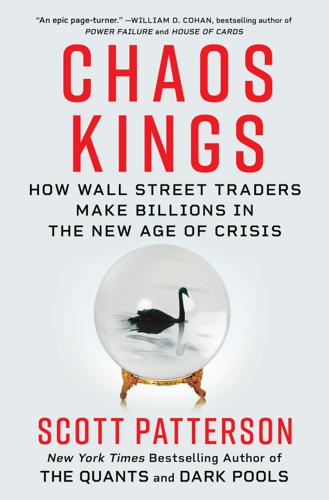
Chaos Kings: How Wall Street Traders Make Billions in the New Age of Crisis
by
Scott Patterson
Published 5 Jun 2023
“The direction set by the market is to go to the cheapest possible fuels—which are wind and sun.” Spurring the transition were the Biden administration’s plans to funnel hundreds of billions of federal spending and incentives into clean energy and other technologies designed to reduce America’s carbon footprint. And, of course, Wall Street was keen to ride Biden’s coattails. Cash allocated to assets focused on the environment and socially responsible goals were expected to hit $34 trillion by 2026, up from $18 trillion in 2021, according to PricewaterhouseCoopers. Electric utilities such as Dominion were shifting tens of billions into clean-energy sources like wind and solar, and shuttering coal-fired power plants.
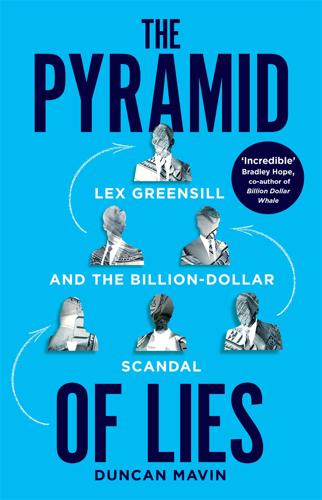
The Pyramid of Lies: Lex Greensill and the Billion-Dollar Scandal
by
Duncan Mavin
Published 20 Jul 2022
He told them that ‘our natural world has come to face many threats including climate change, wildlife decline and the loss of natural habitats . . . [The] project is my dream to make a small impact on these very important issues.’ A local newspaper speculated that Lex’s ‘green vision’ might have been an attempt to offset the carbon footprint from his private jets. But when executives at Greensill Capital talked to Lex about it, he gave a different reason: ‘It’s the kind of thing that billionaires do with their money.’ Lex and his brothers were included in lists of Australia’s richest people. He also bought property in Australia.
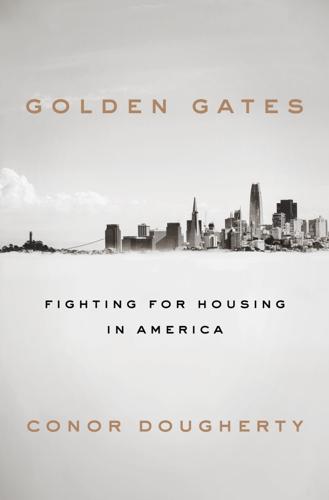
Golden Gates: Fighting for Housing in America
by
Conor Dougherty
Published 18 Feb 2020
With the success of the previous year’s housing package, Brian Hanlon had started a new statewide lobbying group called California YIMBY, and presented SB827 to Wiener as the organization’s first bill. Wiener framed 827 as a climate change bill on the logic that it would reduce sprawl, which made sense but also represented a huge political test. There was no question that people who lived in denser communities and took public transit had a much smaller carbon footprint than people who drove everywhere in a car, and that if the world was ever going to slow the pace of rising temperatures, then a vast urban and suburban retrofit would have to be part of the program. That was why pretty much every environmental group had some version of “build compact communities along transit lines” among their bullet-point list of green policy proposals.

Shorting the Grid: The Hidden Fragility of Our Electric Grid
by
Meredith. Angwin
Published 18 Oct 2020
Can they power the world? How much should renewables be supported, if they raise the cost of power for poor people? Do renewables raise the cost of power? Meanwhile, nuclear is low-carbon, but are people willing to use it? (Germany’s Energiewende is more concerned with closing nuclear than with lowering Germany’s carbon footprint.) Should nuclear plants be subsidized, as are many renewable plants? Or is subsidizing nuclear plants a travesty and a crime? Is subsidizing renewable installations a travesty and a crime? In terms of carbon and renewables and nuclear, emotions run high, and beliefs are firmly entrenched.

The Impossible City: A Hong Kong Memoir
by
Karen Cheung
Published 15 Feb 2022
The organization that has sent us on this exchange was born out of the post-boomer savior mentality that we can “do something” for the world as long as privileged kids can afford trips to “less developed” countries and attend conferences. But at this impressionable age, before discourses on voluntourism become mainstream, it is exactly the sort of activism I was hoping for during my Tumblr days. At one of the organization’s conferences in Hong Kong, I learn about the carbon footprint and meet environmentalists, and I decide to go pescatarian. In my second year of university, I become a committee member at the local chapter of the organization at my university. This is what most of my university is like: being vaguely international, identifying with being a third culture kid because I feel closer to “Western” culture than I do to Hong Kong’s.
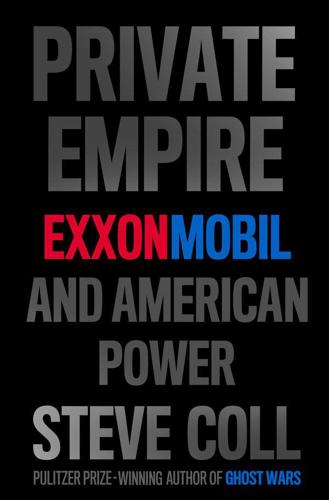
Private Empire: ExxonMobil and American Power
by
Steve Coll
Published 30 Apr 2012
Of course, the map avoided emphasizing that the sands were, in fact, Canada’s greatest source of greenhouse gas emissions, by far, and would be for the foreseeable future.13 “What do you think? Is it dirty oil?” a Canadian Broadcasting Corporation interviewer asked Obama. “What we know is that oil sands create a big carbon footprint,” Obama answered. “So the dilemma that Canada faces, the United States faces, and China and the entire world faces, is how do we obtain the energy that we need to grow our economies in a way that is not rapidly accelerating climate change?”14 Obama had been among those American senators who had previously endorsed laws to limit oil imports from Canada derived from the Alberta sands, on environmental grounds.
…
14 Obama had been among those American senators who had previously endorsed laws to limit oil imports from Canada derived from the Alberta sands, on environmental grounds. The 2007 Energy Independence and Security Act contained a provision, known as Section 526, that restricted U.S. federal agencies from procuring transportation fuel derived from any oil source with an unusually heavy carbon footprint. Section 526 was almost comically complicated because it defined the banned fuel sources through reference to statistical greenhouse gas emission averages that had never before been calculated for such a reason. Around the same time that Section 526 was enacted, California lawmakers also adopted a “low carbon fuel standard” for gasoline or other fuels used in that state.

Fodor's Costa Rica 2013
by
Fodor's Travel Publications Inc.
Published 1 Oct 2012
The capital’s parks have one big downside: after dark, a small cast of unsavory characters replaces the throngs of day-trippers. Make a point to vacate city parks when the sun goes down. GOOD PRACTICES Use public transportation whenever possible. Buses travel everywhere in San José and suburbs, and taxis are relatively easy to find. In addition to reducing your carbon footprint, it also saves you the hassle of driving and parking in an already congested city. Ask whether your hotel recycles glass, plastic, and aluminum. A few lodgings—and, unfortunately, “few” is the operative term here—do. Take advantage if you can. Don’t litter—the city has a burdensome trash problem—although you’ll swear no one else here follows this advice.
…
Clarion Hotel Amón Plaza From its active in-hotel recycling program and its eco-friendly store that sells no products made from endangered woods, to its small garden that acquaints you with rain-forest plant species and its liaison program with the community, the Amón Plaza is greener than most countryside hotels. Hotel Presidente Costa Rica’s first “carbon neutral” hotel has taken major steps to reduce its carbon footprint. What is left over is offset by a tree-planting project the lodging supports. The Presidente has organized a small but growing consortium of San José hotels to take up recycling. All in all, not bad for a place located smack-dab in the center of the city. Hotel Rincón de San José Your hot water in this small Barrio Otoya hotel will be solar heated, and the place makes maximum use of natural lighting during the day in its public areas.

Enlightenment Now: The Case for Reason, Science, Humanism, and Progress
by
Steven Pinker
Published 13 Feb 2018
Mining the uranium for nuclear energy leaves a far smaller environmental scar than mining coal, oil, or gas, and the power plants themselves take up about one five-hundredth of the land needed by wind or solar.80 Nuclear energy is available around the clock, and it can be plugged into power grids that provide concentrated energy where it is needed. It has a lower carbon footprint than solar, hydro, and biomass, and it’s safer than them, too. The sixty years with nuclear power have seen thirty-one deaths in the 1986 Chernobyl disaster, the result of extraordinary Soviet-era bungling, together with a few thousand early deaths from cancer above the 100,000 natural cancer deaths in the exposed population.81 The other two famous accidents, at Three Mile Island in 1979 and Fukushima in 2011, killed no one.
…
The technologies can also be fitted onto gasification plants that convert coal into liquid fuels, which may still be needed for planes and heavy trucks. The geophysicist Daniel Schrag points out that the gasification process already has to separate CO2 from the gas stream, so sequestering that CO2 to protect the atmosphere is a modest incremental expense, and it would yield liquid fuel with a smaller carbon footprint than that of petroleum.98 Better still, if the coal feedstock is supplemented with biomass (including grasses, agricultural waste, forest cuttings, municipal garbage, and perhaps someday genetically engineered plants or algae), it could be carbon-neutral. Best of all, if the feedstock consisted exclusively of biomass, it would be carbon-negative.
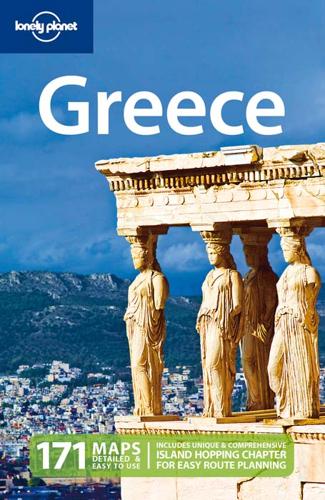
Greece
by
Korina Miller
Published 1 Mar 2010
While the bigger picture can seem rather overwhelming to an individual tourist Click here, there are a number of things you can do that can help lessen the impact without compromising your holiday. The first thing to consider is how you will travel to Greece. While short vacations don’t always offer the luxury of avoiding the carbon footprints involved in flying (Click here), reaching Greece from the rest of Europe by train and/or boat is a viable option for those with a little more time. Click here for options. The experience of long-distance train travel can also be a highlight of your trip. Next consider when you’re going to travel.
…
It’s impractical to avoid buying bottled water entirely. On some of the remote and smaller islands, tap water is not safe to drink (unless you boil or purify it); always ask locally. When buying bottled water, choose Greek brands (which are everywhere) rather than European brands that have travelled further and therefore come with a larger carbon footprint. You can also cut down on water use by not requesting hotels to wash your towels daily and by taking quick showers. ‘Organic’ and ‘green’ are increasingly popular buzzwords in Greece. The rise in agrotourism means more options for staying in local, environmentally friendly places. You’ll also find increasing options for recycling and for buying organic food, and for guided activities such as hiking and cycling.
…
International train travel, in particular, has become much more feasible in recent years with speedier trains and better connections. You can now travel from London to Athens by train and ferry in less than two days. By choosing to travel on the ground instead of the air, you’ll also be reducing your carbon footprint. It’s a win-win situation. Border Crossings ALBANIA There are four crossing points between Greece and Albania. The main one is at Kakavia, 60km northwest of Ioannina (Click here), and it can have intensely slow queues. The other crossings are at Sagiada, 28km north of Igoumenitsa; Mertziani, 17km west of Konitsa; and Krystallopigi, 14km west of Kotas on the Florina–Kastoria road.
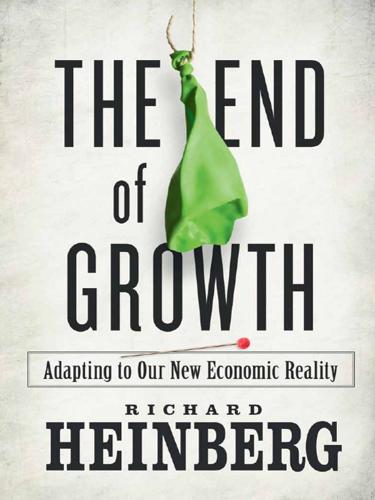
The End of Growth: Adapting to Our New Economic Reality
by
Richard Heinberg
Published 1 Jun 2011
Our printed, bound books are printed on Forest Stewardship Council-certified acid-free paper that is 100% post-consumer recycled (100% old growth forest-free), processed chlorine free, and printed with vegetable-based, low-VOC inks, with covers produced using FSC-certified stock. New Society also works to reduce its carbon footprint, and purchases carbon offsets based on an annual audit to ensure a carbon neutral footprint. For further information, or to browse our full list of books and purchase securely, visit our website at: www.newsociety.com Library and Archives Canada Cataloguing in Publication Heinberg, Richard The end of growth : adapting to our new economic reality / Richard Heinberg.
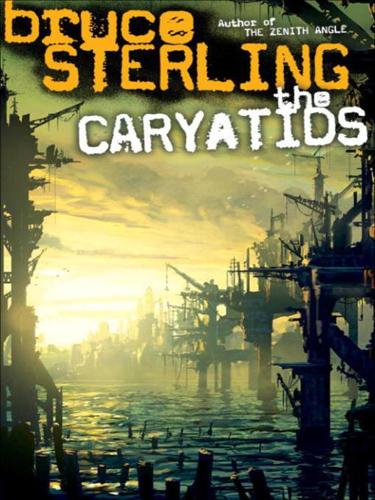
The Caryatids
by
Bruce Sterling
Published 24 Feb 2009
Yet George, for all his countless demerits, had a definite rapport for ubiquitous systems. George had a positive genius for handling border delays, security compliances, fuel costs, detours on the planet’s weather-shattered roads and bridges, documentation hurdles, no-fly zones and confiscatory carbon-footprint taxes, port congestion, cargo security, regulations both in-state and offshore, liaisons with manufacturers, out-sized and overweight shipping modules … Boring things, dull things. Yet George could ship things to her, and that mattered. Bravery mattered much less. A brave woman could be “very brave” in a field hospital.

Europe old and new: transnationalism, belonging, xenophobia
by
Ray Taras
Published 15 Dec 2009
Discount airlines (like Dublin-based Ryanair) allow Europeans to travel cheaply to even small towns in each other’s countries. The motorway system, train networks, and bus service have become steadily integrated into a European grid. Europeans of all nations holiday with each other more often at the major resorts. With so much travel, there is now even an egalitarianism to the carbon footprints that Europeans are leaving. But as we have found in this book, national stereotypes, antipathies, phobias, rivalries, and biases still affect mutual attitudes and behavior in old and new Europe. As reprehensible as they may be, individual nations have constructed unofficial ethnic hierarchies.

The Metropolitan Revolution: How Cities and Metros Are Fixing Our Broken Politics and Fragile Economy
by
Bruce Katz
and
Jennifer Bradley
Published 10 Jun 2013
Some of the funds have gone to urban regeneration and housing projects, but additional money will go to increase the region’s innovative capacity by investing in improvements at the Syracuse University Center of Excellence R&D facilities, assisting in the expansion of manufacturing facilities, and developing a sustainability plan to lower the region’s carbon footprint. METRO DEALS To liberate metros across the country from the strict oversight and regulations that accompany federal and state support, the United States might borrow an idea from the United Kingdom. In 2011 the British government instituted City Deals to empower cities and their metropolitan areas to drive local economic development.
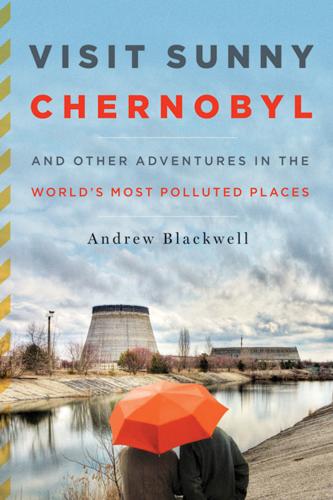
Visit Sunny Chernobyl: And Other Adventures in the World's Most Polluted Places
by
Andrew Blackwell
Published 22 May 2012
It was a tiny village, modest to an extreme, a densely packed assemblage of brick and earthen houses. A buffalo or goat twitched on every other stoop. With its total absence of cars—and air-conditioners, and televisions, and electricity—the town must have represented the platonic ideal of small carbon footprint. But it was disorientingly poor. Not even a day’s drive away, I had seen Delhi’s cosmopolitan set sipping twelve-dollar cocktails in bars and lounges as chic as anything in Manhattan. Now we were here, on the other side of the planet, in a world fueled with patties of dried cow dung. The gulf—in culture, in economy, and above all, in class—was impossible to fathom.

Discover Kaua'i Travel Guide
by
Lonely Planet
Many websites offer ‘carbon calculators’ that allow people to estimate the carbon emissions generated by their journey and, for those who wish to do so, to offset the impact of the greenhouse gases emitted with contributions to portfolios of climate-friendly initiatives throughout the world. Lonely Planet offsets the carbon footprint of all staff and author travel. Volunteering For opportunities to volunteer on environmental projects, Click here . Work » US citizens can legally work in Hawaii, but considering the high unemployment rate, opportunities are limited. Short-term employment will probably mean entry-level jobs in the service industry.
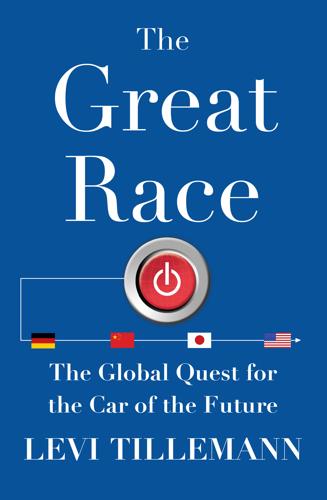
The Great Race: The Global Quest for the Car of the Future
by
Levi Tillemann
Published 20 Jan 2015
Whereas buying a battery is 10K out the door.”1 In 2014, one surprising voice of dissent against hydrogen was Fiat and Chrysler’s CEO, Sergio Marchionne. In 2014 he lambasted fuel cells. “Somebody needs to prove to me that if you are going to use fossil fuels to produce hydrogen then you are going to end up with a carbon footprint that’s more beneficial than combustion,” he said. “Prove that to me and then I’ll listen to you.” Many thoughtful advocates see hydrogen as a critical component of the transportation future—especially for heavier vehicles, or long-distance travel. But the road to a hydrogen future is long indeed—and paved with massive government subsidies.
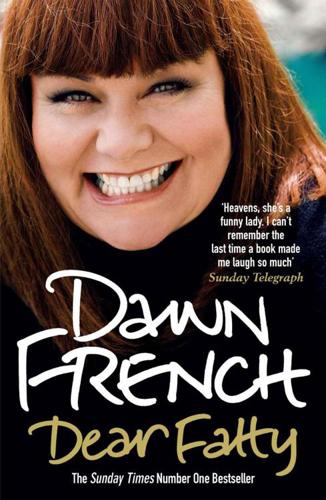
Dear Fatty
by
Dawn French
Published 8 Nov 2011
Any time you want to do synchronised slow walking, with fabulous hairdos and matching accessories, let me know! Dear Dad, I AM TRYING to book a holiday. It has to be one week long and in the UK somewhere. We haven’t got enough time to go abroad, and besides, I don’t really want to do that – I’m feeling a bit carbon-footprint guilty, plus I hate flying. Flying, for me, is utterly exhausting, for the simple reason that it is my duty (on behalf of all the passengers, I hasten to add) to keep the plane in the air by sheer force of my mind … If I lose concentration for even a minute, the massive metal crate will surely plummet earthwards and hundreds of tragic deaths would be on my conscience.
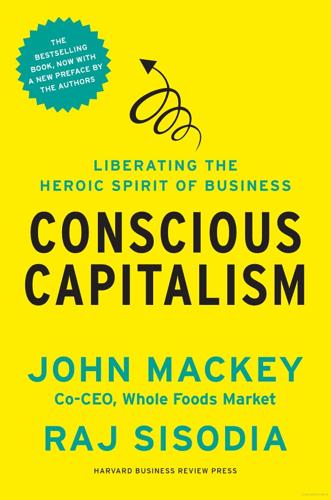
Conscious Capitalism, With a New Preface by the Authors: Liberating the Heroic Spirit of Business
by
John Mackey
,
Rajendra Sisodia
and
Bill George
Published 7 Jan 2014
Earlier than most large companies, Walmart realized that a strong business case can be made for taking measures to enhance environmental sustainability—measures that do not depend on government subsidies or other incentive programs. The company is using its vast scale and power to change not only its own practices, but also those of its suppliers and many of its competitors.16 Here are some of Walmart’s initiatives: Since 2005, it has reduced the carbon footprint of its stores by more than 10 percent and that of its truck fleet to a much greater degree. It has done so by installing energy-efficient lighting and refrigeration, using better fuel, streamlining its trucks, and planning better routes. The company has helped its suppliers in the United States and China reduce their carbon emissions and energy bills by 20 to 60 percent.
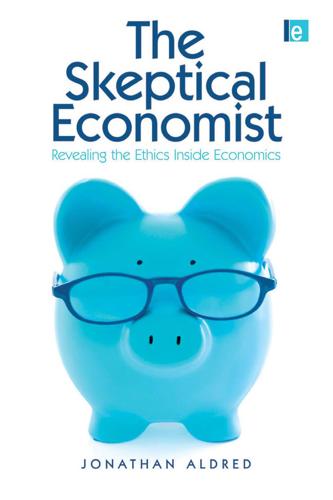
The Skeptical Economist: Revealing the Ethics Inside Economics
by
Jonathan Aldred
Published 1 Jan 2009
First published by Earthscan in the UK and USA in 2009 Copyright © Dr Jonathan Aldred, 2009 All rights reserved ISBN: 978-1-84407-705-2 Typeset by FiSH Books Cover design by Rob Watts For a full list of publications please contact: Earthscan Dunstan House 14a St Cross St London, EC1N 8XA, UK Tel: +44 (0)20 7841 1930 Fax: +44 (0)20 7242 1474 Email: earthinfo@earthscan.co.uk Web: www.earthscan.co.uk 22883 Quicksilver Drive, Sterling, VA 20166-2012, USA Earthscan publishes in association with the International Institute for Environment and Development A catalogue record for this book is available from the British Library Library of Congress Cataloging-in-Publication Data Aldred, Jonathan, The skeptical economist: revealing the ethics inside economics/Jonathon Aldred p. cm. Includes bibliographical references and index. ISBN 978-1-84407-705-2 (hardback) 1. Economics- Moral and ethical aspects, 2. Economics. I. Title. HB72.A345 2009 174-dc22 2008046911 At Earthscan we strive to minimize our environmental impacts and carbon footprint through reducing waste, recycling and offsetting our CO2 emissions, including those created through publication of this book. For more details of our environmental policy, see www.earthscan.co.uk. This book was printed in the UK by Cromwell Press. The paper used is FSC certified and the inks are vegetable based.

Frenemies: The Epic Disruption of the Ad Business
by
Ken Auletta
Published 4 Jun 2018
Launched in May 2013 by Citibank for zero tax dollars and at a cost to the bank of $41 million, by the summer of 2017 it had ten thousand bikes in use in fifty-five city neighborhoods. As Andrew Essex observes in his 2017 book, The End of Advertising, Citibank, by choosing not to spend this sum on TV commercials or “squandering that eight-figure investment on useless pollution, built something additive that actually reduces our carbon footprint.” The benefit to Citibank in New York and New Jersey where Citi Bike has been introduced, was equally clear, Essex shows: by 2015 the bank’s internal data revealed that “favorable impressions of Citibank” rose twenty-eight points to 72 percent, and people who said they would consider acquiring a product from Citibank climbed forty-three points.
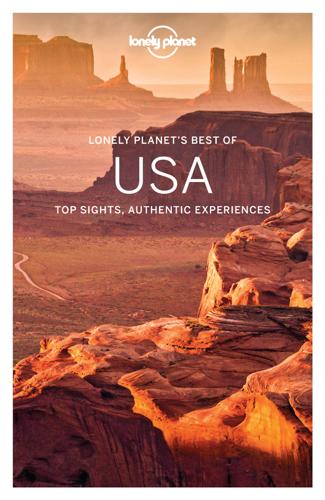
Lonely Planet's Best of USA
by
Lonely Planet
Many websites offer ‘carbon calculators’ that allow people to estimate the carbon emissions generated by their journey and, for those who wish to do so, to offset the impact of the greenhouse gases emitted with contributions to portfolios of climate-friendly initiatives throughout the world. Lonely Planet offsets the carbon footprint of all staff and author travel. Air Passes International travelers who plan on doing a lot of flying might consider buying a North American air pass. Passes are normally available only to non-North American citizens, and they must be purchased in conjunction with an international ticket.
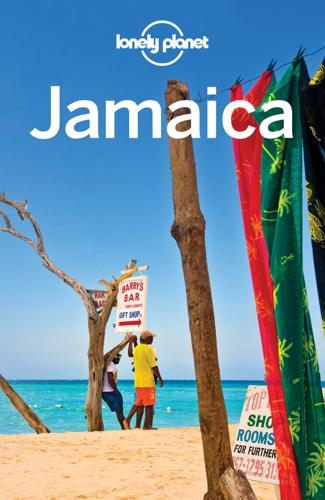
Lonely Planet Jamaica
by
Lonely Planet
Many websites offer ‘carbon calculators’ that allow people to estimate the carbon emissions generated by their journey and, for those who wish to do so, to offset the impact of the greenhouse gases emitted with contributions to portfolios of climate-friendly initiatives throughout the world. Lonely Planet offsets the carbon footprint of all staff and author travel. Air Airports & Airlines Jamaica has two international airports, Norman Manley International Airport in Kingston and Donald Sangster International Airport in Montego Bay. Jamaica is well served by international carriers from cities across North America and Europe.

The Divide: A Brief Guide to Global Inequality and Its Solutions
by
Jason Hickel
Published 3 May 2017
To have a strong chance of accomplishing this, rich countries will have to hit zero carbon emissions by 2035, and poor countries will have to follow suit by 2050. By applying stringent standards on energy efficiency and tightening them every year, rich countries might be able to reduce their energy demands by as much as 40–70 per cent in ten years. And if the top 10 per cent of individuals with the biggest carbon footprints reduce their emissions down to the level of even just the average European, rich countries could cut their emissions by 33 per cent – and this could theoretically be achieved in a single year.15 Cuts on this order will be essential to preventing runaway climate change. Bizarrely, the Paris Agreement makes no reference to fossil fuels or fossil fuel companies.

The Sense of Style: The Thinking Person's Guide to Writing in the 21st Century
by
Steven Pinker
Published 1 Jan 2014
Much of the joy of writing comes from shopping from the hundreds of thousands of words that English makes available, and it’s good to remember that each of them was a neologism in its day. The new entries in AHD 5 are a showcase for the linguistic exuberance and recent cultural history of the Anglosphere: Abrahamic, air rage, amuse-bouche, backward-compatible, brain freeze, butterfly effect, carbon footprint, camel toe, community policing, crowdsourcing, Disneyfication, dispensationalism, dream catcher, earbud, emo, encephalization, farklempt, fashionista, fast-twitch, Goldilocks zone, grayscale, Grinch, hall of mirrors, hat hair, heterochrony, infographics, interoperable, Islamofascism, jelly sandal, jiggy, judicial activism, ka-ching, kegger, kerfuffle, leet, liminal, lipstick lesbian, manboob, McMansion, metabolic syndrome, nanobot, neuroethics, nonperforming, off the grid, Onesie, overdiagnosis, parkour, patriline, phish, quantum entanglement, queer theory, quilling, race-bait, recursive, rope-a-dope, scattergram, semifreddo, sexting, tag-team, time-suck, tranche, ubuntu, unfunny, universal Turing machine, vacuum energy, velociraptor, vocal percussion, waterboard, webmistress, wetware, Xanax, xenoestrogen, x-ray fish, yadda yadda yadda, yellow dog, yutz, Zelig, zettabyte, zipline If I were allowed to take just one book to the proverbial desert island, it might be a dictionary.
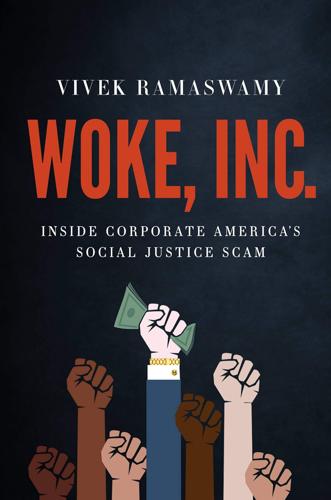
Woke, Inc: Inside Corporate America's Social Justice Scam
by
Vivek Ramaswamy
Published 16 Aug 2021
Democratically elected officeholders and other public leaders, not CEOs and portfolio managers, should lead the debate about what values define America. Business leaders are supposed to decide how much to spend on a manufacturing plant or whether to invest in one piece of technology or another—not whether a minimum wage is more important for society than full employment or whether reducing America’s carbon footprint is more important than the geopolitical consequences of doing so. CEOs are no better suited to make these decisions than an average politician is to, say, make the R&D decisions of a pharma company. To be clear, that doesn’t mean that citizens, including CEOs, should refrain from speaking up strictly in their personal capacities.
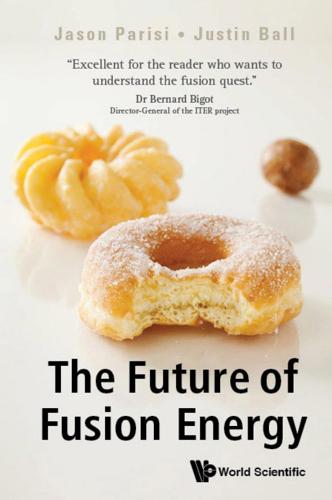
The Future of Fusion Energy
by
Jason Parisi
and
Justin Ball
Published 18 Dec 2018
Life cycle analysis studies [7] indicate that photovoltaics release nearly three times as much carbon as nuclear fission and four times as much as wind (though it is still about ten times better than natural gas). Fortunately, this largely results from the energy required for their manufacture. Hence, the carbon footprint of photovoltaics can be expected to shrink as electricity generation is decarbonized. 2.3.5Wind Because the Earth is spherical, the equator receives much more solar energy than the North and South poles. This creates a temperature difference that is the dominant force driving the wind.
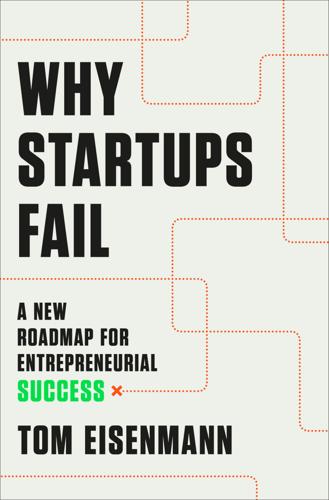
Why Startups Fail: A New Roadmap for Entrepreneurial Success
by
Tom Eisenmann
Published 29 Mar 2021
These breakthroughs can broaden the scope of a startup’s product market by allowing it to target underserved customers. Some startups make bold business model innovations; that’s what Stitch Fix did when it offered a new subscription styling service. Others innovate by exploiting new technology, as Solidia Technologies did with advances in chemical engineering that enabled the venture to cut the carbon footprint of cement production by 70 percent. Vertical integration. Vertical integration enlarges the scope of activities that a company performs by bringing functions in-house that formerly were outsourced to third parties. “Upstream” (or “backward”) integration involves product development and manufacturing activities, while “downstream” (or “forward”) integration encompasses marketing, sales, and the physical distribution of products.
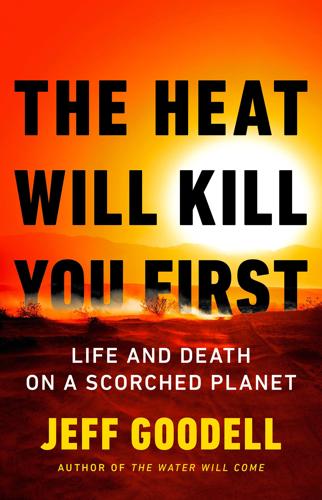
The Heat Will Kill You First: Life and Death on a Scorched Planet
by
Jeff Goodell
Published 10 Jul 2023
Another way to grow food on a hot planet is to simply move indoors. Several years ago, I met a guy named Jonathan Webb at a tech conference in Idaho. He had a dream about building a giant indoor greenhouse in Kentucky to both create jobs and grow food far more efficiently, and with a far smaller carbon footprint, than the old-fashioned way of sticking it in the ground, hiring laborers to harvest it, then loading it into eighteen-wheelers and trucking it across the country to a supermarket near you. I thought it was a noble but crazy dream, given that Webb’s background was in solar, not agriculture. He knew as much about growing tomatoes on a commercial scale as I did.

The Glass Half-Empty: Debunking the Myth of Progress in the Twenty-First Century
by
Rodrigo Aguilera
Published 10 Mar 2020
An average person who lives a perfect consumerist lifestyle with no regard to the environmental damage of their behavior will not tip the balance of Earth’s future from Gaia to Mad Max wasteland. Nor will the opposite happen with the hyper-conscious environmentalist whose every action has factored in the minimization of their carbon footprint. There’s no apparent negative payoff from disbelieving in climate change or discounting it from your behavioral patterns, and because your individual impact is negligible you also can’t be blamed once climate change does materialize. To use a term popularized by Nassim Taleb, nobody has “skin in the game”.45 The recent shift of denialists away from the argument that climate change isn’t real and towards the argument that human action isn’t the driving force (and that it’s therefore inevitable) appears to be a push towards a narrative that appeals to this very rational method of ignoring risk.

The Power of Geography: Ten Maps That Reveal the Future of Our World
by
Tim Marshall
Published 14 Oct 2021
Before he became prime minister, Scott Morrison caused uproar in parliament when he brandished a large lump of coal and exhorted the House: ‘Don’t be afraid, don’t be scared, it won’t hurt you. It’s coal.’ Australia could close down its industry tomorrow and not significantly reduce global pollution – it is part of a problem that will not be resolved without each country working to reduce their carbon footprint – but it would have a profound effect on the Australian economy. As such, coal is likely to remain king for years to come even as the country looks to alternative sources of energy. Access to energy is a major concern for Australia – and, given Australia’s geography and location, it’s unavoidably linked with security issues.
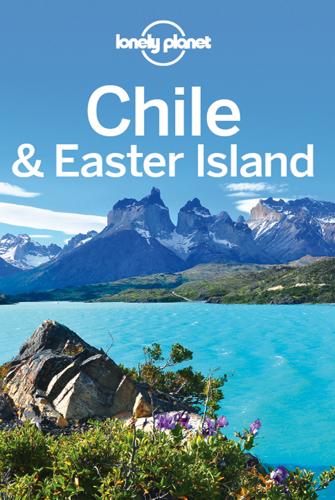
Lonely Planet Chile & Easter Island (Travel Guide)
by
Lonely Planet
,
Carolyn McCarthy
and
Kevin Raub
Published 19 Oct 2015
Highlights include hiking in Cochamó Valley, extensive mountain-bike trips, remote French retreats on Isla Las Bandurrias in Lago Las Rocas and multiday horseback-riding/ cultural farmstay trips between Argentina and Chile. Groups are never more than 12 strong and everyone here is dedicated to giving travelers a unique off-the-beaten-path experience while keeping their carbon footprint at bay. TurisTour OUTDOORS, GUIDED TOUR Offline map Google map ( 228-440; www.turistour.cl; Del Salvador 72) This agency runs the Cruce Andino crossing to/from Argentina (see boxed text, Click here) as well as excursions through the region. Festivals & Events The city celebrates its 1854 founding in the last week of January and the first week of February.
…
Many websites offer ‘carbon calculators’ that allow people to estimate the carbon emissions generated by their journey and, for those who wish to do so, to offset the impact of the greenhouse gases emitted with contributions to portfolios of climate-friendly initiatives throughout the world. Lonely Planet offsets the carbon footprint of all staff and author travel. Onward Tickets Chile requires a return or onward ticket for travelers who are arriving, and officials sometimes ask for evidence of an onward ticket. Not having an onward ticket can also pose a problem at the flight counter in your departure country. If the agent is a stickler, they can refuse to board you.

Coastal California
by
Lonely Planet
Many websites offer ‘carbon calculators’ that allow people to estimate the carbon emissions generated by their journey and, for those who wish to do so, to offset the impact of the greenhouse gases emitted with contributions to portfolios of climate-friendly initiatives throughout the world. Lonely Planet offsets the carbon footprint of all staff and author travel. Entering the Region California is an important agricultural state. To prevent the spread of pests and diseases, certain food items (including meats, fresh fruit and vegetables) may not be brought into the state. Bakery items, chocolates and hard-cured cheeses are admissible.
…
Major international car-rental companies include: Alamo ( 877-222-9075; www.alamo.com) Avis ( 800-331-1212; www.avis.com) Budget ( 800-527-0700; www.budget.com) Dollar ( 800-800-3665; www.dollar.com) Enterprise ( 800-261-7331; www.enterprise.com) Fox ( 800-225-4369; www.foxrentacar.com) Hertz ( 800-654-3131; www.hertz.com) National ( 877-222-9058; www.nationalcar.com) Thrifty ( 800-847-4389; www.thrifty.com) If you’d like to minimize your carbon footprint, a few major car-rental companies (eg Avis, Budget, Enterprise, Fox, Hertz and Thrifty) offer ‘green’ fleets of hybrid or biofueled rental cars, but these fuel-efficient models are in short supply. Reserve well in advance and expect to pay significantly higher rates. Also consider the following: Simply Hybrid ( 323-653-0011, 888-359-0055; www.simplyhybrid.com) In Los Angeles.

Scandinavia
by
Andy Symington
Published 24 Feb 2012
Two of the best small art museums and galleries outside the capital are Faaborg’s art museum and Herning’s contemporary-art museum, HEART. Topping it all off is the magnificent Louisiana Museum of Modern Art, on the coast north of Copenhagen. Green Travel If you want to travel sustainably Denmark is the place to do it. Creating a modest carbon footprint and minimising your environmental impact are made very easy indeed. For starters there’s the excellent public transport network and the fact that it’s easy to cycle almost everywhere. Arriving in Denmark by plane at Copenhagen airport, you will see the country’s major contribution to improving the global environment: a row of wind turbines, technology the country has made its own.
…
Many websites offer ‘carbon calculators’ that allow people to estimate the carbon emissions generated by their journey and, for those who wish to do so, to offset the impact of the greenhouse gases emitted with contributions to portfolios of climate-friendly initiatives throughout the world. Lonely Planet offsets the carbon footprint of all staff and author travel. Air As well as the many national carriers that fly directly into Scandinavia’s airports, there is a host of budget options. These change frequently, and are best investigated on the website www.whichbudget.com. They have the extra advantage of well-priced one-way tickets, making it easy to fly into one of the region’s cities and out from another.

The Rough Guide to Peru
by
Rough Guides
Published 27 Apr 2024
A few high-end restaurants also work closely with traditional food suppliers, from fishermen to tuber farmers, in addition to contributing to the research of an array of foods and botanicals and their uses. Eco-tourism packages Because of the rise in conscious tourism, there are now numerous travel agencies that specialize in arranging packages designed to minimize travellers’ carbon footprints and benefit indigenous communities, along with biomes and their respective environments, from the Pacific coast to the Andes and Amazon. Whether you choose a backpacking holiday around hostels and guesthouses, or a luxury package, there is an abundance of operators working as a conduit of good, through contributions to fair trade initiatives and preservation efforts for national parks and historic sites.
…
We believe it helps us understand the world we live in and the people we share it with – and of course tourism is vital to many developing economies. But the scale of modern tourism has also damaged some places irreparably, and climate change is accelerated by most forms of transport, especially flying. We encourage all our authors to consider the carbon footprint of the journeys they make in the course of researching our guides. LATAM (latam.com) flies from Sydney to Lima via Auckland, Miami, or Santiago de Chile, while Delta (delta.com) flies from Sydney to Lima via the US; Air Canada flies via Montréal and Toronto. LATAM (latam.com) flies regularly from Melbourne via Santiago de Chile.

With a Little Help
by
Cory Efram Doctorow
,
Jonathan Coulton
and
Russell Galen
Published 7 Dec 2010
It meant we couldn't talk, couldn't make unhappy faces, even. It was the longest walk of my life. 2689 The air-conditioning in her yurt was barely on, setting a good and frugal example for the rest of us. 2690 "You don't see this," she said, as she cranked the AC wide open and then fiddled with the carbon-footprint reporting system, using her override so that the journos outside wouldn't be able to see just how much energy the Institute's esteemed director was burning. 2691 "I don't see it," I agreed, and made a mental note to show her a more subtle way of doing that, a way that wouldn't leave an audit trail. 2692 She opened the small fridge next to her office and brought out two corn-starch-foam buckets of beer and punctured each one at the top with a pen from her desk.

Corduroy Mansions
by
Alexander McCall Smith
Published 1 Jan 2009
“It has a kitchen space, Eddie. People see past an actual kitchen these days. Didn’t you know that?” But Eddie was not to be moved. “It’s kind of you, Dad. I appreciate the offer, but I think it’s premature. I’m actually quite comfortable living at home. And it’s greener, isn’t it? Sharing. It makes our carbon footprint much smaller.” And so William found himself living with his twenty-four-year-old son. Wine dealer, he thought, would like his son to meet a lively woman with view to his moving in with her. Permanently. Any area. He turned away from the bathroom mirror and stooped down to run his morning bath.

Inside the Nudge Unit: How Small Changes Can Make a Big Difference
by
David Halpern
Published 26 Aug 2015
Imagine instead that you could get access to this same data in machine-readable form, and much more quickly. If you had an allergy, you could feed this data into allergies.com, which could warn you to avoid the cookies you didn’t notice had peanuts. Similarly saveonyourshopping.com might figure out which supermarket would be best for your particular habits; and carbon.com might advise you of the carbon footprint of your basket. In short, enabling consumers to access their data in machine-readable form could give them access to a host of ‘choice engines’ that make the comparisons that their busy lives, and limited cognitive capacities, make too difficult. The midata clause did not immediately oblige all companies to comply.
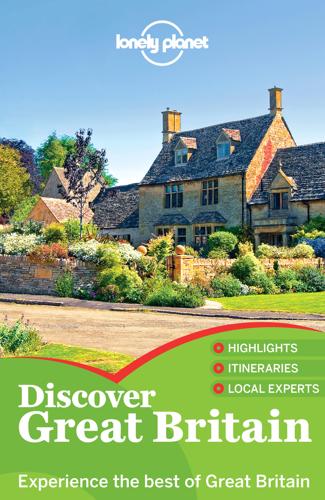
Discover Great Britain
by
Lonely Planet
Published 22 Aug 2012
Many websites offer ‘carbon calculators’ that allow people to estimate the carbon emissions generated by their journey and, for those who wish to do so, to offset the impact of the greenhouse gases emitted with contributions to portfolios of climate-friendly initiatives throughout the world. Lonely Planet offsets the carbon footprint of all staff and author travel. Your other main option for travel between Britain and mainland Europe is ferry, either port-to-port or combined with a long-distance bus trip, although journeys can be long and financial savings not huge compared with budget airfares. International trains are much more comfortable and a ‘green’ option; the Channel Tunnel allows direct rail services between Britain, France and Belgium, with onward connections to many other European destinations.

Discover Maui
by
Lonely Planet
Many websites offer ‘carbon calculators’ that allow people to estimate the carbon emissions generated by their journey and, for those who wish to do so, to offset the impact of the greenhouse gases emitted with contributions to portfolios of climate-friendly initiatives throughout the world. Lonely Planet offsets the carbon footprint of all staff and author travel. SEA The following cruise lines offer tours to Hawaii with stops on Maui. Holland America Cruise Line (www.hollandamerica.com) Typically departs from San Diego, Seattle or Vancouver. Norwegian Cruise Line (www.ncl.com) Operates a cruise between the Hawaiian Islands that starts and ends in Hawaii.

Designing Social Interfaces
by
Christian Crumlish
and
Erin Malone
Published 30 Sep 2009
. • Emails should highlight key features and/or new features (see Figure 3-29). Download at WoweBook.Com 78 Chapter 3: You’re Invited! Figure 3-29. Dopplr sends out an annual report at the end of the year recapping your trips, comparing your travel to others in your network, and giving an overview of your carbon footprint. The report was such an unexpected and pleasant surprise, people were talking about it for days, and it definitely encouraged reengagement for those who had forgotten to use the service. • If your user hasn’t been to your site for some amount of time, send email that entices him back to the site, but only if he agreed to receive email.
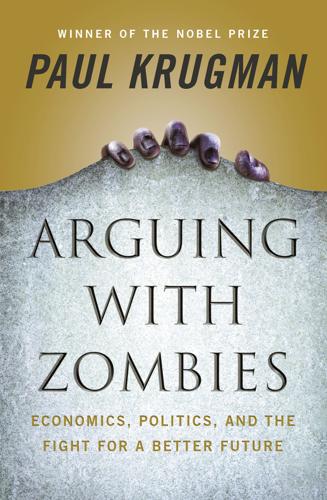
Arguing With Zombies: Economics, Politics, and the Fight for a Better Future
by
Paul Krugman
Published 28 Jan 2020
As any card-carrying economist can tell you, there are big advantages to discouraging pollution by putting a price on emissions, which you can do either by imposing a tax or by creating a cap-and-trade system in which people buy and sell emission permits. It’s Economics 101: a pollution tax or equivalent creates broad-based incentives in a way less comprehensive policies can’t. Why? Because it encourages people to reduce their carbon footprint in all possible ways, from using renewable energy, to conservation, to shifting consumption away from energy-intensive products. A carbon tax is, however, a tax—which will upset the people who have to pay it. Yes, the revenue from a carbon tax could be used to cut other taxes, but convincing enough people that they will be better off overall would be a very hard sell.
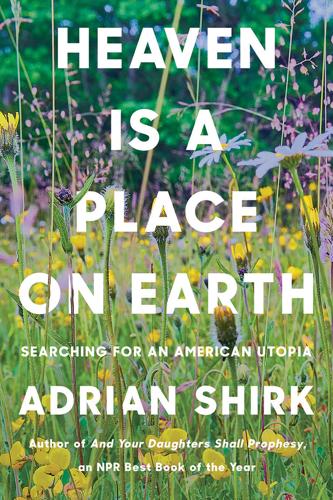
Heaven Is a Place on Earth: Searching for an American Utopia
by
Adrian Shirk
Published 15 Mar 2022
Weeksville sits in the Venn of the neighborhoods of Crown Heights, Bed-Stuy, and Brownsville, in Brooklyn, and has been in continuous existence since the early nineteenth century and is now partially enshrined as a living museum. Or it would start in the 1980s, at Short Mountain Sanctuary in Middle Tennessee, where Radical Faeries created a communal life close to the land with a low carbon footprint, away from the homophobic violence of society. Or it would start in Harlan County, Kentucky, in the twenty-first century, where a multiracial, multi-sexual-orientation coalition of coal miners and coal country lifers blocked the railroad tracks from coal transport when their company laid them off without pay.
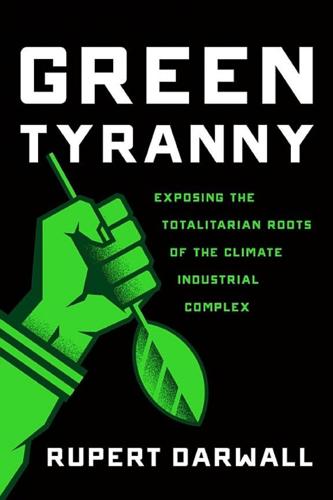
Green Tyranny: Exposing the Totalitarian Roots of the Climate Industrial Complex
by
Rupert Darwall
Published 2 Oct 2017
Rising energy consumption is the very stuff of progress. Policies to prevent it rising would condemn America to European-style stagnation. Pot smokers are also blowing a hole in President Obama’s carbon caps. “Consumers seeking a green lifestyle are likely unaware that their cannabis use could cancel out their otherwise low-carbon footprint,” researcher Evan Mills told Bloomberg’s Jennifer Oldham. Indoor cannabis production consumed nine percent of California’s household electricity, and some larger growers were spending a million dollars a month on electricity. The intense heat from dozens of 1,000-watt light bulbs requires air conditioning and fans to keep grow rooms at 75 degrees, a dehumidifier to prevent mold, and a carbon dioxide injection system to accelerate plant growth and allow growers to reap multiple harvests a year.
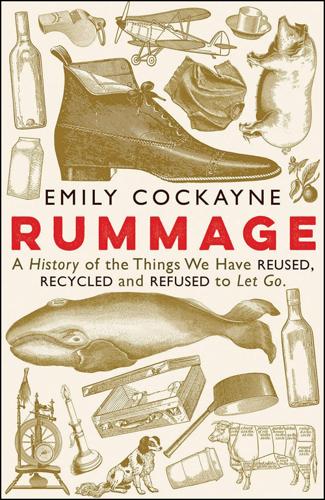
Rummage: A History of the Things We Have Reused, Recycled and Refused To Let Go
by
Emily Cockayne
Published 15 Aug 2020
A see-sawing between ‘stewardship of my stuff’ and ‘stewardship of the nation’s stuff’ was henceforth complicated by a new obligation: ‘stewardship of the Earth’. Recycling slowed in the scrabble for opportunities in the boom years of the 1980s. Picking up again in the twenty-first century, some recyclers were attracted to a new moral stance and a global outlook, albeit sometimes to counter guilt induced by ever larger carbon footprints. Reuse also requires a consideration of the national heritage. Judgements as to the value of documents can later prove regrettable. It would be difficult to assess how many records of potential use to the historian were taken from councils and solicitors’ offices to be dumped in salvage during the wars (let alone those reused to patch wagons or flown as kites by Puritans during the early modern period).

The Secret Life of Groceries: The Dark Miracle of the American Supermarket
by
Benjamin Lorr
Published 14 Jun 2020
Facets once highly desired, like the age of a hen at slaughter, fall out of fashion. The value of what we no longer have expands in our imagination. In the 1920s, fancy New York restaurants advertised their “food miles,” proudly touting the distance each ingredient traveled on the menu as a symbol of sophistication. Now we see the same measure as a proxy for carbon footprint and wince. * And what an heir he is! In 1965, Merritt Jr. sits on the last crumbling vestiges of an empire. His father, “Smoke,” a sheep rancher and self-described blood brother to the Havasupai tribe, made the match of the century, marrying Rhoda Rindge, sole inheritor of the entire Malibu coast.

Green Philosophy: How to Think Seriously About the Planet
by
Roger Scruton
Published 30 Apr 2014
The campaign was successful; as a result the mosquito population in Africa has soared and many millions of children who might otherwise have survived have died of malaria.379 In the light of those and other conflicts, actual or incipient, it might be supposed that morality has to be entirely rethought, so as to reconcile, if we can, personal duty and ecological piety. Does not the earth have a claim on us?380 Should we not strive to leave the smallest possible carbon footprint; to treat the earth as a vulnerable mother to whom gratitude and love are owed; to respect the works of nature, and to eat only those things that have been properly sown and harvested – maybe not to eat animals at all, and meanwhile to live frugally and quietly like a Tibetan monk? When I read the ‘wholier than thou’ moralizing of the ecocrusaders I confess that the spirit of the hunter rises within me.
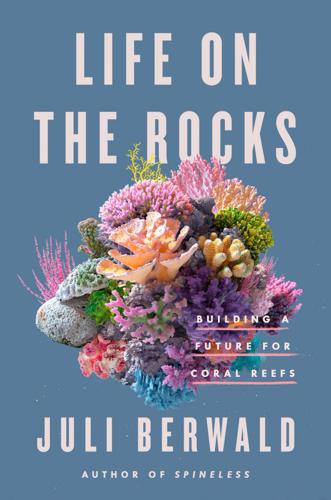
Life on the Rocks: Building a Future for Coral Reefs
by
Juli Berwald
Published 4 Apr 2022
What’s turning out to be most important about all these different groups is that they might represent options for a coral in a future warmer ocean, like having a choice of power company. Where I live in Austin, you can choose wind power over fossil fuel power, so you might want to give wind a try to keep your carbon footprint down. On the other hand, wind power costs a bit more, so if your budget’s tight, it might not be feasible. In the same way, each group of algae has slightly different abilities to absorb different wavelengths of light, to produce sugar, and, importantly, to withstand different temperatures. Members of Clade C, now known as the genus Cladocopium, are quite accommodating.

Lonely Planet Kauai
by
Lonely Planet
,
Adam Karlin
and
Greg Benchwick
Published 18 Sep 2017
Many websites offer ‘carbon calculators’ that allow people to estimate the carbon emissions generated by their journey and, for those who wish to do so, to offset the impact of the greenhouse gases emitted with contributions to portfolios of climate-friendly initiatives throughout the world. Lonely Planet offsets the carbon footprint of all staff and author travel. Air Roughly 99% of visitors to Hawaii arrive by air. Hawaii's major interisland carrier – reliable Hawaiian Airlines – offers frequent interisland flights in jet planes, as well as turboprop service through its new subsidiary brand, ʻOhana by Hawaiian. Island Air provides scheduled service daily in turboprop planes with six daily round-trip flights between Lihuʻe and Honolulu.
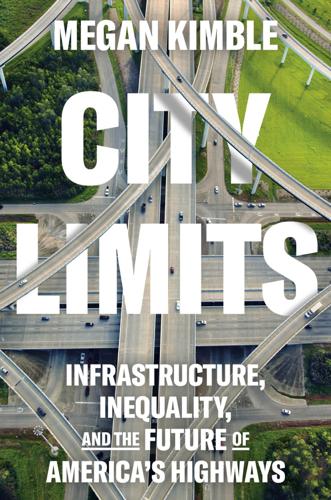
City Limits: Infrastructure, Inequality, and the Future of America's Highways
by
Megan Kimble
Published 2 Apr 2024
In Austin, the average driver emitted 12 percent more greenhouse gases in 2017 than they did in 1990, according to Boston University’s Database of Road Transportation Emissions. In Dallas–Fort Worth, they emitted 27 percent more. Why? We are driving much more. “Suburban driving, including commuting, has been a major contributor to the expanding carbon footprint of urban areas,” the project’s lead researcher concluded. And Texas is the elephant in the room. In 2018, the last time TxDOT did an analysis of the greenhouse gases generated on its roads, it found that on-road emissions in Texas account for nearly half a percent of total worldwide carbon dioxide emissions, more than some whole countries.

Dawn of the New Everything: Encounters With Reality and Virtual Reality
by
Jaron Lanier
Published 21 Nov 2017
Then, when the bean counters complain about how much a product is costing, facial sensors don’t make the final cut. I’ve seen this process play out repeatedly, in various companies. There might just be a gigantic payoff if we can bridge the uncanny valley, at least in VR headsets and avatars. It might make remote collaboration work better, and that might reduce humanity’s carbon footprint. Transportation brings people together for meetings, classes, comedy clubs, etc., but burns a lot of carbon and causes a lot of congestion. Straightforward camera-to-camera contact, such as in the familiar Skype experience, can do a lot, but not as much as we might like. Remember when I mentioned that there’s a subconscious information channel between people that’s transmitted by head motion?

Machine, Platform, Crowd: Harnessing Our Digital Future
by
Andrew McAfee
and
Erik Brynjolfsson
Published 26 Jun 2017
IBM has deployed its Watson technology in the kitchen, where it has come up with full cookbooks’ worth of recipes presenting novel combinations of ingredients and flavors that people are known to enjoy.§ The Shanghai Tower is a 128-story modern skyscraper in the heart of the city’s Pudong neighborhood. It’s highly energy efficient, using technology that reduces its carbon footprint by 34,000 metric tons per year, and sparing enough in its use of materials to save $58 million in construction costs. What’s more, we find its twisting, gleaming form quite beautiful. Both the building’s initial shape and structure were computer-generated. They were then advanced and refined by teams of human architects in a highly iterative process, but the starting point for these human teams was a computer-designed building, which is about as far from a blank sheet of paper as you can get.

Common Wealth: Economics for a Crowded Planet
by
Jeffrey Sachs
Published 1 Jan 2008
The bad news about the carbon budget is that every one of us on the planet participates in the carbon cycle, by driving, using electricity produced by fossil fuels, eating food, using fuel wood, and a thousand and one other actions. It often seems too complicated to get one’s arms around, especially if each of us is to adjust our own carbon budget (or carbon footprint, as our carbon-related actions are sometimes called). Yet we can simplify the picture by realizing that the vast bulk of carbon emissions is due to a small number of activities. Table 4.1 provides a useful breakdown. Table 4.1: Total Carbon Dioxide Emissions in 2007 (in gigatons and percent of total) Source: Author’s estimates based on fossil fuel emission estimates for 2005 from International Energy Agency (2007), extrapolated to 2007 assuming that all categories increase by 2.3 percent per annum during 2005–7.

How I Escaped My Certain Fate
by
Stewart Lee
Published 18 Aug 2010
Rob Newman subsequently recognised the monster he had helped to create, and tried to make amends for his crimes. By the end of the decade Newman had changed his name by deed poll to Robert Newman and retreated from the front line to became a humble aesthete, quietly trying to save the world with his thoughtful and moving live shows, and with a carbon footprint the size of an ant’s. But in contrast, today David Baddiel and Frank Skinner have massive luxury homes on the moon and their own private spacecraft made of gold and seal fur. The rest of us, who wanted Alternative Comedy to offer us merely the chance to subsist in an endless utopia of CND benefits and Women Only Cabaret Nights, have only shattered memories and shat-upon dreams.
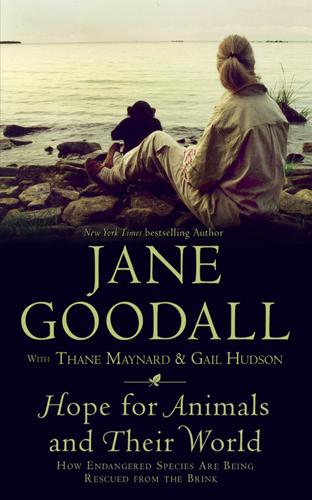
Hope for Animals and Their World
by
Jane Goodall
,
Thane Maynard
and
Gail Hudson
Published 1 Sep 2009
Support organizations that advocate for sustainable ocean policies, particularly in international waters. Limit seafood intake and educate yourself by visiting the Monterey Bay Aquarium’s Seafood Watch Program at www.montereybay aquarium.org. Print its pocket-size recommendations or download them onto your i-phone. Reduce your carbon footprint. Find ideas and inspiration from the Global Footprint Network at www.footprintnetwork.org. ANIMALS AND INSECTS ABBOTT’S BOOBY Take Action Learn more about the Christmas Island Seabird Project at www.biologie.uni-hamburg.de/zim/oeko/seabird_e.html. Sponsored by the University of Hamburg, this project investigates the Abbott’s booby as well as two other threatened bird species—the Christmas Island frigatebird and the red-tailed tropicbird—in order to improve conservation efforts.
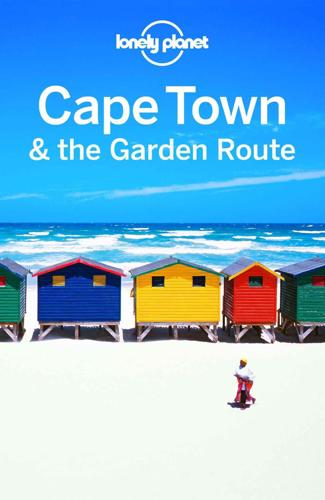
Lonely Planet Cape Town & the Garden Route (Travel Guide)
by
Lucy Corne
Published 1 Sep 2015
Many websites offer ‘carbon calculators’ that allow people to estimate the carbon emissions generated by their journey and, for those who wish to do so, to offset the impact of the greenhouse gases emitted with contributions to portfolios of climate-friendly initiatives throughout the world. Lonely Planet offsets the carbon footprint of all staff and author travel. Air There are many direct international flights into Cape Town. Generally it’s cheaper to book and pay for domestic flights within South Africa on the internet (rather than via a local travel agent). Airport Cape Town International AirportAIRPORT (CPT; GOOGLE MAP ; %021-937 1200; www.airports.co.za) The airport, 22km east of the city centre, has a tourist information office located in the arrivals hall.

Wilding: The Return of Nature to a British Farm
by
Isabella Tree
Published 2 May 2018
Horticulture , vol. 56, pp. 64–7 (1978) Williams, A. G., Audsley, E., and Sandars, D. L. ‘Determining the environmental burdens and resource use in the production of agricultural and horticultural commodities’. Main Report, DEFRA Research Project ISO 20 (Cranfield University, Bedford and DEFRA, 2006) Taylor, R. C., et al. Measuring holistic carbon footprints for lamb and beef farms in the Cambrian Mountains . Countryside Council of Wales report (2010) Ulrich, R., et al. ‘Stress recovery during exposure to natural and urban environments’. Journal of Environmental Psychology , vol. 11, pp. 201–30 (1991) Ulrich, R. S. ‘Aesthetic and affective response to natural environment’.
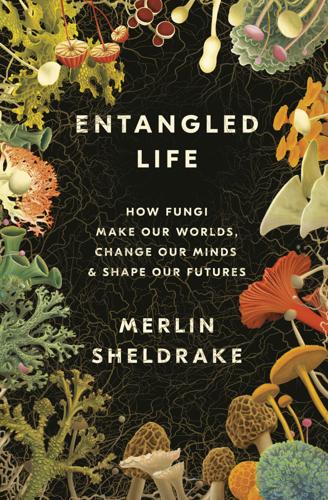
Entangled Life: How Fungi Make Our Worlds, Change Our Minds & Shape Our Futures
by
Merlin Sheldrake
Published 11 May 2020
Lovett B, Bilgo E, Millogo S, Ouattarra A, Sare I, Gnambani E, Dabire RK, Diabate A, Leger RJ. 2019. Transgenic Metarhizium rapidly kills mosquitoes in a malaria-endemic region of Burkina Faso. Science 364: 894–97. Lu C, Yu Z, Tian H, Hennessy DA, Feng H, Al-Kaisi M, Zhou Y, Sauer T, Arritt R. 2018. Increasing carbon footprint of grain crop production in the US Western Corn Belt. Environmental Research Letters 13: 124007. Luo J, Chen X, Crump J, Zhou H, Davies DG, Zhou G, Zhang N, Jin C. 2018. Interactions of fungi with concrete: Significant importance for bio-based self-healing concrete. Construction and Building Materials 164: 275–85.
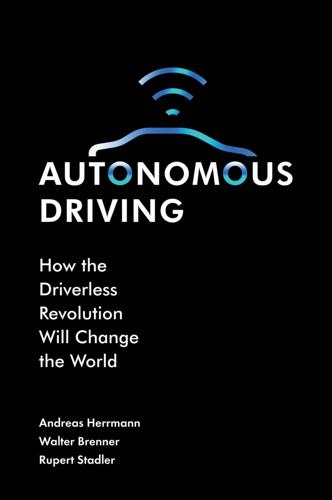
Autonomous Driving: How the Driverless Revolution Will Change the World
by
Andreas Herrmann
,
Walter Brenner
and
Rupert Stadler
Published 25 Mar 2018
Subsequently, the amount of time lost in London traffic jams per driver is expected to increase annually from 82 hours today to 97 hours in 2030. Currently, the extra time that London drivers add to their journey to ensure that they arrive promptly totals 252 hours a year. Analysing the costs resulting from congestion yields impressive figures: London leads the pack here with an annual $4,325. The study also examined the carbon footprint caused by stationary traffic or vehicles idling in congestion. Traffic jams alone caused additional carbon dioxide emissions of 15,434 tons per year in the four countries analysed 190 Table 17.2. Implications of Congestions in Four Cities. Criteria Year London Paris Stuttgart Los Angeles Average speed of city traffic 2013 21 mpha 24 mph 24 mph 21 mph 2030 16 mph 22 mph 23 mph 15 mph Annual number of additional hours due to congestion (per car commuter) 2013 82 hours 55 hours 60 hours 64 hours 2030 97 hours 60 hours 62 hours 74 hours Annual number of additional hours 2013 170 hours 115 hours 126 hours 134 hours planned to accommodate traffic (per car commuter) 2030 202 hours 124 hours 130 hours 155 hours Annual amount of extra (wasted) fuel 2013 147 litresb 99 litres 108 litres 116 litres Annual extra (wasted) fuel due to congestion (aggregate) 2013 113 million litresc 83 million litres 27 million litres 153 million litres Annual cost of congestion-related 2013 $4,325 $3,655 $4,107 $5,730 delays (per household) 2030 $6,259 $5,525 $5,552 $8,555 due to congestion (per vehicle) a In kilometres per hour: 21 mph (33.8 kph), 16 mph (25.7 kph), 24 mph (38.6 kph), 22 mph (35.4 kph), 23 mph (37.0 kph), 15 mph (24.1 kph).

Heat Wave: A Social Autopsy of Disaster in Chicago
by
Eric Klinenberg
Published 11 Jul 2002
The day after, an unprecedented portion of Americans told pollsters that climate change was caused by human behavior.11 Even doomsayers expressed hope that the decades of delay and denial might soon give way to meaningful action. There was something in the air. Of course I cannot know how things will look and feel when you read these words. There’s a narrow window of opportunity for reducing our carbon footprint before the damage is irreversible, and our adaptation efforts are already perilously late. Previous moments of climate optimism, like the Rio Summit in 1992 or the run-up to Copenhagen Convention in 2009, were followed by diplomatic failures and a crushing loss of faith among climate activists.

How to Murder Your Life: A Memoir
by
Cat Marnell
Published 30 Jan 2017
Yes, my addiction is still very much part of my life—distracting me with cravings, obsessive thoughts, and negative self-talk. Yes, I see my Chinese night pharmacist more often than I see my pregnant sister. Yes, I was recently “caught” doctor shopping on the Bowery and wound up getting a stupid flu shot instead of sleeping pills. Yes, my annual carbon footprint from orange plastic pill bottles alone is worthy of its own Al Gore documentary. Yes, I’m keeping my disease active as long as I’m not in recovery. By keeping away from AA or NA, I remain in the danger zone. Things could—and probably will—get bad again. Real talk! But the fact that I am writing this afterword means that my ambition is fighting back—against my addiction, against my self-destructive tendencies, against my death drive.
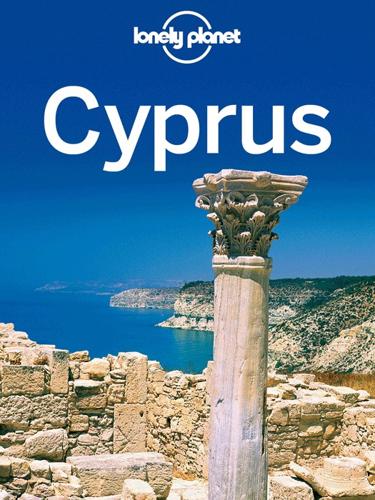
Cyprus Travel Guide
by
Lonely Planet
Many websites offer ‘carbon calculators’ that allow people to estimate the carbon emissions generated by their journey and, for those who wish to do so, to offset the impact of the greenhouse gases emitted with contributions to portfolios of climate-friendly initiatives throughout the world. Lonely Planet offsets the carbon footprint of all staffand author travel. Air There are scheduled flights and an ever-increasing number of charter and budget flights to Cyprus from most European cities and the Middle East. Flights are heavily booked in the high season (mid-summer). Tickets on scheduled flights tend to be expensive, but Europe-based travellers may be able to pick up cheaper tickets with budget companies.
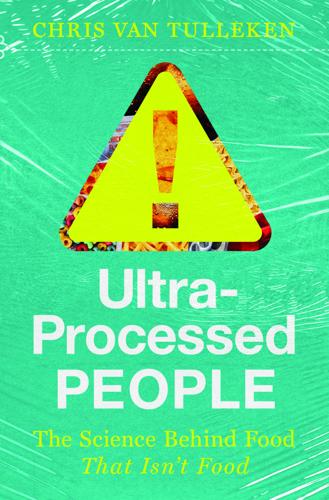
Ultra-Processed People: The Science Behind Food That Isn't Food
by
Chris van Tulleken
Published 26 Jun 2023
He speaks like a policy expert with a philosophy degree (which he is and has), while his long hair, goatee and oversized knitwear have a distinct surfer vibe. We met in a pub in east London for a vegan curry. I wanted to understand how much environmental damage is from UPF specifically as compared to simply producing food in general. ‘The important question,’ he said, ‘is not “What is the carbon footprint of a particular product?” but “Which foods would we find in a food system that helped to resolve the climate and nature crises?”’ According to Percival, there are obvious environmental questions posed by UPF, but the issue runs much deeper. The prevalence of UPF in our diet is symptomatic of a sickly food system: ‘At the moment, the global food system is fundamentally oriented towards producing as much food as possible.’

Build: An Unorthodox Guide to Making Things Worth Making
by
Tony Fadell
Published 2 May 2022
It’s important—to me, to the planet, to the next generation of humanity—that we move beyond the status quo. Ten percent recycled paper isn’t going to cut it. My goal was a fully compostable book made with 100 percent post-consumer recycled materials, no harmful chemicals, and materials and printing processes that had zero carbon footprint and used minimal natural resources. Unfortunately we couldn’t even get close to my ambitions. Our publishers worked with me to find the most innovative, cleanest processes and materials in the industry. But sufficiently green options often didn’t exist, or we couldn’t even find out what processes were used.

Frostbite: How Refrigeration Changed Our Food, Our Planet, and Ourselves
by
Nicola Twilley
Published 24 Jun 2024
Refrigeration tends to shift where the waste takes place, as opposed to eliminating it. Increased wealth typically leads to increased consumption of meat and dairy—a dietary transition that wouldn’t be possible without the reduced prices and reliable supply enabled by refrigeration. Given the carbon footprint of livestock, and cattle in particular, if expanding the global cold chain leads more people to adopt an American-style diet, we’re going to need a bigger planet. What’s more, although raising animals at industrial scale involves cruelties both small and large, those take place out of sight thanks to refrigeration, enabling meat eaters to ignore the consequences of their consumption.
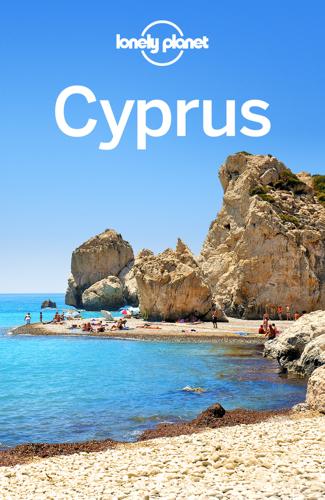
Lonely Planet Cyprus
by
Lonely Planet
,
Jessica Lee
,
Joe Bindloss
and
Josephine Quintero
Published 1 Feb 2018
Many websites offer ‘carbon calculators’ that allow people to estimate the carbon emissions generated by their journey and, for those who wish to do so, to offset the impact of the greenhouse gases emitted with contributions to portfolios of climate-friendly initiatives throughout the world. Lonely Planet offsets the carbon footprint of all staff and author travel. Air There are scheduled flights and an ever-increasing number of charter and budget flights to Cyprus from most European cities and the Middle East. Flights are heavily booked in high season (midsummer). Tickets on scheduled flights tend to be expensive, but Europe-based travellers may be able to pick up cheaper tickets with budget companies.

How the World Ran Out of Everything
by
Peter S. Goodman
Published 11 Jun 2024
American businesses are setting up factories in Mexico and Central America to retain low-cost manufacturing without having to contend with the vagaries of the Pacific Ocean. And some companies are embracing so-called reshoring, bringing factory production back to the United States. All of these objectives are being accelerated by deepening concern over the increasingly palpable manifestations of climate change. As companies consider their carbon footprints—prodded by activists and the omnipresent possibility of losing public favor—they are inclined to manufacture their goods closer to their customers. At investor gatherings and think-tank conferences, executives now pledge fealty to resilience and sustainability in the same way they used to celebrate efficiency.

Inner Entrepreneur: A Proven Path to Profit and Peace
by
Grant Sabatier
Published 10 Mar 2025
Another resilient sector comprises businesses specializing in energy efficiency and conservation solutions. These companies offer products and services such as LED lighting, insulation, smart-building technologies, and energy-efficient appliances. Their offerings align with the increasing demand for reducing energy consumption and minimizing carbon footprints. Sustainable agriculture businesses focusing on climate-resilient, precision, and organic-farming practices are less susceptible to climate-related disruptions and market volatility. Additionally, businesses specializing in green building materials, sustainable construction practices, and eco-friendly building designs are well positioned in the construction industry as environmental regulations become stricter. 5.

These Strange New Minds: How AI Learned to Talk and What It Means
by
Christopher Summerfield
Published 11 Mar 2025
One simple answer is that knowing what others think and want can be a complicated business and perhaps the model just gets it wrong (social cognition is hard, as we discover when scratching our heads about what to give for a birthday gift). Perhaps Pablo is generally very thrifty, and the AI wrongly assumes that when choosing energy suppliers he would prioritize lowering costs over minimizing his carbon footprint.[*2] However, there is also a more insidious possibility. Several of the major developers of AI systems, such as Meta and Google, are advertising companies. In a world where AI systems act as personal shoppers, then ‘advertising’ will necessarily be directed at the models, not the humans. Developers may be tempted to stealthily train AI systems to purchase from favoured providers.
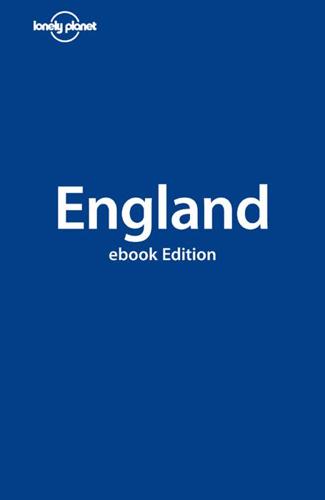
England
by
David Else
Published 14 Oct 2010
Return to beginning of chapter TRAVELLING RESPONSIBLY Eco-initiatives have cropped up all over the country, from transition towns and green B&Bs to yurt campsites and even Britain’s first plastic bag–free town (Modbury in North Devon). While there’s still a way to go, it’s perfectly possible to travel around the country while keeping your carbon footprint to a minimum. In a country as tiny as England there’s no need to fly anywhere (using trains and buses is much greener, despite the challenges of timetables and pricey fares). There’s also no need for a car in the main cities, although public transport is admittedly patchier in more rural areas.
…
Looking like a cross between a Venetian vaporetto and an English houseboat, complete with cushioned saloons and polished wood seats, it’s a stately way of seeing the lake, especially if you’re visiting Brantwood Click here. She makes five trips daily from mid-March to October. And you don’t need to fret about carbon emissions from the Gondola’s steam-plume; she’s switched from mucky coal to ecofriendly waste-wood logs, cutting her carbon footprint by 90%. Not to be outdone by the Gondola, the two Coniston Launches ( 015394-36216; www.conistonlaunch.co.uk) were converted to run on solar panels in 2005, making them just about the greenest ferries in England. The Northern route (adult/three to16 years return £6.20/3.10) calls at the Waterhead Hotel, Torver and Brantwood, while the Southern route (adult/three to 16 years return £8.60/4.80) sails to the jetties at Torver, Water Park, Lake Bank, Sunny Bank and Brantwood via Peel Island.
…
You should carry warm and waterproof clothing (even in summer), a map and compass (that you know how to use), some drink, food and high-energy stuff such as chocolate. If you’re really going off the beaten track, leave details of your route with someone. Cycling Cycling is a cheap and enjoyable way of getting around, with a tiny carbon footprint. Legally, you can cycle on any public road except motorways, although main roads (A-roads) can be busy and should also be avoided. Many B-roads suffer heavy motor traffic too, so the best places for cycling are the small C-roads and unclassified roads (lanes) that cover rural England, where you can tour through quiet countryside relatively untroubled by infernal combustion engines.
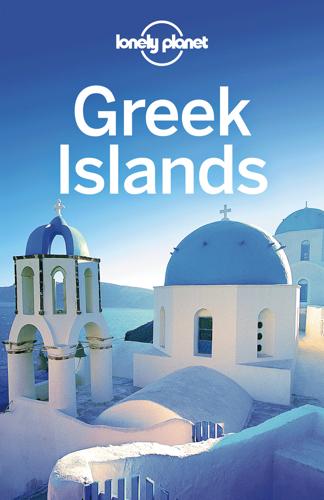
Lonely Planet Greek Islands
by
Lonely Planet
,
Alexis Averbuck
,
Michael S Clark
,
Des Hannigan
,
Victoria Kyriakopoulos
and
Korina Miller
Published 31 Mar 2012
Many websites offer ‘carbon calculators’ that allow people to estimate the carbon emissions generated by their journey and, for those who wish to do so, to offset the impact of the greenhouse gases emitted with contributions to portfolios of climate-friendly initiatives throughout the world. Lonely Planet offsets the carbon footprint of all staff and author travel. AIRLINES FLYING TO/FROM GREECE Olympic Air (OA; 801 801 0101; www.olympicair.com) is the country’s national airline with the majority of flights to and from Athens. Olympic flies direct between Athens and destinations throughout Europe, as well as to Cairo, İstanbul, Tel Aviv, New York and Toronto.
…
International train travel, in particular, has become much more feasible in recent years with speedier trains and better connections. You can now travel from London to Athens by train and ferry in less than two days. Also, by choosing to travel on the ground instead of the air, you’ll also be reducing your carbon footprint. It’s a win-win situation. Border Crossings For visa information, see Click here. ALBANIA The main crossing at Kakavia can have intensely slow queues. BUS The Greek railways organisation OSE (Organismos Sidirodromon Ellados; www.ose.gr) operates the majority of international buses in Greece.
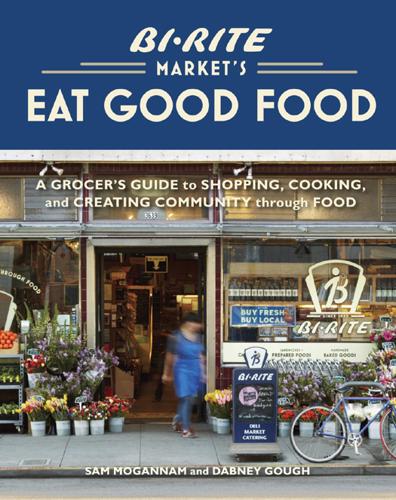
Bi-Rite Market's Eat Good Food: A Grocer's Guide to Shopping, Cooking & Creating Community Through Food
by
Sam Mogannam
and
Dabney Gough
Published 17 Oct 2011
In order for us to thrive, we must learn to feed ourselves and our own communities without relying on the industrial machine. Those of us who seek to change the status quo face some daunting goals: • Reducing our dependence on oil and the oil-intensive monocrops: corn, soy, and the like • Lessening our carbon footprint • Minimizing factory farming and highly processed, laboratory-driven foods • Reducing our exposure to chemical pesticides and fertilizers and our secondhand consumption of hormones and antibiotics • Strengthening our local economies and communities • Preserving unique breeds of livestock and produce • Improving our health and reducing our dependence on medication How can one person possibly make a difference in all these things?

That Used to Be Us
by
Thomas L. Friedman
and
Michael Mandelbaum
Published 1 Sep 2011
They obviously did not get the word and they are unabashedly optimistic that if something they strongly believe in is not happening, it is because they’re not doing it. Howe and Ringwald joined with Kartikeya Singh, who was then starting the Indian Youth Climate Network (IYCN) to connect young climate leaders in India, a country coming under increasing global pressure to manage its carbon footprint. “India is full of climate innovators, but they are so spread out across this huge country that many people don’t get to see that these solutions are working right now,” Howe explained. “We wanted to find a way to bring people together around existing solutions to inspire more action and more innovation.

The Coke Machine: The Dirty Truth Behind the World's Favorite Soft Drink
by
Michael Blanding
Published 14 Jun 2010
After the incident, it was revealed, BP had lobbied against a simple safety measure that could have prevented the accident. Even when the environmental branding isn’t such obvious “greenwash ing,” it obscures one simple fact: Most of the initiatives companies have taken to increase efficiency and drive down their carbon footprints are also just good business. That’s certainly the case with Coke, whose efforts to reduce emissions, water use, and electricity, after all, also mean reducing costs. Asked to name anything the company is doing that is actually cost ing it money, Roselli hesitates. “Well, the hybrid trucks cost more,” he says.

Googled: The End of the World as We Know It
by
Ken Auletta
Published 1 Jan 2009
Companies like the Gap and Hallmark donate a portion of their profits to fight AIDS; Starbucks gave comprehensive health care to its employees, including part-timers. General Electric devised what it called an ecomagination strategy to address climate change and reap profits from it. WPP started issuing a Corporate Responsibility Report in 2002, and has promised to reduce its carbon footprint by 20 percent. One of America’s most powerful marketers, Jim Stengel, in late 2008 left his job as global marketing chief for Procter & Gamble to fund a private consulting venture to advise companies how to build trust in brands. His task, he said, is to create “emotional equity,” by which he means that consumers will believe the company cares not just about their dollars but about them.
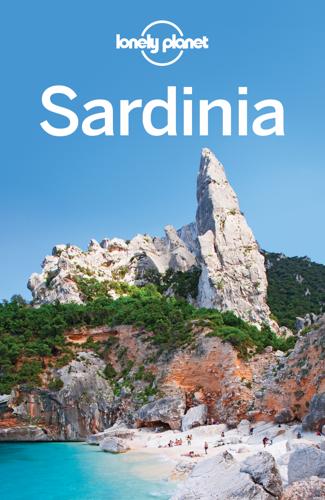
Sardinia Travel Guide
by
Lonely Planet
Many websites offer ‘carbon calculators’ that allow people to estimate the carbon emissions generated by their journey and, for those who wish to do so, to offset the impact of the greenhouse gases emitted with contributions to portfolios of climate-friendly initiatives throughout the world. Lonely Planet offsets the carbon footprint of all staff and author travel. Air High season in Sardinia is June to September. Holidays such as Easter also see a huge jump in prices. Airports & Airlines Flights from Italian and European cities serve Sardinia’s three main airports. Flight schedules are available on the websites of all three airports.

Ukraine
by
Lonely Planet
Many websites offer ‘carbon calculators’ that allow people to estimate the carbon emissions generated by their journey and, for those who wish to do so, to offset the impact of the greenhouse gases emitted with contributions to portfolios of climate-friendly initiatives throughout the world. Lonely Planet offsets the carbon footprint of all staff and author travel. Land Crossing the border into Ukraine is a fairly straightforward, if slightly drawn-out, affair. Expect customs personnel to scrutinise your papers and search your vehicle. Heading out of Ukraine into the EU and Schengen zone, be prepared for delays.
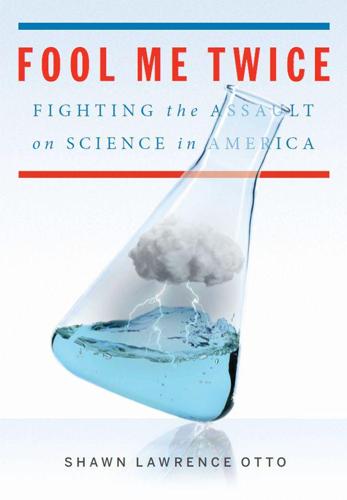
Fool Me Twice: Fighting the Assault on Science in America
by
Shawn Lawrence Otto
Published 10 Oct 2011
What if we had a robust energy-supply system with a smart grid, so that someone with a bright idea about putting energy into the grid could hook up and make money on that. Think of the possibilities! All the ways we can make life better, easier, and cheaper by doing things that also happen to reduce our carbon footprint.” What climate scientists, politicians, economists, and engineers should be talking about is the problem and the concrete solutions: How do we plan communities and energy supply in ways that work better for people, that give them more choices—that increase their liberty. That is what science and America have always been about.

Canary Islands Travel Guide
by
Lonely Planet
Many websites offer ‘carbon calculators’ that allow people to estimate the carbon emissions generated by their journey and, for those who wish to do so, to offset the impact of the greenhouse gases emitted with contributions to portfolios of climate-friendly initiatives throughout the world. Lonely Planet offsets the carbon footprint of all staff and author travel. Bus A bus in the Canary Islands is called a guagua, pronounced ‘wa-wa’. If you’ve bounced around Latin America, you’ll be familiar with the term. Still, if you ask about autobuses, you’ll be understood. Every island has its own interurban service. One way or another, they can get you to most of the main locations but, in many cases, there are few runs each day.
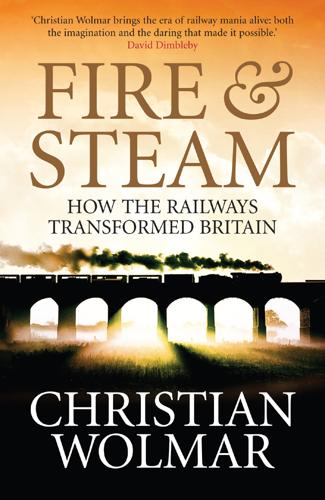
Fire and Steam: A New History of the Railways in Britain
by
Christian Wolmar
Published 1 Mar 2009
While trains are indeed more environmentally friendly than any other form of transport, their record in that respect has deteriorated in recent years as rolling stock has become heavier and consequently less fuel-efficient due to safety and disability legislation, as well as the routine fitting of air conditioning. In order to retain its environmental advantage, rail transport must improve its fuel efficiency. In particular, the electrification programme needs to be revived, as electricity can be generated from non-carbon sources such as nuclear, wind and hydro, which reduces the carbon footprint. Technological developments on the track, too, may be significant in improving performance. It is quite remarkable that the same basic method of constructing railways – using rails laid on sleepers resting on ballast – that was used on the Liverpool to Manchester railway, opened in 1830, was also used on High Speed One, completed in 2007.
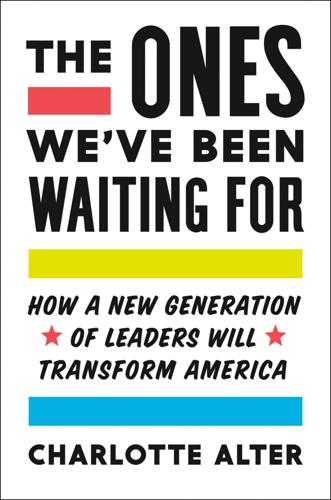
The Ones We've Been Waiting For: How a New Generation of Leaders Will Transform America
by
Charlotte Alter
Published 18 Feb 2020
He spent his first night as mayor sleeping on the couch of a tenant. Jacob Frey (b. 1981) made housing a central focus of his run for mayor of Minneapolis. He called housing a “full-blown crisis for millennials.” Because they were marrying later, having fewer kids, and trying to reduce their carbon footprint, millennials wanted to live someplace dense and walkable, with public transportation: boomers’ exurban McMansions held little appeal for them. Once he was elected, Frey eliminated single-family exclusive zoning in Minneapolis, allowing more duplexes and triplexes to be built as part of a $40 million affordable housing plan for the city.

AI 2041: Ten Visions for Our Future
by
Kai-Fu Lee
and
Qiufan Chen
Published 13 Sep 2021
Your precious anti-terrorism AI sees only quantified people and their various data tags: age, income, position, race, sexual orientation, company market value, consumer preferences, health status…it can’t see beyond that. You people think technological change can solve all the world’s problems, even if it brings bigger problems. You’re always trying to solve them with brute force, never mind the carbon footprint. Human civilization is a car driving toward a cliff. Accelerationists keep stepping on the gas.” Marc made an exaggerated gesture of explosion. “So your plan is to punish humans by creating more explosions? What do you stand to gain from that?” Robin wanted to anger him, throw him off balance.
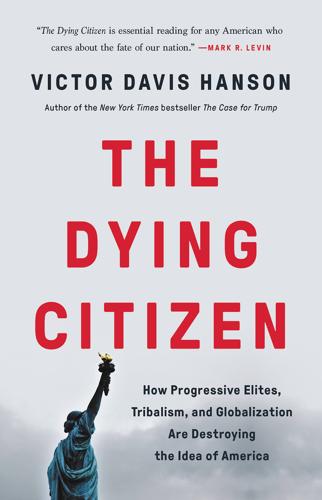
The Dying Citizen: How Progressive Elites, Tribalism, and Globalization Are Destroying the Idea of America
by
Victor Davis Hanson
Published 15 Nov 2021
Or as Walter Russell Mead put it of the Daviosi, There is something inescapably ridiculous about a gathering this self-important; certainly Marie Antoinette and her friends dressing up as shepherdesses to celebrate the simple life have nothing on the more than 100 billionaires descending, often by private jet, on an exclusive Swiss ski resort for four days of ostentatious hand-wringing about the problems of the poor and the dangers of climate change. This year an earnest young aide at registration told me that, to reduce the event’s carbon footprint, no paper maps of the town were being distributed; one could almost feel the waves of relief from the nearby Alpine glaciers at this sign of green progress.4 Globalization and its architects are not just hypocritical but often absurd. Michael Bloomberg, who spent $1 billion in failed efforts to win the 2020 Democratic nomination, censured his own American reporters at Bloomberg News when they criticized practices of the grandees of the Chinese Communist Party.
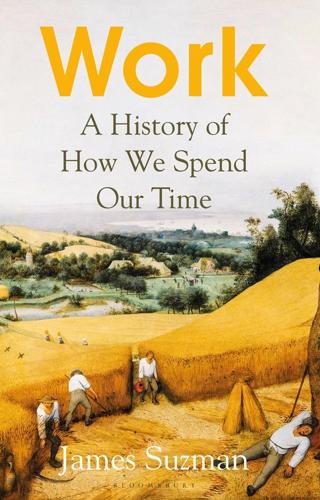
Work: A History of How We Spend Our Time
by
James Suzman
Published 2 Sep 2020
Much of the remainder comes from the manufacture and decomposition of fertilisers, the power required to manufacture and run farm machinery, the infrastructure necessary to process, store and transport food products, and the megatons of methane that escape the bloated guts of livestock. In modern industrialised societies, where most of our energy is sourced from burning fossil fuels, carbon footprints offer a rough proxy for energy capture. It is only a rough proxy because a minor but nevertheless growing proportion of the energy we use is now sourced from ‘renewables’ like wind, and we are getting far better at using energy more efficiently and incurring lower net losses to heat. This means that in most instances a pound of coal does much more useful work than it used to.

Straphanger
by
Taras Grescoe
Published 8 Sep 2011
While 16 percent of the nation’s power comes from wind and solar energy, nine in ten Copenhageners rely on district heating, in which heat generated by electricity production is channeled through super-insulated pipes to homes throughout Greater Copenhagen. While most Danish electricity plants still burn coal, district heating is so efficient its carbon footprint is lower even than electricity from hydro dams. (The steaming manholes of Manhattan, by the way, are a legacy of the New York Steam Company’s district heating system, which dates from 1882 and still provides heat to about 2,000 customers.) Though their economy has grown by 70 percent in the last thirty years, Danes use the same amount of energy today as they did in 1980.

The Future Is Asian
by
Parag Khanna
Published 5 Feb 2019
When China buys up global lithium supplies to make cheap batteries for electric cars and sells affordable solar panels worldwide, it brings revenue to Chinese companies but also contributes to reducing global greenhouse gas emissions. Indeed, China, Japan, and India are all major exporters of the solar, wind, nuclear, and other energy technologies that reduce our global carbon footprint. This is a reminder that while China makes many contributions to global governance, these join a long history of Asian activity. Japan has been one of the world’s largest foreign assistance donors, providing more than $300 billion in aid to 185 countries. It continues to be second to none in its generosity as a contributor to human development.
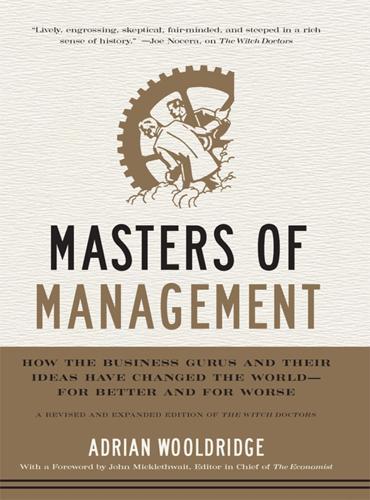
Masters of Management: How the Business Gurus and Their Ideas Have Changed the World—for Better and for Worse
by
Adrian Wooldridge
Published 29 Nov 2011
In Florida’s view, cities should forget about wooing companies with promises of light taxes and good roads; instead, they should focus on luring creative people. This means building lots of “creative districts” with lofts and blues clubs (and lots of bike paths so that you can get from one creative hub to another without adding to the world’s carbon footprint). It also means embracing liberal values. For it is a fact demonstrated by a dozen indexes—gay indexes, bohemian indexes, and creativity indexes at the very least—that creative people will congregate only where tolerance is cherished. The Rise of the Creative Class has been good to Florida.
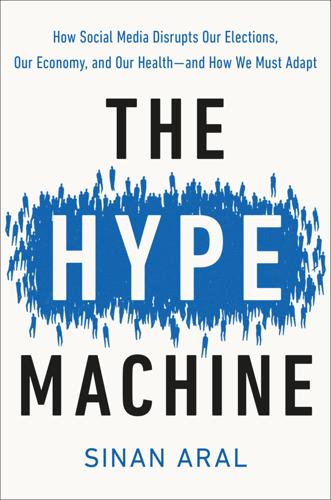
The Hype Machine: How Social Media Disrupts Our Elections, Our Economy, and Our Health--And How We Must Adapt
by
Sinan Aral
Published 14 Sep 2020
Achieving collective action requires communicating everyone’s commitment to cooperate, as well as coordinating their joint action. The collective action problem lies at the heart of many of today’s most pressing global challenges. Addressing climate change requires large numbers of people (and businesses) to cooperate to reduce their carbon footprints, even when no one individual’s action will move the needle. Vibrant democracies depend on large numbers of people voting, even though each person’s vote is largely inconsequential. Combating contagious diseases requires enough people to remain socially distant or enough vaccinations to achieve herd immunity, even when misinformation erroneously convinces some people that the threat is exaggerated or some parents that their vaccination decisions will harm their kids.
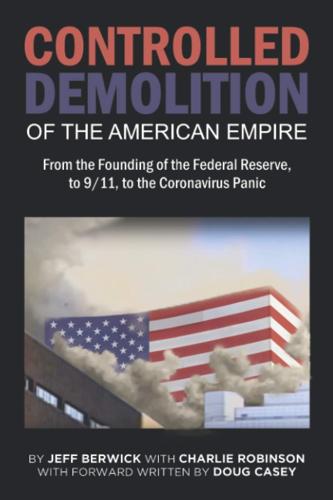
The Controlled Demolition of the American Empire
by
Jeff Berwick
and
Charlie Robinson
Published 14 Apr 2020
The lower class of “useless eaters” gets fed the nutritionally deficient GMO food and they can chase it down with fluoride-laden polluted water, the same water that will be strictly rationed due to water shortages. They will be forced to live in 300 square foot micro-apartments inside high-density cities in order to combat global warming, and their carbon footprint will be monitored and taxed through the smart grid while imposing forced austerity on the masses. Due to the tight living quarters, vaccination will be mandatory for “herd immunity”, and all children will need to be fully immunized with all 100+ shots before they are allowed to attend the government schools teaching Common Core.

The Rough Guide to Cyprus (Travel Guide eBook)
by
Rough Guides
Published 30 Apr 2019
We believe it helps us understand the world we live in and the people we share it with – and of course tourism is vital to many developing economies. But the scale of modern tourism has also damaged some places irreparably, and climate change is accelerated by most forms of transport, especially flying. We encourage our authors to consider the carbon footprint of the journeys they make in the course of researching our guides. The north/south divide and the “TRNC” After its occupation by the Turkish army, the north declared itself to be the “Turkish Federated State of Cyprus” before unilaterally declaring independence in 1983 as the “Turkish Republic of North Cyprus”.
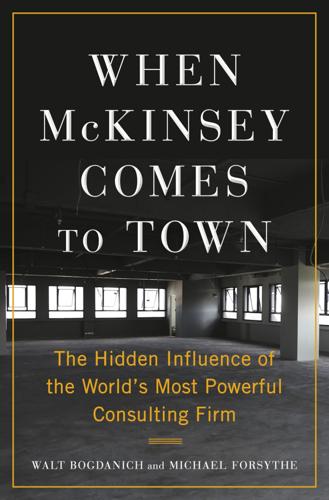
When McKinsey Comes to Town: The Hidden Influence of the World's Most Powerful Consulting Firm
by
Walt Bogdanich
and
Michael Forsythe
Published 3 Oct 2022
Scientists said that Greenland’s million-year-old ice sheet was melting so fast it might have passed the point of no return, meaning even if global warming stopped, it would continue to melt, threatening to inundate the world’s coastal cities. Anyone reading the barrage of urgent calls from McKinsey to reduce carbon emissions might get the impression that the firm is a Very Green Company. It deploys “green teams” in its offices across the world, ferreting out ways to reduce the firm’s carbon footprint, from reducing paper use to cutting back on travel through more videoconferencing. The firm invests in projects such as solar cookstoves in China and rain-forest preservation in Panama to offset its emissions. McKinsey even calculates its own total carbon emissions, which take into account the air travel logged by McKinsey’s road-warrior consultants.

Investing Amid Low Expected Returns: Making the Most When Markets Offer the Least
by
Antti Ilmanen
Published 24 Feb 2022
The former approach was clearly the more popular until recently; today, ESG investors increasingly feel that screens alone cannot bring about the real-world outcomes they desire. The common number-one concern of climate change is an excellent case study.6 Without going into details, we can debate the metrics and approaches used. The literature focuses on carbon intensity, but purists may prefer a focus on total carbon footprint to minimize it. Either way, we can measure scope 1, 2, or 3 emissions.7 Once investors have a measure of carbon emissions, they can adjust their portfolio to meet their emissions goals. The most common approach involves underweighting or avoiding the “brown” (utilities, energy, or materials) industries to reduce the carbon exposure of the portfolio (or regionally avoiding emerging markets, which tend to be overweight these “brown” industries).

The Taste of Empire: How Britain's Quest for Food Shaped the Modern World
by
Lizzie Collingham
Published 2 Oct 2017
Those days of certainty about agriculture have long since gone. We now worry about the ecological impact of the green revolution and whether we really want to eat vegetables liberally sprinkled with pesticides or meat impregnated with growth hormones. And if not, how would it be possible to make organic food affordable for all? Our concern about the carbon footprint of our meals leaves us weighing up whether it is better to eat tomatoes ripened in sunny climes and transported great distances by lorry or to opt for ones grown locally in heated greenhouses. Nowadays we find ourselves buying an array of foodstuffs in packaging emblazoned with Union Jacks in a celebration of local food production that smacks uncomfortably of 1930s nationalism.
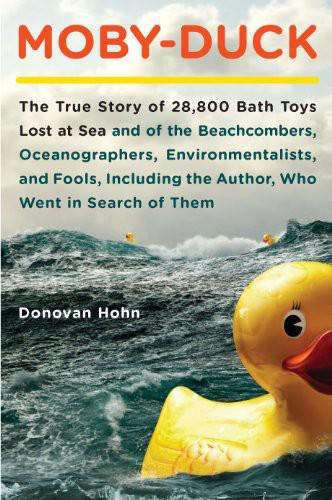
Moby-Duck: The True Story of 28,800 Bath Toys Lost at Sea and of the Beachcombers, Oceanographers, Environmentalists, and Fools, Including the Author, Who Went in Search of Them
by
Donovan Hohn
Published 1 Jan 2010
As soon as the ship had tied up, customs agents came aboard, and as soon as they cleared me, I rushed down the gangway onto the deserted sodium-lit pier.30 Among containers stacked six high in rows, I wandered, searching for the exit. I’d had enough of seafaring. I was ready to fly—not sail, carbon footprint be damned—to the insular city of the Manhattoes and stay there a good long while. Ready to pend myself up in lath and plaster, tie myself to a counter, nail myself to a bench or clinch myself to a desk, so long as said pending, tying, nailing, or clinching came with decent health benefits and a retirement plan.

One Less Car: Bicycling and the Politics of Automobility
by
Zack Furness
and
Zachary Mooradian Furness
Published 28 Mar 2010
The latter activity is defended with a Charlton Heston-esque vigor that positions the steering wheel as the device from which americans will ultimately have their cold, dead hands pried loose—a scenario that has, unfortunately, been the grim reality for millions of U.S. drivers since the beginning of the twentieth century. instead of assertively grappling with one of the major ecological problems of the day, we are settling instead for a charade of a debate about transportation and environmentalism in which fuel efficiency and hybrid power are buzzwords in a new “green” lexicon: an obfuscating discourse that (once again) directs attention to a set of individualized solutions for a complex of cultural, political, and otherwise globally embedded problems. We speak of one’s carbon footprint, for example, as the indelible mark of environmental impact when it would be more accurate to talk about a city’s tire track, a nation’s skid mark, or a culture’s road rash. Within these narrow parameters, corporations and other “green” capitalists prove themselves adept at reframing and repackaging environmentalism not as a radical political movement or a struggle for social justice, but rather, a feel-good lifestyle for a new demographic of consumers who are supposed to be satiated by the eco-friendliness of new automotive interior fabrics, or somehow impressed by the “green” features of new hybrid SUvs—vehicles capable of achieving the futuristic efficiency of Ford’s 1908 Model-T (up to twenty-one miles per gallon).10 in the United States, where the longevity of automobility is firmly secured by the country’s populist support for passive environmental goals and free market capitalism, it is likely that an affordable electric car will make the illusion of never-ending automobility that much more tenable, just as critiques of driving will seem all the more grouchy and unfounded if oil ceases to become the issue. yet buried within the burgeoning love affair with the electric car— or at least the idea of the electric car—is a much dirtier love affair with the invisible protagonist of the impending electric car drama: coal.

Cities Under Siege: The New Military Urbanism
by
Stephen Graham
Published 30 Oct 2009
This ‘transnational capitalist class’ now forms what Citigroup researchers have called ‘the dominant drivers of demand’ in many contemporary economies. They operate to skim the ‘cream off productivity surges and technology monopolies, then spend … their increasing shares of national wealth as fast as possible on luxury goods and services.’17 In the process, they generate enormous ecological and carbon footprints. Meanwhile, amid the turmoil of collapsing finance systems, ‘most of the world watches the great binge on television’.18 On the other hand, and not surprisngly, social inequalities are also rising rapidly within nations, regions and cities. Many economists would concur with Giovanni Andrea Cornia when he argues that ‘most of the recent surge in income polarization [within nations] would appear to be related to the policy drive towards domestic deregulation and external liberalization.’19 This has tended to concentrate wealth within social classes, corporations and locations that are capable of profiting from privatization and the extension of finance capital, while undermining wages, wealth and security for more marginalized people and places.

Diet for a New America
by
John Robbins
We need to create economic policies that take into account the ecosystem on which all economic life depends. We need to invest our genius and our resources less in making war and more in reforestation, soil conservation, education, and family planning. We need to halt the liquidation of the planet’s natural assets. We need to develop food systems with a lower carbon footprint that are more local and more organic. And while we’re doing these things, we need to heed the avalanche of studies telling us that shifting to a plant-strong diet is clearly one of the most effective things we can do if we want to protect the climate. Not surprisingly, the U.S. meat industry has tried to counter these studies and has protested that livestock production isn’t to blame for global warming.

Rome
by
Lonely Planet
Many websites offer 'carbon calculators' that allow people to estimate the carbon emissions generated by their journey and, for those who wish to do so, to off set the impact of the greenhouse gases emitted with contributions to portfolios of climate-friendly initiatives throughout the world. Lonely Planet off sets the carbon footprint of all staff and author travel. To/From the Airport The easiest way to get to/from the airport is by train but there are also bus services and private shuttle services. Leonardo Express train (adult/child €14/free) Runs to/from platforms 27 and 28 at Stazione Termini. Departures from Termini every 30 minutes between 5.52am and 10.52pm, from the airport between 6.36am and 11.36pm.

San Francisco
by
Lonely Planet
Many websites offer 'carbon calculators' that allow people to estimate the carbon emissions generated by their journey and, for those who wish to do so, to off set the impact of the greenhouse gases emitted with contributions to portfolios of climate-friendly initiatives throughout the world. Lonely Planet off sets the carbon footprint of all staff and author travel. Norman y Mineta San Jose International Airport Fifty miles south of downtown San Francisco, Norman y Mineta San Jose International Airport (SJC; ; 408-501-0979; www.sjc.org) is a straight shot into the city by car via Hwy 101. The VTA Airport Flyer (bus 10; tickets $2; from 5am to midnight) makes a continuous run between the Santa Clara Caltrain station (Railroad Ave and Franklin St) and the airport terminals, departing every 15 to 30 minutes.
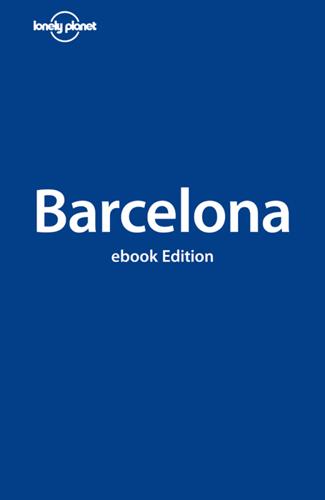
Barcelona
by
Damien Simonis
Published 9 Dec 2010
We encourage the use of more climate-friendly travel modes where possible and, together with other concerned partners across many industries, we support the carbon offset scheme run by ClimateCare. Websites such as climatecare.org use ‘carbon calculators’ that allow people to offset the greenhouse gases they are responsible for with contributions to portfolios of climate-friendly initiatives throughout the developing world. Lonely Planet offsets the carbon footprint of all staff and author travel. * * * BEB (Map; 93 451 50 31; www.beb.com.es; Carrer d’Enric Granados 61; rental per day from €20; 10am-2pm & 4.30-8.30pm) Offers more relaxed cyclists the option of renting motorised bikes. You are provided with bike, battery and charger. Discounts are available for longer periods.

ZeroMQ
by
Pieter Hintjens
Published 12 Mar 2013
They are blobs of zero bytes to gigabytes large. When you want to represent data you choose some other product on top, such as Google’s protocol buffers, XDR, and others. It handles network errors intelligently. Sometimes it retries, sometimes it tells you an operation failed. It reduces your carbon footprint. Doing more with less CPU means your boxes use less power, and you can keep your old boxes in use for longer. Al Gore would love ØMQ. Actually, ØMQ does rather more than this. It has a subversive effect on how you develop network-capable applications. Superficially, it’s a socket-inspired API on which you do zmq_msg_recv() and zmq_msg_send().
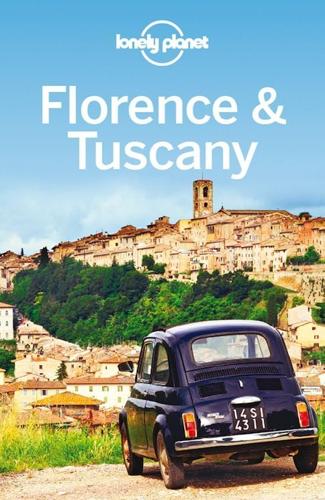
Lonely Planet Florence & Tuscany
by
Lonely Planet
,
Virginia Maxwell
and
Nicola Williams
Published 1 Dec 2013
Many websites offer 'carbon calculators' that allow people to estimate the carbon emissions generated by their journey and, for those who wish to do so, to off set the impact of the greenhouse gases emitted with contributions to portfolios of climate-friendly initiatives throughout the world. Lonely Planet off sets the carbon footprint of all staff and author travel. Air High season for air travel to Italy is mid-April to mid-September. Shoulder season runs from mid-September to the end of October and from Easter to mid-April. Low season is generally November to March, but tickets around Christmas and Easter increase in price or sell out.

Lonely Planet Panama (Travel Guide)
by
Lonely Planet
and
Carolyn McCarthy
Published 30 Jun 2013
Many websites offer 'carbon calculators' that allow people to estimate the carbon emissions generated by their journey and, for those who wish to do so, to off set the impact of the greenhouse gases emitted with contributions to portfolios of climate-friendly initiatives throughout the world. Lonely Planet off sets the carbon footprint of all staff and author travel. Air Panama has two international airports. Most international flights arrive to Panama City’s Tocumen International Airport (www.tocumenpanama.aero), 35km from downtown. Located 5km southeast of the Costa Rican border, David’s Aeropuerto Enrique Malek ( 721-1072) frequently handles flights to and from San José.
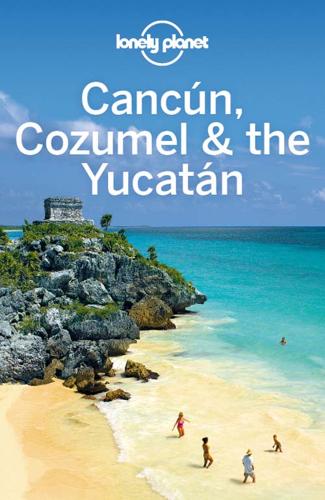
Lonely Planet Cancun, Cozumel & the Yucatan (Travel Guide)
by
Lonely Planet
,
John Hecht
and
Sandra Bao
Published 31 Jul 2013
Many websites offer 'carbon calculators' that allow people to estimate the carbon emissions generated by their journey and, for those who wish to do so, to off set the impact of the greenhouse gases emitted with contributions to portfolios of climate-friendly initiatives throughout the world. Lonely Planet off sets the carbon footprint of all staff and author travel. Air Most visitors to the Yucatán arrive by air. Direct flights normally originate from an airline’s hub city and connecting flights often go through Mexico City. Airports & Airlines The majority of flights into the peninsula arrive at busy Aeropuerto Internacional de Cancún (CUN; 998-848-7200; www.asur.com.mx; Carretera Cancún-Chetumal, Km 22; ).

Them And Us: Politics, Greed And Inequality - Why We Need A Fair Society
by
Will Hutton
Published 30 Sep 2010
Growth must be progressively decarbonised to limit atmospheric concentrations of ‘CO2 equivalent’ to 450 parts per million, a level that is believed to be consistent with a global average temperature increase of about two degrees centigrade. During the 2010s the foundations will be laid of an economy and society that must burn fewer fossil fuels and generate a lower carbon footprint. A start must be made on transforming the civilisation that was built on the car, the suburb and cheap individual mobility. The world economy is beset by a massive imbalance between those who save – China and, to a lesser extent, Japan and Germany – and those who do not – notably the United States and Britain.

More: The 10,000-Year Rise of the World Economy
by
Philip Coggan
Published 6 Feb 2020
The problem is that both wind and sun are intermittent. That means traditional energy sources – coal, oil, gas – will still be needed as a back-up. A move to renewable energy may require a similar transformation of the global economy to the one that accompanied the rise of coal and oil. It may need special taxes that focus on the carbon footprint of traditional energy sources. Renewables will only be able to capture a large share of the energy market if a way is found to store energy on sunny and windy days, so it can used in cloudy, calm periods. That will require better, cheaper batteries than we have now. Or perhaps the scientists studying clams and artificial photosynthesis will crack the problem.

Discover Caribbean Islands
by
Lonely Planet
Many websites offer ‘carbon calculators’ that allow people to estimate the carbon emissions generated by their journey and, for those who wish to do so, to offset the impact of the greenhouse gases emitted with contributions to portfolios of climate-friendly initiatives throughout the world. Lonely Planet offsets the carbon footprint of all staff and author travel. Rental Car rentals are available on nearly all of the islands, with a few exceptions (usually because they lack roads). On most islands there are affiliates of the international chains, but local rental agencies may have better rates. Road Rules Road rules vary by island.

If Mayors Ruled the World: Dysfunctional Nations, Rising Cities
by
Benjamin R. Barber
Published 5 Nov 2013
Cities that are also ports are where we often find dense concentrations of people, carbon-powered vehicles (trucks, buses, cars, and ships), and energy-consuming habitations (residential and business). Density of population is a boon to conservation, but urban roadways, port facilities, and buildings are invitations to ecological abuse. Much of Los Angeles’ carbon footprint came from its massive port (now revamped); in New York City, buildings are the more obvious culprits (insulation and heating improvements are a key to energy saving there); in Beijing, cars and factories do much of the damage (rapid modernization gets the blame, along with the windless bowl in which the city is set).

Florence & Tuscany
by
Lonely Planet
Many websites offer ‘carbon calculators’ that allow people to estimate the carbon emissions generated by their journey and, for those who wish to do so, to offset the impact of the greenhouse gases emitted with contributions to portfolios of climate-friendly initiatives throughout the world. Lonely Planet offsets the carbon footprint of all staff and author travel. Airlines International airlines flying into the region include the following: Aegean Airlines (www.aegeanair.com) Aer Lingus (www.aerlingus.com) Air Berlin (www.airberlin.com) Air France (www.airfrance.com) Air Malta (www.airmalta.com) Albanian Airlines (www.albanianair.com) Austrian (www.aua.com) British Airways (www.ba.com) Brussels Airlines (www.brusselsairlines.com) Carpatair (www.carpatair.com) Czech Airlines (www.czechairlines.com) Delta (www.delta.com) easyJet (www.easyjet.com) Finnair (www.finnair.com) Germanwings (www.germanwings.com) Iberia (www.iberia.com) Iceland Express (www.icelandexpress.com) Jet2 (www.jet2.com) Jet4you (www.jet4you.com) KLM (www.klm.com) Lufthansa (www.lufthansa.com) Luxair (www.luxair.lu) Meridiana (www.meridiana.it) Norwegian (www.norwegian.com) Royal Air Maroc (www.royalairmaroc.com) Ryanair (www.ryanair.com) SAS (www.flysas.com) Swiss (www.swiss.com) TAP (www.flytap.com) Thomsonfly (www.thomsonfly.com) Transavia (www.transavia.com) Turkish Airlines (www.thy.com) Vueling (www.vueling.com) Wizzair (http://wizzair.com) Domestic airlines flying into the region include the following: Air Italy (www.airitaly.it) Air One (www.flyairone.it) AirDolomiti (www.airdolomiti.it) Alitalia (www.alitalia.it) Belleair (www.belleair.it) Blue Air (www.blueairweb.com) Neos (www.neosair.it) Prima (www.primair.it) Skybridge AirOps (www.skybridgeairops.com) WindJet (http://w4.volawindjet.it) AIRPORTS SERVICING TUSCANY AIRPORT ALTERNATIVE NAMES LOCATION WEBSITE Pisa International Airport (PSA) Aeroporto Galileo Galilei Pisa www.pisa-airport.com Florence airport (FLR) Amerigo Vespucci; Peretola Florence www.aeroporto.firenze.it Umbria International Airport (PEG) S Egidio Perugia, Umbria www.airport.umbria.it Bologna Airport (BLQ) Aeroporto G Marconi Bologna, Emilia-Romagna www.bologna-airport.it Land Border Crossings Entering Italy is relatively simple.
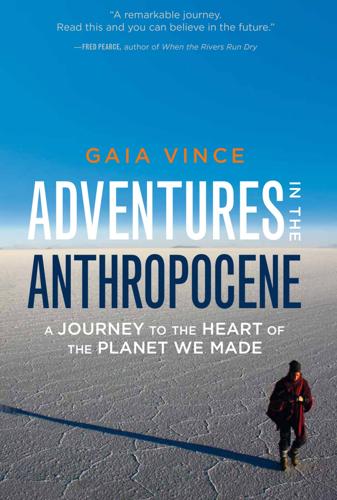
Adventures in the Anthropocene: A Journey to the Heart of the Planet We Made
by
Gaia Vince
Published 19 Oct 2014
Hot water for showers is already being provided by a heat-recovery system, with backup from a biofuel system generated from the restaurant’s waste food. These efforts should be sufficient to make the resort’s diesel generator obsolete, he hopes. Now, the resort is working towards offsetting the carbon footprint of its visitors’ international flights, through tree-planting projects around the world. The human – social – environment is as important to Sonu as the natural marine one. He employs twice as many local staff as other resorts, and invests in them and their villages through various projects, including a scheme in which tourists spend several days volunteering with Maldivians to earn ten days’ free holiday at the resort.

The Rough Guide to Cape Town, Winelands & Garden Route
by
Rough Guides
,
James Bembridge
and
Barbara McCrea
Published 4 Jan 2018
Menus often feature a low-carb, high-fat option for diners on the Banting diet, which is popular locally and sometimes called the Noakes diet, having been promoted by controversial media personality Professor Tim Noakes of the University of Cape Town. Ethical eating It’s a sad fact, but fish stocks are declining worldwide. If you want to do your bit and be ecologically responsible, go for a tasty Cape fish like yellowtail, which is not endangered and has a low carbon footprint, coming straight from the seas around the city. Although they are on many menus, Cape salmon (Geelbek) and to a lesser degree kingklip are best avoided ethically. The Southern African Sustainable Seafood Initiative (SASSI) can inform you about the conservation status of different kinds of seafood and other issues related to fishing (wwfsassi.co.za).

Mastering Blockchain, Second Edition
by
Imran Bashir
Published 28 Mar 2018
It is estimated that the total electricity consumed by Bitcoin miners currently is more than that of Bangladesh at 54.69 Terawatt hash (TWh). This is huge, and all that power is in a way wasted; in fact, no useful purpose is served except mining. Environmentalists have raised real concerns about this situation. In addition to electricity consumption, the carbon footprint is also very high currently estimated at around 387 kg of CO2 per transaction. The following graph shows the scale of Bitcoin energy consumption as compared to other countries. This is only expected to grow and it is estimated that by the end of year 2018, the energy consumption can reach approximately 125 TWh per year.
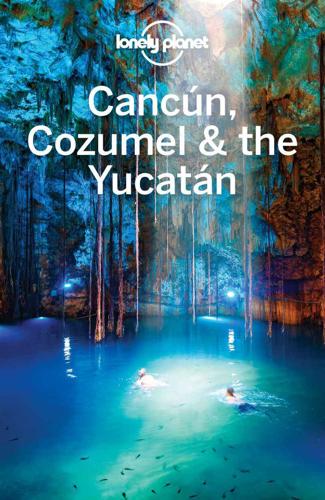
Lonely Planet Cancun, Cozumel & the Yucatan (Travel Guide)
by
Lonely Planet
,
John Hecht
and
Lucas Vidgen
Published 31 Jul 2016
Many websites offer ‘carbon calculators’ that allow people to estimate the carbon emissions generated by their journey and, for those who wish to do so, to offset the impact of the greenhouse gases emitted with contributions to portfolios of climate-friendly initiatives throughout the world. Lonely Planet offsets the carbon footprint of all staff and author travel. Air Most visitors to the Yucatán arrive by air. Direct flights normally originate from an airline's hub city and connecting flights often go through Mexico City. Mexico’s flagship airline is Aeroméxico. Its safety record is comparable to major US and European airlines.
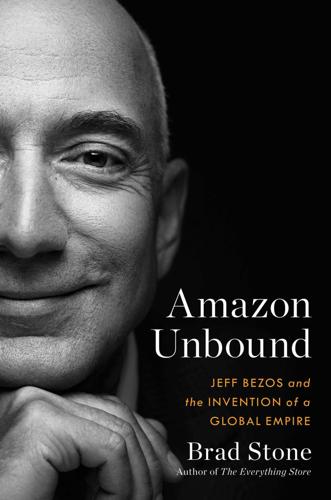
Amazon Unbound: Jeff Bezos and the Invention of a Global Empire
by
Brad Stone
Published 10 May 2021
Amazon was no longer just an inspiring business story but a referendum on society, and on the responsibilities that large companies have toward their employees, their communities, and the sanctity of our fragile planet. Bezos had attempted to address that latter concern by conceiving the Climate Pledge, a promise that Amazon would be carbon neutral by 2040, ten years before the most ambitious goals set by the Paris climate accords. Critics were hammering Amazon to follow other companies and reveal its carbon footprint—its contribution to the harmful gasses that were rapidly warming the globe. Its sustainability division had labored for years to create more efficient standards for its buildings and to cut down on wasteful packaging materials. But it wasn’t enough to simply publicize their work and follow other companies by releasing a carbon impact report.

Lonely Planet Scotland's Highlands & Islands
by
Lonely Planet
Many websites offer ‘carbon calculators’ that allow people to estimate the carbon emissions generated by their journey and, for those who wish to do so, to offset the impact of the greenhouse gases emitted with contributions to portfolios of climate-friendly initiatives throughout the world. Lonely Planet offsets the carbon footprint of all staff and author travel. Air There are direct flights to Scottish airports from elsewhere in Britain, lots of European countries, the Middle East, the US and Canada. From elsewhere, you’ll probably have to fly into a European or Middle Eastern hub and get a connecting flight to a Scottish airport – London has the most connections.
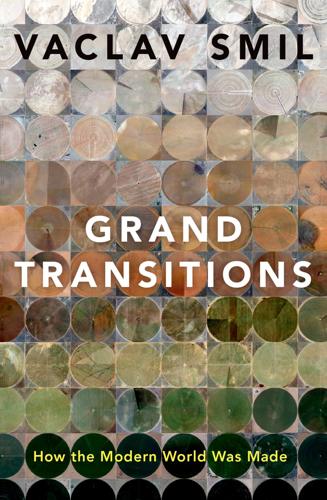
Grand Transitions: How the Modern World Was Made
by
Vaclav Smil
Published 2 Mar 2021
Beijing: China Statistics Press. http://www.stats.gov.cn/tjsj/ndsj/2019/indexeh.htm NCD Risk Factor Collaboration (NCD-RisC). 2016. A century of trends in adult human height. eLife 2016 5: e13410. doi: 10.7554/eLife.13410 Nef, J.U. 1932. The Rise of the British Coal Industry. London: G. Routledge. Neira, D.P. et al. 2018. Energy use and carbon footprint of the tomato production in heated multi-tunnel greenhouses in Almeria within an exporting agri-food system context. Science of the Total Environment 628:1627–1636. Nemani, R.R. et al. 2002. Recent trends in hydrologic balance have enhanced the terrestrial carbon sink in the United States. Geophysical Research Letters 2:106-1–106-4.

Lonely Planet Belgium & Luxembourg
by
Lonely Planet
Many websites offer ‘carbon calculators’ that allow people to estimate the carbon emissions generated by their journey and, for those who wish to do so, to offset the impact of the greenhouse gases emitted with contributions to portfolios of climate-friendly initiatives throughout the world. Lonely Planet offsets the carbon footprint of all staff and author travel. Land Trains are generally faster but more expensive than buses, though price depends greatly on how early you book. If driving from the southeast, fill your petrol tank in Luxembourg for low prices. Only in exceptional circumstances are there border controls at crossings between neighbouring countries.

Fodor's Essential Belgium
by
Fodor's Travel Guides
Published 23 Aug 2022
In Brussels, especially, new dedicated bars are cropping up all the time, with Titulus, in the Matonge area, one of first and still the largest. It opened in 2011 and now imports its own label, made in France’s Loire Valley. But, finally, there is some real choice for natural wine fans. Raise a glass to change. RISE OF THE SLEEPER TRAIN The sleeper train is on the rise in Europe, as travelers become more conscious of their carbon footprint. In 2022, services on RegioJet’s night train are due to start, connecting Belgium to Berlin, Amsterdam, and Prague, while ÖBB’s Nightjet route between Brussels and Vienna, via Liège, increased in frequency post-COVID. There are even rumors of a new “Transeurope Express” route, which originally ceased operating in the 1980s, cutting across Belgium.

Lonely Planet Southern Italy
by
Lonely Planet
Many websites offer ‘carbon calculators’ that allow people to estimate the carbon emissions generated by their journey and, for those who wish to do so, to offset the impact of the greenhouse gases emitted with contributions to portfolios of climate-friendly initiatives throughout the world. Lonely Planet offsets the carbon footprint of all staff and author travel. Land Reaching southern Italy overland involves travelling the entire length of Italy, which can either be an enormous drain on your time or, if you have plenty to spare, a wonderful way of seeing the country. Buses are usually the cheapest option, but services are less frequent and considerably less comfortable than the train.

San Francisco
by
Lonely Planet
Many websites offer 'carbon calculators' that allow people to estimate the carbon emissions generated by their journey and, for those who wish to do so, to off set the impact of the greenhouse gases emitted with contributions to portfolios of climate-friendly initiatives throughout the world. Lonely Planet off sets the carbon footprint of all staff and author travel. Norman y Mineta San Jose International Airport Fifty miles south of downtown San Francisco, Norman y Mineta San Jose International Airport (SJC; ; 408-501-0979; www.sjc.org) is a straight shot into the city by car via Hwy 101. The VTA Airport Flyer (bus 10; tickets $2; from 5am to midnight) makes a continuous run between the Santa Clara Caltrain station (Railroad Ave and Franklin St) and the airport terminals, departing every 15 to 30 minutes.

The Price Is Wrong: Why Capitalism Won't Save the Planet
by
Brett Christophers
Published 12 Mar 2024
On the one hand, buying such renewably generated power is certainly helping to reduce the relative carbon intensity of its operations, which it quantifies in terms of CO2 emitted per dollar of sales. But, on the other hand, its business – and especially its energy-gorging cloud-computing Web services business – has been growing so quickly that its absolute overall carbon footprint, which is what ultimately matters, continues rapidly to grow.51 Another reason to be sceptical of the eager hubbub around corporate PPAs relates to the question of so-called additionality. On the generator side, corporate PPAs are signed not only by companies wanting to develop new generating facilities, and which regard such an agreement as a source of leverage with lenders in terms of unlocking construction financing; they can also be signed by companies with existing operational generating assets.
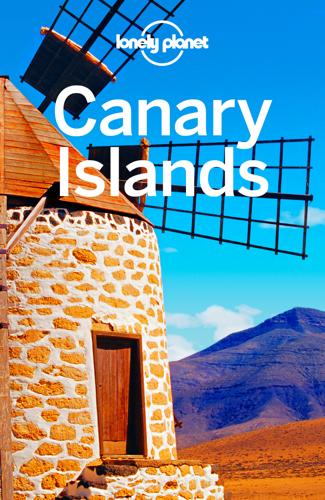
Canary Islands Travel Guide
by
Lonely Planet
Many websites offer ‘carbon calculators’ that allow people to estimate the carbon emissions generated by their journey and, for those who wish to do so, to offset the impact of the greenhouse gases emitted with contributions to portfolios of climate-friendly initiatives throughout the world. Lonely Planet offsets the carbon footprint of all staff and author travel. Air Airports & Airlines All of Spain’s airports share the user-friendly website and flight information telephone number of Aena (%902 404704; www.aena.es), the Spanish national airport authority. All seven Canary islands have airports. Tenerife, Gran Canaria, Lanzarote, Fuerteventura and, increasingly, La Palma absorb nearly all the direct international flights and those from mainland Spain, while the others are principally for inter-island hops.

Lonely Planet Mongolia (Travel Guide)
by
Lonely Planet
,
Trent Holden
,
Adam Karlin
,
Michael Kohn
,
Adam Skolnick
and
Thomas O'Malley
Published 1 Jul 2018
Many websites offer ‘carbon calculators’ that allow people to estimate the carbon emissions generated by their journey and, for those who wish to do so, to offset the impact of the greenhouse gases emitted with contributions to portfolios of climate-friendly initiatives throughout the world. Lonely Planet offsets the carbon footprint of all staff and author travel. Air Airports & Airlines Ulaanbaatar’s Chinggis Khaan Airport is Mongolia’s major international airport; the code is ULN. At the time of writing a new airport was under construction 52km southwest of Ulaanbaatar. It is expected to be complete in 2018. Flights to/from Ulaanbaatar can be pricey, as there is a limited number of carriers.

Lonely Planet Ireland
by
Lonely Planet
Many websites offer ‘carbon calculators’ that allow people to estimate the carbon emissions generated by their journey and, for those who wish to do so, to offset the impact of the greenhouse gases emitted with contributions to portfolios of climate-friendly initiatives throughout the world. Lonely Planet offsets the carbon footprint of all staff and author travel. Air Airports Ireland's main airports: Cork Airport Airlines servicing the airport include Aer Lingus and Ryanair. Dublin Airport Ireland’s major international gateway airport, with direct flights from the UK, Europe, North America and the Middle East.
…
Stena Line (www.stenaline.com) Daily sailings from Holyhead to Dublin Port, from Belfast to Liverpool and Cairnryan, and from Rosslare to Fishguard. BUS, TRAIN & FERRY COMBOS It's possible to combine bus, ferry and train tickets from major UK centres to most Irish towns. This might not be as quick as flying on a budget airline but leaves less of a carbon footprint. The journey between London and Dublin takes about 12 hours by bus, eight hours by train; the London to Belfast trip takes 13 to 16 hours by bus. Both can be had for as little as £29 one way. Eurolines (www.eurolines.com) has bus-ferry combos while Virgin Trains (www.virgintrains.co.uk) has combos that include London to Dublin.
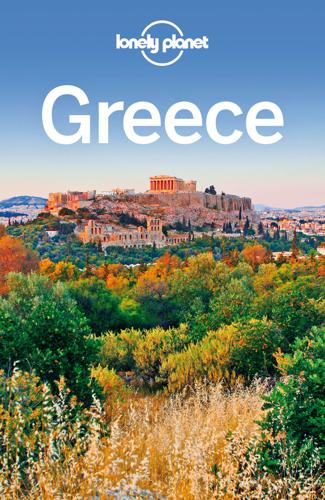
Greece Travel Guide
by
Lonely Planet
Many websites offer ‘carbon calculators’ that allow people to estimate the carbon emissions generated by their journey and, for those who wish to do so, to offset the impact of the greenhouse gases emitted with contributions to portfolios of climate-friendly initiatives throughout the world. Lonely Planet offsets the carbon footprint of all staff and author travel. Air Airports & Airlines Greece has four main international airports that take chartered and scheduled flights. Other international airports across the country include Santorini (Thira), Karpathos, Samos, Skiathos, Hrysoupoli, Aktion, Kefallonia and Zakynthos.
…
International train travel, in particular, has become much more feasible in recent years, with speedier trains and better connections. You can now travel from London to Athens by train and ferry in less than two days. By choosing to travel on the ground instead of the air, you’ll also be reducing your carbon footprint. Border Crossings OVERLAND FROM WESTERN EUROPE If you’re keen to travel without flying and enjoy the independence of a road trip, you can reach Greece by heading overland to an Italian port and hopping on a ferry. A high-speed ferry trip from Venice to Patra can be completed in around 26 hours.
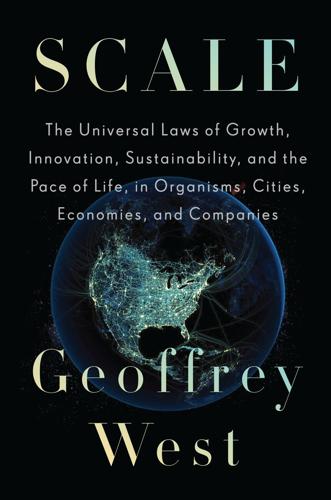
Scale: The Universal Laws of Growth, Innovation, Sustainability, and the Pace of Life in Organisms, Cities, Economies, and Companies
by
Geoffrey West
Published 15 May 2017
Regardless of the specific urban system, whether Japan, the United States, or Portugal, and regardless of the specific metric whether the number of gas stations, the total length of pipes, roads, or electrical wires, only about 85 percent more material infrastructure is needed with every doubling of city size.2 Thus a city of 10 million people typically needs 15 percent less of the same infrastructure compared with two cities of 5 million each, leading to significant savings in materials and energy use.3 This savings leads to a significant decrease in the production of emissions and pollution. Consequently, the greater efficiency that comes with size has the nonintuitive but very important consequence that on average the bigger the city, the greener it is and the smaller its per capita carbon footprint. In this sense, New York is the greenest city in the United States, whereas Santa Fe, where I live, is one of the more profligate ones. On average, each of us in Santa Fe is putting almost twice as much carbon into the atmosphere as New York. This should not be thought of as somehow reflecting the greater wisdom of New York’s planners and politicians, nor as the fault of Santa Fe’s leadership, but rather as an almost inevitable by-product of the dynamics underlying economies of scale that transcend the individuality of cities as their size increases.

Berlin
by
Andrea Schulte-Peevers
Published 20 Oct 2010
Return to beginning of chapter TRANSPORT * * * AIR BICYCLE BUS CAR & MOTORCYCLE LOCAL TRANSPORT TAXI TRAIN * * * When Berliners have to be somewhere else, they’re most likely to walk, or use public transport or bicycles to get there. In fact, many of them don’t even own a car and those that do, don’t use it for every single trip. So when in Berlin, do as Berliners: it’s smarter, cheaper and saves you from looking for that elusive parking spot. Not to mention, it helps min-imise your carbon footprint. Getting to the city is easy as well. Flights, tours and rail tickets can be booked online at www.lonelyplanet.com/travel_services. Return to beginning of chapter AIR Lufthansa, practically all other major European airlines and low-cost carriers (including Air Berlin, easyJet, Ryanair and Germanwings) operate direct flights to Berlin from throughout Europe.
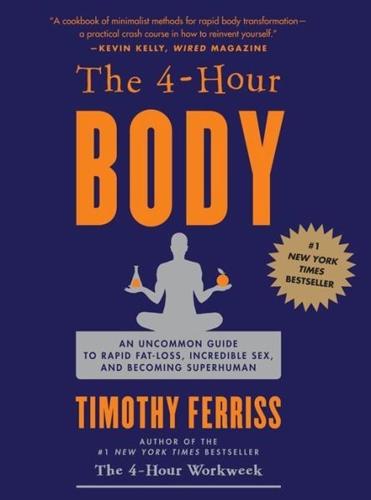
The 4-Hour Body: An Uncommon Guide to Rapid Fat-Loss, Incredible Sex, and Becoming Superhuman
by
Timothy Ferriss
Published 1 Dec 2010
End of Chapter Notes 12. This assumes the plants are not coming primarily from monocrops like soy, wheat, and corn. I believe that industrial production of annual grains has done as much damage to the environment as factory farms, based on habitat destruction (and therefore species eradication) and carbon footprint data. 13. How do you make vegetarians smarter? Have them take creatine. In one double-blind placebo- controlled study (http://www.ncbi.nlm.nih.gov/pmc/articles/PMC1691485/?tool=pmcenrez), 45 young-adult vegetarians were given 5 grams of creatine daily for 6 weeks, and the researchers concluded that “Creatine supplementation had a significant positive effect (p<0.0001) on both working memory (backward digit span) and intelligence (Raven’s Advanced Progressive Matrices).” 2 grams per day did not replicate these results in separate studies.
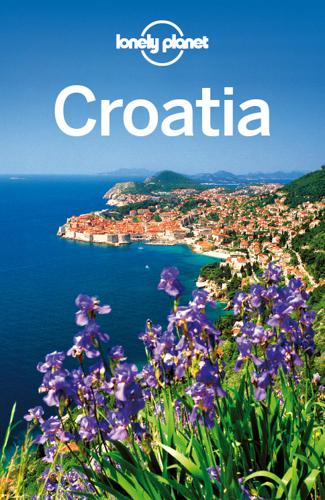
Croatia
by
Anja Mutic
and
Vesna Maric
Published 1 Apr 2013
Many websites offer ‘carbon calculators’ that allow people to estimate the carbon emissions generated by their journey and, for those who wish to do so, to offset the impact of the greenhouse gases emitted with contributions to portfolios of climate-friendly initiatives throughout the world. Lonely Planet offsets the carbon footprint of all staff and author travel. Land Croatia has border crossings with Hungary, Slovenia, Bosnia and Hercegovina, Serbia and Montenegro. Austria BUS Eurolines (www.eurolines.com) operates buses from Vienna to several destinations in Croatia. » Rijeka €48, nine hours, two weekly » Split €57, 11½ hours, two weekly » Zadar €45, 8¼ hours, two weekly » Zagreb €36, five to seven hours, two daily (one direct, the other via Varaždin) TRAIN There are two daily and two overnight trains between Vienna and Zagreb, via Slovenia and via Hungary.

Lonely Planet Nicaragua (Travel Guide)
by
Lonely Planet
,
Alex Egerton
and
Greg Benchwick
Published 30 Jun 2013
Many websites offer 'carbon calculators' that allow people to estimate the carbon emissions generated by their journey and, for those who wish to do so, to off set the impact of the greenhouse gases emitted with contributions to portfolios of climate-friendly initiatives throughout the world. Lonely Planet off sets the carbon footprint of all staff and author travel. Air Nicaragua’s main international hub is Managua International Airport (MGA; www.eaai.com.ni; Carretera Norte, Km 13) , a small, manageable airport that doesn’t receive many flights but does have connecting services to Miami, Fort Lauderdale, Atlanta and Houston in the US, and several major cities within Central America.
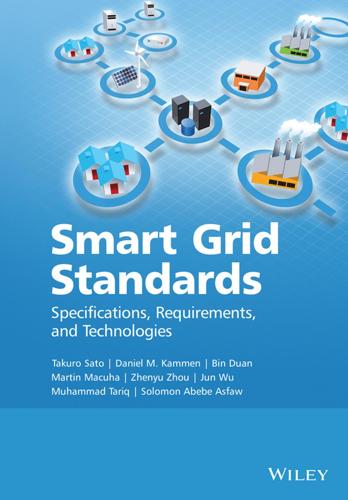
Smart Grid Standards
by
Takuro Sato
Published 17 Nov 2015
However, there are various controversial issues associated with the use of biomass. It is a reality that production of biofuels may involve cutting trees, which is against the concept of green energy. In addition, transforming the organic matter into energy may be expensive with higher agriculture products and higher carbon footprints, which may be redirected instead of being used for food purposes. Table 2.16 provides details of various advantages and disadvantages associated with biomass. Source [23]. Combustion, stoker Combustion, stoker Combustion, circulating fluidized bed Combustion bubbling fluidized bed CHP Gasification, base Gasification, advance Gasification, (=Integrated Gasification Combined Cycle (IGCC)) Co-firing, pulverized coal, co-feed Co-firing, cyclone co-feed Composite Composite Composite Composite Composite Composite Composite Composite Representative technology 50 50 50 50 50 75 75 20 20 20 50 50 50 50 50 50 50 50 2010 2010 2010 2010 2010 2010 2010 2010 2010 2010 2010 2030 2050 2010 2020 2030 2040 2050 449 353 3872 3872 3872 3865 3864 3843 3822 3811 3638 3859 4149 3607 7498 3657 3742 3771 (1000 $/MW) 555 353 – – – – – – – – – 4002 4417 3795 – 3794 4092 3911 13 13 95 95 95 103 102 89 76 63 94 101 94 60 332 99 99 102 2 1 15 15 15 5 5 5 6 7 5 4 7 7 16 4 5 6 82.60 82.60 82.60 82.60 82.60 82.60 82.60 82.60 82.60 82.60 82.60 82.60 82.60 82.60 82.60 82.60 82.60 82.60 47 47 68 63 59 59 59 52 46 39 63 67 44 38 58 59 68 59 ($/tonne) ($/MW h) Year Plant Capital cost Operating cost Heat rate size (MW) Overnight w/AFUDC Fixed Variable Feed (Allowance for ($/kW-year) ($/MW h) Funds used during construction Table 2.15 Capital and operating costs of representative biopower systems Coal heat rate +1.5% Coal heat rate 14.50 13.50 12.50 12.50 12.40 11.10 9.70 8.40 13.50 14.25 9.49 8.00 12.35 12.50 14.48 12.50 MMBtu MWh 72 Smart Grid Standards Renewable Energy Generation 73 Table 2.16 Advantages and disadvantages of biomass Advantages Disadvantages Biofuels are carbon neutral Gases such as CO2 , which are emitted into the atmosphere during biomass processing, may damage the ozone layer Building a biomass power plant takes considerable space and the processing also requires a large amount of water Usage of corn and soybeans, and so on, has resulted in hiking food prices Raw materials of biomass, which are agricultural wastes of certain crops, are not available all year around The characteristics of biomass are geographic dependent Biofuel is cost effective Unlike wind and solar energy, biomass can be stored for future usage Biomass is available everywhere and can be easily collected Compared to fossil fuels, which takes million of years to stock up, biomass takes only as much time as it is required to grow or gather the source which can takes months up to maximum of a year Its processing is identified as an excellent energy-efficient waste disposal by converting biological waste to energy, which can be used for diverse applications It can be used as manure in agriculture 2.3 Excessive use of biomass may lead to environmental issues and deforestation Challenges of Renewable Energy Systems In last few decades, renewable energy systems have shown rapid growth.

Lonely Planet Wales (Travel Guide)
by
Lonely Planet
Published 17 Apr 2017
Many websites offer ‘carbon calculators’ that allow people to estimate the carbon emissions generated by their journey and, for those who wish to do so, to offset the impact of the greenhouse gases emitted with contributions to portfolios of climate-friendly initiatives throughout the world. Lonely Planet offsets the carbon footprint of all staff and author travel. Air Although Cardiff has an international airport, most overseas visitors fly into London. Five international airports service the UK's capital but Heathrow is by far the biggest, serving most of the world's major airlines. It is also the closest to Wales.
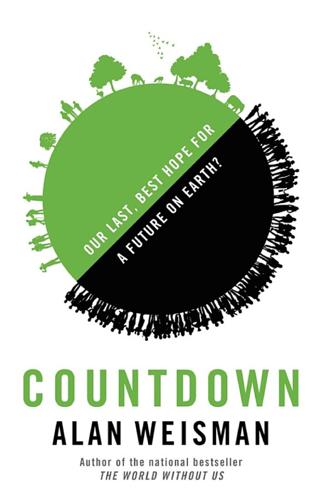
Countdown: Our Last, Best Hope for a Future on Earth?
by
Alan Weisman
Published 23 Sep 2013
Like other biologists of his generation, he is confounded that his own kind is perpetrating an extinction the likes of which the planet has seen only five times previously over the past 4 billion years—and previously, always due to some monumental upheaval of geology, or a disaster of cosmology when an errant bit of creation collides with our own. “I am sickened by the destruction of so many of our fellow creatures. Our descendants will be diminished as human beings if they can’t share the planet with a rich biodiversity. We will have to reduce the strain on the Earth, reduce our carbon footprint, and stop having third children. Numbers count.” There is an easy way to evaluate the population debate on moral grounds, suggests the Reverend Jeremy Caddick, whose Cambridge chapel was the first in Britain’s Anglican church to bless gay unions. “In a traditional moral debate about say, abortion rights, usually somebody says, ‘Well, that’s your opinion.
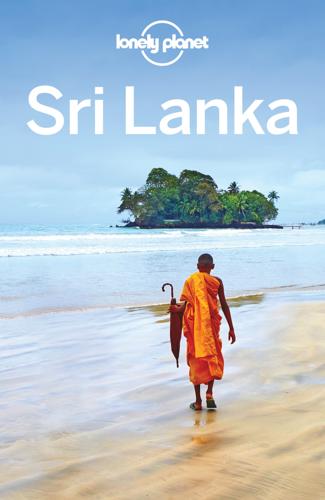
Lonely Planet Sri Lanka
by
Lonely Planet
Many websites offer ‘carbon calculators’ that allow people to estimate the carbon emissions generated by their journey and, for those who wish to do so, to offset the impact of the greenhouse gases emitted with contributions to portfolios of climate-friendly initiatives throughout the world. Lonely Planet offsets the carbon footprint of all staff and author travel. Air Airports On paper, Sri Lanka has two international airports, but in practice, almost all airlines fly into Bandaranaike International Airport, located at Katunayake, 30km north of Colombo. There are 24-hour money-changing facilities in the arrivals and departures halls as well as ATMs, mobile-phone dealers, taxi services and more.

The Survival of the City: Human Flourishing in an Age of Isolation
by
Edward Glaeser
and
David Cutler
Published 14 Sep 2021
Those reviews added costs and blocked new projects—and they were terribly one-sided. Building in coastal California is intrinsically green because the region’s Mediterranean climate needs much less artificial cooling and heating than the rest of the US. Building in California therefore lowers America’s carbon footprint, and should be ardently encouraged by environmentalists. However, the court-mandated environmental review evaluates only the harm to the local environment, not the benefit created by building in a low-carbon part of the country. Local anti-growth activists don’t get to stop all development in the US.

The Singularity Is Nearer: When We Merge with AI
by
Ray Kurzweil
Published 25 Jun 2024
v=jcp-aaa1PBk; “3D Printed Lattices Improve Orthopaedic Implants,” Renishaw, YouTube video, November 28, 2019, https://www.youtube.com/watch?v=2rm_3rUl3QE; AMFG, “Application Spotlight: 3D Printing for Medical Implants,” Autonomous Manufacturing Ltd., August 15, 2019, https://amfg.ai/2019/08/15/application-spotlight-3d-printing-for-medical-implants. BACK TO NOTE REFERENCE 266 The Carbon Footprint of Global Trade: Tackling Emissions from International Freight Transport (Brussels: International Transport Forum, 2016), 2, https://www.itf-oecd.org/sites/default/files/docs/cop-pdf-06.pdf. BACK TO NOTE REFERENCE 267 Dean Takahashi, “Dyndrite Launches GPU-Powered Improvements for Better 3D Printing Speed and Quality,” VentureBeat, November 18, 2019, https://venturebeat.com/2019/11/18/dyndrite-launches-gpu-powered-improvements-for-better-3d-printing-speed-and-quality; Agiimaa Kruchkin, “Innovation in Creation: Demand Rises While Prices Drop for 3D Printing Machines,” Manufacturing Tomorrow, February 16, 2016, https://www.manufacturingtomorrow.com/article/2016/02/innovation-in-creation-demand-rises-while-prices-drop-for-3d-printing-machines/7631.
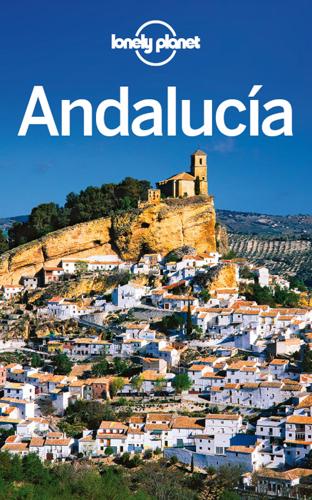
Lonely Planet Andalucia: Chapter From Spain Travel Guide
by
Lonely Planet
Published 31 May 2012
Many websites offer ‘carbon calculators’ that allow people to estimate the carbon emissions generated by their journey and, for those who wish to do so, to offset the impact of the greenhouse gases emitted with contributions to portfolios of climate-friendly initiatives throughout the world. Lonely Planet offsets the carbon footprint of all staff and author travel. Land Border Crossings If you’re coming from Morocco, journey times are increased by a couple of hours by border formalities, which are notoriously strict at the ferry departure and arrivals terminals. There are usually long queues at customs on both sides of the Strait of Gibraltar.
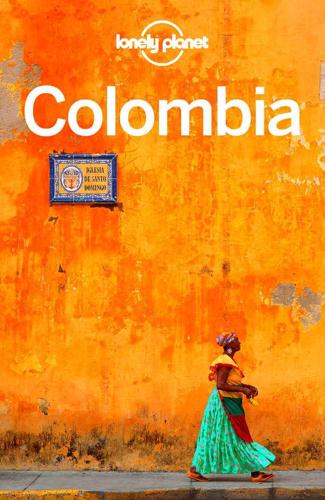
Lonely Planet Colombia (Travel Guide)
by
Lonely Planet
,
Alex Egerton
,
Tom Masters
and
Kevin Raub
Published 30 Jun 2015
Many websites offer ‘carbon calculators’ that allow people to estimate the carbon emissions generated by their journey and, for those who wish to do so, to offset the impact of the greenhouse gases emitted with contributions to portfolios of climate-friendly initiatives throughout the world. Lonely Planet offsets the carbon footprint of all staff and author travel. Air Airports & Airlines Colombia's biggest international airport is Bogotá's newly renovated Aeropuerto Internacional El Dorado. Other airports servicing international flights: Aeropuerto Internacional El EdénAIRPORT (www.aeropuertoeleden.com) Armenia's airport is near the town of La Tebaida.

Lonely Planet Iceland (Travel Guide)
by
Lonely Planet
,
Carolyn Bain
and
Alexis Averbuck
Published 31 Mar 2015
Alcoa, an American aluminium-smelting company, was responsible for one of Iceland’s most controversial schemes: the Kárahnjúkar hydroelectric station in east Iceland, completed in 2009, was the biggest construction project in Iceland’s history. It created a network of dams and tunnels, a vast reservoir, a power station and miles of power lines to supply electricity to a fjord-side smelter 80km away in Reyðarfjörður. Alcoa makes much PR out of its efforts to reduce its carbon footprint – and it's true, the aluminium it manufactures in Iceland uses cheap, green energy from renewable sources (that was the whole point of closing two US smelters and setting up here). What can't be denied is that the mega-dam that was built specifically to power the Alcoa plant has devastated the landscape.

The Rough Guide to Sweden (Travel Guide eBook)
by
Rough Guides
Published 1 Nov 2019
We believe it helps us understand the world we live in and the people we share it with – and of course tourism is vital to many developing economies. But the scale of modern tourism has also damaged some places irreparably, and climate change is accelerated by most forms of transport, especially flying. We encourage our authors to consider the carbon footprint of the journeys they make in the course of researching our guides. RAIL CONTACTS Swedish Railways (SJ) 0046 771 75 75 75, sj.se. The general agent for Swedish rail tickets. Voyages-sncf.com 0844 848 5848, US 1 800 622 8600, Canada 1 800 361 7245, uk.voyages-scf.com Package holidays Don’t be put off by the idea of an inclusive package, as it can sometimes be the cheapest way of doing things, and a much easier way of reaching remote areas of northern Sweden in winter.
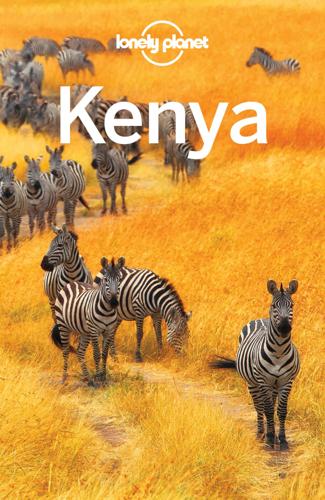
Lonely Planet Kenya
by
Lonely Planet
Many websites offer ‘carbon calculators’ that allow people to estimate the carbon emissions generated by their journey and, for those who wish to do so, to offset the impact of the greenhouse gases emitted with contributions to portfolios of climate-friendly initiatives throughout the world. Lonely Planet offsets the carbon footprint of all staff and author travel. Air Airports Kenya has three international airports; check out the website www.kaa.go.ke for further information. Jomo Kenyatta International Airport (NBO; GOOGLE MAP ; %020-6822111, 0722205061; www.kaa.go.ke) Most international flights to and from Nairobi arrive at this airport, 15km southeast of the city.

Lonely Planet Switzerland
by
Lonely Planet
Many websites offer ‘carbon calculators’ that allow people to estimate the carbon emissions generated by their journey and, for those who wish to do so, to offset the impact of the greenhouse gases emitted with contributions to portfolios of climate-friendly initiatives throughout the world. Lonely Planet offsets the carbon footprint of all staff and author travel. Air Switzerland's national carrier is Swiss (www.swiss.com), commonly known as Swissair. In addition to many national carriers, the following budget and/or smaller airlines connect Switzerland with the rest of Europe. Air Berlin (www.airberlin.com) Flights from Geneva, Zürich and EuroAirport (Basel) to scores of destinations across Europe.

Sweden Travel Guide
by
Lonely Planet
Many websites offer ‘carbon calculators’ that allow people to estimate the carbon emissions generated by their journey and, for those who wish to do so, to offset the impact of the greenhouse gases emitted with contributions to portfolios of climate-friendly initiatives throughout the world. Lonely Planet offsets the carbon footprint of all staff and author travel. Air Sweden is well connected by air with four major international airports. Airports & Airlines Stockholm Arlanda links Sweden with major European and North American cities. Göteborg Landvetter is Sweden’s second-biggest international airport. Stockholm Skavsta is located 100km south of Stockholm, near Nyköping, and is mainly used by Ryanair flights.

Lonely Planet London
by
Lonely Planet
Published 22 Apr 2012
Many websites offer 'carbon calculators' that allow people to estimate the carbon emissions generated by their journey and, for those who wish to do so, to off set the impact of the greenhouse gases emitted with contributions to portfolios of climate-friendly initiatives throughout the world. Lonely Planet off sets the carbon footprint of all staff and author travel. Getting Around London Public transport in London is excellent, if pricey. It is managed by Transport for London (www.tfl.gov.uk) , which has an excellent, multilingual website with live updates on traffic, a journey planner, maps and detailed information on every mode of transport in the capital.

Bali & Lombok Travel Guide
by
Lonely Planet
Many websites offer ‘carbon calculators’ that allow people to estimate the carbon emissions generated by their journey and, for those who wish to do so, to offset the impact of the greenhouse gases emitted with contributions to portfolios of climate-friendly initiatives throughout the world. Lonely Planet offsets the carbon footprint of all staff and author travel. Air Although Jakarta, the national capital, is the gateway airport to Indonesia, there are also many direct international flights to Bali and a few to Lombok. Airports & Airlines Bali Airport The only airport in Bali, Ngurah Rai International Airport (DPS), is just south of Kuta.
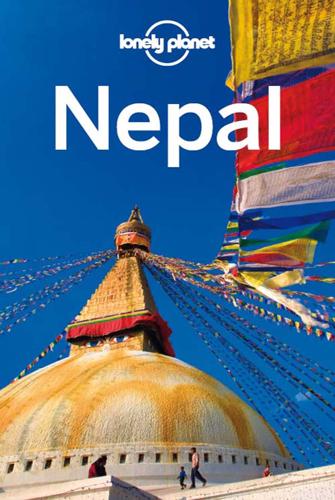
Nepal Travel Guide
by
Lonely Planet
Many websites offer ‘carbon calculators’ that allow people to estimate the carbon emissions generated by their journey and, for those who wish to do so, to offset the impact of the greenhouse gases emitted with contributions to portfolios of climate-friendly initiatives throughout the world. Lonely Planet offsets the carbon footprint of all staff and author travel. Airlines Because Nepal does not lie on any major transit routes, flights to Kathmandu are expensive, particularly during the peak trekking season (October to November). Budget travellers fly to India first, and then pick up a cheap transfer to Kathmandu, though this incurs its own visa hassles.

Elon Musk
by
Walter Isaacson
Published 11 Sep 2023
“But Damian thought of himself as smart, and Kai didn’t, for some reason. So bizarre.” Their personalities were very different. Damian was an introvert, ate little, and announced at age eight that he was a vegetarian. When I asked Justine why he made that decision, she passed the phone to Damian to answer. “To decrease my carbon footprint,” he explained. He became a classical-music prodigy, composing dark sonatas and practicing on the piano hours at a time. Musk would show videos he took on his phone of Damian playing. He also was a wizard in math and physics. “I think Damian is brighter than you,” Maye Musk once said to her son, who nodded in agreement.

Germany
by
Andrea Schulte-Peevers
Published 17 Oct 2010
Return to beginning of chapter GERMANY IN THE SLOW LANE Like a fine wine, some of Germany’s most memorable destinations are best appreciated in leisurely sips, not quick gulps. So say goodbye to the automobile and hello to the slow lane as you embark on a journey of discovery that will enrich you personally while also lowering your carbon footprint. Hiddensee, a tiny island on the Baltic Sea, for instance, is an entirely car-free zone, making bicycle the best way to get around. At the other end of the country, Oberstdorf in the Allgäu has also banned cars, as have most of the East Frisian Islands. Germany is criss-crossed with long-distance hiking trails, including the Rennsteig in the Thuringian Forest, one of the oldest and most famous trails in the country.
…
* * * SMART TRAVELS Flying has become second nature in this era of low-cost airlines and few of us stop to consider using alternative travel methods and doing our bit for the environment. Yet, depending on where you’re based, getting to Germany without an aeroplane is easier and more comfortable than you might think and leaves a much smaller carbon footprint. Take the trip from London to Frankfurt, for instance. If you’re flying, you’re generating 0.349 tons of emissions. If you’re driving, it’s still 0.223 tons. But by travelling by rail or bus, you can cut that number down dramatically to just 0.092 tons. Just catch the Eurostar (opposite) in the afternoon, then switch to a night train in Paris and be in Germany for breakfast.
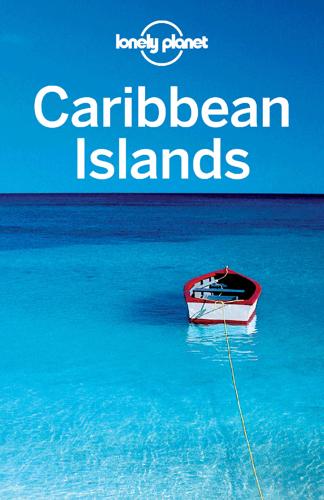
Caribbean Islands
by
Lonely Planet
Natura Park Eco-Resort & Spa HOTEL $$$ ( 809-221-2626; www.blau-hotels.com; Cabeza de Toro; d from US$218; ) Natura Park has a narrow beach outside the village of Cabeza de Toro, halfway between Bávaro and Punta Cana. It’s extra popular with Canadians and those who care more about reducing their carbon footprint than hopping in and out of bars and clubs at night. The pool is a bit small, but the beach is quite nice. Free-range swans, geese and flamingos and the Laguna Bávaro creeping on its doorstep mean nature is never too far away. PUNTA CANA Puntacana Resort & Club RESORT $$ ( 809-959-2262; www.puntacana.com; Punta Cana; d incl breakfast US$120; ) Famous for part-time residents like Julio Iglesias, Oscar de la Renta and Mikhail Baryshnikov, this discerning and quiet resort is also notable for its environmental efforts, especially the associated ecological park across the street from the resort entrance.
…
Many websites offer ‘carbon calculators’ that allow people to estimate the carbon emissions generated by their journey and, for those who wish to do so, to offset the impact of the greenhouse gases emitted with contributions to portfolios of climate-friendly initiatives throughout the world. Lonely Planet offsets the carbon footprint of all staff and author travel. FROM NORTH AMERICA Most major airlines in North America fly direct to the more popular islands in the Caribbean. In fact such service is so wide-spread that even places as tiny as Bonaire have nonstop service to major US cities. Generally however, getting to the Caribbean from US cities without hub airports will involve changing planes somewhere.

Frommer's Los Angeles 2010
by
Matthew Richard Poole
Published 28 Sep 2009
You can find some eco-friendly trav el tips and statistics, as w ell as touring companies and associations—listed by destination under “ Travel Choice”—at the TIES website, www.ecotourism.org. Greater Los Angeles is the smoggiest region of the U.S. S o if y ou’re concerned about size of your carbon footprint during your vacation to L.A., the single best effort you can make is to use L.A.’s public transportation system (see “By Public Transportation” in “G etting There & G etting Around,” p. 36). G ranted, it’s an inferior and often a frustrating experience for anyone who ’s used to getting ar ound via public transpor t in NY C, London, or Paris, but it’s slowly getting better.
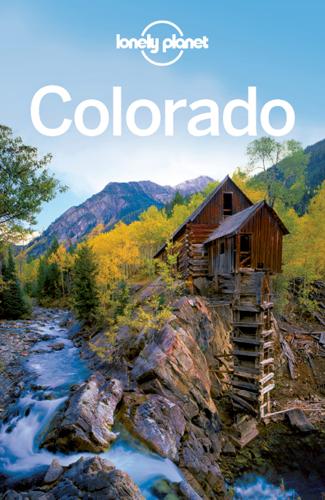
Colorado
by
Lonely Planet
Many websites offer ‘carbon calculators’ that allow people to estimate the carbon emissions generated by their journey and, for those who wish to do so, to offset the impact of the greenhouse gases emitted with contributions to portfolios of climate-friendly initiatives throughout the world. Lonely Planet offsets the carbon footprint of all staff and author travel. Tickets »Airfares to the US and Colorado range from incredibly low to obscenely high. »The best deals are almost always found on the internet. »STA Travel ( toll-free 800-781-4040; www.statravel.com), which offers online booking, also has offices (with real, live people!)
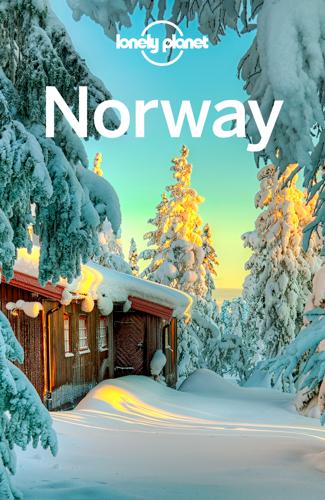
Lonely Planet Norway (Travel Guide)
by
Lonely Planet
and
Donna Wheeler
Published 1 Apr 2015
Many websites offer ‘carbon calculators’ that allow people to estimate the carbon emissions generated by their journey and, for those who wish to do so, to offset the impact of the greenhouse gases emitted with contributions to portfolios of climate-friendly initiatives throughout the world. Lonely Planet offsets the carbon footprint of all staff and author travel. Air Airports & Airlines For a full list of Norwegian airports, visit www.avinor.no; the page for each airport has comprehensive information. The main international Norwegian airports are Gardermoen (Oslo), Flesland (Bergen), Sola (Stavanger), Tromsø, Værnes (Trondheim), Vigra (Ålesund), Karmøy (Haugesund), Kjevik (Kristiansand) and Torp (Sandefjord).

Hunger: The Oldest Problem
by
Martin Caparros
Published 14 Jan 2020
Every year, more than three million children die of starvation. The former special rapporteur on food, Jean Ziegler, always unequivocal, said that the production of biofuels is “a crime against humanity.”4 The laws and resolutions that subsidize ethanol mention “energy independence” and the “fight against climate change.” The carbon footprint of biofuels, however, is heavy indeed. Frédéric Lemaître, a journalist for Le Monde, wrote that while that corn ethanol “has reduced the emissions of CO2 from cars between 10 and 20 percent, if we factor in emissions from the tractors and the fertilizers and the pesticides necessary to produce it and transport it, and the electrical energy needed to process it, the ecological impact begins to look devastating.”5 Not to mention that the increase in the demand for corn produced for ethanol means that people who eat corn were finding it in shorter and shorter supply.

The Empathic Civilization: The Race to Global Consciousness in a World in Crisis
by
Jeremy Rifkin
Published 31 Dec 2009
While these sunrise energies still account for a small percentage of the global energy mix, they are growing rapidly as governments mandate targets and benchmarks for their widespread introduction into the market and their falling costs make them increasingly competitive. Billions of dollars of public and private capital are pouring into research, development, and market penetration, as businesses and homeowners seek to reduce their carbon footprint and become more energy efficient and independent. Although renewable energy is found everywhere and new technologies are allowing us to harness it more cheaply and efficiently, we need infrastructure to load it. This is where the building industry steps to the fore, to lay down the second pillar of the Third Industrial Revolution.

Devil Take the Hindmost: A History of Financial Speculation
by
Edward Chancellor
Published 31 May 2000
We believe it helps us understand the world we live in and the people we share it with – and of course tourism is vital to many developing economies. But the scale of modern tourism has also damaged some places irreparably, and climate change is accelerated by most forms of transport, especially flying. We encourage all our authors to consider the carbon footprint of the journeys they make in the course of researching our guides. “Fly Rail Baggage” The Swiss have come up with one of the greatest, and simplest, ideas around for easing the stress of air travel. If you’re flying into Zürich or Geneva, you can send your bags direct from the check-in desk at your home airport through to one of thirty-odd train stations in Switzerland for collection at your convenience, thus eliminating the hassle of airport carousel reclaim and then lugging your bags around.

Lonely Planet Eastern Europe
by
Lonely Planet
,
Mark Baker
,
Tamara Sheward
,
Anita Isalska
,
Hugh McNaughtan
,
Lorna Parkes
,
Greg Bloom
,
Marc Di Duca
,
Peter Dragicevich
,
Tom Masters
,
Leonid Ragozin
,
Tim Richards
and
Simon Richmond
Published 30 Sep 2017
Many websites offer ‘carbon calculators’ that allow people to estimate the carbon emissions generated by their journey and, for those who wish to do so, to offset the impact of the greenhouse gases emitted with contributions to portfolios of climate-friendly initiatives throughout the world. Lonely Planet offsets the carbon footprint of all staff and author travel. Air Thanks to the budget-airline boom, there is an abundant choice of destinations in Eastern Europe to which you can fly direct. Some routes are seasonal (coming to life only in summer or for the ski season) while popular destinations – Prague, Budapest, Kraków and Moscow – are well served by year-round flights.
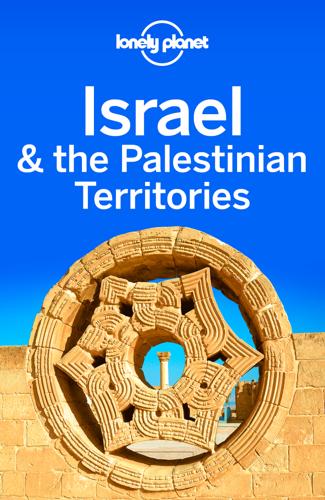
Israel & the Palestinian Territories Travel Guide
by
Lonely Planet
Many websites offer ‘carbon calculators’ that allow people to estimate the carbon emissions generated by their journey and, for those who wish to do so, to offset the impact of the greenhouse gases emitted with contributions to portfolios of climate-friendly initiatives throughout the world. Lonely Planet offsets the carbon footprint of all staff and author travel. Air Airports Israel’s main gateway is Ben-Gurion International Airport (TLV; %arrivals & departures 03-972 3333; www.iaa.gov.il), 50km northwest of Jerusalem and 18km southeast of central Tel Aviv. Ultramodern Terminal 3 handles about 14 million passengers a year.

Lonely Planet Norway
by
Lonely Planet
Many websites offer ‘carbon calculators’ that allow people to estimate the carbon emissions generated by their journey and, for those who wish to do so, to offset the impact of the greenhouse gases emitted with contributions to portfolios of climate-friendly initiatives throughout the world. Lonely Planet offsets the carbon footprint of all staff and author travel. Air Norway is well-connected with direct flights to/from the rest of Europe and, to a lesser extent, North America. To reach Norway from Asia and Australia you'll probably need to connect through the MIddle East. Oslo receives the largest number of international flights, but Bergen, Tromsø and other airports receive numerous flights from elsewhere in Europe.
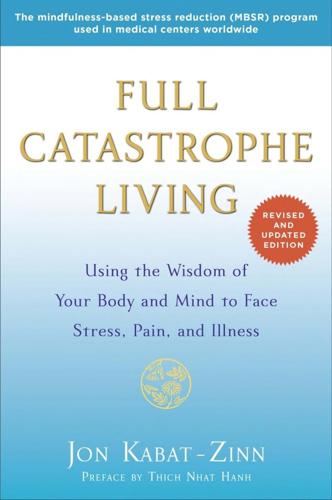
Full Catastrophe Living (Revised Edition): Using the Wisdom of Your Body and Mind to Face Stress, Pain, and Illness
by
Jon Kabat-Zinn
Published 23 Sep 2013
The conduits of food distribution are the arterial circulation of the social body, and the refrigerator trucks, railroad cars, and planes are the specialized transport vehicles for supplying the tissues and cells of the society with vital nourishment, putting aside for a moment the issue of their huge carbon footprint and whether it is sustainable to continue to live in this way. A massive trucker strike would result in cities empty of food within a matter of days. There would simply be no food left in the stores for people to acquire. We tend not to think about such things. Another thing we don’t think about so much is that our food supply has become concentrated in a small number of gigantic corporations, agribusinesses that supply almost everything you find stocked on supermarket shelves.

The Rough Guide to Switzerland (Travel Guide eBook)
by
Rough Guides
Published 24 May 2022
We believe it helps us understand the world we live in and the people we share it with – and of course tourism is vital to many developing economies. But the scale of modern tourism has also damaged some places irreparably, and climate change is accelerated by most forms of transport, especially flying. We encourage all our authors to consider the carbon footprint of the journeys they make in the course of researching our guides. “Fly Rail Baggage” The Swiss have come up with one of the greatest, and simplest, ideas around for easing the stress of air travel. If you’re flying into Zürich or Geneva, you can send your bags direct from the check-in desk at your home airport through to one of thirty-odd train stations in Switzerland for collection at your convenience, thus eliminating the hassle of airport carousel reclaim and then lugging your bags around.
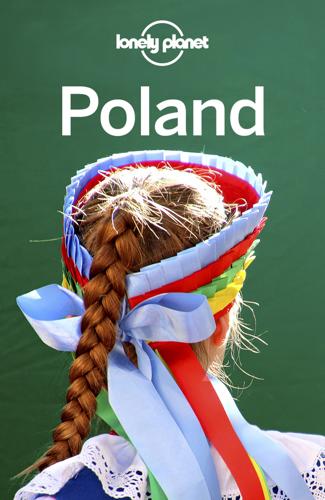
Lonely Planet Poland
by
Lonely Planet
Many websites offer ‘carbon calculators’ that allow people to estimate the carbon emissions generated by their journey and, for those who wish to do so, to offset the impact of the greenhouse gases emitted with contributions to portfolios of climate-friendly initiatives throughout the world. Lonely Planet offsets the carbon footprint of all staff and author travel. Air Airports & Airlines Most international flights to Poland arrive at Warsaw Chopin Airport (Lotnisko Chopina Warszawa; %22 650 4220; www.lotnisko-chopina.pl; ul Żwirki i Wigury 1, Włochy; dWarszawa Lotnisko Chopina). Warsaw has a second, smaller airport, Warsaw Modlin Airport (Modlin Lotnisko; %22 315 1880; www.modlinairport.pl; ul Generała Wiktora Thommée 1a, Nowy Dwór Mazowiecki; dModlin), 39km north of the city, which handles budget flights.

France (Lonely Planet, 8th Edition)
by
Nicola Williams
Published 14 Oct 2010
More regional flavour is on offer in Arras, whose Flemish-style squares are unique in France. Amiens, not far from the battlefields of the Somme and a number of moving WWI memorials, boasts a magnificent Gothic cathedral. If you snag a promotional fare on the Eurostar, the region is a superb, reasonably priced weekend getaway from London – with a much smaller carbon footprint than flying. The most picturesque of the trans-Channel ports is Boulogne-sur-Mer. Dunkirk (Dunkerque), on the other hand, is so uncomely – much of the city was rebuilt after WWII – that you actually feel sorry for the locals, though there are still a few attractions. Although Calais has worthwhile museums and restaurants, not to mention The Burghers (see the boxed text), most see it only through the window of an accelerating train, boat or car.
…
Budget carriers offering flights within France include easyJet (www.easyjet.com), Airlinair (www.airlinair.com) and Twin Jet (www.twinjet.net). Any French travel agency can make air bookings and supply details on fare options. France’s vaunted TGV (Train à Grande Vitesse, ie High-Speed Train) network, which has a minimal carbon footprint because it’s powered by nuclear-generated electricity, has made rail travel between some cities (eg from Paris to Lyon and Marseille) faster and easier than flying. Return to beginning of chapter BICYCLE France is generally a great place to cycle. Not only is much of the countryside drop-dead gorgeous but it has a growing number of urban and rural pistes cyclables (bike paths and lanes), some linking one town to the next, and an extensive network of secondary and tertiary roads with relatively light traffic.

Lonely Planet France
by
Lonely Planet Publications
Published 31 Mar 2013
And in the Somme, although WWI has been over for almost a century, the British, Canadians and Australians who perished in the trenches of the Western Front have not been forgotten. The moving memorials and cemeteries marking the front lines of 1916 remain places of pilgrimage and reflection. If you snag a promotional fare on the Eurostar, Lille, Flanders and the Somme make for a superb short trip from London – with a much smaller carbon footprint than flying. When to Go Feb & Mar Pre-Lenten carnivals bring out marching bands and costumed revellers . 1 Jul Remembrance ceremonies at Thiepval on the anniversary of the Battle of the Somme. Sep (1st weekend) The world’s largest flea market, the Braderie, takes over Lille. Best Places to Eat » Het Kasteelhof ( Click here ) » Chez la Vieille ( Click here ) » Histoire Ancienne ( Click here ) Best Places to Stay » L’Hermitage Gantois ( Click here ) » Grand Hôtel de l’Univers ( Click here ) » Maison St-Vaast ( Click here ) Lille, Flanders & the Somme Highlights Stroll around the chic and photogenic centre of Lille (Click here ) and explore the city’s trio of superb art museums Marvel at Amiens’ breathtaking Gothic cathedral ( Click here ) both inside and out Ramble along the spectacular, windswept Côte d’Opale ( Click here ), facing the white cliffs of Dover Be among the first to visit the brand-new Louvre-Lens museum (Click here ) in Lens Enjoy a hefty dose of Flemish culture and tour a working windmill in the pretty hilltop town of Cassel ( Click here ) Join the bustle of the Saturday market (Click here ) in Arras’ gorgeous Flemish-style Place des Héros Watch clacking machinery turn thread into lace at Cité Internationale de la Dentelle et de la Mode (Click here ) in Calais Ponder the sacrifices and horror of WWI at Vimy ( Click here ) History & Geography In the Middle Ages the Nord département (the sliver of France along the Belgian border; www.cdt-nord.fr), together with much of Belgium and part of the Netherlands, belonged to a feudal principality known as Flanders (Flandre or Flandres in French, Vlaanderen in Flemish).
…
Many websites offer ‘carbon calculators’ that allow people to estimate the carbon emissions generated by their journey and, for those who wish to do so, to offset the impact of the greenhouse gases emitted with contributions to portfolios of climate-friendly initiatives throughout the world. Lonely Planet offsets the carbon footprint of all staff and author travel. Bicycle France is great for cycling. Much of the countryside is drop-dead gorgeous and the country has a growing number of urban and rural pistes cyclables (bike paths and lanes; see Voies Vertes (www.voievertes.com) and an extensive network of secondary and tertiary roads with relatively light traffic.

Lonely Planet China (Travel Guide)
by
Lonely Planet
and
Shawn Low
Published 1 Apr 2015
Down an alley off Jiaozhou Rd oUrbnBOUTIQUE HOTEL ( MAP GOOGLE MAP ; %5153 4600; www.urbnhotels.com; 183 Jiaozhou Rd; r from ¥1500; a; mChangping Rd) China’s first carbon-neutral hotel not only incorporates recyclable materials and low-energy products where possible, it also calculates its complete carbon footprint – including staff commutes and delivery journeys – and off-sets it by donating money to environmentally friendly projects. Open-plan rooms are beautifully designed with low furniture and sunken living areas exuding space. PuliLUXURY HOTEL (Puli Jiudian MAP GOOGLE MAP ; %3203 9999; www.thepuli.com; 1 Changde Rd; d from ¥3880; aWs; mJing’an Temple) With open-space rooms divided by hanging silk screens and an understated beige-and-mahogany colour scheme accentuated by the beauty of a few well-placed orchids, the Puli is an exquisite choice.
…
Many websites offer ‘carbon calculators’ that allow people to estimate the carbon emissions generated by their journey and, for those who wish to do so, to offset the impact of the greenhouse gases emitted with contributions to portfolios of climate-friendly initiatives throughout the world. Lonely Planet offsets the carbon footprint of all staff and author travel. Air Airports Hong Kong, Beijing and Shanghai are China’s principal international air gateways; Baiyun International Airport in Guangzhou is of lesser, but growing, importance. Baiyun International AirportAIRPORT (CAN; Baiyun Guoji Jichang %020-3606 6999; www.baiyunairport.com) In Guangzhou; receiving an increasing number of international flights.
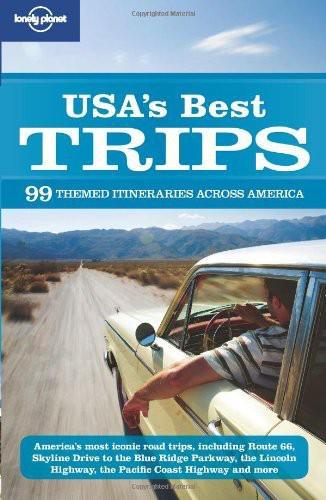
USA's Best Trips
by
Sara Benson
Published 23 May 2010
The booze rocks, too, including a solid whiskey list and small-batch beers that pair with the food. By now it’s hotel check-in time. Architecture buffs can key in at the Hotel Burnham, housed in the landmark 1890s Reliance Building, the precedent for the modern skyscraper. Eco-guests can curb their carbon footprint at LEED-certified Hotel Felix (free parking if you’re driving a hybrid). * * * CHICAGO BY BOAT, BIKE OR HOT DOG Delve deeper into the city with a tour: • The Chicago Architecture Foundation (www.architecture.org) has boat and walking jaunts to various lofty monuments. • Bike Chicago (www.bikechicago.com) pedals to the South Side past Obama’s house and hot spots
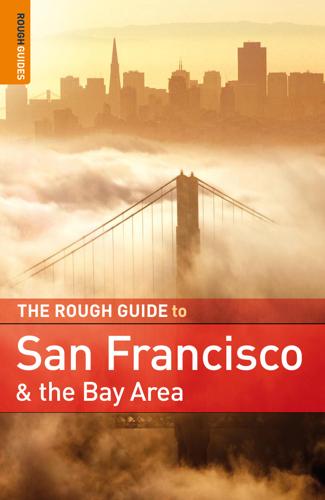
Rough Guide to San Francisco and the Bay Area
by
Nick Edwards
and
Mark Ellwood
Published 2 Jan 2009
Combined salon and beauty store that has a great selection of hair and skin-care products, and is ideal for stocking up on quality essentials. Kiehl’s 2319 Market St at Clay, Pacific Heights t 415/359-9260. Sumptuous, environmentally sustainable skin and hair products for anyone looking for a little spa-class treatment and a smaller carbon footprint. Nancy Boy 2319 Market St t415/626-5021. Idiosyncratic local cosmetics company, best summed up in its slogan “Tested on boyfriends, not on animals”; pick up your brand lotions, moisturizers, and bath products here. Oui, Three Queens 225 Gough St at Oak, Hayes Valley t415/621-6877. This tiny store produces custom-blended cosmetics, including lipsticks, at reasonable prices.
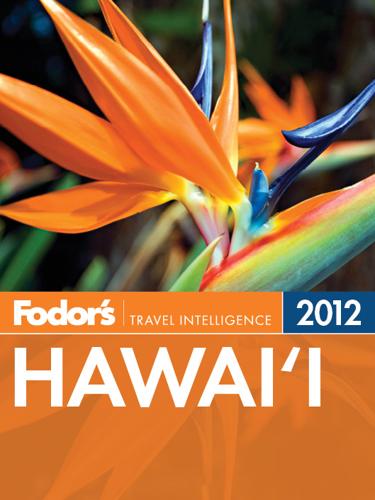
Fodor's Hawaii 2012
by
Fodor's Travel Publications
Published 15 Nov 2011
Spacious rooms, two-thirds with ocean views, have a plantation theme. Five acres of meandering fresh- and saltwater-swimming lagoons—a big hit with kids—are beautifully set amid landscaped grounds. While adults enjoy treatments at the recently renovated ANARA Spa, kids can check out Camp Hyatt. The resort has taken strides in reducing its carbon footprint by installing photovoltaic panels, renting hybrid vehicles, establishing a waste-diversion program, and planting an organic garden. Pros: fabulous pool; excellent restaurants; Hawaiian ambience. Cons: poor swimming beach during summer swells; small balconies. TripAdvisor: “caring Aloha Spirit,” “you will not be disappointed,” “amazing pool.” | 1571 Po‘ipū Rd. | Kōloa | 96756 | 808/742–1234 or 800/633–7313 | www.grandhyattkauai.com | 602 rooms, 37 suites | In-room: a/c, safe, refrigerator, Wi-Fi (some).

Fodor's Hawaii 2013
by
Fodor's
Published 22 Jul 2012
Freshly updated spacious rooms, two-thirds with ocean views, have a plantation theme. Five acres of meandering fresh- and saltwater-swimming lagoons—a big hit with kids—are beautifully set amid landscaped grounds. While adults enjoy treatments at the recently renovated ANARA Spa, kids can check out Camp Hyatt. The resort has taken strides in reducing its carbon footprint by installing photovoltaic panels, renting hybrid vehicles, establishing a waste-diversion program, and planting an organic garden. Pros: fabulous pool; excellent restaurants; Hawaiian ambience. Cons: poor swimming beach during summer swells; small balconies. TripAdvisor: “excellent service,” “pools are gorgeous,” “paradise.” | Rooms from: $480 | 1571 Poipu Rd

Rick Steves Florence & Tuscany 2017
by
Rick Steves
Published 8 Nov 2016
. $$ Podere Casalciccia, run by recommended local guide Roberto Bechi (see here) and his American wife Patti, is a spacious, very remote-feeling modern home perched on a ridge immersed in 360 degrees of gorgeous Crete Senesi scenery (about 15 minutes south of Siena). In all four rooms, each window offers a vista worthy of a stunning Tuscan-countryside painting. They’ve designed their entirely “green” house to be self-sufficient, with a zero-carbon footprint (RS%, includes self-service breakfast, 2-night minimum, Patti’s mobile 328-727-3186, Roberto’s mobile 328-425-5648, www.casalciccia.com, poderecasalciccia@gmail.com). It’s just off road S-438: Turn down the rough gravel road next to the sign for Fontanelle, and follow it straight ahead for about five minutes
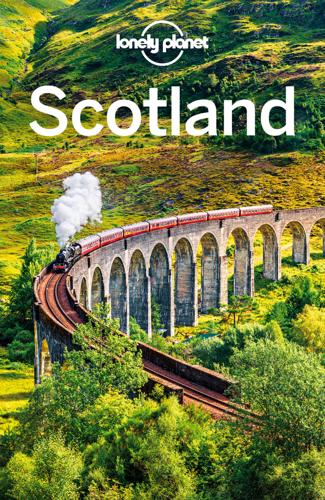
Lonely Planet Scotland
by
Lonely Planet
Many websites offer ‘carbon calculators’ that allow people to estimate the carbon emissions generated by their journey and, for those who wish to do so, to offset the impact of the greenhouse gases emitted with contributions to portfolios of climate-friendly initiatives throughout the world. Lonely Planet offsets the carbon footprint of all staff and author travel. Air There are direct flights to Scottish airports from Britain, lots of European countries, the Middle East, the US and Canada. From elsewhere, you'll probably have to fly into a European or Middle Eastern hub and get a connecting flight to a Scottish airport – London has the most connections.
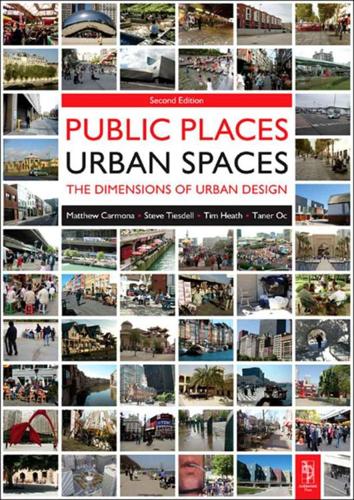
Public Places, Urban Spaces: The Dimensions of Urban Design
by
Matthew Carmona
,
Tim Heath
,
Steve Tiesdell
and
Taner Oc
Published 15 Feb 2010
Brown et al (2009) identify four convergent lines of thinking moving the activity on in the 2000s: (i) the work of Richard Florida (2004) and the arguments he makes that vibrant, walkable neighbourhoods attract the creative classes; (ii) a parallel transformation in the fortunes of America’s downtowns as demand for urban living has increased; (iii) an awareness of the growing obesity crisis in the USA (and elsewhere), which has been linked to the spread of car-dependent urbanism; and (iv) a growing interest in the potential of urban form to reduce the carbon footprint of mankind. The first three reinforce the making-places tradition, while the final trend suggests new thinking may be required. A manifesto celebrating the 50th anniversary of the influential 1958 Penn-Rockefeller Conference on Urban Design argued that:‘The new urban designer will need to feel comfortable operating under conditions of ambiguity, appreciating the fact that the science and art of integrating sustainability into urban design is an evolving challenge requiring the adaptation and advancement of ideas as they emerge. … The ultimate agency for the urban designer is as someone who is able to describe potential futures for the city in visual, technical, and narrative terms that foster social involvement, political action, and economic investment to make reality the post-carbon city.’
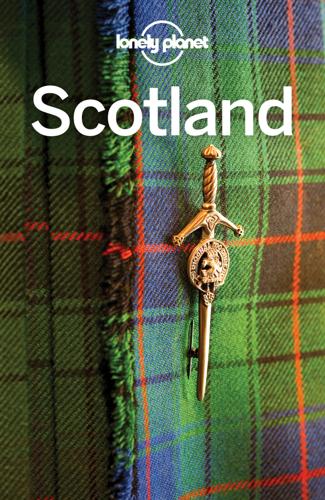
Lonely Planet Scotland
by
Lonely Planet
Many websites offer ‘carbon calculators’ that allow people to estimate the carbon emissions generated by their journey and, for those who wish to do so, to offset the impact of the greenhouse gases emitted with contributions to portfolios of climate-friendly initiatives throughout the world. Lonely Planet offsets the carbon footprint of all staff and author travel. Land Bus Buses are usually the cheapest way to get to Scotland from other parts of the UK. Megabus (%0141-352 4444; www.megabus.com) One-way fares from London to Glasgow from as little as £1 if you book well in advance. Has some fully reclinable sleeper services.

Lonely Planet Washington, Oregon & the Pacific Northwest
by
Lonely Planet
Many websites offer ‘carbon calculators’ that allow people to estimate the carbon emissions generated by their journey and, for those who wish to do so, to offset the impact of the greenhouse gases emitted with contributions to portfolios of climate-friendly initiatives throughout the world. Lonely Planet offsets the carbon footprint of all staff and author travel. Land Bus In car-oriented societies like the USA and Canada, bus travel takes second place. Service is infrequent or inconvenient, networks are sparse and fares can be relatively high. Air travel is often cheaper on long-distance routes, and it can even be cheaper to rent a car than take the bus, especially for shorter routes.
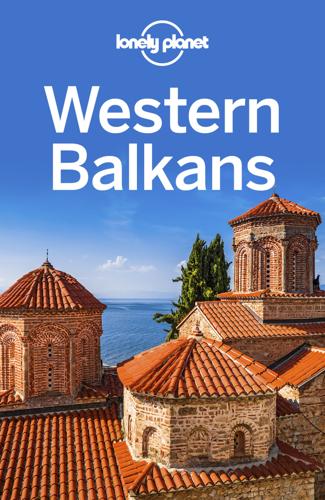
Lonely Planet Western Balkans
by
Lonely Planet
,
Peter Dragicevich
,
Mark Baker
,
Stuart Butler
,
Anthony Ham
,
Jessica Lee
,
Vesna Maric
,
Kevin Raub
and
Brana Vladisavljevic
Published 1 Oct 2019
Many websites offer ‘carbon calculators’ that allow people to estimate the carbon emissions generated by their journey and, for those who wish to do so, to offset the impact of the greenhouse gases emitted with contributions to portfolios of climate-friendly initiatives throughout the world. Lonely Planet offsets the carbon footprint of all staff and author travel. Sea There are ferry services from Italy to Albania, Montenegro, Croatia and Slovenia; and from the island of Corfu (Greece) to Albania. Companies include Jadrolinija (www.jadrolinija.hr), Montenegro Lines (www.montenegrolines.com), SNAV (www.snav.com) and Venezia Lines (www.venezialines.com).
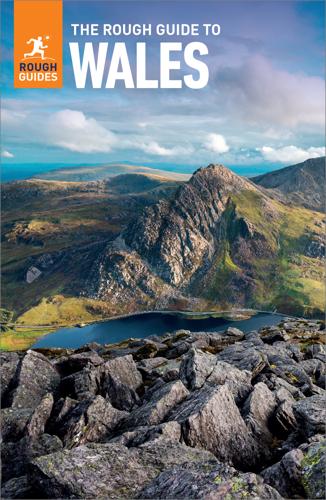
The Rough Guide to Wales
by
Rough Guides
Published 14 Oct 2024
Cardiff is a major road and rail hub, with excellent connections to both England and the rest of Wales, while the city itself has an excellent public transport system, including a comprehensive network of buses, plus ferries down to Cardiff Bay; otherwise, the city boasts several zero emission transport alternatives, including bikes and e-scooters. Of course the ultimate way to reduce your carbon footprint is to walk, and Cardiff – like all of Wales’ major conurbations – is eminently walkable. Beyond here, an extensive network of local bus companies link the country’s towns and villages. One of best examples of this is the Sherpa Bus (April to Sept), which stops at various locations throughout Snowdonia National Park, including points close to all the major footpaths.
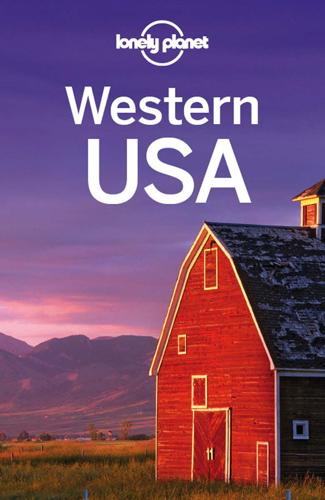
Western USA
by
Lonely Planet
Many websites offer ‘carbon calculators’ that allow people to estimate the carbon emissions generated by their journey and, for those who wish to do so, to offset the impact of the greenhouse gases emitted with contributions to portfolios of climate-friendly initiatives throughout the world. Lonely Planet offsets the carbon footprint of all staff and author travel. Air Airports The western USA’s primary international airports: Los Angeles International Airport (LAX; www.lawa.org/lax) California’s largest and busiest airport, 20 miles southwest of downtown LA, near the coast. San Francisco International Airport (SFO; www.flysfo.com) Northern California’s major hub, 14 miles south of downtown, on San Francisco Bay.

Scotland Travel Guide
by
Lonely Planet
Many websites offer ‘carbon calculators’ that allow people to estimate the carbon emissions generated by their journey and, for those who wish to do so, to offset the impact of the greenhouse gases emitted with contributions to portfolios of climate-friendly initiatives throughout the world. Lonely Planet offsets the carbon footprint of all staff and author travel. Land Bus Buses are usually the cheapest way to get to Scotland from other parts of the UK. The main operators: Megabus (www.megabus.com) One-way fares from London to Glasgow from as little as £5.50 if you book well in advance (up to eight weeks). National Express (www.gobycoach.com) Regular services from London and other cities in England and Wales to Glasgow and Edinburgh.

Lonely Planet Morocco (Travel Guide)
by
Lonely Planet
,
Paul Clammer
and
Paula Hardy
Published 1 Jul 2014
Many websites offer 'carbon calculators' that allow people to estimate the carbon emissions generated by their journey and, for those who wish to do so, to off set the impact of the greenhouse gases emitted with contributions to portfolios of climate-friendly initiatives throughout the world. Lonely Planet off sets the carbon footprint of all staff and author travel. Bus The cheapest and most efficient way to travel around the country, buses are generally safe, although their drivers sometimes leave a little to be desired. Bus stations Some Moroccan bus stations are like madhouses, with touts running around calling any number of destinations of buses about to depart.

Egypt Travel Guide
by
Lonely Planet
Many websites offer ‘carbon calculators’ that allow people to estimate the carbon emissions generated by their journey and, for those who wish to do so, to offset the impact of the greenhouse gases emitted with contributions to portfolios of climate-friendly initiatives throughout the world. Lonely Planet offsets the carbon footprint of all staff and author travel. Sudan Despite Egypt and Sudan sharing a 1273km land border, the only way to travel between the two countries is to fly or take the Wadi Halfa ferry (Click here). Sea Cyprus As of 2011, a cruise ship with stops in Port Said and Limassol in Cyprus was suspended due to instability in both Greece and Egypt.

Capital in the Twenty-First Century
by
Thomas Piketty
Published 10 Mar 2014
To be sure, this cannot be ruled out: childbearing behavior could change, or technological advances might allow growth with much less pollution than is possible to imagine now, with output consisting of new, almost entirely nonmaterial goods and services produced with renewable energy sources exhibiting a negligible carbon footprint. At this point, however, it is hardly an exaggeration to say that a world population of 70 billion seems neither especially plausible nor particularly desirable. The most likely hypothesis is that the global population growth rate over the next several centuries will be significantly less than 0.8 percent.

Egypt Travel Guide
by
Lonely Planet
Many websites offer ‘carbon calculators’ that allow people to estimate the carbon emissions generated by their journey and, for those who wish to do so, to offset the impact of the greenhouse gases emitted with contributions to portfolios of climate-friendly initiatives throughout the world. Lonely Planet offsets the carbon footprint of all staff and author travel. Air Airports & Airlines Cairo, Alexandria and Sharm el-Sheikh receive numerous commercial international flights. Luxor receives many charter flights, but only a few commercial flights, including EgyptAir from London Heathrow. Aswan, Hurghada and Marsa Alam also handle flights from overseas, but typically mostly charters.

Cuba Travel Guide
by
Lonely Planet
Many websites offer 'carbon calculators' that allow people to estimate the carbon emissions generated by their journey and, for those who wish to do so, to off set the impact of the greenhouse gases emitted with contributions to portfolios of climate-friendly initiatives throughout the world. Lonely Planet off sets the carbon footprint of all staff and author travel. Tickets Since Americans can’t buy tickets to Cuba inside the US and can’t use US-based travel agents, a host of businesses in Mexico, Canada and the Caribbean specialize in air-only deals. These agencies sometimes won’t sell you the first leg of your trip to the ‘gateway’ country for fear of embargo-related repercussions.

Lonely Planet Central Asia (Travel Guide)
by
Lonely Planet
,
Stephen Lioy
,
Anna Kaminski
,
Bradley Mayhew
and
Jenny Walker
Published 1 Jun 2018
Many websites offer ‘carbon calculators’ that allow people to estimate the carbon emissions generated by their journey and, for those who wish to do so, to offset the impact of the greenhouse gases emitted with contributions to portfolios of climate-friendly initiatives throughout the world. Lonely Planet offsets the carbon footprint of all staff and author travel. Air The region's main air links to the 'outside' are through the main cities of Almaty (Kazakhstan), Bishkek (Kyrgyzstan), Tashkent (Uzbekistan), Ashgabat (Turkmenistan) and, to a lesser extent, Dushanbe (Tajikistan) and Astana (Kazakhstan). Tiny Osh (Kyrgyzstan) even has a couple of interesting international connections.

Northern California Travel Guide
by
Lonely Planet
Some companies let you pre-pay your last tank of gas; this is rarely a good deal, as prices are higher than at gas stations and you’d need to bring the car back almost empty. Child or infant safety seats are compulsory (reserve when booking); they're sometimes free, or $10 per day (with a capped maximum of about $65). If you’d like to minimize your carbon footprint, some car-rental companies offer ‘green’ fleets of hybrid or biofueled rental cars, but they’re in short supply. Reserve well ahead and expect to pay more for these models – but you'll save on gasoline. Motorcycles Motorcycle rentals and insurance are not cheap, especially if you’ve got your eye on a Harley.

Lonely Planet Peru
by
Lonely Planet
Many websites offer ‘carbon calculators’ that allow people to estimate the carbon emissions generated by their journey and, for those who wish to do so, to offset the impact of the greenhouse gases emitted with contributions to portfolios of climate-friendly initiatives throughout the world. Lonely Planet offsets the carbon footprint of all staff and author travel. Getting Around Air Domestic-flight schedules and prices change frequently. New airlines open every year, as those with poor safety records close. Most big cities are served by modern jets, while smaller towns are served by propeller aircraft. Airlines in Peru Most domestic airlines have offices in Lima.

USA Travel Guide
by
Lonely, Planet
IT’S NOT EASY BEING GREEN The USA has long been one of the world’s greatest consumers of energy, accounting for a quarter of the world’s greenhouse gases. Sustainability, however, seems to be on everyone’s lips these days, and interest in renewable energy is at an all-time high. Though enormous obstacles lie ahead, the US has made marked advances in lowering its carbon footprint: » Winds of Change Although wind energy generates just more than 2% of the nation’s electricity, the US is the world’s second-largest producer of wind energy (after China), and has enormous potential for growth. The US Department of Energy envisions 20% of the nation’s power supplied by this clean energy by 2030. » Solar Power Interest in solar power is high – with solar power growing at a rate of 40% per year.
…
Many websites offer ‘carbon calculators’ that allow people to estimate the carbon emissions generated by their journey and, for those who wish to do so, to offset the impact of the greenhouse gases emitted with contributions to portfolios of climate-friendly initiatives throughout the world. Lonely Planet offsets the carbon footprint of all staff and author travel. Passports Every visitor entering the USA from abroad needs a passport. Your passport must be valid for at least six months longer than your intended stay in the USA. Also, if your passport does not meet current US standards, you’ll be turned back at the border.
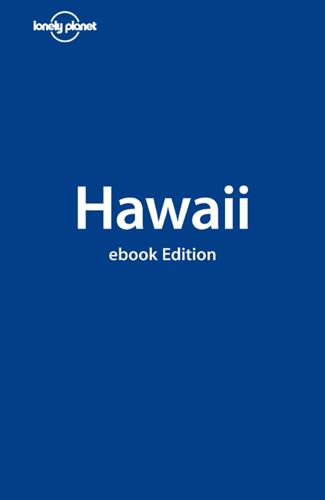
Hawaii
by
Jeff Campbell
Published 4 Nov 2009
Kaua′i Lagoons’ Kiele Course (Click here) made the ninth spot, while Po′ipu Bay Golf Course (Click here) was number 10. HELICOPTER TOURS Only from a helicopter can you see Kaua′i’s inaccessible mountains and valleys, especially the mysterious, cloud-cloaked Mt Wai′ale′ale. But notoriously noisy choppers disturb residents and amplify your carbon footprint (Click here). If you’re set on flying, choose one of the Lihu′e-based companies, which generally have superior safety records, cost less and offer cheaper and better tour options. Also check the Stop Disrespectful Air Tourism (www.stopdat.org) website for recommended helicopter companies. HIKING If you don’t explore the island on foot, you’re missing out on Kaua′i’s finest (and free) terrestrial offerings.
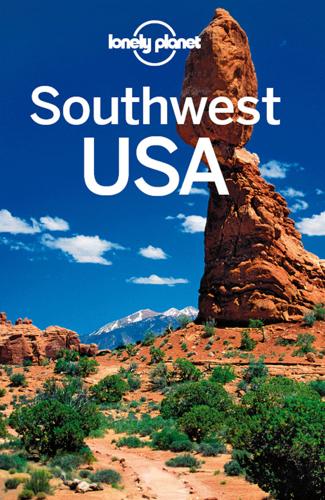
Southwest USA Travel Guide
by
Lonely Planet
Many websites offer ‘carbon calculators’ that allow people to estimate the carbon emissions generated by their journey and, for those who wish to do so, to off set the impact of the greenhouse gases emitted with contributions to portfolios of climate-friendly initiatives throughout the world. Lonely Planet offsets the carbon footprint of all staff and author travel. Land Border Crossings From Yuma, AZ (Click here), you can cross into Baja California and Mexico. Nogales, AZ, is also a prime border town. For more information about traveling south of the Southwest, pick up Lonely Planet’s Baja & Los Cabos and Mexico guides.

Central Europe Travel Guide
by
Lonely Planet
Many websites offer ‘carbon calculators’ that allow people to estimate the carbon emissions generated by their journey and, for those who wish to do so, to offset the impact of the greenhouse gases emitted with contributions to portfolios of climate-friendly initiatives throughout the world. Lonely Planet offsets the carbon footprint of all staff and author travel. Land Bicycle Transporting a bicycle by plane is possible (taken apart or whole); check with the airline for regulations and fees. Bus Major urban centres are well connected by bus to European destinations. However, budget air and rail prices rival bus fares, so these slow, long-distance routes are not popular.

Hawaii Travel Guide
by
Lonely Planet
Many websites offer ‘carbon calculators’ that allow people to estimate the carbon emissions generated by their journey and, for those who wish to do so, to offset the impact of the greenhouse gases emitted with contributions to portfolios of climate-friendly initiatives throughout the world. Lonely Planet offsets the carbon footprint of all staff and author travel. Air All checked and carry-on bags leaving Hawaii for the US mainland, Alaska and Guam must be inspected by a US Department of Agriculture (USDA) x-ray machine at the airport. Airports The majority of incoming flights from overseas and the US mainland arrive at Honolulu International Airport (HNL; GOOGLE MAP ; %808-836-6411; http://hawaii.gov/hnl; 300 Rodgers Blvd, Honolulu; W) on Oʻahu.
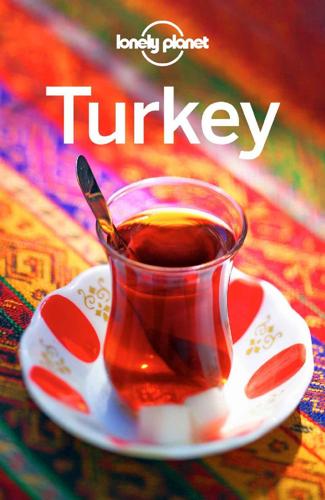
Lonely Planet Turkey (Travel Guide)
by
Lonely Planet
,
James Bainbridge
,
Brett Atkinson
,
Steve Fallon
,
Jessica Lee
,
Virginia Maxwell
,
Hugh McNaughtan
and
John Noble
Published 31 Jan 2017
Many websites offer ‘carbon calculators’ that allow people to estimate the carbon emissions generated by their journey and, for those who wish to do so, to offset the impact of the greenhouse gases emitted with contributions to portfolios of climate-friendly initiatives throughout the world. Lonely Planet offsets the carbon footprint of all staff and author travel. Air It's a good idea to book flights months in advance if you plan to arrive in Turkey any time from April until late August. If you plan to visit a resort, check with travel agents for flight and accommodation deals. Sometimes you can find cheap flights with Turkish carriers and smaller airlines.

Lonely Planet Turkey
by
Lonely Planet
Many websites offer ‘carbon calculators’ that allow people to estimate the carbon emissions generated by their journey and, for those who wish to do so, to offset the impact of the greenhouse gases emitted with contributions to portfolios of climate-friendly initiatives throughout the world. Lonely Planet offsets the carbon footprint of all staff and author travel. Airlines Turkish Airlines (%1800-874 8875; www.turkishairlines.com), the national carrier, has extensive international and domestic networks, which include its budget subsidiaries Sun Express (%444 0797; www.sunexpress.com) and Anadolu Jet (%444 2538; www.anadolujet.com/tr).

Eastern USA
by
Lonely Planet
Many websites offer ‘carbon calculators’ that allow people to estimate the carbon emissions generated by their journey and, for those who wish to do so, to offset the impact of the greenhouse gases emitted with contributions to portfolios of climate-friendly initiatives throughout the world. Lonely Planet offsets the carbon footprint of all staff and author travel. Air Airports The main international gateway airports in the Eastern USA: Atlanta Hartsfield- Jackson International (ATL; www.atlanta-airport.com) Boston Logan International (BOS; www.massport.com/logan) Chicago O’Hare International (ORD; www.flychicago.com) Charlotte Charlotte/Douglas International (CLT; www.charlotteairport.com) Miami Miami International (MIA; www.miami-airport.com) Minneapolis-St Paul Minneapolis-St Paul International (MSP; www.mspairport.com) New York John F Kennedy International (JFK; www.panynj.gov) Newark Liberty International (EWR; www.panynj.gov) Orlando Orlando International (MCO; www.orlandoairports.net) Washington, DC Dulles International (IAD; www.metwashairports.com/dulles) Tickets Flying midweek (especially Tuesday and Wednesday) is typically less expensive.

Lonely Planet Brazil
by
Lonely Planet
Many websites offer ‘carbon calculators’ that allow people to estimate the carbon emissions generated by their journey and, for those who wish to do so, to offset the impact of the greenhouse gases emitted with contributions to portfolios of climate-friendly initiatives throughout the world. Lonely Planet offsets the carbon footprint of all staff and author travel. Air The most popular international gateways are Rio de Janeiro’s Galeão International Airport (Aeroporto Internacional Antônio Carlos Jobim; %21 3004-6050; www.riogaleao.com; Domestic Arrival Hall, Av Vinte de Janeiro) and São Paulo’s GRU Airport (Aeroporto Guarulhos; %11 2445-2945; www.gru.com.br; Rod Hélio Smidt s/n).

The Rough Guide to New Zealand: Travel Guide eBook
by
Rough Guides
Published 1 Jan 2024
We believe it helps us understand the world we live in and the people we share it with – and of course tourism is vital to many developing economies. But the scale of modern tourism has also damaged some places irreparably, and climate change is accelerated by most forms of transport, especially flying. We encourage all our authors to consider the carbon footprint of the journeys they make in the course of researching our guides. Flights from Australia and South Africa Prices for flights between Australia and New Zealand vary enormously depending on demand (book well in advance in summer), but the level of competition generally keeps them reasonable – as low as AU$230 return from Australia’s east coast (including a basic baggage allowance) if you’re prepared to go for non-refundable tickets.
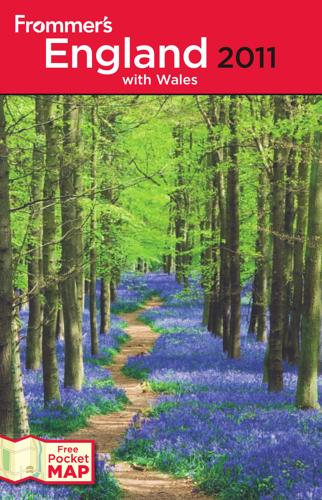
Frommer's England 2011: With Wales
by
Darwin Porter
and
Danforth Prince
Published 2 Jan 2010
It previews green accommodations throughout England, ranging from an organic farmhouse B&B dating from the 19th century in the east of England to an eco-friendly manor house on the north Norfolk coastline. Visitors can even rent English “eco cottages” that are powered by the wind and sun. Those who want to further reduce the size of their carbon footprint can travel through England on bike. For details on cycling through England, contact the U.K.’s National Cyclists Organization at its national headquarters at CTC, Parklands, Railton Road, Guildford, Surrey GU2 9JX (& 0844/736-8450; www.ctc.org.uk). Membership is £36. If you don’t want to explore green England on your own, you can take part in an eco-friendly tour.

California
by
Sara Benson
Published 15 Oct 2010
Our GreenDex also includes restaurants that serve seasonal, organic produce and are committed to sourcing their food from local vendors, a trend that has caught on across the state. If you’re cooking for yourself, there are farmers markets in many cities and even rural towns. Another way that you can reduce your carbon footprint while you travel, and at the same time help fight California’s air pollution problems, is to use public transportation to get around the state, rather than driving or flying everywhere. Amtrak’s Coast Starlight and Pacific Surfliner routes Click here reward carbon-conscious travelers with epic scenery.

Germany Travel Guide
by
Lonely Planet
Many websites offer ‘carbon calculators’ that allow people to estimate the carbon emissions generated by their journey and, for those who wish to do so, to offset the impact of the greenhouse gases emitted with contributions to portfolios of climate-friendly initiatives throughout the world. Lonely Planet offsets the carbon footprint of all staff and author travel. Land Bicycle Bringing a bicycle to Germany is much cheaper and less complicated than you might think. Eurotunnel bike shuttle service (reservations 9am-5.30pm Mon-Fri 01303-282 201; www.eurotunnel.com) through the Channel Tunnel charges just UK£16 one-way for a bicycle and its rider.

The Rough Guide to Mexico
by
Rough Guides
Published 15 Jan 2022
We believe it helps us understand the world we live in and the people we share it with – and of course tourism is vital to many developing economies. But the scale of modern tourism has also damaged some places irreparably, and climate change is accelerated by most forms of transport, especially flying. We encourage our authors to consider the carbon footprint of the journeys they make in the course of researching our guides. From Australia, New Zealand and South Africa The high season for flights to Mexico from the southern hemisphere is mid-June to mid-July and mid-December to mid-January, though prices do not vary vastly between seasons.

Southeast Asia on a Shoestring Travel Guide
by
Lonely Planet
Published 30 May 2012
Many websites offer ‘carbon calculators’ that allow people to estimate the carbon emissions generated by their journey and, for those who wish to do so, to offset the impact of the greenhouse gases emitted with contributions to portfolios of climate-friendly initiatives throughout the world. Lonely Planet offsets the carbon footprint of all staff and author travel. * * * Air Air travel can be a bargain within the region, especially from transit hubs such as Bangkok, Singapore and Kuala Lumpur. No-frills regional carriers have made travelling between capital cities cheaper than taking land transport in some cases.

Italy
by
Damien Simonis
Published 31 Jul 2010
A number of city centres are closed to traffic and, in the south, restrictions on traffic apply during the summer months. This makes city centres a great deal more pleasant and has had a noticeable affect on pollution. Madly buzzing scooters, however, remain a firm fixture in Italian city centres and, although they don’t have a particularly high carbon footprint (roughly half that of a Smartcar), the number of them and the noise do contribute to urban pollution. They’re much less environmentally friendly than bicycles. In a growing number of smaller cities, like Bergamo, Brescia, Bologna, Florence, Lecce and Ravenna, cycling is popular and cheap bicycle-rental outlets are legion.

The Rough Guide to France (Travel Guide eBook)
by
Rough Guides
Published 1 Aug 2019
We believe it helps us understand the world we live in and the people we share it with – and of course tourism is vital to many developing economies. But the scale of modern tourism has also damaged some places irreparably, and climate change is accelerated by most forms of transport, especially flying. We encourage our authors to consider the carbon footprint of the journeys they make in the course of researching our guides. Transatlantic fares to France have risen sharply in recent years, reflecting green taxes and variable fuel costs. An off-season midweek direct return flight to Paris can be US$1145 including taxes from New York, US$1335 from Los Angeles and US$1255 from Houston.
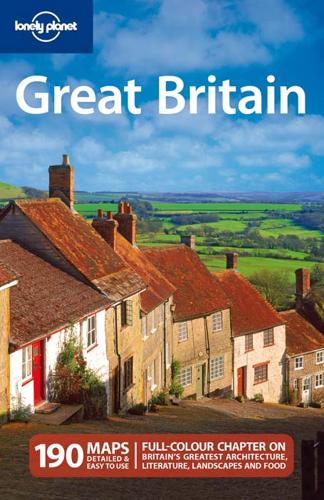
Great Britain
by
David Else
and
Fionn Davenport
Published 2 Jan 2007
Some of the best guidebooks to individual national trails are produced by Trailblazer (www.trailblazer-guides.com) and Cicerone (www.cicerone.co.uk). For more information on other long walks in Britain see www.ramblers.org.uk. Return to beginning of chapter CYCLING A bike is the perfect transport for exploring back-road Britain; it’s a cheap and enjoyable way of getting around, with a tiny carbon footprint. And thanks to the success of Britain’s cyclists at the 2008 Beijing Olympics, cycling is enjoying a surge in popularity – even if it means pottering along country lanes rather than hammering round a velodrome. If you prefer cycle-touring, Britain boats a vast network of quiet roads leading through farmland, moorland and peaceful villages, while off-road riders can go further into the wilds on the many tracks and bridleways that cross the country